
|
 |
 |
 |
 |
 |
EGG‑NEWS.com
Egg Industry News, Comments & More by
Simon M.Shane
|
 |
 |
 |
 |
 |
 |
Editorial
Avian Influenza Update - April 2025
|
04/21/2025 |
 |
This special edition of EGG-NEWS provides commentary on recent publications, reports and events relating to highly pathogenic avian influenza (HPAI). As of mid-April, outbreaks have ceased among large egg production and pullet rearing complexes. Notwithstanding this hiatus, evident since the beginning of March, incident cases are reported among backyard flocks, turkey growing facilities and at live bird markets suggesting extension from reservoirs of infection. Cessation of new cases in large egg production complexes is attributed to the end of seasonal migration of waterfowl that have now settled into their annual breeding cycle. Sporadic cases are probably due to shedding of H5N1 virus by non-migratory domestic birds. Given experience in recent years we can anticipate a resurgence of infection in the fall as the southward migration commences impacting farms along the Pacific, Central and Mississippi flyways. This period of low HPAI activity should be used to strengthen biosecurity and to initiate protective vaccination of rearing pullets in high-risk areas in order to develop an immune population that will be challenged during the third and fourth quarters of 2025.
 |
Noteworthy publications and events over the past two weeks relating to HPAI are reviewed for the benefit of subscribers:-
HPAI Vaccination Work Group Submits Proposal
A working group comprising Drs. John Clifford, Craig Rowles, Travis Schaal and David Swayne distributed a proposed vaccination plan dated April 1, 2025, to respond to highly pathogenic avian influenza (HPAI) in the U.S. egg industry. The Working Group was convened by the United Egg Producers and the American Egg Board representing U.S. egg producers. The document includes factual information on the availability and efficacy of vaccines and incorporates sections on monitoring for effective immunization and surveillance to facilitate certification for export.
Essentially the document confirms what many in the industry have recognized as the futility of the USDA-APHIS response of attempting to ‘stamp out” the endemic infection given the unprecedented depopulation of over 130 million egg laying hens on more than 130 farms since the onset of the current H5N1 epornitic that commenced in 2022.
The summary correctly maintains that “a new approach to reduce layer and pullet flock susceptibility to HPAI virus should be considered to increase resistance to infection, reduce viral shedding and importantly reduce the risk of a potential mutation event that may lead to further HPAI infection in human.” The document suggests a program under which flocks could be vaccinated with a priority for replacement pullets. The report correctly stresses the need for high levels of biosecurity, echoing the recommendations of the World Organization of Animal Health.

Vecor vaccination in ovo or S.Cut to chicks with booster |

Oil-emulsion vaccine im during rearing |
The report failed to stress the impact of flock depletion on egg prices and the cost to consumers that exceeded $15 billion in 2022 and considerably more in 2024 with an additional escalation in prices peaking at $8.50 per dozen at retail in late February 2025, reflecting the loss of approximately 30 million hens over an eight-week period.
 The zoonotic potential of H5N1, deserved more than seven lines in a text extending over 13 pages. Virologists and epidemiologists involved in monitoring aspects of the molecular biology of influenza have constantly stressed the risk of emergence of a zoonotic strain of H5N1 with possible human-to-human transmission. The zoonotic potential of H5N1, deserved more than seven lines in a text extending over 13 pages. Virologists and epidemiologists involved in monitoring aspects of the molecular biology of influenza have constantly stressed the risk of emergence of a zoonotic strain of H5N1 with possible human-to-human transmission.
One of the authors of the report is a distinguished researcher and has extensive experience in international regulation of avian diseases. A member of the committee authoring the document is a prior Chief Veterinary Officer of the USDA responsible for the response to the 2015 HPAI epornitic. Following retirement, he has served as an advisor to the USA Poultry and Egg Export Council that has a single-purpose commitment to maintaining the export volume of broiler leg quarters. It does not appear from the document that his affiliation in any way affected his scientific objectivity. It would have been possible to have made a more definitive and stronger case for vaccination with a broader representation from among the industry.

The return of incident cases during the fall migration of waterfowl is inevitable. The current ongoing outbreaks may be attributed to resident avian and mammalian carriers. Recognition that the infection can be transmitted by the aerogenous route invalidates even strict structural and operational biosecurity and places large complexes with power ventilation at risk. The need for vaccination especially in high-risk regions along the Mississippi and Pacific flyways is self-evident. The proposal to vaccinate pullets is obvious but will delay creation of an immune population due to the biological time restraints associated with rearing.
The report notes, “Vaccination of caged in-lay hens is challenging and potentially unachievable in cage-free operations.” This appears to be a questionable assertion. When the industry was confronted with severe coryza in 2023, egg producers effectively administered oil emulsion vaccines by the intramuscular route to hens in both cages and aviaries in the face of infection.
This commentator strongly supports the recommendation contained in the summary, “The industry believes that it time to enhance our overall strategy to control the virus through implementing vaccination in egg laying flocks.” In contradistinction he final paragraph relating to “acceptability to the federal government, state animal health officials” is the major defect of the report inducing a wishy-washy, non-definitive approach ending with “We look forward to further discussion with USDA about the proposal.”

Effectively if the broiler segment of the poultry industry is still opposed to vaccination of egg production flocks and possibly growing turkeys in high-risk regions, despite appropriate monitoring and surveillance, all we will have is more discussion and temporizing without action. The so-called four-pronged program advocated by the newly appointed Secretary of Agriculture is effectively smoke-and-mirror, more of the same widow dressing. It appears that USDA-APHIS either through disinclination to accept realities or acting under the duress of exporters will continue to discuss, research, evaluate, and consider vaccination while continuing to implement whack-a-mole flock depopulation at the expense of taxpayers, producers and consumers. The essence of the report is reminiscent of the sentiments attributed to St. Jerome who prayed for chastity-- but not right away.
Prominent Health Advocate Comments on the Need for Vaccination Against HPAI
 Dr. Scott Gottlieb, a physician, investor in medical companies and a director of pharmaceutical enterprises previously served as the 23rd Commissioner of the Food and Drug Administration in the first administration of President Trump. He recently authored a commentary pointing to the need for vaccination of poultry flocks using currently available commercial off-the-shelf products. In his commentary he justifiably castigated Robert F. Kennedy, Jr., Secretary of the Department of Health and Human Services, who advanced the inane suggestion that HPAI should be allowed to spread unchecked through flocks in the hope that a few survivors would express genes for resistance to avian influenza. Dr. Scott Gottlieb, a physician, investor in medical companies and a director of pharmaceutical enterprises previously served as the 23rd Commissioner of the Food and Drug Administration in the first administration of President Trump. He recently authored a commentary pointing to the need for vaccination of poultry flocks using currently available commercial off-the-shelf products. In his commentary he justifiably castigated Robert F. Kennedy, Jr., Secretary of the Department of Health and Human Services, who advanced the inane suggestion that HPAI should be allowed to spread unchecked through flocks in the hope that a few survivors would express genes for resistance to avian influenza.
Dr. Gottlieb correctly maintains that the egg industry must use the current seasonal quiescent stage of the epornitic before resumption of migration in the fall to establish immunity among flocks at risk. He expresses this sentiment as, “We have vaccines for bird flu made by American companies and used overseas but so far federal officials don’t seem poised to use them here.” He points to the deployment of vaccines in France, China and Mexico among other nations and cast doubt on the various distortions of science advanced by opponents of vaccination to support ongoing exports of broiler leg quarters.
Applying logic and common sense, Dr. Gottlieb notes that, “The avian influenza strains now in circulation have persisted continuously among birds and mammals for nearly two years and there’s growing evidence that it could become a permanent feature of North America – part of a the new normal to which the poultry industry must inevitably adjust for both the physical and economic health of Americans.”
Influenza H5N1 is clearly endemic in the U.S. and in the poultry industries of many nations. The incidence rate can be suppressed to some extent by strict structural and operational biosecurity involving investment and management. Notwithstanding the stringency of biosecurity, there is little that can be done to prevent aerogenous transmission especially into power-ventilated houses located on multi-aged egg production complexes.
Avian influenza is effectively The Newcastle Disease of the 2020s. During the 1970s Velogenic viscerotropic Newcastle disease (VVND=END) in Europe, Asia and Africa was in every way as catastrophic as avian influenza but was effectively controlled principally by vaccination supported by biosecurity.
It is questioned why a clear thinking and well-connected physician should have a greater appreciation of the risks, consequences and potential control measures to reduce the economic and potential zoonotic impact of avian influenza compared to the administrators of USDA-APHIS. Is the firm recommendation for vaccination advanced by Dr. Gottlieb an expression of epidemiologic reality or is it that Dr. Gottlieb is an independent scientific voice unfettered by conflicts of interest?
Introduction of the SAVE Our Poultry Act
U.S. Representatives Sarah McBride, (D-DE) and Mike Lawler, (R-NY) introduced the Supporting Avian Virus Eradication (SAVE) Our Poultry Act that is intended to elevate the standard of biosecurity and to encourage research into protection including immunization.

In announcing the proposed legislation, Rep. McBride stated, “The SAVE Our Poultry Act is about supporting our farmers and their efforts to protect their animals, their markets and their future.” According to an April 10th release by Rep. McBride, the intended legislation would:
- Authorize USDA research grants to study highly pathogenic avian influenza
- Analyze the impact of poultry vaccination on international trade and market access
- Fund enhanced biosecurity practices and disinfection methods for poultry producers
The press release justifiably notes the high prices for eggs as a result of depopulation of flocks and pointed to the support by the National Chicken Council (NCC) representing broiler producers, the United Egg Producers and regional poultry associations with members at risk of or having experienced losses as result of HPAI. Specifics of the Bill that would amend the Food, Agriculture, Conservation and Trade Act of 1990 emphasizes HPAI as a “high priority research and extension area”.
Among other components the bill makes provision for grants to colleges and universities to “research the effectiveness of vaccines across poultry species, improve formulations of vaccines and improve the delivery mechanisms for vaccines. This is in itself commendable but ignores the reality that both subunit vector vaccines are available off-the-shelf together with inactivated oil emulsion products that could be deployed immediately following approval and authorization for use by USDA-APHIS. Ongoing research is obviously beneficial, but the infection is expected to return within months and research envisaged in the SAVE Our Poultry Act would do nothing to reduce losses in 2025 through 2026.
 A provision of the bill goes to the core of the disinclination by USDA to allow vaccination. The SAVE Our Poultry Act would involve “assessing the potential implications of vaccination on domestic and international poultry markets including trade and market access considerations.” It is evident that the broiler segment of the U.S. poultry industry through its lobbying and the influential Broiler Caucus has effectively prevented the application of vaccination to the detriment of the turkey and egg production segments irrespective of sentiments expressed by the NCC. A provision of the bill goes to the core of the disinclination by USDA to allow vaccination. The SAVE Our Poultry Act would involve “assessing the potential implications of vaccination on domestic and international poultry markets including trade and market access considerations.” It is evident that the broiler segment of the U.S. poultry industry through its lobbying and the influential Broiler Caucus has effectively prevented the application of vaccination to the detriment of the turkey and egg production segments irrespective of sentiments expressed by the NCC.
Congressional Response to the Secretary of the Department of Health and Human Services
The poultry industry and human epidemiologists should be alarmed by the misinformed, and incendiary statements by Robert F. Kennedy, Jr. Secretary of the Department of Health and Human Services as reported in the New York Times on March 18th, relating to “letting avian flu run through flocks so we can identify the birds and preserve those that are immune to it.” This appalling approach to end the bird flu epidemic is unworthy of even cursory consideration.
 Five members of the House of Representatives addressed a letter to the Secretary on April 1st condemning his statement and demanding reports and copies of communications among the Department of Health and Human Services, the USDA, the Centers for Disease Control and Prevention and the National Institutes of Health regarding mitigation of avian influenza. Five members of the House of Representatives addressed a letter to the Secretary on April 1st condemning his statement and demanding reports and copies of communications among the Department of Health and Human Services, the USDA, the Centers for Disease Control and Prevention and the National Institutes of Health regarding mitigation of avian influenza.
In the first instance it is noted that avian influenza will ultimately kill in excess of 98 percent of an infected flock. During the clinical phase, vast quantities of virus are generated resulting in the potential for inter-farm spread especially where complexes are located in close proximity. Even if a small proportion of a flock were to survive an outbreak of avian influenza their value for breeding would be negligible given that the commercial generation of broiler, turkey and egg-production flocks are hybrids. The program of “stamping-out” has in all probability reduced farm-to-farm spread notwithstanding the depopulation of 170 million commercial poultry since the onset of the 2022 epornitic.
 To add insult to injury, the Secretary of Agriculture, Brooke Rollins apparently embraced the distorted logic expressed by Secretary Kennedy despite confusingly advancing a “four-pronged strategy” incorporating nothing new and funded by a proposed $1 billion in an attempt to suppress HPAI. To add insult to injury, the Secretary of Agriculture, Brooke Rollins apparently embraced the distorted logic expressed by Secretary Kennedy despite confusingly advancing a “four-pronged strategy” incorporating nothing new and funded by a proposed $1 billion in an attempt to suppress HPAI.
The five members of the House, including Rep. Raja Krishnamoorthi (D-IL), Ranking Member of the Subcommittee on Healthcare and Financial Services and Rep. Gerald E. Connoly (D-VA), Ranking Member of the Committee on Oversight and Government Reform requested a list of non-governmental experts consulted by HHS relating to any federal response to avian influenza. The Representatives also requested “a full and complete list of individuals who recommended that the federal government would allow avian flu to run through the flock in an effort to build immunity” together with their credentials and past involvement with the federal government. The letter to Secretary Kennedy raised the justifiable issue of a potential zoonotic infection and stressed the need to “combat, contain and eliminate avian influenza, requiring a concerted and coordinated effort across all relevant federal agencies.”
Secretary Kennedy is devoid of scientific credentials. He has surrounded himself with sophists and charlatans expressing unconventional policies to prevent human infections. He has embraced conspiracy theories on disease and related topics that have been debunked by both U.S. and international scientist and agencies. As a Secretary of the HHS he is entitled to his personal opinions but not a selective or distorted expression of facts
Zoonotic Implications of HPAI

The zoonotic aspect of HPAI was reviewed in a published interview prepared by Dr. Eric Rubin Editor-in-Chief and Dr. Lindsey Baden, Deputy Editor of the New England Journal of Medicine who discussed infectivity of HPAI with virologist Dr. Yoshihiro Kawaoka. Of concern is the circulation of H5N1 genotype D.11 and B3.13 in avian species and dairy herds respectively. Although the incidence rate of bovine influenza H5N1 is declining more than 1,000 herds have been diagnosed with possibly many more infected. Both structural deficiencies and a lack of effective biosecurity within the U.S. dairy industry have contributed to dissemination of the virus. It does not help that the Administration has terminated personnel involved in response to COVID and have effectively disbanded the group of scientists including epidemiologists, virologists and logisticians concerned with preparedness for a future pandemic. Signing a Presidential Executive Order has transitory political effect but does not necessarily prevent the inevitable emergence of an infection with epidemic or pandemic potential at some time in the future.
Rubin, E. et al outbreak update-H5N1 New England Journal of Medicine 2025 doi.org/10.1056/nejme 2502267
Aerogenous Transmission of H5N1 Confirmed
EGG-NEWS has consistently maintained that highly pathogenic avian influenza (HPAI) can be transmitted by the aerogenous route either as a bioaerosol or entrained on excreta and dust to be moved by wind. A comprehensive epidemiologic investigation involving field observations, meteorology and molecular studies confirmed the spread of an outbreak of H5N1 from a commercial duck farm to unrelated egg production farms over a distance of five miles. The case report with appropriate documentation involved an outbreak in the Czech Republic. The authors note that their findings “underscore the importance of considering windborne spread in future outbreak mitigation strategies.” Anecdotal and experimental data confirm the possibility of airborne infection extending from waterfowl excreting virus.
The USDA-APHIS has long held that “biosecurity of an acceptable standard will provide protection against HPAI.” This is a false presumption given the ability of the virus to be transmitted over relatively long distances by the aerogenous route. As noted by the authors of the Czech paper, power-ventilated egg production housing is extremely vulnerable given the volume of air displaced by fans. Exhaust rates may range from 200,000 to 600,000 cfm per 100,000 hens depending on climatic conditions. Among the many failures of USDA-APHIS to address appropriate preventive measures has been a neglect of field epidemiology. The only conclusions that can be drawn from superficial telephone-administered surveys is that proximity to waterfowl preceding an outbreak was a significant risk factor. This would indirectly correspond with the observations in this significant publication.
Nagy, A. et al bioRxiv doi.org/10.1101/2025.02.12.637829
Editorial Comment
The Economic Impact of HPAI
There is no purpose in tiptoeing around the failure to adopt vaccination against HPAI in high-risk areas. The broiler industry may or may not lose a part of their market for leg quarters that represent over 97 percent of shipments of USDA-inspected broiler products valued at $4.5 billion in 2024. Although this restraint is significant in terms of volume and monetary value, the ban on vaccination requires a broader perspective. The USDA-APHIS has expended over $2 billion in indemnity payments and logistics from the Commodity Credit Corporation. Individual egg producers have experienced disproportionately higher losses as a result of their inability to supply markets during the period required to repopulate their complexes. Consumers have been forced to pay high prices for eggs, far exceeding the potential loss that may be experienced through export markets. In 2022, the average price of eggs was conservatively $2 per dozen higher than it would have been in the absence of HPAI, costing consumers an incremental $15 billion on their grocery expenditures. In 2024 the cost to consumers as a result of HPAI was infinitely higher given the differential between average shelf price and values that would otherwise have prevailed. The loss of 30 million hens during the first two months of 2025 was reflected in an escalation in egg prices peaking at $8.58 per dozen at wholesale on February 28th but declining thereafter to $3.27 per dozen by the end of March. Notwithstanding this decline, the escalation in egg prices attained 60.4 percent in March 2025 compared to twelve months previously. The disproportionate escalation in the price of eggs should be compared to an increase of 0.5 percent for food-at-home during March. Within this category, dairy items increased by 2.2 percent, poultry meat by 0.9 percent, cereal and bakery products by 1.1 percent. Fruit and vegetables declined by 0.7 percent. and the fish and seafood category was down by 1.5 percent.
 |
 |
In reviewing the export market for broiler leg quarters, it is noted that volumes are declining but unit prices are moving in the opposite direction although with a net decline in total annual value. The question arises as to whether importing nations would continue to purchase leg quarters if preventive vaccination were to be permitted for egg-production flocks in high-risk areas. Vaccination would be subject to appropriate monitoring and surveillance in accordance with World Organization of Animal Health (WOAH) or negotiated standards. It is envisaged that USDA-APHIS could certify that broiler flocks of origin contributing to exports were free of HPAI at the time of slaughter. It is also important to note that many of the nations importing U.S. leg quarters do so on the basis of low cost with an average unit price of $1,424 prevailing over the first two months of 2025 covering 479,000 metric tons. Many importing nations are endemic with respect to HPAI and in some cases deploy vaccines against the infection. This would facilitate exports in accordance with the rules of the WOAH.
The USDA-APHIS has been stubbornly remiss in their failure to negotiate terms under which U.S. producers could justifiably export broiler leg quarters from non-infected flocks. For more than three years the Agency has labored under the misplaced presumption that HPAI is exotic in the U.S. and that the disease could be eradicated following an anachronistic “stamping-out” program. The fallacy in the APHIS playbook is the failure to accept that infection is disseminated by millions of wild bird reservoirs on a seasonal basis together with introduction by migratory marine birds cohabitating with waterfowl in the Canadian Maritime provinces and in Alaska with extension down into British Colombia.
For the edification of APHIS there is adequate anecdotal and scientific evidence of introduction of infection on to farms by the aerogenous route. This reality means that even the strictest biosecurity does not provide absolute protection against H5N1 and other highly pathogenic avian influenza viruses suggesting a phased shift in the approach to vaccination.
Reducing the Capacity of the U.S to Respond to Zoonotic HPAI
The ongoing mass dismissals in the U.S. Food and Drug Administration will have an adverse effect on testing consumer dairy products although it is generally accepted that pasteurization inactivates bovine influenza H5N1 strain B3-13 virus. Similar reductions in staffing at the Centers for Disease  Control and Prevention will compromise detection of possible zoonotic infection that appears to be increasing in complexity and significance. Mass layoffs have affected 40 cooperating laboratories within the FDA Veterinary, Laboratory Investigation and Response Network and also the USDA National Animal Health Laboratory Network responsible for aspects of routine and diagnostic activities. Critical reductions have occurred among the personnel of the National Animal Health Laboratory Network that coordinates activities between the USDA National Veterinary Services Laboratory and the approximately 60 state and university laboratories throughout the U.S. This commentator gives little credence to a USDA spokesperson that averred that job reduction “will not compromise the critical work of the department including its ongoing response to avian influenza.” Control and Prevention will compromise detection of possible zoonotic infection that appears to be increasing in complexity and significance. Mass layoffs have affected 40 cooperating laboratories within the FDA Veterinary, Laboratory Investigation and Response Network and also the USDA National Animal Health Laboratory Network responsible for aspects of routine and diagnostic activities. Critical reductions have occurred among the personnel of the National Animal Health Laboratory Network that coordinates activities between the USDA National Veterinary Services Laboratory and the approximately 60 state and university laboratories throughout the U.S. This commentator gives little credence to a USDA spokesperson that averred that job reduction “will not compromise the critical work of the department including its ongoing response to avian influenza.”
Stop Press: 60-Minutes Segment on HPAI
The 60-Minutes airing on April 20th focused on bovine influenza H5N1 with little coverage of HPAI in poultry other than the obvious impact on egg prices. The greatest deficiency was a lack of ‘assurance’ that avian influenza is not transmissible to consumers through eggs. APHIS was disinclined either through governmental restraint or lack of photogenic administrators, from participation in the program.
The Bottom Line
It is hoped that well-intended Congressional action, comments by informed commentators and scientific publications will break the de facto veto exercised by the broiler sector over vaccination as a modality to suppress outbreaks of HPAI in turkey and egg-producing flocks. Further temporizing proposed in the form of additional “discussion” and “research” is disingenuous. Delay will be both costly and represent a risk of emergence of a potentially zoonotic strain. The Administration should sincerely work towards reducing the price of eggs over the long term, limit public sector expenditures on control and avoid even the smallest risk of a catastrophic pandemic. Those in authority in the USDA and DHHS would be well advised to heed the advice of epidemiologists, avian health practitioners, the WOAH and informed observers regarding the efficacy and desirability of vaccination to establish immune populations with appropriate surveillance in high-risk areas.

|
Unconvincing USDA Strategy to Deliver Affordable Eggs
|
03/05/2025 |
|
 On February 26th, Secretary Rollins announced a “robust strategy to deliver affordable eggs”. A review of the five-point program suggests “more of the same” with the promise of additional money and introduction of a few semantic changes that rise to the level of rearranging deck chairs on the Titanic. On February 26th, Secretary Rollins announced a “robust strategy to deliver affordable eggs”. A review of the five-point program suggests “more of the same” with the promise of additional money and introduction of a few semantic changes that rise to the level of rearranging deck chairs on the Titanic.
Before considering the components of the program, a review of the past three years of USDA policy denotes their failure to control highly pathogenic avian influenza (HPAI). Depopulation in 2022 attained 43.1 million laying hens, 14.4 million were killed in the succeeding year, 39.7 million in 2024 and approximately 30 million hens have been removed from the national population year-to-date. Despite replacement of approximately 4 million started pullets each month, retention of flocks beyond normal age of depletion and other measures, flock size has fallen from 328 million on February 1st 2021 through 310 million in 2023 declining to 292 million on February 1st 2025.
Reduction in supply affecting both shell eggs and products has resulted in a disproportionate increase in price currently a source of embarrassment to the Administration with a pre-election commitment to reducing food inflation.
 Attempts at “stamping out” what is obviously an endemic infection with wild bird reservoirs has proven to be unsuccessful and exceedingly expensive to the public sector. Futile efforts by the USDA have incurred a cost of close to $2.4 billion for indemnity and decontamination. This figure pales in comparison with the cost borne by consumers. The conservative $3 per dozen differential between the pre-HPAI cost compared to the average price in 2024 amounts to $23 billion over the 7.6 billion dozen consumed in either shell or equivalent liquid form. Attempts at “stamping out” what is obviously an endemic infection with wild bird reservoirs has proven to be unsuccessful and exceedingly expensive to the public sector. Futile efforts by the USDA have incurred a cost of close to $2.4 billion for indemnity and decontamination. This figure pales in comparison with the cost borne by consumers. The conservative $3 per dozen differential between the pre-HPAI cost compared to the average price in 2024 amounts to $23 billion over the 7.6 billion dozen consumed in either shell or equivalent liquid form.
The “five-pronged approach” is little changed from what has preceded the current unsatisfactory situation. USDA will subsidize improvements in structural and operational biosecurity by up to $500 million but will require a 25 percent match by producers. Deployment of laser installations would be a meaningful improvement in biosecurity given current knowledge of how flocks are infected. These installations if positioned and operated continuously have proven effective in preventing congregation of waterfowl. These birds serve as reservoirs of the virus in the vicinity of farms, many of which are located near wetlands or rivers along the major flyways. A second improvement in biosecurity could be the installation of effective commercial vehicle washing installations, especially for feed mills supplying egg production and turkey farms. Accepted structural biosecurity in the form of modules in which employees can shed outer clothing, shower and don farm-provided protective clothing should have been be the responsibility of individual producers. In any event, producers who are at this late stage are now requesting USDA payments to introduce structural biosecurity should be obliged to undertake to repay grants. Progressive producers have invested in improvements notwithstanding the reality that even the most effective structural and operational biosecurity cannot provide absolute protection against windborne virus.

Throwing money at the problem will not solve the problem of too few hens in production. Replacement of flocks is limited by the availability of day-old chicks from a finite number of parent-level breeders. Restoring the national flock in the immediate term is restrained by the biological reality that pullets commence lay at approximately 20 weeks of age. Despite the allocation of $400 million from March through the end of the USDA fiscal year, no specifics were provided on how this sum will increase the number of hens in the national flock.
USDA will assign $100 million for vaccine innovation and other strategies to reduce depopulation. For the edification of Secretary Rollins, vaccines proven to be effective are available off the shelf. Both today and tomorrow. There is considerable published data on the effectiveness of HVT-vector vaccines and for inactivated oil emulsion products. If there is a deficiency with respect to vaccination it relates to production capacity. Given the potential demand for vaccines world-wide, the biologics industry will be willing to invest in expanded capacity providing there are no artificial restrictions intended to delay approval and deployment of commercial products.
When we come down to reality it is evident that the reticence to allow vaccination is a fear over trade embargos that may impact the broiler segment of the industry. The USDA is dancing around the single effective modality to reduce the incidence rate of HPAI outbreaks and to restore production.
Tinkering with cage free restriction and introduction of as yet defined “innovative strategies” or the expedient of importation will have no immediate or intermediate effect on the supply of eggs. Enhanced biosecurity alone is not the answer. Depopulation will continue if the USDA persists in a clearly ineffective strategy to control an endemic infection with a wildlife reservoir.
 The possibility of zoonotic infection was an aspect of HPAI that was not considered in the “ Five-pronged Approach”. Neither the U.S. nor the world can afford an H5N1 pandemic given the lessons of COVID. Admittedly the risk is low despite emerging mutations that have allowed mammal-to-mammal transmission of H5N1 virus. To date only a low level of infection of workers in contact with infected flocks and dairy herds has been recorded albeit with less than enthusiastic surveillance. Notwithstanding the frequently repeated “low probability of an emerging epidemic or pandemic”, the consequences would be catastrophic and would reflect adversely on the legacy of the Administration if effective control measures including vaccination of large populations of hens were to be ignored. The possibility of zoonotic infection was an aspect of HPAI that was not considered in the “ Five-pronged Approach”. Neither the U.S. nor the world can afford an H5N1 pandemic given the lessons of COVID. Admittedly the risk is low despite emerging mutations that have allowed mammal-to-mammal transmission of H5N1 virus. To date only a low level of infection of workers in contact with infected flocks and dairy herds has been recorded albeit with less than enthusiastic surveillance. Notwithstanding the frequently repeated “low probability of an emerging epidemic or pandemic”, the consequences would be catastrophic and would reflect adversely on the legacy of the Administration if effective control measures including vaccination of large populations of hens were to be ignored.
Avian influenza is the Newcastle disease of the 2020s. This infection was catastrophic during the 1970s as HPAI is today. Newcastle disease is effectively suppressed below the outbreak threshold by effective vaccination and is not an impediment to trade in poultry and products.
In the U.s.The USDA should take cognizance of the findings incorporated in the World Organization for Animal Health document Vaccination and Surveillance for HPAI in Poultry: Current Situation and Perspectives, published following the October 22nd 2024, meeting of world experts in Paris.

We have the resources to suppress HPAI applying strict biosecurity coupled with vaccination. This is consistent with the World Organization for Animal Health Terrestrial Animal Health Code supporting vaccination. The WOAH considers that vaccination should facilitate safe trade without increasing the risk of HPAI in poultry and products.
It is time for a radical change in suppressing endemic HPAI. Based on the failure of “stamping out” to control the infection, throwing more money at the situation as in the proposed USDA Five-pronged Approach will not have any meaningful effect on reducing the incidence rate of HPAI or the cost of eggs as denoted by the realities of the past three years.

|
Val-Co preamble
|
01/30/2025 |
|
This special edition of EGG-NEWS incorporating industry data is sponsored by VAL-CO as service to egg producers.
Valco Industries was established in 2002, but their DNA goes back to 1935 with the establishment of the original company in Bird-In-Hand, Pennsylvania by the family of Fritz Steudler. The company is headquartered in New Holland, PA. and employs over 300 in design, manufacturing and sales and operates subsidiary offices in Coldwater, OH, The Netherlands, India, and China. This year VAL-CO was recognized for 70 years as an exhibitor at the IPPE and its predecessors.
Valco Industries operates under the corporate commitment of “helping agriculture feed a hungry world” through providing equipment delivering consistent performance and supported by service to maximize returns by producers on their investment and labor.
Although the VAL-CO brand includes a full line of poultry and hog equipment, products and ventilation products are featured in this edition.

|
New Administration, New APHIS HPAI Policy?
|
01/29/2025 |
|
 In her confirmation hearings Ms. Brooke Rollins who will to become the U.S. Secretary of Agriculture in the new administration of President Trump, acknowledged the importance of highly pathogenic avian influenza (HPAI) to a wide range of stakeholders including the poultry industry, grain farmers and consumers. Secretary Rollins is not expected to be either an epidemiologist or a virologist, but it is hoped that her strong personal qualities, skill and experience as an administrator will lead to a reevaluation of the control and prevention of highly pathogenic avian influenza by the Animal and Plant Health Inspection Service (APHIS) under her control. In her confirmation hearings Ms. Brooke Rollins who will to become the U.S. Secretary of Agriculture in the new administration of President Trump, acknowledged the importance of highly pathogenic avian influenza (HPAI) to a wide range of stakeholders including the poultry industry, grain farmers and consumers. Secretary Rollins is not expected to be either an epidemiologist or a virologist, but it is hoped that her strong personal qualities, skill and experience as an administrator will lead to a reevaluation of the control and prevention of highly pathogenic avian influenza by the Animal and Plant Health Inspection Service (APHIS) under her control.
The current HPAI epornitic has proceeded unchecked since 2022. For the edification of the incoming Secretary the box score for 2024 includes approximately 40 million table-egg hens and at least 3 million replacement pullets, 3.4 million commercial meat turkeys and 5 million broilers. During the month of January 2025 APHIS has presided over the depopulation of close to 5 million laying hens and 0.2 million broilers and turkeys respectively. Since January 2024 California has lost 52 percent of its flock and the state population of hens is down to 4.4 million. Colorado depopulated 66 percent of its hen population in 2024 with most outbreaks in Weld County leaving the state currently housing a mere 1.3 million laying hens.
 The depletion of laying flocks has seriously impacted the supply of eggs with resulting escalation in cost of to consumers and manufacturers. The National Large white graded loose price increased by 286 percent from $1.62 per dozen during the third week of January 2024 to $6.26 per dozen during the past week. This increase should be compared to the 1.8 percent escalation in the Consumer Price Index (CPI) for food consumed at home as calculated by the Bureau of Labor Statistics. For 2024 the CPI for all food was 2.8 percent. It is estimated that during 2022 expenditure on eggs by consumers was higher by approximately $2 per dozen as a result of H5N1 depopulation, costing households an incremental $15 billion. The impact on consumers’ budgets in 2024 will exceed this figure. The depletion of laying flocks has seriously impacted the supply of eggs with resulting escalation in cost of to consumers and manufacturers. The National Large white graded loose price increased by 286 percent from $1.62 per dozen during the third week of January 2024 to $6.26 per dozen during the past week. This increase should be compared to the 1.8 percent escalation in the Consumer Price Index (CPI) for food consumed at home as calculated by the Bureau of Labor Statistics. For 2024 the CPI for all food was 2.8 percent. It is estimated that during 2022 expenditure on eggs by consumers was higher by approximately $2 per dozen as a result of H5N1 depopulation, costing households an incremental $15 billion. The impact on consumers’ budgets in 2024 will exceed this figure.
Agriculture economists are bemused by the disparity between the eight percent reduction in the number of producing hens in comparison to the more than threefold increase in price. This denotes exceptional elasticity (despite the hard shells!). Extreme inflation in the price of eggs is a standout among domestic expenditures. High shelf prices have the potential to embarrass the incoming Administration, given pre-election rhetoric on reducing the cost of food to consumers. Secretary designate Rollins in her hearing noted “We must work with the great men and women of USDA, the stakeholder communities and state leaders to immediately and comprehensively get a handle on the state of animal disease outbreaks.”
The USDA-APHIS has pursued a program of depopulation and in cooperation with state authorities has achieved high levels of efficiency in diagnosing outbreaks, killing and disposal of flocks and managing decontamination with attendant distribution of indemnity and logistics payments. It is however evident that HPAI will not simply disappear as it did in 2015 when migratory waterfowl ceased shedding the H5N2 strain virus. Since 2022, an H5N1 virus of clade 2.3.4.4b; D1.1 genotype has effectively become a panornitic, present on six continents.
APHIS is continuing to implement a “stamping out” policy for a disease that is clearly seasonally and regionally if not nationally endemic. This Sisyphean approach is inappropriate, outdated and unrealistic in relation to the epidemiology of the disease. It is evident that HPAI is introduced and disseminated by migratory waterfowl. Blurring of the previous seasonal fall and spring phases may be due to climatic variation but possibly by extension to domestic resident bird and mammal reservoirs.
There is considerable evidence that the application of effective vaccines as an adjunct to biosecurity can suppress the magnitude and financial impact of outbreaks. A joint report by the European Center for Disease Prevention and Control in cooperation with the European Food Safety Agency Panel on Animal Health and Welfare confirmed that vaccinated chicken flocks show an increased ability to withstand exposure and demonstrate reduced viral shedding.

A reluctance to allow limited and strategic immunization of U.S. flocks in the face of continuing outbreaks is difficult to comprehend. Representatives of APHIS have opined that vaccination would be more expensive than depopulation in regional meetings. If this is the justification driving opposition to vaccination then the Agency should make public their scientific and economic studies to be evaluated by independent agricultural economists and veterinary health professionals. Could the reluctance to consider tactical vaccination be an institutional inability to admit that past policy and decisions were wrong and that the current approach to control ignoring vaccination may be inappropriate? It is evident that there is overt pressure by a segment of the industry to resist introduction of vaccination, even on a regional basis, since this may impact exports. Since outbreaks have recently occurred in major broiler-producing states with resulting embargos, the failure of APHIS to negotiate acceptance of vaccination with controls among importing nations has now become a problem to all segments of the U.S. poultry industry.
Extension of HPAI to free-living mammals in contact with infected poultry and dead wild birds emerged as a concern during 2023. Extensive mortality among marine mammals along the Pacific littoral of South America confirmed that H5N1 can undergo mutation and can become contagious among mammals. The emergence of H5N1 B13.3 genotype among dairy herds should serve as a warning to the livestock industry. Hogs can serve as mixing vessels for influenza viruses and could contribute to both mutation and drift creating even greater risk for humans.
At present the prospect for emergence of a human epidemic appears minimal. This said, the consequences would be catastrophic both in terms of public health and to the Nation’s economy as evidenced by the COVID outbreak. Given withdrawal from the WHO and political restraints on federal agencies that support health including the NIH and CDC would place the U.S. in a difficult position should a zoonotic strain of H5N1 emerge. Prominent virologists in internationally recognized U.S. institutions have raised concerns over possible mutation in the H5 hemagglutinin gene. This was apparent in the two clinical cases in Canada and the U.S. respectively. To date there has been no evidence of human-to-human transmission among the approximately 70 cases contracted from exposure to either dairy cattle or infected flocks of chickens. One prominent researcher characterized this situation as “Only a matter of time”. A second specialist noted, “At the end of the day I think it’s a numbers game.” The fact that producers have placed large numbers of susceptible hens on complexes within all four flyways represents a risk for the occurrence of mutation that could contribute to emergence of a zoonotic strain of avian influenza. Effective vaccines that stimulate immunity in populations of commercial poultry are commercially available. Inactivated H5 and H7 DIVA vaccines have been deployed in many nations including Italy, the Netherlands, the PRC, France and our neighbor Mexico.

It is evident that the approach to control of HPAI adopted by APHIS over the past three years has failed. Vaccination is required for laying hens and turkeys in areas with a history of reocurring infection. Decisions relating to vaccination should be based on benefit-to-cost studies taking into account risks of infection, the financial impact of losses and trade consideration that may in reality be overstated. At the very least, workers coming into contact with live poultry and dairy herds should receive both the trivalent seasonal influenza vaccine and an available H5N1 product manufactured in the U.S. The E.U. has imported this vaccine that has been deployed in Finland and will soon be used in the Netherlands.
The extent of losses among laying hens and other commercial poultry and the extensive cost borne disproportionately by the private sector, producers and consumers should result in a reevaluation of policy with regard to vaccination. The infection is not controlled, and APHIS should accept epidemiologic and financial reality and recognize the zoonotic potential of H5N1virus.
It is axiomatic that HPAI is effectively “the Newcastle disease of the 2020’s”. At the outset of my professional career during the late 1960’s, Newcastle disease was as catastrophic as avian influenza is today. This disease is no longer a restraint to production given the availability and universal use of vaccines.
Let us hope that Secretary Rollins will stimulate a reappraisal of vaccination against HPAI and effect changes leading to adoption of tactical vaccination as an adjunct to biosecurity.

|
USDA APHIS ‘Defend the Flock” Calendars Available for Order
|
12/27/2024 |
|
 Heavens be praised-relief is at hand! The USDA-APHIS will soon have available 2025 calendars with tips on biosecurity. This is a self-delusional exercise in rearranging deck-chairs on the Titanic. Heavens be praised-relief is at hand! The USDA-APHIS will soon have available 2025 calendars with tips on biosecurity. This is a self-delusional exercise in rearranging deck-chairs on the Titanic.
For the edification of those deciding on policy we have lost 37 million hens in 2024 in addition to approximately 3 million turkeys and 5 million broilers with their breeders. It is evident that H5N1 HPAI is endemic in the U.S., is disseminated seasonally by millions of migratory birds and is spread over short distances by the aerogenous route. Power ventilated egg-production complexes are therefore highly vulnerable. Not even the most extreme and efficient structural and operational biosecurity will provide absolute protection in high-risk areas.
 The USDA-APHIS has failed stakeholders in the egg and turkey industries who have experienced unprecedented losses and the consumers paying $6 and more per dozen for conventional eggs. We have not received a report from APHIS based on sound epidemiologic studies since backdated 2023 superficial publications on risk factors in turkey and layer flocks relating to the 2022 phase of the ongoing epornitic. The USDA-APHIS has failed stakeholders in the egg and turkey industries who have experienced unprecedented losses and the consumers paying $6 and more per dozen for conventional eggs. We have not received a report from APHIS based on sound epidemiologic studies since backdated 2023 superficial publications on risk factors in turkey and layer flocks relating to the 2022 phase of the ongoing epornitic.
Segments of he industry need vaccination now! Turkeys, replacement pullets and even mature laying flocks should be protected in high-risk areas. Discussion with APHIS personnel confirms a determination to continue a policy of attempting to eradicate endemic HPAI by “stamping out” infected flocks ad seriatum. Results show this to be a Sisyphean approach. The reluctance to apply limited strategic vaccination is difficult to comprehend. This may be attributed to:-
- An institutional reluctance to admit that past policy and decisions were wrong
- Overt pressure by a segment of the industry to preserve exports at the expense of consumers and producers of eggs, ducks and turkeys
- A prevailing APHIS mindset that vaccination would be more expensive than depopulation. If this is the case then APHIS should make public their scientific and economic studies. We can then all evaluate the logic and assumptions underlying this doubtful justification to withhold vaccination as an adjunct to existing control measures
- And then it may be that some in positions of authority believe that the infection will just bun out as it did in 2015 albeit with a different strain
The 600 lb. gorilla in the corner is the possibility of a series of additional mutations in circulating H5N1 to become more zoonotic and pathogenic or even contagious as feared by virologists and epidemiologists worldwide. This is acknowledged to be a rare possibility but with extreme consequences. The more susceptible two to four million complexes we have and the inevitability of exposure, the greater will be the possibility of a more zoonotic strain emerging, especially with unprotected and susceptible workers involved in depopulation. Adaptation to mammals with contagion was evident in marine mammals along the Pacific littoral and in Antarctica---and then there have been 675 confirmed dairy herds in California. circulating H5N1 to become more zoonotic and pathogenic or even contagious as feared by virologists and epidemiologists worldwide. This is acknowledged to be a rare possibility but with extreme consequences. The more susceptible two to four million complexes we have and the inevitability of exposure, the greater will be the possibility of a more zoonotic strain emerging, especially with unprotected and susceptible workers involved in depopulation. Adaptation to mammals with contagion was evident in marine mammals along the Pacific littoral and in Antarctica---and then there have been 675 confirmed dairy herds in California.
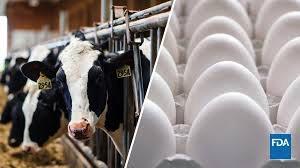
This is wake-up time, sophistry and posturing have the makings of a slow-motion train wreck. The infection is not controlled. APHIS should accept reality and recognize the zoonotic potential of H5N1 considered by the WHO as the most likely emerging pandemic strain of human influenza.
The industry needs limited, strategic and controlled flock immunization applying commercially available vaccines now. France has shown this approach to be feasible and effective.

|
Mutation in H5N1 Virus from Cattle Enhances Infectivity in Human Cells
|
12/11/2024 |
|
 Experiments conducted at the Scripps Research Institute funded by the National Institute of Health demonstrated the role of the Q226L mutation coding for viral hemagglutinin. The gene allows H5N1 virus to attach to receptors on cells lining the human respiratory tract. The study was conducted on H5N1 A/Texas/37/2024 isolated from the first patient infected with the virus circulating in a dairy herd. Presence of the Q226L mutation does not necessarily represent the potential for human-to-human transmission (contagion) as this capability would require additional mutations. Experiments conducted at the Scripps Research Institute funded by the National Institute of Health demonstrated the role of the Q226L mutation coding for viral hemagglutinin. The gene allows H5N1 virus to attach to receptors on cells lining the human respiratory tract. The study was conducted on H5N1 A/Texas/37/2024 isolated from the first patient infected with the virus circulating in a dairy herd. Presence of the Q226L mutation does not necessarily represent the potential for human-to-human transmission (contagion) as this capability would require additional mutations.
 The Scripps finding is consistent with warnings expressed by virologists and epidemiologists that control of H5N1 infection in poultry and dairy herds should be intensified using all appropriate and available modalities. The APHIS reliance on “stamping out” infections as they are diagnosed is clearly not working. This is evidenced by the extended duration of the current epornitic that has persisted seasonally since 2022 linked to the migration of waterfowl serving as reservoirs of the virus. The Scripps finding is consistent with warnings expressed by virologists and epidemiologists that control of H5N1 infection in poultry and dairy herds should be intensified using all appropriate and available modalities. The APHIS reliance on “stamping out” infections as they are diagnosed is clearly not working. This is evidenced by the extended duration of the current epornitic that has persisted seasonally since 2022 linked to the migration of waterfowl serving as reservoirs of the virus.
Attempting to eradicate a seasonally and regionally endemic disease is a futile exercise. Reliance on biosecurity is inadequate as a protective measure given the evident aerogenous spread of infection. The alarming increase in the incidence rate of bovine influenza-H5N1 in dairy herds especially in the Central Valley of California attests to the impotence of control measures attributed to deficiencies in biosecurity. EGG-NEWS has also commented on the inadequate protection of workers with evident susceptibility to infection of epithelial cells of the conjunctiva and mucosa of the upper respiratory tract.
The impact of HPAI on the egg production segment extends beyond expenditure on control by APHIS and the extensive losses experienced by flock owners. Consumers now bear the brunt of the disease through escalation in the price of eggs. In 2022, it is estimated that with an average $2 per dozen increase in price, consumers paid $15 billion more for their eggs than during the previous year when flocks were maintained at a level that was in balance with demand. It is now apparent that a similar situation will pertain in 2024.
 It is absolutely necessary for APHIS to backtrack on promoting biosecurity and stamping out infected flocks. It is time to recognize recognize the regional and seasonal endemicity of avian influenza H5N1 and introduce vaccination for replacement pullets and even laying flocks at risk to create an immune population. This will reduce incident cases and lower the probability of the emergence of a mutant, zoonotic strain of avian influenza H5N1. It is absolutely necessary for APHIS to backtrack on promoting biosecurity and stamping out infected flocks. It is time to recognize recognize the regional and seasonal endemicity of avian influenza H5N1 and introduce vaccination for replacement pullets and even laying flocks at risk to create an immune population. This will reduce incident cases and lower the probability of the emergence of a mutant, zoonotic strain of avian influenza H5N1.
Sometime in the not too distant future USDA-APHIS, the egg and turkey segments of the poultry industry, Congress, public health agencies and consumer groups will have to face the existential question—Are the risks and the consequences of a human pandemic worth maintaining a proportion of the export volume of broiler leg quarters? The introduction of vaccination will not be a panacea. It will moderate the alarming and costly incidence rate in poultry. Above all creating an immune poultry population will provide a measure of security against emergence of a ‘swine flu’ or ‘Spanish Flu’ pandemic. Time is on the side of nature given large susceptible flocks and their concentration along major migratory flyways, coupled with the proclivity of single-stranded RNA viruses to undergo mutation.
*Lin, T., et al, A Single Mutation in Bovine Influenza H5N1 Hemagglutinin Switches Specificity to Human Receptors, Science doi:10.1126/science. ADT0180 2024

|
USDA Issues Federal Order on Detection of Bovine Influenza-H5N1
|
12/09/2024 |
|
 Conforming to the well-established principle of “too little-too late” the USDA-APHIS has eventually reacted to the concerning incidence rate of bovine influenza-H5N1. On December 6th the Agency issued a Federal order together with guidance requiring nationwide sampling of raw milk at farm, processing and distribution levels to detect herd infection with bovine influenza H5N1. Conforming to the well-established principle of “too little-too late” the USDA-APHIS has eventually reacted to the concerning incidence rate of bovine influenza-H5N1. On December 6th the Agency issued a Federal order together with guidance requiring nationwide sampling of raw milk at farm, processing and distribution levels to detect herd infection with bovine influenza H5N1.
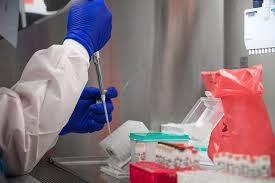
Recognized in March 2024 and present since December 2023, bovine influenza-H5N1 is not simply a “cow disease”. The infection has zoonotic potential as evidenced by clinical symptoms and serologic evidence of infection among workers. The presence of bovine influenza H5N1 is also implicated in transmission of infection to poultry flocks in Colorado, California, Michigan and Utah.
The federal order requires:-
- Sharing raw milk samples on request from dairy farmers, bulk milk transporters, transfer stations, and processing facilities that hold milk intended for pasteurization.
- Herd owners demonstrated to have infected animals must provide epidemiologic information for contract tracing and surveillance.
- Private laboratories and state veterinarians must report positive results to the USDA.
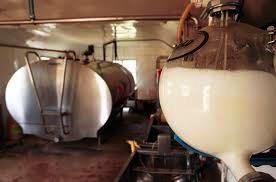
The program of milk testing by herd was initiated by both Colorado and California months ago. Surveillance was instrumental in reducing the rate of infection in Colorado that suffered extensive losses among poultry flocks attributed to spillover from dairy farms. The situation in California is more complicated with an increasing incidence among dairy herds, especially in the Central Valley, a region of intensive production.
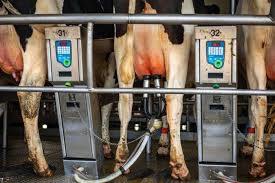
USDA-APHIS maintains that the Agency has “taken significant steps to better understand and control the viruses spread.” This self-adulatory comment is questioned given that individual states have taken the initiative to implement surveillance programs six months before the current Federal directive. It is acknowledged that in April, USDA issued a federal order requiring milk testing to be conducted before movement of lactating cows from affected herds across state lines. This did nothing to prevent transmission of infection within state nor did it establish quarantines that would have prevented interstate movement of heifers nor movement of affected culled cows to processing facilities with the potential for dissemination of the virus.
It is indeed fortunate that pasteurization destroys H5N1 virus in milk and thorough cooking of meat from infected animals will prevent foodborne transmission of the virus. It is recognized that USDA-APHIS limited authority on policy and regulations relating to prevention of disease within states, but leadership both from a scientific and regulatory perspective has been soundly lacking.
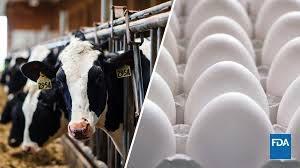
In a statement accompanying the release of the Federal order, Secretary of Agriculture Tom Vilsack stated, “This will give farmers and farm workers better confidence in the safety of the animals and ability to protect themselves and it will put us on a path to quickly controlling and stopping the viruses spread nationwide.” Again too-little-to-late.

|
Dr. David Kessler Emphasizes Threat of H5N1 Influenza
|
12/04/2024 |
|
 Dr. David A. Kessler warned of the need to effectively control avian influenza before mutations allow the virus to become zoonotic on an extensive scale or even to become contagious. Writing in the New York Times, Kessler noted the failure of APHIS to control HPAI in poultry flocks, the alarming incidence rate in dairy herds and emergence of seasonal avian influenza in migratory marine birds and waterfowl in Asia, Africa, Australasia and Europe. Dr. David A. Kessler warned of the need to effectively control avian influenza before mutations allow the virus to become zoonotic on an extensive scale or even to become contagious. Writing in the New York Times, Kessler noted the failure of APHIS to control HPAI in poultry flocks, the alarming incidence rate in dairy herds and emergence of seasonal avian influenza in migratory marine birds and waterfowl in Asia, Africa, Australasia and Europe.
Dr. Kessler has earned impressive credentials both a physician and lawyer. He was the Commissioner of the Food and Drug Administration during the George H. W. Bush and Clinton Administrations and was scientific advisor to the Biden Administration during COVID 19. He has served as the Dean of medical schools at Yale and the University of California, San Francisco where he now serves as a professor.
To date there have been less than 60 cases of H5N1 in humans, contracted from exposure to infected poultry flocks during depopulation and among workers on dairy farms exposed to contaminated milk.
Extension of H5N1 from poultry to humans was first documented in 1997 in Hong Kong resulting in 18 infections with six fatalities. Extensive endemic H5N1 infection in Asia commenced in 2003 with seasonal outbreaks in poultry flocks on five continents since this time with serious epornitics in the U.S. in 2015 and ongoing from 2022.

Dr. Kessler warned of consumption of non-pasteurized milk and the need for structured surveillance of dairy herds. This is in effect in California and Colorado and is soon to be implemented in Pennsylvania. Detection of infection in dairy herds should obviously be followed by quarantine including an embargo on movement of all animals from an affected herd for the duration of viral shedding. It is axiomatic that necessary PPE should be supplied and correctly used to prevent human infection, Although symptoms of infection in exposed workers are mild, contracting H5N1 adapted to mammals may result in recombinant events or viral mutation to become more pathogenic in humans.
The list of APHIS-confirmed outbreaks of avian influenza in egg production, turkey and broiler flocks during November attest to the inadequacy of a “stamping-out” program based on the false premise that HPAI is an exotic disease. The rapidly increasing incidence rate among flocks in three of the North American flyways denotes that the infection is both seasonally and regionally endemic, disseminated by migratory birds and possibly now resident species. Ongoing cases of avian influenza among large populations of domestic poultry and dairy cattle will create the potential for mutations. This reality is characterized by Dr. Kessler as “increasing the risk that the virus mutates and evolves to allow human-to-human transmission that will be hard to stop.”
According to Dr. Kessler there is an indication from isolates obtained from human cases in Washington State that the effectiveness of oseltamivir as an antiviral therapy has declined together with demonstration of a specific mutation in a California isolate that would reduce the effectiveness of paloxavir. At this time, the U.S. would be reliant on current antivirals and supportive therapy for patients. A stockpile of 5 million doses of H5N1 vaccine approved for humans is available with the possibility of an additional 5 million. The E.U. has imported H5N1 vaccine from the U.S., now deployed for workers in poultry and fur-farms in Finland as a precautionary measure.
Dr. Andrew Pekosz of the Department of Molecular Microbiology and Immunology at Johns Hopkins Bloomberg School of Public Health noted, “If we start to detect people with H5N1 with contact only with another person infected with H5N1, that will be a real danger sign.” This would indicate contagion and raise the potential of a 1918 outbreak or even a less extreme version of the 2009 H1N1 ‘swine flu’ pandemic that claimed 250,000 lives worldwide.
Dr. Pekosz did however comment, “The good news is so far, no clear person-to-person transmission of any significant nature has been documented or detected. This may only be a matter of time.”
The U.S. and world human populations would be best served by a change in APHIS policy allowing administration of available vaccines for egg production, breeder and turkey flocks in high-risk areas. Avian influenza is more than a bird problem. At present it is a potential human problem transcending the narrow issues of restriction on export of broiler parts.
Previous articles on this topic posted on EGG-NEWS can be retrieved by entering ‘avian influenza’ and ‘HPAI’ in the SEARCH block).

|
The Outcome of Trade Policy Based on Tariffs
|
11/26/2024 |
|
The domestic U.S. prices of corn and soybeans are in large measure determined by export volume in relation to demand and availability. For the 2014 crop USDA project 38 percent of soybeans and 14 percent of corn will be exported. Policy decisions following the 2024 general election and fiscal legislation to be passed by the 119th Congress will determine future prices of corn and soybeans, given relatively constant volumes of production through 2026. The change in Administration will witness the imposition of tariffs on our USMCA neighbors and the People’s Republic of China based on pre-election promises and subsequent statements. This will inevitably result in countervailing tariffs by exporters to the U.S. placing commodity exports at a disadvantage to other suppliers.

During the first term of President Trump, a spokesperson for the American Soybean Association optimistically stated that if China reduced imports from the U.S., it would obtain supplies from other producing nations, creating equivalent export opportunities for the U.S. This self-serving presumption was based on finite world production and constant demand. The statement ignored the reality that Brazil has been able to vastly increase soybean production albeit through deforestation of the Amazon Rainforest.
In 2023, it is estimated that Brazil supplied China with close to 70 million metric tons of soybeans compared to approximately 22 million tons from the U.S. During 2022, exports from Brazil increased by 12 million metric tons to the disadvantage of the U.S.

In 2018, China imposed a reciprocal 25 percent duty on U.S. farm products, impacting the considerable reliance of China on the U.S for 40 percent of their soybean imports. This proportion has declined to 18 percent with Brazil supplying the difference. Despite the signing of the Phase 1 Trade Agreement, China has reduced both total pork production and concurrently has restricted inclusion of soybean meal in hog diets. Policymakers in China recognized their dependence on soybean imports to maintain a supply of pork, the major animal protein. China increased domestic production of soybeans to 20 million metric tons in 2024 and is making greater use of locally manufactured synthetic amino acids in hog diets.
Events in Brazil during mid-January point to the future dependence of China on Brazil to the exclusion of the U.S. President Xi Jinping attended the G-20 Leaders’ Summit in Rio de Janeiro on November 18th and 19th. Subsequently he traveled to the nation’s capital, Brasilia, and met at length with President Luiz Inacio ‘Lula’ da Silva and his top officials to negotiate and conclude 37 trade agreements. These included the purchase of soybeans and fruit, and exports of electrical vehicles and batteries and to obtain satellite technology establishing a relationship between SpaceSail of China and Telebras of Brazil.
Brazil and China will pay for each other’s purchases in their respective currencies, eliminating the U.S. dollar. Attempting to coerce nations to continue using the dollar as suggested by the incoming Administration through imposing punitive tariffs will be unsuccessful and will have severe and lasting consequences.
A trade war with China and even with our USMCA neighbors as recently suggested will result in a sharp decline in exports of soybeans and corn with a resulting depression in domestic prices. It is doubtful whether the U.S. could establish new markets at prices that would compensate for the loss of China and Mexico as major importers.
Domestic poultry and hog producers would benefit from lower prices but would forego exports to China and possibly USMCA neighbors. This reality together with predictions of CME prices below cost of production has delayed passage of the 2023 Farm Bill. A major stumbling block has been the revision of price supports for agricultural commodities. If farmers are to be compensated for losses that arise as a result of geopolitical decisions by the Administration, it will represent a detrimental increase in the national debt. Effectively, consumers and their succeeding generations will bear the cost of a misguided trade and tariff policy.

|
It All Boils Down to Eggs
|
11/19/2024 |
|
 Notwithstanding the pre-election issues of open borders, ‘democracy’ and women’s health, disaffection with prices of everyday essentials symbolized by eggs was the major driver of the landslide election victory by the President-Elect and Republican down-ticket candidates. Notwithstanding the pre-election issues of open borders, ‘democracy’ and women’s health, disaffection with prices of everyday essentials symbolized by eggs was the major driver of the landslide election victory by the President-Elect and Republican down-ticket candidates.
The price of eggs became the focus of food inflation among voters. Notwithstanding, the reduction in the inflation rate from nine percent in late 2023 to under three percent by November 5th, the electorate rejected the statistics and were motivated by high costs associated with groceries, automobile insurance, rentals, mortgage payments and credit card interest. Despite the fact that inflation has declined, the perception that the economy was mismanaged overruled other considerations, motivating the selection of the top-of-the ticket and members of the House and Senate, even down to the proverbial city dog-catcher.
November 5th has passed, and the trifecta is a reality. The question now is how the economy will fare under the incoming Administration. Deregulation with removal of restraints on mergers and the elimination of onerous “woke” regulations should have a stimulatory effect on the economy. Reduction in government spending, especially in wasteful projects and activities as evidenced by USDA giveaways, should be beneficial in establishing a balance between revenue and expenditure. Adjusting tax rates will benefit both entrepreneurs and corporations with a short- term benefit to shareholders and ultimately to consumers. term benefit to shareholders and ultimately to consumers.
There will however be negative impacts if some pre-election promises are implemented. Imposition of tariffs on imported goods and especially those directed against the People’s Republic of China will be inflationary. It is axiomatic that tariff wars reduce trade and hence U.S. exports. As prices for imported products escalate, domestic producers will increase prices to match those of imported goods. Protectionism also limits innovation and expenditure on research and development. Any observer of economic history will be aware of the effect of the 1930 Smoot-Hawley Tariff Act on exacerbating and extending the Great Depression.
Deportation of illegal immigrants especially those with criminal convictions is justified. It should be recognized that law-abiding foreign workers are necessary, especially for agriculture, given that a proportion of the U.S. population drawing social security and SNAP benefits appear disinclined to take the jobs performed by guest workers. Obviously, the solution is to radically improve immigration legislation and to provide both seasonal and extended-duration visas to workers, preferably with a path to permanent residence as in Canada. Mass deportation would be disruptive and extremely expensive and is fraught with practical problems including undesirable impacts on nations in Central America.
Imposition of tariffs on Mexico could seriously affect agricultural exports since our USMCA partner represents a major importers of corn and soybeans in addition to broiler leg quarters, shell eggs and egg products. The agricultural and industrial structures of the U.S, Canada and Mexico are so integrated that inappropriate and precipitous actions could have severe and far-reaching unintended consequences.
Notwithstanding pre-election rhetoric, it is hoped that economic realities over the coming four years will be tempered by reality and practicality. We look forward to the positive aspects that will benefit the economy. It is anticipated that the more extreme potential negative aspects will be subject to both Executive and Congressional review and restraint.
At the end of the day, voters will have to decide whether they are better off at the 2026 mid-terms and the 2028 general election than they were in 2024. The price of eggs has become an election issue so APHIS had better backtrack on their reluctance to approve regional vaccination to protect egg production and turkey flocks. Politicians will be basing their campaigns on the cost of food and everyday living. The availability and hence price of eggs will be a symbol of the cost of feeding families and will be a determinant of voter satisfaction.

|
APHIS Needs a New Approach to Control HPAI
|
11/13/2024 |
|
 As we move into the midpoint of the fourth quarter, it is evident that the U.S. poultry industry is facing a recurrence of seasonal avian influenza. Outbreaks have claimed 21 million hens year to date with the fall cases amounting to five million hens over six weeks in five states. Effectively APHIS has not changed its approach to control the infection since the 1985 outbreaks in Pennsylvania and adjoining states. Since this time, the impact of HPAI has increased exponentially with expansion of the egg and turkey industries that have been the most affected but with disease having the potential to decimate broiler production. As we move into the midpoint of the fourth quarter, it is evident that the U.S. poultry industry is facing a recurrence of seasonal avian influenza. Outbreaks have claimed 21 million hens year to date with the fall cases amounting to five million hens over six weeks in five states. Effectively APHIS has not changed its approach to control the infection since the 1985 outbreaks in Pennsylvania and adjoining states. Since this time, the impact of HPAI has increased exponentially with expansion of the egg and turkey industries that have been the most affected but with disease having the potential to decimate broiler production.
It is evident that diagnosis of HPAI has been facilitated by recent technological advancements including PCR and lateral flow immunodiffusion assay kits. From bitter experience, state and federal agencies are now able to rapidly confirm HPAI and then quarantine and dispose of infected flocks. Notwithstanding experience in depopulating large caged-hen and aviary egg production complexes, it may take more than five days to euthanize and dispose of a flock comprising one million or more hens.

It is time that APHIS recognized that HPAI is at least seasonally and regionally endemic with migratory waterfowl and marine birds serving as reservoirs and disseminators of virus each fall and spring. Given the duration of the current epornitic it is possible that domestic, resident avian and mammalian species may perpetuate infection that can be transmitted to commercial poultry.
 Despite seasonal reoccurrence of the infection since 2022, APHIS has pursued a futile policy of attempting to “stamp out” the infection. This approach would be justified if an exotic viral disease were to be imported into the U.S. and introduced onto a single farm through defective biosecurity. Eradication would be possible with rapid diagnosis and expedient depopulation and disposal of carcasses. The reality of HPAI is far different from the situation envisaged in the APHIS conceptual model. With respect to HPAI, “stamping out” in the classic sense is inappropriate, outdated and inconsistent with epidemiologic reality. Despite seasonal reoccurrence of the infection since 2022, APHIS has pursued a futile policy of attempting to “stamp out” the infection. This approach would be justified if an exotic viral disease were to be imported into the U.S. and introduced onto a single farm through defective biosecurity. Eradication would be possible with rapid diagnosis and expedient depopulation and disposal of carcasses. The reality of HPAI is far different from the situation envisaged in the APHIS conceptual model. With respect to HPAI, “stamping out” in the classic sense is inappropriate, outdated and inconsistent with epidemiologic reality.
APHIS has at its disposal personnel with experience in field epidemiology. Despite this resource, the Agency has not conducted thorough epidemiologic investigations relating to the mode of transmission of virus from migratory bird reservoirs to farms. The belated and incomplete publications on outbreaks during 2022 failed to identify what is evident to poultry health professionals in North America. It appears that the infection can be transmitted over distances of up to a mile by the aerogenous route. APHIS has failed to publish on any structured evaluation of environmental variables that may influence transmission or viability of H5N1 virus including humidity, wind movement, cloud cover or temperature. A number of scientific studies have confirmed the possibility of aerogenous transmission as reported in  EGG-NEWS during the past year. If it is accepted that avian influenza virus can be transmitted on entrained dust or soil particles then even the most rigorous structural and operational biosecurity will not provide absolute protection for power-ventilated houses as denoted by the circumstances associated with a number of outbreaks. EGG-NEWS during the past year. If it is accepted that avian influenza virus can be transmitted on entrained dust or soil particles then even the most rigorous structural and operational biosecurity will not provide absolute protection for power-ventilated houses as denoted by the circumstances associated with a number of outbreaks.
It is questioned whether APHIS administrators actually want to know how the virus enters farms. To accept that the infection is seasonally and regionally endemic and is transmitted by air movement over as yet undetermined distances, presumes that stamping out will not be possible. Seasonal reintroduction of H5 and H7 influenza viruses predicates a new approach.
Attempting to eradicate avian influenza in commercial flocks by serial depopulation imposes a cost on the public sector through indemnity and logistics. Producers lose income while replacing flocks. Welfare advocates including legislators have condemned extensive depopulation including VSD. The cost of uncontrolled infection for consumers is immense, overshadowing direct costs for control. Depopulation of over 50 million hens during the 2022-2023 epornitic resulted in a constant reduction in the national flock by at least 10 million laying hens resulting in a conservative incremental cost of $2 per dozen spread over 12 months. With domestic sales of shell eggs and products amounting to seven billion dozen, consumers paid an incremental $15 billion as a result of the prolonged and uncontrolled infection. A similar situation is playing out in 2024 with the total flock approximately 12 million under the pre-HPAI level of 326 million.
The adaptation of H5N1 avian virus to dairy herds has created an additional problem for the poultry industry in addition to milk producers. To date, there have been 492 diagnosed cases of bovine influenza among dairy herds. This figure is in all probability an undercount given the reluctance of states other than California and Colorado to impose rigorous surveillance programs based on assay of bulk milk. California has diagnosed 278 cases within three months despite a program of rapid diagnosis with mandatory quarantines. Bovine influenza-H5N1 is a risk to poultry as evidenced by spillovers to farms in Michigan, Utah and Colorado and possibly in the Central Valley of California. APHIS has yet to release the results of epidemiologic studies that presumably have been conducted on the transmission of H5N1 strain B3.13 in the dairy industry.
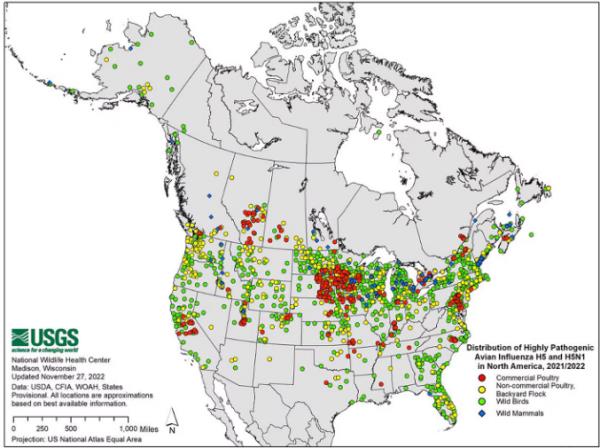 |
The zoonotic aspect of H5N1 influenza virus is a growing concern. Although a reassortment event may result in a strain with both human and avian genes becoming infectious to humans, additional mutations will be required for contagion necessary to precipitate an epidemic. The consequences of an H5 influenza pandemic would far exceed the economic and health effects of the SARS-CoV-19 pandemic. The quicker that the virus can be suppressed in the commercial poultry industry, the safer our population will be.
Creating immune poultry populations especially in areas with a high density of egg or turkey production and with large in-line complexes will reduce the financial impact of avian influenza and mitigate against emergence of a zoonotic strain. The World Organization of Animal Health accepts the principle of immunization as an adjunct to biosecurity and quarantine to control the infection. France and Mexico have successfully deployed vaccination to reduce incidence rates. It is axiomatic that avian influenza is the Newcastle disease of the 2020s. This infection was as catastrophic with respect to commercial production in the 1960s as avian influenza is at the present time. Newcastle disease is effectively controlled by vaccination. Vaccination is obviously not perfect since nothing in biology is absolute.
We are all too aware of the trade restraints associated with vaccination. If, however, the infection emerges in high-density broiler production areas of the U.S. or if Brazil, the major world exporter of broiler products, encounters (or admits) to infection among commercial flocks, the approach of blanket national restrictions would fall away. Importing nations should be guided by the World Organization for Animal Health principles of compartmentalization and regionalization and controlled application of vaccination. The incidence rate of avian influenza in the U.S. with the costs to both private and public sectors and the obvious futility of applying a “stamping out” program predicates immunization using available vaccines on a limited and controlled basis. Turkeys and commercial egg production flocks, especially in areas of high risk, should receive priority consideration. Vaccination of broiler breeder flocks or even commercial growing birds would be based on cost to benefit studies taking into account risks of infection, the financial impact of losses and also trade considerations that may have been overstated.
What is evident is that the program APHIS has following for three years is flat just not working. Hope that migratory birds will cease shedding is not a viable strategy. Current administrators of APHIS should step back from their present policy and restraints and reconsider the limited application of vaccination to protect flocks at the greatest risk based on the history of regional exposure.
Any representative or spokesperson for APHIS or colleagues who wishes to defend the status quo or advance the principle of limited and controlled vaccination is welcome to submit a comment to be posted.

|
The People Have Spoken
|
11/06/2024 |
|
 Both in the plurality and by state, the incoming President and his Administration have a clear mandate. Let us hope that stability in both domestic and foreign policy will prevail and that prosperity will improve. Initial indications from the stock market suggest approval of policies advocated during the pre-election period. The concurrent rise in interest rates predicts that borrowing will escalate and that the national debt will continue its upward trajectory to become a problem for our children and grandchildren. Both in the plurality and by state, the incoming President and his Administration have a clear mandate. Let us hope that stability in both domestic and foreign policy will prevail and that prosperity will improve. Initial indications from the stock market suggest approval of policies advocated during the pre-election period. The concurrent rise in interest rates predicts that borrowing will escalate and that the national debt will continue its upward trajectory to become a problem for our children and grandchildren.
The overwhelming consideration for the agricultural sector will be the proposed imposition of protective and in some cases punitive tariffs that will restrict exports of commodities. With respect to soybeans, Brazil and Argentina represent efficient competitors with adequate production. With the loss of the market represented by China and some other nations, prices will fall to the disadvantage of row crop farmers but will benefit livestock producers including broilers, turkeys and eggs. Since the broiler industry exports leg quarters, basically a commodity, most importers who are unaffected by U.S. tariffs will continue to buy the product, based on need and price.
 The imposition of tariffs will increase the price of imported equipment, especially over the short term, but will ultimately encourage local manufacture and fabrication. The imposition of tariffs will increase the price of imported equipment, especially over the short term, but will ultimately encourage local manufacture and fabrication.
There will be profound changes in policy and operation at USDA. It is hoped that the lame duck session of the 118th Congress will produce a viable Farm Bill, delayed since 2023, with most provisions having expired at the end of September. Benefits that have been extended to minorities and small producers in the form of special programs that are essentially giveaways will cease under the new Administration, focusing on productivity and rationality and less on ideological considerations. The move towards “restructuring” the meat and poultry industries will disappear with large plants operated by the major producers continuing to provide the bulk of red meat. Numerous current antitrust activities will be terminated with replacement of extremists in the FTC and DOJ, exercising their respective sociopolitical agendas.
The question of immigration will require balance. It is hoped that a comprehensive review of policy will lead to enactment of fair and constructive legislation. While it is considered appropriate to deport criminals and those who have illegally entered the Nation, it must be remembered that agriculture relies on foreign labor. Legal routes to entry and employment must be revised and extended but should also be strictly enforced.
The incoming Administration has a mandate to govern according to the platform presented to the electorate. Let us hope that both the Executive and Legislative branches recognize their responsibilities to the Nation to work cooperatively for the benefit of the total economy and especially the agricultural community responsible for our health and prosperity.
God bless America!

|
U.S. Prosperity Should Dominate Electoral Decisions
|
10/30/2024 |
|
 As the U.S. faces a pivotal national election, the future economic well-being of the U.S. should be the overriding decision in assigning votes, overriding political rhetoric. The economy of the U.S. is sound by any economic measure. The GDP of our Nation comprises 50 percent of the other G7 nations combined, up from 40 percent in 1990. Per capita GDP contribution is 30 percent higher than for the E.U. and 60 percent higher than Japan, according to a review of the U.S. economy in the October 19th edition of The Economist. As the U.S. faces a pivotal national election, the future economic well-being of the U.S. should be the overriding decision in assigning votes, overriding political rhetoric. The economy of the U.S. is sound by any economic measure. The GDP of our Nation comprises 50 percent of the other G7 nations combined, up from 40 percent in 1990. Per capita GDP contribution is 30 percent higher than for the E.U. and 60 percent higher than Japan, according to a review of the U.S. economy in the October 19th edition of The Economist.
This article noted the inherent advantages enjoyed by the U.S. including energy resources, a vast consumer market and relative to the E.U., fewer restrictive regulation leading to the rise of companies applying high technology. The U.S. dollar remains the world’s reserve currency. According to the International Monetary Fund the U.S. dollar comprises sixty percent of the reserves held by central banks. Given the strength of agriculture and industry coupled with adoption of innovative technology and sound management, the average American worker generates $171,000 in economic output compared to $120,000 in the E.U. Our productivity has increased 70 percent since 1990 compared to 30 percent in Europe and 25 percent in Japan.
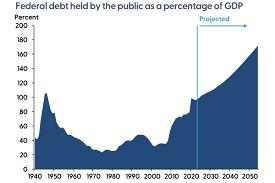
We weathered the global fiscal crisis of 2008 avoiding a fiscal meltdown . We responded to the COVID pandemic with massive spending that cushioned the economy and prevented extensive social hardship. The resulting inflation was however “tamed” by successively increasing the benchmark interest rate without generating unemployment and achieving a “soft landing” without creating a recession as has occurred in previous cycles. The fiscal stimulus packages resulted in the U.S. recovering from the pandemic more quickly than other industrialized nations. The balanced recovery has placed the U.S. in a more favorable situation than its peers and competitors.
Ironically, factors that have contributed to the strength of the U.S. economy including immigration have been demonized in the pre-election period. A regulated flow of immigrants is necessary to offset a decline in population growth. Qualified entrants have most certainly contributed to economic well-being in a variety of sectors including high technology, health and manufacturing. Unskilled workers have supported agriculture and are necessary to perform work that U.S. citizens are disinclined to do.
On the negative side, life expectancy in the U.S. has declined due to health issues centering on obesity, gun violence, opioid addiction and an unacceptable rate of child mortality. Older Americans have a lower life expectancy after 65 than their peers in the E.U.
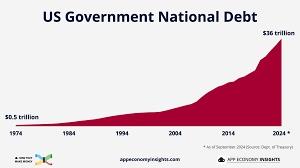
Despite the remarkable progress over the past three decades, there are clouds on the horizon and the U.S. may suffer from injudicious politically inspired economic decisions. The debt-to-GDP ratio has nearly tripled since the outbreak of the global financial crisis of 2008 attaining 103 percent at present. Economists forecast deterioration in this parameter with the debt-to- GDP ratio peaking at 160 percent within three decades unless spending is curtailed. In 2016, the national debt stood at $25.6 trillion, rising to $32.6 trillion in 2020 and now stands at $35.8 trillion. Interest on the national debt represents seven percent of GDP at present but could soar to 12 percent in 2035.
Economic platforms proposed by the two competing presidential candidates promise little to reduce debt. One candidate intends to reduce taxes on overtime earnings and tips representing $118 billion over ten years in addition to providing tax breaks on car loans. Proposed SALT deductions could boost national debt by $1 trillion over 10 years. These pre-election promises are intended to attract support from voters in pivotal states. The other candidate is promising $25,000 to aspirant homeowners coupled with a program to erect three million dwellings togetherwith substantial tax breaks directed to the “middle class”. Many of the proposals from both candidates will probably never eventuate given that they must receive Congressional approval.
|
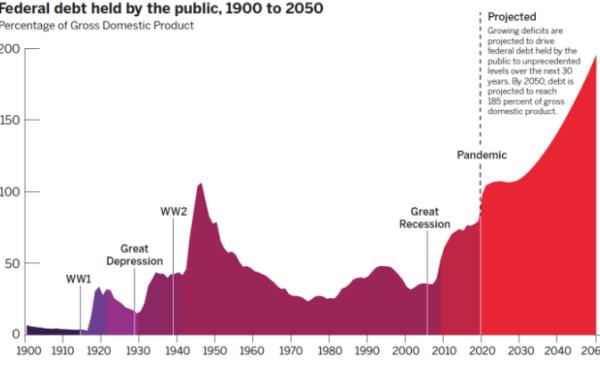
|
Economists have condemned the intention to place high tariffs on imported goods in an attempt to replace taxes with tariffs. In addition, punitive tariffs applied as a surrogate for diplomacy will reduce agricultural exports and will severely impact rural communities that support an essentially isolationist policy without realizing the implications.
Pre-election rhetoric promising high tariffs and massive deportations and considerations such as interference by the White House in the Federal Reserve will create self-inflicted wounds. Unrestricted spending on social programs and a continuation of antitrust activities including opposition to large and efficient meat and poultry production will be detrimental to specific sectors of the economy and to the nation at large.
Irrespective of the outcome of the election, the winner must address the growing budget deficit that is now equivalent to seven percent of GDP. Ultimately, our well-being will be dependent on productivity and population growth. Fiscal programs presented by both candidates for the Presidency are unworkable and unrealistic. Let us hope that these are merely empty political gestures to win votes. Irrespective of the outcome of the election the incoming Administration in 2025 will have to adopt sound fiscal policies. Congress will have to be more accommodative, less partisan and willing to pass legislation through compromise in order to advance the economic well-being of the Nation and its citizenry.

|
Bovine Influenza in Central Valley, CA. Associated with Elevated Cow Mortality
|
10/21/2024 |
|
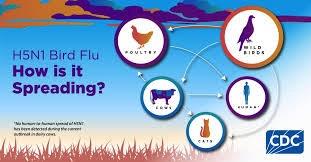
Unlike cases of bovine influenza in Texas, Colorado and eleven other states, mortality among affected herds in the Central Valley of California has assumed concerning proportions. To date, over 120 herds have been diagnosed with H5N1 B3.13 strain with some operations recording 15-20 percent mortality compared to less than five percent in other states collectively recording 210 cases to date. Although ambient heat has been implicated as a stress factor contributing to mortality, it is noted that temperatures in the Central Valley frequently exceed 100F without resulting in an appreciable elevation in losses.
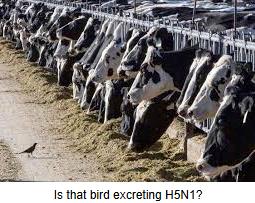
Rendering companies are overwhelmed and carcasses have been stacked in the open in areas close to herds adding to the risk of contamination of soil followed by dispersal by wind, carrion birds or mammalian vermin.
It is of extreme urgency that the whole genome sequence of isolates associated with high mortality in cows should be analyzed to determine if there has been a shift in pathogenicity to animals and humans due to mutation.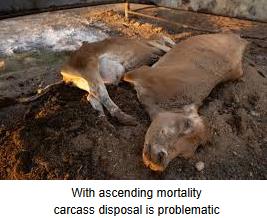
It is noted that eleven dairy herd workers have been diagnosed with H5N1v influenza. Epidemiologic studies should be conducted to determine risk factors other than those that are currently recognized and to determine whether appropriate PPE was issued and used by those who were infected. Surveillance to ascertain whether domestic contacts of those affected yielded H5N1v virus on PCR appears necessary to determine whether the virus has become contagious among humans. It is also necessary to conduct serologic surveys on workers and their immediate contacts for individuals known to have been infected based on clinical symptoms or PCR assay as compared to those who were unaffected. On Tuesday 20th October health officials in Washington state reported five workers with conjunctivitis and respiratory symptoms associated with the affected farm in Franklin County. Whether these individuals were infected as part of their routine flock duties or were part of a depopulation team has not been announced but it is anticipated that information will be made available to the WHO after samples have been collected and expeditiously analyzed.
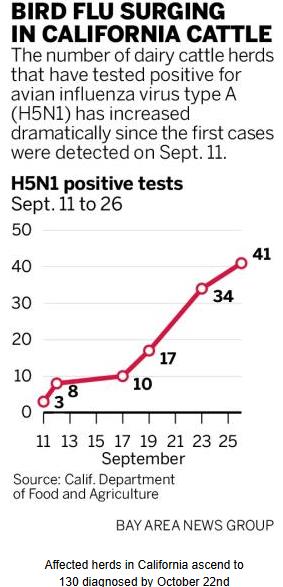
In the interim, it is presumed that the California Department of Food and Agriculture is actively following a program of surveillance in order that affected herds can be quarantined as far as possible. It is hoped that epidemiologic studies in progress will identify risk factors and vehicles of transmission.
The occurrence of cases of H5N1v infection in farm workers in contact with dairy herds and infected egg-production flocks requires more follow up. Assay for H5N1 antibody among potentially exposed but unaffected individuals will be required. Determining how and when individuals were infected, duration of shedding virus from the respiratory tract requires structured investigation both at the field and molecular levels.
Despite the USDA/CDC contention that H5N1 strain B3.13 responsible for bovine influenza does not represent a risk for human population in affected areas, more transparency by public agencies would be reassuring.

|
Kroger Makes a Case for Merger with Albertsons
|
10/14/2024 |
|
 The October 11th edition of EGG-NEWS included a posting on the arguments advanced by the Federal Trade Commission (FTC) in cases heard in Oregon, Washington State and Colorado seeking to block the proposed merger between the Kroger Company and Albertsons Corporation. The parties to the merger countered with arguments refuting FTC assertions and supporting the transaction. The October 11th edition of EGG-NEWS included a posting on the arguments advanced by the Federal Trade Commission (FTC) in cases heard in Oregon, Washington State and Colorado seeking to block the proposed merger between the Kroger Company and Albertsons Corporation. The parties to the merger countered with arguments refuting FTC assertions and supporting the transaction.
Kroger and Albertsons contend that the FTC is conducting a “trial-by-anecdote” and that their justification for opposing the merger is based on faulty concepts and a distorted characterization of the grocery industry. The two merger parties maintain that considerable competition exists in the grocery industry. This includes online purchasing through Amazon and the services operated by the major chains including Walmart and Target. Warehouse stores including Costco and Sam’s Club that have expanded now represent competition to conventional pure-play grocery chains especially in the suburbs of large population centers. The location of small independent and specialty grocers again in suburban areas compete with traditional chains.  The ubiquitous dollar stores that serve inner city and rural areas, especially in the Midwest and Western states, do not in fact represent competition to Kroger and Albertson’s banners, despite representations advanced during the lawsuits in Colorado, Washington and Oregon. The proposed merger would in many states with low-density populations, reduce competition especially with the potential failure of the divested stores, to the disadvantage of consumers in small towns and cities in rural areas. The ubiquitous dollar stores that serve inner city and rural areas, especially in the Midwest and Western states, do not in fact represent competition to Kroger and Albertson’s banners, despite representations advanced during the lawsuits in Colorado, Washington and Oregon. The proposed merger would in many states with low-density populations, reduce competition especially with the potential failure of the divested stores, to the disadvantage of consumers in small towns and cities in rural areas.
Kroger presented evidence that the purchasing patterns of consumers have changed over a decade and that they are now less reliant on a single banner for their groceries, frequently patronizing many different stores within a week. This may be a valid contention but is probably limited to areas of high density including the suburbs of large metropolitan areas. This is not necessarily applicable to the residents of Logan, UT., Bozeman, MT., Kingman, AZ. and hundreds more locations offering limited choice.
Kroger has indicated that it will deploy $1 billion to reduce prices within a short time of the merger taking place and will invest in store upgrades and benefits for workers. A non-binding promise in anticipation of the merger might be viewed as an inducement to secure approval but would be repaid in any given year by increasing markup by a fraction of a percent on the projected combined FY 2024 sales of the two companies, approximating $250 billion. Kroger management recognizes the potential for increases in margin in the absence of viable competition in Western states coupled with the economies of scale from consolidated buying and transport.
Albertsons Corporation through its CEO Vivek Sankaran maintained that without the synergy generated by the proposed merger, Albertsons would be obliged to close stores and exit some markets resulting in layoffs and inconvenience to consumers.
The parties to the transaction noted their intention of divesting 579 stores, a requirement that would have been imposed by the FTC under any Administration. Evidence in the Colorado trial confirmed that both Aldi and SaveMart were intereted in acquiring the stores representing substantial competition. In the event Kroger-Albertsons selected C& S Wholesalers to acquire the complete package of stores and DCs.To ensure viability, C&S iwill be staffed through transfer of experienced managers and their teams headed by the COO of Albertsons to ensure viability but with the obvious prospect of continued control. The intent is probably to sustain viability of C&S for a reasonable period but not represent any meaningful competition. The recent history of the demise of Haggen following acquisition of divested Safeway stores in 2015 and the apparent "synthetic" divestiture of 579 stores will be considered by the Courts as a justification to reject the merger.
In the context of dairy, eggs, produce and even packaged foods, the combined buying power of Albertsons and Kroger, especially in western states would be detrimental to farmers and suppliers.
Decisions have yet to be rendered in the three cases, but informed observers believe that the application for a preliminary injunction preventing the merger will be granted by the Federal Court in Oregon. It is also more likely that adverse verdicts will be rendered in both Oregon and Washington State, effectively torpedoing the transaction.
Based on the reported evidence presented at the three trials coupled with press releases by Kroger, the merger would benefit Cerberus Capital Management, shareholders of the Kroger Company and executives with ‘golden parachutes’. The proposal would appear to represent a zero-sum transaction with losers comprising farmers and suppliers of perishables including eggs and consumers deprived of alternative grocery retailers especially in underserved regions and areas in the rural U.S.

|
Dutch Study Confirms Airborne Dissemination of DNA from Waterfowl into Poultry Houses
|
10/07/2024 |
|
 A recently published study* conducted by epidemiologists and molecular biologists affiliated with Utrecht University and Wageningen Bioveterinary Research confirmed that DNA from waterfowl could be detected in the incoming air stream of poultry houses. A recently published study* conducted by epidemiologists and molecular biologists affiliated with Utrecht University and Wageningen Bioveterinary Research confirmed that DNA from waterfowl could be detected in the incoming air stream of poultry houses.
The study involved two broiler houses and a layer house that were depopulated and decontaminated after confirmed cases of H5N1 HPAI. The area in which the study was conducted was known to have a noteworthy population of waterfowl. The houses selected for assay were devoid of flocks with the exception of a few sentinel chickens in the layer house. Ventilation systems were operated consistent to the respective requirements of flocks that would have been housed. Air sampling equipment was placed directly at the air inlets. In addition parallel samples were obtained from the exterior of the sampled houses. DNA was extracted and isolated from sample filters and was assayed by applying eukaryote DNA metabarcoding followed by deep sequencing.
In the case of the two broiler houses on the respective farms, 1 out of 5 and 1 out of 21 air inlet samples respectively yielded DNA derived from waterfowl. For the layer house, 2 out of 21 samples were positive. One out of 21 exterior samples was positive for waterfowl DNA from only one of the two broiler farms and 2 out of 21 samples yielded waterfowl DNA in the vicinity of the layer farm.
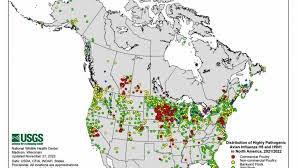
The positive control comprised samples obtained from a waterfowl rehabilitation center. All twelve out indoor samples and all 8 outdoor samples yielded waterfowl DNA. This was not unexpected, but confirmed the sensitivity of detection of waterfowl DNA using the sampling and assay technique.
Demonstration of HPAI virus in air samples is exceptionally difficult but has been demonstrated using spike-in experiments. In addition HPAI H5N1 was isolated from air samples obtained in the vicinity of wild waterfowl in a study conducted in Taiwan coincident with outbreaks in commercial poultry. This study demonstrated that DNA from the plumage of waterfowl or their feces may be entrained in air streams with introduction into poultry houses operated with exhaust ventilation. It is noted that air samples were obtained over distances ranging from 12 to 25m from each of the houses sampled over a period of four days.
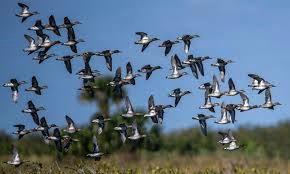
The study demonstrated that commercial poultry confined to power-ventilated buildings may potentially be exposed to avian influenza virus since DNA from waterfowl was detected in the airflow at the air inlets to houses. In the context of units holding 100,000 laying hens, air flow would correspond to 600,000 cfm assuming 1.5 cfm per pound live weight. Air inlet velocities would approach 600 ft/minute at the inlets depending on their collective area and the rating and number of fans in operation. The introduction of HPAI virus into a large complex is obviously facilitated by the quantum of air introduced into houses under normal operation, environmental variables promoting survival of virus and proximity to concentrations of migratory waterfowl shedding virus.
HPAI virus can persist on moist soil for periods extending beyond a week. The presence of waterfowl in vicinity of large egg-production complexes along the Mississippi Flyway is well established. Effluent retention ponds in the vicinity of houses, and the presence of wetlands attract waterfowl. In a recent evaluation of biosecurity of a complex in a Midwest state, gulls, were perching on the ridges of houses and Canada geese ranged to within yards of the perimeter of houses feeding on grass between houses.

The implications of the University of Utrecht/Wageningen study are self-evident. Even with the highest standards of biosecurity, introduction of avian influenza virus cannot be absolutely prevented. This is consistent with anecdotal reports of exposure on complexes with high levels of structural and operational biosecurity in Colorado and other states.
Filtration of incoming air to exclude virus is currently impractical but the use of laser installations to deter congregation of wild waterfowl and other birds in the vicinity of farms should be beneficial.
With the recognition that HPAI is at least seasonally and regionally endemic in the U.S. and given the population of migratory waterfowl and resident birds potentially shedding avian influenza virus, eradication of the infection can only be regarded as a futile aspiration. With new evidence highly suggestive of aerogenous transmission of the virus, protection of both large and medium sized complexes and even individual houses would be enhanced by immunization. The World Organization for Animal Health has endorsed preventive vaccination in conjunction with high levels of structural and operational biosecurity to offer a more solid prospect of preventing large-scale outbreaks.
*Bossers, A., et al. Detection of Airborne Wild Waterbird-Derived DNA Demonstrates Potential for Transmission of Avian Influenza Virus via Inlets into Poultry Houses, the Netherlands, 2021-2022. Euro Surveill. 2024:29 Doi.org/10.2807/1560-7917.ES.2024.29.40.2400350.

|
Pressure is Mounting for HPAI Vaccination
|
09/30/2024 |
|
 Currently, the poultry industry is in a relatively inactive stage with respect to incident cases of highly pathogenic avian influenza (HPAI). This may change during fall months with the onset of southward migration of waterfowl and also dissemination of virus by domestic birds. In addition, 2024 witnessed the emergence of bovine influenza-H5N1 with spillover to poultry complexes in Michigan and Colorado and probably responsible for the September case on a turkey farm in Merced County, California. Currently, the poultry industry is in a relatively inactive stage with respect to incident cases of highly pathogenic avian influenza (HPAI). This may change during fall months with the onset of southward migration of waterfowl and also dissemination of virus by domestic birds. In addition, 2024 witnessed the emergence of bovine influenza-H5N1 with spillover to poultry complexes in Michigan and Colorado and probably responsible for the September case on a turkey farm in Merced County, California.
Highly pathogenic avian influenza should be regarded as seasonally and regionally endemic if not by definition ‘endemic’ in the U.S. This is based on the duration of the epornitic and the geographic extent of outbreaks.
Recently, Marcus Rust, CEO of Rose Acre Farms, the second-ranked egg producer by volume, advocated for vaccination in an interview with Reuters. Rust noted, “We are farmers, and we want our animals to live.” Along with competitors his family company has suffered losses from HPAI and has relocated a farm to establish conceptual biosecurity. The USDA- APHIS should recognize that the infection is endemic at least regionally and seasonally. Since the virus can be spread over even relatively short distances by the aerogenous route, even the most intensive biosecurity is inadequate to provide absolute protection. APHIS should recognize that the infection is endemic at least regionally and seasonally. Since the virus can be spread over even relatively short distances by the aerogenous route, even the most intensive biosecurity is inadequate to provide absolute protection.
A number of legislators are pressing USDA to review their no-vaccination policy with respect to practicality and cost. Vaccination to protect flocks against HPAI is a bipartisan issue as denoted by the representations to USDA by Representatives Randy Feenstra (R-IA) and Jim Costa (D-CA). The Agency appears to be unresponsive, citing real or perceived concerns over export of broiler leg quarters. This is an important and valid consideration although whether absolute is subject to question. The export restraint should not be a deal-breaker to the detriment of the entire poultry industry. In calculating costs, USDA appears to ignore the effect of HPAI on consumers. It is calculated that with seven billion dozen eggs sold in 2022, and at an average increase of $2 per dozen over the year consumers paid an additional $14 billion for their eggs. The additional cost was due to disequilibrium between supply and demand with as many as 50 million hens depopulated as a result of HPAI over the year. Currently the U.S. hen population is approximately 18 million lower than the pre-HPAI level of 326 million despite routine repopulation and retention of flocks. Eggs demonstrate noteworthy price elasticity resulting in large fluctuations in either direction caused by small differences in supply. Unfortunately, this reality is fueled by the prevailing price discovery system that enables buyers to bend the market over the short term by holding back on orders, inducing a fall in price and then restocking DCs and shelves.
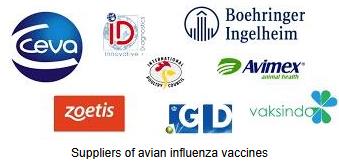
USDA also appears refractory to the issue of possible emergence of a pandemic of a zoonotic strain of HPAI. Mutations resulting in the emergence of the B3.13 variant capable of propagating in mammary tissue of dairy cows and resulting in mild conjunctivitis and upper respiratory infection should be an additional justification to reduce the number of susceptible commercial hens and turkeys through vaccination.
Commercially available vaccines could be purchased from multinational suppliers on an off-the shelf basis but this will require USDA approval for administration in the U.S. Claiming that additional research for development of a new or specific “U.S. vaccine” would be necessary is simply a delaying tactic to avoid making a policy decision. Accepting vaccination would effectively recognize the futility of efforts by the USDA to eradicate HPAI since the 2015 epornitic. Opposition to vaccination that appears inherent to APHIS thinking is now largely invalid given the availability of PCR assay to certify flocks free of infection and to distinguish between infected and immunized commercial flocks and regional populations.
It is hoped that reality will convince USDA administrators of the need to allow vaccination against HPAI as an adjunct to structural and operational biosecurity. It is envisaged that initially vaccination would be limited to turkeys, breeders and laying hens in high-risk areas. This would be coupled with surveillance and certification to meet the challenge of exports.
For too long, USDA-APHIS has clung to an outmoded and ineffective policy of attempting to eradicate an endemic infection. Given the reservoir comprising domestic migratory waterfowl and introduction by migratory marine species of birds, USDA is ignoring epidemiologic reality at considerable cost to producers, consumers and the national debt.

|
Kroger Case Concludes in Oregon – Commences in Washington. Colorado and D.C. Hearings Scheduled
|
09/25/2024 |
|

The application by the Federal Trade Commission for a preliminary injunction to block the proposed merger between the Kroger Company and Albertsons Corporation concluded on September 17th. U.S. District Judge Adrienne Nelson indicated that she would render her verdict in due course following a review of evidence and the written arguments to be submitted by the FTC and Kroger.
The second case in which the state of Washington is attempting to block the merger commenced this past week to be followed by a similar action in Colorado both initiated by the respective state Attorneys General.

The Federal Trade Commission has scheduled a hearing on the proposed merger to take place in Washington, DC. before an administrative law judge. Kroger has filed suit against the FTC alleging that the internal hearing would be unconstitutional.
Observers have suggested that in the event of an adverse verdict in Oregon, the proposed merger would be terminated. Kroger has committed considerable resources to supporting the transaction and faces a “walk away” penalty if the merger is not concluded.
The evidence presented at the Washington State hearing brought by A/G Bob Ferguson to block the deal includes:-
- The reality that the two companies combined represent half of grocery sales in the state and are effectively competitors. Allowing a merger would decrease competition to the detriment of consumers
- Divestment of 124 stores in the transaction to C & S wholesalers is regarded as a non-viable strategy to maintain competition. This argument is based on the 2015 Haggen debacle in which stores divested in the Albertsons-Safeway merger reverted to Albertsons
- Both Albertsons and Kroger are able to compete profitably against Walmart, Amazon and the dollar stores as individual chains without a merger

From the narrow perspective of egg producers and other suppliers especially produce and perishables, the merger would expand the existing buying power of both chains to create a formidable adversary in pricing.
Subscribers to EGG-NEWS are referred to the special edition mailed on September 23rd accessed using the link:
Kroger / Albertsons Merger
This edition reproduces selected reprints of articles posted since the 2022 announcement of the proposed merger. Articles detail the opposition by unions, and Attorneys General of impacted states. Arguments advanced by the FTC concerning competition and rejection of the plan to divest stores and distribution centers to C & S Wholesalers were topics reported among 47 postings.

|
Investigations of Isolated H5 Influenza Case Continuing
|
09/16/2024 |
|
 According to Dr. Nirav Shah, Principal Deputy Director of the Centers for Disease Control and Prevention, laboratory investigations are continuing on the isolated and spontaneous case of H5N1 influenza diagnosed in a patient in Missouri. According to Dr. Nirav Shah, Principal Deputy Director of the Centers for Disease Control and Prevention, laboratory investigations are continuing on the isolated and spontaneous case of H5N1 influenza diagnosed in a patient in Missouri.
In a September 13th release the CDC confirmed the neuraminidase component of the virus as N1. Sequencing has yet to be completed although initial indications are that the virus belongs to clade 2.3.4.4b and is similar to the mammalian adapted H5N1 B3.13 strain circulating among dairy cattle and contacts including cats and rodents. The HA sequence disclosed two amino acid substitutions. According to a ProMED posting, Dr. Jesse Bloom at Fred Hutchinson Cancer Center, noted that the A156T mutation is associated with reduced neutralization of the H5N1virus with serum from a hyperimmunized ferret.
According to a ProMED Mail release, the patient presented with respiratory and itestinal symptoms including chest pain. The initial hospital laboratory evaluation of the patient yielded a non-seasonal influenza-A virus that was referred to the Missouri State laboratory and then sent to the Centers for Disease Control. Treatment with antiviral medication and supportive therapy led to recovery and discharge.
At this time, there does not appear to be any direct link between the patient and either livestock or consumption of unpasteurized milk.
The September 13th CDC release disclosed that a household contact developed respiratory symptoms on the same day as the patient subsequently followed by a health care worker. There were no attempt at isolation of an influenza virus from either of the contacts but it is hoped that subsequent serologic follow-up will determine whether malaise  was attributed to previous exposure to H5N1. The patient and household member could have been infected from a common source. If the healthcare worker was in fact infected with H5N1, the suggestion of limited contagion in the hospital setting should be considered. was attributed to previous exposure to H5N1. The patient and household member could have been infected from a common source. If the healthcare worker was in fact infected with H5N1, the suggestion of limited contagion in the hospital setting should be considered.
Consistent with concerns over mutation of H5N1 to become zoonotic, the CDC has provided five companies with funding collectively amounting to $5 million to outsource influenza isolates for diagnosis and characterization. Companies selected comprise Aegis Sciences, Arup Laboratories, Gingko Bioworks, Laboratory Corporation of America and Quest Diagnostics, all reputable clinical pathology or microbiological laboratories with experience in molecular assay of pathogens.
Health agencies led by CDC are obviously developing contingency plans and strengthening capabilities as a preemptive and precautionary measure in the event of an emergence of a zoonotic viral pathogen. This is based on the deficiencies that were evident in 2020 following the emergence of SARS-CoV-19 virus responsible for COVID. responsible for COVID.
It is important to recognize that as of the present the Missouri case involving one individual who recovered represents an isolated event and that there is no direct evidence of contagion to contacts. There does not appear to be any upsurge in influenza in Missouri based on a review of the influenza database that will detect an increase in incidence rate. It would be advisable to implement wastewater assay with specific attention to H5N1 strain influenza virus.

|
The U.S. is Unprepared for a Possible Emergent Epidemic
|
09/10/2024 |
|
In an incisive article authored by Dr. Michael S. Sinha and colleagues, published in the New England Journal of Medicine*, he and his co-authors raised the question of whether the U.S. has learned the lessons of COVID and is capable of responding to the emergence of a novel epidemic. The most immediate risk involves additional possible mutation of the H5N1 avian influenza virus that has become adapted to mammalian hosts and has infected a limited number of humans in direct contact with infected flocks and dairy herds. Despite emergence as a zoonotic infection in Hong Kong in 1997, the H5N1 virus has not become a pathogen of significance but is most certainly on the radar of the World Health Organization and public health authorities in many nations, including the U.S.
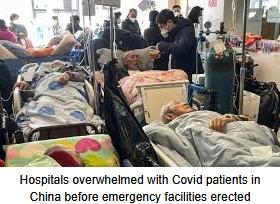
Dr. Sinha and colleagues question whether the U.S. is in a more favorable position to respond to an epidemic than it was prior to the introduction of COVID. The U.S. was unprepared in 2020 despite recommendations by the Institute of Medicine and the National Academies of Sciences, Engineering and Medicine over 25 years ago. The federal and state agencies responsible for public health did not responded appropriately and efficiently as evidenced by events during early 2020. The early months of the COVID outbreak were characterized by institutional denial, a search for ‘quick fixes’, a lack of personal protective equipment and imperfect coordination among federal agencies. These inadequacies should have been corrected in intervening years but it is evident that little has changed. In some respects, the legal environment is less conducive to a coordinated and scientifically appropriate response.
 During the early weeks of acceptance that the H5N1 B3.13 mammalian-adapted strain was transmissible to humans, operators of dairy herds were disinclined to cooperate with either state or federal agencies to initiate appropriate surveillance. In the state of Texas, the Commissioner of Agriculture was on record as characterizing the efforts by the Centers for Disease Control to determine the extent of exposure of workers as “overreach”. During the early weeks of acceptance that the H5N1 B3.13 mammalian-adapted strain was transmissible to humans, operators of dairy herds were disinclined to cooperate with either state or federal agencies to initiate appropriate surveillance. In the state of Texas, the Commissioner of Agriculture was on record as characterizing the efforts by the Centers for Disease Control to determine the extent of exposure of workers as “overreach”.
Dr. Sinha correctly characterizes the response to H5N1 as uncoordinated with ill-defined areas of jurisdiction among the Department of Health and Human Services subsidiary agencies comprising the Centers for Disease Control and Prevention, the Food and Drug Administration, and the National Institutes of Health and the Departments of Defense, Agriculture and Homeland Security. In addition individual state governors created self-serving policies with their departments of health and of agriculture involved at the case and plant levels. Initially the White House designated the Secretary of the Department of Health and Human Services as the coordinator but this rapidly degenerated into a free-for-all with no indication of “who was in charge”.
With the emergence of bovine influenza-H5N1 cooperation between state departments of agriculture and their public health counterparts expedited programs of surveillance. This involved both herds and workers and state agencies that undertook to educate owners of farms and their workers on protection. Michigan and Colorado were preeminent in actively addressing the problem with Colorado introducing a mandatory testing program involving milk samples from all herds to detect the presence of virus and to impose quarantine measures.
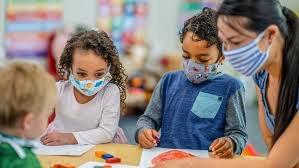
In the event, it appears that H5N1 does not represent an immediate concern for public health. Notwithstanding this fortunate circumstance, the threat of an emerging epidemic reveals obvious restraints to addressing what might occur in the future. An outbreak involving a human-adapted pathogen that is also contagious has the potential to spread rapidly and extensively. If a severe form of human influenza emerges it would probably affect children disproportionately. State and local authorities applying experience from COVID would be disinclined to close schools or to mandate masking, supported by state regulations and court decisions. The initial response of state officials in traditionally conservative regions would be to place personal freedoms above sound principles of disease prevention especially in the early stage of an epidemic when control measures would have the potential for the most favorable outcome.
A rising wave of science-skepticism and an unjustified lack of confidence in public health agencies including the Centers for Disease Control and Prevention would impair the development, coordination and implementation of containment measures following the emergence of an infection with epidemic potential.
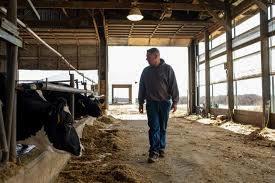
Proposed changes affecting the tenure of federal employees together with traditional pressure to conform to institutional norms is likely to inhibit open discussion of alternative modalities and would stifle the development of appropriate policy. Attempts to impose censorship on scientists and public health specialists as occurred during the COVID period will become more intense and absolute in the event of a subsequent epidemic. The recent overturn of the Chevron Doctrine eliminated deference to scientists and medical professionals and would impede their efforts to introduce emergency measures intended to reduce the incidence rate of an infection. Directives based on scientific principles would be subject to interdiction by courts and result in prolonged litigation as rulings are appealed.
Expenditure on vaccine development as evidenced by the “warp speed” production of mRNA vaccines that effectively provided protection from COVID among those receiving vaccines will probably be politically unpopular. Even if mRNA technology can be applied to developing a vaccine against a new virus, prevailing vaccine hesitancy supported by misinformation on social media would limit administration allowing an infection to spread among the susceptible proportion of the population.
It is hoped that the incoming administration, irrespective of political persuasion, will recognize the inevitability of a future epidemic and will respond to the obvious deficiencies that occurred during the early COVID period. Those responsible for our Government should take heed from the emergence of H5N1 among dairy herds albeit with only a few workers affected who were involved in depletion of infected egg-production flocks. Events since March suggest acceptance of the One Health principle with regard to the emergence of a zoonotic infection. Bovine influenza H5N1 was a warning—the next pathogen to emerge or a mutation of an existing benign human or animal virus currently circulating may not be as forgiving going forward.
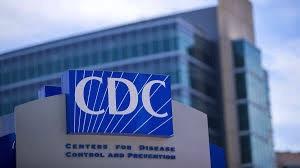
There will be no simple and inexpensive solution to contain a future epidemic. The economic implications of an outbreak in a susceptible population will inevitably lead to disruption in food and industrial production, will curtail everyday activities and represent the potential for extensive mortality. The consequences of a contagious infection of zoonotic origin can be ameliorated by preemptive planning and the application of proven epidemiologic practices. This will involve embracing science and selecting hard choices that may, in the short term, be politically unpopular. The U.S. and the World could face a 1918 “Spanish flu” situation at some time in the future. We are woefully unprepared with respect to political and public acceptance of control measures. We are faced with a hostile legal environment to implement meaningful protection coupled with a fractured system of jurisdiction over public health. We need to use whatever time is available before the next outbreak to develop action plans that are cohesive and epidemiologically valid.
*Sinha, M.S. et al. (2024) Déjà vu all over Again-Refusing to learn the lessons. New England J. Medicine 391:481-483. DOI 10.1056/NEJMp2406427.

|
Enhancing Margins Through More Aggressive Marketing Strategies
|
08/27/2024 |
|
 The Aldi chain of supermarkets in the U.K. has announced that all eggs sold in its stores will be from flocks housed as cage-free. Although fourth in size among U.K. supermarket chains, Aldi is a leader in free-range eggs produced on domestic farms. The Aldi chain of supermarkets in the U.K. has announced that all eggs sold in its stores will be from flocks housed as cage-free. Although fourth in size among U.K. supermarket chains, Aldi is a leader in free-range eggs produced on domestic farms.
In recent years, major U.K. chains have ignored requests for higher transfer prices especially after the Brexit misadventure that resulted in a sharp escalation in the cost of feed, energy and other inputs. Failure to rise above breakeven resulted in many producers ceasing production as they exhausted working capital. This in turn resulted in shortages and rationing by specific chains that were unable to recognize the consequences of their myopia.

Through financial turbulence, Aldi maintained a practical business relationship with suppliers, invested up to $60 million the form of subsidies and entered into long-term contracts that sustained their supply farms through financial challenges.
Julie Ashfield, Managing Director of Supply Chains at Aldi U.K. stated, “Our British suppliers are at the heart of our business and without them Aldi would not be where it is today, and we are proud to work with so many U.K. egg farmers.” She added, “By working with our suppliers we have been able to hit our cage-free target more than a year early.”
It is hoped that Aldi in the U.S. will follow the lead of its sister company in the U.K. and their policy will be emulated by U.S. chains. It is noted that conversion from conventional cage housing to alternatives including barns, aviaries and to a lesser extent, free-range, have been financed by individual producers including family farms and companies despite prices being limited by straightforward supply and demand constraints. For decades the supermarket chains have benefited from investments made by egg producers who are ill-served by the prevailing benchmark pricing system that favors chain buyers in negotiating prices. Failure to allow producers to recover their fixed costs including fair depreciation and interest limits ex-plant margins and inhibits the installation of improvements and upgrades. The policy of minimizing prices is especially to the disadvantage of smaller operators who do not have the benefits of scale of production.
The ongoing avian influenza epornitic since 2022 with seasonal pauses in incidence rate has resulted in an average reduction in the size of the producing flock by approximately 20 million hens. This has contributed to an escalation in price attributed to disequilibrium between supply and demand and has in some measure reduced the bargaining power of chains. With restoration of flock size given the maturation of 20 million pullets per month, prices will inevitably fall especially if additional losses do not occur in fall and early winter as in previous years. As transfer prices decline, it is hoped that chains will reduce shelf prices proportionately to sustain demand. Maintaining high retail prices with declining wholesale values is detrimental to both consumers and the production sector and represents a form of price gouging.
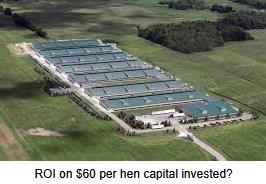
There is concern that in public statements, Doug McMillion president and CEO of Walmart Inc. has indicated that producers and food manufacturers can expect price pressure from Walmart, the nation’s largest food retailer. Although the initiative for lower prices by Walmart is directed in the first instance towards processed and dried food it is inevitable that produce and eggs will follow. A spokesman for TD Cowen noted, “We expect pressure from Walmart for deeper price rollbacks to continue especially in categories where Walmart can flex its private label merchandising.” John David Rainey, CFO for Walmart stated, “We are advocating for our customers, we want to drive our everyday low prices and we are not intending to achieve any of our margin performance by passing this along to our customers and Sam’s Club members in the form of higher prices.”
The implication is obvious, Walmart and by association all major chains want to keep prices low to maintain traffic but are obviously averse to smaller margins. It does not take a CPA to determine who will bear the brunt of the initiative. The situation will be exacerbated if the merger between Kroger and Albertsons were to become a reality since promises made to reduce prices in the short term would be coupled with intensified buying power affecting both national and regional producers.
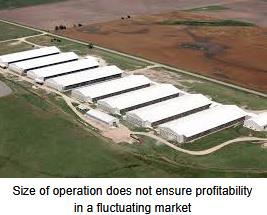
Despite greater scrutiny of margins and profits generated by retailers, through their shelf prices, pressure on producers will continue for the foreseeable future. Appropriate approaches for the industry would be:-
- strive for greater efficiency,
- establish Capper-Volstead marketing cooperatives,
- promote a CME market for generic Midwest Large in place of the current benchmark price discovery system that functions to the disadvantage of producers,
- diversify product range with more specialty eggs,
- develop new egg-based products for food service and QSR markets
- demonstrate restraint in expansion without participating in any form of collusion.
Enhancing returns to producers will require adoption of novel strategies to counter the power of the major chains.
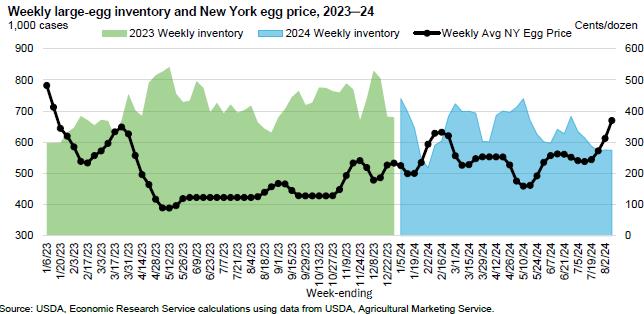
18 weeks below breakeven in a down market |

|
North America Gains Reprieve from the Canadian Rail Strike
|
08/27/2024 |
|

The rail strike in Canada, albeit of short duration has ended. The Federal Government invoked Section 107 of the Canadian Labor Code requiring binding arbitration between the Teamsters Canada Rail Conference and the two major rail operators, Canadian National Railway (CNR) and Canadian Pacific Kansas City (CP-KC).
As noted in postings in the August 23rd edition of EGG-NEWS, the Union demanded increased wages and benefits and above all, rationalization of work schedules especially affecting long- distance freight to enhance safety and morale.

The Liberal Party government that is generally Union-friendly was forced to act by the impact of a rail strike on all aspects of the Canadian economy. Moody’s the multinational ratings agency estimated that the strike could impose a cost of $250 million per day.
Associations representing segments of Canadian agriculture including the Meat Council, Pork Council and others petitioned the Government for intervention since transport involving perishable commodities requires stable and reliable rail operation to support supply chains and avert waste. The associations cited the 2023 strike in the Port of Vancouver that extended over 35 days and disrupted trade to the value of $8 billion.
It is not only Canada that would have been affected by a major rail strike. The two operators intersect with U.S. operators, BNSF Railway, Union Pacific, Norfolk Southern and CSX. Canadian National Rail links extend to New Orleans, LA. and CP-KC extends to Gulfport, MS. and on to Tampico on the east and Lazaro Cardenas on the west coast of Mexico. Approximately one-third of all traffic moved by the two major rail operators in Canada crosses the border with the United States.
Commodities affected by even a short-term rail strike in Canada would include ethanol, potash, grains, oilseeds, oils and above all fresh meat. Apart from agriculture, industry would be impacted since Mexico manufactures automobile parts that are required to assemble vehicles in the U.S. and Canada. In turn, Canada exports wheat, meat and aluminum southward to the U.S. and Mexico.
In 2023, the U.S. exported $30 billion in agricultural products to Canada, balanced by imports of valued at $40 billion. Combined trade between Canada and Mexico amounted to $40 billion.
The economies of Canada, the U.S. and Mexico are interconnected requiring reliable and efficient transport. Disruption in any of the three conjoined USMCA partners will have serious impacts on the economies of the other two.
The consequences of rail strike in Canada should generate a sense of urgency to conclude negotiations for a labor contract between longshoremen along East coast and Gulf ports and operators of these critical facilities. Time is running out with a September deadline now imposed by the International Longshoremen’s Union.
As with Canada, strikes affecting major industries and especially the transport sector have political implications. This is even more critical in a U.S. election year and also in Canada where the governing party has a tenuous hold on power.

|
Dairy, Turkey and Egg Industries Request Preventive H5N1 Vaccination
|
08/20/2024 |
|
 In an August 16th letter addressed to the USDA Secretary of Agriculture, United Egg Producers, the National Turkey Federation and the National Milk Producers Federation requested USDA to adopt “a sense of urgency and preparedness” to support vaccination of dairy cows, turkeys and egg laying hens. In the joint request, the industry associations outlined the economic losses associated with H5N1 influenza experienced by producers, the public sector and ultimately by consumers. The letter did not, however, add sufficient stress on the probability, even extremely remote, of the emergence of a zoonotic and possibly even contagious strain of H5N1 that could result in a devastating pandemic. The letter to the USDA Secretary made reference to the obstacles to adoption of vaccination represented by an inevitable but non-quantified impact on exports of broiler leg quarters and feet. In an August 16th letter addressed to the USDA Secretary of Agriculture, United Egg Producers, the National Turkey Federation and the National Milk Producers Federation requested USDA to adopt “a sense of urgency and preparedness” to support vaccination of dairy cows, turkeys and egg laying hens. In the joint request, the industry associations outlined the economic losses associated with H5N1 influenza experienced by producers, the public sector and ultimately by consumers. The letter did not, however, add sufficient stress on the probability, even extremely remote, of the emergence of a zoonotic and possibly even contagious strain of H5N1 that could result in a devastating pandemic. The letter to the USDA Secretary made reference to the obstacles to adoption of vaccination represented by an inevitable but non-quantified impact on exports of broiler leg quarters and feet.
USDA has been less than enthusiastic in promoting adoption of vaccination among importers of U.S poultry products. Vaccination with appropriate surveillance is accepted by the World Organization of Animal Health as an adjunct to biosecurity. The reluctance to embrace vaccination by the USDA is possibly due to the misplaced and by now discredited policy of attempting to eradicate HPAI in poultry flocks by stamping out each successive  outbreak. Despite depopulation of close to 90 million commercial birds, predominantly egg production flocks, over the past two years, the temporal occurrence has extended beyond the spring and fall migratory seasons for waterfowl and in addition a spatial and species expansion has occurred with confirmation of infection among free-living mammals, resident birds and dairy cows. outbreak. Despite depopulation of close to 90 million commercial birds, predominantly egg production flocks, over the past two years, the temporal occurrence has extended beyond the spring and fall migratory seasons for waterfowl and in addition a spatial and species expansion has occurred with confirmation of infection among free-living mammals, resident birds and dairy cows.
It is axiomatic that it is impractical to attempt to eradicate an endemic disease over the short term when confronted with a large reservoir of infection and with constant reintroduction of the causal virus. Vaccination should be adopted for egg production, and turkey flocks in high-risk areas under flyways transited by migratory waterfowl and in the vicinity of their nesting habitat.
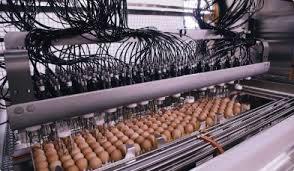
The requirements imposed by the WOAH regarding vaccination incorporate surveillance for infection among immunized flocks. With current technology including PCR, it will be possible to certify that flocks to be processed for export are free of infection within 24 hours of harvest and that product is also free of HPAI virus. Reliance on serology and the oft-repeated canard that it is difficult to distinguish between vaccinated and infected flocks should be discounted as a restraint to preventive vaccination.
Perhaps the missionary work undertaken by USDA-APHIS within the World Organization for Animal Health has lacked intensity or has been misdirected. In the first instance, turkey and egg producers and their new-found supporters in the dairy industry should concentrate their efforts on the NCC, representing broiler producers. Simply stating that introduction of vaccination would seriously impair exports is a simplistic overreaction. Close to 45 percent of nations receiving either leg quarters or feet either have endemic or seasonal outbreaks of avian influenza or have used or are using vaccination as a control measure. In the case of Canada and some other nations, bilateral agreements determine the extent and mechanisms for export usually with zoning as the determining factor.
Since federal agencies are congenitally opposed to change, especially when this requires admitting to failure of previous policies, we can expect the adoption of vaccination to be deliberately delayed by the USDA. As an institution the USDA will fall back on the expedient of conducting risk assessments or the need to develop “new” vaccines or alternatively conducting time-consuming laboratory and field trials confirming that commercially available products as widely used internationally are effective.
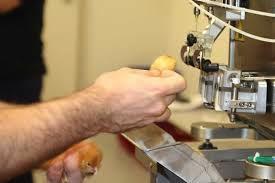
The need for action as requested in the August 16th letter is regrettably about two years late. It is only the emergence of bovine influenza H5N1 caused by the B3.13 mammalian-adapted variant that has stimulated a reappraisal of vaccination by the two most affected poultry industry segments. There is no need to reinvent the wheel with new USDA-ARS vaccines or to “evaluate” the effectiveness of currently available commercial products from reputable multinational manufacturers. We have data from many nations including Mexico and France
This commentator, committed to the long-term wellbeing of the poultry industry has developed a perspective based on both professional training and then commercial experience since 1968, encompassing live-bird management, academia and the allied industry. Exposure to production on four continents has facilitated perceptions and understanding, integrating veterinary epidemiology with economics and practical considerations. Above all, application of the One Health principle raises caution over a possible mutation whereby H5N1 may become a human health issue, a concern expressed by the World Health Organization and numerous virologists in the U.S., Asia and Europe.
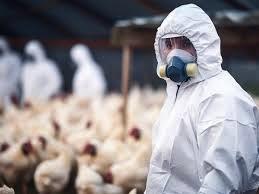
Let us therefore reject a parochial approach promoted by a single segment of the industry in applying pressure to deny vaccination for the egg-production and turkey operations in high-risk areas. A program can be developed to optimize benefits to producers, exporters of U.S. poultry products, veterinary regulators and consumers. Above all by creating an immune poultry population through vaccination, the risk of an emergent zoonotic strain of HPAI with epidemic potential will be markedly reduced.
The August 16th request for the USDA to consider vaccination is an important step, since this places the APHIS on notice that attempts at eradication are futile. Vaccination offers an alternative and contributory modality to biosecurity to prevent infection in poultry flocks and now in the dairy segment of the livestock industry. Newcastle disease, in every way was as destructive as avian influenza during the 1960s and 1970s. This disease was successfully suppressed but not eradicated, by vaccination. Avian influenza is effectively “the Newcastle disease of the 2020s” and should be addressed by creating immune poultry populations through application of currently available effective vaccines.

|
The “Farm Fresh” Lawsuit Emphasizes the Need for Standard Definitions of Housing
|
08/12/2024 |
|
 A typical “shakedown” lawsuit alleging deception was recently dismissed by the U.S. District Court for the Northern District of Illinois. At issue was a meritless claim by a consumer who purchased eggs from Mariano’s Supermarket, a banner operated by the Kroger Companies. The Plaintiff complained that he was “duped into paying more for farm-fresh eggs because he thought they were higher in quality”. With incisive logic Judge Charles Kocoras dismissed the case accepting that the term “farm fresh” related to timing and location. The purchased eggs were derived from a ‘farm’ albeit from caged hens and were ‘fresh’ in that they were sold within the statutory use period. In his ruling, Judge Kocoras noted that, “No reasonable consumer would plausibly spin free-roaming hens on a grassy open field from the term, “farm fresh”. A typical “shakedown” lawsuit alleging deception was recently dismissed by the U.S. District Court for the Northern District of Illinois. At issue was a meritless claim by a consumer who purchased eggs from Mariano’s Supermarket, a banner operated by the Kroger Companies. The Plaintiff complained that he was “duped into paying more for farm-fresh eggs because he thought they were higher in quality”. With incisive logic Judge Charles Kocoras dismissed the case accepting that the term “farm fresh” related to timing and location. The purchased eggs were derived from a ‘farm’ albeit from caged hens and were ‘fresh’ in that they were sold within the statutory use period. In his ruling, Judge Kocoras noted that, “No reasonable consumer would plausibly spin free-roaming hens on a grassy open field from the term, “farm fresh”.
This case, among many similar examples of litigation intended to extort settlements from producers and retailers and lacking in merit, highlights problems relating to nomenclature used on labels and at point-of-sale.

The USDA-AMS has been negligent in failing to define housing systems for egg and broiler production, resulting in confusion among consumers and to a certain extent, their exploitation by retailers and some producers. Perdue Farms has petitioned the USDA for a clear and precise definition for “free-range” grown broilers. Enigmatically this company claims that its broilers are grown “cage-free” in the knowledge that all broilers in the U.S. are raised in barns with or without limited outside access.
 The UEP has developed welfare housing standards for caged, aviary and floor-housed flocks. To add to the confusion of nomenclature relating to eggs various animal welfare organizations including the American Humane Association have issued standards with certification and the right to apply a seal on cartons against payment of a royalty. USDA Certified Organic is the only statutory designation with statutory standards relating to production and housing including the use of non-GMO feed ingredients. With respect to housing, new organic standards were recently adopted requiring outside access. The UEP has developed welfare housing standards for caged, aviary and floor-housed flocks. To add to the confusion of nomenclature relating to eggs various animal welfare organizations including the American Humane Association have issued standards with certification and the right to apply a seal on cartons against payment of a royalty. USDA Certified Organic is the only statutory designation with statutory standards relating to production and housing including the use of non-GMO feed ingredients. With respect to housing, new organic standards were recently adopted requiring outside access.
The industry should develop a set of unambiguous terms describing housing systems that should be incorporated into an AMS rule. Neither the industry nor consumers can rely on fragmentation through a variety of organizations providing a range of certifications devoid of a legal basis.

The UEP justifiably developed welfare standards that are regularly updated according to scientific findings. The UEP should now take the lead as the voice of the industry in developing the required definitions. The UEP has standing to petition AMS and has the lobbying ability to motivate adoption of acceptable nomenclature.
It is interesting that the American Egg Board has been silent on the issue of definitions for production systems despite the fact that image of the industry and its products is an important component of promotion. Given the resources of the UEP, a suitable list of descriptors could be developed and adopted in an AMS rule that would form the basis of promotion, labeling and point-of-sale claims.

|
Anticipation of Litigation from SCOTUS Chevron Ruling Overstated
|
08/06/2024 |
|
 Eugene Scalia former U.S. Secretary of Labor in the Trump Administration and previously the Chief Legal Officer of the Department of Labor considers that concerns over impending litigation are overstated following the invalidation of the Chevron Deference by SCOTUS in Loper Bright Enterprises v Raimondo. The Chevron Doctrine established over 40 years ago allowed administrative agencies including the EPA to interpret federal laws with the judiciary deferring to the opinions of administrators in Agencies possessing specific technical, economic or procedural expertise. Eugene Scalia former U.S. Secretary of Labor in the Trump Administration and previously the Chief Legal Officer of the Department of Labor considers that concerns over impending litigation are overstated following the invalidation of the Chevron Deference by SCOTUS in Loper Bright Enterprises v Raimondo. The Chevron Doctrine established over 40 years ago allowed administrative agencies including the EPA to interpret federal laws with the judiciary deferring to the opinions of administrators in Agencies possessing specific technical, economic or procedural expertise.
Scalia considers that federal agencies will henceforth be more conservative in their action, recognizing that regulations and rules are now subject to challenge and that enabling legislation will be scrutinized to avoid agency overreach. Scalia believes that federal regulators will “be more careful than they’ve been in recent years to make sure they are acting within the  authority that Congress gave them and to make sure that they are given thoughtful consideration to what the public tells them their concerns are.” authority that Congress gave them and to make sure that they are given thoughtful consideration to what the public tells them their concerns are.”
Basically the demise of the Chevron Deference will have a constraining effect on regulatory agencies, consistent with conservative opposition to the “nanny state.” Implications for the Loper Bright Decision include proposed and issued rules by the AMS under the Stockyards and Packers Act, the FSIS with respect to Salmonella contamination of poultry products and the EPA on the proposed WOTUS Rule.

|
Congressional Action on an Independent Food Safety and Nutrition Agency
|
07/29/2024 |
|
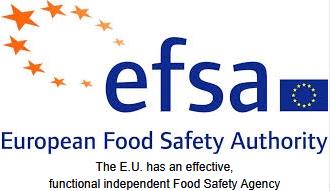
The proposed Federal Food Administration Act would establish an independent federal food administration under the Department of Health and Human Services. The bill will be sponsored by Rep. Rosa de Lauro (D-CT) and Senator Richard Durbin (D-IL) to be introduced into the 119th Congress
The need for a single dedicated agency has long been debated but is supported by food safety experts. The U.S. Food and Drug Administration (FDA) is currently responsible for all food safety and nutrition programs other than for red meat and poultry falling under the Food Safety and Inspection Service of the USDA. Rep. De Lauro points to the lack of emphasis on food safety by the FDA. A frequent observation relating to the Agency is that the “F” in title is silent.
Following a series of costly, disruptive and avoidable food safety events during the past two years, the FDA has reluctantly and belatedly appointed a Deputy Commissioner responsible for aspects of food safety. Absent a profound change in agency culture, shifting of responsibilities and redrawing the organizational chart is analogous to moving deck chairs on the Titanic.
 Rep de Lauro stated, “I have long said that food safety is a second-class citizen at the Food and Drug Administration. I believe we need a single food safety agency solely focused on keeping the foods that we eat safe. Creating a single food agency could prevent avoidable product contamination and subsequent recalls that disrupt the supply chain.” Rep de Lauro stated, “I have long said that food safety is a second-class citizen at the Food and Drug Administration. I believe we need a single food safety agency solely focused on keeping the foods that we eat safe. Creating a single food agency could prevent avoidable product contamination and subsequent recalls that disrupt the supply chain.”
Senator Durbin stated, “In recent years FDA have been plagued by one incident after another from a failure to protect babies from bacterial infection in their infant formula to a failure to protect children from lead-tainted applesauce pouches.” He added, “The sad reality is that FDA has not used its authority to protect Americans from preventable illness and death.”
The proposed establishment of a Federal Food Administration was welcomed by a number of advocates for food safety including Brian Ronholm at Consumer Reports, previously an administrator at the FDA.
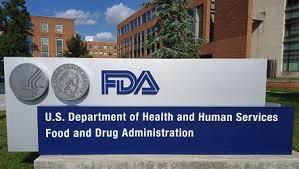
At present, sixteen agencies are involved in food safety according to the General Accounting Office leading to lack of coordination, turf battles and divided responsibility.
The Federal Food Administration Act would remove all aspects of feed regulation and nutrition from the Food and Drug Administration including the Center for Food Safety and Applied Nutrition, Center for Veterinary Medicine, Office of Food Policy and Response and the Office of Regulatory Affairs.

Although the proposed Federal Food Administration Act would be an advance with respect to consolidating aspects of food safety currently divided among Federal agencies it avoids the obvious question of USDA-FSIS still retaining jurisdiction over red meat and poultry. To achieve the ultimate objective of complete consolidation, it will be politically expedient to establish the Federal Food Administration as a functioning entity before attempting to transfer responsibility for red meat and poultry from the USDA. Currently the FSIS is strongly supported by producers, packers and processors who have created a harmonious working relationship not necessarily detrimental to consumers as is the case with all other foods administered by the FDA.
Opponents of a single Federal Food Administration have maintained that the proposed change would be too disruptive. Following the 9-11attack, the Department of Homeland Security was established with extensive consolidation of responsibilities previously assumed by many agencies. The implementation of a Federal Food Administration will be difficult given that vested interests and lobbying will influence the legislative process as it progresses through committees and both the House and Senate.
The topic of legislation brings to mind the apt Mark Twain adage that “Nobody should watch sausages and laws being made”. The proposed Federal Food Administration Act epitomizes both sausages, a potential vehicle of foodborne infection and creating legislation that will inevitably have unintended consequences. Establishing an independent agency to promote food safety and nutrition should however be a bipartisan issue.

|
Poultry Associations Walking a Tightrope over HPAI and Vaccination
|
07/22/2024 |
|
By any measure, the attempts by USDA-APHIS to eradicate Highly Pathogenic Avian Influenza have been an abject failure. In any event, it is an epidemiologic reality that it is impossible to eradicate an endemic disease with wild avian and mammalian reservoirs. Rapid diagnosis, depopulation, disposal and decontamination are effective and appropriate approaches to an introduction of an isolated exotic disease. Since 2020 and possibly prior to this time, the current approach relying on variable levels of biosecurity cannot protect flocks. With the emergence of bovine influenza-H5N1, the situation has become more complicated. It is now evident that close to 170 diagnosed herds affected by H5N1 in 13 states represents the potential for transmission to large egg-production complexes.
 Last week, the USAPEEC, the National Chicken Council, the National Turkey Federation, United Egg Producers and USPOULTRY submitted a joint letter to the Secretary of Agriculture expressing concern over HPAI and seeking “novel methods to prevent, detect and respond to this virus.” At this time, a logical and appropriate but belated initiative. The letter included the phrase “novel methods to prevent” HPAI. Given that the approach by USDA is entirely reactive something “novel” beyond biosecurtity is required. But then we come to the “V’ word that shall not be uttered! The letter expressed the need to “preserve all U.S. export markets for poultry products” evidently a manifestation of the inherent conflict among the associations concerning vaccination. The communication did however refer to “conducting important research, particularly as it pertains to vaccines”. As far as assessing combinations of biosecurity with vaccination, “important research” especially in the laboratory is a delaying tactic since there is adequate field evidence of efficacy. What is needed is a USDA supervised field evaluation following the successful implementation for the foie gras industry in France. A suitable U.S. candidate would be Weld County CO. USDA has recorded seven cases among four complexes in 30 months with one farm affected three times and a second twice, suggesting epidemiologic factors contributing to regional endemnicity.. Last week, the USAPEEC, the National Chicken Council, the National Turkey Federation, United Egg Producers and USPOULTRY submitted a joint letter to the Secretary of Agriculture expressing concern over HPAI and seeking “novel methods to prevent, detect and respond to this virus.” At this time, a logical and appropriate but belated initiative. The letter included the phrase “novel methods to prevent” HPAI. Given that the approach by USDA is entirely reactive something “novel” beyond biosecurtity is required. But then we come to the “V’ word that shall not be uttered! The letter expressed the need to “preserve all U.S. export markets for poultry products” evidently a manifestation of the inherent conflict among the associations concerning vaccination. The communication did however refer to “conducting important research, particularly as it pertains to vaccines”. As far as assessing combinations of biosecurity with vaccination, “important research” especially in the laboratory is a delaying tactic since there is adequate field evidence of efficacy. What is needed is a USDA supervised field evaluation following the successful implementation for the foie gras industry in France. A suitable U.S. candidate would be Weld County CO. USDA has recorded seven cases among four complexes in 30 months with one farm affected three times and a second twice, suggesting epidemiologic factors contributing to regional endemnicity..
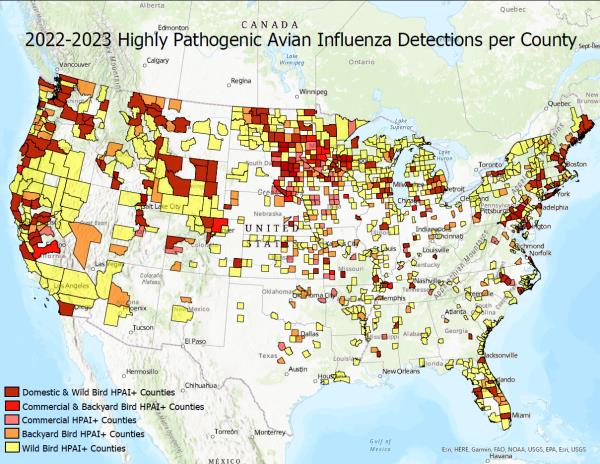 |
The problem is that the U.S. producers and specifically the broiler segment are justifiably concerned over potential loss of export markets as a result of introducing a controlled vaccination program. This restraint should be critically reviewed. The bulk of our low-price leg quarters are destined to nations that either have endemic HPAI or are probably willing to accept an APHIS certification program based on PCR assay. This innovation would certify that flocks of origin destined for export are free of infection prior to slaughter and shipment. Nations that are unwilling to accept appropriate documentation and that persist in imposing unrealistic, anachronous and unjustified embargos against the U.S. to protect their domestic industries are probably not prospects for export.
While the export impasse prevails, egg production and turkey producers are experiencing losses beyond the previously limited fall and spring migration periods. This is especially the case in regions with a high concentration of production involving these two segments of U.S. production.

It is not necessary to conduct ‘research’, there is adequate published information available as to the effectiveness of commercially available vaccines in reducing the incidence of outbreaks and facilitating control of the disease.
The zoonotic implications of H5N1 is evidenced by workers involved in depopulation of an infected egg complex in Colorado with a prevalence rate yet to be determinedwhen investigations have been completed. Affected individuals displayed not only conjunctivitis but also respiratory symptoms and malaise. This is consistent with the acquisition by the avian H5N1 virus of a mammalian adaptation marker E627K indicating that the original avian virus isolated from dairy cows and human contacts is now more infectious and pathogenic for humans. Introduction of H5N1 virus onto egg production complexes with upwards of two million susceptible hens creates the potential for mutations, some of which may result in emergence of a zoonotic strain that may even become contagious.

The letter addressed to APHIS presents a ‘chicken or an egg’ dilemma. The emphasis was placed on USDA to engage with trading partners to obtain commitments to accept U.S. exports in the event of introducing a controlled vaccination program. If we wait for assurances from a number of trading partners, as a pre-requirement for vaccination, we will continue to depopulate egg production and turkey farms ad infitinum.
Vaccination is now accepted by the World Association of Animal Health as a component of a broader strategy including biosecurity to suppress avian influenza. The question of vaccination may well pass beyond the purview of USDA if a zoonotic strain emerges or if a recombinant event results in the emergence of a pandemic strain of influenza incorporating avian genes.
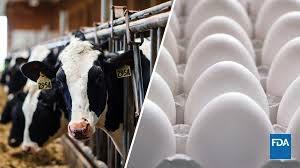
During the 1970s, the world’s poultry industries were faced with velogenic viscerotropic Newcastle disease. The infection was effectively controlled by vaccination. Avian influenza is ‘the Newcastle disease of the 2020s’ and should be approached with a similar mindset that existed half a century ago.
The letter from the poultry organizations is a first step and clearly indicates a willingness to consider vaccination to preserve flocks and herds and to avert a possible U.S. epidemic or a worldwide pandemic of H5N1v influenza among susceptible human populations.

|
Delay in Resolution of the Farm Bill
|
07/16/2024 |
|
T he Farm Bill that should have been enacted in 2023 is no further in resolution despite the extension which expires at the end of September 2024. The House Committee on Agriculture passed H.R.8467, the Farm, Food and National Security Act of 2024 on a bipartisan 33-21 vote. This Bill has yet to be considered by the House as the Committee Chair, Glenn Thompson (R-PA) has insufficient votes for passage. A further complication is that the Congressional Budget Office has yet to provide a projection of cost that is necessary for members to vote on this necessary legislation. The House Freedom Caucus regards the House Bill as too high especially with regard to SNAP benefits. he Farm Bill that should have been enacted in 2023 is no further in resolution despite the extension which expires at the end of September 2024. The House Committee on Agriculture passed H.R.8467, the Farm, Food and National Security Act of 2024 on a bipartisan 33-21 vote. This Bill has yet to be considered by the House as the Committee Chair, Glenn Thompson (R-PA) has insufficient votes for passage. A further complication is that the Congressional Budget Office has yet to provide a projection of cost that is necessary for members to vote on this necessary legislation. The House Freedom Caucus regards the House Bill as too high especially with regard to SNAP benefits.
The Senate Agriculture Nutrition and Forestry Committee has yet to mark up their bill. Chairperson, Debbie Stabenow (D-MI), is steadfast in retaining SNAP benefits, threatening to pass the responsibility for the Farm Bill to the 119th Congress.
At issue in both polarized committees is the allocation of funds to supplemental nutrition and conservation on the one hand as opposed to crop support payments. A further complication is the multitude of bipartisan agricultural related special interest bills to be included in the 2024 version. Most are contentious including the so-called EATS Act relating to restrictions imposed by the California Proposition #12, ruled by SCOTUS as constitutional. The ranking member of the Senate Committee, John Boozman (R-AR), has proposed a version that closely follows the House Bill that has no chance of passage.

At the present time, Congress has six working weeks to resolve outstanding issues to allow both chambers to pass their respective versions and then engage in bipartisan reconciliation.
The need for an equitable Farm Bill is indicated by projections of lower prices for agricultural commodities based on availability of corn and soybeans and lower demand and world trade. Normally the Farm Bill is the least contentious of major legislation but a highly polarized Congress, especially in an election year, is impeding the normal bipartisan approach to resolution.
Ranking member of the House Agricultural Committee, David Scott (D-GA), characterized the situation as “This delay hurts the American people especially in our rural communities where our farms are. It injects uncertainty into our Nation’s economies both rural and urban. The willingness to delay the Bill to play election-year politics is selfish and disrespectful to our farmers.”
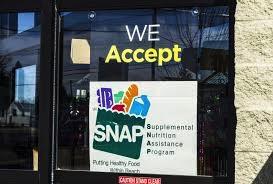
Failure to enact a 2024 Farm, Food and National Security Act will have far reaching consequences for both farmers and exporters. Costs of production are rising, interest rates remain high, commodity prices are falling and margins for commodities are shrinking. The agricultural community deserves better than bipartisan bickering and intransigence over social issues and entrenched political principles.

|
Inaction Over Bovine Influenza-H5N1 Compromising Future Control
|
07/08/2024 |
|
 In a June 25th webinar organized by the National Academies of Science, Engineering and Medicine, Dr. Rosemary Sifford, Chief Veterinary Officer for the USDA expressed an optimistic Departmental message stating, “We believe if we can stop the movement of infected cattle, improve biosecurity and help producers we can eliminate H5N1 virus in dairy herds. The operative word in this simplistic statement is ”IF”. We are reminded of the old Texas adage, If a frog had wings it would not bump it’s butt on the ground. In a June 25th webinar organized by the National Academies of Science, Engineering and Medicine, Dr. Rosemary Sifford, Chief Veterinary Officer for the USDA expressed an optimistic Departmental message stating, “We believe if we can stop the movement of infected cattle, improve biosecurity and help producers we can eliminate H5N1 virus in dairy herds. The operative word in this simplistic statement is ”IF”. We are reminded of the old Texas adage, If a frog had wings it would not bump it’s butt on the ground.
In contrast veterinarians and epidemiologists with both field and laboratory experience are critical of the lackluster and uncoordinated response by Federal agencies It is now three months since the infection was diagnosed in a herd in Texas and presumably six months after H5N1 virus transitioned from avian species to dairy cows. Dr. Michelle Kromm an experienced avian veterinarian believes that if not currently endemic, the infection will become a permanent reality in the dairy industry.
A major obstacle to an understanding of the distribution of the virus and the method of spread relates to a combination of indifference and denial within the dairy industry based on the reality that the virus can be inactivated by pasteurization. Overt obstruction by some state officials and resistance to cooperation with more responsive state departments of agriculture and public health agencies has impeded progress in understanding the epidemiology of bovine influenza-H5N1.
 Currently indirect methods are applied to determine the presence of infection in areas. This includes sampling of milk at the supermarket level as conducted by Dr. David O’Connor at the University of Wisconsin, Madison, or wastewater assays performed by Wastewater SCAN a project devised and implemented by Dr. Alexandria Boehm of Standford University and Dr. Marlene Wolfe of Emory University. Wastewater sampled from Amarillo, TX. demonstrated the presence of H5N1 virus approximately three weeks before the first clinical case emerged in a dairy herd in the area. Currently indirect methods are applied to determine the presence of infection in areas. This includes sampling of milk at the supermarket level as conducted by Dr. David O’Connor at the University of Wisconsin, Madison, or wastewater assays performed by Wastewater SCAN a project devised and implemented by Dr. Alexandria Boehm of Standford University and Dr. Marlene Wolfe of Emory University. Wastewater sampled from Amarillo, TX. demonstrated the presence of H5N1 virus approximately three weeks before the first clinical case emerged in a dairy herd in the area.
In contrast to the relative inactivity of U.S. agencies, the German Federal Friedrich Loeffler Institute embarked on an intensive program for evaluation of the U.S. isolate and viruses derived from wild birds. Their program headed by Dr. Martin Beer has demonstrated the propagation of H5N1 virus in mammary tissue and the ability to infect cows by introduction of virus into the teat canal. The Institute can now propagate H5N1 virus on bovine respiratory cells as an in vitro research modality.
 With approximately 140 confirmed H5N1-infected herds in 12 states, Dr. Beer believes that the virus could be eradicated but this would involve intense surveillance and quarantine of affected herds with limitation on movement of cattle. This approach would mirror the previous successful suppression and then longer-term eradication of bovine tuberculosis and brucellosis in commercial herds. With approximately 140 confirmed H5N1-infected herds in 12 states, Dr. Beer believes that the virus could be eradicated but this would involve intense surveillance and quarantine of affected herds with limitation on movement of cattle. This approach would mirror the previous successful suppression and then longer-term eradication of bovine tuberculosis and brucellosis in commercial herds.
Allowing interstate movement of cattle from herds demonstrating negative milk assays is probably inadequate. Relying on “best practices” and the use of PPE and biosecurity may be self-comforting in USDA offices and conference rooms but is unrealistic in relation to the practical situation in dairy herds that may hold in excess of 5,000 animals with dozens of workers, many with limited literacy or English comprehension.
 Vaccination is not considered a viable control measure given the unknowns concerning protection against systemic and mammary gland infection. Introduction of a vaccination program would have implications for international trade of milk and dairy products notwithstanding the elimination of virus by pasteurization. Vaccination is not considered a viable control measure given the unknowns concerning protection against systemic and mammary gland infection. Introduction of a vaccination program would have implications for international trade of milk and dairy products notwithstanding the elimination of virus by pasteurization.
There is a deep bench of avian practitioners and veterinary epidemiologists who can advise the dairy industry as to short-term preventive measures. This repository of knowledge is negated by an evident lack of cooperation from herd owners and state regulators with the exception of Michigan and now Colorado.
The 600-pound gorilla in the room is the risk of subsequent mutations occurring in H5N1 influenza virus now adapted to mammals that may result in the emergence of a zoonotic strain capable of not only infecting human contacts but facilitating person-to-person transmission.

|
USDA to Compensate Dairy Farmers Over Bovine Influenza-H5N1 Losses
|
07/01/2024 |
|
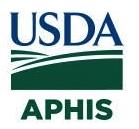
On June 27th the U.S. Department of Agriculture announced that compensation would be extended to eligible dairy farmers with herds infected by bovine influenza-H5N1. Funds will be available from the Emergency Assistance for Livestock, Honeybees and Farm-Raised Fish Program (ELAPE). This concession was made possible by an alteration in the Rule relating to ELAPE.
Eligibility will be based on a confirmed diagnosis made by the APHIS National Veterinary Services Laboratory. Additional requirements will comprise:
- Losses from milk production extending from 14 days prior to sample collection with a positive result for 120 subsequent days.
- Losses from cows maintained for commercial milk production.
- Eligible cows should have been in lactation prior to the positive diagnosis.
In commenting on the compensation program Secretary of Agriculture Tom Vilsack stated, “When something unexpected like H5N1 threatens the economic viability of producers we are committed to finding ways where we have the authority to do so, to revisit existing program polices and provide the financial support needed to help producers recover and sustain production.”
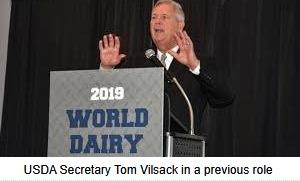
To date close to 130 herds in twelve states have been diagnosed with bovine influenza-H5N1. The introduction of the ELAPE compensation program will most certainly reveal additional cases since there is now an incentive for farmers to undertake diagnostic procedures.
The question arises as to why ELAPE funding is extended to dairy farmers impacted by bovine influenza-H5N1 although previously there was no direct support for egg producers confronted with coryza in 2023 or hog famers suffering losses from PRRS. It is also questioned whether USDA has established a precedent to compensate for exposure to a pathogen in the absence of accepted principles of biosecurity? USDA should clearly define and articulate their policy on compensation in the event of emergence of an erosive disease in a given livestock segment. The USDA also owes stakeholders including taxpayers the justification for payments under ELAPE and possible limits on duration of compensation especially if the infection becomes (or is already) endemic.
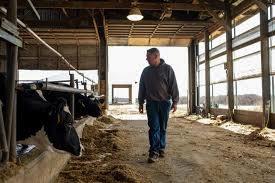
This commentator does not begrudge the compensation paid to owners of affected dairy herds but a clear statement of policy and future action on disease-related compensation should be forthcoming. This will dispel any hint of partiality by the USDA or the Secretary given his tenure as president of the U.S. Dairy Export Council during 2017 through 2021, that could be interpreted as favoring a specific sector of livestock production

|
Michigan to Partner with Dairy Farmers to Conduct Epidemiologic Investigations of Bovine Influenza
|
06/21/2024 |
|
According to a release by the Michigan Department of Agriculture and Rural Development the State will offer eligible dairy farmers up to $28,000 to participate in field epidemiologic studies on bovine influenza-H5N1. The State in collaboration with USDA-APHIS will obtain environmental samples  and swabs from workers and herds. The objective will be to determine how the virus was introduced onto farms and factors contributing to intra-herd spread. To date eleven farms have enrolled in the program and will participate in conducting regular tests on milk and herds. and swabs from workers and herds. The objective will be to determine how the virus was introduced onto farms and factors contributing to intra-herd spread. To date eleven farms have enrolled in the program and will participate in conducting regular tests on milk and herds.
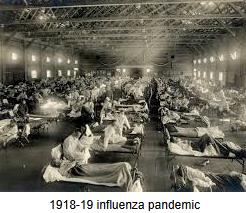
As reported previously in EGG-NEWS scientists at the German Federal Veterinary Research Institute have initiated studies using available BL-3 level isolators to determine routes of infection. A similar program is presumed to be in progress at the National Bio and Agri Defense Facility in Kansas.
The approach to diagnosis and investigation of bovine influenza-H5N1 in Michigan contrasts with the negative response advocated by the Commissioner of Agriculture of Texas who considered that obtaining samples from herds and workers by the CDC for assay was an “overreach”.
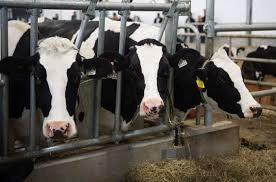
It is evident that H5N1 virus is inactivated in milk by pasteurization and in meat by cooking there is limited concern over risk to consumers. Virologists are monitoring field isolates for potential genetic changes that could predict the virus from becoming zoonotic. The greater the number of herds and flocks infected, the greater possibility of mutations occurring. It is apparent that practical structural and operational biosecurity is inadequate to absolutely prevent infection of poultry farms and probably less so for dairy herds. This is due to dissemination by free-living birds with the possibility of airborne infection.
The world population has no antibody protection against the H5 strain of avian influenza emphasizing the need for proactive planning for local epidemics or multinational pandemics. This includes stockpiling of vaccine and immunization of farm and plant workers, their families and health care providers. Mutation of the current circulating H5N1 virus to become infectious for humans will create problems for food supply and the economy. In a worst-case situation emergence of human-to-human transition would revisit past influenza pandemics and our recent experience with COVID. economy. In a worst-case situation emergence of human-to-human transition would revisit past influenza pandemics and our recent experience with COVID.

|
USDA- APHIS Response to Bovine Influenza Outbreaks
|
06/16/2024 |
|
 USDA-APHIS has responded aggressively with a detailed, preliminary epidemiologic investigation of the expanding incidence rate of bovine influenza-H5N1 outbreaks among dairy cattle in Michigan with spillover to egg production complexes. At the outset, the Agency is to be complemented by deploying highly qualified personnel from the Strategy and Policy and the Field Operations units to Michigan together with participation and support by the National Veterinary Services Laboratories. The team of seven APHIS veterinarians with collectively ten post graduate degrees or board certifications was assisted by a colleague at the Colorado State University College of Veterinary Medicine and with resources and support from the Michigan State Veterinarian. USDA-APHIS has responded aggressively with a detailed, preliminary epidemiologic investigation of the expanding incidence rate of bovine influenza-H5N1 outbreaks among dairy cattle in Michigan with spillover to egg production complexes. At the outset, the Agency is to be complemented by deploying highly qualified personnel from the Strategy and Policy and the Field Operations units to Michigan together with participation and support by the National Veterinary Services Laboratories. The team of seven APHIS veterinarians with collectively ten post graduate degrees or board certifications was assisted by a colleague at the Colorado State University College of Veterinary Medicine and with resources and support from the Michigan State Veterinarian.
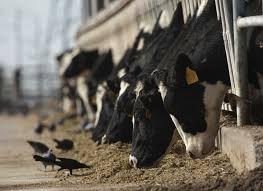
Bovine influenza-H5N1 virus characterized as genotype B3.13 was diagnosed during late March in a dairy herd in Texas. Subsequent genomic assay suggests that the infection was circulating in dairy herds since late December 2023. Clinically the disease in cows presents as an acute decline in milk production, anorexia and depression in habitus.
Cattle shipped from the index farm were received by a herd in Michigan on March 8th. Clinical signs were detected on March 20th. This was followed by an episode of high mortality in an in-line egg production complex near Saranac, MI. confirmed as HPAI on April 2nd. Whole genome sequencing of virus isolates from the Michigan dairy and poultry operations were identified as Eurasian lineage goose/Guangdong, clade 2.3.4.4b, genotype B3.13 with homology among isolates from both the dairy herd and layer complexes.
The USDA team published their preliminary findings on June 9th and circulated the manuscript in the form of a report that encapsulated epidemiologic findings including recommendations for prevention*. The report comprised observations made on 15 dairy herds and 8 poultry flocks covering the period March 29th through May 16th.
The principal epidemiologic findings included: -
- Almost a third of dairies employed workers who owned livestock or poultry at their personal residences.
- There was extensive commonality of employment among dairy herd workers. Twenty percent of those employed and 7 percent of their family members worked with dairy herds other than their principal location.
- Of considerable significance to interspecies transmission, seven percent of workers on the affected dairies also worked on poultry farms and 13 percent of workers on affected dairy farms had family members working on poultry complexes.
- With respect to the dairy operations, 62 percent used shared vehicles to transport live cattle but only 12 percent of responders recorded decontamination after delivery.
- All dairy farms had regular visits by veterinarians, consultants and contract haulers with evident direct contact among herds. Almost half of the dairy herds used a contractor to dispose of dead animals with a history of removal within 30 days of the emergence of clinical signs in 40 percent of the affected herds.
- As with all dairy operations, milk haulers visited operations at least daily.
The epidemiologic evaluation based on a questionnaire requiring participation of up to two hours by a responsible reporter and follow-up investigations and an environmental sampling form the basis of the publication.
The major conclusions of relevance to the outbreak included: -
- Introduction of the virus into Michigan herds by infected but apparently asymptomatic cattle originating in Texas.
- Evident inter-herd and inter-flock dissemination of H5N1 by movement of personnel, lactating cows and vehicles, without appropriate operational biosecurity.
- HPAI H5N1 genotype B3.13 was detected in pigeons, a starling, cats, raccoons, opossums and foxes at five of the dairy farms surveyed and on one participating poultry farm. The question arises as to whether the free-living resident passerine birds introduced the infection by viral shedding or whether they became infected by contact with a contaminated environment. Cats are highly susceptible to infection and demonstrate clinical signs and death. They may be involved as a ptential link between wild birds and cattle. Cats could also have become infected by consuming discarded raw milk from infected cows.
- Movement of personnel and their families among dairy and poultry farms was considered to be significant in the context of the extension from the initial cases in dairy herds to the catastrophic loss involving 4.8 million hens among six farms under common ownership. It is understood that workers were not required to disrobe and shower before donning company-provided outer clothing. The investigation confirmed that at least 20 employees of three poultry flocks worked weekend shifts at two dairy farms. The report also confirmed that shared housing could have contributed to dissemination of infection in the case of three poultry farms and two dairy herds.
Recommendations to prevent infection included: -
- Maintaining closed herds although 9 out of 15 farms that were evaluated did not receive animals within 30 days of their respective outbreaks.
- Surveillance of both individual animals by PCR assay of respiratory swabs and pooled samples of milk is now mandated before interstate movement of lactating cows. Clearly, this is inadequate since heifers could transmit infection and individual states should be required to impose a similar restriction on intra-state movement. Recommendations in the Secure Milk Supply Enhanced Biosecurity Plan should be followed.
- The Michigan Department of Agriculture and Rural Development issued a Determination of Extraordinary Emergency-HPAI Risk Reduction Response Order on May 1st requiring adherence to acceptable operational biosecurity. It is noted that procedures to limit transmission of infection require structural biosecurity including facilities to decontaminate personnel vehicles and equipment which, if absent, invalidates operational biosecurity.
- It is a longstanding practice within the poultry industry to require personnel to avoid visiting other poultry farms or maintaining poultry at their homes. The industry has, however, not considered swine or dairy operations as a possible source of infection. Even in the absence of a prohibition of contact with other farms, introduction onto egg production complexes may have been avoided by decontamination of personnel using available showers.
- Since the early April outbreak in the Michigan egg production complex, virtually all poultry producers have amended their personnel requirements to include a ban on working on any other livestock operation with some companies extending this restriction to family members. Since declarations are voluntary and impossible to verify, disrobing, showering and donning company-provided outer clothing and PPE is considered to be an essential preventive measure.
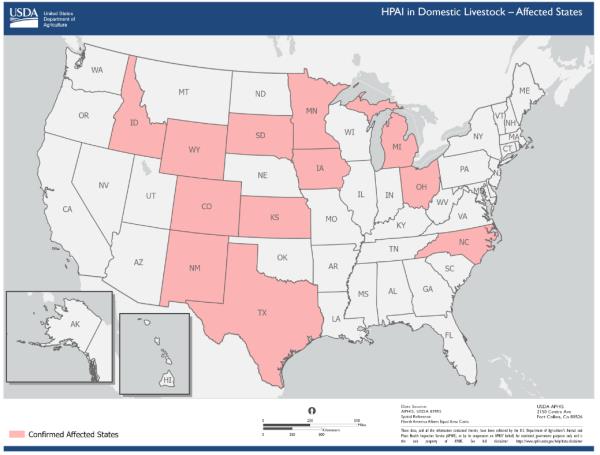 |
The report prepared and published by USDA-APHIS illustrates how a field investigation with appropriate laboratory support can be implemented within a short period, given resources but more important with motivation and direction by senior administrators. Since the onset of the current epornitic in 2022, APHIS has functioned to diagnose outbreaks of avian influenza and to depopulate flocks. The APHIS concentration has been an attempt to eradicate a seasonally and regionally endemic infection introduced and disseminated by migratory waterfowl that constitute reservoirs and shedders. The Agency has neglected epidemiologic studies that could have contributed to recommendations for prevention. Only two superficial and flawed reports were belatedly published, based on telephone-administered surveys one year after the 2022 outbreaks in diverse egg production and turkey grow-out farms respectively. Information including the critical determination of whether HPAI can be transmitted, albeit it over short distances, by the aerogenous route would have been helpful along with other recommendations based on logical assumptions and more structured and focused investigations.
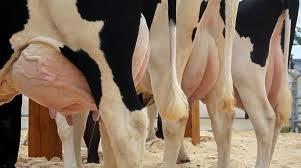
The rapid response by APHIS, with real-time recommendations relating to H5N1 outbreaks in Michigan demonstrate that the Agency is capable of responding to a disease emergency. Why was a similar approach not adopted in 2022 following the emergence of HPAI collectively responsible for subsequent depopulation of close to 90 million commercial poultry? Does APHIS operate according to the Animal Farm ethos of “Four legs good-two legs bad”? There is a lot that the poultry industry needed to know 50 million or so birds ago!
*Nguyen, T-Q., et al. 2024 Highly Pathogenic Avian Influenza (H5N1)-Michigan Dairy Herd and Poultry Flock Summary BioRxlv.org.doi.org/10.1101/2024.05.01.591751.

|
Responsibilities of Employers with Respect to HPAI
|
06/12/2024 |
|
 With the emergence of bovine influenza-H5N1 in dairy herds and ongoing outbreaks of HPAI in poultry flocks, legal experts are examining the implications of workers contracting the infection. This is notwithstanding the paucity of cases and mild symptoms to date. In a review authored by Charles Palmer of the law firm Michael Best and Freidrich, obligations of employers are considered with respect to the possible emergence of a zoonotic infection. With the emergence of bovine influenza-H5N1 in dairy herds and ongoing outbreaks of HPAI in poultry flocks, legal experts are examining the implications of workers contracting the infection. This is notwithstanding the paucity of cases and mild symptoms to date. In a review authored by Charles Palmer of the law firm Michael Best and Freidrich, obligations of employers are considered with respect to the possible emergence of a zoonotic infection.
Section 5 (a) 1, the General Duty Clause of the Occupational Safety and Health Act places an onus on employers to respond to obvious hazards that may impact workers. At the present time, it is not apparent that HPAI H5N1 in either poultry flocks or dairy herds is directly transmissible to workers despite three cases diagnosed and with one case associated with depopulation of a flock infected with HPAI. All cases were mild and there was no evidence of person-to-person transmission. In terms of the General Duty Clause, employers will be held to standards as issued by the Centers for Disease Control and Prevention. Current recommendations include: -

- Avoiding direct physical contact with sick birds and animals. This is obviously inappropriate where crews are used to depopulate flocks diagnosed with HPAI. The situation is unclear with respect to large herds in which there is a low prevalence of infection. Is it permissible to segregate affected cows and designate trained personnel to their care?
- Wearing appropriate personal protective equipment (PPE) that should be supplied by the employer. This is an area where employers could be subject to criminal and civil action in the event of failure to either supply PPE or train workers in their effective use.
The OSHA PPE standard (29CFR 1910.132) requires: -
- Disposable or non-disposable and fluid resistant coveralls and depending on circumstances, waterproof aprons and head gear.
- NIOSH approved particulate respirator with a minimum of N95 filtration.
- Properly fitted, unvented safety goggles or a face shield in the event of splashing of biologic fluids onto the respirator.
- Rubber footwear with sealed seams that can be sanitized.
- Disposable or non-disposable head covers.
- Disposable or non-disposable gloves.
Employees should be trained in donning and working with PPE.

CLS-Seqirus Vaccine Plant NC |
OSHA sanitation standard (29CFR 1910.141) requires collection and appropriate disposal of both solid and liquid wastes in such a manner as to prevent direct contact with eyes and respiratory surfaces. The sanitation standard requires bathrooms with hot and cold running water and soap and cloth or paper towels. The requirement includes “air blowers”. These units are potentially capable of disseminating virus particles entrained on dust and should be eliminated from the sanitation standard.
The poultry industry has gained sufficient and bitter experience in the possible location and timing of outbreaks and accordingly, structural and operational biosecurity is practiced and is intensified under conditions of high risk. The situation with respect to the dairy industry is less certain. More than 90 herds have been diagnosed with bovine influenza-H5N1 and the disease is now present in 12 states. In the absence of a structured surveillance program, the actual extent of infection among dairy herds and possibly beef herds is unknown.
During the 2020 COVID outbreak, workers in red meat packing plants and poultry processing facilities were vulnerable to infection based on proximity of workstations and working in cold, high-moisture environments. With confusion over county and state officials to order plants closed and with plummeting hog and beef throughput on April 28th 2020 a Presidential Executive Order was released in accordance with the Defense Procurement Act mandating plants to continue operation. This Order extended indemnity to employers against claims by sick workers provided that facilities were operated in accordance with CDC standards. At the time, these were based on human influenza and involved masking, distancing and monitoring of health.
In the absence of similar indemnification, employers will be vulnerable to both civil and criminal action in the event of exposure of workers to H5N1 in the absence of appropriate protective measures.
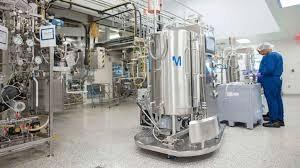
Cell-based vaccine production CSL-Seqirus |
Should a zoonotic strain of H5N1 emerge, protective vaccination will be deployed from a bulk stock of 5 million doses currently being packed by CLS-Seqirus in North Carolina. The E.U has ordered vaccine from the Company with delivery scheduled over a four-year period. Finland intends offering vaccine to workers and farmers in contact with dairy herds, mink and poultry in addition to employees of packing plant, veterinarians, laboratory personnel and first responders.
As a simple precautionary measure, all workers in contact with poultry, dairy herds and other at- risk personnel and their families should receive the annual multivalent influenza vaccine when available in the fall. This will preclude an extremely rare but possible recombinant event between a human influenza strain and a poultry or livestock strain with the potential for emergence of a new virulent zoonotic virus.

|
Renewed Interest in Food Irradiation - A Retrospective Analysis of Foodborne Outbreaks
|
05/30/2024 |
|
 The Centers for Control and Prevention (CDC) has demonstrated that implementation of food irradiation for eligible products over the period 2009 through 2020 would have potentially reduced the incidence of foodborne outbreaks caused by susceptible bacteria. In the retrospective CDC study, 482 foodborne outbreaks were examined with 155 attributed to a food product eligible for irradiation. Chicken (34 percent of the eligible foods) and beef (20 percent) were the leading food products eligible for irradiation that were obviously contaminated at the time of purchase. The CDC report noted, “ the illnesses, hospitalizations and deaths associated with outbreaks linked to irradiation-eligible food might have been prevented or reduced had those foods been irradiated. Radiation treatment eliminates pathogenic microorganisms.” The Centers for Control and Prevention (CDC) has demonstrated that implementation of food irradiation for eligible products over the period 2009 through 2020 would have potentially reduced the incidence of foodborne outbreaks caused by susceptible bacteria. In the retrospective CDC study, 482 foodborne outbreaks were examined with 155 attributed to a food product eligible for irradiation. Chicken (34 percent of the eligible foods) and beef (20 percent) were the leading food products eligible for irradiation that were obviously contaminated at the time of purchase. The CDC report noted, “ the illnesses, hospitalizations and deaths associated with outbreaks linked to irradiation-eligible food might have been prevented or reduced had those foods been irradiated. Radiation treatment eliminates pathogenic microorganisms.”
During the 1980’s and 1990’s, food irradiation was promoted as a solution to foodborne infection caused by Salmonella, Campylobacter, E.coli (STEC) and Listeria. Unfortunately, negative publicity and a reluctance to introduce the technology prevented adoption. Isotopic irradiation using cobalt60 is suitable to destroy foodborne bacteria in bulk-packed dense food products. Cobalt60 irradiation plants are expensive and depend on high utilization and throughput to offset fixed costs. With high demand and appropriate logistics, the cost of irradiation treatment is extremely low. It is a matter of record that a high proportion of medical disposables are irradiated using cobalt60 in dedicated free-standing plants. 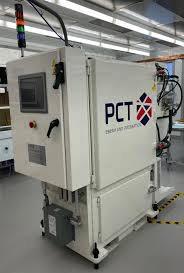
Recently electron beam pasteurization has become available as a more practical alternative to isotopic irradiation. Similar to hospital x-ray installations, electron beam units can be installed in poultry production and food packaging plants without the restraints and costs associated with isotopic irradiation. Electron beam units can be switched on and off to comply with plant operation and are ideal for small food items including IQF portions and small packages of fruit and vegetables.
The U.S. Food and Drug Administration has approved a range of foods for irradiation including meat, poultry, shell eggs and spices, Unfortunately due to concerns over consumer resistance there has been minimal application other than for approximately one-third of imported spices.
For food irradiation to be accepted, an intensive program of consumer education will be required. The major points to be conveyed are that nutritional content is not affected by the treatment, there is no residual radioactivity in the product, non-spore forming bacterial pathogens are inactivated if the process is carried out in conformity with FDA standards.
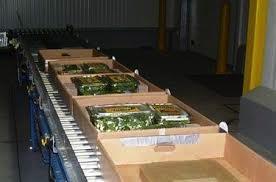
Attempts are being made to declare a wide range of Salmonella as adulterants in chicken and turkey products. Given current pre-harvest and processing technology, it is impossible to reduce the probability of contamination to levels that would support existing production with standards approximating near-zero tolerance without an effective kill step. Application of irradiation applying electron beam treatment of tray-pack or IQF products could be achieved at costs at or below one cent per lb.
If electron beam treatment is introduced, there will have to be complete transparency in labeling accompanied by promotion by federal agencies with assurances of safety and efficacy and above all endorsement by public health agencies and consumer groups.
Given that we are still contending with opposition against pasteurization of milk introduced over 150 years ago, obtaining acceptance of food irradiation, even applying electron beam treatment, analogous to x-rays will require a coordinated informational program.

|
USDA to Fund Disease Prevention Projects
|
05/25/2024 |
|
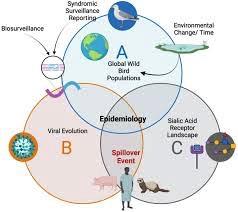  The USDA will assign $22.2 million to the Animal and Health Inspection Service to implement 81 projects in 48 states. Activities will be conducted by universities, industry organizations and state veterinary diagnostic laboratories. Funds will be assigned from the National Animal Disease Preparedness and Response Program funded in 2018. The USDA will assign $22.2 million to the Animal and Health Inspection Service to implement 81 projects in 48 states. Activities will be conducted by universities, industry organizations and state veterinary diagnostic laboratories. Funds will be assigned from the National Animal Disease Preparedness and Response Program funded in 2018.
Jenny L. Moffitt Under Secretary for USDA Marketing and Regulatory Programs noted, “Bolstering animal disease preparedness is critical because these diseases devastate livestock and hardworking farmers whose animals are affected and threaten America’s access to safe, healthy, affordable food.”
It is hoped that APHIS will assign resources to an epidemiologic investigation of avian influenza. Since 2022, over 80 million commercial birds have been depopulated with only lip service to epidemiologic studies that could provide meaningful improvements in prevention and control. The Agency continually and justifiably promotes “biosecurity” as a principle but without considering specifics relating to structural and operational biosecurity. APHIS fails to relate the probability of exposure with various  types of commercial farms and to consider the structure and organization of the various industry segments. From direct personal contact with middle-level federal Veterinarians, it is evident that epidemiologic studies leading to prevention have been largely downplayed with a concentration on the reactive cycle of detection, depopulation, quarantine and decontamination. types of commercial farms and to consider the structure and organization of the various industry segments. From direct personal contact with middle-level federal Veterinarians, it is evident that epidemiologic studies leading to prevention have been largely downplayed with a concentration on the reactive cycle of detection, depopulation, quarantine and decontamination.
APHIS continues with a policy of attempting to eradicate a disease that is both regionally and seasonally endemic. This King Canute approach draws heavily on Commodity Credit Corporation funding. This is costly to public agencies, producers and ultimately consumers.
Projects that should be considered include: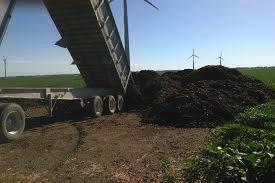
- Confirmation of aerogenous transmission of avian influenza virus.
- Determining the duration of shedding of virus by migratory waterfowl and domestic birds following infection.
- Persistence of virus in soil and water over a range of conditions as influenced by temperature, humidity and intensity of exposure to sunlight on soil and impervious surfaces.
- Establishing risk factors for introduction of infection onto large egg production complexes in addition to contractor broiler, turkey, and breeder farms using real time field and molecular epidemiology.
- Expedite the evaluation of available commercial avian influenza vaccines and formulate a policy for their deployment.
A number of legislators including Senator Chuck Grassley (R-IA) have developed a sudden interest in H5N1 now that it has emerged in the dairy industry.  Senator Grassley is correct in encouraging communication among federal agencies involving specialists in virology, epidemiology, wildlife biology and other disciplines necessary to develop integrated programs to control catastrophic diseases. Senator Grassley is correct in encouraging communication among federal agencies involving specialists in virology, epidemiology, wildlife biology and other disciplines necessary to develop integrated programs to control catastrophic diseases.
Parochial concerns as expressed by the Commissioner of Agriculture of the state of Texas dissuading cooperation into investigations into the source and prevalence of bovine influenza-H5N1 are unconstructive. Resistance to cooperation with federal agencies may delay prevention and spread and contribute to the remote possibility of emergence of a strain of H5N1 pathogenic to humans and capable of person-to-person spread. In the unlikely event of emergence of a zoonotic form of H5N1 he and  those who oppose scientific investigation and reality will have a lot to answer for. The Commissioner will be removing his ostentatiously large and pristinely white trademark Stetson at numerous funerals—but let us work together to obviate this eventuality. We are not China. We face reality. We do not suppress science. We work to achieve the best possible outcome when faced with challenges of disease and climate. Or do we? Naah! those who oppose scientific investigation and reality will have a lot to answer for. The Commissioner will be removing his ostentatiously large and pristinely white trademark Stetson at numerous funerals—but let us work together to obviate this eventuality. We are not China. We face reality. We do not suppress science. We work to achieve the best possible outcome when faced with challenges of disease and climate. Or do we? Naah!

|
Bovine Influenza Highlights Danger of Raw Milk Consumption
|
05/21/2024 |
|
The recent emergence of bovine influenza-H5N1 now diagnosed in 54 herds in 9 states, creates a risk of infection from consuming non-pasteurized milk. Heat treatment during pasteurization effectively destroys most viruses and non-spore forming bacterial pathogens. To date there is no indication that either consumers of fluid milk or eggs have been impacted by bovine influenza-H5N1 or the avian counterpart. The fact that eggs have not been subject to consumer resistance following outbreaks of HPAI is attributed to prompt cessation of distribution from affected complexes and that eggs are cooked in home and institutional kitchens providing a justified sense of security.
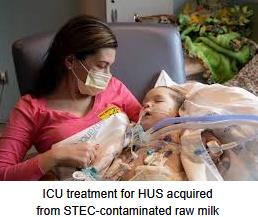
Predictably, CDC has warned against drinking raw milk. From 1998 to 2018, the CDC documented 200 outbreaks directly attributed to raw milk, resulting in 2,600 cases and 225 hospitalizations. Prior to mandatory pasteurization for milk shipped interstate, 25 percent of all cases of foodborne infection could be traced to milk and dairy products. Currently, milk and dairy are responsible for slightly less than one percent of foodborne infections. It is calculated that one percent of the population regularly consume non-pasteurized milk representing 0.006 percent of all fluid milk consumed. This minute quantity is responsible for a disproportionate number of milk-borne infections.
Demand for raw milk soared during the COVID period when it became a freedom issue as a counter to recommendations for masking and vaccination to control the emerging infection. A raw-milk producer in California noted, “Anything that the FDA tells consumers to do, they do the opposite.”

The demand for raw milk has surprised food safety experts. Dr. Donald Schaffner of Rutgers University characterized that the demand for raw milk is “absolutely stunning” and Dr. Alex O’Brien, Coordinator for Safety and Quality at the Center for Dairy Research, stated, “I liken drinking raw milk to playing Russian roulette. The more times people consume it, the greater the chance they will get sick.” Notwithstanding reasons and scientific advice, social media is replete with false claims of nutritional superiority for raw milk and anecdotal reports of freedom from infection. The very young are vulnerable to bacterial infections including STEC that is associated with hemolytic uremic syndrome. Allowing pre-teens to consume raw milk is a form of abuse.
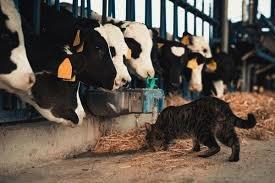
Dr. Matthew Motta of Boston University attributes the demand for raw milk as a manifestation of “partisanship, politic ideology, religion and cultural values” and not simply due to availability or ignorance. Dr. Motta recommends that federal health agencies should respond with appropriate advice and scientific fact on social media promoting the safety of pasteurized milk. Unfortunately, in a polarized nation with web-disseminated misinformation and conspiracies, consumers have made up their minds and no amount of web postings will sway their convictions.

|
Epidemiologic Evaluation of Bovine Influenza Apparently Obstructed by States
|
05/14/2024 |
|
 From a statement issued by Dr. Nirav Shah, Principal Deputy Director of the Center for Disease Control and Prevention (CDC), there is unanimity between his agency and USDA but state agricultural departments and individual dairy operations are obstructing investigations relating to the prevalence of infection in herds and workers. From a statement issued by Dr. Nirav Shah, Principal Deputy Director of the Center for Disease Control and Prevention (CDC), there is unanimity between his agency and USDA but state agricultural departments and individual dairy operations are obstructing investigations relating to the prevalence of infection in herds and workers.
With an emerging infection such as bovine influenza-H5N1 it is critical to determine as rapidly as possible the prevalence rate and geographic extent of the infection. Both field and molecular data must be obtained and analyzed to ascertain the rate of spread and modes of infection in order to implement counter measures. Epidemiologic data can be used to predict the progress of the disease in cattle and genomic evaluation can assess the risk of extension to the human population.
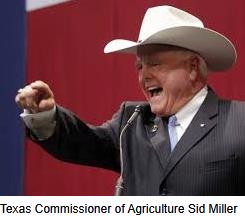
The CDC, with their focus on human health, is obviously concerned over the possible incidence rate of H5N1 infection among workers and should be allowed to conduct surveys. Texas Agriculture Commissioner Sid Miller stated, “They don’t need to do that, it’s overreach.” With respect to Commissioner Miller, he is in no position to comment on the epidemiologic realities of emerging disease and apparently is oblivious to the potential of extension to humans, although only one diagnosed case has been documented. Anecdotal reports by veterinarians visiting affected dairy herds suggest that individual workers demonstrated influenza-like symptoms including conjunctivitis. Colorado with only one case is following 70 workers to establish infection and possible transmission to contacts. Based on data from the CDC only 220 farm workers have been monitored for symptoms suggesting that only 150 workers have been evaluated among eight states where outbreaks have occurred. Texas with the most cases among dairy farms reported has only tested 20 workers with clinical signs and the results of diagnostic procedures have not been released. PCR assay results are available within 24 hours!
It is now five weeks since the index case of bovine influenza was diagnosed. Preliminary studies on the sequencing of isolates of H5N1 belatedly released by USDA-APHIS suggest that the disease has been present in dairy herds since late December 2023. To date there has been no structured evaluation of H5N1 prevalence among dairy herds on a national basis and the appropriate epidemiologic surveys on workers have not been conducted. This is despite the presence of RNA consistent with H5 influenza virus in both milk and wastewater especially in areas where outbreaks in dairy herds have occurred.
 The World Health Organization has designated H5N1 avian influenza virus as a potential pandemic strain. The Agency has urged surveillance including documentation of outbreaks in avian and now mammalian species and the WHO maintains a database of outbreaks and the library of genomic sequences. The World Health Organization has designated H5N1 avian influenza virus as a potential pandemic strain. The Agency has urged surveillance including documentation of outbreaks in avian and now mammalian species and the WHO maintains a database of outbreaks and the library of genomic sequences.
The parochial but understandable concern of state departments of agriculture as expressed in their desire to protect the milk industry is self-evident. This standpoint obviously conflicts with the greater need to understand the epidemiology of bovine influenza-H5N1 and to develop a national program to limit infection. Of greater concern is the possible extension of a mutant virus to workers and then to the general population. The distribution of PPE is perhaps an initial step in preventing infection but will be difficult to implement given the underlying deficiencies in structural and operational biosecurity in comparison to egg-production complexes. Practical and cultural issues exist with the deployment and use of PPE that requires availability and acceptance. We need to know the numbers of workers that may have been infected from an affected herd, the duration of the clinical phase and of viral shedding. Surveillance based on molecular epidemiology including gene sequencing will be critical to timeously detect mutations that may contribute to infection of humans and person-to- person spread. It is understood that up to $98 million will be distributed by the USDA to provide 3,500 dairy farms with up to $28,000 to “contain the spread of the virus between animals and humans and for testing milk and animals for the virus” This commentator suggests that grants should be conditional on cooperation with federal agencies with respect to herd and worker surveillance.
We are not China. We should not suppress necessary epidemiologic investigations or the data collected. Bovine influenza-H5N1 and its avian counterpart will not simply go away, irrespective of the intensity of hope, denial and prayer. Fortunately it appears that the risk of contracting H5N1 from direct contact with cattle is minimal but this assumption is based on the current circulating virus and inadequate surveillance. Pasteurization obviously destroys the virus that is secreted into milk from infected mammary tissue. A mutation in the viral genome could profoundly alter present circumstances and could result in widespread infection as with “swine flu”. Dr. Shah notes, “We have all seen how a virus can spread around the globe before public health is even had a chance to gets shoes on, that’s a risk and one we have to be mindful of.” It is not what we know that has the potential to hurt the industry and population—but what we do not know.
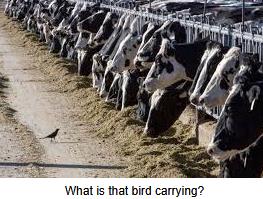
The dairy industry, state agriculture organizations, and federal agencies including USDA-APHIS and the CDC should cooperate according to a coordinated and agreed plan to determine the extent of bovine infection following “One Health” principles. Currently the risk of mutation to a strain capable of infecting humans is very low based on accumulated knowledge. We are however in a situation of confronting a condition with a low probability of an adverse outcome for humans but with an extreme potential for morbidity and mortality and devastation of the Nation’s economy in a worst case scenario. Let us learn from our unfortunate experience with COVID from 2019 onwards and not underrate the significance of the infection at a stage when practical control is still possible.

|
NCC Expresses Reservations Over Vaccination Against HPAI
|
05/06/2024 |
|
 It is becoming increasingly evident that the U.S. poultry industry is divided on the desirability of preventive vaccination against Highly Pathogenic Avian Influenza. Given the duration and severity of the H5N1 epornitic that has persisted in seasonal waves of incidence since 2022, both turkey and egg production segments have been disproportionately affected. In contrast there have been limited losses among broiler breeder and growing farms. The ongoing epornitic has resulted in depopulation of close to 90 million birds with 75 percent comprising commercial egg laying flocks or pullets, 16 percent turkeys and 7 percent broilers and broiler breeders. It is becoming increasingly evident that the U.S. poultry industry is divided on the desirability of preventive vaccination against Highly Pathogenic Avian Influenza. Given the duration and severity of the H5N1 epornitic that has persisted in seasonal waves of incidence since 2022, both turkey and egg production segments have been disproportionately affected. In contrast there have been limited losses among broiler breeder and growing farms. The ongoing epornitic has resulted in depopulation of close to 90 million birds with 75 percent comprising commercial egg laying flocks or pullets, 16 percent turkeys and 7 percent broilers and broiler breeders.
At issue is the potential impact of even limited regional and sector vaccination on the export of broiler leg quarters. The prevailing perception is that introducing any program of preventive vaccination would be an acknowledgement that the infection is endemic resulting in a number of importing nations imposing wide restrictions on importation. The reality is that HPAI is effectively regionally and seasonally endemic in the U.S. given that both migratory birds that introduce infection and now many domestic species both serve as reservoirs and disseminators of the virus. Even the most extreme levels of biosecurity are ineffective in preventing introduction of infection based on anecdotal and scientific evidence that  infection can be transmitted over short distances by the aerogenous route. Since the 2022 epornitic, the USDA-APHIS has followed an outdated and anachronistic policy of eradication. This is clearly a fallacious approach, inappropriate to a disease subject to seasonal introduction and with domestic wildlife reservoirs. infection can be transmitted over short distances by the aerogenous route. Since the 2022 epornitic, the USDA-APHIS has followed an outdated and anachronistic policy of eradication. This is clearly a fallacious approach, inappropriate to a disease subject to seasonal introduction and with domestic wildlife reservoirs.
Adaptation of H5N1 to mammals with animal-to-animal transmission is evidenced by outbreaks in farmed mink and marine mammals during 2023. The recognition that the infection is now present in the U.S. dairy industry raises concern for further changes in the H5N1 genome with the potential for the emergence of a zoonotic strain.
Given that highly pathogenic avian influenza caused by H5N1 is now a panornitic present on six continents, has changed attitudes towards preventive vaccination. The World Organization of Animal Health (WOAH) has accepted this modality as an adjunct to prevention along with biosecurity and quarantine. The important question is whether limited vaccination in the U.S. would seriously impact export of leg quarters representing 97 percent of broiler exports. Given the limited number of nations receiving U.S. exports, and the fact that many of these nations have endemic infection suggests that the restraints on exports may be overstated. It is clear that many nations have and  will continue to use avian influenza as either a protective measure for domestic industries or for political purposes. China applies vaccination against endemic HPAI but imposes prolonged restrictions on U.S. counties and states with diagnosed infections. This nation will act in their own interest irrespective of international agreements or scientific reality. Many importing nations would be willing to limit restrictions to the county level. Others might accept a certification program by which complexes or flocks of origin could be demonstrated to be free of virus by PCR assay prior to harvesting. will continue to use avian influenza as either a protective measure for domestic industries or for political purposes. China applies vaccination against endemic HPAI but imposes prolonged restrictions on U.S. counties and states with diagnosed infections. This nation will act in their own interest irrespective of international agreements or scientific reality. Many importing nations would be willing to limit restrictions to the county level. Others might accept a certification program by which complexes or flocks of origin could be demonstrated to be free of virus by PCR assay prior to harvesting.
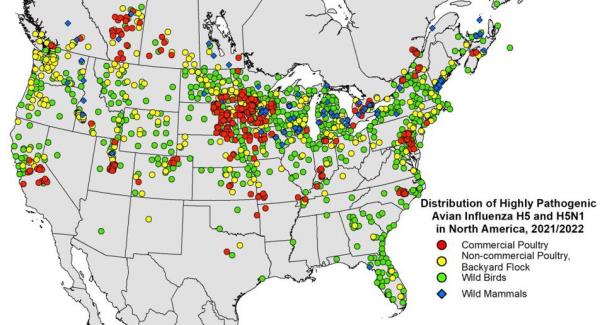 |
The NCC is justified in continuing to quantify the effect of trade restrictions although in reality vaccination would result in probably less disruption than is currently imposed. The contention that vaccination would not eradicate HPAI is well recognized, but it must be accepted that the infection is now regionally and seasonally endemic. The statement that vaccination “masks the presence of HPAI” is valid but flocks can be certified free of infection using PCR technology.
The NCC statement that “We currently support USDA and APHIS stamping out policy to eradicate the virus is essentially fallacious and self-serving since this is an unachievable objective and reflects the thinking of the 1990s. The NCC encouragement of APHIS to “work with our trading partners to ensure that should a vaccination strategy be developed, we can continue to feed the world with poultry products” represents a departure from the ‘no-vaccination ever’ message. The NCC is justified in its reservations over HPAI vaccination with respect to export and trade since this is of vital economic importance to the industry that must market 15 percent of RTC volume in the form of leg quarters, an undifferentiated relatively low-priced commodity.
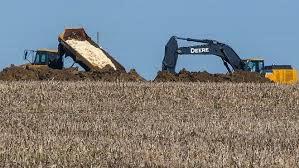
The recent article by Mike Brown, President of the NCC, in a Delmarva publication indicates a more reasoned approach to vaccination that recognizes that the infection cannot be eradicated through ongoing depopulation of flocks. Effective biosecurity (as opposed to the ‘make-belief’ version practiced) will not provide absolute protection against infection given the reality of aerogenous transmission.
Restriction on trade in poultry products as the result of vaccination may be influenced by future events including: -
- The unfortunate but likely possibility of introduction of HPAI into the U.S. broiler industry, resulting in significant losses.
- Recognition of HPAI among commercial flocks in Brazil.
- Extension of H5N1 or other strains to workers on U.S. livestock farms, processing and packing plants and their contacts.
- Availability of effective AI vaccines for mass application.
The “softening” of resistance by the broiler industry to preventive vaccination is encouraged and reflects an appreciation of the realities of the disease, the widespread distribution, financial impact and zoonotic potential. The NCC and USAPEEC should motivate the lifting of trade barriers against vaccination through representations to the WOAH, the International Poultry Council and the International Egg Commission to facilitate controlled and monitored immunization of egg-production and turkey flocks in U.S. areas of high risk.

|
USDA-APHIS Belatedly Releases Incomplete AI Virus Sequence Data
|
04/24/2024 |
|
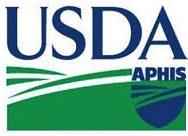 On Sunday, April 21st, USDA-APHIS released 239 genetic sequences relating to H5N1 isolates. The data was released to the National Library of Medicine database as raw sequence data (FASTQ files). The sequences lacked essential supporting information that can be used by molecular epidemiologists to ascertain the sources of the isolates and how they have evolved over time. On Sunday, April 21st, USDA-APHIS released 239 genetic sequences relating to H5N1 isolates. The data was released to the National Library of Medicine database as raw sequence data (FASTQ files). The sequences lacked essential supporting information that can be used by molecular epidemiologists to ascertain the sources of the isolates and how they have evolved over time.
An alternative database, the Global Initiative on Sharing All Influenza Data (GISAID), was established by scientists under the guidance of the World Health Organization to monitor the emergence of both human and animal influenza strains. The objective was to identify viruses with zoonotic and pandemic potential. Information posted to GISAID contains consensus sequences that have been refined and are devoid of contamination and errors. These sequences are supported by the origin of the sample, species and the location and time of collection. The data posted by USDA identifies ‘time’ as 2024 and ‘location’ as USA.
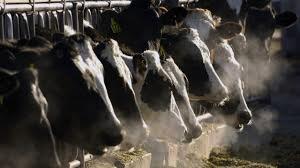 In late 2019, scientists and regulatory officials worldwide condemned China for reluctance to release sequences and detailed information on SARS-CoV-19 and their subsequent removal of molecular biological information from data sets that they maintained. Are we not in a similar situation? Is this due to institutional ignorance since deliberate obfuscation could never be contemplated by a U.S. agency! Why was USDA-APHIS or ARS holding 239 sequences when the H5N1 HPAI epornitic has persisted since 2022? In late 2019, scientists and regulatory officials worldwide condemned China for reluctance to release sequences and detailed information on SARS-CoV-19 and their subsequent removal of molecular biological information from data sets that they maintained. Are we not in a similar situation? Is this due to institutional ignorance since deliberate obfuscation could never be contemplated by a U.S. agency! Why was USDA-APHIS or ARS holding 239 sequences when the H5N1 HPAI epornitic has persisted since 2022?
Notwithstanding the paucity of data released, molecular epidemiologists were able to draw some conclusions. Dr. Michael Worobey, at the University of Arizona, was able to determine that the most recent common ancestor of the H5N1 isolates from dairy cows was introduced into herds during mid- to late December 2023. This has profound epidemiologic implications suggesting widespread infection, notwithstanding the apparently low morbidity rate in infected herds. The larger question relates to the extent of H5N1virus in U.S. dairy herds given that asymptomatic cows have yielded positive nasal swabs. The revelation that PCR assays on commercial milk have yielded viral RNA, but not live replicating virus in 58 out of 150 samples from ten states is not unexpected and suggests widespread infection. Epidemiologists affiliated to GISAID are eager to access curated sequences to continue studies and to determine the potential for emergence of a human pandemic strain.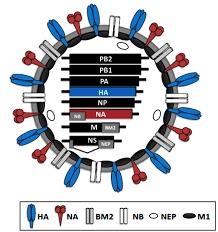
On the positive side, only one individual working with dairy cows who demonstrated conjunctivitis has yielded H5N1 virus, but with no evidence of human-to-human transmission. Preliminary studies confirmed that the H5N1 virus isolated from the dairy farm in Texas was similar to the virus isolated from a dairy farm in Michigan that received animals from the index case. The virus isolated from the extensive outbreak in laying hens in Michigan and implicated in a preliminary field investigation of the source of infection conformed to a common cluster. Enigmatically, the genetic sequence from the human case on the Texas dairy farm was sufficiently different from the similar wild bird, cat, cow and chicken sequences suggesting a different origin of infection. Evidently the worker did not contract infection from contact with cows on the index dairy herd in Texas. Dr. Tom Peacock, affiliated with the U.K. Pirbright Institute, noted, “The virus is basically too distant a cousin to be connected directly to the outbreak which either means it is either from a second spillover or that there was an early bifurcation of the cattle sequences.”
Susceptibility of mammals to the avian strain of H5N1 has been known since mid-2023 given isolation from scavenging mammalian species in North America including skunks, raccoons, pumas, coyotes and bears. Emergence of the infection in farmed mink in Spain and in marine mammals was clearly associated with animal-to-animal transmission.
Under the aeg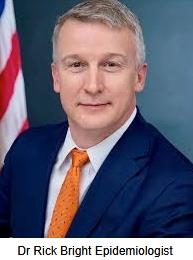 is of the Pan-American Health Organization, scientists in Latin America have made available sequences from marine mammals and migratory birds. They have organized meetings to review findings and to consider contingency plans in the event of an emergence of a zoonitic strain of H5N1. is of the Pan-American Health Organization, scientists in Latin America have made available sequences from marine mammals and migratory birds. They have organized meetings to review findings and to consider contingency plans in the event of an emergence of a zoonitic strain of H5N1.
EGG-NEWS has previously criticized USDA-APHIS for their pedestrian approach to HPAI , comprising a repetitive sequence of diagnosis, depopulation and decontamination. Failure to assign adequate resources to field and molecular biology and an apparent reluctance to aggressively investigate and publish on the epidemiology of avian influenza represents a grievous and ultimately costly omission. The egg-production and turkey segments of the poultry industry have experienced an ongoing epornitic extending over two years and involving depopulation of over 70 million commercial birds. This has been costly to the public sector, to producers and ultimately consumers.
 This criticism is now extended to a lack of transparency with respect to releases on the molecular epidemiology of HPAI and publication of annotated sequences. Dr. Rick Bright who led the Biomedical Advance Research and Development Authority from 2016 to 2020 stated, “It’s so critical that the U.S. Government should be as transparent as they can right now and share sequences and all of the data so the world can look at it and make their own risk assessment and start making their own vaccines if they need to.” Bright continued, “What would we say if this particular virus did get out of control? Would we look back on these last two or three months and say I wish we would have done something else? We must share all these sequences so the world can get ready.” This criticism is now extended to a lack of transparency with respect to releases on the molecular epidemiology of HPAI and publication of annotated sequences. Dr. Rick Bright who led the Biomedical Advance Research and Development Authority from 2016 to 2020 stated, “It’s so critical that the U.S. Government should be as transparent as they can right now and share sequences and all of the data so the world can look at it and make their own risk assessment and start making their own vaccines if they need to.” Bright continued, “What would we say if this particular virus did get out of control? Would we look back on these last two or three months and say I wish we would have done something else? We must share all these sequences so the world can get ready.”
Dr. Worobey noted, “There is a whole community of colleagues around the world who have a lot of experience with influenza and often can see things or conduct analyses that might show something that others have missed.” In the unfortunate event that a zoonotic strain emerges from the current circulating H5N1 in free-living avian and mammalian species or in commercial flocks and herds, administrators at USDA-APHIS will have a lot on their collective conscience. This is attributed to their unconscionable lack of transparency and their inactivity in failing to aggressively investigate the epidemiology of HPAI. The U.S. poultry and dairy industries, consumers, and ultimately taxpayers deserve better.

|
Rising Energy Costs to Offset Trend in Deflation?
|
04/23/2024 |
|
 Following eleven successive increases in the 10-year benchmark interest rate the FOMC engineered a reduction in U.S. inflation as measured by the Consumer Price Index (CPI) from 8.9 percent in June 2022 to 3.5 percent in March 2024. The increase in the benchmark interest rate did not result in unemployment and many influential economists predict a “soft landing”. Following eleven successive increases in the 10-year benchmark interest rate the FOMC engineered a reduction in U.S. inflation as measured by the Consumer Price Index (CPI) from 8.9 percent in June 2022 to 3.5 percent in March 2024. The increase in the benchmark interest rate did not result in unemployment and many influential economists predict a “soft landing”.
Despite the substantial increase in the inflation rate, attaining an elusive FOMC inflation target of approximately 2.0 percent will be difficult to accomplish. At the beginning of year, the market anticipated as many as six reductions in interest rates. The five consecutive pauses suggested caution and based on CPI, wage and employment data there will probably be only one or two reductions of 0.25 percent each in 2024 and not before late summer. Federal Reserve Chairman Powell, supported by Federal Reserve Governors, has stated in Congressional testimony and in public statements that decisions on reducing interest rates would be based on data with demonstrable progress in reducing inflation.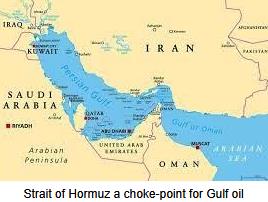
Energy is a major contributor to “sticky” inflation having increased by close to 25 percent since December 2023. Although turbulence in the Middle East could have been a significant factor in the increase, effectively disciplined restriction in output by OPEC+ has maintained price above $80 per barrel. As noted in successive weekly Economy, Energy and Commodity Reports in EGG-NEWS, the November reduction in OPEC+ output of 2.2 million barrels a day was extended through June representing two percent of global production. Non-OPEC output including Brazil, Angola and the U.S. has in large measure moderated the effect of the OPEC+ constraints. OPEC+ has learned that high oil prices reduce demand, and the Cartel has acquired the skill and discipline to fine-tune supply to regulate price and to disfavor alternative sources of energy.
Restoration of the economies of the E.U. and China, concurrent with increased industrial activity, will however create further demand for crude and other forms of non-renewable energy with valid predictions of a rise in price. Despite the reciprocal mutual attacks by Israel and Iran during the current month, the Brent Crude benchmark is still below $90 per barrel compared to a high of $95 in August 2023 and a recent low of $75 per barrel during November 2023. Economists predict that if OPEC cuts hold, Brent Crude could reach $100 per barrel by mid-summer attributed to increased demand.

Unknowns relating to future oil supply and prices will be influenced by possible reaction by Iran. Obviously increased sanctions against the regime will evoke a response either by the rulers of that nation or their surrogates. Interdicting transport of crude through the straits of Hormuz or additional action by Houthi rebels in the Bab-el-Mandeb strait could drive oil above $100 per barrel. This would result in international action including pressure by China, the major purchaser of Iranian oil. Given recent history, it is anticipated that Brent Crude will fluctuate between $85 and $90 per barrel though summer. Availability of domestic supply in the U.S. will probably constrain WTI crude at between $82 and $87 per barrel but higher prices will favor increased exports.
Since the price of oil is closely correlated with corn and other agricultural commodities, any escalation in price has implications for livestock production. Higher prices for diesel and gasoline will limit consumer spending with a negative effect on the earnings of food producers, distributors and retailers. According to the American Automobile Association
U.S. consumers paid on average, $3.66 per gallon for regular grade during mid-April.
It is axiomatic that the pump price of gasoline will influence the November election with high prices attributed to the incumbent party, irrespective of justification.

|
PEAK 2024 an Outstanding Success
|
04/16/2024 |
|
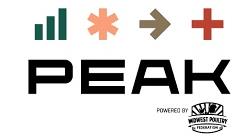 PEAK 2024 organized by the Midwest Poultry Federation is now well established in the Minneapolis Convention Center that provides more exhibition space, meeting rooms and hotel accommodation that the previous St. Paul location. The trade exhibition consistently attracts more egg-related allied suppliers compared to the IPPE. The concurrent industry association meetings and educational programs are focused on egg production given the concentration of farming operations in six Midwest states. Although space limits the display of large displays including 700-case per hour graders and a range of aviary equipment, technical personnel are available on booths to discuss operational parameters supplemented by videos, models, components and short cross-sections of installations. PEAK 2024 organized by the Midwest Poultry Federation is now well established in the Minneapolis Convention Center that provides more exhibition space, meeting rooms and hotel accommodation that the previous St. Paul location. The trade exhibition consistently attracts more egg-related allied suppliers compared to the IPPE. The concurrent industry association meetings and educational programs are focused on egg production given the concentration of farming operations in six Midwest states. Although space limits the display of large displays including 700-case per hour graders and a range of aviary equipment, technical personnel are available on booths to discuss operational parameters supplemented by videos, models, components and short cross-sections of installations.
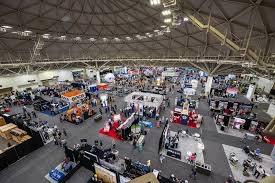 Educational programs presented included the North Central Avian Disease Conference, the Organic Egg Farmers of America Symposium, the Devenish Nutrition Symposium, and a number of informal gatherings taking advantage of attendance at the event. Educational programs presented included the North Central Avian Disease Conference, the Organic Egg Farmers of America Symposium, the Devenish Nutrition Symposium, and a number of informal gatherings taking advantage of attendance at the event.
The Midwest Poultry Federation arranged a series of educational presentations for pullet and egg management, feed technology and business leadership. During the trade exhibition, poultry TED Talks were presented detailing innovations in products and management for the benefit of attendees. Entertainment included PEAK Unhatched, an Exhibition-floor Happy Hour and Hospitality Night.
Despite the prevailing favorable margins in egg production, there were a number of overhangs that detracted from optimism:
- The resurgence of highly pathogenic avian influenza with three complexes affected since the beginning of April requiring depopulation of close to six million hens in two states was the major issue of concern. It is evident that HPAI is no longer limited to seasonal epornitics but has expanded beyond the migration of waterfowl in spring and fall months. This is in all probability due to transfer of the H5N1 virus to non-migratory species of free-living birds. This is evidenced by dead grackles and pigeons yielding H5N1 virus in the vicinity of the index dairy farm in Texas that was affected with Bovine Influenza-H5N1. Outbreaks of HPAI have been regularly diagnosed on a weekly basis in backyard flocks in diverse states outside the migratory seasons. These small flocks serve as sentinels for the presence of avian influenza virus and many cases are not diagnosed. Sometime in 2024 the USDA-APHIS will have to accept regional vaccination for turkeys and egg-production flocks. It must be obvious by now that it is futile to attempt to eradicate an endemic infection spread by the aerosol route in addition to fomites.
- The impasse in Congress is impeding passage of legislation necessary to maintain agricultural production. The Farm Bill is mired in dissent in both the Senate and House Agricultural Committees with polarization separating left and right-leaning members. Ultimately there will have to be compromise on the two issues of contention represented by allocations for SNAP and WIC favored by the left and diversion of funds from climate change programs to commodity price support on the right. The 118th Congress has barely passed fifty bills as opposed to an anticipated 400 in a normal two-year period. Appropriations bills were delayed by months by resorting to stop-gap continuing resolutions. Both parties are to blame for their lack of commitment to the national interest caused by grandstanding and intra-party conflict.

- There was considerable talk in the hallways at PEAK of consolidation in the retail food sector. The proposed merger between the Kroger Company and Albertsons Corporation is a concerning issue since this would create more buying power for the chains that are readily able to adjust orders to influence the industry benchmark price discovery system to the disadvantage of producers.
- There are concerns over the economy. The Federal Reserve has obviously reduced inflation from 8.9 to 3.5 percent but is experiencing difficulty in reducing levels to the target of 2.0 percent. International conflict and the price of energy are adding to the burden of inflation that is reducing consumer spending despite the last hurrah of extravagance during the first quarter of 2024.
- As in all planting seasons, there is concern over the anticipated crop. With the projected cyclic transition from a La Nina to an El Nino event, weather patterns during the 2024 growing season will influence yields. Lower feed prices have contributed to positive margins over the past twelve months but an unfortunate combination of higher input costs with production exceeding demand may impact profitability in the late third and early fourth quarters.
It is hoped that the contributions derived from PEAK 2024 in the form of technical and trade information will be transferred from the event to all U.S. production units and companies with evident improvements in productivity and profitability.

|
Relative Cost of Groceries
|
04/04/2024 |
|
 Dr. Leo Feler, Chief Economist at Numerator, recently published on prices of groceries and their affordability. During January 2020, that marked the beginning of the COVID years, through December 2023, the cost of at-home food rose by an average of 25 percent. Income, however, increased 24 percent over the same period, offsetting the average rise in shelf prices. Dr. Leo Feler, Chief Economist at Numerator, recently published on prices of groceries and their affordability. During January 2020, that marked the beginning of the COVID years, through December 2023, the cost of at-home food rose by an average of 25 percent. Income, however, increased 24 percent over the same period, offsetting the average rise in shelf prices.
Dr. Feler documented an increase in price for food categories over the four-year period with poultry, fish and eggs increasing at 26 percent and the lowest category, dairy and related products, at 21 percent. His predictions are for stability in price going forward with low, single-digit increases paralleling the situation before COVID that resulted in difficulties in the supply chain.
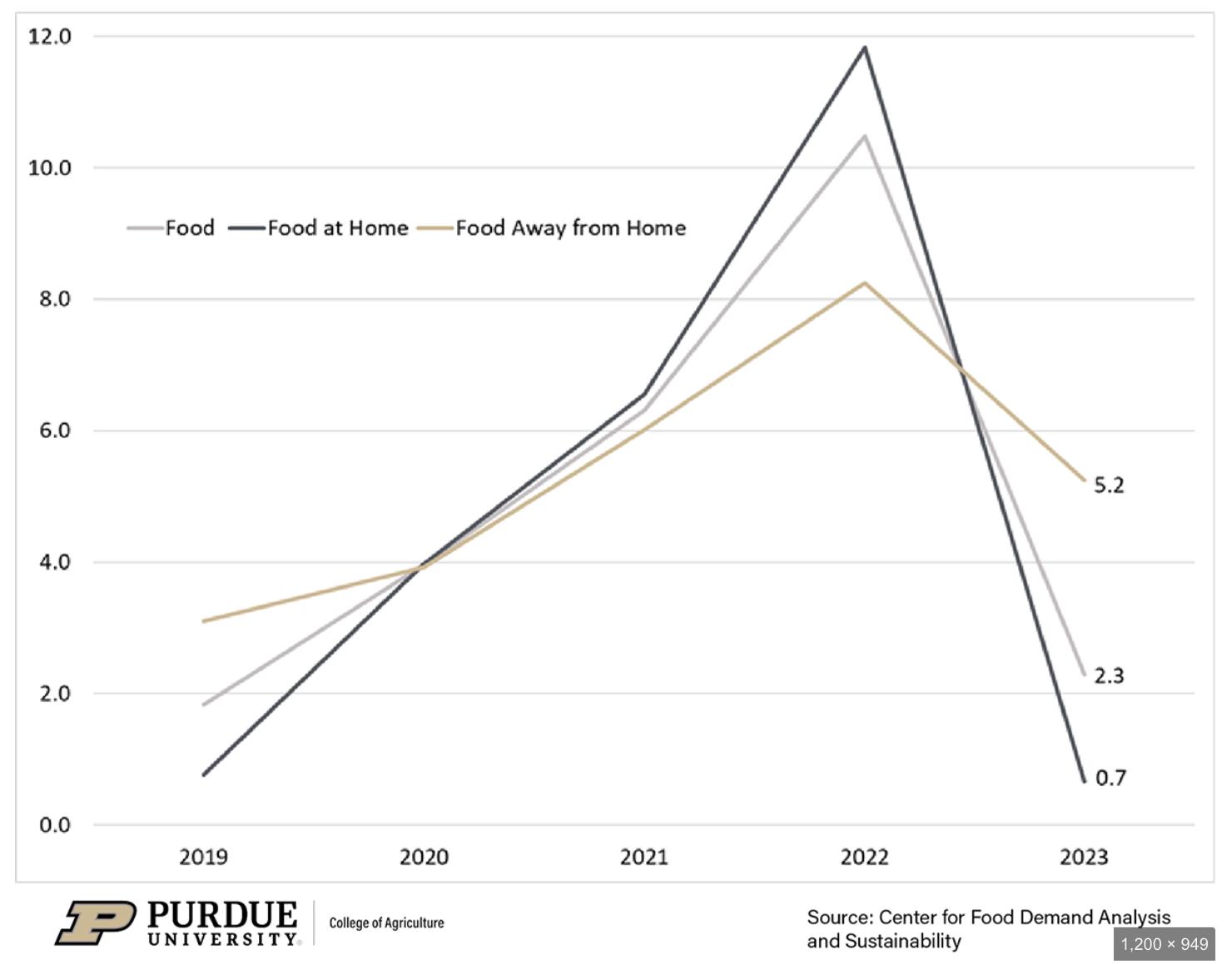
Despite the economic reality that grocery items are as affordable now as they were in 2020, there is a perception that prices are higher. This is evidenced by recent comments from the White House relating to “price gouging” and “shrinkflation” and echoed in statements by the Federal Trade Commission.
Consumers have adapted to higher prices by searching for value, hence, the rise in popularity of house brands. Surveys showed that forty percent of consumers are buying more private brands and reducing expenditure on unnecessary food items. They are also buying in bulk as reflected in the reported revenue of Costco, Sam’s Club and B.J.’s. Consumers are also calculating cost per unit and splitting their grocery purchases among competing stores to take advantage of special offers.
According to Steve Markenson, Vice-President of Research at the Food Marketing Institute, consumers are now considering convenience and quality in addition to cost in evaluating items. The deep discounters, led by Aldi, have obviously benefited through low operating costs, limited range of SKUs and demonstrably lower prices based on their private ownership and business model.

It is evident that retailers that can negotiate favorable prices from their suppliers contributes to higher gross margins and improvement in the bottom line. This only benefits consumers if there is a pass-through of savings. The check-out point and the print-out of the transaction either reinforces or dispels the perception of value.

Dr. Leo Feler, Chief Economist, Numerator Inc. |
Given the increase in eat-at-home, and with increased concern over the price of groceries, promotion of eggs should emphasize value. This includes an emphasis on nutrient content against alternatives including dairy, red meat and plant-based alternatives. Since the expanded concept of value incorporates convenience and ease of preparation, the American Egg Board should address the inherent attributes of eggs and develop a “not just for breakfast” message. Food manufacturers should be encouraged to incorporate egg-derived products in foods and develop a range of snacks and meal presentations featuring eggs as a source of high-quality protein with limited caloric contribution to diets.

|
Scientific Realities Should Moderate Official Statements on Avian and Bovine Influenza
|
04/04/2024 |
|
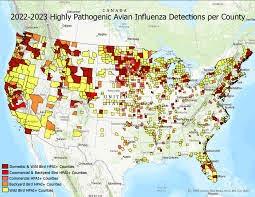 To date, APHIS has been factual in their minimal reporting on the ascending incidence of bovine influenza-H5N1. In contrast, a number of State Veterinarians have been far more optimistic in their official statements dampening concern over the potential of the virus to become zoonotic. To date, APHIS has been factual in their minimal reporting on the ascending incidence of bovine influenza-H5N1. In contrast, a number of State Veterinarians have been far more optimistic in their official statements dampening concern over the potential of the virus to become zoonotic.
 The major concern is the possible emergence of a zoonotic strain of H5N1 as noted by the World Health Organization that regards the virus as a potentially pandemic strain requiring surveillance over a range of avian and mammalian species. At this time, there is no evidence that spontaneously altered strains of H5N1 are infectious to humans although affecting a wide range of terrestrial and marine species with evident animal-to-animal spread. Despite the recovery of H5N1 virus from a dairy-herd employee with conjunctivitis, the only previous U.S. case occurred in a worker involved in depopulation of an infected flock. Given thousands of worker hours of exposure in 2015 and then again during the 2022-2023 epornitics, one asymptomatic case suggests that even with extreme exposure, humans are currently refractory to infection. The major concern is the possible emergence of a zoonotic strain of H5N1 as noted by the World Health Organization that regards the virus as a potentially pandemic strain requiring surveillance over a range of avian and mammalian species. At this time, there is no evidence that spontaneously altered strains of H5N1 are infectious to humans although affecting a wide range of terrestrial and marine species with evident animal-to-animal spread. Despite the recovery of H5N1 virus from a dairy-herd employee with conjunctivitis, the only previous U.S. case occurred in a worker involved in depopulation of an infected flock. Given thousands of worker hours of exposure in 2015 and then again during the 2022-2023 epornitics, one asymptomatic case suggests that even with extreme exposure, humans are currently refractory to infection.
Although there have been over 800 documented cases of H5N1 or H7N9 influenza among humans in Asia over two decades, the attack rate is exceptionally low given the level of potential exposure since emergence of these strains in poultry. Most of the cases involved either the elderly or the immunosuppressed. Patients in most instances presented with a history of contact with live poultry either on farms or in wet markets as with the two cases documented in South America in 2023.
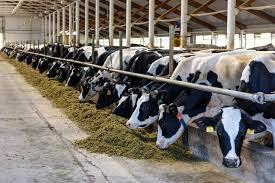
Given the reality that migratory marine birds and waterfowl are susceptible to H5N1 and disseminate the virus across five continents, ultimately, mutations may occur that may result in a zoonotic strain. The higher the concentration of susceptible birds or livestock in an area or on a farm, the greater will be the probability of either a mutation or a recombinant event.
Accordingly, it would be advisable to consider human health as a justification to create non-susceptible commercial bird populations through immunization. Currently, archaic and inappropriate trade restrictions in addition to the imposition of contrived trade barriers disfavor universal adoption of vaccination. The World Organization of Animal Health supports the principle of vaccination and clearly states that this modality should not be a restraint to trade providing there is adequate surveillance to detect infection in immunized flocks. In the age of PCR, this is an achievable objective. It will be possible for regulator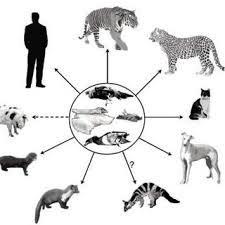 y authorities to introduce and manage a program of certification to confirm that export consignments are derived from flocks free of infection. y authorities to introduce and manage a program of certification to confirm that export consignments are derived from flocks free of infection.
The concerns of the broiler segment of the U.S. poultry industry concerning vaccination are recognized. When human health is considered, the potential of losing export sales pales in significance to even the slightest risk of an emerging pandemic. The cost of COVID with the attendant loss of more than one million of our fellow citizens suggests that H5N1 avian influenza is more than just a “chicken and turkey problem”.
It is now time to implement regional vaccination against HPAI in areas with a history of infection and specifically for turkey and egg-production flocks. The associations representing the segments of the U.S. poultry industry, APHIS, USAPEEC and the Office of the U.S. Trade Representative need to coordinate and intensify their activities to accept rigorously controlled vaccination. As far as possible, issues relating to restraint in trade based on vaccination should be resolved given that HPAI is now panornitic in distribution.
A statement by a mid-west State Veterinarians that “research to date has shown that mammals appear to be dead-end hosts which means that they are unlikely to spread HPAI further” is simplistic and is devoid of substantiation by either current virology or epidemiology. State Veterinarians are tasked with preserving the health of flocks and herds under their jurisdiction and should not be cheer-leaders for consumption of livestock products. With respect to HPAI, there is more at risk than either loss of trade or the cost of depopulation. Creating a solidly immune population of commercial poultry would contribute to a lower risk of facilitating a zoonotic strain of avian influenza. The emergence of bovine influenza-H5N1 in March and outbreaks in mink and marine mammals should be a warning of the potential for an influenza pandemic reminiscent of the 1918-1919 catastrophe. Risks of mutation might be small but economic and humanitarian consequences are infinite.

|
FTC Report Implicates Large Grocery Chains in Food Inflation
|
03/25/2024 |
|
 A March 21st report issued by the Federal Trade Commission (FTC) identified the involvement of major retail grocery chains in food inflation following supply chain disruptions coincident with the COVID years. The report analyzed the actions of producers, wholesalers and retailers in “skyrocketing prices for groceries” that impacted consumers. A March 21st report issued by the Federal Trade Commission (FTC) identified the involvement of major retail grocery chains in food inflation following supply chain disruptions coincident with the COVID years. The report analyzed the actions of producers, wholesalers and retailers in “skyrocketing prices for groceries” that impacted consumers.
The report demonstrated that larger chains benefitted at the expense of smaller competitors. The focus of the report included Walmart, Amazon, Kroger, C&S Wholesale Grocers, Proctor and Gamble, Tyson Foods, Kraft-Heinz and Associated Wholesale Grocers Inc. The FTC report demonstrated the power of major retailers and their impact on the supply chain based on buying power to the disadvantage of smaller, regional grocery chains.
 The FTC report documented that large retailers increased their revenue by more than six percent in relation to costs during 2021 through 2023 without commensurate increases in operating expenses. The report also documented pressure on suppliers relating to prices and delivery. The FTC report documented that large retailers increased their revenue by more than six percent in relation to costs during 2021 through 2023 without commensurate increases in operating expenses. The report also documented pressure on suppliers relating to prices and delivery.
The report was welcomed by the National Grocers Association (NGA), representing independent and small stores. Chris Jones, the Chief Government Relations Officer for the NGA, noted the past failure of the FTC and DOJ to use existing legislation to suppress pricing decisions that disfavor consumers and small suppliers. The NGA president, Greg Ferrara, stated, “Decades of lax antitrust enforcement enables grocery buyers to coercively squeeze suppliers to comply with their trade demands, unfairly disadvantaging smaller competitors”.
The Robinson-Patman Act specifically disallows both discriminatory and predatory pricing. Buyers who benefit from these practices violate the Act if the buyer pressures producers to agree to lower prices for commodities of similar grade and quality. This would apply specifically to generic USDA graded eggs that are a commodity in interstate commerce.
 The FTC report coincides with a lawsuit intended to block the merger of the Kroger Company with Albertsons Corporation. The Administration recognizes the political benefits of consumer protection in a pre-election year. Notwithstanding the intensified enthusiasm for anti-corporate action, it must be recognized that egg producers have been nickeled and dimed by the major chains over decades. This has reduced margins and deprived producers of sufficient profit to re-invest in maintenance and expansion. An added burden with less than adequate reimbursement is represented by the need to convert housing from conventional cages to alternative systems since 2020 to comply with welfare requirements. The FTC report coincides with a lawsuit intended to block the merger of the Kroger Company with Albertsons Corporation. The Administration recognizes the political benefits of consumer protection in a pre-election year. Notwithstanding the intensified enthusiasm for anti-corporate action, it must be recognized that egg producers have been nickeled and dimed by the major chains over decades. This has reduced margins and deprived producers of sufficient profit to re-invest in maintenance and expansion. An added burden with less than adequate reimbursement is represented by the need to convert housing from conventional cages to alternative systems since 2020 to comply with welfare requirements.
The situation in the U.K. parallels the findings of the FTC with regard to pressure on producers. As with the U.S retail grocery in the U.K. is an oligopoly with a few retailers sourcing domestic-produced and some imported shell eggs. After Brexit feed and energy costs soared but retailers failed to adjust prices to allow independent producers of free-range eggs, comprising half of national supply, to reach break-even. The result was a sharp decline in availability as producers ceased operation due to exhausting working capital and credit. Eventually many of the large chains were obliged to make ex gratia payments to individual producers to restock housing and to resume production.
 The wholesale price of packed generic eggs in the U.S. should be subject to the law of supply and demand. Cyclic periods of oversupply that were a feature of the 1980s through the 2010s have given way to a more rational rate of expansion following consolidation, conversion to non-caged housing and more reliable market intelligence. Unfortunately the prevailing industry benchmark reporting service now appears to function to the detriment of producers. The daily quotations appear to amplify downward movement in price and allows chain buyers the opportunity to depress prices over the short term by temporarily withholding orders. This results in a disproportionately low price, exacerbating price elasticity. A Midwest-large Chicago Mercantile Exchange (CME) quotation would be more equitable given that the costs of corn and soybean meal representing 65 percent of nest run expense is determined by the CME. The wholesale price of packed generic eggs in the U.S. should be subject to the law of supply and demand. Cyclic periods of oversupply that were a feature of the 1980s through the 2010s have given way to a more rational rate of expansion following consolidation, conversion to non-caged housing and more reliable market intelligence. Unfortunately the prevailing industry benchmark reporting service now appears to function to the detriment of producers. The daily quotations appear to amplify downward movement in price and allows chain buyers the opportunity to depress prices over the short term by temporarily withholding orders. This results in a disproportionately low price, exacerbating price elasticity. A Midwest-large Chicago Mercantile Exchange (CME) quotation would be more equitable given that the costs of corn and soybean meal representing 65 percent of nest run expense is determined by the CME.
Examination of pricing policies of large grocery chains by the FTC is long overdue and was in all probability a byproduct of the investigation of the proposed Kroger merger (or acquisition) with Albertsons. This transaction would be detrimental to suppliers, workers and consumers as evidenced by lawsuits filed by the Attorneys General of eight states and the FTC.

|
U.S. Economy Currently Strong – But Will it Last?
|
03/19/2024 |
|
It is axiomatic that a strong U.S. economy is beneficial for the poultry industry. Availability of capital allows for investment in expansion and installation of equipment that promotes efficiency. Increased spending power encourages consumption reflected in higher demand and margins. At the end of the first quarter of 2024, the U.S. economy is strong but is vulnerable to inappropriate fiscal policy and political pressures. Over the past five years, the U.S. economy has grown eight percent in real terms compared to the E.U. at three percent, Japan at one percent and negative growth among other nations.

Despite successive rate increases as determined by the Federal Reserve FOMC, unemployment has remained at an exceptionally low level, currently 3.9 percent and the economy is moving towards a “soft landing”. Economists suggest that despite proving “sticky” inflation should decline to approximately 2.2 percent on an annual basis by the end of 2024 with a concurrent forecast of a 3.2 percent growth in GDP. This, in large measure, has been achieved through increased productivity with a 2.6 percent increase in the non-farm categories and 0.6 percent overall.
The U.S. achieved the current, favorable position through injection of capital during the immediate post-COVID years. This largesse was accompanied by an average deficit of 14 percent of GDP in 2020 and 2021 compared to less than half this level among Euro nations. Other factors contributing to a favorable situation include energy independence and the relatively low cost of the range of fuels used compared to the E.U. The labor force has increased to approximately 160 million workers, up four percent from 2019. This has been driven by immigration with the foreign-born component up by 16 percent since the advent of COVID. Despite immigration, unemployment is at a low level under 4 percent with 10 million positions open albeit with moderate wage increases.

Despite the current favorable situation, there are certainly clouds on the horizon. Stimulation of the economy through government spending is widening the national deficit. In 2022, the deficit was 4.0 percent of GDP but rose to 7.5 percent in 2023. The nation is now spending as much on annual interest as it does on defense. One concern is the high proportion of debt held by China that is experiencing a decline in their economic growth and the holdings by other “unfriendly” nations. Problem areas include delinquency on credit cards suggesting that consumer spending, a major driver of the economy, will falter. This is despite the fact that high-income consumers representing 20 percent of earners are responsible for 45 percent of consumption. It is inevitable that this demographic will tighten their purse strings. Restrictive climate-related legislation is imposing costs on the economy. As an example the U.S. is currently the world's largest supplier of LNG. Executive orders limiting expansion of export terminals will be detrimental to reversing the foreign trade deficit. The property market appears vulnerable to sustained high interest rates and post-COVID factors including work-from-home have reduced occupancy rates for commercial property that cannot be converted to housing to provide an equivalent return. This may reflect on the stability of regional banks that are vulnerable to now questionable security and the performance of their loan portfolios.
Of greatest concern will be the policies implemented by the eventual winner of the 2024 Presidential election. The opposing candidate is expressing views that promise extreme protectionism with high tariffs. This would be detrimental to the economy. Concurrently an anti-immigration bias would deprive U.S. industry of necessary workers. Interference in the independence of the Federal Reserve would also be detrimental to the standing of the U.S. as evidenced by the economies of nations such as Turkey where injudicious political pressure over interest rates has proven disastrous to the value of the Nation’s currency. Promises to lower taxes if they eventuate will markedly reduce revenue and widen the national debt as has occurred under the present and previous Administrations.
The incumbent candidate is promising to raise taxes on corporate earnings and on high-income earners who are the most innovative and productive. In many respects the programs to be implemented are also protectionist although it is questioned as to whether pronouncements during the 2024 State of the Union address were political rhetoric or a firm intention of policy during a second term. The proposed program of spending would intensify the magnitude of the national debt. Attempts to reverse climate change would have profound impacts on the energy industry, vital to the economy. Injudicious spending on social programs will add to the national debt especially if “investment” is not realized over the short or even intermediate term.
Policies and programs implemented by the USDA in recent years using funding from the CARE Act that are intended to encourage local production and assist the “disadvantaged and under-represented” may not even contribute to intermediate-term productivity. Attempts to restructure the meat industry are quixotic and contrary to the realities of economies of scale and efficiency. From the perspective of providing inexpensive protein, oligopolies should be tolerated with appropriate protection for farmers, given the needs to supply the domestic and export markets, some of which are eroding.
Despite the favorable economic situation as quantified each week in the EGG-NEWS Economy, Energy and Commodity Report, some changes will be necessary to ensure a “soft landing” as anticipated. Both candidates for the Presidency should now moderate their rhetoric and adopt acceptable and productive economic policies based on sound economic principles. The Federal Reserve should address the issue of the delay in reducing interest rates given the trajectory in the decline in inflation to three percent. It is noted that eleven previous cycles of suppressing inflation by increasing interest rates, the economy entered into recession ten times. A repetition could be averted by three rate cuts from June onwards. Currently, the economy is in good hands. Let us hope prudence and sound judgment resist the temptation to impose isolationism or to continue with intemperate government spending, throttling the energy industry and failing to introduce a rational program of immigration. Hopefully, politicians and economists will see common ground and continue to guide the progress of our Nation for the benefit of both producers and consumers.

|
Corporate Greed and Shrinkflation Emerging as Unjust Election Issues
|
03/12/2024 |
|
Despite the fact that inflation is receding, there is both perception and reality that the prices of food items have not declined in proportion to other items. Deflation has, in large measure, been a reflection of the lower cost of energy although it is generally accepted that a gas price above $3.25 impact budgets and influences voters more than fluctuation in the price of a dozen eggs or a pound of ground beef. In actuality inflation as measured by the Consumer Price Index has declined from 8.9 percent in June 2022 to 3.2 percent in February 2024.

It is apparent that the Presidential re-election campaign will involve messages implying that the food manufacturing and distribution sectors are indulging in “corporate greed” and that prices are unnecessarily high and that unscrupulous companies are employing shrinkflation for packaged goods. This was emphasized in the 2024 State of the Union address and according to polling, resonates with the electorate.

Inflation was an inevitable result of injecting trillions of dollars into the economy in response to the emergence of COVID with widespread disruption of production capacity and consumption. Economists including ex-Treasury Secretary, Larry Sumner warned of the effect of inflation, but this was to be a price to pay to avoid a depression. We did not have soup and breadlines on Wall street or Hoovervilles on the Mall but we still have homelessness and SNAP. Through skill and a measure of luck, the Federal Reserve has guided the economy over the past three years to what is forecast to be a “soft landing” without resulting in mass unemployment. Compared with other industrialized nations, the U.S. has emerged from the pandemic with a relatively strong economy as measured by gross domestic product, with Q4 GDP at 3.2 percent, low unemployment of 3.9 percent in February 2024 and increasing agricultural and industrial productivity.
The Administration message that the food production sector is taking advantage of consumers is incorrect and unjustified. While there may be isolated cases of overt shrinkflation or price gouging, profit margins generated by food producers are consistent with restraint in pricing that is expected in a free market and competitive economy.
 Political rhetoric conveniently forgets the twenty percent increase in wage rates over the past five years. This is reflected in all components of the food production chain from field workers through to serving. Quoted in Politico, Dean Baker a Senior Economist at the right leaning Center for Economic and Political Research, stated, “We are not going to have a world where people get to keep their 20 percent pay increases and pay what they did four years ago for food. Political rhetoric conveniently forgets the twenty percent increase in wage rates over the past five years. This is reflected in all components of the food production chain from field workers through to serving. Quoted in Politico, Dean Baker a Senior Economist at the right leaning Center for Economic and Political Research, stated, “We are not going to have a world where people get to keep their 20 percent pay increases and pay what they did four years ago for food.
The largesse exhibited during the COVID period comprising Federal funding through the Coronavirus Aid, Relief in Economic Security (CARES) Act of 2020 and the American Rescue Plan of 2021 in all probability averted a depression. Not even the U.S. government can realistically spend the artificial money created. Various Departments including the USDA still hold undistributed funds that should be returned to the Treasury to offset the national debt. Funds made available to the Department of Agriculture have been misused in futile attempts by Secretary Tom Vilsack to restructure protein production. He has consistently attempted to oppose the major packers and broiler integrators through new regulations under the Packers and Stockyards Act. He has distributed vast sums to unproductive projects claiming support for the “disadvantaged and underrepresented” in agriculture. The scale of USDA “giveaways” has intensified this year possibly because administrators and initiators of programs recognize the likelihood of a change in administration that would bring about an end to their activities.
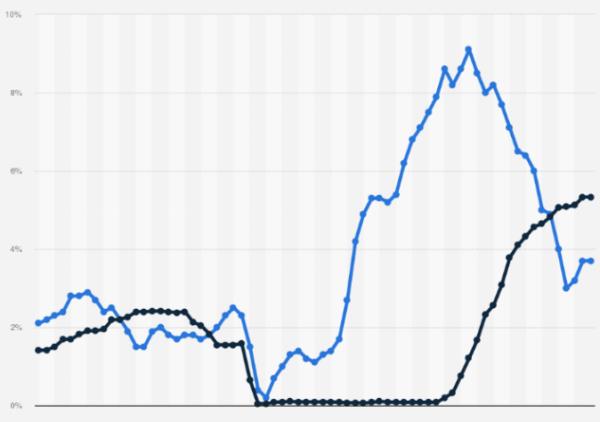
Inverse relationship between ascending Fed rate and deflation |
It is unfortunate that the agricultural sector and the food industry have become targets of political rhetoric through unjust accusations of corporate greed. The Administration has attempted to divert criticism from current disaffection to focus on an essentially innocent industry. This is confirmed in the March 12th release of the Consumer Price Index that documented a 2.2 percent increase in all food on an annual basis with food-at-home up 1.0 percent and food-away-from-home up 4.5 percent, reflecting labor costs.
Given that alleged price gouging and corporate greed will be emphasized as talking points in the coming election campaign, industry associations should prepare rebuttals and be able to counter unjust accusations, applying sound reasoning supported by economic facts.
Subscribers are directed to the Economy Section of the weekly Economy, Energy and Commodity Report in this edition.

|
U.S. Agriculture Needs a Workable Immigration Law
|
03/07/2024 |
|
 With the apparent failure of the Immigration Bill previously agreed to in principle by both chambers of Congress, the U.S. will continue to function with legislation passed in 1990. Although agricultural workers can enter the U.S. on H-2A visas, there is a general agreement among many sectors of agriculture including dairy, produce and fruit that the allocation is inadequate. Foreign workers can be legally employed providing they comply with E-Verify requirements. There is evidence that the system of verification is being gamed with both deceptive documentation and widespread overlooking of the requirement. With the apparent failure of the Immigration Bill previously agreed to in principle by both chambers of Congress, the U.S. will continue to function with legislation passed in 1990. Although agricultural workers can enter the U.S. on H-2A visas, there is a general agreement among many sectors of agriculture including dairy, produce and fruit that the allocation is inadequate. Foreign workers can be legally employed providing they comply with E-Verify requirements. There is evidence that the system of verification is being gamed with both deceptive documentation and widespread overlooking of the requirement.
It has become politically expedient for some state administrations to pass legislation enforcing E-Verify. Florida enacted SB1718 that impacts approximately 750,000 undocumented immigrants working in the state, mainly in agriculture but also construction and tourism. What initially appeared to be a popular but discriminatory law has now emerged as a restrictive measure notwithstanding the reliance of Florida and other states on foreign labor. Both farming and business communities are experiencing difficulty in recruiting and retaining workers many of whom are undocumented. The law mandating E-Verify resulted in an exodus of workers from the state fearing deportation. SB1718 also serves as a license to exploit through wage theft, harassment and substandard accommodation given that workers are captive under illegal employment and have no legal recourse.
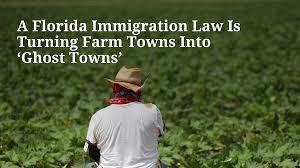
Attempts to enforce E-Verify in Florida resulted in protests from agricultural associations and the state Chamber of Commerce with a movement to have SB1718 rescinded given the negative economic impact. Some states including North Carolina have enacted loopholes exempting agriculture and specified industries from nominal compliance with E-Verify. Studies on the effect of enforcing E-Verify suggest profound economic loss as in Georgia in 2011 when undocumented workers left the state, resulting in a decline in agricultural revenue exceeding $100 million.
Politicians endorsing E-Verify point to the need to preserve jobs for U.S. citizens. If there were sufficient applicants from our under- and unemployed residents for available but relatively low-paid agricultural and construction positions in Florida, California and the Carolinas, there would not be a demand for foreign workers. It is questioned why the U.S. expends public funds on SNAP and unemployment benefits when jobs are available.
 It is clear that the current look-the-other way approach to E-Verify favors agriculture, construction and tourism. There is a ready supply of both illegal and documented workers willing to labor for statutory minimum or sub-minimum wages. If foreign workers were not available, wage rates would rise possibly attracting unemployed U.S. workers. At some point, there will have to be a balance between legal entry with work offered at minimum wage rates coupled with employment of U.S. citizens. It is clear that the current look-the-other way approach to E-Verify favors agriculture, construction and tourism. There is a ready supply of both illegal and documented workers willing to labor for statutory minimum or sub-minimum wages. If foreign workers were not available, wage rates would rise possibly attracting unemployed U.S. workers. At some point, there will have to be a balance between legal entry with work offered at minimum wage rates coupled with employment of U.S. citizens.
E-Verify currently is subject to inaccuracies that place eligible workers at a disadvantage and allows fraudulent credentials. Perhaps if the E-Verify system were to be modified, to become reliable and accurate and if it would become the law of the land, with an adequate supply of H-2A visas, the labor situation might be improved.
Inclusion of a pathway to permanent residency and eventually citizenship, as offered by Canada, was a major objection to the proposed Immigration Bill that has been under review since 2019. An E-Verify federal mandate should be included in a comprehensive immigration bill but with adequate availability of H-2A visas. Farmers and companies that rely on and benefit from foreign labor would be more productive and profitable. A just and equitable immigration bill specifying the rights and obligations of foreign workers and employers would benefit the economy and all concerned.

|
USDA Edging Inexorably Towards AI Vaccination
|
02/19/2024 |
|
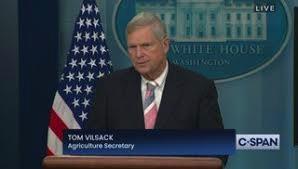 In a statement issued on February 14th, Secretary of Agriculture Tom Vilsack stated, “The USDA is 18 months or so away from identifying a vaccine for the current strain of bird flu and is developing a process to distribute it.” This Orwellian “officialspeak” was also entered into testimony before a Congressional hearing. In a statement issued on February 14th, Secretary of Agriculture Tom Vilsack stated, “The USDA is 18 months or so away from identifying a vaccine for the current strain of bird flu and is developing a process to distribute it.” This Orwellian “officialspeak” was also entered into testimony before a Congressional hearing.
For the record:
- The current H5N1 strain of avian influenza, is essentially a pandemic strain prevalent North and South America, Asia, Africa, and Europe for over three years. The strain is responsible for losses of over 100 million commercial poultry and has made severe inroads into the populations of susceptible marine and migratory birds.
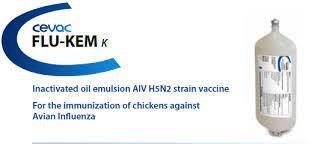
- Vaccines are available off-the-shelf. The major multinational biopharmaceutical manufacturers could, subject to authorization and in the absence of bureaucratic restraints supply the needs of the U.S. poultry industry within weeks. There would be sufficient vaccine to implement regional vaccination programs for required egg production flocks, turkeys, and broiler breeders in areas at risk.
- The USDA does not have to “develop a process to distribute vaccine”. Competing poultry health companies have the capacity to supply vaccines that would conform to international and U.S. standards of safety and efficacy.
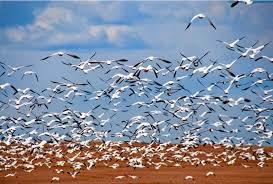
- The USDA has been attempting to eradicate what is essentially a seasonal and regionally endemic disease since early 2022. The Department now recognizes the futility of eradicating an infection that is introduced and disseminated by millions of migratory birds. The most effective biosecurity is less than absolutely effective given the growing reality that the infection can be transmitted over relatively short distances by the aerogenous route.
During the 2024 IPPE, reports were received on studies conducted by the Agricultural Research Service of the USDA on evaluating alternative vaccines. The presentation by the senior ARS scientist concerned was pitched inappropriately and delivered at a level defying comprehension by members of the United Egg Producers. This commentator, who was also bemused by the rapid series of power points and considerations of complex molecular biology, was reminded of the statement by Albert Einstein “if you can’t explain what you are doing to a ten-year old, maybe you do not know what you are actually doing.”
A recurrence of HPAI that is almost inevitable in the spring of 2024 and probably later in the fall suggest that an 18-month period to “identify a vaccine” is an unconscionable delay and will cost both the USDA (i.e. taxpayers), producers and above all consumers many billions of dollars if flocks are unprotected.
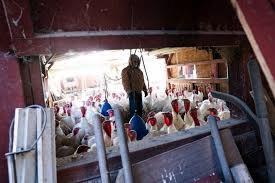
The USDA is “planning to discuss poultry vaccinations with trading partners amid concerns that other countries could restrict imports of vaccinated U.S. poultry”. There has been a groundswell supporting vaccination including endorsement by the World Organization for Animal Health. The World Health Organization is expressing concern over possible emergence of zoonotic avian influenza given the duration of the panornitic and the extension to a wide range of terrestrial and marine mammals.
Clearly the USDA has been negligent in not preemptively pursuing agreements relating to certification of products from vaccinated flocks destined for export as being free of avian influenza at the time of slaughter. PCR is readily available, and it is now possible to differentiate between vaccinated and infected flocks since there is no imperative to rely on serology as in decades past. Unfortunately, administrators are congenitally incapable of adapting policy to new technology or reversing positions in the face of new evidence.
It is questioned who is advising Secretary Vilsack and whether he is obtaining the best possible information based on current scientific and economic realities. It is possible that APHIS administrators are stuck in a 1990’s time warp and are hidebound by precedent and policy that inhibits consideration of practical and realistic alternatives. To their way of thinking, adoption of a limited industry-segment and regional vaccination program would represent a denial of previous decisions encompassed in the ‘whack-a-mole approach to control of HPAI applied during the 2022-2024 epornitic.

|
Governor Jim Pillen of Nebraska Reverses Position on Summer Feeding
|
02/14/2024 |
|
Governor Jim Pillen of Nebraska has reversed his previous decision and will now accept federal funds to assist families in need to feed children during the summer school vacation. His recent decision to accept $18 million in federal funds represents a reversal from his previous position. Governor Pillen stated previously that he did not believe in “welfare” which is somewhat hypocritical since according to news reports he accepted federal funding during the COVID pandemic for his hog plant.
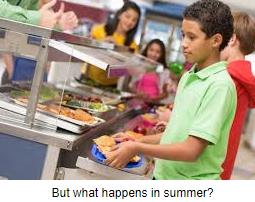
His acceptance of federal funding for supplemental feeding was in part attributed to a campaign in the Nebraska Legislature led by Senator Jen Day to override the decision by the Governor. In addition he was confronted by a petition signed by over 6,000 citizens of the state, protest vigils outside his residence and scathing criticism on social media.
Nebraska now becomes the 37th state in the Nation to accept funding that will benefit 150,000 children who qualify for reduced cost and free meals when school is in session.
Governor Pillen has apparently turned the situation to his advantage by announcing his flip-flop at a press conference joined by 21 state senators representing his party affiliation.
It is difficult to reconcile his statement that “children are the future of Nebraska” with a politically inspired refusal to accept Federal funds to alleviate hunger in a needy population. The question remains as to what motivated the original decision that appeared firm at the end of 2023? A disinclination to accept that there were needy children in Nebraska? A reluctance to accept funds from the Federal government perceived as politically inappropriate in a politically polarized environment? A realization that recipients would be from families denying him political support and therefore inconsequential?
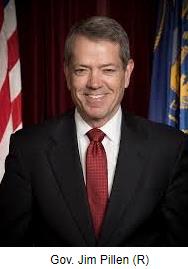 Irrespective of motivation, it is evident that Gov. Pillen has now made the correct decision having consulted with a range of advisors and visited with constituents. He may have been influenced by a recent poll showing state Senator Tony Vargas (D) runing neck-and-neck with incumbent Representative Don Bacon (R) who was previously considered to be a winner for reelection the right-leaning 2nd Congressional District. Whatever the influences on Gov. Pillen his reversal on supplemental feeding of children is correct and pragmatic. More power to him. Irrespective of motivation, it is evident that Gov. Pillen has now made the correct decision having consulted with a range of advisors and visited with constituents. He may have been influenced by a recent poll showing state Senator Tony Vargas (D) runing neck-and-neck with incumbent Representative Don Bacon (R) who was previously considered to be a winner for reelection the right-leaning 2nd Congressional District. Whatever the influences on Gov. Pillen his reversal on supplemental feeding of children is correct and pragmatic. More power to him.
It is a primary responsibility of governors, mayors and other elected officials to use the powers of their office to benefit all of their citizenry and to pay special attention to the less fortunate. Children need adequate food to grow and learn. Stunting physical and mental development through deprivation will in the long term be more expensive to communities than providing adequate nutrition.

|
The Kipster Concept – Applicability to the U.S. ?
|
02/05/2024 |
|
 In 2017 entrepreneurs in Holland led by Ruud Zanders established the Kipster concept to enhance both sustainability and the welfare of laying hens. The company established a supply agreement with Lidl to exclusively market eggs produced under the system. Market demand in the Netherlands at the time and the perception of required egg-attributes by the founders influenced the design of housing and the procedures selected to produce Kipster eggs. The prototype house incorporated solar panels, skylights and a combination of indoor aviary modules, and an “indoor garden” Two “outdoor gardens” on either side of the building allowed liberal space requirements. Design features in the building and equipment were incorporated to conserve energy. In 2017 entrepreneurs in Holland led by Ruud Zanders established the Kipster concept to enhance both sustainability and the welfare of laying hens. The company established a supply agreement with Lidl to exclusively market eggs produced under the system. Market demand in the Netherlands at the time and the perception of required egg-attributes by the founders influenced the design of housing and the procedures selected to produce Kipster eggs. The prototype house incorporated solar panels, skylights and a combination of indoor aviary modules, and an “indoor garden” Two “outdoor gardens” on either side of the building allowed liberal space requirements. Design features in the building and equipment were incorporated to conserve energy.
In keeping with the intent of the founders of Kipster, available recycled ingredients were specified for inclusion in feed for laying hens. This involved substitution of bakery waste for a proportion of corn and also meat and bone meal as a protein source (in the U.S.), sparing vegetable protein. In western Europe conventional diets include combinations of domestic and imported soybean meal, canola meal and sunflower meal as contributors to protein and hence amino acid requirements.
Based on prevailing sentiment in 2018, the Kipster concept required grow-out of cockerel chicks that would otherwise have been destroyed at the time that sister pullets were hatched. This requirement is now unnecessary in the E.U. given the advent of commercial gender-sorting of eggs bearing either male or female embryos at or before nine days of incubation. The requirement for grow-out of cockerels imposes additional cost and is contrary to optimal sustainability but is retained in the U.S. model.

In 2020, the Kroger Company obtained a franchise for the Kipster model in the U.S. Whether the Nation’s second-ranked retailer in egg sales actually evaluated the financial aspects in addition to marketing considerations is doubtful for other than a specialty niche. The question arises as to whether the claimed sustainability and welfare aspects are in reality recognized by consumers who will be willing to pay a premium for these non-quantifiable attributes. Will the Kipster image generate a preferential margin over the long term in comparison to available specialty eggs including nutritionally enriched, free range, pasture-reared and other variations?
The Purdue University Consumer Food Insights (Volume 2, issue 8) recently conducted a survey involving 2,500 respondents on their ranking of motivation to select specific food products. The Purdue University investigators applied conjoint analysis using orthogonal comparisons to differentiate among attributes and establish a real understanding of motivation. Using pork as an example, the relative weighting among 100 points leading to a purchase decision included:-
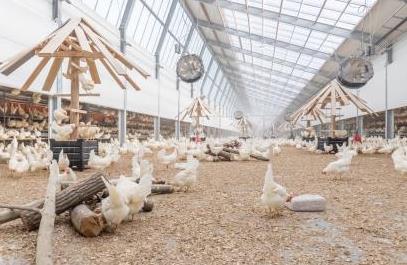
- Price, 23;
- Taste, 22;
- Freshness, 18;
- Nutritional value, 14;
- Appearance, 11;
- Welfare, 7;
- Sustainability, 5.
While it is acknowledged that the study was conducted on pork and not on eggs, the low ranking of both welfare and sustainability in relation to price and taste are noteworthy. Is it questioned whether Lidl in Holland or Kroger in the U.S. consider that a limited but affluent demographic will preferentially adopt the Kipster Brand that offers claimed welfare and sustainability in preference to competitive cage-free production systems. A second consideration is whether the presence of Kipster eggs in a store cooler provides a halo effect, extending the perception of added welfare and sustainability to conventional store-branded eggs?
The impression gained from the Kipster website and the history and adoption of the Kipster model suggests that a bottom-up approach was used by the developers to maximize sustainability and welfare as the bedrock of the concept. In contrast, a more realistic approach for the U.S. would have been to determine the needs of a broad range of consumers and adopt a system that satisfies the desired attributes of price, taste, freshness and nutritional value. This was the basis of the Nation’s widely accepted nationally distributed brand over 30 years ago.
In 2019 Kroger approached MPS Egg Farms, a large and progressive existing egg supplier, to establish a Kipster production unit in the U.S. The basic house as designed and erected in Holland was slightly modified. MPS erected and now operates four houses in North Manchester, Indiana. It is noted that in Holland there are only three Kipster houses currently producing eggs with the initial house on one farm and two houses on a second. The MPS farm with four houses effectively exceeds the number erected in Holland over a five-year period. This raises the question of whether the concept provides a satisfactory return that would have encouraged individual farmers and investors to adopt the model. The Kipster concept is reminiscent of the 2009 Rondeel Concept developed jointly by Vencomatic and Wageningen University. The system was widely promoted and supported by the Albert Heijn supermarket chain, a subsidiary of Ahold-Delhaize. Only a handful of Rondeel units were erected and placed into production.
The MPS Kipster complex comprises four houses each holding 24,000 hens. Each house comprises two longitudinal ‘night-time’ areas with total of 24,212 square feet allowing 1.01 square foot per hen. An “indoor garden” 358 by 33 feet allowing 1.00 square foot per hen is located midway in the house between the night-time areas. Drop-down doors can be closed to confine flocks to the two “night-time” areas The ‘indoor garden has skylights for natural daylight and incorporates artificial trees for roosting, hay-bales and other enrichments on a base of wood shavings. Two “outdoor gardens” are provided each 32 feet wide parallel with each side of the house providing 1.0 square feet of exterior access per bird. The enclosed area of a Kipster house provides 1.61 square feet per hen and the outside area comprises 0.94 square feet.
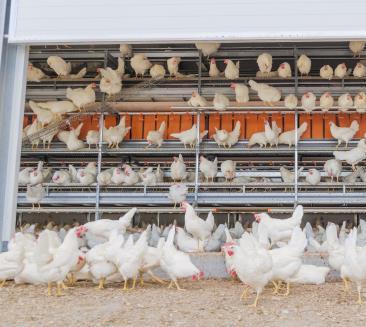 The ‘night-time’ areas are equipped with Big Dutchman Natura® Step Cages equipped with feeders and nipple drinkers. The communal nest system incorporates tilting floors, center rollaway collection and additional side belts for system-laid eggs to optimize the yield of clean shells. Big Dutchman provided an OptiSec Manure Drying System that contributes to sustainability by reducing the moisture content of manure to 10 to 15 percent depending on ambient temperature. Big Dutchman also supplied an Innoplus Exhaust Air Scrubber to remove dust and odors from the exhaust stream consistent with western European requirements, although of questionable need for the U.S. The ‘night-time’ areas are equipped with Big Dutchman Natura® Step Cages equipped with feeders and nipple drinkers. The communal nest system incorporates tilting floors, center rollaway collection and additional side belts for system-laid eggs to optimize the yield of clean shells. Big Dutchman provided an OptiSec Manure Drying System that contributes to sustainability by reducing the moisture content of manure to 10 to 15 percent depending on ambient temperature. Big Dutchman also supplied an Innoplus Exhaust Air Scrubber to remove dust and odors from the exhaust stream consistent with western European requirements, although of questionable need for the U.S.
According to Sam Krouse CEO of MPS, performance from the initial placements is comparable with aviaries and other cage-free systems. With acceptable U.S. production parameters, average output is 200 cases per day. Neither capital investment per hen nor production costs including feed, labor and power have been disclosed. Estimates of capital costs suggest a higher unit price per hen compared a conventional aviary system operated at UEP density. Any differential will be reflected in the fixed component of production costs. It is noted that the entire farm of four houses is effectively equivalent to one level of a typical U.S. multi-level (two to four) aviary house with a single foundation and roof. Labor cost is proportionately higher with four relatively small houses compared to an in-line aviary house. There is no indication of the price of feed that is a major component of variable cost. Bakery waste with xylanase and amino acid supplementation would probably be equivalent in price to corn. Animal byproduct meal is included in laying diets based on the need to incorporate “recycled ingredients”. There is a decided consumer preference for all-vegetable diets that has become the standard for U.S. specialty eggs.
It is frequently difficult to transfer concepts that may be acceptable and financially beneficial at a point in time in a nation to a completely different operating and marketing environment without considerable adaptation and a required degree of flexibility. A few years ago the significant U.S. marketer of specialty eggs was approached by a consortium of Japanese producers to license the concept for their nation. Investigation of the needs of the market in Japan, prevailing production costs and numerous technical restraints that emerged required such extensive modification of the U.S. program that the initiative was abandoned.
While it is too early to evaluate the Kipster concept with respect to the U.S. it certainly has not blown out the doors in Holland over the past five years. Development of the system in a highly competitive market such as the U.S. will probably confine adoption to a specific niche. Based on current consumer motivation, any novel U.S. egg concept would rank price, commensurate with quality and freshness above the attributes of sustainability and welfare. Nutritional value and safety would also be highly ranked. Accordingly, the structure of an enterprise, the design of housing, specification of equipment, formulation and sourcing of feed and selection of packaging would all be conditioned by the needs of the market.
At the end of the day Kroger could not have picked a better partner than MPS to develop the first Kipster operation in the U.S. The question remains as to how both Kipster and their licensee Kroger, will expand the concept to supply other U.S. regions with eggs. There is no indication of how Kroger will promote sustainability and welfare against USDA certified organic and other cage-free and pasture-housed products. It is also questioned whether Kroger will be willing to pay a premium to producers to cover the additional fixed and variable costs of nest-run production in comparison to alternative cage-free housing systems. Certainly if margins justify the difference over the intermediate term but unless either Kroger or Kipster are willing to spend on promoting the concept on mainstream and social media growth will be limited in a competitive market.

|
Corn Ethanol is a Wasteful Source of Energy
|
01/31/2024 |
|
 Tom Philpott writing in the January 19th edition of The New Republic documented the fallacy of corn-based ethanol as a sustainable source of energy. During the energy crisis of the 1970’s, the concept of using corn as a substrate to produce ethanol was initiated. The industry grew slowly given that ethanol had to compete with petroleum products on a level playing field. In 2007, the Renewable Fuel Standard was developed essentially to make the U.S. independent of oil supplied by ‘unfriendly’ nations. According to Philpott, in 2004 eleven percent of corn was converted to ethanol and byproducts. This proportion has increased to a projection of 32 percent of the 2024 crop. Tom Philpott writing in the January 19th edition of The New Republic documented the fallacy of corn-based ethanol as a sustainable source of energy. During the energy crisis of the 1970’s, the concept of using corn as a substrate to produce ethanol was initiated. The industry grew slowly given that ethanol had to compete with petroleum products on a level playing field. In 2007, the Renewable Fuel Standard was developed essentially to make the U.S. independent of oil supplied by ‘unfriendly’ nations. According to Philpott, in 2004 eleven percent of corn was converted to ethanol and byproducts. This proportion has increased to a projection of 32 percent of the 2024 crop.
There is no issue that unites both Republican and Democratic legislators from corn-producing states than preserving and extending the Renewable Fuel Standard. Without the mandated diversion of approximately 5 billion bushels of corn to ethanol, the price for the commodity would be far lower, possibly under the cost of production and accordingly reducing output in addition to maintaining the artificially high value of cropland.
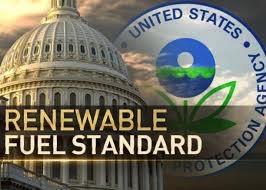 Every bushel of fermented corn produces one-third each of ethanol, dried distillers solubles and carbon dioxide, a greenhouse gas. At this time, carbon dioxide should be sequestered on site subject to suitability of the ground on which the plant is located. Plans to install a web of pipelines to transport carbon dioxide from plants to a disposal site in North Dakota have been scuttled by the very farmers who benefit from ethanol production but reject the environmental effects of their crop. Every bushel of fermented corn produces one-third each of ethanol, dried distillers solubles and carbon dioxide, a greenhouse gas. At this time, carbon dioxide should be sequestered on site subject to suitability of the ground on which the plant is located. Plans to install a web of pipelines to transport carbon dioxide from plants to a disposal site in North Dakota have been scuttled by the very farmers who benefit from ethanol production but reject the environmental effects of their crop.
Although ethanol is quoted on the Chicago Mercantile Exchange, it does not trade due to indifference to the commodity. Exports represent less than ten percent of production amounting to approximately one million barrels per day. Attempts to increase demand by marketing higher gasoline blends exceeding ten percent would appear to have languished due to the high cost of installing multi-blend fuel pumps at filling stations and the inability of older vehicles to run on more than a ten percent ethanol content.
The ethanol industry is justifiably concerned over the rise in EV adoption although sales of these vehicles have leveled in the U.S. As more charging points are installed in both homes and for public use in accordance with current federal climate-mitigation policy, the demand for ethanol will shrink.
Claims that ethanol is “clean burning” are fallacious. Even with E-15 blend, 85 percent of fuel used to power a vehicle comprises gasoline. Studies that take into account all of the energy inputs to grow and harvest corn and convert the product to ethanol suggest that there is no net energy saving but that carbon dioxide produced is detrimental to the environment if vented. The quantity of water required for cooling bioreactors is immense, occassionaly depleting aquifers in the vicinity of plants.
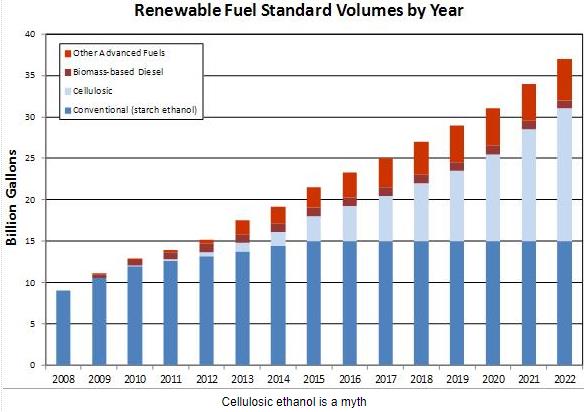 |
According to the 2023 Iowa Climate Statement accepted by 200 scientists in over 30 colleges and universities, a one-acre solar farm produces as much energy as 100 acres of corn-based ethanol. The problem of large arrays displacing corn production relates to deficiencies in the grid. If energy from solar arrays is available to charge EV’s energy utilization is highly efficient since electric vehicles convert over 90 percent of energy to motion compared to internal combustion engines with an efficiency of less than 25 percent.
Government policy on ethanol that may have been justifiable at the turn of the century is now a liability. The RFS represents an indirect tax on all who travel and eat. In millennia to come, archeologists will wonder at the inhabitants of the Midwest who apparently worshiped large tanks much as the Druids erect Stonehenge and the ancient Egyptians erected their pyramids and obelisks.
Unfortunately, ethanol has acquired a momentum that is now impossible to restrain notwithstanding distortion of the agro-economy. Ethanol is maintained by the mendacity of politicians supported by the ethanol industry and their constituents at the cost of all consumers in common with livestock and poultry producers.

|
Intensive Livestock Agriculture Faces Opposition over Environmental Concerns
|
01/22/2024 |
|
The recent COP 28 Environmental Conference held in the United Arab Emirates generated a declaration on sustainable agriculture, resilient food systems and climate action signed by 150 nations. The declaration included, “Maximize the climate and environmental benefits while containing and reducing harmful impacts associated with agriculture and food systems---and shifting from higher greenhouse gas-emitting practices to more sustainable production and consumption approaches. The Food Agriculture and Water Day, a component of COP 28 specifically addressed, “high consumption of food products with high GHG footprints in some locations contributing unnecessarily to the emissions by agrifood systems.”
 The conclusion of the COP 28 Conference was encapsulated in a letter signed by 250 environmental groups and scientists urging the U.S. Department of Agriculture to “immediately make meat and dairy reduction a key part of climate strategy.” Under the current administration we have a paradoxical situation with the Department of Agriculture openly assuming some of the responsibilities of the Environmental Protection Agency and establishing policies that are contrary to the best interests of agriculture. Hopefully reason will prevail under a subsequent Administration under a Secretary with a balanced perspective. The conclusion of the COP 28 Conference was encapsulated in a letter signed by 250 environmental groups and scientists urging the U.S. Department of Agriculture to “immediately make meat and dairy reduction a key part of climate strategy.” Under the current administration we have a paradoxical situation with the Department of Agriculture openly assuming some of the responsibilities of the Environmental Protection Agency and establishing policies that are contrary to the best interests of agriculture. Hopefully reason will prevail under a subsequent Administration under a Secretary with a balanced perspective.
In previous decades, opposition to intensive livestock production of both meat and dairy products was predicated on considerations of welfare. Advocates of a vegan lifestyle based their attacks on animal agriculture on philosophic grounds, relating to the morality of raising and slaughtering of herds and flocks. Opponents of meat and dairy production have now merged with the environmental movement claiming that meat consumption is a major contributor to deforestation and greenhouse gas emissions.
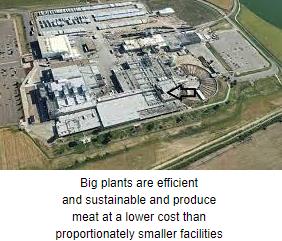 Signatories to the January 11th letter to the Secretary of Agriculture note that meat and dairy products contribute materially to the one-third of global greenhouse gases generated by all food and agricultural activities. The emphasis on protein production and the demonization of meat and dairy consumption was a cynical attempt by the organizers of COP 28 to divert attention from the impact of petroleum sources of energy representing the income of the host Nation. Naturally those in favor of a vegan lifestyle cited the high level of meat consumption in the U.S. and advocated replacement with plant-based foods. Presentations and communiqués from the COP 28 Meeting equated projected savings in greenhouse gas emissions by eliminating meat consumption with the enforced obsolescence of automobiles powered by internal combustion engines. Signatories to the January 11th letter to the Secretary of Agriculture note that meat and dairy products contribute materially to the one-third of global greenhouse gases generated by all food and agricultural activities. The emphasis on protein production and the demonization of meat and dairy consumption was a cynical attempt by the organizers of COP 28 to divert attention from the impact of petroleum sources of energy representing the income of the host Nation. Naturally those in favor of a vegan lifestyle cited the high level of meat consumption in the U.S. and advocated replacement with plant-based foods. Presentations and communiqués from the COP 28 Meeting equated projected savings in greenhouse gas emissions by eliminating meat consumption with the enforced obsolescence of automobiles powered by internal combustion engines.
The signatories to the letter call on the USDA to make dairy and meat reduction a significant component of USDA climate strategy. Specifically, the signatories requested USDA to increase “healthy, plant-based foods in school meal programs.” It was also suggested that sustainability should be incorporated into the next edition of the Dietary Guidelines for Americans, emphasizing plant-based consumption.
|
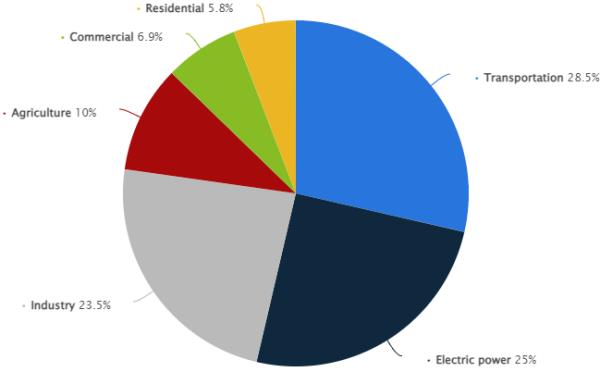
|
Since 2021, the USDA has attempted to dismantle the current structure of the meat and poultry industry. This has involved an emphasis on the risks associated with centralization and consolidation and consistently demonizing the four large meat packers. Concurrently the USDA has attempted to develop regional small-scale production at great cost to taxpayers. None of these initiatives have influenced either the scale of domestic production or volume of exports. The USDA has expended billions in public funds on capricious projects, mostly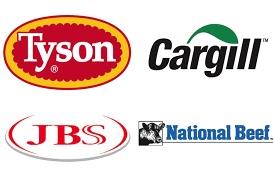 directed to cooperatives, the alleged disadvantaged and minority farmers but with negligible controls and an inability to measure return on expenditure. directed to cooperatives, the alleged disadvantaged and minority farmers but with negligible controls and an inability to measure return on expenditure.
Organizations representing intensive livestock production should take heed of the shifting approach of opponents and preempt adverse publicity through proactive social and mainstream media campaigns. These will be required to demonstrate the benefits of balanced diets, advances in sustainability and of economies of scale in production.

|
Prospect of SCOTUS Overturning the 1984 Chevron Decision
|
01/21/2024 |
|
On Wednesday January 17th SCOTUS heard oral arguments in related cases Relentless v Department of Commerce and Looper Bright Enterprises v Raimondo, arising from similar decisions handed down by the Appeals Court for the District of Columbia. These cases strike at the heart of Federal agencies to interpret law, issue regulations and impose constraints on industry. At issue is the decision by the National Marine Fisheries Service to require monitors on fishing boats to ensure compliance with catch sizes of herring and also for boat operators to pay for the service. 
The two cases considered by SCOTUS have the potential to reverse the 1984 Chevron USA Inc. v Natural Resources Defense Council decision that serves as the foundation of the powers exercised by administrative agencies. The Court held that “Where a statute is silent or ambiguous with respect to a specific issue before an agency, courts may not substitute a construction of a statutory provision for a reasonable interpretation made by an agency.” Essentially courts are currently subservient to decisions made by agencies, based on the apparent superior knowledge and understanding of specific technical issues leading to bureaucratic overreach.
Opponents of the Chevron decision consider that the framers of the Constitution vested the judiciary with the power to interpret law. This position is held by the current conservative majority of SCOTUS. Opponents of the 1984 Chevron decision consider that it violates due process and removes from Federal courts their obligation to apply independent judgment.
The Solicitor General Elizabeth Prelogar argued that Congress could delegate authority to agencies, given the restrictions imposed by the Administrative Procedure Act that guards against capricious and arbitrary decisions. The Solicitor General pointed to decisions in favor of administrative agencies in more than seven cases that were decided on the basis of Chevron. She noted, “Overruling a precedent as foundational as Chevron should require a truly extraordinary justification and petitioners do not have one.”
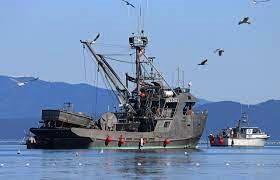
Should Chevon be overturned, Federal agencies would have significantly less power despite the claimed expertise required to interpret law that may not be within the province of Federal judges, especially with regard to emerging technology.
In recent years SCOTUS has deviated from precedent with respect to Roe v Wade in addition to established policies on admissions standards for universities. This suggests that Chevron may be viewed by SCOTUS as an outmoded principle in establishing judicial deference to administrators. Overruling Chevron will severely limit the powers of Federal agencies consistent with a bias towards limiting bureaucratic regulation of society, industry and agriculture. The area of environmental regulations that impinge on intensive livestock production will be the most important with respect to the poultry industry. Other areas in which regulations may be eased include road transport, regulation of waterways, health and safety requirements for workers and mergers and acquisitions. These restraints would all be challenged in a post-Chevron reality.

|
Broad Support for Summer EBT Program
|
01/15/2024 |
|
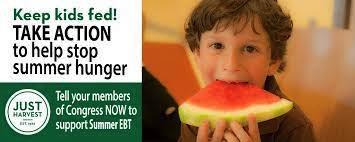 To date, 34 states serving as many as 21 million children have opted into the Federal Summer EBT program for 2024. The program will distribute $2.5 billion as benefits among eligible recipients providing up to $40 per month per child for the summer period when schools are in recess. To date, 34 states serving as many as 21 million children have opted into the Federal Summer EBT program for 2024. The program will distribute $2.5 billion as benefits among eligible recipients providing up to $40 per month per child for the summer period when schools are in recess.
The program is an extension of the Pandemic EBT program that was established to provide food for needy children when schools were closed due to COVID. Almost all states have programs providing free or subsidized meals for children of families who are financially challenged. The Summer EBT program would fill the three-month gap left during summer school recess.
A USDA demonstration program has shown that children receiving summer EBT benefits received diets of higher quality and were subject to a lower level of food insecurity. The Summer EBT program was strongly endorsed by professionals attending the White House Conference on Hunger, Nutrition and Health and the program was enacted through bipartisan support in 2023.
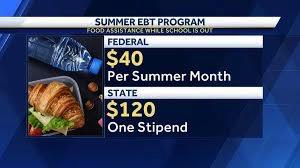
According to USDA Deputy Secretary, Xochitl Torres Small, “No kid should have to spend their summer hungry without nutritious food.” She added, “Summer EBT is a giant step forward in meeting the needs of our nation’s children and families throughout the year and especially during the summer months.”
Notwithstanding broad support for the program with demonstrated advantages in health and development, Governors of 15 states have spurned federal funds, declining to participate. Governor Kim Reynolds (R) of Iowa stated, “Federal COVID-area cash benefit programs are not sustainable and don’t provide long-term solutions for the issues impacting children and families.” Governor Jim Pillen (R) of Nebraska commented that his state did not need the aid and could tackle hunger by operating feeding sites. Texas has not planned to participate in the Summer EBT program claiming that there was no final rule from the USDA on administration of the program for 2024. Texas suggested that it might consider providing benefits in a subsequent year. Governor Kevin Stitt (R) of Oklahoma noted that his state would not participate in Summer EBT in 2024 based on “technology and staffing issues” but would contemplate future involvement. It is noted that within the state of Oklahoma, the Cherokee and Chickasaw Nations with Federal recognition will be participating on behalf of their children. According to Chris Bernard, President and CEO of Hunger Free Oklahoma, “Our state is always in the bottom ten in the country in terms of food security, families and kids are struggling and the summer food program was something we’ve supported for a long time.”
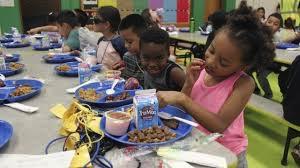
Apart from improving child nutrition that has lifelong benefits, the summer EBT program will increase consumption of foods including eggs that are permitted under USDA SNAP-WIC rules.
The Summer EBT program that was introduced to cover the summer school recess is complementary to a move to serving universal free school meals. States that have introduced or have expanded access to school meals include New Jersey. Children from families in this state with an income of up to twice the federal poverty level will receive free meals.
Oklahoma, despite the rejection of 2024 Summer EBT funding, is considering free school meals statewide with an income restriction. South Dakota will subsidize breakfast and lunch servings at schools. Florida is considering free school meals regardless of income. States including Arizona, Ohio and Louisiana have programs subsidizing meals during school terms.
The USDA will continue to provide support and training for states, territories and tribes intending to implement Summer EBT in 2024 and in subsequent years.
 Depriving children of necessary food on philosophical or political grounds is unconscionable. The attitude expressed by apparently well-fed Governor Jim Pillen of Nebraska, who is on record of stating “I don’t believe in welfare” is both inhumane and neglects reality. Similar sentiments expressed by other politicians denote a streak of cruel indifference that ultimately will be counterproductive in terms of long-term expenditure of state funds. EGG-NEWS strongly supports investment in school feeding, providing that programs are operated with a high standard of nutrition and devoid of waste and are administered equitably with transparency and efficiency. Depriving children of necessary food on philosophical or political grounds is unconscionable. The attitude expressed by apparently well-fed Governor Jim Pillen of Nebraska, who is on record of stating “I don’t believe in welfare” is both inhumane and neglects reality. Similar sentiments expressed by other politicians denote a streak of cruel indifference that ultimately will be counterproductive in terms of long-term expenditure of state funds. EGG-NEWS strongly supports investment in school feeding, providing that programs are operated with a high standard of nutrition and devoid of waste and are administered equitably with transparency and efficiency.

|
USDA Must Provide Accurate Flock Numbers
|
01/11/2024 |
|
The report on the Monthly Cage-Free Egg Flock, retrievable under the STATISTICS tab, and the EGG-WEEK report in this edition question the accuracy of USDA data on flock numbers. For many months, USDA has reported almost consistent small increases in the size of the national flock as new pullets attained maturity and were placed in laying houses. The number of hens in the total flock and the national flock have also corresponded closely on a weekly basis.
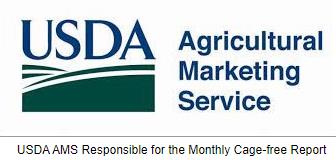
Over the past twelve weeks, 13 million hens were depleted of which approximately 47 percent were classified as cage-free including approximately four million hens in California. The estimated six million cage-free hens known to have been depopulated through informal collection of data by the UEP are not adequately reflected in the Monthly Cage-Free report covering December 2023, Total cage-free hen numbers for the three months of the fourth quarter, were respectively, 126.2 million, 125.1 million and 123.9 million. Given a fairly constant number of pullets placed 22 weeks before the given monthly flock figures, and the fact that cage-free hens are generally not molted, values posted by USDA cannot be reconciled with estimated numbers based on flock depletions and pullet replacements. The overestimation of flock numbers may be the reason for the unrealistically high average hen-month production data noted on the monthly Cage-Free Reports during the fourth quarter of 2023.
Given the importance of weekly flock numbers, discrepancies distort prices and detract from rational decisions on molting and age-related depopulation. USDA should provide an explanation for evident discrepancies and should display more transparency in how they arrive at numbers for cage-free and conventional hens in the total and producing flocks.

|
Confirmation of Aerogenous Shedding of AI Virus by Migratory Birds
|
12/31/2023 |
|
A recent publication* from Taiwan confirmed that concentrations of migratory birds on wetlands excrete avian influenza virus that can be detected by air sampling. In the study, 357 ambient air samples were collected seasonally between October 2017 and December 2019 and were analyzed using rtPCR assay.
Strain H7 was detected in 12 percent of the air samples, H5 in 8 percent and H9 in 10 percent. The frequency of isolation was related to low temperature and the concentration of birds including common teal, spot-billed ducks, Eurasian widgeons, spoonbills and cormorants.
The authors proposed that air sampling could be a predictive technique for outbreaks of avian influenza.
Apparently, this publication was the first to demonstrate airborne avian influenza in the vicinity of wild birds. The observation lends support to a frequently expressed opinion in EGG-NEWS that HPAI can be spread by the aerogenous route over distances of up to a mile depending on wind direction, cloud cover, ambient temperature and humidity. Avian influenza virus shed by migratory birds is obviously deposited on soil and vegetation and in theory can be aerosolized on dust and be transmitted by wind currents. Houses with negative-ventilation contain flocks that are vulnerable to infection by the aerogenous route given the large volume of air extracted by fans.
The implications from the observations in Taiwan are self-evident. Even with extreme structural and operational biosecurity, complexes cannot be absolutely protected from introduction of HPAI virus.
Given the recent series of outbreaks involving depopulation of 12 million hens and a history of seasonal waves of infection on a regional basis since 2021 and the evident futility in attempting eradication, protection in the intermediate and long term will have to incorporate vaccination as an adjunct to biosecurity.
The previously stated maxim, Avian influenza is the Newcastle disease of the 2020’s suggests the approach to control going forward. Newcastle disease was as commercially significant and as catastrophic in the 1960s and 1970s as avian influenza at the present time. It is questioned as to how long APHIS can pursue a program of “whack-a-mole” control without accepting the necessity for vaccination on a regional basis for turkeys and egg production flocks.
The needs and concerns of the broiler industry over exports are justifiable considerations. Given that HPAI is now worldwide in distribution and with more nations adopting vaccination as a preventive measure and with the recent endorsement by the WOAH, serious consideration should be accorded to establishing immune populations in high-risk states. To their credit, APHIS is initiating field trials on vaccination but this should not be regarded as a delaying tactic. Costs to the public sector for indemnity and control and to consumers who will pay more for eggs are also financial considerations in developing a national strategy to suppress HPAI with no prospect of long-term eradication.
*Zhang, J. L. et al. (2022).Airborne avian influenza virus in ambient air in the winter habitats of migratory birds. Environ. Sci. Technol. 56:15365-15376.

|
Responses Required to Organizations Opposed to Intensive Livestock Production
|
12/23/2023 |
|
Emily Ellis, Manager for Communications at the Animal Agricultural Alliance provided a valuable summary of relevance to Subscribers concerning recent meetings of organizations opposed to intensive livestock production. It would appear from her report that 2024 will bring “more of the same” with respect to action by our opponents.
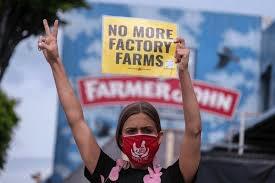
Direct Action Everywhere (DxE) will continue with intrusions onto farms with the expressed intention of “rescuing animals and birds”. The livestock that they pretend to care for are not really the significant issue but their intent is to generate publicity in order to attract donations for their cause. Basically if the media documents their actions they are heroes. If they are arrested then they are martyrs. Any organization that regards “animal agriculture as a complex machine refined over centuries and designed to torture and destroy all the living being within it” has a decidedly distorted view of the world and food production. If livestock producers were “torturing” their herds and flocks they would not achieve the excellent production results necessary to survive in a competitive market and to supply our nation and those that import our products with inexpensive protein.

The Humane Society of the United States has emphasized the SCOTUS decision to uphold California Proposition #12. This ruling has more impact on the hog industry with their recalcitrance over gestation confinement than on egg production. There has been adequate transition from conventional cages to alternative systems to supply states that have mandated cage-free egg production. On the flip side, HSUS and kindred organizations are extremely worried over the proposed Ending Agricultural Trade Suppression Act (EATS). This legislation would effectively negate required standards arising from voter initiatives with respect to interstate commerce. The EATS Act is framed too broadly and will require considerable modification to eliminate provisions that are contrary to existing federal laws. The question is now one of timing as to whether a more focused version should be considered as a free-standing bill or incorporated into the much-delayed 2023 Farm Bill
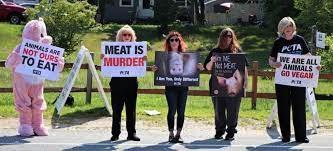
Organized agriculture can expect more intensive efforts to engage legislators in issues relating to livestock welfare. Attempts will be made to link livestock production with sustainability and climate change and plant-based alternatives will be promoted to displace red meat, milk and eggs. Legislation will be directed to choke points in the chain of production by imposing unnecessary restraints. An example was concerted opposition to the New Swine Inspection System that contributed to efficiency by increasing line speed and rationalizing inspection. The prolonged litigation associated with this issue illustrated the apparent commonality of purpose among diverse activist groups. There was common cause among labor unions, opponents of  intensive livestock production and environmentalists attempting to block an advantage for packers and ultimately consumers. Similar cooperation is evident in opposition to serving whole milk in schools with dieticians, public health advocates and anti-dairy activists joining forces to promote alternatives. Proposed restrictions on CAFOs with a focus on waste treatment has engendered collusion among environmentalists, welfare activists and public health advocates to lobby the EPA and Congress for upgraded standards that will be expensive and technically challenge to meet. intensive livestock production and environmentalists attempting to block an advantage for packers and ultimately consumers. Similar cooperation is evident in opposition to serving whole milk in schools with dieticians, public health advocates and anti-dairy activists joining forces to promote alternatives. Proposed restrictions on CAFOs with a focus on waste treatment has engendered collusion among environmentalists, welfare activists and public health advocates to lobby the EPA and Congress for upgraded standards that will be expensive and technically challenge to meet.
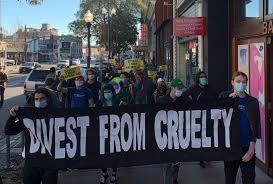
During 2024 associations representing animal and poultry producers will be faced with negative publicity in both mainstream and social media. Appropriate rebuttals and where possible preemptive positive material should be developed and posted to counter attacks on the existing and efficient protein supply chain.

|
Impossible Foods CEO Gets it Wrong
|
12/18/2023 |
|
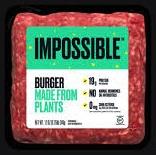 In an address to the Ad Week Conference, Peter McGuinness, CEO of Impossible Foods, attributed the dismal market growth of plant-based meat alternatives to inappropriate positioning of the product. He commented that the challenge for his industry is to “try to convince the meat-eating public to sample alternative protein”. Reference to the financial reports of competitors Beyond Meat and Maple Leaf Foods dispels this idea. Both companies showed high rates of initial growth followed by a plateau and a decline in sales volume. This indicates that people tried and rejected the products based on quality, price and lack of culinary versatility. Essentially products from Impossible Foods and Beyond Meat imitate ground beef as ersatz products of questionable organoleptic quality. In many cases, one try was enough to satisfy curiosity. As for those committed to consuming real meat and chicken, the unfavorable price differential and appearance are turn-offs in a cost-conscious economy. In an address to the Ad Week Conference, Peter McGuinness, CEO of Impossible Foods, attributed the dismal market growth of plant-based meat alternatives to inappropriate positioning of the product. He commented that the challenge for his industry is to “try to convince the meat-eating public to sample alternative protein”. Reference to the financial reports of competitors Beyond Meat and Maple Leaf Foods dispels this idea. Both companies showed high rates of initial growth followed by a plateau and a decline in sales volume. This indicates that people tried and rejected the products based on quality, price and lack of culinary versatility. Essentially products from Impossible Foods and Beyond Meat imitate ground beef as ersatz products of questionable organoleptic quality. In many cases, one try was enough to satisfy curiosity. As for those committed to consuming real meat and chicken, the unfavorable price differential and appearance are turn-offs in a cost-conscious economy.

McGinness considers that the manufacturers of plant-based meat alternatives stressed sustainability and environmental advantages as the major attributes of their products. He stated, “There was a wokeness to it and a bi-coastalness to it and that pissed most of America off.” If it were that simple, the situation could be corrected. Unfortunately, McGuinness is attempting to sell an inferior product at a higher price than the real product it has attempted to displace.
All consumers are in favor of welfare, environmental sustainability and other feel-good attributes but when it comes to the check out line, they’re not willing to pay for nonquantifiable claimed advantages--especially with defective quality.
There will always be a limited market for alternatives to real meat among affluent health and environmentally conscious consumers who are willing to pay more and enjoy the self-satisfaction associated with consumption of alternatives to real meat and poultry. McGuinness needs to look elsewhere for the poor performance of his segment other than inappropriate positioning and promotion.

|
Collective Responsibility to Limit HPAI
|
12/18/2023 |
|

As the fourth quarter total of layer hens depopulated as a result of HPAI passes the ten-million mark in eight weeks, there is concern that the infection is now both seasonally and regionally endemic. USDA-APHIS has demonstrated variable efficiency in response to outbreaks with delays in depopulation and disposal evident in California albeit with a quicker response in the Midwest. Rapid depopulation of affected farms within high-risk areas is essential to prevent multiplication and dissemination of virus either through defective biosecurity or most likely by the airborne route over distances of up to a mile depending on weather conditions.
The critical period relates to immediate post-incubation, approximately five days after introduction of infection, encompassing the period before onset of high mortality. Failure to suspect or recognize an infection requiring an immediate imposition of a quarantine may have serious implications for regional spread. Delay in confirming a diagnosis of HPAI sharply increases the possibility of dissemination of virus and possible infection of farms in close proximity. Prompt diagnosis using available PCR assay now offered by all poultry-state diagnostic laboratories is essential to contain the infection. This is especially important in areas with a high population of laying hens either as self-contained complexes or more importantly contract farms receiving feed and supplying eggs to a packing plant. In the case of in-line egg production complexes, their structure with an on-site packing plant and a feed mill might reduce the risk of both introduction and dissemination of infection when operated with high standards of structural and operational biosecurity. In contrast, contract farms supplying eggs to a packer or breaker are at a higher risk due to the frequency of feed deliveries, egg collection and visits by flock service persons.
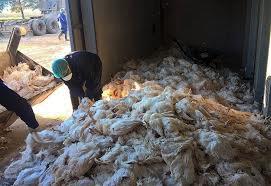 A recent outbreak highlights the need for constant monitoring of production parameters to recognize the emergence of HPAI at an early stage in the progress of an infection. On suspicion of an outbreak, daily PCR assays of cloacal and tracheal swabs from recently dead or moribund hens or pullets should be submitted to either confirm or eliminate the diagnosis. In the specific case, a contractor with two houses with a total capacity of 500,000 hens reported elevated mortality to the integrator on December 2nd. A Company service person obtained swabs from a few dead birds for submission to a state diagnostic laboratory with a negative diagnosis for HPAI. This farm was, undergoing an outbreak of coryza that was previously confirmed by PCR. Mortality in the house containing 150,000 hens continued to escalate and water consumption dropped successively by 25 and then 50 percent over the period extending to December 7th. Mortality increased from 3,600 hens (2.4 percent per day) on December 7th to 8,000 (6 percent of the remaining flock) on December 10th. The integrator who supplied feed and owned the flock, was informed of the status of the flock each day by the contractor who expressed concern over rising mortality. On December 12th, a service person collected tracheal swabs that were submitted to the state diagnostic laboratory yielding a positive diagnosis of HPAI. This resulted in State and Federal control measures including quarantine and depopulation. A recent outbreak highlights the need for constant monitoring of production parameters to recognize the emergence of HPAI at an early stage in the progress of an infection. On suspicion of an outbreak, daily PCR assays of cloacal and tracheal swabs from recently dead or moribund hens or pullets should be submitted to either confirm or eliminate the diagnosis. In the specific case, a contractor with two houses with a total capacity of 500,000 hens reported elevated mortality to the integrator on December 2nd. A Company service person obtained swabs from a few dead birds for submission to a state diagnostic laboratory with a negative diagnosis for HPAI. This farm was, undergoing an outbreak of coryza that was previously confirmed by PCR. Mortality in the house containing 150,000 hens continued to escalate and water consumption dropped successively by 25 and then 50 percent over the period extending to December 7th. Mortality increased from 3,600 hens (2.4 percent per day) on December 7th to 8,000 (6 percent of the remaining flock) on December 10th. The integrator who supplied feed and owned the flock, was informed of the status of the flock each day by the contractor who expressed concern over rising mortality. On December 12th, a service person collected tracheal swabs that were submitted to the state diagnostic laboratory yielding a positive diagnosis of HPAI. This resulted in State and Federal control measures including quarantine and depopulation.
The integrator displayed an egregious level of negligence. They were aware that their affected contract farm was in close proximity to other poultry farms some of which held up to a million hens and were operated by different farmers and companies. Failure to rapidly respond to the outbreak by obtaining a diagnosis and initiating depopulation placed at least eight million hens in contiguous counties at risk. At the time of writing, other farms in the area are apparently unaffected, but the understandable level of anxiety and concern is self-evident. APHIS is coducting surveillance testing within the control area. Management on nearby farms are conducting diagnostic swabbing of representative dead hens at daily intervals and have intensified their existing levels of operational biosecurity
Precautions suggested to protect flocks under conditions of high risk include:-
- Shower-in-shower-out procedures, with on-site laundry of protective clothing. This presumes appropriate prior investment in structural biosecurity.
- Donning site footwear from the exit of a biosecurity module with a change on entry to houses to prevent tracking of virus that might be deposited on roadways. Again this presumes prior investment in impervious roads, drains and parking areas.
- Cessation of mowing or soil cultivation within or in the vicinity of the perimeter of the farm
- Daily monitoring of mortality, water and feed intake with prompt evaluation to detect deviations from normal patterns,
- Thorough decontamination of dedicated feed delivery trailers or egg-collection vehicles in purpose-designed or commercial vehicle wash. Simply rinsing the outer wall of tires or "sprinkling" trailers with disinfectant is essentially ‘make-belief’ biosecurity
- Appropriate biosecurity procedures for drivers of feed delivery and egg-collection vehicles is required to prevent introduction of infection or dissemination of virus from infected but non-diagnosed flocks before onset of appreciable mortality.
USDA- APHIS has been negligent in failing to release reports on structured epidemiologic investigations of outbreaks on laying complexes in 2022. The Agency has not shared their interpretation of the molecular assays conducted on isolates from commercial flocks and migratory birds to date. Notwithstanding a lack of guidance from USDA-APHIS there is sufficient knowledge regarding how HPAI is spread and its effect on flocks to have resulted in a more appropriate and positive response by the integrator to a report of mortality on the contract farm. The integrator concerned employs veterinarians and according to information provided none of them visited the farm to clinically evaluate the severity of the situation. Neither did they contact the contractor remotely on a regular daily basis to monitor and assess mortality and water consumption or order additional assays for AI. This lack of professional diligence is inexcusable given the potential for extensive infection of flocks in the county.
Egg producers, packers, integrators and breakers have a mutual obligation to detect and respond to outbreaks of avian influenza. Allowing birds to die at high level over seven consecutive days without availing of available diagnostic resources represents negligence and could result in subsequent civil litigation.
As we go forward into 2024 with continued risk of HPAI, all stakeholders in egg production have a collective responsibility to ensure that outbreaks are detected quickly in order to limit lateral spread.

|
Recycling PET -Obstacles and Opportunities
|
12/13/2023 |
|
 As Republic Services announces the opening of a polymer recycling center, there is concern whether this project and similar initiatives in the U.S. and the E.U. will be financially viable. The process of recycling requires closely interlinked components. Consumers have to aggregate their plastic waste, a system of collection, assembly and transport to a facility is required and a technologically efficient process should turn waste into re-useable plastic flakes. Above all, the price of recycled material, incorporating collection costs and margin with processing and detoxification should be cheaper than virgin flakes. As Republic Services announces the opening of a polymer recycling center, there is concern whether this project and similar initiatives in the U.S. and the E.U. will be financially viable. The process of recycling requires closely interlinked components. Consumers have to aggregate their plastic waste, a system of collection, assembly and transport to a facility is required and a technologically efficient process should turn waste into re-useable plastic flakes. Above all, the price of recycled material, incorporating collection costs and margin with processing and detoxification should be cheaper than virgin flakes.
 The U.S. generates approximately 50 million tons of plastic waste annually of which less than ten percent is recycled. Polyethylene terephthalate (PET) is widely used in bottles for soda, egg cartons and the ubiquitous clamshells for fruit and small food items. This volume represents a potential source of recyclable material, limited only by the need for each of the stages in the cycle to be linked. Recycling is now mandated in a number of communities and even states. Taxes on containers and incentives to reuse content are in response to demands by environmentally concerned activists and consumers. The U.S. generates approximately 50 million tons of plastic waste annually of which less than ten percent is recycled. Polyethylene terephthalate (PET) is widely used in bottles for soda, egg cartons and the ubiquitous clamshells for fruit and small food items. This volume represents a potential source of recyclable material, limited only by the need for each of the stages in the cycle to be linked. Recycling is now mandated in a number of communities and even states. Taxes on containers and incentives to reuse content are in response to demands by environmentally concerned activists and consumers.
Manufacturers of beverages and food are actively sourcing recycled material in order to substantiate claims for sustainability. One large multinational beverage manufacturer is responding to lawsuits from a state attorney general regarding ‘greenwashing’ over claims that targets to achieve predetermined levels of recycling are consistently extended into the future with minimal current and near-term progress.
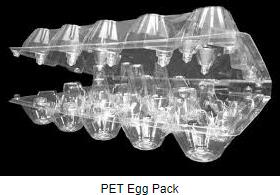 The fact that Republic Services has seen fit to invest $70 million into a plant to process plastic waste is an encouraging sign. Republic Services is a large company concerned with hauling trash and with connections to municipalities. This represents an advantage with respect to collection and assembly of waste products and subsequent differentiation into categories of plastic that require specific methods of processing. The fact that Republic Services has seen fit to invest $70 million into a plant to process plastic waste is an encouraging sign. Republic Services is a large company concerned with hauling trash and with connections to municipalities. This represents an advantage with respect to collection and assembly of waste products and subsequent differentiation into categories of plastic that require specific methods of processing.
At the end of the day, any form of recycling must be financially viable. Recyclers must compete with cheap virgin flakes from Asia and from Mexico in the case of the U.S. Financial considerations also determine the acceptability and use of recycled plastic. Material from bottles and food containers are diverted to carpets and textiles. Although this removes plastic from landfills and waterways, it is not true recycling in the context of re-incorporation into similar containers in a continuous cycle.
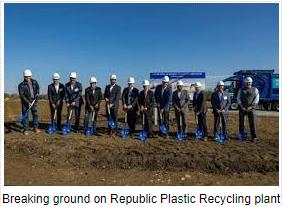 Stung by criticism and legal action, Coca-Cola has partnered with Republic Services in a new venture with a goal to achieve 50 percent recycled content for bottles by 2030. If the Republic Services venture is successful, it may attract competitors, establish economies of scale and promote the development of new technology for collection and sorting. Manufacturers have an obligation to harmonize their packaging requirements since different colors in waste and diverse specifications for plastic impose complications and hence, expense for recyclers. Stung by criticism and legal action, Coca-Cola has partnered with Republic Services in a new venture with a goal to achieve 50 percent recycled content for bottles by 2030. If the Republic Services venture is successful, it may attract competitors, establish economies of scale and promote the development of new technology for collection and sorting. Manufacturers have an obligation to harmonize their packaging requirements since different colors in waste and diverse specifications for plastic impose complications and hence, expense for recyclers.
Recycling will require the commitment of consumers to positively recycle containers. Municipalities will have to accept and sort recycled material or make use of contractors at the local level. Supermarkets and groceries have a role to play in serving as collection points especially if local or state agencies introduce incentive programs for recycling.
Environmentalists claim that recycling is nonviable and are pushing for outright banning of single-use plastics. This is unacceptable, as plastic packaging adds to convenience and food safety and ultimately reduces the cost of many items. By closing the ring on recycling, consumer items and food can be packed without conscience or damage to the environment.

|
APHIS Response to HPAI
|
12/05/2023 |
|
During the past two weeks, the U.S. poultry industry lost 188,000 turkeys and breeders in seven outbreaks in three states. The egg segment lost a total of 1.7 million hens in two outbreaks in California and Iowa. Since the onset of fall 2023, USDA has depopulated close to six million egg production hens together with at-risk pullets, 1.5 million broilers and breeders, 2.7 million turkeys and breeders and 600,000 other commercial species. This dismal record presumes a repeat of 2022 that was devastating to turkey and layer producers, the public sector and above all, for consumers.
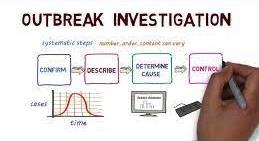
From informal and anonymous conversations with middle-level APHIS professionals, it is apparent that senior administrators are committed to a perpetual cycle of diagnosis, depopulation and surveillance over the long-term. If we knew more about how infection is actually introduced onto farms, we would be in a better position to protect flocks. The delayed and incomplete epidemiologic studies on 2022 cases with reports delayed by a year have not helped in identifying factors leading to outbreaks on farms and complexes. In the absence of an understanding of how avian influenza virus travels from the cloacas of migratory waterfowl to the nares of confined hens we are unable to implement definitive action to reduce the incidence rate. It is self-evident and confirmed by preliminary studies that proximity of migratory waterfowl and possibly infected domestic birds to farms represents a risk factor. This is supported by surveys confirming shedding of H5N1 avian influenza virus. It is also evident that specific counties in Minnesota, Iowa, Colorado, Wisconsin, North Dakota and South Dakota among others are vulnerable to both infection and reinfection due to their proximity to wetlands and expanses of water that attract migratory waterfowl.
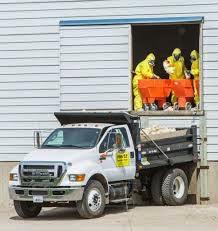
Admittedly, conceptual biosecurity is compromised by locating vulnerable poultry flocks in flyways that place them in contact with shedders of virus. There are evidently deficiencies in both structural and operational biosecurity over and above the basic flaw of location represented by conceptual biosecurity. The USDA continually promotes generic biosecurity in general terms without identifying specific deficiencies in any of the installations or procedures that have contributed to infection of commercial flocks. Factors including feed supplied from common mills, especially in the turkey segment and obvious deviations from high levels of operational biosecurity have probably contributed to outbreaks. In specific cases during 2022, some large egg production complexes were inexplicably impacted. These farms were known to exercise extreme levels of biosecurity and with anecdotal evidence of airborne transmission of virus. This route of infection may have extended for distances of up to a mile but most likely was measured in hundreds of yards between the perimeters of farms and adjacent waste lagoons or wetlands colonized by migratory birds.
EGG-NEWS has consistently and repeatedly urged APHIS to mount an intensive epidemiologic evaluation of risk factors contributing to outbreaks. Surely experience in 2015 should have predicated preemptive planning for investigations in anticipation of a likely series of future outbreaks. These occurred in 2022 with continuation through the present year and with the prospect of seasonal continuation through 2024. What is needed is to immediate deploy a team of trained personnel to investigate outbreaks as they occur. Epidemiologists conversant with practices used in both the egg and turkey industries should be sent to selected farms immediately a diagnosis is confirmed. Appropriate questionnaires should be developed that relate specifically to turkey and egg production units respectively. Recollection by managers and possible recognition of factors contributing to infection would be obtained reliably in real time. Attempting to identify risk factors months after an event using a generic 20-page questionnaire administered by telephone is an exercise in futility.
Evaluation of airborne transmission of H5N1 virus should be undertaken over the 2-to-5-day period required to depopulate a one million-hen or larger egg production complex. We need to know the level of airborne virus in the vicinity of concentrations of waterfowl that are congregating in high-risk counties in the states that have been seriously impacted. We need to know the duration of persistence of infectivity of virus excreted by waterfowl. We need to understand the effect of weather conditions including temperature, humidity, wind velocity and direction in relation to outbreaks. We need to establish factors contributing to vulnerability including the apparent high incidence rate among in-line or hybrid breaking operations.
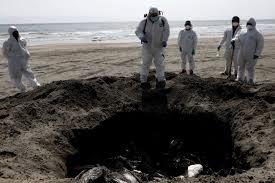
APHIS can draw on hundreds of millions of dollars for depopulation, indemnity and cleanup. Surely, money should be made available to investigate why and how farms are infected with avian influenza? Colleagues in APHIS have both the desire and the ability to conduct structured epidemiologic investigations as a Departmental initiative especially in collaboration with specialists at Land Grant Universities in the states that are most affected. To date, many field veterinarians are functioning with minimal incentive and negligible support from their superiors. Allocation of funds to study why and how farms are infected in both the turkey and egg production sectors of the industry will be critical to developing future strategy for prevention.
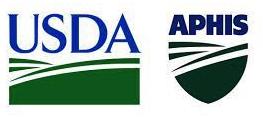
There is a growing sentiment both within APHIS and the industry that if in fact avian influenza virus is introduced onto farms by the airborne route, then even the most intensive and efficient biosecurity will not be protective. Are we emulating the Aztecs by figuratively throwing virgins into a volcano to ensure its quiescence by analogy adhering slavishly to isolated aspects of biosecurity but ignoring the most important mechanism of infection? APHIS administrators are both intelligent and educated and must have considered airborne transmission as has been proven for Newcastle disease. Paramyxoviruses and orthomyxoviruses are not that different in their ability to survive in the environment and should have similar routes of transmission.
As noted in weekly postings, EGG-NEWS urges APHIS administrators to allocate resources to conduct epidemiologic investigations to be conducted in real time, with rapid analysis in order to provide the industry with practical and applicable procedures to protect flocks.
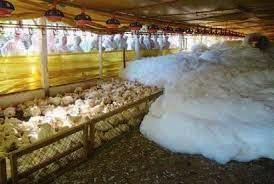
Unfortunately, if it is demonstrated that airborne transmission is a reality, and that even extreme biosecurity fails to provide absolute protection then additional protective modalities will be required. Regional, seasonal and segment-specific immunization emerges as a rational and potentially effective method of prevention. Vaccination as an adjunct to existing measures to protect flocks must lose its taint of heresy and undergo dispassionate scientific and economic evaluation based on sound epidemiologic investigations.

|
Unjust and Surprising Verdict on Alleged Egg Collusion Case
|
11/27/2023 |
|
 A jury in the U. S. District Court for the Northern District of Illinois rendered a verdict in favor of Plaintiffs in Kraft Foods Global, Inc. v United Egg Producers, Inc. et al. Plaintiffs included General Mills, Inc., a subsidiary of Kraft-Heinz Company, the Kellogg Company and Nestle SA. The most recent verdict relates to egg products as used by manufacturers. It was alleged that welfare standards for hens introduced by United Egg Producers in 1998 represented collusion among the major egg producers intended to reduce the size of the national flock thereby disturbing the supply to demand equilibrium resulting in overpayment for eggs over the period 2004 through 2008. A jury in the U. S. District Court for the Northern District of Illinois rendered a verdict in favor of Plaintiffs in Kraft Foods Global, Inc. v United Egg Producers, Inc. et al. Plaintiffs included General Mills, Inc., a subsidiary of Kraft-Heinz Company, the Kellogg Company and Nestle SA. The most recent verdict relates to egg products as used by manufacturers. It was alleged that welfare standards for hens introduced by United Egg Producers in 1998 represented collusion among the major egg producers intended to reduce the size of the national flock thereby disturbing the supply to demand equilibrium resulting in overpayment for eggs over the period 2004 through 2008.
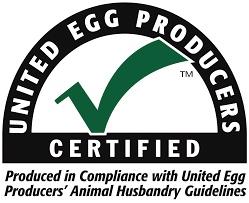 The Defendants in the case filed in 2018, included Cal-Maine Foods, Rose Acre Foods and industry associations United Egg Producers (UEP) and U.S. Egg Marketers, Inc. With the introduction of enhanced welfare standards, stocking density in cage systems was reduced over successive years, back filling was abandoned along with starvation molting that resulted in a transitory decline in national flock size. Two previous cases alleging conspiracy to reduce supply with plaintiffs representing direct consumers and retailers respectively were unsuccessful although many of the Defendants settled out of court for substantial damages without admitting liability. The Defendants in the case filed in 2018, included Cal-Maine Foods, Rose Acre Foods and industry associations United Egg Producers (UEP) and U.S. Egg Marketers, Inc. With the introduction of enhanced welfare standards, stocking density in cage systems was reduced over successive years, back filling was abandoned along with starvation molting that resulted in a transitory decline in national flock size. Two previous cases alleging conspiracy to reduce supply with plaintiffs representing direct consumers and retailers respectively were unsuccessful although many of the Defendants settled out of court for substantial damages without admitting liability.
The verdict will obviously be appealed with the Defendants’ legal teams reviewing procedural aspects of the case. U.S. District Judge, Steven Seeger, complimented the level of advocacy by lawyers representing both Plaintiffs and Defendants questioning possible grounds for an appeal.
The case will create problems for all food producers and for that matter, manufacturers of products and their trade associations. Legal fees, based on a percentage of generous assessment of damages assigned by juries, are an incentive for legal firms to initiate class action suits that are difficult to defend and inevitably drive up the price of products. This is especially the case with pharmaceuticals and medical procedures that include provisions for high insurance premiums that are in turn linked to the prevalence of malpractice claims of dubious authenticity.
It must be remembered that the industry was under considerable pressure to introduce an acceptable welfare program in response to consumer and customer demands. The egg industry was in a situation of being damned if they did and damned if they didn’t. There was obviously no obvious intent to reduce production and hence, increase prices for eggs. It is regrettable that certain injudicious memoranda were discovered that created the impression that there was collusion obviously influencing the jury. The sole saving grace was the discharge of many of the Defendants and the period covering the allegations of collusion was reduced to four years, eliminating the period 2009 through 2012.
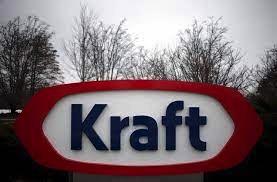
The case demonstrates the vulnerability of food producers necessitating careful evaluation of the potential legal perils resulting from any joint initiative taken by producers.
The verdict rendered in Kraft Foods Global v United Egg Producers was unfair and hopefully will be reversed. At best, Plaintiffs will be hard pressed to justify damages given the dynamic state of the market.

|
WIRED Exposure of Eat Just
|
11/20/2023 |
|
A recent investigation conducted by Wired documented what might be regarded as the end game of the high-wire balancing act conducted by Josh 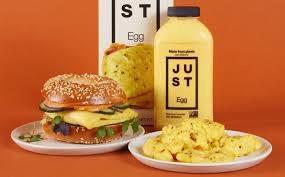 Tetrick over the past 15 years. His most recently named enterprise Eat Just (after operating as Hampton Creek and variations of ‘Just’), is beset with claims from suppliers claiming multimillions for ordered equipment and services. The ethics displayed by companies controlled by Tetrick have been questionable from the outset including the deceptive buybacks of his ersatz mayonnaise and alleged staged tours of his facilities according to ex-employees. Tetrick over the past 15 years. His most recently named enterprise Eat Just (after operating as Hampton Creek and variations of ‘Just’), is beset with claims from suppliers claiming multimillions for ordered equipment and services. The ethics displayed by companies controlled by Tetrick have been questionable from the outset including the deceptive buybacks of his ersatz mayonnaise and alleged staged tours of his facilities according to ex-employees.
Based on limited sales of high-priced egg substitutes and a failure to achieve production volume of cell-cultured meat, Tetrick’s companies in their various iterations have always experienced problems of cash flow.
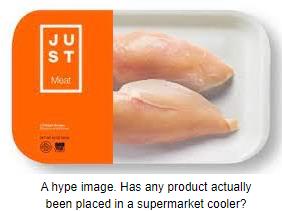 Essentially, Tetrick has survived by persuading cupid investors including the Qatar Investment Authority and VC companies in the U.S and Asia into funding his operations. It is understood that over the years, Tetrick has raised over $850 million with little to show for it in the form of market penetration of viable food products derived from plant sources. Essentially, Tetrick has survived by persuading cupid investors including the Qatar Investment Authority and VC companies in the U.S and Asia into funding his operations. It is understood that over the years, Tetrick has raised over $850 million with little to show for it in the form of market penetration of viable food products derived from plant sources.
Among creditors of the Tetrick companies are ABEC, an engineering company that is claiming $61 million for bioreactors required to produce cell-cultured meat, an engineering consulting group claiming $4.2 million and an ingredients supplier claiming $0.5 million. According to Wired financial problems at Eat Just were evident in 2019 with numerous lawsuits including unpaid rent amounting to $2.6 million, Fedex claiming $72,000 and even an inconsequential amount of $15,000 owed to ADM for ingredients.
Until the early 2000s, Tetrick was able to stay afloat through his ability to raise venture capital based on name-dropping, hype and contrived publicity. In accordance with the Lincoln adage that it is possible to mislead all of the people for some of the time, Tetrick remained in business promising the ‘next big thing’. His major error appears to have been a commitment to cell-cultivated production of meat, both popular and extremely fundable five years ago, but requiring high capital investment, with his speculative project estimated at $1 billion.
In common with other major aspirants to the field of commercial cell-cultured meat, technical problems in converting from a pilot plant to large-scale production has apparently stymied his efforts and he is evidently stuck with obligations to suppliers. With no product to sell and the absence of a demonstrable market, despite approval of cell-cultured meat in Singapore and now in the U.S., his expanded Companies operate with negative cash flow. There are probably no more willing investors to support his style of business, confirming Lincoln in that it is impossible to mislead all of the people all of the time.
 The food industry will not miss Josh Tetrick with his self-aggrandizing rhetoric and his attacks on conventional livestock production. In the late 1990s, he predicted that his plant-based mayonnaise and egg substitutes would make conventional production obsolete. A quarter of a century later, there are now 325 million hens laying in the U.S. and Just Egg has a miniscule share of the total market for egg products. The food industry will not miss Josh Tetrick with his self-aggrandizing rhetoric and his attacks on conventional livestock production. In the late 1990s, he predicted that his plant-based mayonnaise and egg substitutes would make conventional production obsolete. A quarter of a century later, there are now 325 million hens laying in the U.S. and Just Egg has a miniscule share of the total market for egg products.
Perhaps this commentator is premature and that Josh Tetrick, an accomplished fund-raiser, will be able to pull another rabbit out of a hat. Given his track record and the technical problems involved in production of commercial quantities of cell-cultured meat, this appears improbable. Will we miss him? Nah!

|
Beware of Quick Fixes for HPAI
|
11/14/2023 |
|
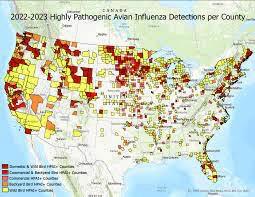 As HPAI resurfaces in the Canadian and U.S. poultry industries, we can expect spurious and unsubstantiated claims for disinfectants, air purification and other measures to protect flocks. A recent presentation by a poultry farmer in Canada was widely circulated creating a misplaced anticipation of protection. The promoters claim that hydroxyl free-radicals generated by UV radiation will destroy HPAI. This is a valid assertion under laboratory or restricted and controlled conditions. The challenges inhibiting destruction of influenza virus within a building housing a large flock relate to volume of air movement, the quantum of virus and environmental conditions including suspended dust within a poultry house. As HPAI resurfaces in the Canadian and U.S. poultry industries, we can expect spurious and unsubstantiated claims for disinfectants, air purification and other measures to protect flocks. A recent presentation by a poultry farmer in Canada was widely circulated creating a misplaced anticipation of protection. The promoters claim that hydroxyl free-radicals generated by UV radiation will destroy HPAI. This is a valid assertion under laboratory or restricted and controlled conditions. The challenges inhibiting destruction of influenza virus within a building housing a large flock relate to volume of air movement, the quantum of virus and environmental conditions including suspended dust within a poultry house.
Applying chemicals or irradiation, it is necessary for the agent to interact with the virus and achieve effective deactivation. This cannot be accomplished under practical commercial conditions. A typical aviary compartment holding 100,000 hens will require 1.5 cfm per lb. of bird weight. This will be accomplished with an air displacement rate of 600,000 cfm, with between 8 to 12 fans operating depending on rated capacity. It is also noted that HPAI or ND virus will be entrained on dust particles, further inhibiting contact between the virucidal activity of either irradiation or an aerosol disinfectant to achieve absolute inactivation. Unfortunately, HPAI is an all-or-nothing situation for susceptible flocks. Introduction of the virus into a non-immune flock will result in rapid intraflock dissemination. Within days infection will spread through a flock and result in clinical disease manifest by rapidly ascending mortality. Rapid diagnosis applying PCR followed by application of established protocols for control including quarantine and depopulation will result in the loss of the entire flock on a farm or complex. There are no degrees of HPAI, either the flock is infected or it is not. Measures that only ameliorate exposure, even up to 99 percent effectiveness are useless in practice.
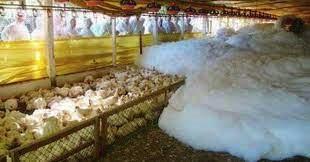
Application of UV treatment of air to destroy viral and bacterial pathogens is not a new application. During the 1980s, installations were developed in Israel to improve the health of broiler, turkey and egg-production flocks in modern controlled environment housing. These units were erected as the industry moved from simple suspended cages and open-sided sheds as used in California 50 years ago to more modern intensive installations. At the time, claims were made regarding protection of flocks from Newcastle disease but it is noted that all flocks were comprehensively protected using available vaccines.
With the advent of a catastrophic infection such as HPAI, unscrupulous or in some cases well-meaning entrepreneurs promote “the next big thing” This is usually an adaptation of existing technology that may be effective in specific applications such as operating theaters but is inappropriate and impractical for large-scale poultry production.
Some of the spurious claims made over the years to protect flocks include:-
- Disinfectants that effectively kill a range of viruses under laboratory conditions are frequently advanced as a protective modality against HPAI and ND in large houses. Ensuring direct and sustained contact between the virus entrained in an incoming air stream and the virucidal agent over an adequate period to achieve total kill before contact with individual birds has yet to be achieved.
- Some products are promoted as an aid to enhance immune function. These include botanicals, extracts of yeast cell walls, and compounds with a range of claims regarding beneficial effects. If there were a practical approach to absolutely inactivate HPAI or for that matter any other pathogenic virus significant to human or veterinary medicine, there would by now have been extensive application.
Since it generally conceded that HPAI virus may enter poultry housing by the aerogenous route, filtration of incoming air has been suggested as a possible means of protection. Again, in theory HEPA filtration could be an effective approach in the context of housing small groups of SPF birds or for holding birds under laboratory research conditions. The resistance associated with levels of filtration adequate to protect a poultry house would involve levels of air displacement and energy requirements inconsistent with commercial applications. Since HPAI virus is introduced into houses via air inlets, screening against dust that entrains and protects pathogens may reduce the quantum of virus entering a house. As previously indicated infection is essentially an all or nothing phenomenon. The quantum of virus required to initiate infection under practical conditions is probably quite small as denoted by outbreaks attributed to the dissemination of virus by migratory waterfowl in the vicinity of a farm.
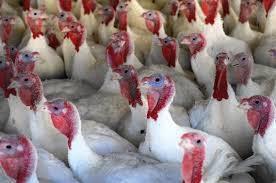
Given the current approach to control of highly pathogenic avian influenza requiring rapid diagnosis and depopulation with disposal of flocks as quickly as possible mitigates against measures that provide partial protection, including chemicals or physical disruption of viruses by some form of irradiation. To maintain otherwise and promote commercial applications and installations with unsubstantiated claims represents either a fraud or well-meaning aspiration.
At present, health professionals and regulatory agencies including our own, promote biosecurity. In many cases deficiencies have allowed virus to be tracked onto farms on fomites. Many of the outbreaks especially those on large egg production units appear to be associated with proximity of migratory waterfowl known to serve as reservoirs and disseminators of avian influenza virus. Attempting to absolutely interdict entry of virus into houses by air filtration appears impractical. Inactivating influenza virus by chemical or physical applications will be equally ineffective in preventing outbreaks even with 99.9 percent efficacy.
Ultimately regulatory authorities will recognize that establishing and maintaining well immuned populations through vaccination is the only long-term practical method of minimizing losses from HPAI. Avian influenza attributed to the H5N1 strain has persisted in migratory birds, backyard flocks and with sporadic outbreaks in commercial poultry for at least three years. As a panornitic disease, HPAI persists in regions of Asia, Africa and Europe and with recent extension to the Americas. Since HPAI virus is disseminated by migratory marine birds and waterfowl, eradication is not a feasible objective even in the intermediate term. Currently we rely on a combination of structural and operational biosecurity to reduce the number of outbreaks. The unfortunate reality in the U.S. is the location of large farms in areas frequented by migratory waterfowl. This is contrary to accepted principles of conceptual biosecurity and in all cases cannot be overcome by intensified and high-level structural and operational biosecurity. Ultimately vaccination in combination with biosecurity will be adopted by the world’s poultry industries. This is based on the emerging reality that HPAI is now a panornitic that appears to be seasonally increasing in incidence rate among commercial farms.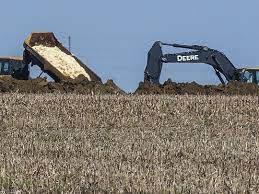
The world’s industries have eliminated Newcastle disease as a major restraint to production through vaccination. The same approach will be appropriate for HPAI. This will however require modification of rules governing trade.
Irrespective of how control and prevention at the regulatory level is implemented, we should resist the promise of “quick fixes” that have no prospect of practical application irrespective of claims loosely based on valid scientific principles.

|
Long-Awaited Organic Rule Finalized
|
10/30/2023 |
|
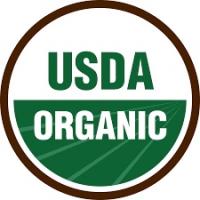 On October 25th, Secretary of the USDA, Tom Vilsack, signed off on the Organic Livestock and Poultry Standards final rule (OLPS). The latest OLSP regulations are framed in terms of 7 CFR Lot 205 and refer to DOC, AMS, NOP21-0073. On October 25th, Secretary of the USDA, Tom Vilsack, signed off on the Organic Livestock and Poultry Standards final rule (OLPS). The latest OLSP regulations are framed in terms of 7 CFR Lot 205 and refer to DOC, AMS, NOP21-0073.
This is the second time that Secretary Vilsack has approved an updated organic standards rule for poultry. During the Obama Administration, requirements were developed and issued on the last day of his first tenure as USDA Secretary. Almost immediately on assuming the position of Secretary of Agriculture, Dr. Sonny Perdue, the successor to Sec. Vilsack, cancelled the first revision of the OLPS. Organic egg producers have continued to operate in accordance with pre-2017 standards that are vague with respect to outside access and allowed enclosed sun porches to be counted as outside area.
The following changes will be required in terms of the 2023 OLPS with an appropriate grandfathering of existing facilities and allowing 15 years for depreciation of in-line units: -
- For houses with solid or slatted floors, 15 percent of the floor area must be covered with litter to allow dust-bathing and other natural activities.
- For floor-housed flocks, six inches of perch space must be provided per hen including the alighting rails in front of nests. Floor slats will no longer be regarded as perches.
- Indoor space is based on the weight of a hen and will comprise three pounds of hen weight per square foot or 2.2 ft2 per bird. Existing sun porches will be regarded as part of the enclosed area of the house and will not be counted as outside access.
- Outside access shall comprise at least 75 percent soil covered with vegetation. Outside area will be 1ft2 per 2.25 pounds corresponding to approximately 2 ft2 per 4.5-pound mature hen.
- Pullets should be allowed an outside area requirement of 1.7 ft2.
- Flocks should be allowed outside access throughout the year with a proviso that below 32F or above 90F, hens may be retained under roof cover in houses.
- Openings to allow outside access (’pop-holes’) should allow a minimum of 1 linear foot per 360 birds.
- Eight hours of darkness should be allowed for each 24-hour period.
- Producers should implement acceptable health care practices requiring administration of therapy even if this disqualifies the flock from organic production.
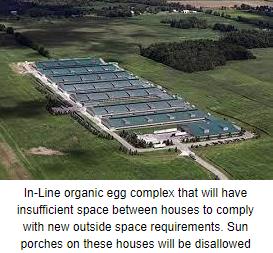
USDA-AMS maintain that the revised OLPS Final Rule was based on demand from consumers and cites 40,000 written comments that were reviewed before drafting the final rule.
The regulations, with respect to outside access and the disqualification of sun porches, are directed against large in-line, currently certified organic complexes. It is a matter of record that these units produce in excess of 50 percent of current U.S. organic egg production. Accordingly, producers using barns on the small-scale units operated by contractors or independents will benefit from the OLPSs since supply will be reduced with a corresponding increase in price at the retail shelf. Whether contractors or small independents will benefit financially will only be answered over time.
It is likely that when the grace period expires, the large segment of the industry operating complexes with sun porches may well develop their own market designation incorporating organic feed, freedom from antibiotics, acceptable floor space in aviaries, use of sun porches but without or allowing limited outside access.
The question of outside access is a point of contention. There is no nutritional value accruing from exposure to either soil or vegetation. There is no definitive evidence that hens prefer extended periods of outside access compared to aviary or barn housing. This is based on an inherent fear of predators and is evidenced by the disinclination of flocks to venture outside houses or to stray any distance from their ‘pop-holes’. Birds allowed outside access are vulnerable to predation and are exposed to bacteria, protozoa and helminth parasites. In recent years in both the E.U. and the U.S., avian influenza disseminated by migratory waterfowl has resulted in either recommendations or mandates that all flocks be retained in housing during risk periods.
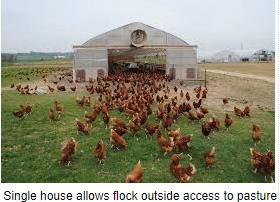 The amended OLPS has strong overtones of protectionism for a specific segment of organic egg production. If not subsequently modified or rescinded the more extreme provisions will ultimately serve to the disadvantage of large-scale producers and ultimately consumers who will pay a higher price for USDA Certified Organic eggs. Even with the current relaxed standards for outside access, organic egg production is almost static representing a declining proportion of non-caged birds. During the third quarter of 2022, 18 million organic hens represented 17.1 percent of all cage-free hens. By the third quarter of 2023 organic hens have increased by 3.3 percent to 18.6 million comprising 13.2 percent of the national flock housed in other than conventional cages. During the same period ‘cage-free” hens (other than USDA Certified Organic) increased by 19.5 percent to 104 million. The amended OLPS has strong overtones of protectionism for a specific segment of organic egg production. If not subsequently modified or rescinded the more extreme provisions will ultimately serve to the disadvantage of large-scale producers and ultimately consumers who will pay a higher price for USDA Certified Organic eggs. Even with the current relaxed standards for outside access, organic egg production is almost static representing a declining proportion of non-caged birds. During the third quarter of 2022, 18 million organic hens represented 17.1 percent of all cage-free hens. By the third quarter of 2023 organic hens have increased by 3.3 percent to 18.6 million comprising 13.2 percent of the national flock housed in other than conventional cages. During the same period ‘cage-free” hens (other than USDA Certified Organic) increased by 19.5 percent to 104 million.
Producers promoting more rigid standards for outside access without scientific justification other than fragmentary directed research may wish to take stock of their actions. Sharply increased shelf prices will reduce total sales of organic eggs. High-priced product bearing the USDA certified organic seal will have to compete with alternative products offering similar claims including GMO-free feed, superior food safety and availability favored as attributes by consumers. The OLPS final rule illustrates the adage that sometimes one may regret getting what is prayed for.

|
EFSA Panel Report on Vaccination Against Avian Influenza
|
10/24/2023 |
|
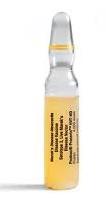 In a response to a request by the European Food Safety Agency, a panel on Animal Health and Welfare in conjunction with the European Union Reference Laboratory for Avian Influenza prepared a report on available vaccines and vaccination strategies against highly pathogenic avian influenza. The terms of reference for the report published on Oct 10th * considered: In a response to a request by the European Food Safety Agency, a panel on Animal Health and Welfare in conjunction with the European Union Reference Laboratory for Avian Influenza prepared a report on available vaccines and vaccination strategies against highly pathogenic avian influenza. The terms of reference for the report published on Oct 10th * considered:
- The range of available vaccines
- Specific approaches to vaccination given available data from the Netherlands, Italy and France.
At the outset it is noted that most of the published studies dealt with chickens although France acquired data on waterfowl with all three nations reporting information on vaccine efficacy and post-vaccination transmission.
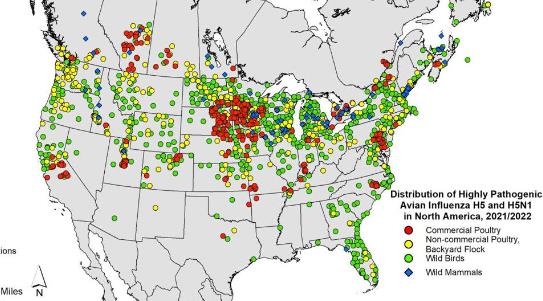
The report outlined the characteristics of both inactivated adjuvanted oil emulsion vaccines, and vector vaccines that are both commercially available. More advanced nucleic acid products are currently under development.
Vaccine efficiency was determined using a logistic regression model. The study recognized that there is inadequate information on the duration of protection. Generally, immunity in a flock is attained two weeks following primary administration but HVT-vectored vaccines required four weeks for durable protection. Successive vaccinations using inactivated vaccine are required to protect domestic waterfowl.
The model to determine that a vaccine would prevent sustained transmission showed a 0.82 probability of achieving 90 percent protection. This strongly suggests that most vaccines evaluated would reduce transmission of H5Nx clade 2.3.4.4b in chickens under experimental conditions. Vaccine efficiency is dependent on antigenic match between vaccine strain and circulating field virus. In evaluating serologic response, the report determined an association between HI titers and protection against transmission especially in chickens immunized with an inactivated vaccine. This finding is consistent with the experience recently gained in Mexico where inactivated vaccines administered to flocks of laying hens was effective in decreasing the incidence rate of outbreaks. Subsequent reintroduction of virus into previously affected areas by migratory waterfowl was recently detected through surveillance. It will be interesting to ascertain whether previously immunized flocks are protected from inevitable field challenge.
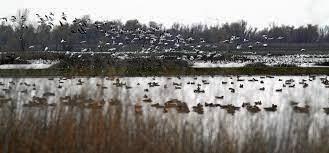
Vaccine efficiency is influenced by host specific factors. In some situations inadequate flock immunity may lead to persistence of HPAI virus. Inadequate surveillance will allow undetected circulation of virus.
The report concluded that there is no single vaccine that is applicable to all situations. An additional complication is that most of the data used to prepare the report was based on laboratory and experimental studies that may presumably deviate from the situation in the field. Confounding factors under practical conditions included proximity of farms, distance of farms from wetlands that attract a high density of migratory waterfowl coupled with the population of commercial poultry on farms in an area.
With respect to vaccine strategy, the report considered:
- Emergency suppressive vaccination. This potential approach could be applied in the event of an outbreak on a specific farm in the absence of a program mandating depopulation with indemnity. In the context of the U.S. and most commercial industries, rapid depopulation would be considered before immunization given the virulence of H5N1 and the need to prevent dissemination of virus from an affected farm to surrounding commercial poultry populations. The report noted public concern over mass depopulation. This is especially the case with ventilation shutdown that is engendering opposition even extending to proposed legislation to ban this method of euthanasia. This approach although faster and less labor intensive than using kill-carts flushed with carbon dioxide, is effectively inducing death by hyperthermia and respiratory alkalosis and requiring hours in large caged or aviary-housed flocks.
- Emergency protective vaccination. This approach would be carried out to protect non-exposed flocks following introduction of virus and to limit spread in the event of an outbreak in an area with a high density of poultry.
- Preventive vaccination in advance of introduction of infection. This would prevent spread of HPAI in an immunized population and hopefully maintain freedom from disease. Preventive vaccination was evaluated in the context of the three E.U. nations and with special reference to areas in France with a history of recurring HPAI outbreaks. It was determined that for all three nations, culling of infected farms resulted in the highest number of incident outbreaks and the longest duration of epornitics. The application of preventive vaccination resulted in the lowest number of infected farms and the shortest duration based on available case studies.
The conclusions from the comprehensive study of available laboratory and field data showed:
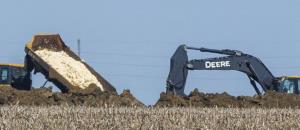
- Although vaccines against avian influenza have been developed only a few are applied under commercial conditions suggesting the need for more comprehensive and expedited registration based on standards of efficacy and safety.
- The need for homogeneity among vaccines and circulating strains is an important consideration for programs applying inactivated vaccines.
- Preventive vaccination should be considered in high-risk areas to minimize outbreaks and epidemic duration.
- The report demonstrated the potential for ring immunization over a two-mile radius around an index farm as a potentially effective method to establish immunity among flocks in an area and to limit the need for depopulation.
-
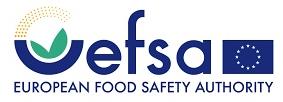
Clearly conclusions from the EFSA Report are confirmed by the results from the traditional ‘whack-a-mole” approach by USDA-APHIS during the 2015 and 2022 epornitics. The disease was neither controlled nor eradicated. Incident cases ceased only when migration and hence shedding by waterfowl ended. Over 45 million egg producing hens were depopulated with 95 percent of this number on only 22 large complexes holding more than 0.5 million hens. The total number of infected commercial premises amounted to 41 locations in 11 states under all three migratory flyways. Mortality occurred in two waves coinciding with migration of waterfowl and with some collateral infection of non-migratory birds and mammals scavenging on dead waterfowl.
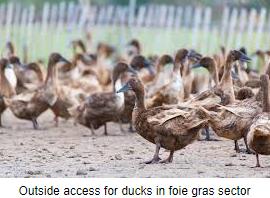
Preventive vaccination is indicated in the U.S. in areas with a history of recurring infection among laying hens. The dissemination of virus from complexes with upwards of two million hens in specific counties in Iowa, Colorado, Nebraska, Wisconsin and potentially in the future in Ohio and Indiana suggests the need for preventive vaccination as an adjunct to biosecurity. The imperative for preventive vaccination becomes even more obvious if H5N1 virus can be introduced onto farms by the aerosol route. Accepting this presumption based on anecdotal reports from cases in 2022 and the results of studies conducted during the Essex, U.K. 1972 Newcastle disease epornitic, even the most stringent structural and operational biosecurity will provide inadequate protection.
It appears that the fall-winter 2023 epornitic has commenced following the twelve outbreaks among turkey farms in four states. It is earnestly hoped that the October cases on commercial farms and in backyard flocks do not presage a repeat of 2022. Given that migratory waterfowl and marine birds are both reservoirs and disseminators of avian influenza, the disease cannot be controlled or ever be eradicated simply by identifying and depleting infected flocks.

Previous editorials in EGG-NEWS have pointed to the futility of the current approach by APHIS in response to seasonal and regional outbreaks of HPAI. The costs to the public sector and producers was probably in the region of $2 billion and consumers of eggs were obliged to pay an incremental $15 billion in 2022. We are aware of the importance of the broiler export market valued at $5 billion in 2022 although this figure might be overstated if and when limited preventive vaccination of turkeys and egg production flocks is implemented. In the face of H5N1 infection that is effectively a panornitic since HPAI is present now on seven continents, acceptance of regional vaccination of specific types of poultry must be considered. Neither Congress nor the public will continue to accept annual or recurring expenditures in attempts to suppress avian influenza with no reasonable prospect of eradication. The basic inhumanity of having to either depopulate or to countenance the potential depopulation of upwards of 50 million commercial poultry in each reoccurring epornitic is self-evident. Institutional and parochial intransigence against vaccination in the face of reality will soon become a more significant issue among consumers and in Congress hopefully leading to more effective structured strategies of prevention and control.
*Nielsen, S. et al. Vaccination of poultry against highly pathogenic avian influenza. Oct.10 2023, doi.org/10.2903/j.efsa.2023.8271

|
The Black Sea – A new War Zone Pivotal to the World’s Supplies of Grain
|
10/22/2023 |
|
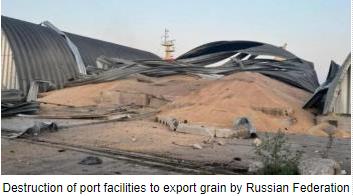 Prior to the unprovoked invasion of Ukraine by the Russian Federation, both nations relied on the Black Sea for transport of wheat, corn, oil seeds and other agricultural commodities to buyers worldwide. After the invasion Ukraine could only export from the ports of Mykolaiv, Odessa and Chornomorsk. Prior to the unprovoked invasion of Ukraine by the Russian Federation, both nations relied on the Black Sea for transport of wheat, corn, oil seeds and other agricultural commodities to buyers worldwide. After the invasion Ukraine could only export from the ports of Mykolaiv, Odessa and Chornomorsk.
The Black Sea Grain Initiative, negotiated by the United Nations and Turkey, allowed restricted passage of grain vessels from ports in Ukraine to market. Cancellation of the agreement in July was followed by intensive bombardment of Ukrainian ports with as many as 150 installations and grain facilities destroyed in more than 20 intensive attacks. In addition it is estimated that Russia has destroyed up to 300,000 metric tons (12 million bushels) of various grains. Export capacity from ports in Ukraine has been reduced by 40 percent forcing shipments to use Danube River installations, rail and restricted sea passage.
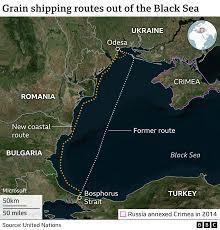 The Black Sea has become an important zone of war with the two belligerents conducting a stalled land war along the Dnieper River. Advances by Ukraine infantry and armor have been minimal and the land war is now an artillery duel supplemented with the use of drones and missiles. Ukraine has used its minimal naval resources to optimal advantage, driving vastly superior Russian naval vessels eastward to the Russian coast around their major base at Novorossiysk. The Crimean base in Sevastopol has been abandoned by Russia following strategic strikes. This has allowed Ukraine to establish a sea-lane hugging the coasts of Romania and Bulgaria, both members of NATO, to allow passage to and through the Bosporus. Since the alternative coastal route was established, 21 bulk grain carriers have transited southward, but their collective volume is far less than the 33 million tons exported during the 12-month duration of the Black Sea Grain Initiative. The Black Sea has become an important zone of war with the two belligerents conducting a stalled land war along the Dnieper River. Advances by Ukraine infantry and armor have been minimal and the land war is now an artillery duel supplemented with the use of drones and missiles. Ukraine has used its minimal naval resources to optimal advantage, driving vastly superior Russian naval vessels eastward to the Russian coast around their major base at Novorossiysk. The Crimean base in Sevastopol has been abandoned by Russia following strategic strikes. This has allowed Ukraine to establish a sea-lane hugging the coasts of Romania and Bulgaria, both members of NATO, to allow passage to and through the Bosporus. Since the alternative coastal route was established, 21 bulk grain carriers have transited southward, but their collective volume is far less than the 33 million tons exported during the 12-month duration of the Black Sea Grain Initiative.
Foiled in their attempt to gain mastery of the Black Sea, the Russian Federation is having to defend vessels that appear to be vulnerable to both aerial and sea drones. Accordingly, Russia is threatening to mine approaches to Ukrainian ports, according to British intelligence. The intent of the threat by Russia is to raise the insurance rates on vessels to deter exports from Ukraine, representing economic warfare.
The alternatives including barge transport of commodities westward along the Danube adds to cost. Shipment of grain on bulk carrier vessels through the Black Sea carries a cost of approximately $35 per ton under normal conditions. This can be compared to $120 per ton on the Danube route. It is estimated that shipments by barge since the termination of the Black Sea Agreement have attained 3 million metric tons with 1 million transported by rail.

Russia has threatened to attack merchant vessels but runs the risk of NATO involvement. According to the Montreux Convention, Turkey can restrict movement of naval vessels through the Bosporus. In the event of overt attacks on international vessels, Turkey, a member of NATO, may be obliged to allow passage of surface and undersea assets through the Dardanelles and the Bosporus into the Black Sea. Turkey is in an invidious position and is somewhat reliant on the Russian Federation for supplies of gas, concessions over Azerbaijan and bilateral trade.
Russia is continuing to export grain harvested from the occupied eastern provinces of Luhansk and Donetsk through ports on the Sea of Azov including Mariupol. Shipments pass under the Kerch Bridge joining Russia with occupied Crimea to the Black Sea. Exports from Russian ports on the Eastern coast of the Black Sea pass southward to the Bosphorus.
During the third quarter of 2023, Russia maintained exports amounting to 4.5 million metric tons, slightly more than the pre-invasion figure. In contrast, exports from Ukraine during the third quarter of 2021 amounted to 8 million metric tons.
It is evident that events between the belligerents in the Black Sea will influence international prices and availability of grain and oil seeds in coming months. This will have inevitable price repercussions for U.S. poultry producers.

|
Supermarket Chains Integrating into Production
|
10/15/2023 |
|
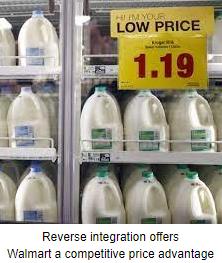 During the past week, Kroger Company announced expansion of its Kenlake Foods Subsidiary and concurrently Walmart committed to a dairy facility in Valdosta, GA. These investments suggest a move to consolidating supply chains and eliminating intermediates to enhance margins and ensure availability. During the past week, Kroger Company announced expansion of its Kenlake Foods Subsidiary and concurrently Walmart committed to a dairy facility in Valdosta, GA. These investments suggest a move to consolidating supply chains and eliminating intermediates to enhance margins and ensure availability.
Kenlake Foods is one of 41 Kroger manufacturing plants providing 800 items including dry mixes, nuts, drink mixes and cereals. Kroger will invest $24 million to extend the Calloway County, KY. plant to 215,000 square feet.
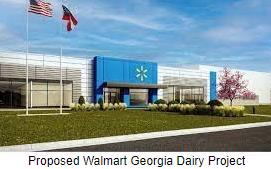 The Walmart dairy project will require an investment of $350 million in a new facility in Valdosta, GA. to supply 750 Walmart and Sam’s Club stores in the southeast. A range of milk products will be distributed under the Great Value® and Member’s Mark® brands. The Walmart dairy project will require an investment of $350 million in a new facility in Valdosta, GA. to supply 750 Walmart and Sam’s Club stores in the southeast. A range of milk products will be distributed under the Great Value® and Member’s Mark® brands.
The Walmart dairy initiative follows a June 2020 investment in a case-ready beef plant in Thomasville, GA. to distribute steaks and roasts to Walmart stores in the southeast. In the same month, Walmart indicated that it would establish a case-ready beef plant in Olathe, KS. requiring an investment of $250 million. During August 2022 Walmart purchased a minority stake in Sustainable Beef LLC. located in North Platte, NE. in collaboration with rancher shareholders. Walmart has also invested in vertical farming through a $400 million allocation to Plenty Inc. The success of the Costco, Lincoln Premium Poultry complex in Freemont, NE. is now recognized with the operation producing two million rotisserie birds each week.
With the major chains investing in snacks, milk, beef, meat and chicken it is inevitable that one of the major retailers will turn their attention to eggs. Although there are risks associated with fluctuation in ingredient prices and HPAI, a regional and segment-related program could attract investment and integration with synergy in transport and elimination of marketing costs. Walmart as the largest retail grocer or alternatively the proposed combination of Kroger and Albertson’s could justify an investment.
The initial stage of integration would probably be acquisition of equity in an existing company. Since there are logistic and consumer perception benefits associated with regional production and distribution, a national retailer would consider a large producer such as Cal-Maine Foods, Opal Foods or Rose Acre Farms with broad geographic distribution and both cage-free and 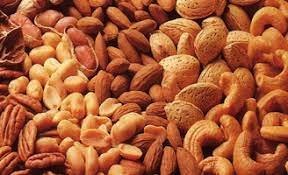 conventional complexes. Regional chains such as Publix could consider an equity or ownership position in an efficient suitably sized producer with modern facilities central to their operations. conventional complexes. Regional chains such as Publix could consider an equity or ownership position in an efficient suitably sized producer with modern facilities central to their operations.
Based on trends in reverse integration demonstrated by national supermarket chains some involvement in the egg industry is highly likely in the near future.

|
HPAI Returns to Commercial Poultry Farms in the U.S. - Time for a New Approach?
|
10/12/2023 |
|
Until October 4th, commercial farms in the U. S. were free of highly pathogenic avian influenza (HPAI) since April 2023, in the case of turkeys and December 2022 for broiler farms and egg production complexes. In the interim, there have been numerous cases of HPAI and isolation of H5N1 virus in backyard farms and from migratory waterfowl now undergoing their southward migration. In September, there were 32 isolations from either marine birds or waterfowl in the states of Alaska, Connecticut, Virginia, Iowa, Pennsylvania and Mississippi. These states encompass the Pacific, Mississippi and Atlantic Flyways. The current situation is eerily reminiscent of events preceding the 2022 epornitic. Europe is contending with persistence of H5N1 in wild birds with infection of backyard and commercial flocks following a pattern established over the past three years since the emergence of the panornitic H5N1 strain designated clade 2.3.4.4b.

The U.S. industry is dependent on USDA-APHIS for the control of HPAI. It is presumed that experience gained in 2015 and revised during the 2022 epornitics will be applied to any fall 2023 or spring 2024 outbreaks. In their activities, APHIS conforms to World Organization of Animal Health (WOAH) recommendations concerning diagnosis, flock disposal, surveillance and ultimately permission to restock. The Agency is responsible for reporting outbreaks of confirmed H5 and H7 avian influenza to WOAH and maintaining an export library for the benefit of the export segment of the industry.There are gaps in understanding the epidemiology of HPAI in relation to dissemination of virus by wild birds and how the pathogen specifically enters farms. Two long-delayed reports of minimal practical application were released by APHIS after reviewing a limited number of commercial egg farms and a larger number of turkey farms. Both of these studies have been reviewed and constructively criticized in EGG-NEWS and at regional meetings. Major deficiencies included a delay between outbreaks and collecting data, conducting telephone surveys using long, involved and frequently inappropriate questionnaires that ignored weather data. From USDA-APHIS publications and presentations the Agency apparently considers that high levels of structural and operational biosecurity are adequate to protect flocks. This is patently self-delusional given that there is sufficient anecdotal evidence that specific farms and complexes operating with high levels of biosecurity may have been infected by the aerogenous route. The APHIS studies disclosed that the presence of wild birds and proximity to an infected farm yielded high odds ratios denoting the intuitive risks of infection.
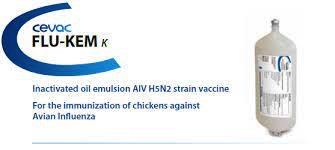
Given the spatial and temporal relationships between migratory birds and incident cases it is likely that many cases could not be attributed to defects in biosecurity. There are far too many U.S. turkey and egg production farms located in close proximity. Areas with a history of reoccurring HPAI are adjacent to wetlands and waterways that are the natural migratory routes of birds. Concentration of farms with large populations of turkeys or laying hens in the vicinity of expanses of water is contrary to accepted principles of conceptual biosecurity and cannot be overcome by investment in structural biosecurity and intensive application of operational biosecurity.
The industry is well aware of the potential for extensive losses on egg production and turkey farms located along the Central and Mississippi Flyways. For reasons possibly related to location, the bulk of the broiler industry was relatively unscathed during the 2015 and 2022 epornitics. This does not necessarily hold true for the fall of 2023 or in subsequent years.
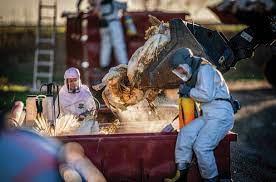
There is a growing appreciation that attempting to permanently eradicate HPAI in the U.S. is an unachievable and Sisyphisan challenge. The infection is in reality introduced seasonally by millions of migratory birds with a predictable reoccurrence in areas previously affected. This is evidenced by losses in specific counties in Iowa, South and North Dakota and Minnesota. If HPAI is accepted as seasonally and regionally endemic, continuing to apply a program of detection and depopulation defies logic. The current approach will only achieve a small measure of control until migratory birds cease shedding virus or move on and cannot be expected to achieve eradication. This reality led regulatory authorities in France to abandon depopulation to suppress HPAI in the foie gras industry during 2022. Accordingly, France has initiated a vaccination program for commercial waterfowl in areas previously affected by HPAI. The predictable reaction by APHIS, following international agreements, was to immediately place an embargo on importation of poultry and non-processed products from France “to protect the U.S industry from HPAI”. This action was entirely devoid of reasoning given that HPAI is introduced and disseminated by migratory birds currently placing domestic flocks at risk.
Given the inevitability of HPAI entering the turkey and egg production sectors of the U.S. poultry industry, alternatives to the traditional response are needed especially if the disease is accepted to be at least regionally and seasonally endemic and transmitted over short distances by the aerogenous route. More cost-effective approaches are required other than depopulation of upwards of 50 million commercial birds as in 2022. Creating an immune population through vaccination of high-risk turkey and egg-production flocks in vulnerable areas would presumably reduce the number of farm outbreaks.
This commentator experienced the impact of velogenic viscerotropic Newcastle disease during the early 1970s that was in many respects analogous to the current situation with HPAI. Infection was suppressed by the intensive application of live attenuated vaccines to broilers by the aerosol route and combinations of live attenuated and inactivated oil immersion vaccines for broiler breeder pullets and egg production flocks.
Currently effective and safe avian influenza vaccines incorporating advanced technology are commercially available and are in wide use to immunize flocks. The USDA has not, to date, approved the use of vaccines against HPAI other than for the token administration to Californian condors, an extremely endangered species susceptible to the infection.
The major justification for this intransigence is the potential loss of the broiler export market valued at $5 billion annually. This is a simplistic and unsubstantiated value unfortunately with broad acceptance and is frequently cited by APHIS and proponents of the current policy. For the period January through August 2023, exports of broiler products amounted to 2.4 million metric tons representing approximately 15 percent of RTC production. Exports comprised 97 percent chicken parts principally leg quarters, but excluding feet, according to the National Chicken Council. The largest importer by volume and value was Mexico responsible for 20 percent of volume and 17 percent of value over the eight-month period. This Nation would in all probability not ban imports from the U.S. on the basis of limited vaccination to protect susceptible turkey and layer flocks in high-risk areas. Canada imported broiler meat to the value of $300 million over the eight-month period. The U.S. has agreements with Canada relating to regionalization. China purchased 12 percent of U.S. volume that represented 32 percent of value attributed to the fact that paws and feet comprised 66 percent of exports to China amounting to 72 percent of the value imported by that nation. Exports of leg quarters to China have fallen successively in volume and value over the past two years as they have become successively self-sufficient. Would this nation cease importing feet in the event of limited vaccination of turkeys and egg production flocks against HPAI in the U.S.? China has endemic HPAI, vaccinates to suppress infection, is generally irrational in regulatory decisions and has a history of discrimination against the U.S. in defiance of WOAH directives and WTO rules. It is possible that China would ban import of feet but will continue to obtain U.S. product through third-party nations facilitating trans-shipment. Other nations among the top-15 importers either have endemic HPAI, operate small domestic broiler industries, need a low-priced product or will follow WOAH principles on regionalization and compartmentalization.
Consistently maintaining that the U. S. would lose the $5 billion export market following limited regional vaccination is highly speculative and is used as to buttress an established USDA policy that serves one segment of the poultry industry. The FSIS representatives at regional and national meetings who continually justify their rejection of HPAI vaccination are basically reinforcing their “party line” and maintaining a potentially expensive status quo. Proponents of extensive depopulation in the face of inevitable reoccurrence of infection fail to appreciate that consumers in the U.S. were obliged to spend an additional $15 billion to purchase eggs in 2022. Shelf prices were on average $2 per dozen highercompared to what they would have been without depletion of close to 45 million laying hens in the fall and spring phases of the epornitic. Effectively in 2022 the U.S. industry was supplied from a national flock with 20 million fewer hens compared to the pre-HPAI complement of 330 million.
|
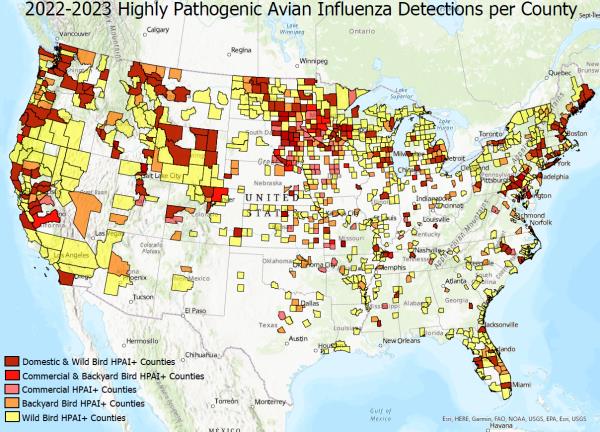
|
Vaccination both local and tactical will be required to protect commercial poultry flocks worldwide. The U.S. is no exception. It is often quoted in both EGG-NEWS and CHICK-NEWS that “Avian influenza is the Newcastle disease of the 2020s”. Accordingly, the USDA should use its best endeavors to initiate negotiations with trading partners and convince them of the need for vaccination. This will naturally be coupled with surveillance and certification of freedom from infection. In the age of PCR diagnostic assay and DIVA vaccines, regulatory authorities cannot hide behind the justification that “vaccines mask infection”.
Given that four commercial outbreaks have occurred over the past two weeks, APHIS should marshal its resources and conduct appropriate epidemiologic investigations in real time and either confirm or reject the presumption that the infection can be transmitted over relatively short distances by the aerogenous route. The disease will inevitably be introduced seasonally by migratory birds and if it is in actuality transmitted through air, will invalidate even high levels of operational biosecurity. Vaccination will be a necessary adjunct to support a more durable program of prevention limiting both the incidence and cost of HPAI. The Einstein dictum of the folly in repeating the same procedure and expecting a different result should be pondered and accepted by APHIS.

|
2023 Nobel Prize for Medicine Recognizes mRNA Innovators
|
10/02/2023 |
|
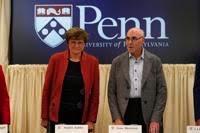 Katalin Kariko, a native of Hungary, and Drew Weissman of the University of Pennsylvania were awarded the 2023 Nobel Prize for Medicine or Physiology. The award recognizes their pivotal contribution to mRNA technology that ultimately made possible the vaccine against COVID-19. The initial work was conducted in 1997 by Kariko and Weissman at the University of Pennsylvania. They were able to modify mRNA by substitution of methylpseudouridine for uridine, a component of the RNA molecule. This compound was responsible for a cytokine response resulting in inflammation without inducing immunity. The modification made possible a candidate vaccine subjected to subsequent studies by Kariko and Weissman. They eventually established a research enterprise RNARx to attempt commercialization of the mRNA principle. Katalin Kariko, a native of Hungary, and Drew Weissman of the University of Pennsylvania were awarded the 2023 Nobel Prize for Medicine or Physiology. The award recognizes their pivotal contribution to mRNA technology that ultimately made possible the vaccine against COVID-19. The initial work was conducted in 1997 by Kariko and Weissman at the University of Pennsylvania. They were able to modify mRNA by substitution of methylpseudouridine for uridine, a component of the RNA molecule. This compound was responsible for a cytokine response resulting in inflammation without inducing immunity. The modification made possible a candidate vaccine subjected to subsequent studies by Kariko and Weissman. They eventually established a research enterprise RNARx to attempt commercialization of the mRNA principle.
Kariko joined BioNTech in Germany during 2013 and demonstrated that encasing mRNA in a lipid fragment would allow the mRNA to enter cells and initiate the synthesis of proteins stimulating an immune response. It was fortuitous that studies on mRNA technology based on the work conducted during the late 1990s and subsequently refined could be rapidly adapted to develop an effective COVID vaccine when the urgent need arose.
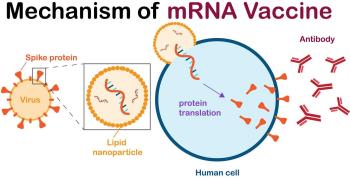
A spokesperson for the Nobel Assembly at the Karolinska Institute in Stockholm, commented, “There is no need to emphasize that the basic discovery made by the Laureates has made a huge impact on society.” As of the first quarter of 2023, more than 13 billion COVID-19 vaccine doses have been administered, and collectively the various mRNA vaccines have probably saved 20 million lives globally. In the U.S. alone, it is estimated that ten million hospitalizations and one million deaths were prevented as a result of the mRNA vaccines produced by Moderna and Pfizer/BioNTech.
Weissman supported Kariko as far as was possible during the late 1990s although skepticism among the scientific community deprived her of funding. Lack of recognition and support in the U.S. led to her return to Europe to join BioNTech. Dr. Kariko is the 61st woman to win a Nobel Prize since 1900 and is the 13th recipient in the category of Physiology and Medicine.
The Nobel award for the development of mRNA vaccine technology performed nearly 30 years ago is a validation of this novel approach to vaccines. The prize belies the contention that the COVID vaccine developed and tested during Operation Warp Speed was developed too rapidly and involved novel concepts that were inadequately researched.

|
Imminent Federal Shutdown: What will be Impacted?
|
09/26/2023 |
|
 Unless a legislative miracle reverses the trajectory towards a shutdown of the federal government on Saturday at midnight there will be serious repercussions. The shutdown will affect those that are most in need of support and with the least political influence. Unless a legislative miracle reverses the trajectory towards a shutdown of the federal government on Saturday at midnight there will be serious repercussions. The shutdown will affect those that are most in need of support and with the least political influence.
In the absence of statesmanship, moral courage, pragmatism and sheer patriotism the House has stumbled towards the deadline without concern for the consequences. Those whom we send to Congress and entrust with the management of the nation have precipitated a potential wave of hardship and inconvenience affecting us all. In an interview one holdout acknowledged that most Americans were living from paycheck to paycheck but failed to comprehend that a shutdown would deprive the military and essential workers of pay. He condoned this by stating that they would eventually receive back pay. His illogical standpoint is especially galling given that he will be receiving his Congressional salary and benefits.
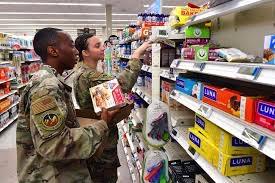
Failure to compromise and to recognize the harm and inconvenience to both workers and users of government services is inexcusable. Unless a continuing resolution is passed as in previous years, many government functions will cease with considerable disruption to essential services.
Some of the impacts will include:-
- Suspension of benefits to seven million mothers and 39 percent of U.S. infants under the Special Supplementary Nutrition Program for Women, Infants and Children (WIC).
- Essential services will continue but the government employees and service people responsible will not be paid. Active-duty U.S. military personnel will continue to serve at their posts but civilian employees will be furloughed. The FBI, DEA, Secret Service and federal prison employees will continue to work without pay. Criminal cases will continue although civil litigation would be deferred.
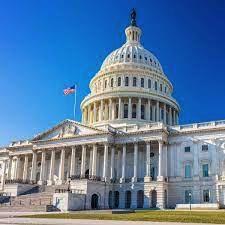
- Farmers will not be able to obtain services from the USDA as FHA offices will be closed.
- The Department of Homeland Security will continue to provide essential activities including border control and airport security screening but at a lower level of efficiency due to sick-outs and demotivation.
- The Department of Transportation will maintain air traffic control but delays will occur with protest and stress-induced absences.
- The USDA will cease all research activities, disrupting or terminating experiments in progress and delaying publication of results. Diagnostic services by NVSL will be delayed, if it all available, with a slow recovery as the backlog is processed.
- Reports from the ERS, FAS and NASS that form the basis of agribusiness decisions on trading and investment will be terminated for then duration of the shutdown. Weekly and monthly statistical postings on both EGG-NEWS and CHICK-NEWS will be curtailed.
- Research and related activities at the National Institutes of Health, the National Science Foundation and the National Oceanic and Atmospheric Administration will almost completely cease as the majority of employees are subject to furlough. Activities at the Centers for Disease Control and Prevention will continue in the areas relating to ongoing outbreaks, but research and non-essential functions will be halted for the duration of a shutdown.
- Regulatory agencies including the FTC and SEC will only respond to emergencies with most employees standing down. The Federal Reserve will continue operations.
- Meat inspection by FSIS will continue and AMS will maintain egg inspections in plants as these activities are supported by user fees.
- An important consideration at a time of increased union militancy is that the National Labor Relations Board will not be able to participate in mediation of labor disputes.
- The U.S. Postal Service that is mostly self-funded and will continue operation but the Agency is dependent on periodic Congressional infusions of working capital.
In decades to come political scientists will study and publish on how our Nation, with the largest economy in the world and as the leading democracy became the thrall of a handful of extremist members of the House exercising their own narrow political agenda and protecting their prospects  for reelection, only to gain a pyrrhic victory. To avert the annual exercise in continuing resolutions that simply kick the can representing the budget further down the road there will have to be procedural changes especially in the House. With competent leadership it should be possible for two parties, even with polarization, to negotiate in good faith and to exercise compromise early enough in the fiscal year to reach agreement on required services and level of spending. We deserve better from our incumbent legislators. for reelection, only to gain a pyrrhic victory. To avert the annual exercise in continuing resolutions that simply kick the can representing the budget further down the road there will have to be procedural changes especially in the House. With competent leadership it should be possible for two parties, even with polarization, to negotiate in good faith and to exercise compromise early enough in the fiscal year to reach agreement on required services and level of spending. We deserve better from our incumbent legislators.

|
Consumer Motivation Evaluated
|
09/19/2023 |
|
The August 2023 issue of Consumer Food Insights from the Center for Food Demand Analysis and Sustainability at the Purdue University, College of Agriculture provides a valuable analysis of factors motivating purchase of food products over time and by demographic category.
The results from the latest survey based on 1,200 participants from across the nation was conducted from August 21st through August 25th. The survey incorporated a weighting method termed iterative proportional fitting to ensure balance among respondent groups including gender, age, race, region, income and SNAP participation. The results were also classified according to political persuasion according to the broad categories of “liberal”, “moderate” or “conservative”.
|
 |
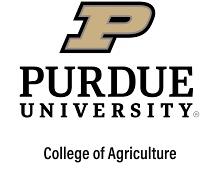 |
The survey considered food satisfaction, security, expenditures, beliefs and trust as the major response categories with appropriate data and interpretation relating to each of these factors. With regard to consumer behavior, responses were graded on a scale of 1 (= never) to 5 (= always). Among the moderate respondents, a score 3.2 was assigned to choosing generic foods over brands; 2.9 for local foods over non-local foods; 2.7 to cage-free eggs over conventional eggs; 2.6 for organic foods over conventional foods and 2.2 for plant-based proteins over animal proteins. These relatively low scores incorporating the “rarely” to “sometimes” responses suggests indifference to the claimed health and other benefits claimed for organic and local food production. There was no material difference between the “liberal” and “conservative” respondents and overall results were not different from the survey conducted in 2022.
|
The section on animal welfare is regarded as important with regard to consumer perceptions and motivation to select foods. Given concern over the 2023 SCOTUS decision upholding Proposition #12 and the evident implications for the pork industry, respondents were specifically asked to quantify their preferences, expressed as a percentage, over a range of seven attributes. Price was the highest-ranked factor with a score of 23. This was followed by Taste at 22, Freshness at 18, Nutrition at 14, Appearance at 11, Animal Welfare at 7 and Sustainability at 6. There was no material difference between the points assigned to Welfare that ranged from 7 to 10 among income demographics and Price that ranged from 18 to 27. Naturally, Price scored higher among respondents with annual incomes below $75,000. Within the income range of $75,000 to $100,000, Price outranked Welfare four-fold. Understandably, those with a “liberal” leaning were slightly more willing to pay extra for pork produced either more sustainably or with a higher level of welfare. Even within this demographic, Price and Taste combined at 40 percent outranked the combination of Animal Welfare and Sustainability scoring 19 percent. Among the “moderates”, 30 percent indicated that they would decrease their consumption of pork with a general price increase, almost equivalent to the 28 percent that indicated that they would reduce pork consumption based on a price increase attributed to Proposition #12. This suggests that price is the principal motivating factor and that welfare as a contributor to the purchase decision was subordinate to other attributes of pork.
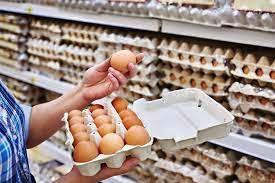 Given that eggs, pork and chicken compete as protein sources, it is not unreasonable to accept that the results of the Consumer Insight Study on pork are also applicable to eggs. Over the past two decades, animal rights activists through slanted surveys of dubious statistical relevance have made unjust demands for improved welfare. In recent years, sustainability has entered the picture with common cause between environmental and welfare activists. These groups have a joint commitment to displacing intensive livestock production but offer no practical alternative to the current ample, reliable, quality and inexpensive supply of protein. In reality, consumers are largely discounting sustainability and welfare as motivators in their purchases of specific animal products. Given that eggs, pork and chicken compete as protein sources, it is not unreasonable to accept that the results of the Consumer Insight Study on pork are also applicable to eggs. Over the past two decades, animal rights activists through slanted surveys of dubious statistical relevance have made unjust demands for improved welfare. In recent years, sustainability has entered the picture with common cause between environmental and welfare activists. These groups have a joint commitment to displacing intensive livestock production but offer no practical alternative to the current ample, reliable, quality and inexpensive supply of protein. In reality, consumers are largely discounting sustainability and welfare as motivators in their purchases of specific animal products.
During 2020, retail chains and restaurants were coerced into making commitments to transition from sourcing eggs from caged hens to alternative systems including aviaries and barns by 2025. At the present time, 5.8 percent (18.9 million hens) of the nominal national flock of 325 million hens produce under the USDA Certified Organic seal and 106 million representing 32.5 percent of the national flock are producing eggs in other than cages. The rate of conversion has slowed with many large producers replacing cages only in those states that have mandated alternative housing systems. Many chains have reneged on their commitments to source eggs only from cage-free systems or have extended their compliance dates.
The findings of the Purdue Center for Food Demand Analysis and Sustainability are essentially similar to the results obtained by Caputo et al. in their study published in February 2023 entitled The Transition to Cage-Free Eggs. The approach used in this study to evaluate consumer preferences, applied conjoint analysis to determine motivation to purchase eggs requiring consumers to make tradeoffs among price, welfare and sustainability. More than half of those surveyed were primarily concerned over shelf price per dozen.
Most of the surveys conducted by welfare groups are simplistic and designed to elicit a desired outcome. They rise to the level of asking seven-year-olds whether they are in favor of ice cream. Structured surveys using accepted principles of market research are able to quantify a range of attributes. Results suggest that consumers, even if aware of welfare and sustainability considerations, regard price and taste as important motivators to purchase protein foods of animal origin. Put another way, everyone is in favor of welfare and sustainability but only a small proportion of consumers are either able or willing to pay for these attributes.

|
Suppliers Sue Eat Just for Non-payment Under Contracts
|
09/11/2023 |
|

Eat Just Inc., the cell-cultured meat enterprise established by entrepreneur Josh Tetrick, is being sued by suppliers ABEC Inc. and CRB Builders for breach of contract including non-payment for services, equipment installations and structures intended to produce Eat Just products.
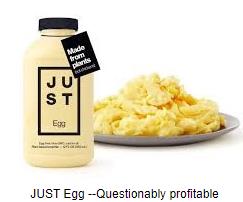 In early 2022, Eat Just and its Good Meat subsidiary entered into a seven-year contract with ABEC to design, manufacture and install ten reactors that would have been necessary to undertake commercial production of cell-cultured meat at the scale designated by Eat Just. The complaint alleges that although ABEC delivered on its commitments including construction of pilot scale bioreactors in the U. S. and Singapore, Eat Just has ignored invoices to the value of $30 million. ABEC claims that they committed $280 million to purchase orders placed by Good Meat through the end of 2022. By early March, ABEC was pressing for payment. In early 2022, Eat Just and its Good Meat subsidiary entered into a seven-year contract with ABEC to design, manufacture and install ten reactors that would have been necessary to undertake commercial production of cell-cultured meat at the scale designated by Eat Just. The complaint alleges that although ABEC delivered on its commitments including construction of pilot scale bioreactors in the U. S. and Singapore, Eat Just has ignored invoices to the value of $30 million. ABEC claims that they committed $280 million to purchase orders placed by Good Meat through the end of 2022. By early March, ABEC was pressing for payment.
In the case of CRB, Eat Just and its subsidiary agreed to pay for design and construction work but had only paid $760,000 with the plaintiff claiming it is owed $4.3 million for services, deliverables, expenses and interest.
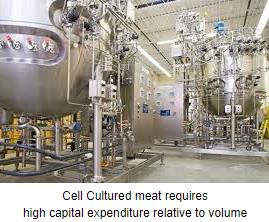 Perhaps both ABEC and CRB bear some blame for their respective situations since they were embarking on multi-million dollar projects without assurance that funding or guarantees were available. Perhaps both ABEC and CRB bear some blame for their respective situations since they were embarking on multi-million dollar projects without assurance that funding or guarantees were available.
A spokesperson for Eat Just claims that the company has to date raised more than $850 million including $270 million for Good Meat. If this is, the case, it would have been easy for the company to have written a checks to creditors without suppliers having to resort to litigation.
In legal parlance, the cases of ABEC, Inc. v. Eat Just and GOOD Meat, filed in the U.S. Eastern District of Pennsylvania and CRB Builders v Good Meat filed in U.S. Western District of Missouri are classic cases of caveat venditor (seller beware). It should have been incumbent on ABEC and CRB to have undertaken an evaluation of the potential for profit from large-scale production of cell-cultured meat. The suppliers should also have investigated the business history of the founder, Josh Tetrick, with his pattern of successively raising funds from cupid venture capital investors based on hype regarding welfare, sustainability and the prospect of displacing conventional livestock production. It is questioned whether they considered the return (or loss) on investment in his ersatz mayonnaise and egg substitute businesses over a two-decade period. Whatever happened to “Character, Capacity and Collateral as determinants of creditworthiness? Have elaborate slide decks and spread sheets replaced common sense and business acumen?
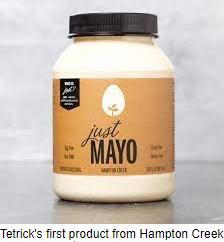
The Catch-22 situation with vegan egg and cell-cultured meat is that there is a small potential market comprising only the affluent and curious for these high-priced products manufactured in limited quantities. The capital cost of transition from pilot to commercial production to achieve economies of scale mitigates against the prospect of a return on investment due to the limited future market, notwithstanding greater output. This reality is reflected in the published losses generated by Beyond Meat and Maple Leaf Foods for their meat alternatives. Plant-based substitutes for real meat and eggs are less capital intensive and technically complicated than cell-cultured meat and poultry representing higher risk.
It is evident that he business of cell-cultured meat is not producing cell-cultured meat for sale. It appears to be an exercise in hyping sustainability to raise funds from gullible investors.

|
Mexico-U.S. Corn Dispute Could Disrupt USMCA.
|
09/05/2023 |
|
On December 31st 2020, the Government of Mexico announced that it would ban importation of GM corn and end the use of glyphosate as an herbicide, with a target date of January 31st 2024. Given that the U.S. exports approximately 17 million metric tons (669 million bushels) of yellow corn to Mexico annually valued in 2022 at $4.8 billion, the implications for U.S. corn growers were immediately self-evident. The U.S. invoked USMCA rules and engaged in negotiations with the Government of Mexico dealing with the Departments of the Environment, of Health and Agriculture

As a result, Mexico conceded and dropped the ban on the application of glyphosate and GM cultivars of corn imported for animal feed. Mexico firmly retained a requirement that only non-GM white corn could be imported since this product is the basis of tortillas and for white corn flour both food staples. In mid-2023 Mexico imposed a 50 percent tariff on the importation of white corn to stimulate domestic production.
Failure of the government of Mexico to rescind the 2020 decree left no other option than for the U.S. Trade Representative to initiate a dispute panel on August 17th 2023 under Article 31of the USMCA Charter.
Mexico justifies opposition to GM corn on the potential impact on the biodiversity of native corn cultivars and the potential carcinogenicity of glyphosate. For any of the three USMCA nations to ban a product it is necessary to demonstrate that action is based on relevant international standards and guidelines supported by a valid risk assessment.
The carcinogenicity of glyphosate is subject to question. The issue arose in March 2015 with the publication of a report by the International Agency for Research on Cancer (IARC) that considered glyphosate as “probably carcinogenic for humans”. It is noted that the principal author of the report was at the time and then subsequently serving as a technical expert supporting tort claims against the manufacturers of glyphosate. He provided an opinion that that the compound could be responsible for lymphoma basing the conclusion on his own meta-study. His involvement of the IARC report representing the cornerstone of litigation was clearly a conflict of interest and draws into question the validity of the findings based on a subjective review of published literature. The U.S. Environmental Protection Agency has concluded that glyphosate is not carcinogenic, notwithstanding the contentious label warning required by the state of California.
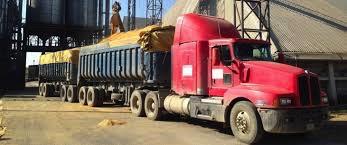 It is evident that Mexico will rely on a provision of the USMCA that restrictions can be imposed to “protect human, animal or plant health” as the justification for the 2020 decree. Mexico will however be obliged to defend their position since USMCA stipulates that restrictions should “not constitute a means of arbitrary or unjustifiable discrimination between countries where the same conditions prevail.” It is evident that Mexico will rely on a provision of the USMCA that restrictions can be imposed to “protect human, animal or plant health” as the justification for the 2020 decree. Mexico will however be obliged to defend their position since USMCA stipulates that restrictions should “not constitute a means of arbitrary or unjustifiable discrimination between countries where the same conditions prevail.”
The second concern expressed by Mexico is that importation of GM corn may in some way be deleterious to the numerous strains of native corn. This is a highly speculative and scientifically unjustifiable position. Predictably, negative propaganda was circulated, creating extensive antagonism to imported GM corn among farmers that represent an important voting bloc supporting the left-of-center government. Small-scale farmers who are inherently inefficient with respect to yields are obviously concerned over competition from imported U.S. corn whether for livestock, industrial or human consumption. The populist government of President Andres Moreno Lopez Obrador (‘AMLO’) is evidently responding to this groundswell.
|
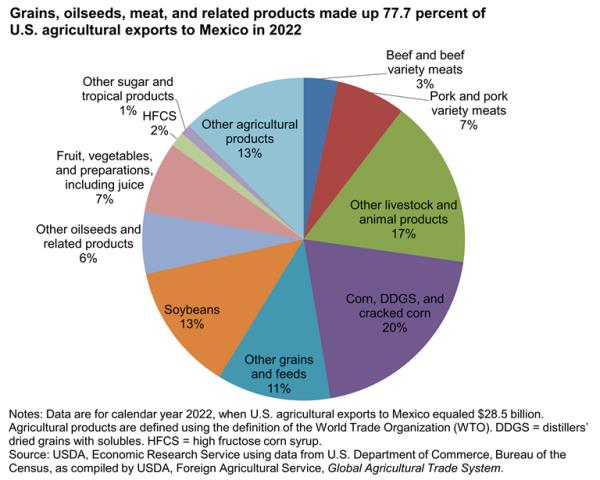
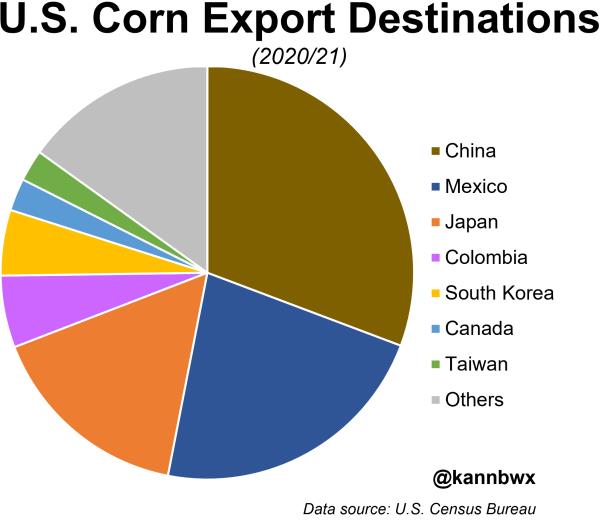
|
The review by the USMCA dispute panel will be a drawn-out process. The panel when formed must provide an initial report within five months and then allowing a subsequent two months to receive and consider comments before issuing a final decision. Even if the panel rules in favor of the U.S., Mexico is not obliged to respond before 45 days and protracted appeals will ensue. Failure to conform to the dispute panel final ruling will oblige Mexico to compensate the U.S. in some way possibly through imposition of tariffs on Mexican products.
The subject of trade and its regulation within nations including the three members of the USMCA has recently been complicated by tension between the U.S. and China. In a move to displace imports of manufactured good from China, the U.S. has encouraged production in Mexico, with offshoring in Mexico by Chinese-owned companies. The supply chains of the U.S., Canada and Mexico are closely intertwined, especially within the auto industry. There is considerable pressure to maintain the current level of trade within the USMCA since the alternatives to harmony would be economically devastating to Mexico and damaging to the economies of the U.S. and Canada.
In recognition of the consequences of an adverse ruling by the dispute panel based on the flimsy justification of the 2020 decree, Mexico has proposed a joint consultation between the U.S. FDA and the Federal Sanitary Commission of Mexico. This offer was rejected, since the U.S. and many other nations consider that the carcinogenicity of glyphosate is unproven.
If Mexico imposes additional restrictions on importation of yellow GM corn from the U.S., corn growers will lose a significant market, further complicated by decreasing purchases by China currently the leading importer of the commodity. This in turn would lead to a sharp decline in the ex-farm price of corn, benefiting domestic livestock producers. Alternative supplies of non-GM yellow corn for livestock production would be difficult if not impossible to obtain at prices consistent with exports from the U.S. This in turn would deprive Mexican consumers of supplies of chicken and eggs creating problems for consumers and indirectly for the Government.
The position adopted by Mexico with regard to GM is contrary to the acceptance of approved GM cultivars by China, currently a major importer of GM corn and soybeans from the U.S. According to recent reports China has evaluated and is now moving towards domestic production of GM cultivars to improve yields and move towards self-sufficiency. The E.U. continues to import GM corn and soybeans and individual nations in Europe are considering domestic cultivation.
It is apparent that the 2020 decree by Mexico was based on a Presidential whim influenced by misinformed advisors. The implications for the economy of Mexico and obligations to the UMCA were obviously not considered in the from-left field edict. It would be advantageous for the U.S. and Canada to establish a negotiating strategy that will allow the Government of Mexico and President AMLO to withdraw from their opposition to GM corn imports and save political capital through a phased reversal of their position. AMLO should heed the advice expressed by the character Fagin in the Broadway show Oliver who when confronted with a dilemma sings, “I think I better think it out again”

|
U. S. FDA Appoints Deputy Commissioner for Human Foods
|
08/27/2023 |
|
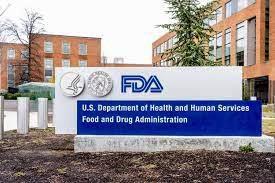 Following the report of the Reagan-Udall Foundation, Independent Expert Panel for Foods, the FDA embarked on a review of all food-related activities. A major recommendation of the Panel was the appointment of a qualified and experienced Deputy Commissioner for Human Foods within the Food and Drug Agency (FDA). The position was intended to be responsible for all food related aspects of research, regulation and enforcement of food safety and human nutrition in a single structural entity within the FDA. Following the report of the Reagan-Udall Foundation, Independent Expert Panel for Foods, the FDA embarked on a review of all food-related activities. A major recommendation of the Panel was the appointment of a qualified and experienced Deputy Commissioner for Human Foods within the Food and Drug Agency (FDA). The position was intended to be responsible for all food related aspects of research, regulation and enforcement of food safety and human nutrition in a single structural entity within the FDA.
On Wednesday, August 24th, Dr. Robert M. Califf, Commissioner of the FDA announced the appointment of James Jones to serve as First Deputy Commissioner for Human Foods. In his position, Jones will set priorities for a unified human foods program aimed to improve food safety, reduce diet-related diseases and improve health equity. His term of office will commence on September 24th. In this position, Jones will be supported by a leadership team and will work closely with other FDA executives to ensure coordination. He will not have oversight over the Center for Veterinary Medicine or the Office of Regulatory Affairs.
Jones earned baccalaureate and Master’s degrees in economics. He gained over 30 years of experience mainly with the U. S. Environmental Protection Agency where he was involved in the impact of chemicals and pollution on the food supply. He was responsible for the 2016 update of the Toxic Substances Control Act and was concerned with regulation of pesticides and chemicals.
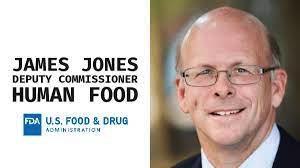
In announcing the appointment, Commissioner Califf stated, “Our proposed reorganization is the largest undertaking of its kind in recent history for our Agency. I am confident that under Jim’s leadership we will build a stronger organization that will be integrated with other components of the FDA and focused on keeping the foods we regulate safe and nutritious.”
EGG-NEWS expresses concern that the incumbent, despite his administrative experience with the EPA, is not a physician and has no formal training in appropriate biological sciences. Surely a national search could have identified a recognized leader in food safety and nutrition with credentials in human medicine, epidemiology and food safety and with appropriate experience in administration. Perhaps qualified potential candidates were identified but declined based on the organizational structure established by the present Commissioner that deviated from the recommendations of the Panel established by the Reagan-Udall Commission.
Ultimately more radical restructuring will be necessary involving separation of the food-regulatory and nutritional aspects of the FDA into a separate Agency within the Department of Health and Human Services. This will be motivated by a probable future health crisis relating to imported or domestic foods or a repeat of the infant-formula debacle as predicted by previous senior FDA administrators in Congressional testimony.

|
China Will Ultimately Influence Feed Price in 2024
|
08/21/2023 |
|
China is a significant importer of U. S. agricultural products. Demand from this trade partner supports the market for soybeans and corn, maintaining relatively higher prices than would otherwise prevail, reflected in feed cost and hence margin. In contradistinction, China imports poultry, pork and beef from the U.S., reducing supply relative to demand and thereby maintaining revenue and margin based on domestic prices for livestock products. For U. S. fiscal 2022, all agricultural exports to China attained $36.4 billion. The major exports included:-

- Soybeans, $16 billion out of total imports by China of $32 billion.
- Corn, $5 billion out of $20 billion imported.
- Beef, $2 billion out of $12 billion.
- Pork, $1 billion out of $7 billion.
- Poultry, predominantly feet (66 percent) and leg quarters, $1 billion out of $6 billion.
For comparison the USDA-WASDE #639, released on August 11th, projects soybean exports to attain 1,825 million bushels representing 40.6 percent of total supply for the 2023 harvest. Total corn exports will rise to 2,050 million bushels corresponding to 12.4 percent of total supply.
The economy of China as a “Communist Peoples Republic” is controlled by the central government. Bureaucrats in large measure determine the volume of imports and their origin with emphasis on needs, price and political considerations. China has yet to recover from the extreme COVID restrictions and will not achieve the previously stated and aspirational GDP growth target of 5 percent during 2023. In contrast to the developed world, China is experiencing deflation with consumer prices 0.3 percent lower in July compared to the corresponding month in 2022. The Producer Price Index has declined on an annual basis for ten consecutive months.
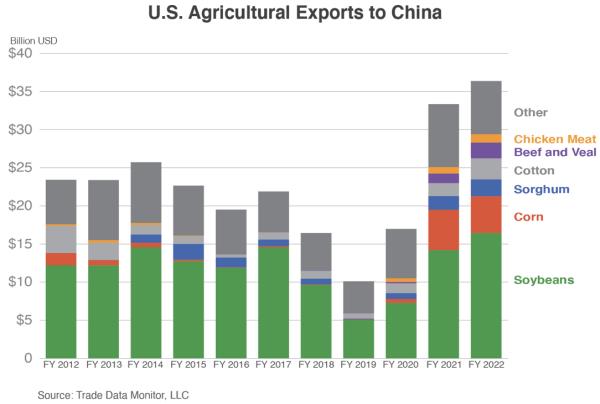 |
Export value declined by ten percent in July and the Goods and Services Index fell by 1.4 percent in the second quarter compared to a year previously. Property sales in the 30 largest cities fell by 28 percent in July compared to 2022. Major property developers that operate government-tolerated Ponzi schemes including Country Garden and Evergrande have experienced cash flow crises with the former company facing meltdown and the latter defaulting on loan repayments.
Faced with the realities of a faltering economy and with prospects for public disaffection, the Government has unveiled measures to improve consumption. Private enterprise will again be encouraged, and labor mobility will be eased. Unfortunately, the central bank of China is not aggressively trimming interest rates and is maintaining an unrealistic short-term value of two percent. This contrasts with the period of COVID restrictions when real interest rates were at a negative three percent and consumer prices were up by five percent. The gross domestic product for China is estimated at 6.3 percent for the second quarter, down considerably on an earlier anticipation of a recovery following COVID restrictions. Over 52 weeks, Chinese currency has declined by 6.9 percent against the U.S. dollar.

The decline in growth and economic opportunity is reflected in the rise in youth unemployment estimated at over 20 percent with more than half of those seeking work comprising recent graduates of universities. This situation is so embarrassing to the Government that the Bureau of Statistics has stopped publishing data on unemployment for those under 30 years of age and has ceased releasing consumer-confidence indexes since mid-year. Domestic tourism is at a low level despite government stimulus and foreign tourism has evaporated. In the absence of well-paying jobs, young citizens of China are unable to afford housing and are delaying marriage. This has exacerbated the decline in population. Couples are reducing family size based on the high cost of raising and educating children especially in cities. It is estimated that currently the average of 1.1 births per woman of childbearing age is far below the 2.1 required to maintain a working population over the long term.
Antagonism between the U. S. and China in geopolitical competition is impacting sales of U. S. agricultural products due to the round of countervailing import duties imposed by both nations. Availability and price of soybeans from Brazil and grains from Russia are landed at lower prices than U. S. equivalents. This trend will persist. The fact that Cargill disposed of poultry assets in China and that Tyson Foods is following a similar path and lower revenue and earnings posted by the WH Group suggests that the decline in the economy in China confirms an unprofitable future for livestock production.
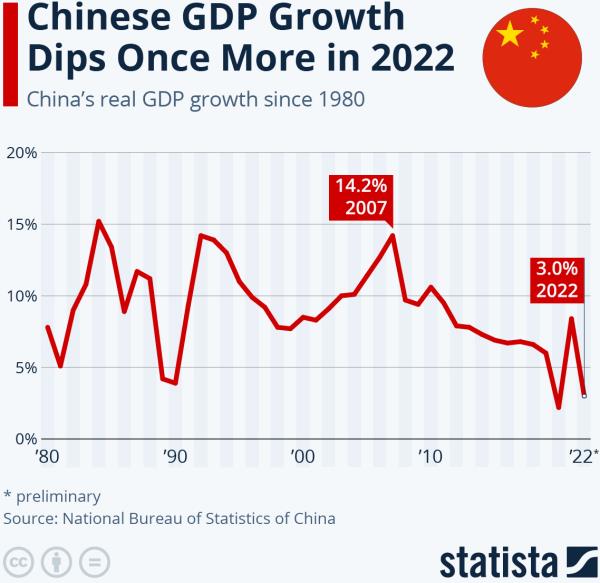 |
For the first six months of 2023, broiler exports to China were down by 13.2 percent by volume and 29.5 percent by value compared to the first half of 2022. Volume and value of broiler exports to China represented 13.2 percent and 16.8 percent of U.S. shipments respectively. The average unit price for all broiler exports to China in 2022 was $1,747 per ton compared to $1,638 per metric ton for the first half of 2023. For the first six months of 2023, China imported 244,982 metric tons of poultry products valued at $401,295. These values were down 22.5 percent and 29.5 percent, respectively from the first half of 2022. Of the 2023 first-half total value of broiler exports, 65.7 percent comprised feet and paws with a unit price of $1,804 per metric ton, down 11.6 percent from $2,041 per metric ton in 2022.
Clearly, the economy of China over the proximal three years will have a considerable impact on U. S. agriculture and the broiler industry. Decreased demand for corn and soybeans will reduce domestic production cost to the advantage of U. S. integrators. Unfortunately, reduced demand for pork and broiler meat in China will accelerate the decline in exports requiring compensatory increases in supply to existing and new import customers. This will, however, necessitate a radical approach to product scope extending beyond bulk leg quarters. But that is a topic for a subsequent editorial.

|
Progress in Facilitating Poultry Exports
|
08/10/2023 |
|
 Dr. John R. Clifford, former Chief Veterinary Officer for the USDA and now Chief Trade Policy Advisor for the USAPEEC recently commented on progress in facilitating exports in the face of HPAI. Since the 2015 epornitic, The Animal Plant Health Inspection Service (APHIS) has negotiated agreements with 80 nations to apply regionalization (zoning) in the event of outbreaks. Notwithstanding the acceptance of World Organization of Animal Health principles and policy, China has continued to impose widespread restrictions on both regions and facilities without regard to scientific reality and inconsistent with other importing nations. Dr. John R. Clifford, former Chief Veterinary Officer for the USDA and now Chief Trade Policy Advisor for the USAPEEC recently commented on progress in facilitating exports in the face of HPAI. Since the 2015 epornitic, The Animal Plant Health Inspection Service (APHIS) has negotiated agreements with 80 nations to apply regionalization (zoning) in the event of outbreaks. Notwithstanding the acceptance of World Organization of Animal Health principles and policy, China has continued to impose widespread restrictions on both regions and facilities without regard to scientific reality and inconsistent with other importing nations.
In his position as an advisor to USAPEEC, Dr. Clifford is obviously influenced by the relative magnitude of broiler exports relative to eggs and turkeys that were the most severely affected segments in the 2023 epornitic. Dr. Clifford notes that effective biosecurity is the only current preventive measure. There is anecdotal evidence that egg-production complexes were infected in 2022 despite high levels of structural and operational biosecurity with the implication of aerogenous introduction over short distances that currently is impossible to interdict. Dr. Clifford stated “It (biosecurity) will not eradicate HPAI by itself. It will help reduce HPAI, but it will not eradicate it. The best way to eradicate it is prevention,” It is impossible to eradicate an infection carried by and introduced by migratory free-living birds on a seasonal basis. Neither will mass depopulation that serves as a control measure to limit lateral dissemination to adjacent farms. If the objective is “prevention” then surely creating an immune population in susceptible regions coupled with biosecurity would represent an advance over the current costly “whack-a mole” approach to control.
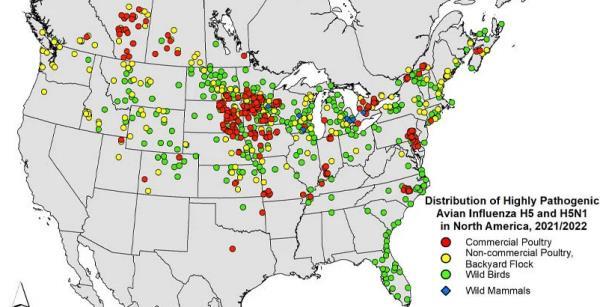 |
He is clearly and justifiably concerned over the implications of applying vaccination as an adjunct to existing prevention measures. Given that HPAI has become regionally and seasonally endemic in many nations, vaccination is now applied in many locations and situations affected by the H5N1 strain. His diplomacy, scientific knowledge and credentials could be used to gain acceptance for more extensive vaccination among importing nations. Irrespective of vaccination status it should be possible given the availability of PCR technology, to certify flocks or even an entire complex as being free from avian influenza prior to shipment.
Dr. Clifford points to the potential loss of revenue from the export of broiler leg quarters. He should, however, consider the cost to the U.S. public sector resulting from an epornitic. More importantly, additional expenditure by consumers in the event of restricted supplies of broiler and turkey meat and eggs is an overlooked burden. During 2022, a doubling in the retail price of eggs cost consumers close to $15 billion.
Dr. Clifford also warns of the potential for a mutant strain of avian influenza becoming zoonotic for which there are precedents. The World Health Organization has also expressed concerns over the possibility of a recombinant event involving H5N1. This strain is now panornitic in distribution on six continents with dissemination of the pathogen facilitated by migratory waterfowl and marine birds with the possibility of mammal reservoirs.
Opponents of vaccination are advancing extremely dubious justifications to support their position. Requiring a large number of untrained personnel to depopulate commercial farms affected with HPAI represents a far greater danger to the industry than using crews to vaccinate long-lived flocks applying appropriate biosecurity. In any event, the administration of inactivated vaccine for long-lived would be performed at the same time as existing multivalent products and would not represent a high incremental cost. For short-lived birds including broilers, vaccine could be administered in hatcheries using HVT-vectored in-ovo products.
In the event that North America is subjected to an extensive outbreak of HPAI in the fall of 2023 or subsequently in the spring of 2014, available avian influenza vaccines similar to those in use in numerous nations, should be considered as a tactical measure complementing biosecurity for specific regions and production systems.

|
APHIS Publishes on 2022 HPAI Epornitic
|
08/07/2023 |
|
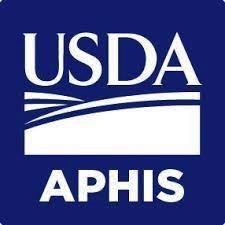 The long-awaited publication on the epidemiologic investigations carried out by USDA-APHIS, confirmed that wild migratory and possibly domestic birds were the source of HPAI H5N1 strain virus in the 2022 epornitic. The study does not specify how virus was introduced onto commercial farms, but it is possible to draw conclusions that can be used to enhance protection. The long-awaited publication on the epidemiologic investigations carried out by USDA-APHIS, confirmed that wild migratory and possibly domestic birds were the source of HPAI H5N1 strain virus in the 2022 epornitic. The study does not specify how virus was introduced onto commercial farms, but it is possible to draw conclusions that can be used to enhance protection.
The publication* released on July 25th provided a statistical analysis of the case-control study conducted by APHIS epidemiologists. Data was obtained by telephone survey conducted from September through December 2022 on 18-case farms and 22 controls located in eight states. By early June, the winter through spring phase of the 2022 H5N1 epornitic had resulted in depletion of 31 million hens or pullets. The study did not encompass the subsequent fall phase of the 2022 outbreaks.
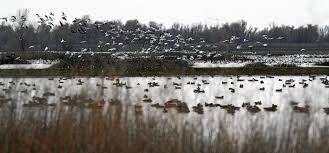
An interim report on epidemiologic investigations was released during the first week of March 2023. This document was inexplicably backdated to July 2022. The report provided neither conclusions nor recommendations and was the subject of a critique in EGG-NEWS on March 8th. A subsequent webinar presented preliminary findings on May 31st with expansion in the number of cases in the eventual publication. The results were both intuitive and expected but again APHIS did not provide any new recommendations other than intensification of basic and applied structural and operational biosecurity.
The publication incorporated a statistical analysis of data collected in the survey identifying factors that were in all probability associated with infection based on the magnitude of calculated odds ratios. These included: -
- Location of a case farm in an existing control zone (odds ratio 8.0)
- The presence of wild waterfowl or shore birds in proximity to the case farm prior to onset of mortality (7.6).
- Wild birds having access to feed on a farm (6.2).
- Wastewater lagoon or drainage ditch visible within 350 yards of farm (3.3).
- Mowing or bush hogging prior to onset of infection (2.6).
Given that wild birds and specifically migratory waterfowl and shore birds are known to disseminate H5N1 virus, the findings relating to their presence prior to an outbreak are not unexpected. Proximity to water or drainage ditches is also indicative of the role of free-living waterfowl in exposing commercial farms to infection. Attracting birds onto commercial farms by allowing access to feed is also self-evident. Investment in structural biosecurity and application of operational biosecurity contributed to a reduction in the probability of infection with specific reference to vehicle washing (0.3 odds ratio below unity, denoting protection). The presence of a farm gate was associated with a 0.2 odds ratio, with this factor presumably serving as a composite for structural biosecurity.
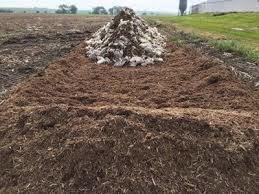 The hierarchy of biosecurity extends from conceptual biosecurity at the apex through structural and then down to operational components of biosecurity. Each is dependent on the previous level for efficacy in preventing introduction of disease. It is an unfortunate defect in conceptual biosecurity that many large integrated complexes are located in the Mississippi and Central Flyways. Large complexes that are frequently sited in close proximity to rivers and wetlands invariably predicates direct or indirect contact between migratory waterfowl and commercial flocks. Structural biosecurity requires capital expenditure and operational biosecurity is based on the provision of consumables and ongoing management with both providing variable levels of protection. Current levels of even extreme biosecurity do not address the challenge of contact between migratory waterfowl and high concentrations of commercial poultry. The emergence of clade 2.3.4.4b with wide host-species susceptibility and an apparent change in the migratory patterns of marine birds since 2021, predicate in favor of recurring infection along U.S. flyways. The hierarchy of biosecurity extends from conceptual biosecurity at the apex through structural and then down to operational components of biosecurity. Each is dependent on the previous level for efficacy in preventing introduction of disease. It is an unfortunate defect in conceptual biosecurity that many large integrated complexes are located in the Mississippi and Central Flyways. Large complexes that are frequently sited in close proximity to rivers and wetlands invariably predicates direct or indirect contact between migratory waterfowl and commercial flocks. Structural biosecurity requires capital expenditure and operational biosecurity is based on the provision of consumables and ongoing management with both providing variable levels of protection. Current levels of even extreme biosecurity do not address the challenge of contact between migratory waterfowl and high concentrations of commercial poultry. The emergence of clade 2.3.4.4b with wide host-species susceptibility and an apparent change in the migratory patterns of marine birds since 2021, predicate in favor of recurring infection along U.S. flyways.
The major deficiency of the APHIS publication relates to a failure to identify how HPAI virus that is carried and shed by migratory waterfowl and shore birds actually entered farms. There is adequate anecdotal evidence that wind dispersal can occur over relatively short distances. It could be hypothesized that virus is shed by waterfowl attracted to retention ponds, dams and drainage areas adjacent to farms. High wind could transfer virus entrained on dust into houses containing flocks. The fact that most layer or pullet barns in the affected states, even during winter, operate with negative ventilation at high rates (1 million cubic feet per minute for 250,000 hens) would facilitate introduction of infection. Newcastle disease was shown to be wind-transmitted from affected to susceptible farms over distances of up to two miles during the Essex 1972 outbreaks in the U.K. Mowing and cultivation of fields adjacent to farms may aerosolize virus shed by free-living birds contributing to aerogenous spread. Although strict structural and operational biosecurity reduces the probability of introducing infection, it is obviously not absolute, given the number of outbreaks recorded despite documented high levels of biosecurity on some of the farms that were infected.
USDA- APHIS can be faulted for not aggressively attempting to apply known epidemiologic principles of investigation to the outbreak at an early stage in the epornitic. Experience gained from the 2015 outbreak should have resulted in preemptively establishing programs of investigation involving both field and molecular evaluation. If pre-planned, appropriately funded studies with adequate personnel could have been activated during the first quarter of 2022 during which close to 19 million hens were depleted.
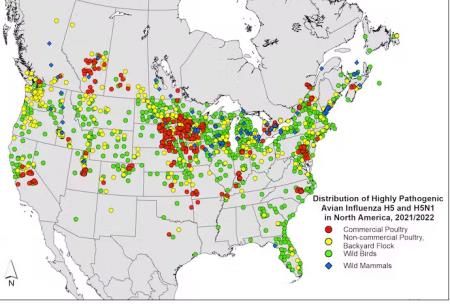 The case farms ranged in size from 50,000 to 5 million hens. There are many differences in structure and operation between small contract egg supply farms and large mega-complexes with a feed mill, packing plant and service infrastructure. Combining farms with widely different capacities and facilities introduces confounding since activities and operations are different invalidating direct case-control comparisons. The case farms ranged in size from 50,000 to 5 million hens. There are many differences in structure and operation between small contract egg supply farms and large mega-complexes with a feed mill, packing plant and service infrastructure. Combining farms with widely different capacities and facilities introduces confounding since activities and operations are different invalidating direct case-control comparisons.
An additional deficiency in the study related to the use of a 26-page questionnaire based on the 2015 investigation that was administered by telephone, in many cases months after an outbreak. Telephone surveys obviously suffer from the deficiencies of responder fatigue and recall failure. Competent investigators acquainted with U.S. egg-production practices and procedures should have been deployed to case and control farms as soon as possible after confirmation of a diagnosis in order to verify levels of biosecurity and to identify factors that may have contributed to infection. An obvious example relates to whether vehicle wash stations were effective on a specific case farm. Six months after the event, a responder will confirm that they were present but there is no indication as to their efficacy. There are many cases of malfunction of vehicle wash stations including failure due to icing during periods of low temperature, blocked nozzles or inadequate design that could confound the relevance of a factor as assessed remotely months after an outbreak.
Public funds in excess of $1 billion were incurred through activities to suppress secondary outbreaks of avian influenza including indemnity and logistic costs for depopulation, disposal and decontamination. Expenditure on personnel to conduct real-time and intensive field and laboratory epidemiologic investigations would have provided an immeasurable return by identifying both predisposing and protective factors by the end of the first quarter of 2022.
From presentations at national and regional meetings, APHIS appears to have embarked on a victory lap during early 2023 given the absence of incident outbreaks. This had little to do with the depletion of up to 44 million hens on 22 large complexes each with more than 500,000 hens but with a total of 41 commercial egg-production facilities in 11 states. The end to the epornitic can be attributed to the fact that in early 2023, wild birds were presumably no longer moving from their breeding grounds to disseminate virus. The discrepancy in incidence rates of HPAI between the first quarters of 2022 and 2023 have not apparently been investigated but are worthy of study.
The preliminary epidemiologic investigation of the 2022 epornitic, suggests aerogenous introduction of infection onto farms from migratory waterfowl. This invalidates the whack-a-mole approach by APHIS to “eradication”. The reality based on persistence of infection in Europe, Africa and in wild birds in North America suggests that H5N1 avian influenza is both seasonally and regionally endemic. This realization coupled with the possibility of aerogenous transmission over short distances presumes that tactical vaccination should be considered as an adjunct to biosecurity as an added measure of prevention.
Opponents of vaccination are primarily confined to the broiler segment, justifiably concerned over obstruction of trade. It must be remembered that the 2022 epornitic resulted in a two-fold increase in the retail price of eggs as a result of the disruption in the supply to demand equilibrium. The HPAI epornitic of 2022 cost consumers $15 billion and contributed to food inflation that became both economic and political issues transcending the narrower considerations of one sector of the U. S. poultry industry.
The authors of the USDA-APHIS study and the subsequent publication ought to be commended for their efforts. They could have made a greater and earlier contribution had they been provided with more support. The responsibility for this deficiency lies with administrators obviously lacking in knowledge and vision. The policy of APHIS during 2015 and 2022 was based on the inappropriate concept of “eradication” This resulted in simply refining the procedures and responses that were relatively ineffective in controlling the Pennsylvania 1984 outbreak.
It is hoped that APHIS recognizes the need to provide the industry with science-based recommendations to prevent HPAI. This presumes prompt collection and analysis of field data and molecular studies. HPAI will in all probability return in the fall and APHIS should be prepared to respond not only with traditional depopulation but with practical measures to reduce the economic impact. A limited study on vaccination efficiency, as conducted in the Netherlands, France, Germany and Holland would be appropriate if not already planned.
*Green, A. et al Investigation of risk factors for introduction of highly pathogenic avian influenza H5N1 virus onto table egg farms in the United States, 2022: a case-control study. Frontiers in Veterinary Science. Doi: 10.3389/vets.2023.1229008

|
Implications of the Six-Week House Recess
|
07/30/2023 |
|
 The House has adjourned for a six-week recess and will reconvene in mid-September with limited time to conclude business before the end of the fiscal year. The House should have passed twelve appropriation bills but managed to approve just one for the Department of Veterans’ Affairs and military construction. It is noteworthy that the only appropriations bill passed in July was by a 219-211 vote. This does not auger well for rapid passage in September. Failure to pass the appropriation bills will result in a government shutdown, placing the economy and government functions in jeopardy. The House has adjourned for a six-week recess and will reconvene in mid-September with limited time to conclude business before the end of the fiscal year. The House should have passed twelve appropriation bills but managed to approve just one for the Department of Veterans’ Affairs and military construction. It is noteworthy that the only appropriations bill passed in July was by a 219-211 vote. This does not auger well for rapid passage in September. Failure to pass the appropriation bills will result in a government shutdown, placing the economy and government functions in jeopardy.
Speaker Kevin McCarthy believes that an effort to engage members to pass eleven appropriations bills and consider other House business during the second half of September will be achievable. Given both intra- and inter-party dissension with conflicting interests including the so-called “culture wars”, passage of spending bills appears problematic.
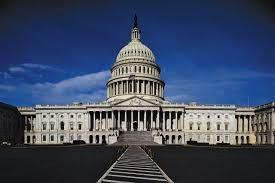 The appropriations for the Department of Agriculture and the FDA are especially of concern to the poultry industry. Normally these spending bills are noncontroversial. Considerations extraneous to food production including blocking of racial equity programs, policy over gender-affirming therapy and the sale of oral abortifacients that are irrelevant to agriculture will obviously delay passage of the USDA spending bill and will predispose to a shutdown. Termination of some services may not directly impact farming over a short period. Interruption of essential activities such as control of catastrophic diseases will have serious repercussions. Waterfowl will commence migration in the fall and laboratory services and field control measures will be necessary in the event of outbreaks of avian influenza. The appropriations for the Department of Agriculture and the FDA are especially of concern to the poultry industry. Normally these spending bills are noncontroversial. Considerations extraneous to food production including blocking of racial equity programs, policy over gender-affirming therapy and the sale of oral abortifacients that are irrelevant to agriculture will obviously delay passage of the USDA spending bill and will predispose to a shutdown. Termination of some services may not directly impact farming over a short period. Interruption of essential activities such as control of catastrophic diseases will have serious repercussions. Waterfowl will commence migration in the fall and laboratory services and field control measures will be necessary in the event of outbreaks of avian influenza.
The 2018 Farm Bill expires on September 30th and the need for an extension appears inevitable. The House Agriculture Committee Chair, Glenn Thompson (R-PA), intended to present a Farm Bill in September but the passage of spending bills will take precedence. Aside from the restraint of a crowded legislative calendar, there is considerable dissension over aspects of the 2023 Farm Bill with conflicting demands from both sides of the aisle but also within the majority party in the House. This does not take into account the wide gulf between House and Senate versions of the Farm Bill of 2023
As with many of my peers growing up in the post WWII years, we were obliged to complete family chores and homework before going out to play. It seemed tough at the time but created a sense of responsibility and commitment to objectives. It is unconscionable that elected Representatives have abandoned their place of work for a six-week recess without having completed their obligation to fund the government and conduct the “peoples business”. This is no time for political posturing and engaging in parochial activities that are intended to favor reelection in November 2024. The most important considerations are the well-being of our nation with economic stability and progress. This can only be achieved by rational decisions and mature interaction under decisive leadership. The American people including our farming community deserve better from the legislative branch of government.

|
Hope for Restoration of Grain Shipments from Ukraine
|
07/23/2023 |
|
 The U. S. has invited Tang Renjian, Minister of Agriculture of the People's Republic of China, to the August 3rd meeting of the Asia-Pacific Economic Cooperation (APEC). The U. S. has invited Tang Renjian, Minister of Agriculture of the People's Republic of China, to the August 3rd meeting of the Asia-Pacific Economic Cooperation (APEC).
This would provide an opportunity for ministers of agriculture to interact with their counterparts to address pressing issues. The most important is withdrawal by the Russian Federation from the Black Sea Grain Initiative followed by deliberate bombardment of the three major export ports, Odesa,  Chonomorsk and Uchny over a five-day period. Damage to export installations is extensive according to the Ministry of Agriculture for Ukraine. Even if the BSGI is resuscitated, shipments will be restricted. In addition, Russia has threatened to regard any vessels sailing to the ports as “hostile” subject to attack and has allegedly mined the approaches to the major ports. Chonomorsk and Uchny over a five-day period. Damage to export installations is extensive according to the Ministry of Agriculture for Ukraine. Even if the BSGI is resuscitated, shipments will be restricted. In addition, Russia has threatened to regard any vessels sailing to the ports as “hostile” subject to attack and has allegedly mined the approaches to the major ports.
Although Russia claims that cancellation of the BSGI was in retribution to an attack on the Kerch Causeway, the reality is that international sanctions have created financial problems for the Russian Federation.
The entire world will suffer if corn, wheat and oil seeds from Ukraine, fail to reach markets. China would be especially impacted as it is a major purchaser of wheat from both Ukraine and Russia.
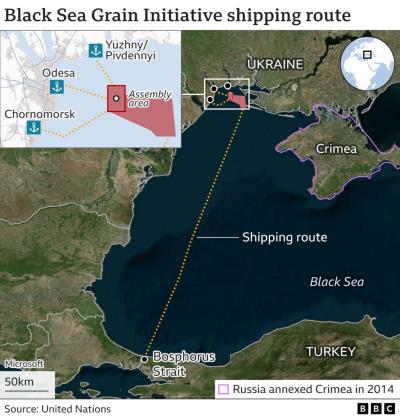 If Russia attacks merchant vessels in international waters of the Black Sea, NATO may intervene to create free passage from the area east of the three ports where convoys can assemble southward to the Bosphorus. A clash between naval vessels of NATO and the Russian Federation would certainly broaden the conflict with serious implications for peace in Europe. Given the current situation of the belligerence, Russia is in no position to embark on a major continental war. If Russia attacks merchant vessels in international waters of the Black Sea, NATO may intervene to create free passage from the area east of the three ports where convoys can assemble southward to the Bosphorus. A clash between naval vessels of NATO and the Russian Federation would certainly broaden the conflict with serious implications for peace in Europe. Given the current situation of the belligerence, Russia is in no position to embark on a major continental war.
Since the United Nations arose from meetings in San Francisco in 1945, it is hoped that a gathering of APEC members, 78 years later would still carry the same spirit of international cooperation. The task of participants will be to resolve a major issue that will impact the price of agricultural commodities and influence the standard of nutrition in both industrialized and developing nations.

|
U. S. Susceptible to Zoonoses-Avian Influenza High on the List of Potential Pathogens
|
07/18/2023 |
|
A July 7th article in The New York Times highlighted the risk of zoonosis emerging in the U. S. The article suggested, with justification that the U.S. population is as vulnerable as those in Africa and Asia, given the volume of importation of live animals, the presence of live-bird markets in urban areas and the scale of intensive livestock production.
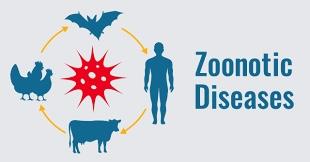 During the 20th century, significant diseases transmitted from animals to man including anthrax and tuberculosis were controlled by the efforts of federal and state officials. A major advance was pasteurization of milk that limited transmission of tuberculosis, brucellosis, campylobacteriosis, STEC and salmonellosis. Regrettably, in recent years, state legislatures embracing the principle of “freedom to become infected” have allowed the sale of raw milk that will, inevitably, result in infection among consumers and regrettably, children. During the 20th century, significant diseases transmitted from animals to man including anthrax and tuberculosis were controlled by the efforts of federal and state officials. A major advance was pasteurization of milk that limited transmission of tuberculosis, brucellosis, campylobacteriosis, STEC and salmonellosis. Regrettably, in recent years, state legislatures embracing the principle of “freedom to become infected” have allowed the sale of raw milk that will, inevitably, result in infection among consumers and regrettably, children.
The New York Times article reported on studies conducted by the Harvard Law School, Animal Law and Policy Program that is decidedly opposed to intensive livestock production. This group cites the Centers for Disease Control and Prevention as determining that “Seventy five-percent of new and emergent infections are zoonotic in origin”. Although the source of COVID is obscured by deliberate suppression of information by the Government of China, it is evident that recent emergence of coronavirus infections, including SARS and MERS were associated with animal reservoirs. SARS-CoV-19 was diagnosed in mink farms with obvious animal-to-animal transmission and mutation in Denmark, Holland and the U.S. shortly after initial outbreaks were recognized among humans.
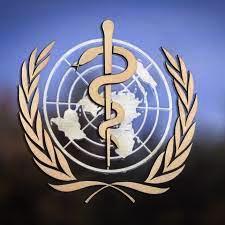
During the past three years, the World’s poultry industry has contended with the emergence and depredation of H5N1 avian influenza on five continents. This infection is unfortunately not confined to free-living and domestic avian species. Epidemiologic studies have confirmed that a wide range of mammals are susceptible to H5N1, including many carnivores that either acquire infection through predation or from scavenging dead infected birds. Mutation of the virus has increased the range of host susceptibility to H5N1 although at the present time there is no evidence that infection is transmitted among free-living animals in the U.S. It is of concern that an outbreak that occurred on a mink farm in Spain during October 2022 demonstrated obvious animal-to-animal transmission. Mortality among marine mammals off the coast of Peru and Chile also suggests animal-to-animal transmission given the magnitude of losses. Given the numbers of birds held in close proximity on large farms in areas of high population density there is concern over the probability of emergence of mutant strains with pandemic potential. This view is accepted and promoted by the World Health Organization. The Agency is a proponent of “One Health” principles that recognizes an epidemiologic commonality among free-living animals and birds, domestic 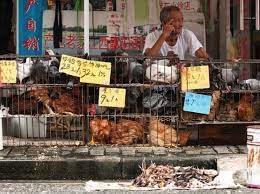 herds and flocks and human populations. herds and flocks and human populations.
Fortunately to date, there have been only a handful of confirmed cases of zoonotic transmission of H5N1 to humans but as yet no evidence of human-to-human transmission. In contrast hogs that are susceptible to avian and mammalian strains of influenza transmit specific serotypes to humans and may serve as “mixing vessels” for the emergence of recombinant influenza strains that could be pathogenic for humans.
Cases of H5 and H7 avian influenza in humans occur sporadically in Asia and are associated mainly with live-bird markets. In the event of a series of cases in an area, regulatory officials in China close markets for a limited period. Tradition, especially in rural areas, results in resumption of operation after a short duration. Following the occurrence of H7N9 avian influenza in humans, China initiated a program of vaccination of broilers destined for live markets with apparent benefits in lowering the incidence rate.
With respect to live-bird markets, there are close parallels between the U.S. and Asia. The Center for Environmental and Animal Protection at New York University determined that at least 130 live-bird markets operate in the Northeastern United States alone. This represents an unconscionable risk with negligible material benefit to society. Isolation of avian influenza from live-bird markets is more a function of surveillance than actual prevalence. The fact that low-pathogenicity avian influenza virus can be isolated from birds and the environment of these store-front markets irrespective of sanitation, suggests infection derived from the multi-age farms of origin. Live-bird markets represent a point of contact between poultry and humans in a setting that favors transmission. All that is needed is a virus that has undergone mutation to precipitate a public health problem.
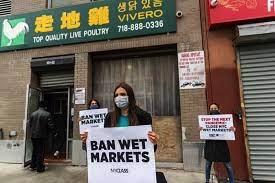
With respect to commercial poultry, egg production complexes with more than 1.5 million hens create the possibility of point mutations. The program of depopulation “stamping out” in an attempt to eradicate avian influenza has proven to be unsuccessful in Western Europe and North America. Given the fact that migratory birds continue as reservoirs and disseminators of virus, perpetuating infection, avian influenza H5NX strains may now be regarded as seasonally and regionally endemic in many nations. Since the whack-a-mole approach to control is both expensive and ultimately ineffective, mass immunization should be considered as an adjunct to biosecurity in reducing the probability of avian strains of H5 and H7 becoming zoonotic.

|
Reorganization of Food Activities at FDA
|
07/03/2023 |
|
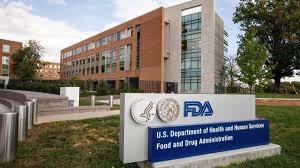 Responding to extensive criticism and Congressional pressure, the FDA Commissioner, Dr. Robert M. Califf, has released proposals to reorganize the food-related activities of the Agency. The principal changes will conform to the recommendations of the Reagan-Udall Committee that reviewed structure and function following a series of public health crises: - Responding to extensive criticism and Congressional pressure, the FDA Commissioner, Dr. Robert M. Califf, has released proposals to reorganize the food-related activities of the Agency. The principal changes will conform to the recommendations of the Reagan-Udall Committee that reviewed structure and function following a series of public health crises: -
- The Agency will appoint a Deputy Commissioner for Human Foods responsible for all food-related activities. This is a reversion to an earlier functional organizational structure that was changed by Dr. Scott Gottlieb during his brief tenure at the FDA.
- A unified Human Foods Program (HFP) will be developed with an Office of Regulatory Affairs (ORA) responsible for investigations, inspections and oversight of imports.
- The FDA will appoint an Associate Commissioner for Regulatory Affairs to lead this Office
- Compliance functions currently within the Office of Regulatory Affairs will be merged with the Human Food Program to expedite decisions. The eight Human and Animal Food Laboratories managed by the ORA, will be incorporated into the HFP and will operate in conjunction with the four current FDA Center for Food Safety and Applied Nutrition facilities to create a single food laboratory capability functioning within the Human Food Program.
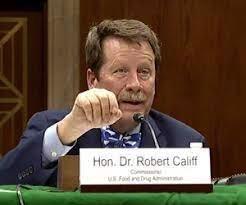
- Activities currently under the Office of Security and Emergency Management will be transferred from the Office of Operations to the Office of Regulatory Affairs.
- Cooperative functions involving state and local food safety agencies will be managed through an Office of Integrated Food Safety Systems Partnerships. This entity will be located within the Human Food Program.
-
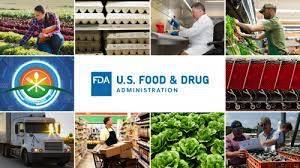 Although Dr. Califf is making changes in accordance with recommendations made by the Reagan-Udall Committee, there is a whiff of reluctance to make the necessary radical changes to ensure effective function. The previous recommendations for reorganization were essentially rearranging deck chairs on the Titanic. It is questioned whether the Commissioner should establish a firm organizational structure and assign responsibilities and functions before appointing the responsible Deputy Commissioner. Surely, the objective should be to appoint the best possible person available, willing to assume the responsibility, and allow the incumbent to structure the food-related activities according to the challenges facing the Agency. Appointing a Deputy Commissioner after the effect will possibly reduce the available pool of qualified candidates and when appointed, hamper ability to effect changes both in culture and function. Although Dr. Califf is making changes in accordance with recommendations made by the Reagan-Udall Committee, there is a whiff of reluctance to make the necessary radical changes to ensure effective function. The previous recommendations for reorganization were essentially rearranging deck chairs on the Titanic. It is questioned whether the Commissioner should establish a firm organizational structure and assign responsibilities and functions before appointing the responsible Deputy Commissioner. Surely, the objective should be to appoint the best possible person available, willing to assume the responsibility, and allow the incumbent to structure the food-related activities according to the challenges facing the Agency. Appointing a Deputy Commissioner after the effect will possibly reduce the available pool of qualified candidates and when appointed, hamper ability to effect changes both in culture and function.
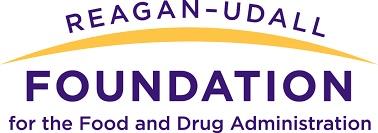
The problems that have emerged with safety of infant formula, deficiencies with respect to inspection and regulation of imported foods, failure to resolve the problem of contaminated leafy greens, the presence of heavy metals in infant foods, neglect of nutritional standards to reduce metabolic disease and other deficiencies clearly point to a need for a new agency dedicated to food safety and nutrition and separate from the existing Food and Drug Administration. Ultimately, the best interests of U.S. consumers would be served by an agency integrating all aspects of food and nutrition and combining the present red meat and poultry jurisdiction of the USDA FSIS with the current food and nutrition responsibilities of the FDA.

|
USDA Preemptively Funding Projected HPAI Control
|
06/26/2023 |
|
The U. S. Department of Agriculture will transfer $502 million to the APHIS under the Animal Health Protection Act, in anticipation of anticipated HPAI outbreaks in the fall of 2023. Expenditures for the 2022 campaign exceeded $800 million in emergency funding. The traditional response to outbreaks of HPAI involves rapid diagnosis and confirmation, quarantine, depopulation with indemnity, disposal, decontamination and surveillance.
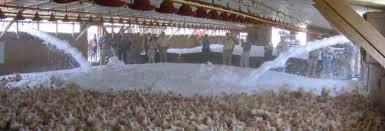 At this time, USDA is advocating and promoting biosecurity functioning without a definitive understanding of the epidemiology of the infection under field conditions. At this time, USDA is advocating and promoting biosecurity functioning without a definitive understanding of the epidemiology of the infection under field conditions.
USDA in cooperation with state partners and producers has made considerable progress in early recognition and diagnosis of avian influenza. Through the application of VSD, against which there is growing opposition, the time required to depopulate a large complex has been theoretically reduced to prevent the dissemination of virus. This is evidenced by the absence of apparent lateral infection during the 2022 epornitic despite depopulation on large complexes requiring as long as a week in duration.
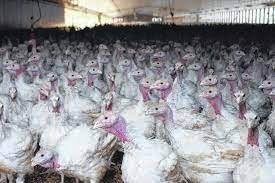 USDA in partnership with the wildlife resources of the Department of the Interior is maintaining surveillance over migratory waterfowl that introduce and disseminate virus. Additional information is required on the prevalence in domestic wild birds and also terrestrial mammals that are regarded as accidental hosts in the sequence of infection. An important question is whether avian influenza is transmitted, even over relatively short distances, by the aerogenous route. If this is a mechanism by which virus is introduced on to large, egg-production complexes as is suspected, intensification of both structural and operational biosecurity will not provide absolute protection. An epornitic in the fall of 2023, extending into 2024 or in a subsequent year will strengthen the conviction that HPAI is both regionally and seasonally endemic and will tip the scales in favor of limited, tactical vaccination. USDA in partnership with the wildlife resources of the Department of the Interior is maintaining surveillance over migratory waterfowl that introduce and disseminate virus. Additional information is required on the prevalence in domestic wild birds and also terrestrial mammals that are regarded as accidental hosts in the sequence of infection. An important question is whether avian influenza is transmitted, even over relatively short distances, by the aerogenous route. If this is a mechanism by which virus is introduced on to large, egg-production complexes as is suspected, intensification of both structural and operational biosecurity will not provide absolute protection. An epornitic in the fall of 2023, extending into 2024 or in a subsequent year will strengthen the conviction that HPAI is both regionally and seasonally endemic and will tip the scales in favor of limited, tactical vaccination.

|
Implications of the Expanded Food Safety Investigation Act
|
06/18/2023 |
|
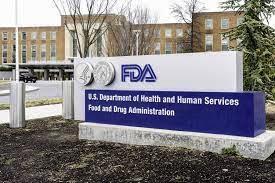 Representative Rosa DeLauro (D-CT) has reintroduced the Expanded Food Safety Investigation Act first proposed in 2019. Representative DeLauro has extensive experience in public health and is concerned over foodborne infection. The Bill was motivated by successive nationwide outbreaks of STEC colibacillosis associated with romaine lettuce produced in the Yuma Valley of Arizona and the Central Valley of California. Irrigating fields with water contaminated by runoff from concentrated animal feeding operations (CAFOs) is generally regarded as the source of infection. The leafy greens industry does not apply a positive kill-step between cultivation and consumption of a food that is not subject to heating. Representative Rosa DeLauro (D-CT) has reintroduced the Expanded Food Safety Investigation Act first proposed in 2019. Representative DeLauro has extensive experience in public health and is concerned over foodborne infection. The Bill was motivated by successive nationwide outbreaks of STEC colibacillosis associated with romaine lettuce produced in the Yuma Valley of Arizona and the Central Valley of California. Irrigating fields with water contaminated by runoff from concentrated animal feeding operations (CAFOs) is generally regarded as the source of infection. The leafy greens industry does not apply a positive kill-step between cultivation and consumption of a food that is not subject to heating.
The Expanded Food Safety Investigation Act is well intentioned as with most of the legislation suggested by Representative DeLauro. The Act would empower FDA investigators to conduct field studies requiring entry to farms to obtain samples and conduct studies relating to the etiology of foodborne diseases. The activities suggested fall within the function of the Centers for Disease Control staffed with trained epidemiologists staffed with the appropriate laboratory resources. These specialists are capable of conducting field i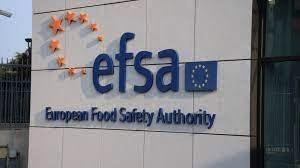 nvestigations to establish environmental and operational factors that relate pathogens to consumers in the food chain. Investigation of foodborne disease outbreaks back to source is considered necessary to develop appropriate control strategies and to enhance protection of consumers. nvestigations to establish environmental and operational factors that relate pathogens to consumers in the food chain. Investigation of foodborne disease outbreaks back to source is considered necessary to develop appropriate control strategies and to enhance protection of consumers.
The problem presented by the proposed legislation lies in the fact that the FDA would be empowered to exercise investigative activities on farms. Based on the appallingly amateurish and incompetent approach to implementation of the Final Rule On The Prevention of Salmonella in egg production from 2010 onwards, the FDA is ill equipped to become involved in livestock production. Recent investigations arising from contamination of infant formula point to the deficiencies in structure, internal communication, resource deployment and ability to preemptively plan a response a to potential foodborne disease. The Agency cannot even react timeously to a documented whistleblower report as confirmed in Congressional investigations.
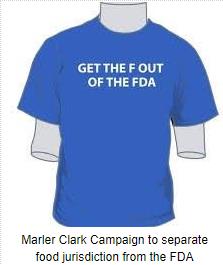 Entrusting the FDA with additional authority and responsibility will simply generate more confusion and negative effects given the lack of institutional competence of the Agency. Involvement of competent scientific investigators in foodborne outbreaks is justified but this would require a separate food safety agency staffed with appropriate field investigators trained in epidemiology and with an understanding of the livestock production system. Farm investigations under a food safety agency incorporating the current jurisdictions of the FDA and those of FSIS would be acceptable and beneficial in the context of public health. The problem with the Expanded Food Safety Investigation Act is that Representative DeLauro is entrusting additional responsibility to an Agency that clearly cannot fulfill its obligations with respect to food safety. Tacking on additional tasks to an overburdened and dysfunctional Agency will be of little benefit to consumers and will place additional pressure on producers. The proposed legislation should be deferred until a competent and suitably empowered U.S. Food Safety Agency becomes a reality. Entrusting the FDA with additional authority and responsibility will simply generate more confusion and negative effects given the lack of institutional competence of the Agency. Involvement of competent scientific investigators in foodborne outbreaks is justified but this would require a separate food safety agency staffed with appropriate field investigators trained in epidemiology and with an understanding of the livestock production system. Farm investigations under a food safety agency incorporating the current jurisdictions of the FDA and those of FSIS would be acceptable and beneficial in the context of public health. The problem with the Expanded Food Safety Investigation Act is that Representative DeLauro is entrusting additional responsibility to an Agency that clearly cannot fulfill its obligations with respect to food safety. Tacking on additional tasks to an overburdened and dysfunctional Agency will be of little benefit to consumers and will place additional pressure on producers. The proposed legislation should be deferred until a competent and suitably empowered U.S. Food Safety Agency becomes a reality.

|
HPAI Vaccination the Focus of the 90th General Session of the WOAH
|
06/13/2023 |
|
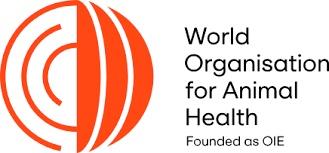 The 90th World Assembly for the World Organization for Animal Health (WOAH), held in Paris May 21st through 25th, included a Forum on avian influenza. The rapporteur for the session was Dr. David Swayne, recently retired as Director of the Southeastern Poultry Research Laboratory and a world expert on avian influenza. His comprehensive review, “Strategic Challenges in the Global Control of HPAI”, highlighted changes in the epidemiology of avian influenza and set the stage for a consideration of vaccination as a component of both prevention and control. The 90th World Assembly for the World Organization for Animal Health (WOAH), held in Paris May 21st through 25th, included a Forum on avian influenza. The rapporteur for the session was Dr. David Swayne, recently retired as Director of the Southeastern Poultry Research Laboratory and a world expert on avian influenza. His comprehensive review, “Strategic Challenges in the Global Control of HPAI”, highlighted changes in the epidemiology of avian influenza and set the stage for a consideration of vaccination as a component of both prevention and control.
Session One of the Forum dealt with avian influenza intelligence, comprising monitoring, surveillance, detection and prevention. The panel emphasized the dynamic nature of avian influenza and the need to share surveillance data focusing on free-living and migratory birds. The panel recognized the different approaches required for subsistence farms compared to large commercial flocks. The discussion recognized the shortcomings of biosecurity in small commercial farms and backyard flocks and the need for protection based on the contribution of poultry production in low-income nations.
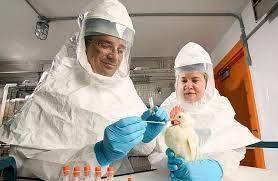
Dr. David Swayne |
The Second Session dealt with response to HPAI with an emphasis on the continuity of operations and the potential benefits from vaccination. The panel recognized that dissemination by migratory birds has overwhelmed regulatory agencies in their attempts to “stamp out” HPAI. This is especially the case when multiple outbreaks occur in diverse areas of a nation as in the U.S during the 2015 and 2022 epornitics and in France since 2021. The need to recognize compartmentalization and regionalization (zoning) and the benefits of vaccination should be incorporated into national programs of suppressing HPAI to ensure business continuity. The panel recognized the conflicts over vaccination with respect to trade. The need for planning to implement a successful vaccine strategy was emphasized with appropriate evaluation of effectiveness through surveillance. The introduction of innovative vaccines will allow for the rapid production and distribution of products that are antigenic and homologous with prevalent strains.
The Third Session on International Standards to Facilitate Trade included Dr. Rosemary Sifford of the USDA-APHIS as a panel member along with colleagues from Brazil, Japan, the European Commission and the International Egg Commission. Key messages from this session included: -
- The need for trust between trading partners based on transparency and release of relevant information.
- Vaccination programs that are effective and are managed with appropriate surveillance. The official report stated “Comprehensive consensus among members, the scientific community and relevant stakeholders is, therefore, needed.”
- Trade can be maintained by recognizing the principles of regionalization (zoning) and compartmentalization.
- The panel recognized that existing bilateral or multilateral trade agreements may serve as a barrier to deployment of AI vaccines. The recognition of regionalization and compartmentalization should not require prolonged renegotiations given changes to international standards.
- Procedures and policies of the WOAH are incorporated into the Terrestrial Code and the Terrestrial Manual that detail surveillance, vaccination, regionalization and compartmentalization, forming the basis of national control programs.

90th WOAH Congress |
Conclusions from the HPAI Forum demonstrated existing inequities in surveillance capability. The need to suppress avian influenza is self-evident in both industrialized nations and low-income countries where populations are dependent on subsistence poultry production. Zoning, compartmentalization and vaccination are obviously prerequisites to trade but flexibility is required with respect to adherence to the WOAH Terrestrial Code to “minimizing impacts on trade and economics”.

|
FIGHT Act Introduced into Congress
|
06/08/2023 |
|
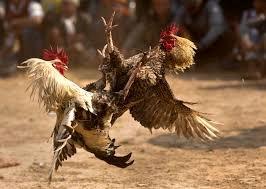 The Fighting, Inhumane Gambling and High-Risk Trafficking (FIGHT) Act has been introduced into Congress. The House Bill H.R.2742 is sponsored by Representatives Don Bacon (R-NE) and Andrea Salinas (D-OR) with a companion bill (S.1529) in the Senate sponsored by Senators John Kennedy (R-LA) and Cory Booker (D-NJ). The Fighting, Inhumane Gambling and High-Risk Trafficking (FIGHT) Act has been introduced into Congress. The House Bill H.R.2742 is sponsored by Representatives Don Bacon (R-NE) and Andrea Salinas (D-OR) with a companion bill (S.1529) in the Senate sponsored by Senators John Kennedy (R-LA) and Cory Booker (D-NJ).
The Bills would establish a federal ban on dog and cock fights for the purpose of gambling in the U. S. In addition, the Bills would ban the shipment of fighting cocks through U.S. Mail and would create a citizens’ suit provision to allow civil actions against known sponsors of animal fighting.
In the 1980s, serving on the faculty of the College of Veterinary Medicine at Louisiana State University, I expressed personal conflict over proposed state legislation to ban cock fighting, a traditional “sport” in the state. This was based on the fact that I wanted to maintain contact with game fowl breeders to encourage them to submit sick birds for laboratory diagnosis. This was to maintain surveillance over flocks and to detect possible introduction of Newcastle disease, endemic in Mexico and a threat to the U. S. poultry industry. My ambivalence was tempered by an innate sense of abhorrence over institutionalized gambling involving pain and cruelty.
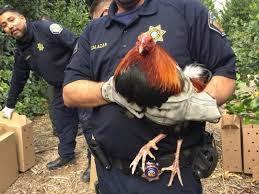 Moving forward in the 2020s, EGG-NEWS firmly supports the proposed federal legislation if only based on the need to eliminate the potential risk of introduction of catastrophic diseases such as Newcastle disease and highly pathogenic avian influenza (HPAI). More importantly, the unregulated movement of fighting cocks contributes to dissemination of these diseases as evidenced with an outbreak of Newcastle disease that was spread from California to Utah in addition to possibly other undocumented cases. Moving forward in the 2020s, EGG-NEWS firmly supports the proposed federal legislation if only based on the need to eliminate the potential risk of introduction of catastrophic diseases such as Newcastle disease and highly pathogenic avian influenza (HPAI). More importantly, the unregulated movement of fighting cocks contributes to dissemination of these diseases as evidenced with an outbreak of Newcastle disease that was spread from California to Utah in addition to possibly other undocumented cases.
Cock fighting and dog fighting are associated with concurrent antisocial activities including drug use, money laundering and other crimes. Although elimination of cock fighting will not materially reduce the probability of introduction of HPAI into the U. S., given that migratory waterfowl are the important carriers, suppression, will certainly reduce the risk of spread by fighting cocks and their handlers.

Razor Sharp Spurs Attached to Feet of Fighting Cocks |
It is inevitable that despite passage of the Bill, enforcement will be a problem as the continuation of cock fighting and dog fighting will become a clandestine activity. Motivating local sheriffs to take action will be problematic in many areas of the country where their re-election is dependent on the support of local citizens, many of whom will resent federal banning of what is considered to be a right entrenched in tradition. The proposed legislation will only be effective if cock fighting is banned in Puerto Rico and Guam and other territories where Washington has jurisdiction.
Passage of the FIGHT Act will not eliminate cock fighting. It will most certainly send a message that our Nation recognizes the inhumanity of cock and dog fighting as gambling activities and the Act would morally position us with industrialized nations in the 21st Century.

|
USDA-APHIS Study on the Epidemiology of the 2022 HPAI Epornitic. Implications for Control
|
06/01/2023 |
|
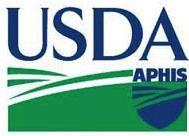 On May 31st, Dr. Amy Delgado, Director of the APHIS Center for Epidemiology and Animal Health, coordinated and presented a webinar on findings arising from the 2022 epornitic of highly pathogenic avian influenza (HPAI) strain H5N1. The study involved a retrospective case-control comparison of egg production farms and turkey grow-out units. On May 31st, Dr. Amy Delgado, Director of the APHIS Center for Epidemiology and Animal Health, coordinated and presented a webinar on findings arising from the 2022 epornitic of highly pathogenic avian influenza (HPAI) strain H5N1. The study involved a retrospective case-control comparison of egg production farms and turkey grow-out units.
Data was obtained using a questionnaire, apparently expanded from the document used for turkey farms in the 2015 epornitic and was administered by telephone. This is the first and, possibly, the most important deficiency of the approach used to determine risks and protective factors relating to infection. On-site observations and collection of data through direct interview within a short time after outbreaks would have contributed to a more comprehensive understanding of relevant factors. Epidemiology cannot be practiced from an office and by telephone over a long distance. Studies are only as valid as the design of questionnaires and the recording of data. An experienced and proficient observer can frequently determine factors that may be relevant that would not necessarily be captured on a standard one-size-fits-all questionnaire form.
The egg production study involved 18 affected farms and 22 controls. It is generally accepted that to determine the odds ratio relating to a given factor it would have been necessary to have selected at least twice the number of controls as the affected farms. The criterion for inclusion as an egg-production case required 50,000 birds. Given that the greatest financial loss was associated with farms of over one million hens, the study should have concentrated on the ten largest affected farms through May 2022 incorporating detailed, onsite evaluation. Management practices, biosecurity installations and the number and training of personnel differ widely from farms with a 50,000 hen capacity compared to in-line operations with their own packing plants, waste lagoons and feed mixing installations.
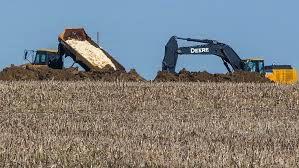
The results of the egg production case-control comparisons yielded an odds ratio of 10.3 for a farm being located in an HPAI control area and 5.8 for the presence of wild waterfowl or shore birds in the vicinity of the farm 14-days previous to an outbreak. These findings are not unexpected and are essentially self-evident. Other odds ratio values that emerged from the case-control study were failure to designate personnel for individual barns (6.2); failure to provide protective clothing (4.5); off-site disposal of dead birds (presumably requiring third party or company pickup), 4.1; sharing vehicles and, presumably, feed delivery trailers (3.1). The odds ratio relating to flock size was 2.6, suggesting that introduction of avian influenza and its effect on a complex is essentially an all-or-nothing factor.
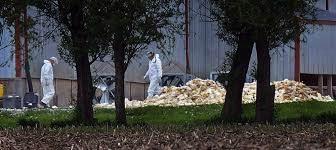
Based on the conclusions from the case-controlled study of the selected affected and control farms, there is nothing that could be applied by a practicing poultry health professional to advise clients as to risk factors and their mitigation. There appeared to be an association between access of “wild birds” (not specified) to feed and that cleaning up feed spills was protective.
The study was especially deficient in the area of metrology. It is a frequent, anecdotal observation that high winds occur approximately seven days before an outbreak. This factor was considered only superficially with indications that higher wind speeds may have been involved. This was not correlated with specific parameters including wind direction, velocity and duration and also concurrent humidity and temperature. Given the paucity of metrological data there was no prospect of correlating weather conditions with ventilation systems installed in houses.
The question of mowing was raised with an odds ratio of 2.8 for cutting grass, presumably within the complex, four times per month previous to an outbreak. The question of relevance should have been whether fieldwork was carried out adjacent to the complex within ten days of an outbreak. In addition this factor should have been coupled with wind velocity, duration and direction in relation to houses that first demonstrated infection within a multi-house complex. Given the duration of the epornitic, studies could have been conducted to determine whether virus was disseminated from affected farms with a consideration of distance, wind direction and velocity as conducted in the U.K during the 1972 Essex Newcastle disease epornitic.
 The outstanding question facing those owning or managing large egg-production complexes and their veterinary advisors is how virus shed by wild birds enters farms. Conventional prevention strategies are based on biosecurity that can range from superficial “make believe” procedures based on minimal expenditure and requiring copious quantities of aerosol disinfectant; through “Danish Entry” installations to comprehensive changing and showering of personnel with donning laundered, protective clothing dedicated to the complex. There was no specific detailed evaluation of the structural and operational biosecurity procedures in relation to the risk of infection. The outstanding question facing those owning or managing large egg-production complexes and their veterinary advisors is how virus shed by wild birds enters farms. Conventional prevention strategies are based on biosecurity that can range from superficial “make believe” procedures based on minimal expenditure and requiring copious quantities of aerosol disinfectant; through “Danish Entry” installations to comprehensive changing and showering of personnel with donning laundered, protective clothing dedicated to the complex. There was no specific detailed evaluation of the structural and operational biosecurity procedures in relation to the risk of infection.
The preliminary report, at least eleven months after it was needed, did not effectively address risk factors nor did it provide indications beyond what is generally known, is taught in veterinary schools and is accepted by the industry, whether applied or not.
It is possible that avian influenza virus enters egg production farms and complexes by a number of routes. Obviously deficiencies in structural and operational biosecurity represent risk factors. Many specific considerations relevant to large operations were not considered due to the deficiencies inherent to the questionnaire used for the retrospective case-control study conducted by APHIS. The second route of entry and gaining credence as an emerging hypothesis, is the possibility that virus shed by carrier birds is deposited on surfaces within close proximity to the farm and then introduced into houses by the aerogenous route. It is noted that a house holding 250,000 hens would be operating with an exhaust fan displacement of 1.2 to 1.5 million cubic feet per minute. This would facilitate virus entrained on dust particles entering houses through inlets. If this is in fact, the case, then extreme biosecurity precautions would be ineffective or at best, only partly effective in the absence of high winds and a substantial virus load associated with waterfowl and shore bird populations shedding the virus in the vicinity of the complex. The complexity of transmission of avian influenza predicates a detailed knowledge of the structure and operation of egg production complexes. This presumes commensurate planning and execution of studies to determine or confirm routes of infection and to develop appropriate preventive measures. The APHIS study was essentially irrelevant and uninformative in this respect.
The question of conceptual biosecurity is an important consideration with regard to national policy on prevention and control of HPAI. Outbreaks of avian influenza are associated with the four major flyways. These follow major rivers with adjoining wetlands. The locations of large in-line egg production complexes were selected with proximity to major road and rail access and proximity to corn elevators and soybean crushing plants. This has placed susceptible populations of hens in egg-production complexes along the migratory routes of waterfowl that, since 2020, have been infected with clade 2.3.4.4b of H5N1 expressing an Eurasian genome.
It is become accepted that H5N1 HPAI is now at best, seasonally and regionally endemic based on the duration and extent of infection in the U.S and also paralleled in the E.U. The infection may be introduced on to farms not only by deficiencies in biosecurity but additionally by the aerogenous route from waterfowl shedding the virus. If this is the case, and not adequately addressed by the superficial and inadequately designed and executed retrospective case-control study, eradication of HPAI is an unattainable aspiration. The current hiatus in incident cases is a function of the movement of migratory waterfowl and is independent of any attempts at responsive control by APHIS at great cost and effort. Facing reality, the most appropriate, protective measure would be effective vaccination to create solidly immune populations of commercial flocks.
Rapid diagnosis followed by stamping out of an exotic disease introduced to a limited area is an appropriate response. Persisting with this strategy in the face of a seasonally and regionally endemic disease that is constantly re-introduced by migratory birds is an exercise in futility. Highly pathogenic avian influenza has and will continue to cost the public sector, the industry and above all, consumers large and recurrent expenditures. Avian influenza should be regarded as “the Newcastle disease of the 2020s.” This infection has not been a restraint to production since the universal adoption of immunization. We have successfully administered a portfolio of vaccines extending from the Komaroff live mesogenic strain through a range of live lentogenic attenuated vaccines by mass administration and in parenteral emulsions to more modern vector vaccines.
We must be realistic with regard to the epidemiology of HPAI and make policy decisions on suppression and control that serve the widest range of stakeholders. Vaccination is only one modality but should not be excluded from consideration in the face of potential and existing trade barriers. It must be remembered that egg consumers paid $15 billion more for eggs in 2022 based on the average rise of $2 per dozen. This expense is above and beyond the cost to the public sector for indemnity, logistics and disposal of depleted flocks and the non-compensated expenses borne by producers and the allied industry.

|
Organic Milk Producers Requesting USDA Support Funding
|
05/28/2023 |
|
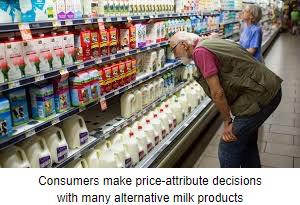
A letter signed by 25 organizations and individual producers of organic milk have addressed a letter to the USDA requesting disbursement of the remainder of a $104 million allocation to producers. The letter also requested additional aid funding to reflect the difference in cost of production between organic and conventional milk. The organic milk producers also requested the USDA to apply the resources of the Economic Research Service and the National Agriculture Statistic Service to obtain and circulate data relating to the relative costs of producing organic and conventional milk.
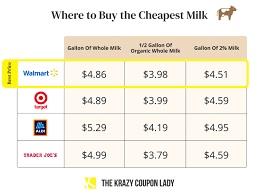
The producers highlighted the additional costs associated with production of organic milk arising from expenditure on organic feed. Separation of organic and conventional milk creates logistic problems and additional expense for handling and transport. From the submission, it is evident that organic milk production is relatively inefficient with 89 cows on average for an organic dairy farm compared with 337 producing conventional milk. Since there are a limited number of plants certified to process milk under the USDA organic program, transport of raw organic milk is more expensive than conventional milk.
The acknowledged plight of organic milk producers relates to inherent deficiencies associated with scale of operation and the high cost of feed. The problem facing organic producers is that they are unable to pass on to consumers ever increasing costs accruing over and above conventional milk. Only the affluent and “worried well” are willing to pay a realistic price for USDA organic certified milk since consumers balance price against attributes. At different price points, consumers will decide, based on their needs and their resources, whether to pay extra for the perceived benefits of organic over conventional milk. A further complication impacting organic milk producers is the availability of non-dairy conventional and organic alternatives based on plant sources that are far less expensive to produce even using GM-free ingredients. In reviewing prices at an upmarket store in Durham, NC. organic milk was priced at $6 to $7 per 1/2 gallon compared to conventional at $2 to $4 depending on brand. Synthetic soy and other variations were offered at $4 to $5 per 1/2 gallon
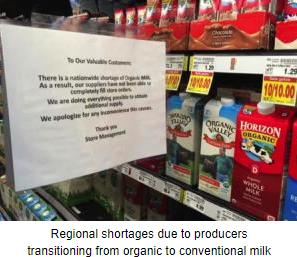
The question arises as to whether public funds should be allocated to a sub-segment of an already highly subsidized agricultural industry that would otherwise be nonviable. There is no federal program to support organic egg production despite the obviously higher cost associated with sourcing non-GM ingredients and complying with the burdensome housing and operational rules developed by the Organic Standards Board and administered by the USDA-AMS. In the U.S. certified organic eggs must compete with conventional generic and enriched shell eggs on the basis of shelf price. The market for USDA certified shell eggs is at equilibrium with demand as demonstrated by the relatively static number of hens producing under the program. It is also recognized that a variable proportion of organic eggs is diverted to the cage-free market stream, given that demand is on occasions lower than available supply.
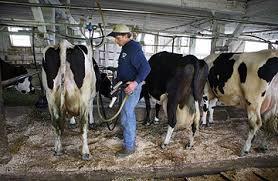 At the end of the day, there is no nutritional difference between certified organic and conventional milk in terms of composition and quality. If consumers wish to pay more for milk produced and marketed under the organic seal, that is their decision. In a free market, the USDA should not be placing their thumb on the scale and subsidizing producers who wish to make available a product in excess of demand. EGG-NEWS strongly opposes unfair competition and the use of public funds to support the production of a commodity that has no quantifiable benefits. If without support, organic milk cannot provide producers with either positive cash flow or an acceptable return to labor or on assets invested then supply and demand considerations should determine the viability of production of the category. this is in fact occurring as organic milk producers are transitioning to conventional milk. At the end of the day, there is no nutritional difference between certified organic and conventional milk in terms of composition and quality. If consumers wish to pay more for milk produced and marketed under the organic seal, that is their decision. In a free market, the USDA should not be placing their thumb on the scale and subsidizing producers who wish to make available a product in excess of demand. EGG-NEWS strongly opposes unfair competition and the use of public funds to support the production of a commodity that has no quantifiable benefits. If without support, organic milk cannot provide producers with either positive cash flow or an acceptable return to labor or on assets invested then supply and demand considerations should determine the viability of production of the category. this is in fact occurring as organic milk producers are transitioning to conventional milk.

|
Impact of African Swine Fever on U. S. Pork Industry Quantified
|
05/23/2023 |
|
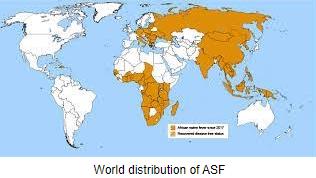 Dr. Dermot Hayes, an Economist at Iowa State University, has projected the financial impact of introduction of African swine fever (ASF) if this infection enters the U.S. pork industry. It is estimated that pork and to a lesser extent, the beef industries would experience an $80 billion loss. This would arise from depopulation of herds, a precipitous drop in export volume with diversion of pork to the domestic market, reducing wholesale prices. Even if controlled, the effects would persist in excess of three years. It is estimated that 60,000 industry workers would be threatened with job losses. Dr. Dermot Hayes, an Economist at Iowa State University, has projected the financial impact of introduction of African swine fever (ASF) if this infection enters the U.S. pork industry. It is estimated that pork and to a lesser extent, the beef industries would experience an $80 billion loss. This would arise from depopulation of herds, a precipitous drop in export volume with diversion of pork to the domestic market, reducing wholesale prices. Even if controlled, the effects would persist in excess of three years. It is estimated that 60,000 industry workers would be threatened with job losses.
The review of the Iowa State report by Jennifer Shike in a May 18th posting in Pork-Farm Journal notes that preventive measures do not address the entire financial impact of 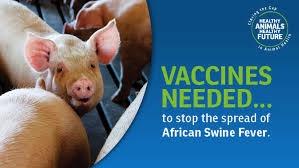 ASF). Given the projection by Dr. Hayes, it is suggested that prevention should be the major immediate objective requiring investment in programs that will interdict ASF virus at points of entry to the U.S. Unlike HPAI in the poultry industry, pork producers are in the favorable situation that hogs do not fly. This said, surveillance at points of entry including airports and harbors must be intensified. It is noted that ASF initial was introduced to Portugal and Spain in the 1950s through discarded food from a flight from Angola to Lisbon. Eradication of the initial outbreak and the subsequent 1960 cases that extended to France took more than a decade to eradicate. ASF). Given the projection by Dr. Hayes, it is suggested that prevention should be the major immediate objective requiring investment in programs that will interdict ASF virus at points of entry to the U.S. Unlike HPAI in the poultry industry, pork producers are in the favorable situation that hogs do not fly. This said, surveillance at points of entry including airports and harbors must be intensified. It is noted that ASF initial was introduced to Portugal and Spain in the 1950s through discarded food from a flight from Angola to Lisbon. Eradication of the initial outbreak and the subsequent 1960 cases that extended to France took more than a decade to eradicate.
The USDA could train and deploy many more beagles to avoid an $80 billion loss. Surveillance of passenger luggage at the airports at Bangkok, Singapore and Taipei have revealed widespread, inadvertent or deliberate smuggling of raw and partly cooked pork products that have yielded a ASF virus. Given that African swine fever is endemic in many Asian nations but also in Haiti and the Dominican Republic, special attention should be paid to incoming flights from these nations The problem of smuggling large quantities of traditional pork products from Asia in shipping containers is more difficult to prevent but again, the risks and consequences of introducing infection justify enhanced surveillance.
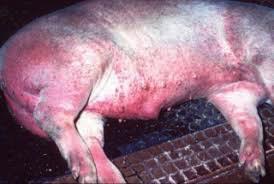
The National Pork Board has introduced AgView, a database and dashboard program, that will track movement of affected hogs in the event of a possible outbreak. Traceability is an important consideration and records of the movement of herds will be critical to effective control of any outbreak. It is presumed that the pork industry and designated diagnostic laboratories have developed the ability to rapidly diagnose and report outbreaks of ASF paralleling the experience gained with HPAI.
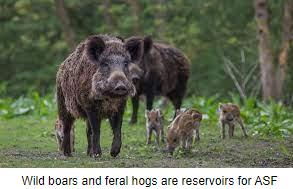 Research on the persistence of ASF virus in grains and oilseeds and sacking have demonstrated the potential of introducing infection through imported feed ingredients. Given the ability of ASF to withstand high temperatures, it is questioned whether the U. S. should import any ingredient from a nation with endemic or suspected ASF other than vitamin and mineral additives derived from pharmaceutical plants operating under good manufacturing practices. Research on the persistence of ASF virus in grains and oilseeds and sacking have demonstrated the potential of introducing infection through imported feed ingredients. Given the ability of ASF to withstand high temperatures, it is questioned whether the U. S. should import any ingredient from a nation with endemic or suspected ASF other than vitamin and mineral additives derived from pharmaceutical plants operating under good manufacturing practices.
EGG-NEWS has frequently pointed to the dangers of feral hogs serving as reservoirs of ASF. The extent and number of free-living hogs will contribute to persistence of infection and mitigate against eradication as evidenced in western Europe. A concerted program to eliminate feral hogs should be implemented since current programs conducted under state and Federal support are obviously inadequate to prevent extension of current populations of feral hogs.
It is self-evident that in the event of introduction of ASF into the U. S., an effective and safe vaccine will be required as an adjunct to slaughtering of affected herds. The USDA gained considerable publicity following the announcement of a claimed effective vaccine developed by the ARS at the Plum Island research laboratory. It is understood that this vaccine has been field tested in Viet Nam albeit with variable results. The question is now posed as to whether this or other vaccines are effective in controlling the disease. If so, stockpiles should be established. If the vaccine is ineffective, then an alternative is obviously required.
It is hoped that USDA and the organized pork industry will learn from the experiences of poultry producers in the U. S. and worldwide regarding suppression but not eradication of HPAI.

|
SCOTUS Rules that California Proposition #12 is Constitutional
|
05/15/2023 |
|

The Supreme Court of the United States (SCOTUS) rendered an opinion on the constitutionality of California Proposition #12 on May 11th following oral arguments heard on October 11th, 2022. In a 5 to 4 decision, SCOTUS denied the petition submitted by the National Pork Producers Council, et al. and affirmed the opinion of the 9th Circuit Court that Proposition #12 was constitutional.
The petitioners claimed that Proposition #12 contravened the dormant Commerce Clause. They based their arguments on the contention that states are enjoined from issuing and enforcing regulations that have economic outcomes independently of legislation enacted by Congress. The majority opinion stated “ The Commerce Clause prohibits enforcement of state laws that are driven by economic protectionism-that is, regulatory measures designed to benefit in-state economic interest by burdening out-of-state competitors.” This is an established principle in case law. The Petitioners largely based their case on the precedent established by Pike v Bruce Church, Inc. This case involved a law passed by the state of Arizona requiring that cantaloupes should be processed and packed in the state before shipment beyond the borders of Arizona.
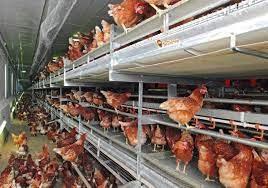
In the majority opinion written by Justice Gorsuch, the argument based on Pike “Falters out of the gate.” In the opinion of the Court, the petitioners overstated the extent to which Pike and its derivatives departed from the antidiscrimination rule that lies at the core of Commerce Clause jurisprudence. The petitioners claimed that Proposition #12 would require a “massive disruption of the pork industry”. Gorsuch noted, “If pig husbandry really does imperatively demand a single uniform nationwide rule, they are free to petition Congress to intervene.” This, in fact, may represent the next approach by the National Pork Board.
The opinion noted, “This Court has inferred an additional judiciary enforceable rule against certain especially discriminatory state laws adopted even against the backdrop of Congressional silence. But ‘extreme caution’ is warranted before a court deploys this implied authority. Petitioners would have us cast aside caution for boldness. They have failed-repeatedly-to persuade Congress to use its express Commerce Clause authority to adopt a uniform rule for pork production. The opinion continued “In-state petitioners invite us to endorse two new theories of implied judicial power. They would have us recognize an almost per se rule against the enforcement of state laws that have extra territorial effects even though this Court has recognized that virtually all state laws create ripple effects beyond their borders. Alternatively, they would have us prevent a state from regulating the sale of an ordinary consumer good within its own borders on nondiscriminatory terms, even though the Pike line of cases they invoke has never before yielded such a result”.
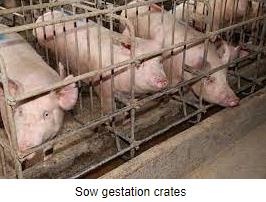
It must be remembered that the National Pork Board effectively scuttled the establishment of a federal standard for housing of laying hens that would have been included in the 2018 Farm Bill as the so-called ‘Egg Bill’. This would have established either barn housing or enriched colony modules as alternatives to conventional cages. The principles to have been incorporated in the proposed ‘Egg Bill’ arose from negotiations between United Egg Producers and the Humane Society of the United States. With the demise of the ‘Egg Bill’, the requirements of Proposition #12 and the 2016 Question #3 adopted Massachusetts, along with similar previously enacted welfare bills in other states imposed restrictions on livestock housing.
Proposition #12 does not enforce any specific requirements on a livestock producer outside California. The Proposition, however, does require that producers desiring to ship eggs and pork products to California must comply with the requirements that apply to producers in the State.
The issue of housing sows in gestation crates is more a question of acceptance by consumers and customers than the legal issue that has now been settled. There is considerable consumer and customer opposition to gestation crates that are regarded as “cruel” as defined in Proposition #12.
Faced with the reality of conversion from gestation crates incorporated in the text of California Proposition #2 adopted in 2008, many producers commenced a slow transition to group housing. This required capital investment and changes in the husbandry of sows and acceptance of deterioration in reproductive performance. It is estimated that forty percent of sows are currently held under conditions which approximate the requirements of California regulations. Major packers including Tyson Foods, Smithfield Foods and others have committed to a program of conversion to satisfy both state and customer requirements.
The egg industry, in contrast, embarked on a program of conversion that probably has incurred in excess of $5 billion for alternatives to conventional cages including retrofitted to existing suitable housing in addition to erection of new purpose-deigned buildings and complexes. At the present time, 38 percent of a nominal U.S. flock of 325 million hens is housed in other than conventional cages reflecting state legislation and customer demand. Despite coerced commitments made in 2018 by the restaurant segment, retail chains and other users of eggs to source from other than conventional cages by 2025, the pace of change has slackened. Many customers have extended their compliance dates and others have reneged on commitments. It appears the food service segment has complied but companies in this category have the ability to pass on higher cost of sourcing cage-free eggs to their end users including hospitals, universities, corporate dining and others. Some retailers have totally embraced Proposition #12. This is a function of corporate ownership and policies, multinational operation, consumer demographics and their buying power. Generally, it is accepted that by 2025 and for years thereafter, one third of all hens will be housed in either conventional cages or in enriched colony modules, since retailers require a range of appropriately priced eggs to satisfy consumer demand.
The progressive approach by the egg industry contrasts with a proportion of pork producers who are apparently unwilling or financially unable to convert from gestation crates to group housing of sows. The National Pork Producers Council were obviously disappointed in the ruling with Michael Formica, Chief Legal Strategist, stating, “This is more than just pork, this is about the freedom of farmers to make choices about how they operate.” This and similar sentiments are more for internal industry consumption than an expression of reality. The train left the station many years ago and conversion to group housing to satisfy domestic demand is now a reality.
Some observers have noted that the SCOTUS decision will embolden animal rights activists to become more aggressive. This contention may have some substance but essentially HSUS and kindred organizations have always and will continue with their efforts to dismantle the intensive livestock industry. They decline to present any alternative method to supply available protein in quantities and at a cost equivalent to current production.
In evaluating the SCOTUS ruling, it is evident that it will have little bearing on the egg industry that has invested in alternatives to conventional cages with future developments based on customer and consumer demand and advances in technology.
The egg industry should avoid indulging in schadenfreude, a unique Teutonic sentiment of enjoying pleasure at the expense of another. This admonition is advanced in the recollection that lobbying by the pork industry against a uniform federal standard to house hens, effectively cancelled a workable and welfare compliant alternative. Their opposition to the ‘Egg Bill’ in 2018 was detrimental to our industry. We have been forced to adopt capital intensive aviary installations and endure higher production costs to achieve levels of efficiency achievable with enriched colony modules and barn housing.

|
Environmental Label Claims Require Substantiation
|
05/07/2023 |
|
 A new buzz-concept, Climate-Smart-Agriculture (CSA) is gaining greater attention from large supermarket chains and their consumers. This innovation requires adoption of sustainable farming practices, conservation of resources and action to reduce greenhouse gas emissions. A new buzz-concept, Climate-Smart-Agriculture (CSA) is gaining greater attention from large supermarket chains and their consumers. This innovation requires adoption of sustainable farming practices, conservation of resources and action to reduce greenhouse gas emissions.
Alan Sachs and Allyn L. Stern of the law firm Beveridge and Diamond, LP recently reviewed CSA claims with specific reference to possible legal action by advocacy groups or regulatory agencies.
Green Washing in the form of misrepresentation or distortion of data relating to the environmental impact of products or production systems will undergo scrutiny by the Federal Trade Commission. Section 5 of the FTC Act prohibits unfair or deceptive acts or practices. The Lanham Act can be used to force producers to cease misleading or deceptive advertising.
Sachs and Stern suggest the following criteria in establishing CSA claims: -
- Only make statements or claims that can be substantiated with data and scientific verification. FTC regulations require evidence of “test analyses, research or studies conducted in an objective manner by qualified persons and generally accepted in the profession to yield accurate and reliable results”.
- Labels and packaging should not include deceptive images. Depicting hens in a pasture with green foliage creates the impression among consumers that eggs were so produced, irrespective of the actual housing systems or management practices used.
- Adherence to FTC guidelines for environmental marketing claims is necessary to avoid challenges. The FTC has issued a Green Guide relating to CSA claims and how consumers perceive text and images. The FTC Green Guide clearly describes stages of increasing control, defined as Scope 1: relating to direct emissions of greenhouse gases; Scope 2: involving indirect emissions from power and refrigeration and Scope 3: emissions that are indirect and are incorporated into the inward and outward supply chains.
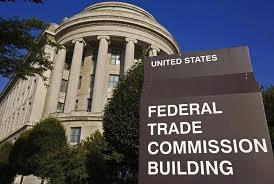
The FTC intends to revise the Guide to define “carbon neutral”, “carbon negative” and “net zero”.
- CSA claims should be evaluated from the perspective of consumers. Both the federal government and individual states enforce truth-in-advertising laws that are based on what a reasonable consumer may infer from a claim on a label or package. The FTC and state regulators also review company and product websites and evaluate these statements in relation to Company operations.
- As attorneys, the authors of the report advise consultation on CSA claims, since decisions on text and images depend on interpretation. There is frequently a conflict between marketing intent and legal restraints that requires value judgment to confer promotional and competitive advantages without creating vulnerability to legal action.
The bottom line is not to state or claim anything that you would not like your Mother to see at point of sale.

|
“Washington, We Have a Problem”
|
04/30/2023 |
|
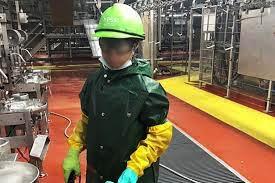 Revelations concerning the use and exploitation of child labor determined by the Wage and Hour Division of the Department of Labor relating to Packer’s Sanitation Services Inc. (PSSI) represents only the tip of an iceberg. Subsequent investigations show two distinct areas of concern with regard to employment of minors. The first relates to the involvement of children predominantly in agriculture and the fast-food industry, with the consent of parents. The second and more serious aspect relates to human trafficking and exploitation. Both issues need to be addressed. Revelations concerning the use and exploitation of child labor determined by the Wage and Hour Division of the Department of Labor relating to Packer’s Sanitation Services Inc. (PSSI) represents only the tip of an iceberg. Subsequent investigations show two distinct areas of concern with regard to employment of minors. The first relates to the involvement of children predominantly in agriculture and the fast-food industry, with the consent of parents. The second and more serious aspect relates to human trafficking and exploitation. Both issues need to be addressed.
The United Nations International Labor Organization specifically condemns work undertaken by children that could be physically dangerous and deprives them of their opportunity for education. The U.S. operates under the 1938 Fair Labor Standards Act that addressed inequities that arose during the Great Depression. Currently, child labor is governed by a patchwork of state laws enacted for the convenience of employers responding to intensive lobbying. Generally, businesses are prevented from employing workers under 14 years of age. Those who are older can work for limited hours during the day with restrictions on night shifts and school days. Many laws and regulations prohibit placing children in contact with potentially dangerous machinery or hazardous chemicals. Generally, laws allow employment of 15-year-olds to work night shifts with parental permission.
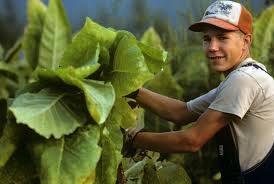 There is a growing trend towards liberalization of employment laws. This stems, in part, from the activities of the Foundation for Government Accountability based in Florida and its lobbying arm, the Opportunity Solutions Project. The Foundation has apparently engaged over 100 lobbyists in 22 states to advocate for a relaxation of rules on child labor basically advancing the concept of “parental consent”. The state of Arkansas recently passed a child labor act that is regarded as regressive and characterized by the federal government as “irresponsible”. The Director of the University of Arkansas School of Law Human Trafficking Clinic, stated, “As a practical matter, this is likely to make it even harder for the state to enforce our own child labor laws.” The state of Iowa has approved a bill, yet to be enacted, that would allow greater use of minors in both agriculture and industry. Missouri appears to be following the trend to allow child labor under the influence of the Foundation for Government Accountability. Other states considering relaxation of child labor laws include Georgia and Minnesota. There is a growing trend towards liberalization of employment laws. This stems, in part, from the activities of the Foundation for Government Accountability based in Florida and its lobbying arm, the Opportunity Solutions Project. The Foundation has apparently engaged over 100 lobbyists in 22 states to advocate for a relaxation of rules on child labor basically advancing the concept of “parental consent”. The state of Arkansas recently passed a child labor act that is regarded as regressive and characterized by the federal government as “irresponsible”. The Director of the University of Arkansas School of Law Human Trafficking Clinic, stated, “As a practical matter, this is likely to make it even harder for the state to enforce our own child labor laws.” The state of Iowa has approved a bill, yet to be enacted, that would allow greater use of minors in both agriculture and industry. Missouri appears to be following the trend to allow child labor under the influence of the Foundation for Government Accountability. Other states considering relaxation of child labor laws include Georgia and Minnesota.
 The second and more insidious aspect of child labor relates to human trafficking. For the past two years, more than 250,000 migrant children have entered the United States as unaccompanied minors. Their initial reception is under the Department of Homeland Security. Children are then released to sponsors or family members from detention centers with minimal investigation or vetting. The Department of Labor is responsible for ensuring that minors are housed and provided with a work environment consistent with prevailing laws. This split responsibility, characteristic of Washington, has created a situation that is exploited by unscrupulous, private service agencies and employers. The Department of Health and Human Services is receiving reports of employment of undocumented children in hazardous occupations, many connected to agriculture. It is unconscionable that the responsible Departments of the Federal Government cannot account for 85,000 of the known 250,000 migrants. The second and more insidious aspect of child labor relates to human trafficking. For the past two years, more than 250,000 migrant children have entered the United States as unaccompanied minors. Their initial reception is under the Department of Homeland Security. Children are then released to sponsors or family members from detention centers with minimal investigation or vetting. The Department of Labor is responsible for ensuring that minors are housed and provided with a work environment consistent with prevailing laws. This split responsibility, characteristic of Washington, has created a situation that is exploited by unscrupulous, private service agencies and employers. The Department of Health and Human Services is receiving reports of employment of undocumented children in hazardous occupations, many connected to agriculture. It is unconscionable that the responsible Departments of the Federal Government cannot account for 85,000 of the known 250,000 migrants.
Before the publicity afforded the PSSI case, exploitation of children with or without parental permission was a topic under the social radar but clearly should now be addressed. The criteria to be applied should include:-
- Work conditions and hours of employment that are regulated.
- The physical and mental health of children is not affected by work schedules.
- Children are not deprived of educational opportunities.
- Employment is financially beneficial and provides for positive development and training.
Exploitation on the other hand, especially of undocumented migrants, is pernicious and should be investigated and suppressed and those responsible subjected to the penalties of law. Unfortunately, the agricultural and food sectors appear to be the most involved in illegal and undesirable practices.
Since there will be criminal and reputational consequences for exploiting minors, poultry producers should review their staffing, recruitment and conditions of employment of all workers under 18 years of age. As a national issue, every citizen should be concerned and should raise the issue of child labor in assessing candidates for office in the upcoming 2024 election.

|
The USDA is Inching Towards HPAI Vaccination
|
04/23/2023 |
|
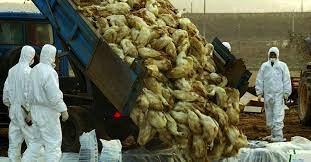 The USDA announced in a press release that the Agricultural Research Service is evaluating vaccines against H5N1 Highly Pathogenic Avian Influenza (HPAI). This was confirmed on Friday 21st in an industry association webinar by a researcher at the USDA-ARS Southeastern Poultry Research Laboratory. This is probably an exercise in reinventing the wheel, given that millions of doses of vaccine are in commercial use in numerous nations. A controlled laboratory study was recently concluded at the Wageningen Institute in Holland that showed protection from two commercial HVT-vectored vaccines. The initial results provided the impetus to proceed to field trials in Holland paralleled by the intention to deploy 80 million doses in France during early summer. The USDA announced in a press release that the Agricultural Research Service is evaluating vaccines against H5N1 Highly Pathogenic Avian Influenza (HPAI). This was confirmed on Friday 21st in an industry association webinar by a researcher at the USDA-ARS Southeastern Poultry Research Laboratory. This is probably an exercise in reinventing the wheel, given that millions of doses of vaccine are in commercial use in numerous nations. A controlled laboratory study was recently concluded at the Wageningen Institute in Holland that showed protection from two commercial HVT-vectored vaccines. The initial results provided the impetus to proceed to field trials in Holland paralleled by the intention to deploy 80 million doses in France during early summer.
The recent USDA release indicates that results will be available in May with respect to “ a single dose” program and in June for a “two-dose” regime. The USDA is evaluating two in-house developed inactivated vaccines, one based on a 2022 isolate of H5N1 derived from turkeys in Indiana. The first phase will also evaluate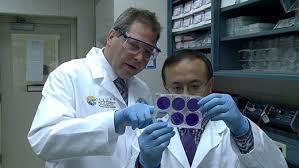 two commercial products available from biopharmaceutical manufacturers with two further commercial vector vaccines in June. two commercial products available from biopharmaceutical manufacturers with two further commercial vector vaccines in June.
The current USDA policy is expressed in their statement “Current strategy of stamping out and eradicating HPAI continues to be the most effective strategy because it works.” The question arises as for whom and by what metric? The 2022 APHIS approach has resulted in depopulation of 58 million commercial poultry over the past 14 months. The unaffected U.S. broiler, egg-production and turkey flocks were in all probability not exposed to H5N1 virus. The recent lull in infection cannot be attributed to either increased biosecurity or stamping out of individual outbreaks. The incidence within an area is a function, of the quantum of virus shed by migratory birds and now evidently domestic free-living birds. Exposure of commercial poultry and backyard flocks occurs due to defective structural and operational biosecurity and presumed aerogenous dispersal of virus entrained on dust.
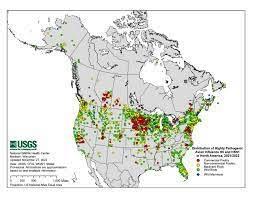
The USDA considers it would take 18 to 20 months for a vaccine to be developed that matches current viral strains. This is a questionable assumption, given the availability of commercial vaccines that appear to be effective in numerous nations against the prevailing H5N1 strain. The process of approval could be expedited given available experimental and field data.
When vaccination is approved, it will, in all probability, be permitted in regions of high poultry density that have a history of infection. Prevalence rates among migratory waterfowl along the four major Flyways will also influence decisions on vaccination. Long-lived poultry, including breeders and commercial egg flocks, should obviously be prioritized.
France has placed an initial order of 80 million doses of commercial HVT-Vectored vaccine for broilers, ducks and egg-production flocks in regions consistently affected by HPAI. Following campaigns to eradicate HPAI on an almost annual basis, authorities in France have recognized the futility of a “stamping out” policy. Strategies for vaccination have been released and the Ministry of Agriculture is awaiting comment from producers and poultry health professionals.
At present the U.S. poultry industry is divided as to the need to introduce vaccines. The overwhelming concern is the potential for the loss of broiler exports valued at $4.5 billion in 2021 and $5.2 billion in 2022. The policy of the World Organization of Animal Health allows for trade despite application of vaccination. Nations that need our leg quarters at prevailing prices would in all probability continue buying given certification of freedom from infection.
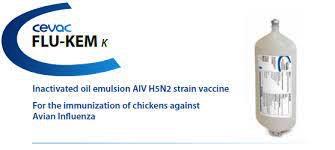
Brazil is the last major producer not to have reported HPAI to the WOAH despite the infection occurring in surrounding nations. Should this large exporter experience infection current regulation of trade will be radically changed. Importers will be more flexible with respect to restrictions. Even limited vaccination will require a radical shift in policy, perception and thinking on the part of the USDA. Perhaps this is fueling an undercurrent of denial that is expressed by invoking questions of efficacy of vaccines. The USDA has embarked on a series of industry presentations incorporating questionable economic justification of the status quo, and a component of sophistry justifying the current policy. The tenure of recent presentations is more an expression of institutional resistance to change and political considerations than by sound epidemiology and molecular biology. It is currently possible to certify that flocks contributing to export consignments are free of HPAI on the day before harvest applying PCR antigen detection. Reliance on serology is an outdated concept notwithstanding that commercially available vectored AI vaccines are DIVA compliant.
The 2022-2023 H5N1 panornitic is clearly different from previous events. The infection has become regionally and seasonal ly endemic and will reoccur. The high probability of aerogenous transmission negates the presumption that commercial flocks can be effectively protected by maintaining high levels of biosecurity. Accordingly vaccination should be considered on a controlled and limited basis to induce a high level of population immunity in areas at risk and specifically for long-lived flocks. ly endemic and will reoccur. The high probability of aerogenous transmission negates the presumption that commercial flocks can be effectively protected by maintaining high levels of biosecurity. Accordingly vaccination should be considered on a controlled and limited basis to induce a high level of population immunity in areas at risk and specifically for long-lived flocks.
The cost of HPAI is measured by the USDA-APHIS in terms of compensation and logistics with Congress supporting the control program through the Commodity Credit Corporation, an apparently bottomless piggy bank. The presumption that this will continue is now a subject of question. A sobering reflection should be the cost to consumers of prolonged and recurrent outbreaks. Based on sale of 7.8 billion dozen eggs in 2022, the $2 per dozen increase in price attributed to HPAI cost consumers over $15 billion.
Any infection impacting a livestock segment that persists for longer than 13 months, is diagnosed in over 35 states, requires depopulation of over 58 million commercial birds without eradication and has spread to marine and terrestrial free-living and domestic mammals cannot be regarded as exotic to the U.S. The apparent lull in incident cases should provide an opportunity for reappraisal not a victory lap by USDA-APHIS.
It may be considered that “Avian influenza is the Newcastle disease of the 2020s” This equally catastrophic disease has not been eradicated although it isnot a restraint to production in the context of commercial production since the 1970s due to extensive deployment of a range of vaccines. Now is the time to rethink options and move towards integrating vaccination into control programs to limit the economic impact of HPAI.

|
PEAK Emerges as Premier Dedicated Poultry Convention
|
04/17/2023 |
|
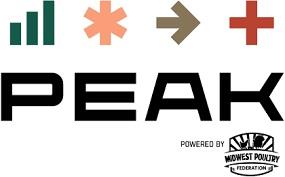 The first restructured PEAK Convention, organized by the Midwest Poultry Federation, was the 52nd annual event rebranded to focus on technology, education and promoting industry relations. The first restructured PEAK Convention, organized by the Midwest Poultry Federation, was the 52nd annual event rebranded to focus on technology, education and promoting industry relations.
The move from St. Paul to Minneapolis a few years ago allowed for expansion of the show area that in 2023 included close to 270 exhibitors, including the Showco companies that participate on alternate years at the IPPE.
Despite concern over HPAI, there were no major outbreaks in commercial egg production or broiler operations during the first quarter of 2023, creating a moderate level of optimism and contributing to attendance. Participation exceeded pre-COVID levels with farmers, contractors, integrators and representatives of the allied industry involved in all aspects of the extensive program.
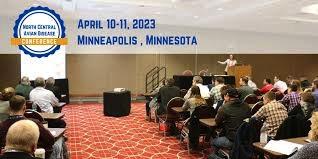 The organizers successfully balanced the education program, the show floor and fellowship over the three-day period. Specialist events included the North Central Avian Disease Conference, the Organic Egg Farmers of America Symposium and the pre-show Nutrition and Poultry Health Symposium preceding the exhibit days. TED talks on the show floor on both Wednesday, April 12th and the following morning provided exhibitors the opportunity to promote innovations in management, nutrition, equipment and flock health. The organizers successfully balanced the education program, the show floor and fellowship over the three-day period. Specialist events included the North Central Avian Disease Conference, the Organic Egg Farmers of America Symposium and the pre-show Nutrition and Poultry Health Symposium preceding the exhibit days. TED talks on the show floor on both Wednesday, April 12th and the following morning provided exhibitors the opportunity to promote innovations in management, nutrition, equipment and flock health.
In addition to the traditional Turkey, Broiler and Egg-production tracks, the organizers introduced a Business and Leadership Development track with speakers promoting communications and the development of a productive company culture critical to productivity and profitability.

Beyond the needs of Midwest producers, the upgraded PEAK convention offers a broad range of educational and commercial opportunities to the entire poultry industry in North America. Topics of universal interest were reviewed in the Tracks but also discussed informally at the meeting. These included the prospect for limited vaccination against HPAI as an additional measure to supplement intensive biosecurity. PEAK as now organized addresses national issues, contributing to knowledge and representing a forum to develop contacts and to strengthen relationships.
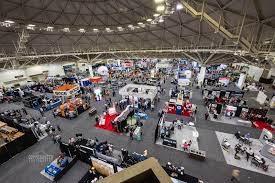
The Board of the Midwest Poultry Federation has established a balanced format for the PEAK Convention held over three days. The efforts of the Empowered Events team led by Midwest Poultry Federation veteran, Lara Durben, are recognized through their pre-event publicity, arrangements for hotels and registration, the needs of exhibitors and overall coordination contributing to a seamless and productive convention.

|
FDA Negligent on Drug Safety
|
04/09/2023 |
|
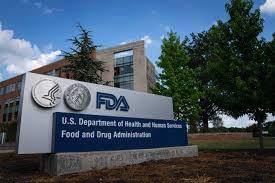 Attorney William Marler is pressing for a separation of food-related responsibilities to be removed from the U. S. Food and Drug Administration and transferred to a separate Food Safety and Nutrition agency to be established. EGG-NEWS has advocated for a separate agency since the establishment of the newsletter over ten years ago. There is an aspect to the “Take the F out of FDA” campaign initiated by Atty. Marler that motivates action. It is generally acknowledged that the FDA has traditionally focused on drugs and medical devices to the detriment of food-related issues. This is evidenced by the series of public health events that suggest dereliction of responsibility. Attorney William Marler is pressing for a separation of food-related responsibilities to be removed from the U. S. Food and Drug Administration and transferred to a separate Food Safety and Nutrition agency to be established. EGG-NEWS has advocated for a separate agency since the establishment of the newsletter over ten years ago. There is an aspect to the “Take the F out of FDA” campaign initiated by Atty. Marler that motivates action. It is generally acknowledged that the FDA has traditionally focused on drugs and medical devices to the detriment of food-related issues. This is evidenced by the series of public health events that suggest dereliction of responsibility.
It is the contention of EGG-NEWS that the FDA may also be failing in its drug-related activities. This presumes that if the “F” were to be removed from the FDA that the Agency could concentrate on oversight of drugs.
The recent emergence of keratitis and panophthalmitis associated with imported eye-drops contaminated with a multi-drug resistant Pseudomonas aeruginosa is an item of concern. The implicated eye-drops were manufactured by Global Farmer Healthcare Pvt. in Tamil Nadu State, India. This facility was not ever visited by the FDA prior to the emergence of the problem in the U.S. The recent inspection revealed serious deviations from acceptable manufacturing practice including failure to conduct sterility assays, unacceptable cleaning practices and substandard construction and work surfaces. Important observations but academic for the numerous patients blinded by the contaminated product.
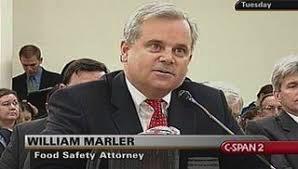 Given the fact that a high proportion of generic and OTC products are manufactured in Asia, it is questioned whether the FDA is fulfilling its responsibility to U.S. consumers by ensuring that products are safe and effective. Congress needs to inquire as to the extent of monitoring of foreign plants and the frequency of inspections. Given the fact that a high proportion of generic and OTC products are manufactured in Asia, it is questioned whether the FDA is fulfilling its responsibility to U.S. consumers by ensuring that products are safe and effective. Congress needs to inquire as to the extent of monitoring of foreign plants and the frequency of inspections.
In an April 3rd release, the Agency stated, “The FDA’s highest priority is protecting public health – this includes working with manufacturers to quickly remove unsafe drugs from shelves when they are identified.” This is a characteristic, reactive approach basically using U.S. consumers as an indicator for deviations in quality assurance.
If the FDA does not have the resources or the inclination to become more proactive and inspect foreign manufacturing facilities, it should request additional funding and develop programs for surveillance.
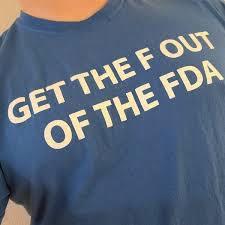 Advocates for separation of food-related aspects from the current FDA should point to the fact that the “D” component of the Agency is also functioning at a level that is inconsistent with the needs of consumers. Advocates for separation of food-related aspects from the current FDA should point to the fact that the “D” component of the Agency is also functioning at a level that is inconsistent with the needs of consumers.
If the FDA displayed diligence in oversight of drugs, then a case might be made for the Agency to remedy deficiencies in the area of food safety. Given the belated, inappropriate and fuzzy reorganization as devised by the Commissioner, Dr. Robert Califf, there is little prospect for a self-generated rejuvenation.
Bipartisan Congressional involvement will be required to remedy the current deficiencies in the FDA. More money is not the single solution. A profound change in culture and orientation is required that can only be achieved through revisiting and amending the Food, Drugs and Cosmetics Act. But then there are lobbyists ---.

|
Initial Trials Demonstrate Efficacy of HVT-H5 Avian Influenza Vaccine
|
04/05/2023 |
|
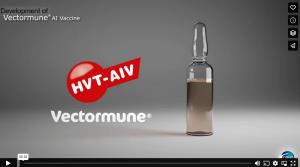 Faced with recurring outbreaks of Highly Pathogenic Avian Influenza, Wageningen. Bioveterinary Research was commissioned in 2022 to conduct a laboratory trial to confirm the effectiveness of two commercially available HVT H5 avian influenza vaccines. The trial was conducted in collaboration with Utrecht University and Wageningen University and Research Institute. The trial was sponsored by the Dutch Ministry of Agriculture, Nature and Food Quality. Faced with recurring outbreaks of Highly Pathogenic Avian Influenza, Wageningen. Bioveterinary Research was commissioned in 2022 to conduct a laboratory trial to confirm the effectiveness of two commercially available HVT H5 avian influenza vaccines. The trial was conducted in collaboration with Utrecht University and Wageningen University and Research Institute. The trial was sponsored by the Dutch Ministry of Agriculture, Nature and Food Quality.
Vectormune® AI, the Ceva product, is based on a turkey herpesvirus expressing the hemagglutinin gene of an H5N1 avian influenza virus as an insert.
The study involving laying hens, presumably free of AI antibody, was completely effective in preventing disease and mortality after challenge with a field strain of HPAI H5N1 virus. The trial also demonstrated that infected hens did not spread virus to non-vaccinated contact hens. The Dutch Ministry of Agriculture has now commissioned a field study to commence within a month to confirm the findings of the controlled laboratory trial.

The vaccines evaluated are DIVA compliant, enabling differentiation between vaccinated and infected flocks based on serology. Under practical conditions, this is considered an obsolete attribute given that diagnosis of avian influenza is now based on antigen detection using either lateral flow immunoassay or PCR technology.
In 2015, the Ceva vaccine was evaluated in a collaborative trial involving research institutes in Italy, the Netherlands, Egypt, Belgium and Indonesia and the U.S. (Southeastern Poultry Research Laboratory, USDA-ARS)*.
Results of the field evaluation demonstrated protection against a range of challenge viruses with respect to protection against mortality and limited virus shedding. The authors concluded that Vectormune® AI vaccine was a “reliable tool to complement biosecurity and sanitary policies for better controlling the disease due to HPAI H5 subtypes when the vaccination is applied as a control measure”.
Millions of doses of Vectormune® AI have been administered in Egypt, Indonesia, Mexico and Eastern Europe nations. Following recent outbreaks, the vaccine is now deployed in South America complementing traditional methods of control.
The results under field conditions will become apparent following the anticipated outbreaks of H5N1 avian influenza now regarded as endemic in many nations. Veterinary health authorities in nations with industrialized poultry industries will be guided in their decisions concerning adoption of vaccination by the results of field trials. Given the inevitability of vaccination over the intermediate term, trade restrictions directed against nations or regions that apply effective vaccines with complementary surveillance will have to be modified. Scientific data and guidance from the World Organization of Animal Health will influence adoption of vaccines as an adjunct to current control methods that do not appear to be effective and have little prospect of achieving eradication.
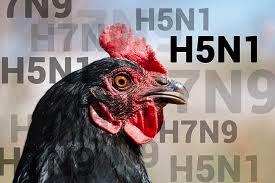
We cannot continue to absolutely exclude vaccination against HPAI as a possible measure to contain and control HPAI. Given that the infection is now de facto seasonally and regionally endemic in the U.S. and in all probability is transmitted over short distances by the aerogenous route vaccination should be considered for limited application for breeders, laying flocks, growing turkeys raised in high risk areas.
Avian influenza should be regarded as the “Newcastle disease of the 2020s”. This equally catastrophic infection was a major restraint to production and profitability during the 1970s, but is effectively controlled worldwide using a range of vaccines.
*Gardin, Y. et al. Experimental and Field Results Regarding Immunity Induced by Recombinant Turkey Herpesvirus H5 Vector Vaccine Against H5N1 and Other H5 Highly Pathogenic Avian Influenza Virus Challenges. Avian Diseases. 60:232-237 (2016)

|
Permitting of Methane Digesters in North Carolina Ruled Legal
|
03/26/2023 |
|
Following protracted negotiation and operation of a demonstration unit, the North Carolina Department of Environmental Quality issued a general permit for farmers to install manure digesters. These installations will process hog manure with collection of methane to be piped to a central distribution plant.
Shortly after the permit was issued, activists groups, including the Environmental Justice Community Action Network and the Cape Fear River Watch, challenged the permits claiming that the Department should have considered alternative technologies. Anaerobic digesters are in common use worldwide and the units to be installed were developed specifically for North Carolina hog farms by Smithfield Foods. The objectives were to capture renewable natural gas from contract farms and to eliminate nuisance odors, the subject of recent civil actions by landowners.
According to a ruling by Administrative Law Judge Donald R. Van der Vaart, the permits were issued legally in accordance with legislation enacted by the North Carolina General Assembly. In commenting on the ruling, Stewart Leeth, Chief Sustainability Officer for Smithfield Foods, stated, “Our biogas projects produce low-carbon RNG and represent a substantial financial commitment to transform the future of clean energy and sustainable agriculture and improve the quality of life in surrounding communities.”
|
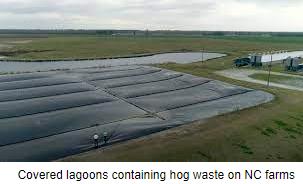
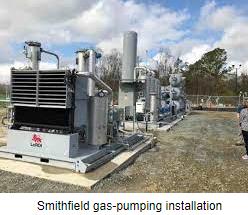
|
|
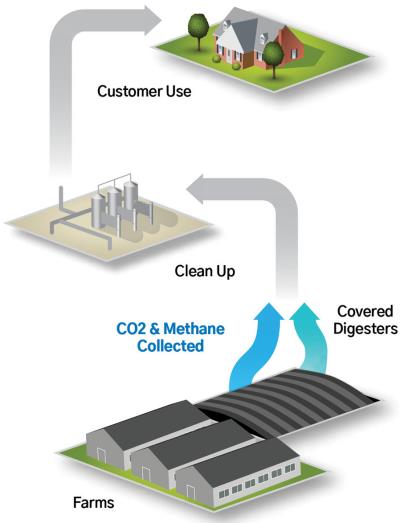
|
This sequence of events in North Carolina illustrates the fact that the intensive livestock industry will never be able to satisfy environmental activists. These associations represent a wide spectrum of interests ranging from veganism to welfare of farm animals but appear united in their opposition to intensive livestock production. Organizations opposed to animal agriculture are frequently supported by lawyers employed in academia who promote anti-industry activities in the guise of education and operation of legal clinics.
At the end of the day, none of the activist organizations expressing environmental concerns can provide an alternative to efficient large-scale production that will feed the U.S. and importers of our protein products.
|

|
Investigating Origins of COVID Confounded by China
|
03/19/2023 |
|
It is generally accepted that the origin of COVID should be clearly understood and should be supported with factual and scientific documentation. The international public health community should be able to analyze the factors leading to the emergence of the infection that emerged in Wuhan, China during late 2019 and the subsequent worldwide spread. This information is critical in planning surveillance programs and to develop an appropriate response to an inevitable future pandemic.
The Director-General of the WHO, Dr. Tedros Ghebreyesus stated that, “For the sake of the millions of people who died and those who are living with long COVID, we must understand the origin of COVID-19 by exploring all hypotheses.” The WHO considers an investigation of the origin of the pandemic as a “scientific and moral imperative to help prevent future outbreaks”.
 The WHO in Geneva approached the origin of COVID from a scientific perspective. From the outset China was evasive and non-cooperative with the WHO as to the extent and severity of infection. The Agency belatedly sent an impartial panel of scientists to Wuhan to investigate the origins of the pandemic. This stage-managed tour deprived WHO-nominated virologists and epidemiologists of the opportunity to review source data and to interview scientists and clinicians associated with the outbreak. In the absence of transparency the origin of the infection has become politicized in both the U. S. and China with evident finger pointing and some outlandish and unsupported theories of origin. The WHO in Geneva approached the origin of COVID from a scientific perspective. From the outset China was evasive and non-cooperative with the WHO as to the extent and severity of infection. The Agency belatedly sent an impartial panel of scientists to Wuhan to investigate the origins of the pandemic. This stage-managed tour deprived WHO-nominated virologists and epidemiologists of the opportunity to review source data and to interview scientists and clinicians associated with the outbreak. In the absence of transparency the origin of the infection has become politicized in both the U. S. and China with evident finger pointing and some outlandish and unsupported theories of origin.
The U.S. House and Senate have voted unanimously to declassify all U. S. intelligence information on the origin of the pandemic. This will facilitate Congressional enquiries into the origin of the disease. It remains for the President to now enact the legislation that requires release of “any and all information relating to potential links between the Wuhan Institute of Virology and the origin of coronavirus disease”. It is questioned whether the President will sign the Bill, although with overwhelming passage in both houses, a veto by the President would be subject to an instant override.
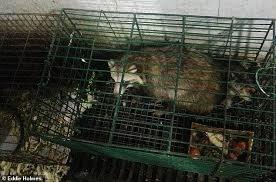 According to Reuters, eight federal agencies have investigated the origin of COVID without attaining unanimity as to the source, whether a natural emergence in wild animals or an accidental laboratory release. This is attributed to the lack of human intelligence in the form of credible whistleblowers or published studies other than those emanating from China that may be presumed to be subject to Government censorship. According to Reuters, eight federal agencies have investigated the origin of COVID without attaining unanimity as to the source, whether a natural emergence in wild animals or an accidental laboratory release. This is attributed to the lack of human intelligence in the form of credible whistleblowers or published studies other than those emanating from China that may be presumed to be subject to Government censorship.
To dispel one theory in circulation, it is highly unlikely that SARS-CoV-2 virus responsible for COVID-19 was created as a bioweapon. A human coronavirus developed from bats would be lower than a 10th choice among available pathogens. Intending perpetrators of a bioweapon ifor deployment should have a stockpile of effective vaccines or therapeutic agents to protect their forces in advance of an attack. The absence of a specific vaccine and known instability of the virus mitigate against a deliberate attempt at weaponization.
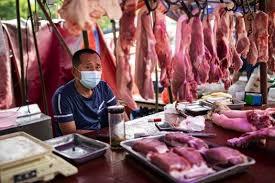 There are two leading theories of the origin of COVID. The first is a spontaneous mutation of a coronavirus in a free-living animal reservoir with the pathogen that crossed over into susceptible human contacts. The fact that the population of China has a predilection for consuming a variety of reptilian and mammalian exotics purchased in both rural and urban wet markets creates the potential for emergence of an infection carried by animals. It is evident that SARS, the progenitor of COVID, that emerged in Foshan with a 7 million population in November 2002 was associated with patients having contact with urban wet markets as opposed to patients in rural areas. Apparent concentration of early cases residing in the vicinity of the Wuhan Huanan Seafood Market was presented as evidence of the animal to human route. This was reinforced by recovery of SARS-CoV-2 virus from animal stalls and locations in the market subsequent to closure. These lines of investigation provide circumstantial evidence but do not confirm that the market was the source of infection. In a characteristic response, authorities in China initially suppressed information concerning the outbreak and failed to cooperate with international health agencies to control the spread of the disease. More recently in the face of criticism scientists in China have implicated Asian raccoon dogs (Nyctereutes procyonoides) as a carrier of SARS-CoV-2 virus. There are two leading theories of the origin of COVID. The first is a spontaneous mutation of a coronavirus in a free-living animal reservoir with the pathogen that crossed over into susceptible human contacts. The fact that the population of China has a predilection for consuming a variety of reptilian and mammalian exotics purchased in both rural and urban wet markets creates the potential for emergence of an infection carried by animals. It is evident that SARS, the progenitor of COVID, that emerged in Foshan with a 7 million population in November 2002 was associated with patients having contact with urban wet markets as opposed to patients in rural areas. Apparent concentration of early cases residing in the vicinity of the Wuhan Huanan Seafood Market was presented as evidence of the animal to human route. This was reinforced by recovery of SARS-CoV-2 virus from animal stalls and locations in the market subsequent to closure. These lines of investigation provide circumstantial evidence but do not confirm that the market was the source of infection. In a characteristic response, authorities in China initially suppressed information concerning the outbreak and failed to cooperate with international health agencies to control the spread of the disease. More recently in the face of criticism scientists in China have implicated Asian raccoon dogs (Nyctereutes procyonoides) as a carrier of SARS-CoV-2 virus.
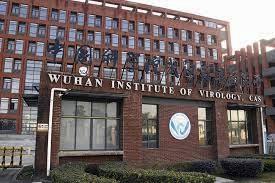 The second prevailing theory of the emergence of COVID relates to inappropriate gain of function experiments on bat coronaviruses conducted by the Wuhan Institute of Virology. It is possible that with defective BSL-3 protocols, dissemination of a modified virus pathogenic to humans occurred. This could have been achieved either by spread from infected laboratory personnel or by release of the virus by the aerogenous route. The implicated wet market is three miles distant from the Institute, on the West bank of the Yangtze River that separates the urban area of the City. If China wishes to disprove the lab-leak theory, relevant serologic data and health records should be made available to investigators together with gene sequences of early cases. This data requested by the WHO panel was not released. The second prevailing theory of the emergence of COVID relates to inappropriate gain of function experiments on bat coronaviruses conducted by the Wuhan Institute of Virology. It is possible that with defective BSL-3 protocols, dissemination of a modified virus pathogenic to humans occurred. This could have been achieved either by spread from infected laboratory personnel or by release of the virus by the aerogenous route. The implicated wet market is three miles distant from the Institute, on the West bank of the Yangtze River that separates the urban area of the City. If China wishes to disprove the lab-leak theory, relevant serologic data and health records should be made available to investigators together with gene sequences of early cases. This data requested by the WHO panel was not released.
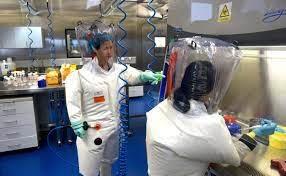 This commentator has taken a proverbial 30,000-foot view of the emergence of COVID as we know it, and applied logic in the absence of analyzable data. It would appear to this commentator that the emergence of COVID in the city of Wuhan with a population of 12 million and the home of an Institute working with bat coronaviruses, represents a coincidence of overwhelming proportions. This is in recognition of twenty other metropolitan areas in China each with more than five million inhabitants and presumably without ongoing bat coronavirus research. This commentator has taken a proverbial 30,000-foot view of the emergence of COVID as we know it, and applied logic in the absence of analyzable data. It would appear to this commentator that the emergence of COVID in the city of Wuhan with a population of 12 million and the home of an Institute working with bat coronaviruses, represents a coincidence of overwhelming proportions. This is in recognition of twenty other metropolitan areas in China each with more than five million inhabitants and presumably without ongoing bat coronavirus research.
China did not do itself any favors by initial denial of the existence of the outbreak and then failing to acknowledge contagious transmission. Refusal to admit impartial and qualified epidemiologists offered by the WHO in the early stages of the outbreak and delays in allowing visits by WHO consultants and then obstructing the WHO mission to investigate the source of the disease represent a presumption of guilt, inconsistent with the actions of a responsible nation. Consistent stonewalling, muzzling of scientists, removal of gene sequences from websites and refusal to provide data, although established standard operating procedures for China, creates the impression that Government has a lot to hide. This Nation has effectively rendered the entire World a disservice and brought upon itself the suffering from the economic impact of lockdowns and high mortality.

|
FDA Requests $7.2 billion for FY 2024
|
03/12/2023 |
|
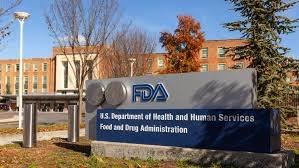 The U. S. Food and Drug Administration (FDA) has submitted requests for enhancements and activities that will add $7.2 billion to the Fiscal Year 2024 budget. In supporting the request, the Commissioner, Dr. Robert M. Califf, stated that the funding is required for vital oversight of tobacco products, to strengthen medical product safety and to ensure that programs have the highest success for the good of public health. The U. S. Food and Drug Administration (FDA) has submitted requests for enhancements and activities that will add $7.2 billion to the Fiscal Year 2024 budget. In supporting the request, the Commissioner, Dr. Robert M. Califf, stated that the funding is required for vital oversight of tobacco products, to strengthen medical product safety and to ensure that programs have the highest success for the good of public health.
The FDA release notes, “Building on lessons learned from the infinite supply chain response, the budget includes funding to modernize infant formula oversight and to respond to shortages of critical foods and to reduce exposure to toxic chemicals in food.” It is evident that the FDA intends to expand oversight of the animal feed industry including ingredients that are combined, packaged and sold as animal food. It is however unclear whether the FDA is referring to animal feed or food derived from animals in their request for funding since the USDA-FSIS is responsible for red meat and poultry.
Among the components of the budget, FDA has requested: -
- $130 million for food safety and nutrition modernization. This activity would include food labeling and the oversight of animal feed. It is evident that the request relates to the widely criticized reorganization implementing a matrix structure.
- $10 million is requested for improvements in information technology including emerging threats, and allowing real-time continuously access, analysis and aggregation of information.
- $16 million is requested for “mission support functions within the Office of the Commissioner”. This is intended to provide strategic direction, policy coordination and business services to enhance the efficiency of FDA programs.
The FDA intends to require animal drug sponsors to make post-approval safety-related label changes based on information that becomes available after approval. FDA will request the authority to exclude products or classes of products that either the FDA or the Environmental Protection Agency consider deleterious. The FDA intends to assume regulatory authority for animal-use pesticides to be regulated as animal drugs.

The FDA intends requiring industry to test food products to be consumed by infants and children for the presence of toxic elements and make available the results of assays. This requirement relates to the revelation that juices marketed for children were and are contaminated with heavy metals.
The FDA will apply funding to effect mandatory recall covering all human and animal drugs medical devices, tobacco products, cosmetics and foods that are currently under the jurisdiction of the FDA and are subject to recall.
While it is recognized that a government agency should be responsible for maintaining the safety and efficacy of drugs and medical devices, the question of divided jurisdiction among the FDA, USDA-FSIS and EPA among other Federal agencies raises the issue, now openly discussed, whether the U. S. public would be better served by an independent Food Safety Agency.
Dr. Califf is asking for a lot of money to achieve what is necessary but should have been incorporated in the mission of the agency. Dr. Califf is attempting to pour money into an agency with an inappropriate organizational structure and a culture indifferent to food safety. Recent history confirms that the FDA has underperformed with respect to food safety, resulting in a number of significant outbreaks of foodborne disease, potential toxicities and obvious failures in oversight of the mission to protect consumers.

The FDA press release on March 9th is replete with jargon and lofty promises. Implicit in the release will be the imposition of inappropriate restraints and regulations with respect to animal production and on the compounds required to maintain profitability in the agricultural and livestock sectors.
Without demonstrating that he can run the FDA to accomplish the basic missions of the Agency, Dr. Califf appears intent on mission creep and acquiring jurisdiction over aspects of animal production for which the FDA is ill-suited.
EGG-NEWS supports the reasoned recommendations of prominent experts including attorney William Marler to create a separate food agency split from the FDA. Egg-News goes a step further in suggesting that any new agency should incorporate the functions of the USDA-FSIS. Pathogens are unresponsive to Washington turf bureaucracy. Oversight of food safety should be a seamless activity devoid of jurisdictional disputes such as the responsibility for pizzas with either cheese or pepperoni toppings.

|
Acceptance of Avian Influenza Vaccines Gaining Ground Internationally
|
03/03/2023 |
|
Europe is leading the way in developing, investigating and evaluating deployment of vaccines to control avian influenza. France will initiate a program mid-year as a response to unsuccessful eradication activities conducted almost annually. Expenditure in France was close to $1.5 billion for compensation and control in 2022.
Field evaluation of vaccines is in progress in the Netherlands, Italy, and Hungary involving the major segments of poultry production.
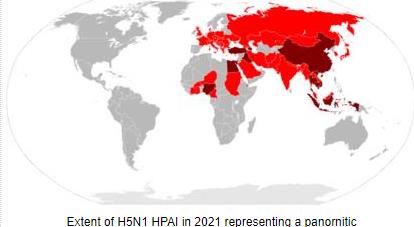 The European Union has accepted the principle of vaccination that will apply to 27 member nations. In accordance with recent decisions, vaccinated poultry, their products and day-old chicks can move freely within the EU effective March 2023. The Russian Union of Poultry Producers has evolved a strategy to administer vaccines against HPAI as an additional measure to control and prevent infections. Their decision was based on the need to maintain food security in the face of sanctions. But also in the realization that biosecurity alone was unable to interdict aerogenous spread of virus The European Union has accepted the principle of vaccination that will apply to 27 member nations. In accordance with recent decisions, vaccinated poultry, their products and day-old chicks can move freely within the EU effective March 2023. The Russian Union of Poultry Producers has evolved a strategy to administer vaccines against HPAI as an additional measure to control and prevent infections. Their decision was based on the need to maintain food security in the face of sanctions. But also in the realization that biosecurity alone was unable to interdict aerogenous spread of virus
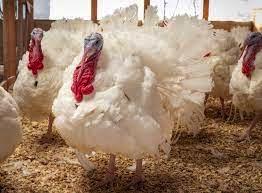 A variety of vaccines are now available with technology superseding the previously deployed hemagglutinin-specific, inactivated oil-emulsion vaccines. Biopharmaceutical manufacturers are now applying rHVT vector and mRNA technology for a new generation of vaccines. Commercially available rHVT vectored vaccines have been used successfully for a number of years in some countries in Asia, the Middle-East and in Mexico. They will be deployed in some South American nations including Bolivia, Peru and Ecuador currently experiencing outbreaks of HPAI. A variety of vaccines are now available with technology superseding the previously deployed hemagglutinin-specific, inactivated oil-emulsion vaccines. Biopharmaceutical manufacturers are now applying rHVT vector and mRNA technology for a new generation of vaccines. Commercially available rHVT vectored vaccines have been used successfully for a number of years in some countries in Asia, the Middle-East and in Mexico. They will be deployed in some South American nations including Bolivia, Peru and Ecuador currently experiencing outbreaks of HPAI.
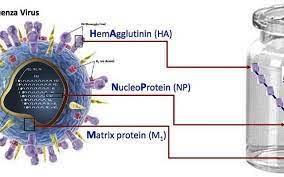 Opposition to vaccination against avian influenza is waning as nations realize that the H5N1 panornitic is not abating and that both migratory and domestic wild birds are both susceptible and are disseminating virus. The decision to implement vaccination as a component of a national control program follows the recognition that H5N1 HPAI is endemic in a nation or region. The fact that the virus has been identified in 47 states of the U.S., has required the depopulation of 57 million commercial birds including 10 million turkeys and 44 million laying hens and that sporadic outbreaks have persisted for over a year suggests that the infection can no longer be regarded as exotic and is de facto seasonally and regionally endemic. Opposition to vaccination against avian influenza is waning as nations realize that the H5N1 panornitic is not abating and that both migratory and domestic wild birds are both susceptible and are disseminating virus. The decision to implement vaccination as a component of a national control program follows the recognition that H5N1 HPAI is endemic in a nation or region. The fact that the virus has been identified in 47 states of the U.S., has required the depopulation of 57 million commercial birds including 10 million turkeys and 44 million laying hens and that sporadic outbreaks have persisted for over a year suggests that the infection can no longer be regarded as exotic and is de facto seasonally and regionally endemic.
A major objection to vaccination is that immunized flocks may excrete virus if infected without an apparent clinical response. This is an obvious but surmountable obstacle. Shedding of virus is limited to about two weeks during which flocks can be quarantined. The complaint that vaccination will create a problem through differentiating vaccinated flocks from those that are infected is now spurious. Apart from the application of DIVA vaccines, the status of any flock can be established rapidly using PCR antigen detection. It is possible to certify that any flock or complex producing eggs or poultry meat is HPAI-negative based on PCR assay on the day before processing or packing. Export of poultry products will in future be based on acceptance of WOAH principles relating to regionalization for commercial shipments in addition to compartmentalization for eggs and day-old chicks.
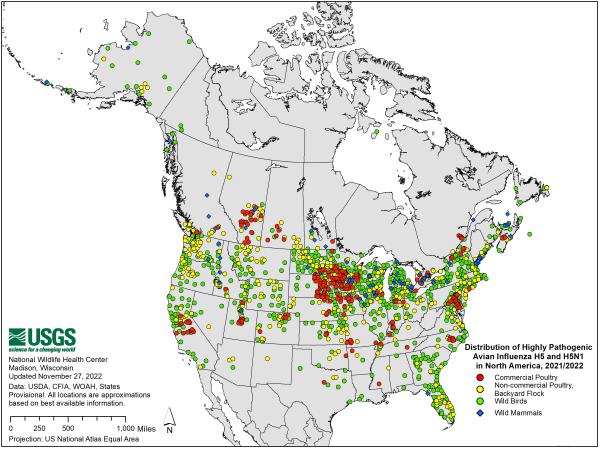 |
It is ironic that nations including China and South Africa that have placed HPAI-related barriers against importation from entire states in the U.S. have infected flocks in their own countries. This is contrary to the trade regulations of the World Organization for Animal Health.
It is axiomatic that it is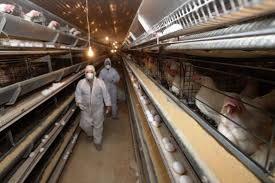 almost impossible and ultimately extremely expensive to eradicate an endemic disease, especially when the pathogen is constantly introduced by migratory birds. It should be accepted that avian influenza is in effect “the Newcastle disease of the 2020’s”. This catastrophic infection was effectively controlled and is no longer a restraint to commercial production as a result of extensive and effective immunization, despite the absence of durable biosecurity in many nations. almost impossible and ultimately extremely expensive to eradicate an endemic disease, especially when the pathogen is constantly introduced by migratory birds. It should be accepted that avian influenza is in effect “the Newcastle disease of the 2020’s”. This catastrophic infection was effectively controlled and is no longer a restraint to commercial production as a result of extensive and effective immunization, despite the absence of durable biosecurity in many nations.
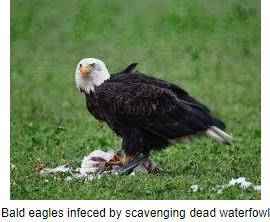 The problem of implementing a vaccination program against avian influenza in the U.S. is not the availability of effective vaccines. The restraint lies in intransigence among veterinary service administrators who are following a playbook antedating the 1984 outbreaks in Pennsylvania. Collectively they have failed to recognize the differences in the epidemiology of the current epornitic of H5N1 avian influenza and the growth of the industry since the outbreaks of H5N2 HPAI, four decades ago. Obstructing vaccination by delaying approval of vaccines that are used effectively in other nations, adherence to the export bogy and inappropriate interpretation of science to maintain a business-as-usual approach will not ultimately prevent vaccination. The problem of implementing a vaccination program against avian influenza in the U.S. is not the availability of effective vaccines. The restraint lies in intransigence among veterinary service administrators who are following a playbook antedating the 1984 outbreaks in Pennsylvania. Collectively they have failed to recognize the differences in the epidemiology of the current epornitic of H5N1 avian influenza and the growth of the industry since the outbreaks of H5N2 HPAI, four decades ago. Obstructing vaccination by delaying approval of vaccines that are used effectively in other nations, adherence to the export bogy and inappropriate interpretation of science to maintain a business-as-usual approach will not ultimately prevent vaccination.
Based on the cost to the public and private sectors and to consumers, the U.S., Congress will likely turn off the compensation spigot and force adoption of vaccination.
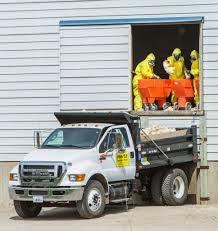 Public health authorities will react aggressively if and when transmission to human contacts of infected poultry occurs. This is predicated on the wide range of terrestrial and aquatic mammals that are apparently susceptible to and die following exposure to H5N1 AIV. Infection is acquired from predation or from the environment and then spread intra- and inter-species. Public health authorities will react aggressively if and when transmission to human contacts of infected poultry occurs. This is predicated on the wide range of terrestrial and aquatic mammals that are apparently susceptible to and die following exposure to H5N1 AIV. Infection is acquired from predation or from the environment and then spread intra- and inter-species.
Opposition to mass depopulation is gathering force and is generating opposition among average consumers. As we move into Spring with the prospect of an upsurge in avian cases it must be recognized that the HPAI situation has expanded from a veterinary problem to encompass the economy and public health considerations. Vaccination cannot continue to be ignored as a component of control and suppression of HPAI in the World and the U.S.

|
Human H5N1 Case Reported in Cambodia-Implications for the World’s Poultry Industries
|
02/26/2023 |
|
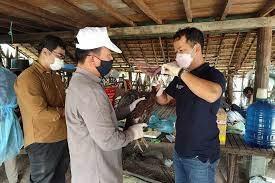 The Ministry of Health of Cambodia reported an apparent cluster comprising one fatality due to H5N1 avian influenza with 1 additional confirmed case. Dr. Youk Sambath, the Secretary of State in the Ministry of Health, dispatched a team to investigate the apparent outbreak. Samples were obtained from residents of villages in the commune of Romlech in Prey Veng Province. Specimens were examined by the Pasteur Institute a reference laboratory in Phnom Penh, the Nation’s capital. Four of eleven suspect cases were symptomatic but all of these cases proved to be AI-negative. Sequencing of virus from the two confirmed cases (deceased daughter and recovered father) identified the H5N1 virus as clade 2.3.2.1c that has circulated in chickens in Cambodia for a number of years. The current panornitic strain present in five continents is classified as clade 2.3.4.4b The Ministry of Health of Cambodia reported an apparent cluster comprising one fatality due to H5N1 avian influenza with 1 additional confirmed case. Dr. Youk Sambath, the Secretary of State in the Ministry of Health, dispatched a team to investigate the apparent outbreak. Samples were obtained from residents of villages in the commune of Romlech in Prey Veng Province. Specimens were examined by the Pasteur Institute a reference laboratory in Phnom Penh, the Nation’s capital. Four of eleven suspect cases were symptomatic but all of these cases proved to be AI-negative. Sequencing of virus from the two confirmed cases (deceased daughter and recovered father) identified the H5N1 virus as clade 2.3.2.1c that has circulated in chickens in Cambodia for a number of years. The current panornitic strain present in five continents is classified as clade 2.3.4.4b
During recent weeks, reports of H5N1 clade 2.3.4.4b causing deaths in free-living animals have been submitted to the World Organization for Animal Health. The diversity among terrestrial mammals in 2022 includes free-living foxes, skunks, raccoons, bears and cougars in addition to animals in zoo collections. During 2022, cases of marine mammals were identified with seals dying along the coast of Maine, a walrus in Norway and more recently, up to 700 sea lions along the coast of Peru. During late 2022, a mink farm in Spain with 50,000 animals reported H5N1 strain avian influenza, presumably acquired from consuming raw poultry or from contact with free-living birds. Rapid spread within the farm suggested mink-to-mink transmission. The World Health Organization has not released information on the sequencing of the virus from mink to determine whether mutations occurred, facilitating intra-herd transmission. WHO virologists will be evaluating whether mutations in the virus were responsible for any emerging clusters in Asia.
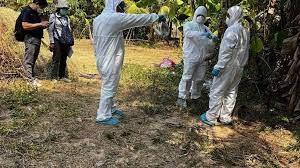 To date, there has only been one case of transmission of H5N1 fin the U.S. from dead birds or from entrained dust and dander, affecting a worker employed in depopulating a large egg-production complex in the Midwest. Despite many thousands of man-days of exposure among workers during the 2022 epornitic the single asymptomatic and confined case mitigates against direct transmission from infected flocks to humans at this time. Mutations occurring in the current H5N1 virus in Asia could change the present health situation. To date, there has only been one case of transmission of H5N1 fin the U.S. from dead birds or from entrained dust and dander, affecting a worker employed in depopulating a large egg-production complex in the Midwest. Despite many thousands of man-days of exposure among workers during the 2022 epornitic the single asymptomatic and confined case mitigates against direct transmission from infected flocks to humans at this time. Mutations occurring in the current H5N1 virus in Asia could change the present health situation.
Implications arising from a strain capable of infecting humans even without human-to-human transmission would be of extreme significance to public health authorities worldwide and to the financial viability of the world’s poultry industries.
Pandemics of zoonotic origin have previously emerged in rural areas in Asia as isolated clusters. Villagers who are infected may carry a virus to cities with wet markets serving to amplify and disseminate the pathogen. International air transport has been shown to distribute infection worldwide within a short period. This was evidenced by the spread of SARS and COVID and previous influenza pandemics.
Human-to-human transmission would undoubtedly accelerate the acceptance and deployment of avian influenza vaccine for flocks worldwide. Creating immune populations will be necessary to prevent the emergence of a novel and potentially infectious HPAI strain transmissible to humans. The longer the duration of the current panornitic and the higher the concentration of susceptible birds in large flocks or regions, the greater will be the probability of mutations occurring that may affect humans. The emergence of an H5N1 strain in Asia expressing genes capable of infecting humans is a presumed mechanism by which a pandemic could emerge. China has addressed the problem of H7N9 transmission of HPAI from chickens to consumers patronizing wet markets by vaccinating supply flocks
EGG-NEWS has consistently advocated routine annual influenza vaccination of all employees coming into contact with live poultry. This would reduce the rare probability of a recombination event between human and avian strains, resulting in a potentially pathogenic strain capable of human-to-human transmission.
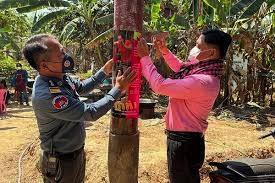 The quicker that the U.S. adopts a program of strategic vaccination concentrating on large egg-production complexes in high-risk areas, in addition to broiler breeders and turkeys, the greater will be our level of security. Vaccination will not supplant biosecurity but should reduce the risk of emerging mutants. Obviously there will still be the need to deplete infected flocks showing mortality as a result of infection. The quicker that the U.S. adopts a program of strategic vaccination concentrating on large egg-production complexes in high-risk areas, in addition to broiler breeders and turkeys, the greater will be our level of security. Vaccination will not supplant biosecurity but should reduce the risk of emerging mutants. Obviously there will still be the need to deplete infected flocks showing mortality as a result of infection.
The USDA-APHIS, our industry associations and health administrators must discard the fallacy that H5N1 strain HPAI is exotic to the U.S. or for that matter, North America. Any disease that requires the depopulation of 55 million commercial poultry, persists for over a year and emerged in 47 states with extension to free-living domestic birds and mammals cannot be regarded as exotic. At the best, H5N1 HPAI is regionally and seasonally endemic.
It is axiomatic that avian influenza is the “Newcastle disease of the 2020s”. This catastrophic disease was successfully contained during the 1960s and suppressed with appropriate vaccination. Until 2020, avian influenza was regarded as an exotic disease that could be eradicated. The extent of the infection over five continents suggests a more realistic approach to control and prevention. The possibility of human infection has created a higher level of concern and the need for rapid action. For years, the USDA-APHIS has been subscribing to the principle of “One-health.” Given the potential of an H5N1 pandemic in addition to the panornitic in progress, now is the time to deploy whatever vaccines are available as an adjunct to traditional control measures.

|
2023 Farm Bill will be Contentious
|
02/20/2023 |
|
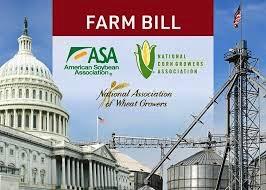 During the past week, the Congressional Budget Office projected that the ten-year cost of the 2023 Farm Bill would attain $1.5 trillion, about 57 percent higher than the 2018 Farm Bill. It is emphasized that estimates are provisional and are essentially projections based on broad assumptions relating to initial costs and inflation that will occur over a decade. The Thrifty Food Plan is the major contributor to the increase and takes into account the Congressional Budget Office estimate for SNAP expenditure at $93 billion for the 2023-2032 period. During the past week, the Congressional Budget Office projected that the ten-year cost of the 2023 Farm Bill would attain $1.5 trillion, about 57 percent higher than the 2018 Farm Bill. It is emphasized that estimates are provisional and are essentially projections based on broad assumptions relating to initial costs and inflation that will occur over a decade. The Thrifty Food Plan is the major contributor to the increase and takes into account the Congressional Budget Office estimate for SNAP expenditure at $93 billion for the 2023-2032 period.
Members of the Senate Agricultural, Forestry and Food Committee consider the projected expenditure on the Thrifty Food Plan to be “unacceptable.” Senator John Boozman (R-AR) highlighted the extent of the $250 billion cost of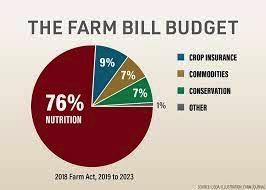 the program from July 2021 to May 2022 coinciding with additional COVID expenditures that formed the baseline on which the projection was calculated. the program from July 2021 to May 2022 coinciding with additional COVID expenditures that formed the baseline on which the projection was calculated.
If extra funding is assigned to SNAP, other programs will have to be shaved, including commodity support and conservation. It is apparent that negotiations to produce an acceptable farm bill will be contentious. The respective House and Senate chairs will have to demonstrate diplomacy and tact in achieving a bipartisan consensus in their respective committees. Compromise rather than brinkmanship will be required to draft a Farm bill that can be enacted and that satisfies the needs of diverse stakeholders and political ideologies.

|
Farm Action Claims Refuted
|
02/14/2023 |
|
 On January 19th Farm Action a self-described “Advocacy organization that works for everyone, not just a handful of powerful corporations” addressed a letter to Lina Khan, Chair of the Federal Trade Commission, accusing the egg industry of collusion to raise prices. The letter cites USDA data on egg prices and flock depopulation following highly pathogenic avian influenza (HPAI) in 2022. It is a matter of record that close to 44 million hens were depleted from February through mid-December 2022 covering 41 farms in 11 states including 22 large complexes holding from 500,000 to 6 million birds. The average size of the U.S. flock in production during 2022 was reduced by approximately 20 million hens from the pre-HPAI level of 325 million. The data presented by Farm Action is disputed since assertions are taken out of context and the accusations of collusion are vigorously rejected. In the absence of proof of either direct or indirect consultation on prices, the emotional and accusatory tone of the letter suggests a malicious bias inconsistent with fact. Reference to previous lawsuits settled during 2018 are totally irrelevant to the present situation caused by HPAI. On January 19th Farm Action a self-described “Advocacy organization that works for everyone, not just a handful of powerful corporations” addressed a letter to Lina Khan, Chair of the Federal Trade Commission, accusing the egg industry of collusion to raise prices. The letter cites USDA data on egg prices and flock depopulation following highly pathogenic avian influenza (HPAI) in 2022. It is a matter of record that close to 44 million hens were depleted from February through mid-December 2022 covering 41 farms in 11 states including 22 large complexes holding from 500,000 to 6 million birds. The average size of the U.S. flock in production during 2022 was reduced by approximately 20 million hens from the pre-HPAI level of 325 million. The data presented by Farm Action is disputed since assertions are taken out of context and the accusations of collusion are vigorously rejected. In the absence of proof of either direct or indirect consultation on prices, the emotional and accusatory tone of the letter suggests a malicious bias inconsistent with fact. Reference to previous lawsuits settled during 2018 are totally irrelevant to the present situation caused by HPAI.
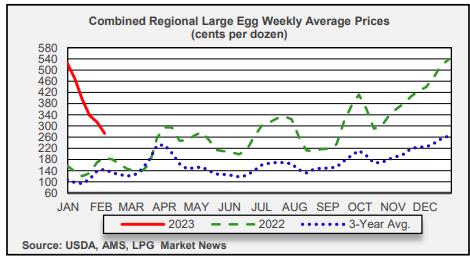 |
 Removal of 20 million hens or 6.2 percent of the producing flock reduced supply. The price of eggs is determined by the relationship between supply and demand. Price as we learned in Econ. 101 will be influenced by the relationship of the two variables. The amplitude of the price increase was influenced by the prevailing benchmark price discovery system compiled and disseminated by a commercial firm serving both the industry but more specifically buyers for retailers. The benchmark is based on Midwest Large but also includes other sizes and regions and is intended to establish the basis of price negotiations between retail chains and producers. Admittedly, a CME quotation, based on Midwest large, would be a more equitable determinant of price compared to the current benchmark but that is only an aspirational consideration. Removal of 20 million hens or 6.2 percent of the producing flock reduced supply. The price of eggs is determined by the relationship between supply and demand. Price as we learned in Econ. 101 will be influenced by the relationship of the two variables. The amplitude of the price increase was influenced by the prevailing benchmark price discovery system compiled and disseminated by a commercial firm serving both the industry but more specifically buyers for retailers. The benchmark is based on Midwest Large but also includes other sizes and regions and is intended to establish the basis of price negotiations between retail chains and producers. Admittedly, a CME quotation, based on Midwest large, would be a more equitable determinant of price compared to the current benchmark but that is only an aspirational consideration.
Disruption in the supply chain during 2022 was evidenced by fluctuation in and a progressive reduction of the weekly stock levels as reported by the USDA-Economic Research Service. Shell egg inventory at the beginning of January 2022 attained 2.04 million cases. In January 2023, inventory had fallen 23.2 percent to 1.56 million cases. This was mainly due to depopulation of flocks, reducing supply. Concurrently, demand increased associated with inflation in the price of alternative proteins with eggs representing an outstanding value proposition for consumers.
Retailers have traditionally used the benchmark price to negotiate wholesale prices and developed strategies to play the market by anticipating future declines or rises in the benchmark price. Fluctuation in stock levels in a rising market created uncertainty among buyers with a reluctance to lock in large purchases and to maintain adequate inventory in distribution centers and stores. In many cases, retail chains with ineffective logistics were unable to stock shelves, creating a higher demand for shell eggs that in turn fueled retail price increases.
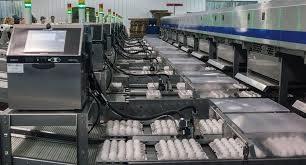 The Farm Action letter to the FTC claims price gouging by the largest producer in the U. S. It is a matter of record that profits generated by Cal-Maine Foods, Inc. during Fiscal 2022 attained a profit margin of 7.5 percent calculated as the net income expressed as a percentage of revenue. For the six Fiscal Years 2017 through 2022, the company recorded a profit margin of 1.9 percent due to low prevailing prices and high production costs in many years preceding the outbreak of HPAI. By selecting Fiscal 2022 as the measure of profitability, Farm Action effectively “cherry picked” a single year to establish a high profit margin for the Company. For the 17-year sequence commencing in Fiscal 2006, Cal-Maine Foods, Inc. generated a profit margin of 5.1 percent which certainly does not indicate manipulation of the egg market to their advantage. The Farm Action letter to the FTC claims price gouging by the largest producer in the U. S. It is a matter of record that profits generated by Cal-Maine Foods, Inc. during Fiscal 2022 attained a profit margin of 7.5 percent calculated as the net income expressed as a percentage of revenue. For the six Fiscal Years 2017 through 2022, the company recorded a profit margin of 1.9 percent due to low prevailing prices and high production costs in many years preceding the outbreak of HPAI. By selecting Fiscal 2022 as the measure of profitability, Farm Action effectively “cherry picked” a single year to establish a high profit margin for the Company. For the 17-year sequence commencing in Fiscal 2006, Cal-Maine Foods, Inc. generated a profit margin of 5.1 percent which certainly does not indicate manipulation of the egg market to their advantage.
If there has been any unethical inflation of margins the FTC should look to the major retail chains. During the past week Large eggs were priced at $3.99 retail as determined by the USDA. This compares to the Midwest wholesale price of $2.65 per dozen as delivered to warehouses. The difference represents a retail margin of $1.34 per dozen or 50.5 percent above the wholesale price. Although the benchmark price has declined by at least 40 percent over seven weeks consumers have yet to benefit from the reduction borne by producers.
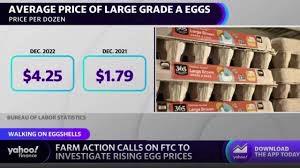 The claims by Farm Action that a vast conspiracy was engineered to raise the price of eggs is without any substantiation. The extreme rise in price can be attributed to imbalance between supply and demand occasioned by depletion of a noteworthy proportion of the producing flock. This contention is supported by the recent decline in the price of eggs as demand has fallen and supply has stabilized. It is a matter of record that the average combined regional large benchmark egg price during the last week of December attained $5.40 per dozen. By the first week in February 2023, price had fallen 40.7 percent to $3.20 per dozen. The decline in price over seven consecutive weeks was accentuated by the precipitous downward movement in the benchmark price. It is self-evident that if egg producers were colluding, steps would have been taken to avoid the precipitous drop in price. The claims by Farm Action that a vast conspiracy was engineered to raise the price of eggs is without any substantiation. The extreme rise in price can be attributed to imbalance between supply and demand occasioned by depletion of a noteworthy proportion of the producing flock. This contention is supported by the recent decline in the price of eggs as demand has fallen and supply has stabilized. It is a matter of record that the average combined regional large benchmark egg price during the last week of December attained $5.40 per dozen. By the first week in February 2023, price had fallen 40.7 percent to $3.20 per dozen. The decline in price over seven consecutive weeks was accentuated by the precipitous downward movement in the benchmark price. It is self-evident that if egg producers were colluding, steps would have been taken to avoid the precipitous drop in price.
Despite the unsubstantiated accusations of Farm Action, the price of eggs over the period January 2022 to through February 2023 was the result of a disequilibrium in supply and demand with the amplitude of price fluctuations accentuated by the benchmark pricing system. If Farm Action claims collusion, then they are obliged to present evidence. Most certainly their letter to the FTC was more for the consumption of the membership of their organization than to convince Federal regulators. The U.S. egg industry should welcome a review of egg prices. If conducted in a responsible manner by competent agricultural economists, the fallacies in the assertions made by Farm Action will become evident.

|
FDA Commissioner Responds to Reagan-Udall Foundation Report
|
02/02/2023 |
|
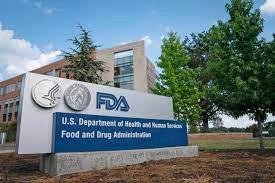 The FDA has experienced a series of food-related crises, adverse press reports, the resignation of Frank Yiannas and Congressional pressure. Following an external review the FDA Commissioner, Robert Califf, has provided what he characterizes as a “rough draft of a plan” to reorganize food-related responsibilities of the Food and Drug Administration. His intent is to restore the position of Deputy Commissioner of Foods, injudiciously eliminated by the previous short-term Commissioner, Dr. Scott Gottlieb, appointed by the previous Administration. The FDA has experienced a series of food-related crises, adverse press reports, the resignation of Frank Yiannas and Congressional pressure. Following an external review the FDA Commissioner, Robert Califf, has provided what he characterizes as a “rough draft of a plan” to reorganize food-related responsibilities of the Food and Drug Administration. His intent is to restore the position of Deputy Commissioner of Foods, injudiciously eliminated by the previous short-term Commissioner, Dr. Scott Gottlieb, appointed by the previous Administration.
The proposed changes are intended to consolidate oversight of food within the FDA and restore some of the organizational improvements introduced by a previous Commissioner, Dr. Margaret Hamburg during her tenure from 2009 to 2015.
 Under the Califf proposal, a Deputy Commissioner for Human Foods would report to the Commissioner and would administer the Human Foods Program. The FDA announcement indicated that there would be a nationwide search to recruit this incumbent. Considerable time and money could be saved if Frank Yiannas previously the FDA Deputy Commissioner for Food, Policy and Response could be persuaded to take the position, given his experience in industry and his knowledge of the Agency. In his more than gracious January 25th letter of resignation he cataloged achievements in improving aspects of regulation of the food supply. He urged consolidation of various entities within the FDA with the need to empower the Deputy Commissioner for Foods with line authority commensurate with the responsibility to protect the Nation’s food supply. Under the Califf proposal, a Deputy Commissioner for Human Foods would report to the Commissioner and would administer the Human Foods Program. The FDA announcement indicated that there would be a nationwide search to recruit this incumbent. Considerable time and money could be saved if Frank Yiannas previously the FDA Deputy Commissioner for Food, Policy and Response could be persuaded to take the position, given his experience in industry and his knowledge of the Agency. In his more than gracious January 25th letter of resignation he cataloged achievements in improving aspects of regulation of the food supply. He urged consolidation of various entities within the FDA with the need to empower the Deputy Commissioner for Foods with line authority commensurate with the responsibility to protect the Nation’s food supply.
Dr. Califf may be an excellent research scientist and hospital administrator but he appears reticent to apply sound principles of organization. His “draft plan” is, at best, fuzzy and deviates from Congressional intent and knowledgeable advice. The rough draft does not have clear lines of authority and responsibility. Califf is rearranging the deck chairs of the Titanic and avoiding radical change to organization and culture. Unless he establishes a clearly defined, integrated and comprehensive human foods program encompassing research and regulation, the FDA will continue to respond reactively to crises.
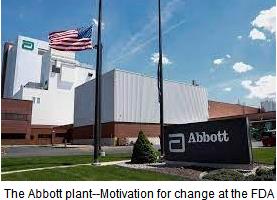
The plan calls for a Center for Excellence in Nutrition to serve as an informational entity advising consumers on food choices. An Office of Critical Foods mandated by the 2023 Consolidated Appropriations Act will function within this Center. The Office of Integrated Food Safety Systems Partnerships will attempt to coordinate response activities with state and local regulatory agencies. The FDA will establish a Human Foods Advisory Committee to consider emerging issues and innovation.
Following the recommendations of the Reagan-Udall report, FDA will introduce advanced information technology and analytical modalities. The Office of Regulatory Affairs will support the human foods program and will concentrate on inspections, laboratory assays, investigations and imports.
In the short term Dr. Califf intends for the Centers for Food Safety and Applied Nutrition, the Office of Regulatory Affairs and the Office of Food Policy and Response to report directly to him. This extends his management span beyond what would be regarded as optimal and will be a recipe for infighting and incoordination.
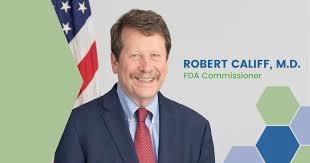 At the end of the day, the most logical reorganization would be to separate food from the existing FDA with the Agency then concentrating on drugs and medical devices. A new Food Safety Agency would, however, only operate efficiently if it incorporated the current responsibilities of the Food, Safety and Inspection Service of the USDA. Radical interdepartmental reorganization would allow a dedicated team of scientists, administrators and regulators to concentrate on all aspects of food, both domestic and imported. The proposed Food Safety Agency would operate in the same way as the EPA and would require Congressional involvement through enabling legislation and funding. The current situation with two major departments and many agencies having some involvement in food policy and regulation is inefficient. A pizza may fall under the jurisdiction of the FDA but if it has a meat topping, the FSIS is involved. We cannot afford a pizza mentality where disparate agencies fight for turf, funding, head counts and status. At the end of the day, the most logical reorganization would be to separate food from the existing FDA with the Agency then concentrating on drugs and medical devices. A new Food Safety Agency would, however, only operate efficiently if it incorporated the current responsibilities of the Food, Safety and Inspection Service of the USDA. Radical interdepartmental reorganization would allow a dedicated team of scientists, administrators and regulators to concentrate on all aspects of food, both domestic and imported. The proposed Food Safety Agency would operate in the same way as the EPA and would require Congressional involvement through enabling legislation and funding. The current situation with two major departments and many agencies having some involvement in food policy and regulation is inefficient. A pizza may fall under the jurisdiction of the FDA but if it has a meat topping, the FSIS is involved. We cannot afford a pizza mentality where disparate agencies fight for turf, funding, head counts and status.
In the short term, Dr. Califf should implement what has been advised, consolidate and facilitate an eventual transition to a Federal Food Safety Agency. As a signal that the FDA will not tolerate dereliction of duty and incompetence he should consider firing those individuals who sat on the Abbott whistle blower’s report for months and did nothing to avert the infant formula crisis. Those who received the report by registered mail apparently kept it from Frank Yiannas who would have reacted more forcefully but the structure imposed on the FDA and those who subscribed to a culture of indifference contrived to sequester him in a bubble.
We hope for changes but it unfortunately takes a catastrophic event such as the 9/11 attacks to result in a Department of Homeland Security consolidating disparate agencies that collectively failed to develop a proactive approach to national security. Until the changes suggested by the Reagan-Udall Commission are implemented and functional our food supply is at risk. Congress should revisit the concept of a Food Safety Agency since Dr. Califf is applying a band aid to a lesion that requires radical surgery.

|
ProEgg a New Model for the U.S. Egg Industry
|
01/23/2023 |
|
 The ProEgg cooperative established less than two months ago represents a new model for the industry. This entity is constituted under the Capper-Volstead Cooperative Marketing Association Act. Enacted in 1922 this legislation allows bona fide farmers to form an association for their mutual benefit to market their products. The Capper-Volstead Act provides limited antitrust protection and is regarded as the “Magna Carta” for agricultural cooperatives. The ProEgg cooperative established less than two months ago represents a new model for the industry. This entity is constituted under the Capper-Volstead Cooperative Marketing Association Act. Enacted in 1922 this legislation allows bona fide farmers to form an association for their mutual benefit to market their products. The Capper-Volstead Act provides limited antitrust protection and is regarded as the “Magna Carta” for agricultural cooperatives.
According to Ric Herrera, CEO of the ProEgg cooperative, the enterprise came into being in response to supply chain disruption associated with state hen housing legislation and more recently, the extensive HPAI epidemic. Combining expertise and resources, while creating a stable, consistent volume through the “pooling” of eggs from cooperative members.
The initial eight members of the Cooperative include Cal-Maine Foods, Central Valley Eggs, Colorado Eggs, Hickman’s Egg Ranch, Oakdell Egg Farm, Opal Foods LLC, Ritewood Egg Farm and Willamette Egg Farms.
The Cooperative should represent a win-win for all participants, through rationalization of the supply chain and obvious contribution to sustainability. Customers will benefit from more extensive availability associated with a potential large supply flock with centralized marketing and distribution. Producers will be able to have consignments consolidated, reducing transport and delivery costs.
It is anticipated that additional producers will join the Cooperative and will attain the same benefits as the founding members of the Cooperative.
According to the Capper-Volstead Cooperative Act, there are restraints on the mode of operation. A Cooperative must function for the benefit of producer members with no outside entities involved. The Act specifically prohibits predatory pricing practices, pricing discrimination, attempts to raise prices by restricting output or collusion among members to the detriment of trade. The Act was passed in 1922 as an exemption from existing antitrust legislation but was, vetoed by President Wilson. The House overrode the veto in 1921 and the Senate in the following year.
It is evident that the management of ProEgg will have to tread a very narrow path since customer groups will complain to the Department of Justice as a result of any practice that deviates from the Act and established case law. The Secretary of Agriculture has the right to intervene in the event of any questionable or overt practice that is either explicitly disallowed or is considered inappropriate.
Given the experience of the CEO and the composition of the membership, illegal practices are considered unlikely but the retail chains comprising the customers will be monitoring the operation of the Cooperative.
It would be beneficial for ProEgg to promote the Cooperative in social media and to generate a positive image among consumers. It is understood that the Cooperative will emphasize benefits and will demonstrate the advantages of a rational and efficient supply chain.
The power and marketing leverage represented by the prevailing industry benchmark cost system will be minimized, given the spread of ProEgg across eleven western states, the population of consumers served and the availability of eggs from the flocks operated by membership. If the ProEgg model gives rise to similar cooperatives that are in turn successful in the Northeast and even the Midwest, it may be possible to develop a CME Midwest Large quotation that could serve as a more effective benchmark, avoiding the extreme fluctuations that are evident following any disruption in the supply chain.
EGG-NEWS welcomes the emergence of ProEgg as an innovative advance in rationalization of marketing eggs under the umbrella of the Capper-Volstead Cooperative Marketing Association Act.

|
China Faces COVID Haixiao – Implications for the U. S.
|
01/16/2023 |
|
Both international public health authorities and economists are closely observing the response to the abrupt change in official policy regarding control of COVID in China. Official statistics, always questionable, now admit to over 100,000 fatalities since late December. Social media in China characterize the escalating incidence rate as a haixiao or tsunami. International epidemiologists suggest that as many as 40 million new cases are occurring daily. In high-density mega-cities, such as Beijing and Shanghai, as many as 70 percent of the population may already have been exposed.
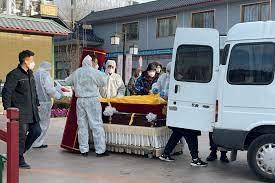
The Government of China describes the abrupt change in policy from zero COVID to laissez faire (or “let it rip”) as “optimization of prevention and control measures”. It is evident that China wasted three years in an attempt at containment requiring shutdowns. The Government failed to prepare for eventual restoration to pre-COVID social and economic activity by immunizing the population and preparing for an upsurge in hospitalization and ICU admissions.
Airfinity, a research company based in London, forecast fatalities at 10,000 per day, peaking at 25,000 after the Lunar New Year on January 22nd. The Economist predicted that as many as 1.5 million may die from COVID in coming months. The real effect of allowing free movement among a population that is inadequately immunized will only become apparent after return of urban residents to their traditional homes in far-flung provinces following the annual three-week migration.

The burden of COVID will fall disproportionately on the elderly who, unlike their counterparts in Europe and North America, have resisted vaccination even using the imperfect, inactivated domestic vaccines. These are based on obsolete technology and include antigen from the Wuhan 2019 strain. The vaccines manufactured in China require three doses and offer limited immunity against current sub-variants of Omicron strain of SARS-CoV-2 in circulation. Irrespective of Government statistics that are manipulated, the incidence rate of COVID may be judged from demands for cremation that far exceed capacity and a concurrent black market for Paxlovid.
The justification for the Government decision to lift all COVID precautions without an appropriate transition period, is questioned. In the first instance President Xi Jinpeng considered it necessary to keep the lid on the pot until he was confirmed for a third term at the 20th National Congress (Ershi Da) during October 2022. Unprecedented street demonstrations coupled with an obvious decline in exports and plummeting GDP were important factors leading to the decision.
Despite abandoning restrictions, daily activities and hence, the economy have not returned to pre-COVID activity. The surge in cases has sharply restricted the availability of workers in some provinces with Guangdong, Shandong, and Jiansgu impacted by absenteeism that ranges from 25 to 50 percent of workers at present. Despite accumulated savings during the 3-year shutdown, consumers are reticent to venture into shopping areas and restaurants, although the young have returned to bars and night-life and entertainment.
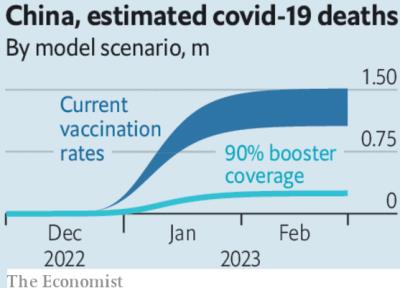
It is understood that Foxcon, a major assembler of electronics and source of export volume, warned the Government that lockdowns were seriously impacting the credibility of China as a reliable supplier. This is evidenced by importers and companies in North America and Europe shifting production from China to plants in Viet Nam and India especially since the onset of COVID.
During the past five years and with intensification during COVID, President Xi has waged war on the private sector. Charges of corruption and fraud whether justified or not have been levied against property developers and entrepreneurs representing the new billionaires in a nation only recently freed from the shackles of doctrinaire communism and the inflexibility of Chairman Mao. Lingling Wei, correspondent for the Washington Post, based in Beijing, recently described the apparent changes in policy with regard to the private sector. Speaking with Fareed Zakaria on the CNN program GPS on Sunday, January 15th, she stated that the Government now recognizes that growth in the economy will only be achieved through the private sector. The traditional playbook of government spending on infrastructure projects to boost the economy will probably not be effective in restoring GDP and entrepreneurs including Jack Ma are now undergoing rehabilitation.
There will be little if any increase in demand by China for U. S. agricultural products over the remainder of the current marketing year ending in September. Corn exports, predominantly to China, are down by half over the corresponding period in the 2021-2022 year. Soybean exports are proceeding at a more favorable rate, down six percent for market year 2022-2023. Recent weekly orders for commodities by China have been, at best, lackluster. Exports of broiler products to China our best customer by value will, in all probability, continue at existing levels. For the first eleven months of 2022, exports of all broiler products to China amounted to 583,425 metric tons valued at $1,024 million, 33 percent higher than in 2021. Of the volume shipped during the first ten months of 2022, feet accounted for 79 percent of volume with only 16 percent represented by legs and leg quarters, the principal export commodity by the U.S. broiler industry.
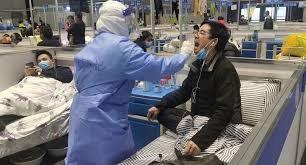
In the intermediate term, China will achieve a measure of control over COVID with factory production restored and supply chains strengthened. It is possible that during late 2023, congestion may reoccur in U. S. West Coast ports, although Gulf and East Coast ports have been expanded and equipped to accommodate imports from China and other Asian nations.
From a public health perspective, infection of a large, susceptible population with current strains of COVID has the potential to produce new variants that may demonstrate either higher infectivity, pathogenicity or both. This has implications for the entire world population. Attempting to confine variants to China by imposing travel restrictions is essentially shutting the stable door after the horse has bolted. We can only hope that WHO has sufficient leverage with more receptive elements within the public health system of China to release reliable statistics and above all the molecular characterization of variants. In the interim, genetic sequencing of isolates derived from aircraft wastewater can provide some indication of variants circulating in Asia and other continents.
We can but hope that China can control COVID, applying effective mRNA vaccines that can be modified in the short term in response to emerging variants. Increasing purchasing power among consumers will maintain demand for broiler feet, soybeans and corn, although the U. S. will compete with Brazil and Argentina for many commodities.

|
Reagan-Udall Foundation Report on the FDA-A temporary Fix?
|
01/08/2023 |
|
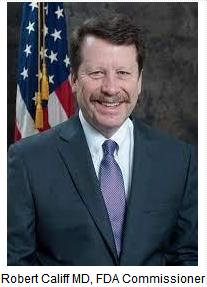 A report analyzing the structure and effectiveness of the Food and Drug Administration requested by Commissioner by Dr. Robert Califf in July was released in November. The FDA is responsible for oversight of the U. S. food industry with sales of $1.5 trillion and is also charged with ensuring the wholesomeness of imported foods. A report analyzing the structure and effectiveness of the Food and Drug Administration requested by Commissioner by Dr. Robert Califf in July was released in November. The FDA is responsible for oversight of the U. S. food industry with sales of $1.5 trillion and is also charged with ensuring the wholesomeness of imported foods.
Under extreme pressure from media and Congress Dr. Califf had no option other than to go outside his Agency to obtain an impartial and objective evaluation of operations relating to the food-related activities of the FDA. Questions concerning the effectiveness of the Agency have received recent attention and especially a publication by Helena Bottemiller Evich, an experienced investigative journalist. Public and institutional concern has followed revelations of inactivity over heavy metal contamination of juices, Cronobacter in infant formula and ongoing foodborne disease outbreaks.
The expert panel that reviewed the FDA was headed by Dr. Jane Henney, a former Commissioner of Food and Drugs and included five research specialists and past regulators. The panel reviewed the structure and leadership of the FDA, available resources and the authority vested in the Agency. Dr. Henney characterized the report as “providing constructive recommendations that will take time to work through and implement but will benefit the health and safety of the American public”.
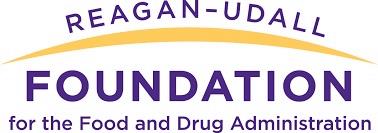 The panel through interviews and evaluation of organizational charts demonstrated that food is a stepchild of the FDA compared to drugs and medical devices. The report noted that the Human Foods Program has “contributed to a culture of indecisiveness and inaction and created disincentives for collaboration”. In 2019, the FDA organizational structure was modified resulting in the elimination of the position of the Deputy Commissioner for Foods and Veterinary Medicine. The respective heads of the Center for Food Safety and Applied Science, the Office of Food Policy and Response and the Office of Regulatory Affairs all were reassigned to report directly to the Commissioner of the FDA in addition to other functions relating to drugs. This diluted the effectiveness of the Human Foods Program. In the absence of a clear chain of command, functions within the FDA operated without consultation, resulting in duplication and omissions. The report specifically cited the infant formula crisis that emerged in 2021 as an example of structural and organizational deficiency. The report recommended the restoration of a Deputy Commissioner for food-related matters, reporting directly to the Commissioner and coordinating relevant working groups. The panel through interviews and evaluation of organizational charts demonstrated that food is a stepchild of the FDA compared to drugs and medical devices. The report noted that the Human Foods Program has “contributed to a culture of indecisiveness and inaction and created disincentives for collaboration”. In 2019, the FDA organizational structure was modified resulting in the elimination of the position of the Deputy Commissioner for Foods and Veterinary Medicine. The respective heads of the Center for Food Safety and Applied Science, the Office of Food Policy and Response and the Office of Regulatory Affairs all were reassigned to report directly to the Commissioner of the FDA in addition to other functions relating to drugs. This diluted the effectiveness of the Human Foods Program. In the absence of a clear chain of command, functions within the FDA operated without consultation, resulting in duplication and omissions. The report specifically cited the infant formula crisis that emerged in 2021 as an example of structural and organizational deficiency. The report recommended the restoration of a Deputy Commissioner for food-related matters, reporting directly to the Commissioner and coordinating relevant working groups.
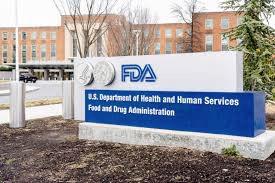 Neglect of food-related responsibilities is evidence by the 240 vacancies in the Human Foods Program and the fact that the Center for Food Safety and Applied Nutrition currently has the same number of full-time employees as were employed in 1978. Deficiencies in the organizational structure were obviously exacerbated by interpersonal factors as detailed in a 2022 investigative report on the FDA and its activities with respect to food. Neglect of food-related responsibilities is evidence by the 240 vacancies in the Human Foods Program and the fact that the Center for Food Safety and Applied Nutrition currently has the same number of full-time employees as were employed in 1978. Deficiencies in the organizational structure were obviously exacerbated by interpersonal factors as detailed in a 2022 investigative report on the FDA and its activities with respect to food.
The Reagan-Udall Foundation report recommended that funding should be increased to hire suitably qualified, trained and able scientists and administrators who command salaries in industry and academia beyond the scale offered by the FDA. The report also recommended that the FDA has been reticent to exercise its recall authority, leading to delays in removing potentially harmful products from supply chains.
Response to the report has been generally favorable, especially with regard to Commissioner Califf who initiated the process. Brian Ronholm, Director for Food Policy at Consumer Reports, noted, “We cannot afford to tolerate the status quo and let this moment go by without adopting fundamental changes to improve the ability of FDA to protect the public and ensure our food is safe.” Outgoing House Appropriations Chair, Rosa DeLauro (D-CT) urged a positive response by Commissioner Califf noting, “FDA needs a change, and the Reagan-Udall Report is a formal acknowledgement of the issues plaguing the food program that begins to chart that path forward.”
In response to the report, Commissioner Califf stated, “The Agency is committed to providing a public update on the new vision at the end of January 2023.” He added, “I will closely oversee the Human Foods Program until a determination is made on how we will strengthen and modernize the Program.” He concluded by stating, “I am fully committed to building a world-class Human Foods Program that works best for the public, our stakeholders and our employees and that will allow us to effectively deliver on our mission.
One of the options offered in the report comprised separation of the food responsibilities from the FDA and assigning responsibility to a dedicated food safety agency as in the EU. It is this commentator’s belief that ultimately this radical departure will occur, especially if the recommended changes in structure and additional funding do not result in a more proactive and effective outcome. Any serious crisis to emerge relating to either domestic or imported food may energize Congress and generate a groundswell for a radical but ultimately effective transition
It is hoped that real progress will follow the Reagan-Udall Foundation report and that subsequent action will rise to a level higher than moving the deck chairs on the Titanic.”

|
COVID Upsurge in China a World Threat
|
01/05/2023 |
|
COVID is now regarded as out of control in the People’s Republic of China. Following the precipitous ending of an intended “Zero COVID” policy
imposed by the communist government of China all pretense of suppression was abandoned following the 20th Congress and the subsequent street demonstrations. Based on hubris and contrary to basic epidemiologic principles, the central government attempted to eliminate COVID infection by a 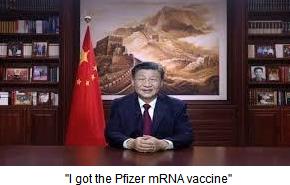 process of mass screening with localized and, in some cases, metropolitan shut-ins and quarantines. This approach, coupled with an obviously ineffective vaccine has resulted in a high proportion of the population being susceptible to COVID. The government of China squandered two years during which they could have deployed an mRNA vaccine, expanded hospital facilities and established an inventory of effective anti-viral drugs It is estimated from a variety of models that half of the population of China will be exposed to COVID within the first quarter of 2023 and that fatalities may exceed 1.5 million inn three months with the elderly most affected. process of mass screening with localized and, in some cases, metropolitan shut-ins and quarantines. This approach, coupled with an obviously ineffective vaccine has resulted in a high proportion of the population being susceptible to COVID. The government of China squandered two years during which they could have deployed an mRNA vaccine, expanded hospital facilities and established an inventory of effective anti-viral drugs It is estimated from a variety of models that half of the population of China will be exposed to COVID within the first quarter of 2023 and that fatalities may exceed 1.5 million inn three months with the elderly most affected.
True to form, the Government is no longer releasing statistics, but it is estimated that during December, as many 250 million of the Chinese population of 1.4 billion were exposed with fatalities running at over 10,000 per day. The inactivated vaccine deployed in China in a two-dose sequence provides only short-term protection against severe clinical signs. The vaccine is based on the 2020 Wuhan strain and is relatively ineffective against the predominant circulating viruses. These include BA.5.2, a subvariant of the BA.5 Omicron sub-variant and strain BF7 also in circulation. Both these viruses have emerged in Japan, although the level of protection afforded by mRNA vaccines and personal protective measures should reduce the impact of these variants.
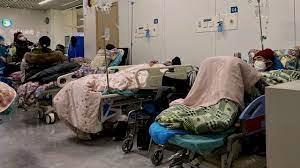 Both strains preceded the emergence of XBB.1.5 that has been identified in 29 nations. This Omicron variant was responsible for 41 percent of new cases in the U.S. and 70 percent in the Northeast during the last week in December 2022. This strain is highly efficient at binding human ACE receptor cells and is immune evasive. This virus is contributing to the rise in cases in the U.S. requiring hospitalization, averaging 6,500 per day for the week ending January 4th 2023. The strain is responsible for most cases in India where it emerged, and has also extended to other Asian nations, including Singapore. Both strains preceded the emergence of XBB.1.5 that has been identified in 29 nations. This Omicron variant was responsible for 41 percent of new cases in the U.S. and 70 percent in the Northeast during the last week in December 2022. This strain is highly efficient at binding human ACE receptor cells and is immune evasive. This virus is contributing to the rise in cases in the U.S. requiring hospitalization, averaging 6,500 per day for the week ending January 4th 2023. The strain is responsible for most cases in India where it emerged, and has also extended to other Asian nations, including Singapore.
The situation in China has implications for the rest of the world. The gross mishandling of COVID with resulting exponential explosion of new cases creates a situation favoring the emergence of new variants, some of which may be more pathogenic with potentially lower protection provided by current mRNA vaccines.
It is questioned whether the approach by the communist government of China was a cynical attempt to suppress infection prior to and during the 20th National Conference that reappointed President Xi to an unprecedented third term and possibly life tenure. Rapid transition from Draconian restrictions to lassiz faire will cost the nation dearly in lives, expenditure on health support and a loss in productivity. Obviously, disruption in manufacturing output will depress GNP and may create a new wave of supply chain problems for the U.S and the E.U.
 If the world and specifically, the WHO, were dealing with a rational government, appropriate control measures could be implemented on a global basis. In the absence of epidemiologic data, disregard of transparency verging on obfuscation, international health authorities are operating in uncharted territory. Responding to the inevitability of dissemination of variant strains, many nations imposed restrictions on air travel from China. The simple expedient of demanding COVID Rapid Immunoassay tests before boarding international flights is ineffective. A few individuals on a long-haul journey will result in extremely high infection rates on landing as evidenced by a 40 percent positive test result from a planeload of tourists from China landing at Milan Airport, Italy. Post-arrival testing is more effective, but quarantine facilities will be required to accommodate those positive and their contacts. Outright bans on travel are ameliorative but those who are desperate will find ways to evade regulations. Experience has shown that by the time travel restrictions are imposed, variant strains have already emerged in nations that establish programs of pre-departure testing. If the world and specifically, the WHO, were dealing with a rational government, appropriate control measures could be implemented on a global basis. In the absence of epidemiologic data, disregard of transparency verging on obfuscation, international health authorities are operating in uncharted territory. Responding to the inevitability of dissemination of variant strains, many nations imposed restrictions on air travel from China. The simple expedient of demanding COVID Rapid Immunoassay tests before boarding international flights is ineffective. A few individuals on a long-haul journey will result in extremely high infection rates on landing as evidenced by a 40 percent positive test result from a planeload of tourists from China landing at Milan Airport, Italy. Post-arrival testing is more effective, but quarantine facilities will be required to accommodate those positive and their contacts. Outright bans on travel are ameliorative but those who are desperate will find ways to evade regulations. Experience has shown that by the time travel restrictions are imposed, variant strains have already emerged in nations that establish programs of pre-departure testing.
Although we were looking forward to an end to COVID with required masking and other restrictions, it would appear that we are not by any measure out of the woods. Common sense and basic preventive measures will have to be maintained for the current year. Fortunately, our mRNA vaccines can be modified over the short term to produce more effective and specific protection provided as boosters. These are only effective on the personal and community levels if administered according to public health recommendations.
We must have trust in our public health advisors, extend support to the Centers for Disease Control and Prevention and follow advice from medical specialists based on sound science. Above all, we should reject speculation and politically tainted and anti-science misinformation circulating on the internet if we are going to come to terms with and coexist with this disease.

|
Time to Consider Vaccines to Control Avian Influenza
|
12/24/2022 |
|
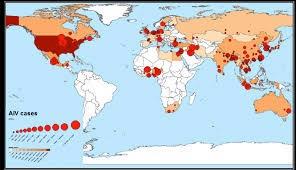 The European Food Safety Agency recently updated statistics relating to outbreaks of Highly Pathogenic Avian Influenza (HPAI) in Europe. From October 2021 through September 2022, a total of 2,520 outbreaks have occurred in poultry with close to 4,000 detections in wild birds. To date, 50 million birds have been depopulated in an attempt to eradicate the infection. France recorded the highest number of outbreaks involving regions where pasture management of ducks, geese and chickens is followed. Despite mandatory housing requirements, HPAI has continued with a surge in cases reported following the fall southward migration of free-living birds. As with the U.S., there is evidence that domestic birds of diverse families are susceptible to HPAI strain H5N1, but it is unclear whether clinically unaffected birds can serve as disseminators of the virus and there is no reliable data on the duration of shedding. Again, in common with the U.S. and Canada in 2022, there was no period of quiescence in summer in the E.U. with sporadic outbreaks reported, consistent with spread of the virus by domestic, non-migratory birds. The European Food Safety Agency recently updated statistics relating to outbreaks of Highly Pathogenic Avian Influenza (HPAI) in Europe. From October 2021 through September 2022, a total of 2,520 outbreaks have occurred in poultry with close to 4,000 detections in wild birds. To date, 50 million birds have been depopulated in an attempt to eradicate the infection. France recorded the highest number of outbreaks involving regions where pasture management of ducks, geese and chickens is followed. Despite mandatory housing requirements, HPAI has continued with a surge in cases reported following the fall southward migration of free-living birds. As with the U.S., there is evidence that domestic birds of diverse families are susceptible to HPAI strain H5N1, but it is unclear whether clinically unaffected birds can serve as disseminators of the virus and there is no reliable data on the duration of shedding. Again, in common with the U.S. and Canada in 2022, there was no period of quiescence in summer in the E.U. with sporadic outbreaks reported, consistent with spread of the virus by domestic, non-migratory birds.
The European Commission has requested the European Food Safety Agency to determine the availability and efficacy of vaccines against Highly Pathogenic Avian Influenza for poultry and to develop control strategies incorporating vaccination. The Wageningen Institute in Holland has initiated a trial to determine the level and duration of protection against clinical signs and shedding in vaccinated chickens and ducks using commercially available and experimental vaccines. Currently, vaccines are deployed in Egypt, and presumably other North African nations, and in Mexico.
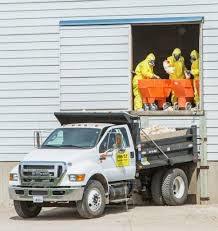 Vaccination against HPAI was the subject of an international conference convened by the International Alliance for Biological Standardization held in Paris, France on October 25th and 26th. This meeting considered a number of technical issues relating to vaccination but concentrated on trade and regulatory aspects that are advanced by opponents of vaccination. Vaccination against HPAI was the subject of an international conference convened by the International Alliance for Biological Standardization held in Paris, France on October 25th and 26th. This meeting considered a number of technical issues relating to vaccination but concentrated on trade and regulatory aspects that are advanced by opponents of vaccination.
Given the depopulation of over 50 million commercial poultry in the U.S. since the beginning of the 2022 epornitic, confirmation of the presence of H5N1 HPAI virus in 45 states and continuing recovery from free-living birds with sporadic outbreaks in commercial poultry, the classification of HPAI in the U.S. as an “exotic” disease must be questioned. A further complication is the growing realization based on circumstantial and anecdotal reports that HPAI may be transmitted over short to intermediate distances by the aerogenous route as has been demonstrated with Newcastle disease. This mode of infection would under practical conditions negate currently applied structural and operational biosecurity, suggesting alternatives, including vaccination to protect poultry.
It is impossible to eradicate a highly infectious endemic disease over the short or even intermediate term and accordingly, the USDA is faced with the options of either running out of money and resources or ultimately birds to depopulate. The situation in Weld County, Colorado, with five outbreaks among four large egg-production complexes in six months is a case in point. Essentially the USDA-APHIS is approaching the current epornitic with the same mindset as the 1994 outbreaks in Pennsylvania and is following a whack-a-mole strategy reliant on Commodity Credit Corporation funding.
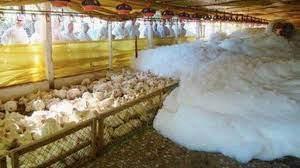
The time has come to seriously consider strategic application of vaccination as a component of control. If we regard avian influenza as the “Newcastle disease of the 2020s” the approach to control and prevention is self-evident. We have universal vaccination against this previously catastrophic infection, trade continues and the disease is not a restraint to production except in some Scandinavian nations where vaccination is disallowed.
Adoption of vaccination to develop immune populations eligible for trade is feasible based on improved diagnostic capability to certify flocks as free of infection. Advances in vaccination technology will hopefully provide protection through automated or mass administration, raising regional or national flock immunity above the outbreak threshold. If vaccination is to be adopted as a co-strategy with existing control measures it will be necessary to modify outdated restrictions that ignore the realities of extensive worldwide endemic HPAI infection.
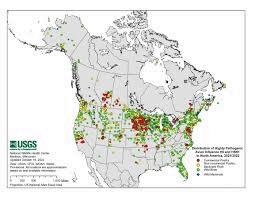 It is evident that opposition to vaccination incorporates irrelevant or spurious claims that are dated in the context of scientific advances and the reality of the ongoing World pandemic of H5N1 Avian Influenza. We need more field and molecular epidemiologic data on the mode of transmission of HPAI together with evidence that specific vaccines and their deployment will be effective in suppressing mortality and shedding. Above all we will require unanimity among segments of the U.S. poultry industry that effective vaccines will be commercially beneficial. It is evident that opposition to vaccination incorporates irrelevant or spurious claims that are dated in the context of scientific advances and the reality of the ongoing World pandemic of H5N1 Avian Influenza. We need more field and molecular epidemiologic data on the mode of transmission of HPAI together with evidence that specific vaccines and their deployment will be effective in suppressing mortality and shedding. Above all we will require unanimity among segments of the U.S. poultry industry that effective vaccines will be commercially beneficial.

|
Epidemiologic Study of the Ongoing 2022 H5N1 Epornitic is Long Overdue
|
12/15/2022 |
|
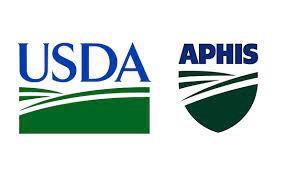 Recently, Dr. Rosemary Sifford, Chief Veterinary Officer for the USDA Animal and Plant Health Inspection Service (APHIS), noted that Veterinary Services is preparing a risk assessment report on highly pathogenic avian influenza (HPAI). This document is intended to guide producers to implement meaningful practices to exclude infection from their flocks during the ongoing HPAI epornitic. Dr. Sifford stated, “We are in the midst of doing an analysis on all the data we’ve collected on the affected facilities to make some statement about the level of risk and what are factors that create a higher level of risk.” The Agency intends to release a report in 2023. Recently, Dr. Rosemary Sifford, Chief Veterinary Officer for the USDA Animal and Plant Health Inspection Service (APHIS), noted that Veterinary Services is preparing a risk assessment report on highly pathogenic avian influenza (HPAI). This document is intended to guide producers to implement meaningful practices to exclude infection from their flocks during the ongoing HPAI epornitic. Dr. Sifford stated, “We are in the midst of doing an analysis on all the data we’ve collected on the affected facilities to make some statement about the level of risk and what are factors that create a higher level of risk.” The Agency intends to release a report in 2023.
To date, the involvement of APHIS has been totally reactive to outbreaks and the Agency has responded with the depletion of close to 9 million turkeys on 207 farms in 7 states and 42.3 million hens at a total of 33 locations. Ninety-five percent of the losses in the egg industry have occurred on 18 large complexes with flocks ranging in population from 0.5 to 3 million hens.

Dr. Rosemay Sifford |
APHIS has apparently collected data relating to field and molecular epidemiology from the initial cases extending from February through March 2022. This data set would have comprised seven large in-line complexes ranging from 1.2 to 5.0 million hens requiring depletion of 18 million birds. Adequate time has passed to have produced and circulated an interim report providing firm recommendations to rectify any obvious deviations from accepted biosecurity. This may have prevented some outbreaks on 14 subsequent complexes requiring depletion amounting to an additional 25 million hens. A preliminary opinion with guidance during mid-April 2022 was not an unrealistic goal and would have been far more valuable than a more detailed and comprehensive report promised at some time in 2023.
In reviewing available releases, APHIS failed to provide a meaningful evaluation of risk factors contributing to the 2015 outbreak. It is feared that the promised 2023 version will be more (or less) of the same despite advances in molecular epidemiology. Given the prevailing APHIS mindset and neglect of urgency or a consideration of the financial consequences of HPAI the industry can expect no better guidance than was provided following the 2015 epornitic.
Dr. Sifford and her subordinates have failed in their primary responsibility of protecting the Nation’s flocks through application of available knowledge and experience to prevent disease. The cost of outbreaks to the public sector including depopulation and indemnity to flock owners is immense, requiring consecutive tranches of funding from the Commodity Credit Corporation, the USDA bottomless piggy bank. Costs to consumers in the form of triple-digit percent retail increase in prices during a time of inflation have added substantially to the financial impact of Avian Influenza.
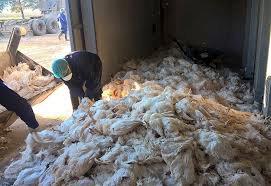
The need for a preliminary epidemiologic evaluation is evidenced by the fact that outbreaks have occurred on egg production complexes with apparently high standards of both structural and operational biosecurity as followed by the industry. This may imply that there are mechanisms of transmission that have yet to be identified. If APHIS does not have the imagination, determination, resources or personnel to conduct the required field and molecular studies then these should be outsourced to Land Grant universities or the CDC with APHIS coordinating studies among federal and state agencies and academia. Conducting a telephone survey as contemplated, is a simple and inexpensive, but totally inadequate approach to defining the epidemiology of the 2022 HPAI epornitic.
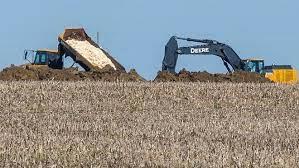 If it emerges from a structured investigation that current structural and operational biosecurity procedures, if followed, are inadequate to prevent introduction of infection then alternative and additional modalities are required. If deviations from accepted biosecurity (“make-belief” or “biosecurity theatre”) are responsible for outbreaks, as implied in the APHIS statement by Dr. Sifford then specific recommendations should be re-emphasized with compliance linked to indemnity. The industry needs to be re-informed of risk factors and deficiencies in order that corrective action can be taken. If however the epidemiologic investigation of approximately 15 outbreaks occurring on in-line egg-production complexes suggests previously unrealized areas of vulnerability, the industry needs to know of these novel risk factors to enhance protection and reduce the probability of exposure. If it emerges from a structured investigation that current structural and operational biosecurity procedures, if followed, are inadequate to prevent introduction of infection then alternative and additional modalities are required. If deviations from accepted biosecurity (“make-belief” or “biosecurity theatre”) are responsible for outbreaks, as implied in the APHIS statement by Dr. Sifford then specific recommendations should be re-emphasized with compliance linked to indemnity. The industry needs to be re-informed of risk factors and deficiencies in order that corrective action can be taken. If however the epidemiologic investigation of approximately 15 outbreaks occurring on in-line egg-production complexes suggests previously unrealized areas of vulnerability, the industry needs to know of these novel risk factors to enhance protection and reduce the probability of exposure.
Immediate questions that arise include:
- Can HPAI be transmitted via the aerogenous route? If so, over what distance? Under what climatic conditions, including wind velocity, temperature and humidity?
- Are domestic birds, other than migratory waterfowl and small mammals capable of serving as the reservoirs and disseminators of H5N1 avian influenza virus? If so, what species are involved and the duration of their shedding?
- Under what conditions does H5N1 virus remain viable on soil and impervious surfaces with and without exposure to sunlight or extremes of weather?
- What characteristics of the H5N1 strain contribute to greater infectivity, broader host range and persistence in the environment?
- What deficiencies occurred in accepted standard structural and operational biosecurity on affected complexes with an evaluation of their contribution to outbreaks?
- Why have so few small cage free contract egg producers been affected?
- Why have so many turkey farms been infected but the broiler industry has remained unscathed?
- Is APHIS attempting to eradicate (“stamp out”) an endemic infection? If so alternative approaches including vaccination should be considered –but that is another Editorial!
Collectively, USDA-APHIS, ARS and NVSL together with Land Grant colleges, universities, in cooperation with the biopharmaceutical industry have made great strides in the rapid diagnosis of avian influenza. Based on appropriate planning by APHIS, the response to outbreaks and cooperation between state and federal agencies has been expedited since the 2015 outbreak, possibly limiting spread of infection.
Given the resurgence in outbreaks of HPAI, APHIS is urged to expedite a review of data gathered and to concentrate on factors leading to outbreaks on the 15 largest in-line complexes in order to protect the remainder of the industry. This should be a top priority and cannot be deferred until 2023.
As with any Editorial in EGG-NEWS, interested subscribers are invited to provide supporting or contrary views and opinions for review and publication. A response by APHIS would be especially welcome.
Simon M. Shane

|
China Faces COVID Dilemma
|
12/11/2022 |
|
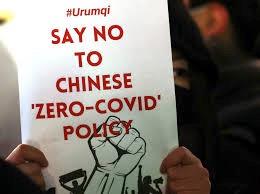 After three years of stringent restrictions including quarantines, lockdowns, enforced regular testing, all in pursuit of a “zero-COVID” policy, the Chinese Communist Party is forced to reconsider their entire approach to suppressing the infection. Although street protests have been suppressed, the Party recognizes the enmity towards prevailing COVID policy among the 1.4 billion population. Perhaps viewing the ongoing, televised World Football Cup competition in Qatar has brought home to citizens that China is out of step with the rest of the world. After three years of stringent restrictions including quarantines, lockdowns, enforced regular testing, all in pursuit of a “zero-COVID” policy, the Chinese Communist Party is forced to reconsider their entire approach to suppressing the infection. Although street protests have been suppressed, the Party recognizes the enmity towards prevailing COVID policy among the 1.4 billion population. Perhaps viewing the ongoing, televised World Football Cup competition in Qatar has brought home to citizens that China is out of step with the rest of the world.
China has relaxed certain restrictions, including evidence of recent negative testing to use public transport. Lifting of restrictions is uncoordinated, since according to reports, it is still necessary to demonstrate a recent negative test result to enter some public buildings and stores. Authorities are now allowing those testing positive to isolate at home instead of enforced removal to quarantine centers.

"Big Whites"enforce COVID restrictions |
The susceptibility of the population to COVID is the major barrier to effectively relaxing controls. China has relied on administration of their domestic CoronaVac inactivated vaccine. Although moderately effective in preventing severe clinical outcomes, the vaccine requires three doses and has a limited duration of protection compared to mRNA vaccines as used in the Americas and the E.U. Experience in Hong Kong demonstrated the superiority of the Pfizer-BioNTech mRNA vaccine but high levels of infection with severe clinical outcomes due to inadequate vaccination rates were recorded, especially among the elderly.
Epidemiologic models suggest an extensive outbreak of COVID should current restrictions be relaxed. Over a six-month period, it is predicted that there could be 112 million symptomatic cases, 2.7 million admissions to intensive care and 1.6 million fatalities. At peak demand, ICU cases would exceed capacity by a factor of 15. A late November study conducted by Airfinity predicted between 160 and 280 million cases and 1.3 to 2.1 million deaths over an 80-day period.
Officials in China blocked a 2021 joint venture initiative between BioNTech and the Fosun Pharmaceutical Company to manufacture mRNA vaccine. Recognizing the deficiencies of the CoronaVac inactivated product both in China and in nations where the product was either sold or donated, work on a domestic mRNA vaccine was initiated. This belated activity of reinventing the wheel will ensure that there will not be any local product available for distribution in the immediate future.

The China Monolith |
China has evidently painted itself into a corner by deploying an ineffective vaccine and maintaining extreme and impractical measures to achieve “zero COVID” Given that the economic impact of the restrictions are now evident in a declining GDP and that public dissatisfaction is growing, a reversal in policy is imminent. It is predicted that vaccination will be intensified in areas considered essential for economic activity and the Communist Party is now prepared to accept the inevitable avalanche of COVID cases. Naturally the Party will find scapegoats to be blamed for the debacle, saving the image of President Xi, now secure in a third term with hand-picked supporters.
Lest we indulge in Schadenfreude it should be remembered that the U.S. has recorded 1.1 million deaths and 99 million diagnosed cases in a population one quarter that of China since the commencement of the outbreak in 2020. At least 70 percent of losses were avoidable after introduction of the two mRNA vaccines in 2021. We are still loosing 300 to 400 of our fellow citizens each day, mainly among the elderly and those with predisposing conditions. The prevailing “it’s over” sentiment is exemplified by the 13 percent uptake of booster vaccines by those eligible. This ignores the reality of seasonal influenza and the rigors of approaching winter.
The attempts to control COVID in Sweden and China were both incorrect but the U.S. could avert inevitable losses through more extensive vaccination and commonsense disease prevention procedures.

|
Industrial Greenhouse Gas Emissions Involve More than Carbon Dioxide
|
11/26/2022 |
|
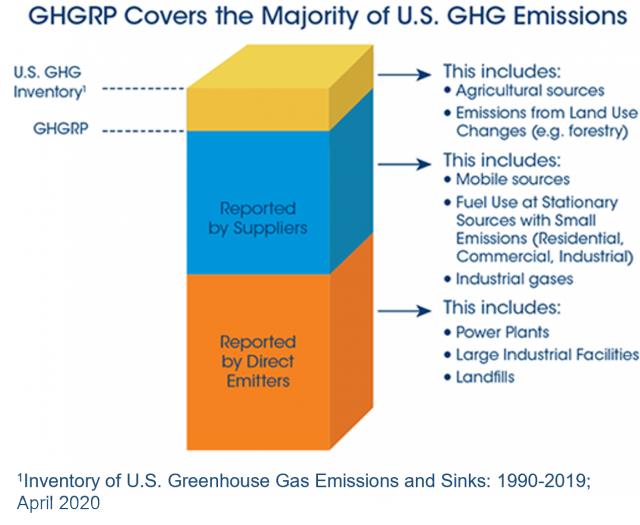 According to self-reported emissions data provided to the U.S. Environmental Protection Agency (EPA), greenhouse gases released from major industrial sources increased by 4.1 percent in 2021, compared to the previous year. Total emissions, representing 2.7 billion metric tons of carbon dioxide equivalent, were generated by 8,100 required reporting locations producing more than 25,000 metric tons of carbon dioxide equivalent annually. It is estimated that greenhouse gas emissions reported under the obligatory reporting program, represented half of all U.S. releases. According to self-reported emissions data provided to the U.S. Environmental Protection Agency (EPA), greenhouse gases released from major industrial sources increased by 4.1 percent in 2021, compared to the previous year. Total emissions, representing 2.7 billion metric tons of carbon dioxide equivalent, were generated by 8,100 required reporting locations producing more than 25,000 metric tons of carbon dioxide equivalent annually. It is estimated that greenhouse gas emissions reported under the obligatory reporting program, represented half of all U.S. releases.
Climate News recently highlighted the largest emitters of carbon dioxide and other potent greenhouse gases:-
- The James H. Miller coal-fired plant in Quinton, AL, operated by the Southern Company, emitted 20.8 million metric tons of carbon dioxide in 2021. The utility plans on reducing coal-fired generation by 80 percent by 2028, although the James H. Miller plant will continue in operation albeit with some form of abatement.
 The Bailey Mine operated by Consol Energy, in southwest Pennsylvania, released 90,000 tons of methane in 2021. This quantity of greenhouse gas is equivalent to the pollution produced by 1.6 million automobiles. Landfills also contributed to methane emission with a Sampson County, NC. location operated by GLF Environmental responsible for release of 1,600 million metric tons of methane, annually. The Bailey Mine operated by Consol Energy, in southwest Pennsylvania, released 90,000 tons of methane in 2021. This quantity of greenhouse gas is equivalent to the pollution produced by 1.6 million automobiles. Landfills also contributed to methane emission with a Sampson County, NC. location operated by GLF Environmental responsible for release of 1,600 million metric tons of methane, annually.
- Nitrous oxide is released by numerous chemical plants synthesizing plastics and industrial chemicals. The Ascend Performance Materials plant in Cantonment, FL., released 24,000 metric tons of nitrous oxide from the production of adipic acid. This is an exceptional quantity compared to other U.S. chemical plants. On an equivalent weight basis, nitrous oxide is 250 times more damaging than carbon dioxide and the nitrous oxide emission from the plant was equivalent to the release from 1.5 million automobiles. Similar plants in the E.U. and the U.S. have installed abatement technology to reduce nitrous oxide emissions. The Company plans on reducing release of nitrous oxide by 50 percent by 2025 and plans on reducing greenhouse gas emissions by 80 percent by 2030.
- Hydrofluorocarbons are 15,000 times more potent than carbon dioxide as a greenhouse gas. The Chemours plant in Louisville, KY., released 180 metric tons of HFC-23, equivalent to the annual emissions of 550,000 automobiles. The company is now installing equipment that will abate release in accordance with a 2021 EPA directive.
- Sulfur hexafluoride (SF6) is 25,000 tons more damaging to the atmosphere than an equivalent quantity of carbon dioxide. The gas is used in high voltage circuit breakers and installations, including American Electric Power released 18 tons of SF6 across ten states, equivalent to the greenhouse gas emissions of 100,000 automobiles. Currently, 88 U.S. utilities are following an EPA program to reduce emissions, although Duke Energy, with the highest leak rate of 6 percent annually, is not participating in the program and is apparently “working to learn more about the technology and reconsidering involvement” according to a spokesperson cited by Climate News.
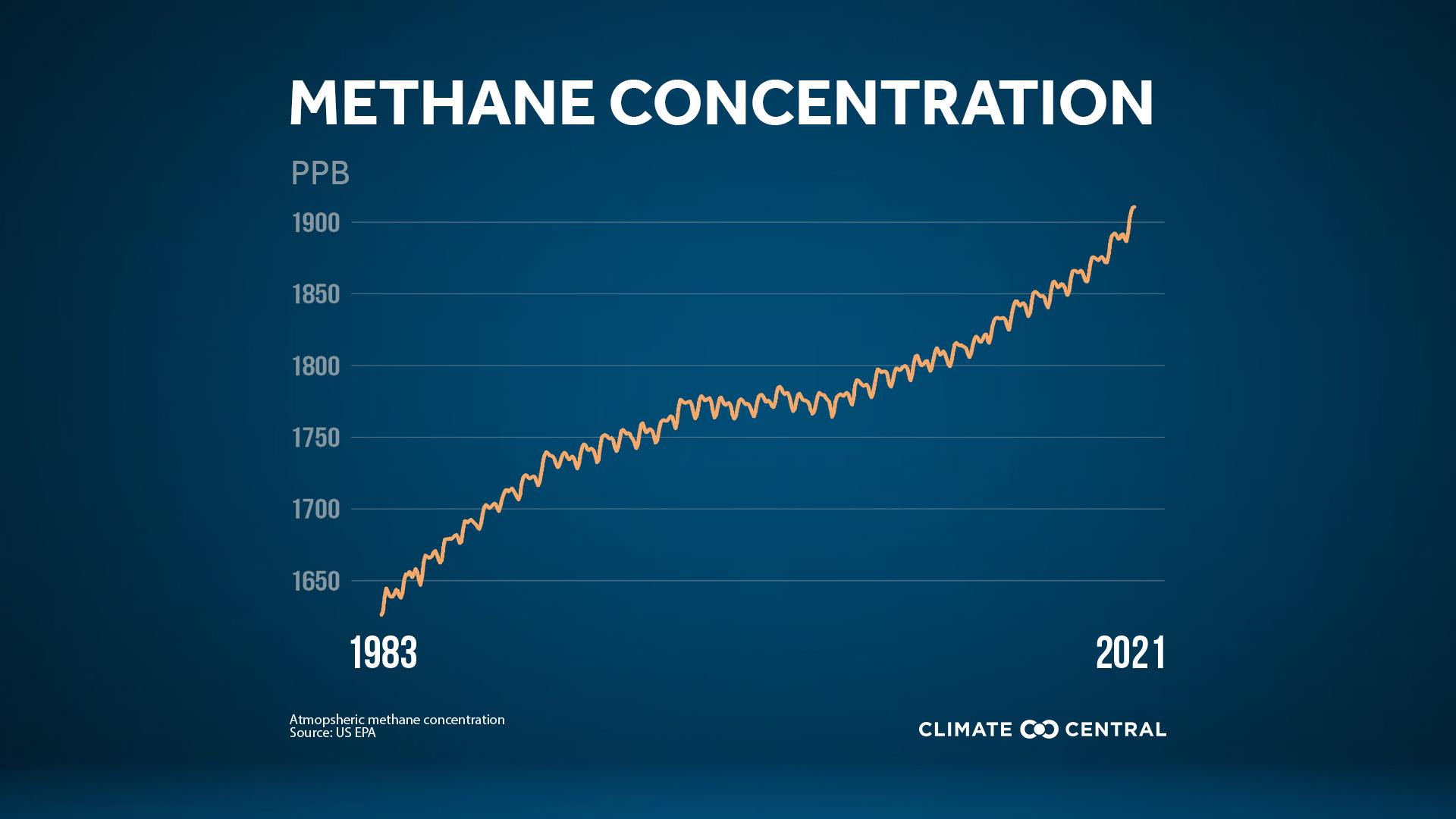
- Methane released from gas storage is almost completely preventable. The Petal Storage station in Petal, MS., released 2,500 tons of methane in 2021, approximately half the quantity generated in 2020. Affordable Pipeline Partners, the operator of the relatively small facility, is actively but belatedly working to reduce methane release. (more information on this facility can be retrieved by entering “Petal” in the SEARCH block)
Intensive livestock agriculture is frequently blamed by environmental activists for release of methane from dairies, hog farms, feed lots and as a result of improper disposal of animal waste. The Administration has identified sources of methane release and will intensify action to reduce emissions by the petrochemical industry and from landfills and mines.

|
Relevance of Some Welfare Research Questioned
|
11/23/2022 |
|
Editorial
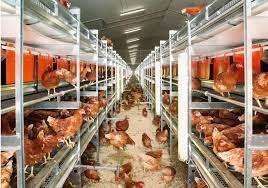 During a recent regional meeting, a newly minted assistant professor presented data relating to previous doctoral research conducted at a leading West Coast university. This study was intended to investigate the behavior of pullets transferred to aviaries with respect to their ability and inclination to ascend the three tiers of a module. Pullets were reared in either an aviary structure or in a pen with a raised perch or on litter. The trial confirmed the intuitive reality that pullets reared in an aviary showed greater capability of ascending the tiers of the laying aviary compared too floor-reared pullets. It is axiomatic, but not always followed, that pullets should be reared in an aviary compatible with the system to which they will be transferred. During a recent regional meeting, a newly minted assistant professor presented data relating to previous doctoral research conducted at a leading West Coast university. This study was intended to investigate the behavior of pullets transferred to aviaries with respect to their ability and inclination to ascend the three tiers of a module. Pullets were reared in either an aviary structure or in a pen with a raised perch or on litter. The trial confirmed the intuitive reality that pullets reared in an aviary showed greater capability of ascending the tiers of the laying aviary compared too floor-reared pullets. It is axiomatic, but not always followed, that pullets should be reared in an aviary compatible with the system to which they will be transferred.
What represented a concern is the fact that only a limited number of hens were the subject of the trial coupled with the extremely limited length of the experimental aviary installation. The trial involved direct transfer from either of the rearing systems to the short lengths of laying aviary modules. This aspect of the experimental design ignored the reality that under commercial practice, pullets are confined for a “training period” of approximately three weeks to acclimate to aviary modules. This may have invalidated the obvious conclusion from the trial that deviated from industry practice.
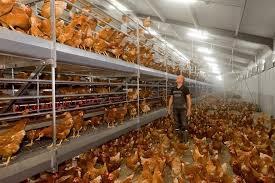 It is questioned whether university trials conducted on a small scale are capable of reflecting flock size or behavior under commercial conditions. Extrapolation from limited scale trials frequently of short duration, and often with an injection of subjective sentiment, forms the basis of recommendations regarding flock welfare. These include standards for area requirements, perches, feeder-space and the allowance and position of drinker nipples. Standards adopted and enforced by animal welfare certifying agencies are strongly influenced by the research conducted in both E.U. and the U.S. institutions. Advisory panels in the U.S. frequently comprise the same research scientists who are extending their research, some of which may be of questionable validity, into recommendations that may represent millions of dollars in incremental capital expenditure. It is questioned whether university trials conducted on a small scale are capable of reflecting flock size or behavior under commercial conditions. Extrapolation from limited scale trials frequently of short duration, and often with an injection of subjective sentiment, forms the basis of recommendations regarding flock welfare. These include standards for area requirements, perches, feeder-space and the allowance and position of drinker nipples. Standards adopted and enforced by animal welfare certifying agencies are strongly influenced by the research conducted in both E.U. and the U.S. institutions. Advisory panels in the U.S. frequently comprise the same research scientists who are extending their research, some of which may be of questionable validity, into recommendations that may represent millions of dollars in incremental capital expenditure.
The performance of small numbers of chickens under experimental conditions does not necessarily conform to the behavior of commercial flocks. Have we been misled by conclusions from inappropriate experiments? Are recommendations really valid in the context of commercial experience? Are subjective safety margins included?
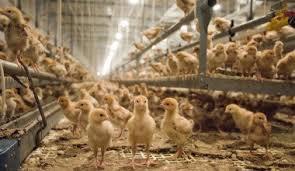 It is noted that the scientific panels generating welfare standards are composed of academics with minimal contribution from suitably qualified poultry health professionals involved in industry. There is a paucity of published work on the economic impact of standards with respect to capital cost of housing and installations. Initial costs conforming to standards for flock density and required enrichments impose fixed costs of production, including interest, fixed maintenance and depreciation. The question arises as to how to design experiments that will provide realistic results that actually contribute to enhanced welfare and productivity. It is noted that the scientific panels generating welfare standards are composed of academics with minimal contribution from suitably qualified poultry health professionals involved in industry. There is a paucity of published work on the economic impact of standards with respect to capital cost of housing and installations. Initial costs conforming to standards for flock density and required enrichments impose fixed costs of production, including interest, fixed maintenance and depreciation. The question arises as to how to design experiments that will provide realistic results that actually contribute to enhanced welfare and productivity.
Flock performance is almost entirely neglected as a measure of welfare, although it is intuitively accepted that flocks subjected to suboptimal housing and management demonstrate higher mortality and lower egg production than flocks held under conditions conducive to achieving genotype. It is acknowledged that small-scale experiments that are relatively inexpensive and easy to perform should form the basis of evaluating hypotheses relating to welfare. It is, however, necessary to validate preliminary results under commercial conditions, especially when recommendations and standards impose high fixed costs on producers. Frequently in a competitive environment cost cannot be passed on to consumers reducing the return on investment in a muli-million dollar in-line aviary complex. It is easy for academics to develop inappropriate or invalid standards that effectively represent spending someone else’s money. The situation is compounded by the fact that many of the same researchers serve in common on advisory boards for industry associations, welfare organizations and panels convened by major customer concerns. This creates a giant echo chamber with inadequate impartial and disinterested input.
The solution lies in greater cooperation among research scientists, equipment manufacturers and producers to establish realistic standards of housing and management that support quantifiable welfare, flock performance and financial return

|
Dissent at COP27 Meeting
|
11/22/2022 |
|
 The overriding conclusion from the COP27 Climate Conference that ended on November 19th is that limiting global warming to a target of 1.5 C (2.7 F) above pre-industrialization levels is unlikely to be achieved. The target was adopted at the COP21 Paris Conference and has been successively reaffirmed as recently as the 2021 COP26 Glasgow Climate Pact. The overriding conclusion from the COP27 Climate Conference that ended on November 19th is that limiting global warming to a target of 1.5 C (2.7 F) above pre-industrialization levels is unlikely to be achieved. The target was adopted at the COP21 Paris Conference and has been successively reaffirmed as recently as the 2021 COP26 Glasgow Climate Pact.
The Intergovernmental Panel on Climate Change reported on the effects of a rise of 2.0 C compared to the target 1.5 C. The difference of 0.5 C would represent severe impacts on the ecosystem with an additional half a billion people exposed to excessive heat, inundation of islands and low-lying coastal areas, an ice-free Arctic and a succession of floods, droughts and severe hurricanes. Recent studies have shown that global warming will severely decrease yields of corn, coffee and rice in areas traditionally devoted to these crops. Wheat and potatoes will, however, potentially increase in production as they are planted at higher latitudes. Increased rainfall could raise production of rice in India and West Africa. Equatorial nations including Brazil Indonesia and Nigeria would be most affected with sharply reduced corn and rice harvests.
 Concern over global warming and the need for international action emerged in 1992 with many nations accepting the United Nations Framework Convention on Climate Change. Notwithstanding a series of COP meetings, including the Paris Summit in 2015, there has been minimal progress on a worldwide basis to achieve the 1.5 C goal. It appears that if carbon dioxide emission cannot be reduced from power generation, cement and steel production temperatures will rise to 3.5 C above the pre-industrial level. Concern over global warming and the need for international action emerged in 1992 with many nations accepting the United Nations Framework Convention on Climate Change. Notwithstanding a series of COP meetings, including the Paris Summit in 2015, there has been minimal progress on a worldwide basis to achieve the 1.5 C goal. It appears that if carbon dioxide emission cannot be reduced from power generation, cement and steel production temperatures will rise to 3.5 C above the pre-industrial level.
Progress has been made in displacing coal to generate power using renewables and less environmentally destructive natural gas. Building design and construction materials have improved the energy efficiency of buildings. Some progress has been made in developing technology to remove carbon dioxide from the atmosphere. Agriculture could contribute to stabilization of the upward temperature gradient. The USDA, under the current Administration, has assigned $3.1 billion in a Partnership for Climate-Smart Commodities. It is questioned whether expending public funds on numerous, small projects will be beneficial either to the U.S. or to the world. USDA Secretary, Tom Vilsack, announced at COP27 that $300 million would be assigned to 65 projects focusing on small and underserved producers and minority-serving institutions, demographics favored by the current Administration and the Secretary.
 There has yet to be a final communique from COP27 but it is clear that sensitive issues including the 1.5 C target and continuing use of hydrocarbons to generate energy will be framed to the advantage of industrialized nations. These include the U.S. and China who have renewed negotiations on environmental rehabilitation. There was no commitment to phase out fossil fuels despite demands from developing nations impacted by global warming and rising sea levels. These countries will be provided with “loss and damage” grants to compensate for deprivation of land and productive capacity. There has yet to be a final communique from COP27 but it is clear that sensitive issues including the 1.5 C target and continuing use of hydrocarbons to generate energy will be framed to the advantage of industrialized nations. These include the U.S. and China who have renewed negotiations on environmental rehabilitation. There was no commitment to phase out fossil fuels despite demands from developing nations impacted by global warming and rising sea levels. These countries will be provided with “loss and damage” grants to compensate for deprivation of land and productive capacity.

|
USDA to Undertake Evaluation of HPAI in Turkeys-Too Little, Too Late!
|
11/10/2022 |
|
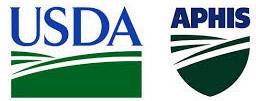 The USDA-APHIS has belatedly announced that it will conduct a survey on risk factors associated with outbreaks of highly pathogenic avian influenza (HPAI) on turkey farms. To date, 7.8 million turkeys have been depopulated on 180 farms in seven states. The USDA-APHIS has belatedly announced that it will conduct a survey on risk factors associated with outbreaks of highly pathogenic avian influenza (HPAI) on turkey farms. To date, 7.8 million turkeys have been depopulated on 180 farms in seven states.
The case-control survey is intended to identify differences in management practices and farm factors between units infected with HPAI and those that escaped the virus. It is intended that the telephone case-control survey will be conducted in November. It is questioned whether this exercise will contribute to meaningful recommendations on prevention. It would appear that the intended survey is a replay of the risk evaluation conducted in 2015 after extensive losses among turkey grow-out farms in Minnesota.
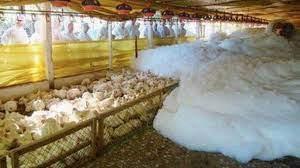 It is a matter of record that both EGG-NEWS and CHICK-NEWS have advocated for comprehensive and structured epidemiologic studies on risk factors leading to outbreaks of HPAI. The study on turkeys should have been conducted at least five million birds ago in April of this year when results might have contributed practical suggestions to protect flocks. It is a matter of record that both EGG-NEWS and CHICK-NEWS have advocated for comprehensive and structured epidemiologic studies on risk factors leading to outbreaks of HPAI. The study on turkeys should have been conducted at least five million birds ago in April of this year when results might have contributed practical suggestions to protect flocks.
It is questioned whether a telephone survey will provide the data required for an understanding of factors contributing to infection. Telephone surveys are cheap to conduct but are subject to selection bias. The approach lacks the ability to discern trends that would be noted by trained field investigators knowledgeable in both epidemiology and the norms and practices of the turkey industry. These include feed production and distribution, structural and operational biosecurity, farm ownership, work crews, source of poults and relationship of growers with processors.
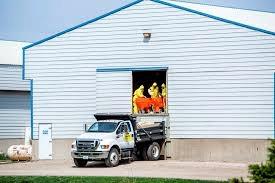 EGG-NEWS has criticized APHIS for inactivity in failing to conduct an epidemiologic study on the 16 complexes responsible for over 90 percent of the 36 million hens depleted as a result of HPAI during the 2020 epornitic. The weekly Egg Price And Inventory Reports posted on EGG-NEWS have included the statement, “It would have been helpful for APHIS epidemiologists to have reported on their findings from the epidemiologic questionnaires presumably completed following outbreaks on commercial farms and with special reference to the first seven large complexes affected through the end of March. The industry should have been advised of possible routes of infection and whether any obvious defects in structural or operational biosecurity contributed to outbreaks. The preliminary opinion with guidance during mid-April 2022 was not an unrealistic request and an interim report by early-May may have provided more value than a comprehensive document in 2023 or later.” EGG-NEWS has criticized APHIS for inactivity in failing to conduct an epidemiologic study on the 16 complexes responsible for over 90 percent of the 36 million hens depleted as a result of HPAI during the 2020 epornitic. The weekly Egg Price And Inventory Reports posted on EGG-NEWS have included the statement, “It would have been helpful for APHIS epidemiologists to have reported on their findings from the epidemiologic questionnaires presumably completed following outbreaks on commercial farms and with special reference to the first seven large complexes affected through the end of March. The industry should have been advised of possible routes of infection and whether any obvious defects in structural or operational biosecurity contributed to outbreaks. The preliminary opinion with guidance during mid-April 2022 was not an unrealistic request and an interim report by early-May may have provided more value than a comprehensive document in 2023 or later.”

Failure to have initiated detailed epidemiologic investigations involving field and laboratory studies displays a lack of imagination, initiative and diligence by APHIS. Failure to identify risk factors and modes of transmission of HPAI among the early outbreaks involving egg-production complexes through May, deprived the industry of valuable information that could have been applied to modify or intensify relevant preventive modalities. A more proactive approach to understanding the epidemiology of the 2022 epornitic in each of the production sectors of the U.S. poultry industry may have saved producers, consumers and the public sector a considerable amount of money.

|
Avian Influenza Surveillance of Waterfowl –Is this Adequate?
|
10/29/2022 |
|
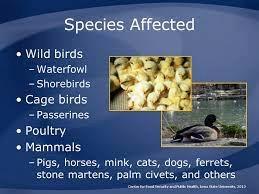 In a joint communication, the USDA-APHIS, the United States Geological Survey, the U.S. Fish and Wildlife Service and the National Flyway Council issued the Implementation Plan for Avian Influenza Surveillance in Waterfowl in the United States, Summer 2022-Winter 2023. The manual provides details on the collection of specimens, diagnostic procedures and analysis of results. The primary objective is to ascertain the distribution and spread of avian influenza viruses and their serotypes in wild waterfowl in the U.S. with specific concentration on seven dabbling duck species. Samples will be obtained from Agency and hunter-harvested ducks and live wild ducks from May 2022 through February 2023 along four flyways. It is intended that samples should be submitted to a pre-approved National Animal Health Laboratory. Data will be entered into the APHIS Veterinary Services Laboratory submission system website. Concurrently, with sampling, episodes of mortality will be investigated by the USGS, the` National Wildlife Health Center in Madison, WI. or State Veterinary Diagnostic Laboratories. In a joint communication, the USDA-APHIS, the United States Geological Survey, the U.S. Fish and Wildlife Service and the National Flyway Council issued the Implementation Plan for Avian Influenza Surveillance in Waterfowl in the United States, Summer 2022-Winter 2023. The manual provides details on the collection of specimens, diagnostic procedures and analysis of results. The primary objective is to ascertain the distribution and spread of avian influenza viruses and their serotypes in wild waterfowl in the U.S. with specific concentration on seven dabbling duck species. Samples will be obtained from Agency and hunter-harvested ducks and live wild ducks from May 2022 through February 2023 along four flyways. It is intended that samples should be submitted to a pre-approved National Animal Health Laboratory. Data will be entered into the APHIS Veterinary Services Laboratory submission system website. Concurrently, with sampling, episodes of mortality will be investigated by the USGS, the` National Wildlife Health Center in Madison, WI. or State Veterinary Diagnostic Laboratories.
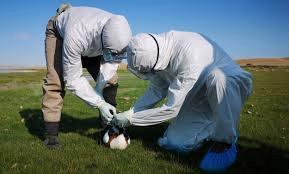
This report represents a “more of the same” approach to understanding the epidemiology of avian influenza virus among free-living bird species. The program will sample dabbling ducks with no attempt to determine whether non-anseriform or non-migratory bird species are involved in either introduction of H5 and H7 strains of avian influenza and their dissemination. The reality that cases of avian influenza continued during the June through September period in 2022 when migratory waterfowl, including the target species in this manual, were breeding, indicates that other birds may have been involved. It is known that raptors and some corvids are susceptible to avian influenza. During the ongoing 2021-2022 panornitic, a wide range of migratory and endemic birds have been impacted by avian influenza unlike previous events.
T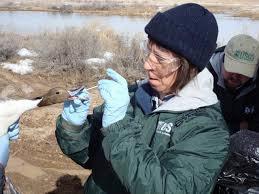 he U.S. egg, turkey and broiler industries need to know the range of migratory and resident bird species that may be infected with Avian Influenza with or without clinical effects in order to plan and implement appropriate biosecurity measures. Those responsible for the health and well being of our commercial poultry population should display a higher level of imagination and respond to obvious realities. Certainly, the data from the proposed surveillance program will be of value even if it does not address the current crisis. The question is whether resources both in the field and the laboratory could be utilized to greater effect by addressing the epidemiology of avian influenza including how virus strains are introduced and disseminated. What the industry needs now is information on the species of birds and mammals that are susceptible and serve as short-term reservoir hosts and shedders. We do not need an academic exercise. Relevant epidemiologic information is required to upgrade current biosecurity procedures that appear inadequate in the case of some outbreaks in large well-managed egg-production complexes. he U.S. egg, turkey and broiler industries need to know the range of migratory and resident bird species that may be infected with Avian Influenza with or without clinical effects in order to plan and implement appropriate biosecurity measures. Those responsible for the health and well being of our commercial poultry population should display a higher level of imagination and respond to obvious realities. Certainly, the data from the proposed surveillance program will be of value even if it does not address the current crisis. The question is whether resources both in the field and the laboratory could be utilized to greater effect by addressing the epidemiology of avian influenza including how virus strains are introduced and disseminated. What the industry needs now is information on the species of birds and mammals that are susceptible and serve as short-term reservoir hosts and shedders. We do not need an academic exercise. Relevant epidemiologic information is required to upgrade current biosecurity procedures that appear inadequate in the case of some outbreaks in large well-managed egg-production complexes.

|
Significance of “Backyard” Flocks in the Epidemiology of HPAI
|
10/24/2022 |
|
Following the editorial on the possibility of vaccination against avian influenza, Dr. Donald Reynolds of the University of Nebraska insightfully raised the issue of “backyard” flocks and their epidemiologic significance.
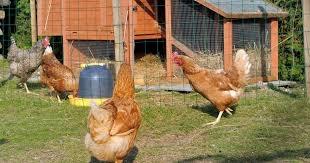 USDA has recorded 247 outbreaks of H5N1 strain HPAI on commercial farms in 2022 compared to 305 cases in “backyard” flocks. The number of commercial flocks affected is greater than during the 2015 epornitic but the number of “backyard” flocks has increased disproportionately. USDA has recorded 247 outbreaks of H5N1 strain HPAI on commercial farms in 2022 compared to 305 cases in “backyard” flocks. The number of commercial flocks affected is greater than during the 2015 epornitic but the number of “backyard” flocks has increased disproportionately.
The first question is whether the profound increase in cases during 2022 compared to 2015 represents actual infections or increased surveillance given heightened concern with attendant publicity over HPAI coupled with the availability of diagnostic resources. The subjective conclusion from crude data collected to date suggests more widespread dissemination of H5N1 in 2022.
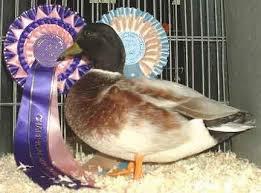 The second question concerns the definition of “backyard” flocks since location, diversity and purpose influences their epidemiologic significance. “Backyard” flocks can be sub-classified as:- The second question concerns the definition of “backyard” flocks since location, diversity and purpose influences their epidemiologic significance. “Backyard” flocks can be sub-classified as:-
- Suburban flocks: Comprise up to 20 hens maintained as either companion birds or to supply eggs for a family - The significance of this category lies in the fact that they serve as sentinels for the presence of virus and are essentially end hosts. They have little significance in the context of commercial outbreaks since most of these flocks are urban or suburban and remote from commercial farms.
- Game fowl – This category could represent an important link between wild bird shedders of virus and commercial farms. This is based on the fact that many game fowl flocks exceed 100 birds. They are invariably allowed outside access with a complete absence of biosecurity. The role of game fowl in perpetuation and dissemination of Exotic Newcastle disease (END) was demonstrated in the 2002 and 2019 outbreaks in California even though most birds were solidly vaccinated against END. The danger relating to game fowl is that they are frequently moved for competition and traded over extensive distances.
- Show birds: Represent a third category – Usually suburban but occasionally in rural locations - Individual birds may be of high value and are held in relatively small flocks, frequently confined. Owners of show birds are amenable to advice on biosecurity. The expedient of cancelling shows limits movement of this category of fowl.
- Multispecies flocks: Collections of galliform and anseriform birds of diverse species are frequently encountered in rural areas. These birds are generally free ranging often with access to water and are susceptible to exposure to AI virus from migratory birds that cohabit with these flocks.
A number of observers have questioned why there have been more cases among “backyard” flocks in 2022 compared to 2015. It is suggested that, based on the duration of outbreaks extending from February through the present, that H5N1 strain carrying Eurasian genes has been transferred from migratory waterfowl and sea birds to domestic wild birds. Reports of mortality in raptors and corvids and possibly some passeriformes confirm species susceptibility but results of any structured survey on the shedding status of non-migratory birds have not been published.
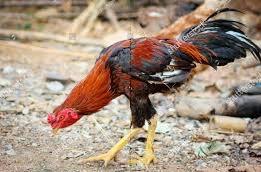 EGG-NEWS has consistently urged APHIS to conduct structured surveys on HPAI infection over a range of wild birds. Data made available during the spring of 2022 reflected hunter-killed migratory waterfowl. From an epidemiologic perspective, it is critical to understand the dynamics of avian influenza in migratory and endemic species that may come into contact with commercial poultry. Both the regional epidemiology of H5N1 infection and the molecular composition of viruses isolated from wild and commercial species requires evaluation to develop an appreciation of the extent and mechanisms of how the virus is disseminated. EGG-NEWS has consistently urged APHIS to conduct structured surveys on HPAI infection over a range of wild birds. Data made available during the spring of 2022 reflected hunter-killed migratory waterfowl. From an epidemiologic perspective, it is critical to understand the dynamics of avian influenza in migratory and endemic species that may come into contact with commercial poultry. Both the regional epidemiology of H5N1 infection and the molecular composition of viruses isolated from wild and commercial species requires evaluation to develop an appreciation of the extent and mechanisms of how the virus is disseminated.
If USDA-APHIS in cooperation with state and federal wildlife agencies cannot conduct these studies and to provide interim results, support should be provided to Land Grant universities to conduct the research. The industry needs valid information in order to plan and execute modifications to biosecurity programs. The interaction among migratory species, domestic birds and “backyard” flocks and extending to susceptible mammals is required, given the likely prospect of persistent or frequently reocurring infection. Obviously, the approach to the control and prevention of H5N1 HPAI including any consideration of vaccination would be modified if it were recognized that the infection is no longer exotic but possibly is seasonally endemic or de facto endemic.

|
Retail Chains Reconsidering 2025 Cage-Free Commitments
|
10/24/2022 |
|
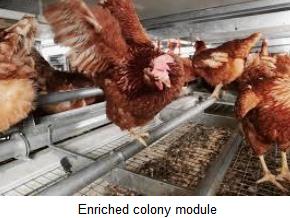 With the status of Proposition #12 under consideration by the Supreme Court of the United States, and facing commercial realities, a number of retailers have announced that they will not meet commitments made in 2020 to sell only cage-free eggs by 2025, less than 26 months away. With the status of Proposition #12 under consideration by the Supreme Court of the United States, and facing commercial realities, a number of retailers have announced that they will not meet commitments made in 2020 to sell only cage-free eggs by 2025, less than 26 months away.
Most of the retail chains, groceries, restaurants and other users of eggs were coerced by the Humane Society of the United States and other organizations into announcing commitments to use or stock only cage-free eggs. In response producers and packers commenced programs to either convert their existing facilities or to erect new cage-free complexes and farms but the rate of conversion has fallen over the past two years.
Walmart claim that twenty percent of all egg sales in their U.S. stores are cage-free with close to 40 percent in Sam’s Club warehouses. Kroger, and presumably now Albertson’s if the acquisition is approved by the DOJ, has extended their compliance deadline to 2030. The company anticipates that seventy percent of sales thereafter will comprise cage-free eggs. Kroger anticipates that producers will be expected to use housing systems consistent with research and evaluation of welfare.
Walmart intends to continue promoting cage-free eggs through allocating space in display coolers, in recognition of a large price conscious demographic. Costco has completely converted to cage-free eggs.
 Many consumers are obviously in favor of cage-free housing based on welfare considerations. Surveys conducted during the 2010s that purported to demonstrate a high level of demand for the category were essentially spurious. They rose to the level of asking ten-year-olds if they are in favor of ice cream. Most consumers want cage-free product but only an affluent proportion are willing to pay the premium over conventional eggs. Many consumers are obviously in favor of cage-free housing based on welfare considerations. Surveys conducted during the 2010s that purported to demonstrate a high level of demand for the category were essentially spurious. They rose to the level of asking ten-year-olds if they are in favor of ice cream. Most consumers want cage-free product but only an affluent proportion are willing to pay the premium over conventional eggs.
The Food Marketing Institute and United Egg Producers have commissioned economists at three major Land Grant universities to produce a report defining the restraints to meeting the 2025 deadline. This presumably will provide cover for the major chains and egg users to resist further pressure by animal welfare advocacy organizations.
In weekly commentaries, EGG-NEWS has consistently maintained that the 2025 deadline for conversion to cage-free housing would not be met. Postings thereafter predicted that at least 30 percent of U.S. hens would be housed under confinement into 2030. It would seem appropriate to convert enrichable cages installed during the early 2000s to enriched modules allowing 144 square inches per hen. There is sufficient evidence to show that enriched colony modules actually provide a higher level of welfare than multi-tier aviaries. This is evidenced by the prevalence of keel injuries and higher flock mortality in aviaries, especially with advancing age. Cost of production from floor systems and aviaries is higher than from either cages or colony modules based on labor requirements, fixed capital costs including interest and depreciation, feed consumed and an increased level of cracked and dirty eggs that are not saleable.
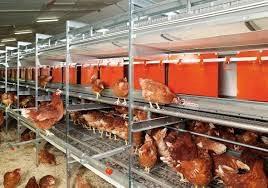 In retrospect, it appears that both chains and producers have been pressured into alternative housing systems without a full appreciation of the technical and financial implications. The most significant deterrent to complete conversion is the disinclination of a high proportion of consumers to pay more for a cage-free egg compared to a conventional product. Obviously in the future, there will be a market for eggs produced from a range of systems extending from conventional cages to pasture and with various attributes including nutritional enrichment. Consumers deserve choice and it is both unethical and unreasonable for welfare activists to expect many low-income consumers to either spend more on eggs or reduce their volume of purchase thereby depriving them of nutritious food. In retrospect, it appears that both chains and producers have been pressured into alternative housing systems without a full appreciation of the technical and financial implications. The most significant deterrent to complete conversion is the disinclination of a high proportion of consumers to pay more for a cage-free egg compared to a conventional product. Obviously in the future, there will be a market for eggs produced from a range of systems extending from conventional cages to pasture and with various attributes including nutritional enrichment. Consumers deserve choice and it is both unethical and unreasonable for welfare activists to expect many low-income consumers to either spend more on eggs or reduce their volume of purchase thereby depriving them of nutritious food.

|
AI Vaccination Emerges as a Divisive Concept in the U.S. Poultry Industry
|
10/17/2022 |
|
 The recent National Meeting on Poultry Health, Processing and Live Production clearly demonstrated a division between the needs of the broiler and egg production segments of the industry in acceptance of vaccination as a preventive measure against highly pathogenic avian influenza (HPAI). Opposition to vaccination was evident during the 2015 epornitic which persisted through late May of that year, resulting in depletion of 43 million laying hens although the broiler industry was unscathed. The question of vaccination to prevent and control HPAI has naturally re-emerged during the 2022 epornitic that, to date, is responsible for the loss of approximately 36 million egg producing hens and pullets on 27 farms, 7.5 million turkeys on 173 farms but only 2.4 million broilers on 12 farms and 280,000 broiler breeders on eight farms. The recent National Meeting on Poultry Health, Processing and Live Production clearly demonstrated a division between the needs of the broiler and egg production segments of the industry in acceptance of vaccination as a preventive measure against highly pathogenic avian influenza (HPAI). Opposition to vaccination was evident during the 2015 epornitic which persisted through late May of that year, resulting in depletion of 43 million laying hens although the broiler industry was unscathed. The question of vaccination to prevent and control HPAI has naturally re-emerged during the 2022 epornitic that, to date, is responsible for the loss of approximately 36 million egg producing hens and pullets on 27 farms, 7.5 million turkeys on 173 farms but only 2.4 million broilers on 12 farms and 280,000 broiler breeders on eight farms.
The broiler segment of the U.S. industry is justified in questioning the application of vaccination as it might prejudice export to specific nations. Some importing nations would potentially discriminate against U.S. products in contravention of the World Organization of Animal Health (WOAH) rules. Opposition to vaccination may have been justified in 2015 but circumstances, both with respect to the virus, availability of advanced vaccines and international trade regulations have all changed in seven years.
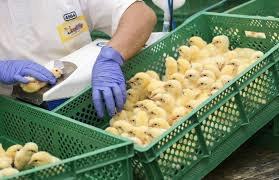 The H5N1 Avian Influenza virus with Eurasian genes is different from the H5N2 strain responsible for extensive mortality in 2015. The virus is panornitic in distribution, affecting flocks on four continents. The infection is now clearly pathogenic in a wide range of wild bird species, as evidenced by mass mortality not previously recorded. The epidemiology of H5N1 HPAI in North America is clearly different from the 2015 outbreak caused predominantly by H5N2. Incident cases have persisted from emergence in the Maritime provinces of Canada in January through to the present with every indication of an upsurge coincident with Fall migration of wild birds. The H5N1 Avian Influenza virus with Eurasian genes is different from the H5N2 strain responsible for extensive mortality in 2015. The virus is panornitic in distribution, affecting flocks on four continents. The infection is now clearly pathogenic in a wide range of wild bird species, as evidenced by mass mortality not previously recorded. The epidemiology of H5N1 HPAI in North America is clearly different from the 2015 outbreak caused predominantly by H5N2. Incident cases have persisted from emergence in the Maritime provinces of Canada in January through to the present with every indication of an upsurge coincident with Fall migration of wild birds.
In 2015, many nations that imported U.S. poultry products imposed nationwide bans precluding shipment. Due to the efforts of USDA-APHIS and USAPEEC with input from academia, the WOAH has adopted more realistic policies relating to export bans based on an appraisal of the disease. Restrictions are now imposed at the state or county level consistent with the WOAH principle of regionalization and with a shorter 28-day exclusion period following the decontamination of affected farms.
Since 2015 there have been significant improvements in the ability to rapidly diagnose AI. Prompt identification and depopulation of infected flocks with concurrent quarantine and surveillance with restrictions of movement of live birds have reduced the dissemination of the virus from an index farm. Higher standards of structural and operational biosecurity are applied, especially in the egg-production sector. With the exception of turkey farms, these preventive measures are considered to be responsible for the lower number of incident outbreaks during the Spring of 2022 as compared to 2015.
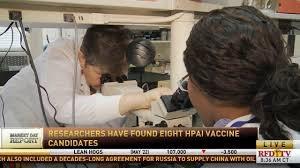 Perhaps the most significant difference between the 2015 and 2022 outbreaks is the growing realization that HPAI may no longer be regarded as an exotic infection. The occurrence of outbreaks in 35 states, persistence of the infection from January through to October and the number of outbreaks, especially among growing turkeys and backyard farms suggest that HPAI, if not seasonally endemic, is de facto an endemic disease. Perhaps the most significant difference between the 2015 and 2022 outbreaks is the growing realization that HPAI may no longer be regarded as an exotic infection. The occurrence of outbreaks in 35 states, persistence of the infection from January through to October and the number of outbreaks, especially among growing turkeys and backyard farms suggest that HPAI, if not seasonally endemic, is de facto an endemic disease.
Dr. Julie Gauthier, Assistant Director for Poultry Health, USDA-APHIS, correctly stated that inactivated AI vaccines suppress clinical signs and mortality but do not effectively prevent shedding of virus. In her address she noted the development of DIVA vaccines as introduced and applied in Italy during a severe H7 outbreak in 2016-2017. This innovation allowed differentiation between vaccinated and infected flocks on the basis of serology.
Using antibody assay as a diagnostic criterion is an obsolete concept. Dr. Gauthier should know that diagnosis in modern production is based on antigen detection applying lateral flow immunoassay tests initially for field diagnosis or an initial PCR assay in suitably equipped laboratories. Invoking the limitation of serology as a justification to reject vaccination is invalid at the present time.
Studies are currently in progress in Holland to evaluate three commercial vaccines and a number of experimental vaccine candidates to determine suppression of clinical signs and mortality against field exposure. The studies will also indicate whether shedding of virus occurs among flocks vaccinated with commercial products against the prevalent H5N1 strain of HPAI.
Continuing to apply control measures as applied in Pennsylvania in 1974 will be costly and questionably effective if as is anticipated, HPAI persists through the current year and emerges during the early Spring of 2023. Persisting with a policy based on the presumption that the HPAI is exotic to North America will perpetuate a cycle of depopulation-disposal-decontamination-repopulation. This will inevitably degenerate into a situation that could be characterized from a statement made during the Viet Nam War that “It was necessary to destroy the village in order to save it.”
It may be held that the USDA-APHIS has been negligent in not undertaking epidemiologic studies to define modes of transmission in cases occurring during the 2022 epornitic. Sixty percent of the egg-production cases requiring depopulation of 86 percent of hens involved sixteen complexes holding one to five million hens. Evaluation of the circumstances contributing to outbreaks would have been helpful in devising appropriate, preventive measures. It is understood that APHIS has conducted epidemiologic studies of outbreaks and the industry would have been well served by early publication of preliminary data based on molecular and farm-level investigations.
The second major justification to oppose vaccines relates to the apparent loss in broiler exports due to embargos. Garrett Borkhuis of USAPEEC noted that export losses, attributed to bans as a result of Avian Influenza, have been limited during the current year through July to $272 million compared to $1.3 billion in 2015. As has been previously stated, nations adhering to WOAH recommendations would most probably continue importing feet and leg quarters if an effective vaccine were to be deployed. Data compiled by USDA-FAS and duly reported monthly in USAPEEC publications document record export volumes and values for the broiler industry in2022 concurrently with outbreaks of HPAI.
It is speculative as to whether China would refuse to import chicken feet if the U.S. adopted a policy of protecting flocks with an effective vaccine, given their strong domestic demand, limited world availability and the fact that HPAI is endemic in China. With the extent of HPAI in North America, Europe, Asia and Africa, the infection is no longer regarded as a national problem and extensive bans are both scientifically unjustified and ucontrary to WTO regulations. If nations wish to use HPAI to protect their industries from competition, the application of vaccine by U.S. exporters is an irrelevant consideration.
The U.S. poultry industry should regard HPAI as a national problem and should avoid inter-segment dissension over vaccination. The industry should be guided by science and impartial and realistic projections of loss to producers of eggs, chicken and turkey meat and the consumers we serve. Simply continuing a program of “stamping out” will become more expensive, present logistical and welfare challenges and impose escalating costs for both the public and private sectors. Vaccination has both advantages and drawbacks. A decision should be made on the basis of the “least bad” economic outcomes to all stakeholders.

|
A Case for Universal School Feeding
|
10/10/2022 |
|
 From October 10th through 14th we recognize National School Lunch Week.The U.S. has a tradition of providing free meals for children from lower-income homes. It is generally accepted that adequate nutrition is essential for both physical and brain development, especially in preschoolers and those attending kindergarten. There is a wealth of literature confirming that adequate nutrition is correlated with learning scores and subsequent scholastic achievement. Poor children benefit from supplementary nutrition but ironically, their wealthier counterparts also derive advantages from school feeding. Meals provided by schools conform to accepted dietary requirements and accordingly, may be healthier than home-prepared brown bag lunches or snacks from vending machines. From October 10th through 14th we recognize National School Lunch Week.The U.S. has a tradition of providing free meals for children from lower-income homes. It is generally accepted that adequate nutrition is essential for both physical and brain development, especially in preschoolers and those attending kindergarten. There is a wealth of literature confirming that adequate nutrition is correlated with learning scores and subsequent scholastic achievement. Poor children benefit from supplementary nutrition but ironically, their wealthier counterparts also derive advantages from school feeding. Meals provided by schools conform to accepted dietary requirements and accordingly, may be healthier than home-prepared brown bag lunches or snacks from vending machines.
Universal school feeding removes the stigma from children who consume meals supplied on a means-test basis. Qualifying children for school meals based on family resources often results in the most needy being deprived of breakfasts and lunches. Parents, a busy single parent or guardian may fail to provide the documentation required to establish eligibility or may refuse to do so from a sense of shame.
In underdeveloped nations, school feeding increases attendance with obvious societal benefits. Serving breakfasts especially improves concentration and learning ability among children who are malnourished, as demonstrated in numerous studies in Africa and Asia.
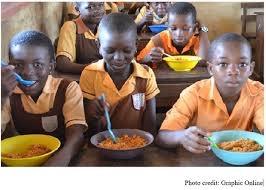 It is estimated that providing universal free school meals in the U.S. would add approximately $10 billion to the cost of educating K through 12 students, representing an incremental 1.5 percent over all current expenditure on schools. In addition to improving educational accomplishment, children would benefit physically from an acceptable diet, especially in rich nations where obesity is an emerging problem. It is estimated that providing universal free school meals in the U.S. would add approximately $10 billion to the cost of educating K through 12 students, representing an incremental 1.5 percent over all current expenditure on schools. In addition to improving educational accomplishment, children would benefit physically from an acceptable diet, especially in rich nations where obesity is an emerging problem.
The September 3rd edition of The Economist reviewed alternative World school feeding systems. The U.K. provides free school meals for all children through the third grade. China provides universal meals for all children only in designated low-income communities. The U.S. has a patchwork of programs generally providing subsidized food for low-income students. Brazil has a comprehensive program that benefits all children from preschool onwards as do Scandinavian nations. India maintains the largest program subject to control by individual states. The World Food Program estimates that up to 400 million children receive some form of supplementary feeding at school.
With the advent of COVID in 2020, requirements for eligibility were lifted with emergency funds supplied by the federal government. Financial support is now at an end and this raises the question as to whether universal school feeding should continue as it provides benefits for children and society over the long term.
The American Egg Board- Egg Nutrition Center has an important role to play in advocating for improved and extended school feeding. Eggs should be incorporated in menus prepared for school meals based on balanced protein and essential nutrients at a relatively low cost, compared to other protein sources. Since California and Maine have elected to extend universal school feeding, opportunities will be created to introduce eggs into food offered by cafeterias. Coupled with the proposed designation of eggs as a “healthy food”, a case can be made for greater use of eggs in a variety of dishes, emphasizing their versatility. Promoting eggs for school feeding will be a win-win for the industry, administrators of school budgets and above all, the children who will benefit from improved nutrition and hopefully enhanced scholastic achievement.

|
Apparent Administration Vendetta Against Intensive Livestock Production
|
10/04/2022 |
|
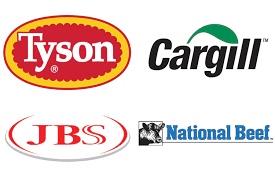 The current Administration came into office with the preconceived perception that “small scale” farmers and contractors were subject to anticompetitive practices and exploitation. The Secretary of the USDA spoke of radical restructuring of the agro-economy after nomination. The actions of the USDA, supported by the DOJ, confirmed pre-election rhetoric that will ultimately be deleterious to the National food supply should intentions become reality. In pursuit of a solution to a nonexistent problem, USDA intends issuing rules to “re-establish” competitive and market integrity under the Packers and Stockyards Act and to eliminate unproven “undue prejudice, unjust discrimination and deception”. The current Administration came into office with the preconceived perception that “small scale” farmers and contractors were subject to anticompetitive practices and exploitation. The Secretary of the USDA spoke of radical restructuring of the agro-economy after nomination. The actions of the USDA, supported by the DOJ, confirmed pre-election rhetoric that will ultimately be deleterious to the National food supply should intentions become reality. In pursuit of a solution to a nonexistent problem, USDA intends issuing rules to “re-establish” competitive and market integrity under the Packers and Stockyards Act and to eliminate unproven “undue prejudice, unjust discrimination and deception”.
USDA will assign $15 million as an Agricultural Competition Challenge to intensify action by State Attorneys General to enforce existing and proposed laws regulating competition in livestock and meat production. The Administration assumes, without economic justification that concentration within the beef, pork and possibly chicken and egg segments of the livestock industry contribute to inflation. The justification advanced by the Administration is that consumers will benefit from new rules although the opposite may be a predictable outcome if efficiency is constrained.
Intensification and expanding of scale of production is an economic response to increasing variable costs. Application of scale reduces the fixed costs of production and provides benefits that are passed onto consumers in a competitive environment. Admittedly, the beef segment represents an oligopoly with four major companies contributing to 80 percent of packing volume. This does introduce risks associated with concentration as evidenced by the fire and temporary closure of the Tyson Foods beef plant in Holcomb, KS. or the spread of COVID during 2020 in large plants that restricted national output of beef and pork.

Proposed regulations would prohibit alleged retaliatory practices including restriction of lawful communications and punitive cancellation of contracts. In addition, contractors, whether justified or not, could make use of a Department of Justice website to claim violations and noncompliance irrespective of validity. This lays open the possibility for unjust civil and criminal intervention by the Department of Justice and capricious tort claims that could ultimately be expensive for packers and integrators to defend.
The motivation for action against highly efficient and structured livestock production is difficult to discern. In the first instance, it may represent a cynical political move to engender consumer support. Alternatively it may reflect an inherent inclination towards socialism expressed by both legislators and Senate-confirmed officials within the Administration. Irrespective of the intent, deliberate attempts to disrupt the existing structure of livestock production will ultimately be deleterious to the economy and to consumers. If there are activities that conflict with the current Packers and Stockyards Act regulations, then the perpetrators must be punished, and equity restored. If there are no obvious or widespread discrimination or deception, then the Administration should cease their attempts to demonize the industry and work cooperatively to resolve any issues that may be disclosed.
At the end of the day, the U.S. functions according to the principles of a free-enterprise market. Entrepreneurs continually identify areas of opportunity and satisfy unserved needs applying capital and resources. Absent any overt or gross deviation from the Packers and Stockyards Act, the Administration should back down and face realities. It is possible that for the remaining two years of the current Administration, their activities will be restrained by a Congress unsympathetic to socialism and court decisions based on a realistic interpretation of law. It is anticipated that the inherent checks and balances bequeathed to us by the Founding Fathers will restore equilibrium irrespective of the present inclinations and actions by the USDA and DOJ.

|
Call to Action for APHIS to Prevent HPAI
|
09/22/2022 |
|
 There have been 17 major outbreaks of H5N1 highly pathogenic avian influenza (HPAI) during the current the 2022 epornitic. These have involved large in-line egg production complexes extending from February 22nd through September 20th. Outbreaks on these farms required depopulation of close to 32 million hens at great expense to federal and state budgets, to producers and ultimately consumers. There have been 17 major outbreaks of H5N1 highly pathogenic avian influenza (HPAI) during the current the 2022 epornitic. These have involved large in-line egg production complexes extending from February 22nd through September 20th. Outbreaks on these farms required depopulation of close to 32 million hens at great expense to federal and state budgets, to producers and ultimately consumers.
The USDA-APHIS has yet to publish data on either field or molecular epidemiology or provide preliminary guidance on risk factors associated with transmission and introduction of infection specifically for the 2022 epornitic. Presumably some cases might have been associated with defects in either structural or operational biosecurity. To date APHIS has not disclosed specific deficiencies leading to these early outbreaks that presumably were investigated.
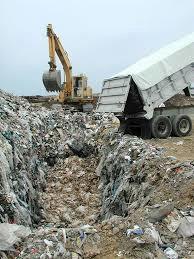
The most recent case involved a complex with the highest level of biosecurity possible. Evaluation of the probable routes of infection disclosed that one week prior to the presumed day of infection, based on onset of mortality, acreage within 50 yards of the index house was cultivated creating a cloud of dust that was presumably entrained in air entering the house. The fact that two large complexes were infected within the same county on April 29th and June 2nd respectively suggests dissemination of HPAI virus in the area attributed to shedding by either migratory or domestic wild birds. Fresh droppings with viable virus could have been aerosolized and carried on dust particles from the disturbed soil in the field adjacent to the index house. This subjective explanation is based on a logical analysis of factors pertaining to the complex but would require both controlled and field evaluation to confirm an aerosol route of infection that has been implicated in previous outbreaks this year.
Given the circumstances of the most recent infection it is suggested that managers of farms should avoid disturbing soil within 50 yards of perimeter fences and to cease mowing between houses or within the lines of demarcation. Workers should don transit shoes or overshoes between biosecurity modules with a change to dedicated footware at the entry to each house on the complex. It stands to reason that impervious blacktop or concrete paths and parking areas should surround houses and be regarded as potentially contaminated. Enhanced biosecurity precautions with respect to footware should extend to drivers of feed delivery and service vehicles.
About 20 million hens ago EGG-NEWS urged APHIS to analyze data and provide recommendations to prevent infection based on preliminary epidemiological investigations from the first seven outbreaks extending through the beginning of April 2022 but to no avail. APHIS needs to acquire and analyze data relating to:-
- Prevalence of shedding in domestic wild birds and susceptible mammals since surveys have concentrated on migratory hunter-killed waterfowl
- Persistence of HPAI virus on soil and impervious surfaces
- Correlation of the genome sequence of isolates among outbreaks linked by locality and time with virus obtained from presumed wild bird and mammalian reservoirs
- Using controlled trials to determine the transmissibility of virus by the aerosol route on entrained dust
- Establish the recovery rate of virus from air exhausted from houses with infected flocks at distances under a variety of weather conditions. There is available literature on dissemination of Newcastle virus by wind during the U.K Essex outbreak in 1972. A modern multi-level aviary house with 300,000 hens can displace up to 1.8 million cubic feet per minute at maximum ventilation capacity
APHIS in collaboration with state departments of agriculture has attained proficiency in rapidly diagnosing HPAI and depopulating farms and complexes. This is a reactionary strategy although necessary. What is now required is an understanding of how HPAI is introduced into egg production complexes and turkey growing farms and why the broiler sector has been disproportionately unaffected. Persisting with the same programs that were applied in Pennsylvania in 1985, the 1995 epornitic and the current outbreak without defining and publicizing risk factors represents an inconsistency with the purpose of the Agency. The industry needs to have the findings of epidemiologic investigations to modify biosecurity and preventive modalities.
Attempting to “stamp out” what is emerging as an endemic disease is a futile and progressively unproductive and expensive exercise. At what point and at what cost do we transition to the introduction of vaccines in conjunction with depopulation? But that is the subject of a different and subsequent editorial.

|
USDA Assigns $400 million for “Regional Food Business Centers”
|
09/13/2022 |
|
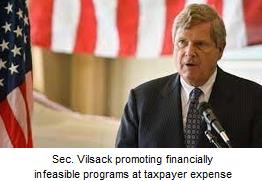 Tom Vilsack, secretary of the USDA has announced the allocation of $400 million for regional food system coordination and capacity-building through regional food business centers. In announcing the program, Vilsack stated, “The USDA Regional Food Business Centers will be a new, critical asset as we continue our work to strengthen and enhance local and regional food systems across the nation.” Tom Vilsack, secretary of the USDA has announced the allocation of $400 million for regional food system coordination and capacity-building through regional food business centers. In announcing the program, Vilsack stated, “The USDA Regional Food Business Centers will be a new, critical asset as we continue our work to strengthen and enhance local and regional food systems across the nation.”
It is proposed that the USDA will fund six Regional Centers located on the U.S.-Mexico border, in the Mississippi Delta, Appalachia and a Tribal Center with priorities based on persistent poverty and community need.
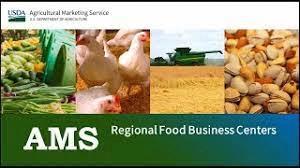 Undersecretary for Marketing and Regulatory Programs, Jenny Moffitt noted that, “USDA is committed to supporting smaller producers, processors and distributors to diversify economic opportunities in underserved communities.” Apparently, throwing a vast amount of money at areas with low family income will “decrease barriers and improve supply chain linkages for producers, processors and distributors and strengthen regional food systems networks.” representing USDA gobbledygook. Undersecretary for Marketing and Regulatory Programs, Jenny Moffitt noted that, “USDA is committed to supporting smaller producers, processors and distributors to diversify economic opportunities in underserved communities.” Apparently, throwing a vast amount of money at areas with low family income will “decrease barriers and improve supply chain linkages for producers, processors and distributors and strengthen regional food systems networks.” representing USDA gobbledygook.
This initiative is yet another example of social engineering using public funds for which there will be little accountability and no prospect of continuing support under an alternative administration.
EGG-NEWS believes in a free enterprise market economy that promotes efficiency and productivity. Secretary Vilsack and his appointees should heed the comments of the late UK Prime Minister Margaret Thatcher who averred “The problem with socialism is that it soon runs out of other people’s money.”
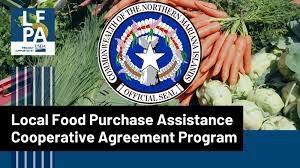 It is estimated that the $400 million allocated to these “Regional Food Business Centers” would have supported the education and training of over 1,600 specialists in diverse fields of agriculture including agricultural engineering, extension services, veterinary medicine, nutrition, economics, agronomy, and livestock production each with an investment of $250,000. These specialists would have received training that would extend through an entire career allowing them to contribute to scientific and practical advances that could in theory enhance productivity over the long term and contribute to alleviation of hunger and poverty. It is estimated that the $400 million allocated to these “Regional Food Business Centers” would have supported the education and training of over 1,600 specialists in diverse fields of agriculture including agricultural engineering, extension services, veterinary medicine, nutrition, economics, agronomy, and livestock production each with an investment of $250,000. These specialists would have received training that would extend through an entire career allowing them to contribute to scientific and practical advances that could in theory enhance productivity over the long term and contribute to alleviation of hunger and poverty.
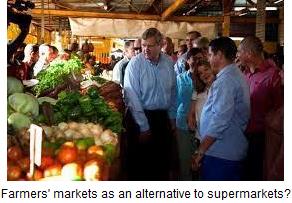 It is also questioned why the U.S. has pockets of poverty while the nation has to issues H-2A visas to guest workers. Perhaps the USDA should consider programs to support relocation, providing housing, schools, childcare and directed benefits to encourage participation in agriculture by the underemployed in current “underserved communities”. Displaced sharecroppers moved westward during the Great Depression to find work in California some with assistance from the WPA New Deal after arrival. Has Grapes of Wrath been abandoned in high school English literature? It is also questioned why the U.S. has pockets of poverty while the nation has to issues H-2A visas to guest workers. Perhaps the USDA should consider programs to support relocation, providing housing, schools, childcare and directed benefits to encourage participation in agriculture by the underemployed in current “underserved communities”. Displaced sharecroppers moved westward during the Great Depression to find work in California some with assistance from the WPA New Deal after arrival. Has Grapes of Wrath been abandoned in high school English literature?
Attempting to artificially stimulate production of food using social engineering is analogous to attempting to push a piece of string. Only market forces determine allocation of capital, survival of enterprises and their productivity over the long term.

|
USDA-APHIS Soliciting Comments On Proposed Indemnity Regulations
|
09/11/2022 |
|
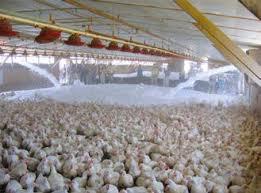 The 2022 epornitic of highly pathogenic avian influenza (HPAI) has revived questions concerning the procedures used to establish the quantum of loss and the policies applied to award compensation for mass depopulation of flocks and herds. The USDA-APHIS is now requesting comment on a new approach to determining indemnity to be paid to owners of flocks or herds depopulated as a result of infection with an exotic disease. The summary of the publication that appeared in the Federal Register notes differences among species and diseases. It is the intent of APHIS to determine values of livestock and costs associated with transportation, decontamination and disposal to calculate indemnity. The closing date for comments is November 7, 2022. The 2022 epornitic of highly pathogenic avian influenza (HPAI) has revived questions concerning the procedures used to establish the quantum of loss and the policies applied to award compensation for mass depopulation of flocks and herds. The USDA-APHIS is now requesting comment on a new approach to determining indemnity to be paid to owners of flocks or herds depopulated as a result of infection with an exotic disease. The summary of the publication that appeared in the Federal Register notes differences among species and diseases. It is the intent of APHIS to determine values of livestock and costs associated with transportation, decontamination and disposal to calculate indemnity. The closing date for comments is November 7, 2022.
The USDA experienced difficulty in establishing values during the HPAI epornitic of 2014-2015 and problems that were not resolved emerged again in 2022. The outstanding restraint is establishing compensation using an in-person appraisal. Events in 2015 and again in 2022 clearly indicate the deficiencies associated with timely and complete appraisal of fair market value using this approach.
Based on policy with regard to compensation for diseases including Foot-and-Mouth disease, pleuropneumonia, HPAI, Newcastle disease, salmon anemia and other exotic diseases, the USDA-APHIS is considering alternatives. One approach will be to use a standardized indemnity value tabulated by species but subject to appeal under extraordinary circumstances. Values would be updated annually and would be published in the Federal Register.

USDA-APHIS is considering a consolidation of indemnity regulations that would harmonize how value is determined, including compensation for cleaning and disposal. With regard to poultry, diseases of significance would include any H5 or H7 strain of avian influenza irrespective of pathogenicity.
The USDA-APHIS is considering removing the cap on various animals of high, individual value. Previously, USDA-APHIS introduced minimal biosecurity requirements for poultry producers to be eligible for indemnity. This approach will be extended to other species. Post exposure biosecurity requirements are presently incorporated into regulations and specify action that the producer must take to be eligible for future indemnification.
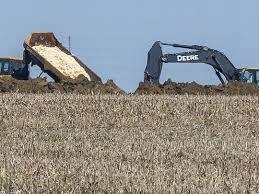
With respect to economic considerations, APHIS is requesting comment on economic cost considerations that would accrue from adoption of new regulations. The problem with a predetermined table of values, especially for laying hens, is that in the event of an extensive outbreak of a catastrophic disease such as highly pathogenic avian influenza the value of healthy, laying hens increases sharply consistent with the market price of eggs. Adjusting for market realities will impose difficulties for USDA-APHIS. Flocks are depopulated to prevent multiplication and dissemination of virus. If this action were not taken, flocks exposed to HPAI would inevitably die and accordingly, at the time of infection, would effectively have no value.
It is hoped that producers will review the proposed changes to indemnity regulations and make appropriate comments through their respective industry associations. To date the USDA has dipped into the Commodity Credit Corporation endless piggy-bank to compensate producers. With the growing realization that HPAI is probably endemic in wild domestic bird species and given the duration of the 2022 epornitic Congress may soon balk at sub-billion dollar annual payments to the poultry industry, hence the preemptive attempt by USDA to develop new rules and values for flocks. If HPAI persists among commercial and even backyard flocks, vaccination and enhanced effective biosecurity will represent the foundation of control with extremely limited compensation offered by the USDA according to narrowly defined circumstances.

|
Recession or Not. Does it Matter to Egg Producers?
|
09/04/2022 |
|
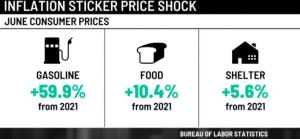 The status of the economy, including employment, consumer confidence and interest rates all have an impact on the egg-production industry. Household budgets in some demographics will exclude red meat in favor of chicken and eggs as a source of protein, maintaining demand at a time when discretionary purchases of groceries and other household items will be constrained. The status of the economy, including employment, consumer confidence and interest rates all have an impact on the egg-production industry. Household budgets in some demographics will exclude red meat in favor of chicken and eggs as a source of protein, maintaining demand at a time when discretionary purchases of groceries and other household items will be constrained.
Economists are divided as to whether the U.S. economy has entered a recession. Gross domestic product (GDP) fell by 1.6 percent year-over-year during the first quarter and then declined 0.6 percent in the second quarter. Generally, two consecutive quarterly declines in gross domestic product signal a recession. The National Bureau of Economic Research takes into account the GDP but also the gross domestic income (GDI) and other metrics, including personal income, industrial production, retail sales and employment to retrospectively determine whether our economy has entered into recession. The rise in GDI, that attained 1.8 percent in the first quarter and 1.4 percent in the second quarter, counters the sentiment that we are currently in a recession. The uncertainty using the two indicators may be due to the fact that the GDI is reported one month later than the GDP.

Economists commenting on the current economy appear to be ambivalent in the absence of definitive metrics. Jack Kleinhenz of the National Retail Federation, notes, “ongoing inflation, the volatile stock market and other issues are contributing to the debate on whether the economy is in recession”. From his perspective, Kleinhenz stated, “While consumers have become more cautious and cooled their spending in the first half of 2022, households continue to spend and are contending with inflation by using credit cards, saving less and drawing down on savings built up during the pandemic.”
The August non-farm payroll was up 315,000, although the unemployment rate was fractionally higher at 3.7 percent. Hourly earnings increased by 5.2 percent from August 2021. The major growth sectors were services, healthcare and retail. Despite conflicting data, labor statistics and the GDI imply that the Federal Reserve could engineer a soft landing that would be beneficial to our economy and to our industry.
 |
There will be more certainty on the status of our economy at the end of the month when the Bureau of Economic Affairs releases revisions including the GDP and GDI. This should provide data on whether the economy actually entered a recession in the first half of 2022. Irrespective of the outcome the egg industry will have to contend with HPAI, make capital investment decisions on transition to cage-free housing and respond to fluctuating ingredient prices. On the demand side, high employment and wage rates as influenced by future interest rate decisions by the Federal Reserve should support volume and unit revenue for eggs and products.

|
Persistence of HPAI Requires an Understanding of Risk Factors
|
08/28/2022 |
|
The report of Highly Pathogenic Avian Influenza (HPAI) H5N1 strain in a broiler parent flock in Fresno County, CA. on August 22nd was the most recent diagnosis since the cluster in commercial turkeys in three counties in Utah on July 26th. The last outbreak in a commercial egg-production complex was on June 7th in Weld County, CO. involving two million birds.
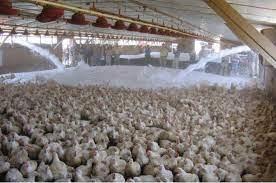 Notwithstanding the limited number of outbreaks among commercial egg-production complexes and broiler growing farms, there have been numerous reports of the disease in backyard flocks. There were ten diagnosed cases in non-commercial flocks from August 2nd through August 24th in eight states ranging from California in the West, Florida in the East and from Georgia in the South to Alaska in the North, indicating widespread dissemination of the 2022 virus. Notwithstanding the limited number of outbreaks among commercial egg-production complexes and broiler growing farms, there have been numerous reports of the disease in backyard flocks. There were ten diagnosed cases in non-commercial flocks from August 2nd through August 24th in eight states ranging from California in the West, Florida in the East and from Georgia in the South to Alaska in the North, indicating widespread dissemination of the 2022 virus.
It is presumed that the outbreaks among backyard flocks are under-reported and are due to contact between non-confined, domestic poultry with free-living birds and not necessarily migratory waterfowl given cases in July and August.
Diagnoses of HPAI extending beyond what might be regarded as the “avian influenza season” that has in past epornitics ended in June, suggests that wild-bird reservoirs are shedding virus to backyard flocks that operate with little or no biosecurity. From an epidemiologic perspective, backyard flocks serve as sentinels for the presence of virus in wild-bird reservoirs. Extensive and structured field surveys of wild domestic birds should be conducted by APHIS in conjunction with federal and state wildlife specialists. This will allow the U.S. industry to determine the extent of infection and to respond with enhanced protective measures. The limited number of outbreaks reported among broilers and egg-producing flocks suggests relatively high levels of biosecurity relative to turkey producers.
The USDA has yet to publish results of studies on the current epornitic incorporating molecular and field epidemiology required to establish risk factors leading to infection of flocks. A long overdue report is necessary to define the modes of transmission and to guide protective measures for the various sectors of the industry.
It is highly probable that HPAI has moved from being an exotic infection with sporadic outbreaks introduced by migratory waterfowl on a seasonal basis to a current endemic status. Clearly, experience in Europe and Asia and now in North America, predicate a different approach to prevention. Simply playing whack-a-mole with outbreaks in commercial farms as they are diagnosed will be progressively more expensive and futile even in the short term. France has “eradicated” HPAI in their foie gras industry annually for a number of consecutive years. There is growing consumer antagonism against mass depopulation, especially applying VSD in aviary and cage housing.
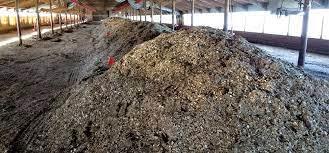 If HPAI is either seasonally or consistently endemic, the poultry industry must respond with effective immunization of flocks since as has been previously stated “HPAI is now the Newcastle disease of the 2020s”. Vaccination will require a new generation of gene-deleted or vector vaccines with broad H5 and H7 specificity. Emerging technology in vaccinology and modifying trade regulations will be the subject of an upcoming international meeting in Paris organized by leading specialists in epidemiology, molecular virology and regulatory affairs relating to avian influenza. If HPAI is either seasonally or consistently endemic, the poultry industry must respond with effective immunization of flocks since as has been previously stated “HPAI is now the Newcastle disease of the 2020s”. Vaccination will require a new generation of gene-deleted or vector vaccines with broad H5 and H7 specificity. Emerging technology in vaccinology and modifying trade regulations will be the subject of an upcoming international meeting in Paris organized by leading specialists in epidemiology, molecular virology and regulatory affairs relating to avian influenza.
The quicker that the poultry industry understands the epidemiology of Avian Influenza as it has affected flocks in the E.U., Asia and North America since 2021, the quicker we will have more effective protective measures, including vaccines. Understanding the diverse risk factors from the 2022 outbreaks that have occurred in U.S. turkey, broiler and egg production units will contribute to more effective biosecurity procedures that will be part of comprehensive future programs including vaccination.

|
FDA Approach to Leafy Greens Lacks Effectiveness
|
08/23/2022 |
|
During the past two years, FDA has flip-flopped on establishing rules to prevent contamination of leafy greens with irrigation water contaminated with ruminant-derived E. coli. Regular outbreaks of infection with STEC attributed to Romaine lettuce are documented by state public health agencies as collated by the CDC.
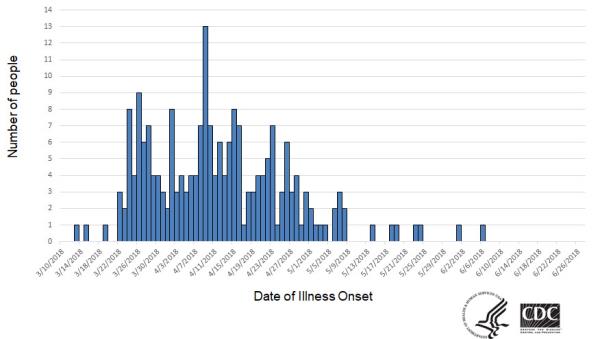
Annual STEC Outbreaks from Lettuce reported since 2018 |
The latest iteration of the so-called Green Produce Rule effectively places responsibility for assessing the degree of risk of contamination of irrigation and processing water back on to the producer. By eliminating microbial standards, the FDA has effectively granted a blank check to farmers to the detriment of consumers. Why has the FDA neglected epidemiologic realities and bowed to pressure exerted by farmer associations and lobbyists?
T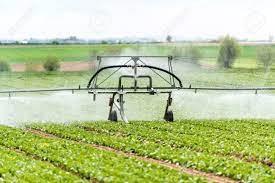 he current situation contrasts with the July 2009 Final Rule on the Prevention of Salmonella in shell eggs there was virtually no consultation in establishing the Final Rule that incorporated specifics relating to biosecurity, flock testing and action in the event of a “positive”. The Final Rule also mandated regular inspection either as targeted or intensive audits. The latest version of the Final Rule on green produce contains recommendations relating to the source of water and requires risk assessments that are clearly beyond the capacity of individual farmers. The comment from the Executive Director of the Florida Organic Growers that “farmers will need some guidance, tools and even funding to comply with the rule” is a clearly an understatement. The FDA have maintained that they will assist in implementing whatever rule is finally issued. he current situation contrasts with the July 2009 Final Rule on the Prevention of Salmonella in shell eggs there was virtually no consultation in establishing the Final Rule that incorporated specifics relating to biosecurity, flock testing and action in the event of a “positive”. The Final Rule also mandated regular inspection either as targeted or intensive audits. The latest version of the Final Rule on green produce contains recommendations relating to the source of water and requires risk assessments that are clearly beyond the capacity of individual farmers. The comment from the Executive Director of the Florida Organic Growers that “farmers will need some guidance, tools and even funding to comply with the rule” is a clearly an understatement. The FDA have maintained that they will assist in implementing whatever rule is finally issued.
If experience with the Final Rule on Salmonella in eggs is any indication, FDA auditors who had apparently received training had to be educated by farm production personnel and consultant veterinarians to function during 2011. If the FDA had not delegated the bulk of audits to authorized state departments of agriculture, implementation of the Rule would have never become reality.
EGG-NEWS has reported on outbreaks of STEC infection associated with Romaine lettuce since 2018. The source of the most recent outbreak involving patients in Michigan and Ohio has been traced to Romaine lettuce served on sandwiches by the Wendy’s chain in those states. The current outbreak is consistent with the experience of food-safety attorney Bill Marler who commented, “We continue to see what are basically regular intervals of outbreaks ties to leafy greens.” In June 2018, Wendy’s transitioned to sourcing tomatoes from greenhouses based on quality, absence of pesticides and the need to eliminate STEC contamination.
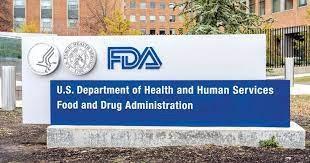 The FDA clearly recognizes the source of infection as irrigation water contaminated by fecal material from ruminants. The Leafy Greens Association has attempted to minimize risk by establishing minimal distances between CAFOs and fields cultivating leafy greens. Essentially action taken by farmers’ associations in California and Arizona are self-serving and are intended to create a false sense of security and to placate regulatory agencies and consumer advocacy groups. The FDA clearly recognizes the source of infection as irrigation water contaminated by fecal material from ruminants. The Leafy Greens Association has attempted to minimize risk by establishing minimal distances between CAFOs and fields cultivating leafy greens. Essentially action taken by farmers’ associations in California and Arizona are self-serving and are intended to create a false sense of security and to placate regulatory agencies and consumer advocacy groups.
The FDA should recognize the inevitability of contamination and work with academia and industry to develop a positive kill step in processing that will absolutely eliminate the probability of contamination with E. coli, Salmonella and Cryptosporidia. Perhaps they might exercise the same commitment that was demonstrated with Salmonella through the Final Rule introduced in 2019 after the problem of egg-borne salmonellosis was resolved by EQAPs developed by the industry.
Subscribers are encouraged to retrieve previous postings on foodborne pathogens from Romaine lettuce by entering “lettuce” in the SEARCH block.

|
FDA Guidance On Outside Access – An Exercise in Evading Reality
|
08/15/2022 |
|
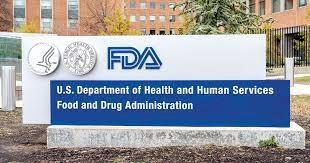 The FDA have at last issued the draft of the Guidance Document entitled, Prevention of Salmonella Enteritidis in Shell Eggs During Production, Storage, and Transportation (Layers with Access to Areas Outside the Poultry House): Questions and Answers Regarding the Final Rule. This draft Guidance Document for the industry attempts to bridge the gap between USDA proposed Organic Rule and the FDA July 2009 Final Rule on the Prevention Of Salmonella Enteritidis (SE) in Shell Eggs. The compilers of the draft Guidance Document were obliged to essentially fly in the face of epidemiologic realities in order to conform to the USDA-AMS document but in the process have compromised both their integrity and food safety. The divergence of objectives between the USDA-AMS mandating outside access for hens producing certified organic eggs and the FDA objective of suppressing SE has produced a document of questionable scientific merit representing an exercise in impracticality that will encourage subjective evaluation and conflicts during audits. The FDA have at last issued the draft of the Guidance Document entitled, Prevention of Salmonella Enteritidis in Shell Eggs During Production, Storage, and Transportation (Layers with Access to Areas Outside the Poultry House): Questions and Answers Regarding the Final Rule. This draft Guidance Document for the industry attempts to bridge the gap between USDA proposed Organic Rule and the FDA July 2009 Final Rule on the Prevention Of Salmonella Enteritidis (SE) in Shell Eggs. The compilers of the draft Guidance Document were obliged to essentially fly in the face of epidemiologic realities in order to conform to the USDA-AMS document but in the process have compromised both their integrity and food safety. The divergence of objectives between the USDA-AMS mandating outside access for hens producing certified organic eggs and the FDA objective of suppressing SE has produced a document of questionable scientific merit representing an exercise in impracticality that will encourage subjective evaluation and conflicts during audits.
At the ou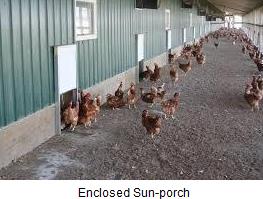 tset, the draft Guidance Document states that it does “not have the force and effect of law and is not meant to bind the public in any way”. The document as stated “should be viewed only as a recommendation unless specific regulatory or statutory requirements are cited”. This is a wishy-washy denial of responsibility. tset, the draft Guidance Document states that it does “not have the force and effect of law and is not meant to bind the public in any way”. The document as stated “should be viewed only as a recommendation unless specific regulatory or statutory requirements are cited”. This is a wishy-washy denial of responsibility.
The first inconsistency between the FDA and the USDA-AMS is the status of enclosed covered porches. The FDA criterion for differentiating between “inside” and “outside” is whether flocks are protected from the elements and predation and whether temperature, humidity and lighting can be controlled. In contrast, the proposed Organic Rule clearly disqualifies porches as outside access. The difference between the USDA-AMS and FDA approaches reflects their diverging objectives. Implicit in the determination of the National Organic Standards Board that porches are “inside” the house is the intent to discriminate against in-line complexes with houses with enclosed porches. The FDA is evidently motivated by the objective to reduce SE infection in flocks with possible vertical transmission to consumers.
In order to produce a guidance document that satisfies the organic mandate for outside access, FDA has attempted to thread the needle with respect to measures to prevent infection of flocks. Section C of the draft Guidance Document contains questionable suggestions to reduce the risk of SE infection including:-
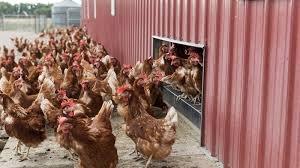
- “Limiting layers’ access to areas outside the poultry house to hours when wild birds or other animals are not likely to be present’. Wild birds are diurnal and raccoons, foxes, and skunks are nocturnal. What hours can a farm operator, therefore, select to reduce the possibility of introduction of SE to a flock?
- Steps must be taken to “ensure that there is no introduction or transfer of SE into or among poultry houses”. Following the initial audits of laying houses in accordance with the “Egg Rule”, farm operators were cited for apertures in walls and doors larger than two inches in diameter that would allow ingress of rodents. The organic rules mandate large openings to allow unrestricted access of the flock to the outside access. This dilemma is all too evident in the August 2002 FDA draft Guidance Document that accepts the principle of outside access.
- The draft Guidance Document indicates that houses must be disinfected before new laying hens are added if the previous flock yielded SE on an environmental test. Section C14 states that, “The requirement does not apply to areas outside the poultry house.” Given that SE can remain viable in soil for extended periods, the FDA is ignoring environmental realities. If the previous flock was infected with SE with a high proportion of hens showing intestinal colonization, it must be presumed that infection will be present in areas outside the house and especially around the perimeter of the house where hens congregate. Decontaminating the house but ignoring areas of outside access is obviously an exercise in futility. Possibly in recognition of this reality, Section C15 addresses cleaning and disinfection of an area outside a poultry house. Suggestions include tilling, that would remove vegetation required in terms of the organic rule; “Rotation of the area outside the poultry house” is clearly impractical for other than pastured flocks given the requirement of approximately two square foot per hen. The Document includes “allowing the potentially-contaminated area to lie dormant between flocks”. Given the viability of Salmonella in excess of six months on damp soil, this is also an impractical suggestion and reflects a denial of microbiologic reality included for the purposes of issuing the document, irrespective of potential risk.
Due to lack of knowledge on the part of those responsible for compiling the 2009 Final Rule and an institutional disinclination to consider professional counsel that was offered, the FDA omitted vaccination as a requirement despite considerable evidence in the late 1990s as to the effectiveness of vaccines in suppressing SE. It appears from Section E of the draft Guidance that the FDA is now aware that the industry might perhaps be using vaccines, but the document only considers vaccination against SE as “most effective when it is one part of a larger SE prevention plan”. Covering all bases however, FDA “encourages the use of an identified vaccination program that is effective for a particular farm”.
Section D1 of the draft Guidance mandates sampling of a house environment for the presence of SE but this “does not apply to areas outside the poultry house”. This is a clear indication of “don’t look, don’t find” response to the risks of outside access with respect to SE. If the draft Guidance Document required mandatory sampling of soil outside the layer house, as would be logical, the FDA guidance would be at odds with the outside access requirement of the USDA-AMS Certified Organic rule. Clearly, there is a dissonance between the two Agencies. The USDA-AMS is concerned over non-GMO ingredients fed to hens, the absence of pesticides and “organic” standards of welfare. In contrast the FDA is attempting to reduce vertical transmission of SE to consumers. This divergence leads to Guidance Documents framed to create inter-Departmental harmony rather than addressing real world problems.
The National Organic Program does not consider food safety and the FDA is avoiding responsibility as denoted in the discrepancies between the Organic Rule requiring outside access and the FDA “suggestions” in their draft Guidance Document. This disharmony would be resolved by a dedicated Food Safety Agency that would have only the single objective of protecting the food supply to the benefit of consumers.

|
Proposed USDA-AMS Rules for Organic Certification of Egg Production
|
08/09/2022 |
|
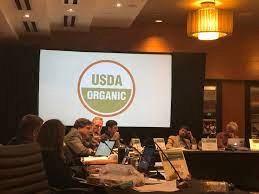
With the publication of the proposed Organic Livestock and Poultry Standards Rule to be issued under the National Organic Program, the USDA-AMS is attempting to clarify inconsistencies in housing and production practices for livestock and poultry that have existed since passage of the Organic Foods Production Act (OFPA) despite the issue of regulations dating from December 2000 onwards.
With respect to egg production, the key issues of contention have been the extent of outside access and specifically whether enclosed covered porches are regarded as providing equivalence. Other issues include rearing of pullets, stocking densities for floor and aviary systems and latitude in interpretation of rules by various certifying agencies credentialed by AMS.
At the outset, it is recognized that the rules developed and issued by the AMS to comply with the OFPA have integrated concepts of welfare with organic status. In its essentials the term “Organic” relates specifically to feeding non-GMO ingredients and eliminating the use of pesticides and drugs in production. Welfare aspects were incorporated into the conceptual foundation to establish an organic program for the U.S. There was evidently a convergence between the altruistic intentions of AMS staff and the desire by aspirant and existing egg producers, many of whom were small-scale family farmers, to maintain a level of differentiation and exclusivity from intensive production to justify high selling prices and margins.
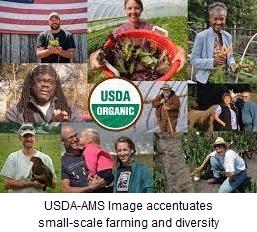 Development of rules under which certified production occurs is guided by the National Organics Standards Board, the composition of which has been dominated by producers and has been lacking in scientific and technical expertise. Accordingly, many of the existing rules and their interpretation of what constitutes acceptable compliance with the standards of organic production has been captive to subjective interpretation. This has resulted in inequities and in some cases, selective engagement of certifying agencies. A March 2010 report by the Office of the Inspector General of the USDA highlighted inequities in providing outside access by flocks. This is evidenced by disputes over the validity of certifying enclosed porches, the subject of prolonged appeals and litigation from 2002 through 2007 (Massachusetts Independent Certification Inc. v Johanns) Development of rules under which certified production occurs is guided by the National Organics Standards Board, the composition of which has been dominated by producers and has been lacking in scientific and technical expertise. Accordingly, many of the existing rules and their interpretation of what constitutes acceptable compliance with the standards of organic production has been captive to subjective interpretation. This has resulted in inequities and in some cases, selective engagement of certifying agencies. A March 2010 report by the Office of the Inspector General of the USDA highlighted inequities in providing outside access by flocks. This is evidenced by disputes over the validity of certifying enclosed porches, the subject of prolonged appeals and litigation from 2002 through 2007 (Massachusetts Independent Certification Inc. v Johanns)
The AMS is naturally concerned over consumer perceptions and the integrity of the USDA Organic seal. Accepting housing and production practices that in the perception of AMS administrators deviate from inadequately-defined principles of what constitutes “organic” production have motivated successive cycles of rulemaking with the intent of narrower interpretation and stricter compliance.
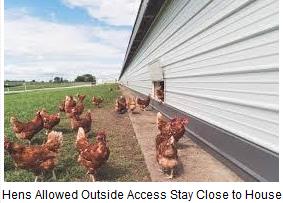 Consumer acceptance of organic eggs is less a function of a multiplicity and rigor of rules than it is simply shelf price. It is a matter of record that from January 2012 to the present, growth in organic production has lagged non-organic, cage-free production. Certified organic hens now represent approximately 18 percent of the pre-HPAI non-caged flock of 105 million hens. It is also accepted that a proportion of organic eggs are down-classified to cage-free during periods of decreased demand. Consumer acceptance of organic eggs is less a function of a multiplicity and rigor of rules than it is simply shelf price. It is a matter of record that from January 2012 to the present, growth in organic production has lagged non-organic, cage-free production. Certified organic hens now represent approximately 18 percent of the pre-HPAI non-caged flock of 105 million hens. It is also accepted that a proportion of organic eggs are down-classified to cage-free during periods of decreased demand.
The emergence of non-USDA certification programs for pasture-raised eggs confirms that there is a limited demand for eggs with this desired welfare attribute selling at $7 to $9 per dozen. The potential market comprises an affluent demographic supporting less than one percent of national production.
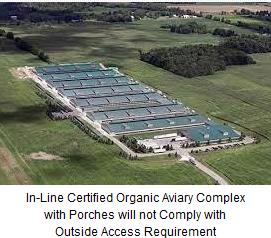 The proposed Rule will explicitly disallow the use of enclosed covered porches as equivalent to outside access. This stipulation would effectively disqualify almost half of current organic egg production if immediately implemented. The proposed Rule will allow noncompliant existing operations a specified period to either come into compliance or cease producing under the Certified Organic program. Existing production units certified within three years of the implementation of the Rule will have to comply with outdoor space requirements within either five or fifteen years according to the option determined. This provision, irrespective of duration avoids the potential market disruption arising from an immediate reduction in the availability of organic eggs. The delay if adopted does however question the integrity of the program or alternatively suggests that the proposed outside access requirements are unnecessary. The proposed Rule will explicitly disallow the use of enclosed covered porches as equivalent to outside access. This stipulation would effectively disqualify almost half of current organic egg production if immediately implemented. The proposed Rule will allow noncompliant existing operations a specified period to either come into compliance or cease producing under the Certified Organic program. Existing production units certified within three years of the implementation of the Rule will have to comply with outdoor space requirements within either five or fifteen years according to the option determined. This provision, irrespective of duration avoids the potential market disruption arising from an immediate reduction in the availability of organic eggs. The delay if adopted does however question the integrity of the program or alternatively suggests that the proposed outside access requirements are unnecessary.
There is no scientific or health-related reason why genetically modified ingredients should not be fed to livestock. None of the DNA of GMO corn or soybeans is passed to eggs, although the imposition of the non-GMO rule doubles the cost of feed. Requirements relating to pesticides and drugs are justified in the context of organic certification. Given the differential in price between organic and cage-free production, there is an incentive to deviate from prescribed practices. Certification relies on audits that effectively comprise a review of documentation and physical inspection of facilities and flocks. There is no analytical component to confirm the absence of pesticides or drugs. Cases of fraud that have been disclosed in the supply of domestic organic ingredients suggests that the AMS Certified Organic System may, in fact, be based on good intentions and rely on a paper trail of questionable value. The organic status of imported ingredients and products are, at best, suspect and should be realistically evaluated by administrators of the program.
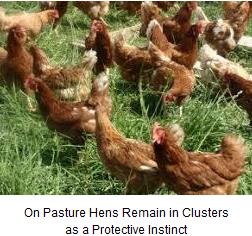 The five or fifteen-year grandfathering of inline aviary complexes with enclosed porches indicates a tacit acceptance that outside access on the soil is functionally unnecessary. The AMS recognizes that summary disqualification of these facilities would reduce the availability of organic eggs. Producers who comply with an immediate requirement for approximately two square foot of outside access per hen would raise their prices and consumers would be confronted with $7 per dozen eggs, sharply reducing demand. It is presumed that with eventual attainment of equilibrium between supply and demand, Certified Organic after the Rule would settle at below $6 per dozen. The immediate response of the owners of highly efficient in-line complexes with porches would be to create a new category of product. This would involve certified non-GMO-feed, absence of pesticides and antibiotics and humanely managed flocks allowed adequate space. A registered logo based on defined standards and third-party auditing would then compete with a product that would sell below $4 per dozen, effectively diluting the market acceptability of eggs with the AMS Certified Organic seal. The five or fifteen-year grandfathering of inline aviary complexes with enclosed porches indicates a tacit acceptance that outside access on the soil is functionally unnecessary. The AMS recognizes that summary disqualification of these facilities would reduce the availability of organic eggs. Producers who comply with an immediate requirement for approximately two square foot of outside access per hen would raise their prices and consumers would be confronted with $7 per dozen eggs, sharply reducing demand. It is presumed that with eventual attainment of equilibrium between supply and demand, Certified Organic after the Rule would settle at below $6 per dozen. The immediate response of the owners of highly efficient in-line complexes with porches would be to create a new category of product. This would involve certified non-GMO-feed, absence of pesticides and antibiotics and humanely managed flocks allowed adequate space. A registered logo based on defined standards and third-party auditing would then compete with a product that would sell below $4 per dozen, effectively diluting the market acceptability of eggs with the AMS Certified Organic seal.
The proposed changes in management and housing designated in the proposed rule are included in a companion article in this edition. The USDA-AMS has scheduled a virtual listening session on August 19th over a two-hour period to receive comments regarding the proposal. Irrespective of responses, the proposed amendments are certain to be imposed. This is notwithstanding the lack of scientific and financial justification. The proposed Rule represents a combination of altruistic concepts and perceptions of welfare coupled with a measure of producer self-interest, all inherent to the evolution of the Organic Foods Production Act of 2000.

|
Opposition to VSD+ Within Veterinary Profession
|
07/28/2022 |
|
Animal Rights Activists within the veterinary profession led by Dr. Crystal Heath, a practitioner in Berkeley, CA. have initiated a program of opposing ventilation shut down (VSD) with or without heat or carbon dioxide as a means of mass depopulation of caged flocks infected with highly pathogenic avian influenza. Carbon dioxide foam was used for floor-housed flocks
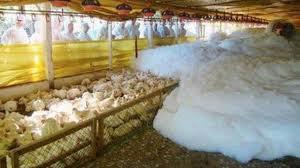
Based on her social media posts Dr. Heath is virulently opposed to VSD and her writing suggests a streak of zealotry. She has connections to Direct Action Everywhere (DxE) and advocates a brand of militant veganism with implicit condemnation of intensive livestock production.
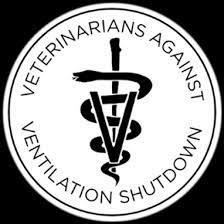
Protests against the AVMA policy on euthanasia that recognizes VSD as an extreme last resort approach to mass depopulation has resulted in resolutions to the AVMA. This is an acceptable approach but a demonstration at the home of Dr. Janet Dolin, Executive Director of the Association, is decidedly unprofessional and a distortion of First-amendment rights.
The threat of militant demonstrations has resulted in the Executive of the American Veterinary Medical Association to advise attendees at the AVMA convention to avoid confrontation, to refrain from public statements and to remove ID badges outside the convention hotel.
Regrettably direct opposition to Dr. Heath and her compatriots will only embolden her and provide the means to generate wider publicity for their cause. Unfortunately, extreme vegans and even those opposed to intensive livestock production fail to recognize the need to depopulate flocks that have become infected with avian influenza. If nothing were to be done, up to 99 percent of a flock would inevitably die but over a period of time. Allowing infected flocks to proliferate and release virus will only prolong outbreaks and result in higher cost to producers, the public sector and consumers.
As veterinarians we recognize the need for euthanasia of flocks that are in any event doomed to prevent further dissemination of the disease. Characteristically opponents of VSD can offer no practical alternative to depopulate flocks more quickly or humanely. If HPAI becomes endemic or even seasonally endemic as a result of sequential introduction and spread of virus by migratory and even domestic birds, prevention based on a combination of immunization and biosecurity will be required to maintain commercial poultry production at an economically acceptable level.

To this end a conference in Paris attended by leading experts on avian influenza, immunology and epidemiology will consider scientific and regulatory aspects of infection with an emphasis on vaccines and their trade implications.
It is hoped that any protests directed against VSD at the AVMA Convention will be muted and conducted in a civilized manner. Violence will only polarize the profession and will be counterproductive to the opponents of the procedure sanctioned as a last resort.

|
Support for an Independent Food Safety Agency Gathers Momentum
|
07/21/2022 |
|
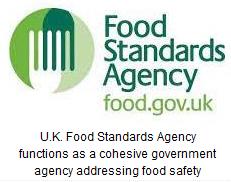 Representative Rosa DeLauro (D-CT) and Senator Dick Durbin (D-IL) have sponsored the Food Safety Administration Act with additional co-sponsers including Senator Richard Blumenthal (D-CT) and five Representatives. This legislation is endorsed by the Center for Food Safety, the Consumer Federation of America, Consumer Reports, the Environmental Working Group, STOP Foodborne Illness, and the Center for Environmental Health, all of which can be regarded as moderate and mission-focused. Representative Rosa DeLauro (D-CT) and Senator Dick Durbin (D-IL) have sponsored the Food Safety Administration Act with additional co-sponsers including Senator Richard Blumenthal (D-CT) and five Representatives. This legislation is endorsed by the Center for Food Safety, the Consumer Federation of America, Consumer Reports, the Environmental Working Group, STOP Foodborne Illness, and the Center for Environmental Health, all of which can be regarded as moderate and mission-focused.
The motivation for the Act recognizes numerous deficiencies in the FDA despite liberal funding, suggesting that lack of money is not the basic deficiency. Recent problems include:-
- Failure to recognize and respond proactively and aggressively to the prescription opioid crisis,
- Tardiness in developing regulations to limit use and abuse of E-cigarette products by minors,
- Failure to detect and respond to heavy metal contamination of baby food and juices
- The inadequate development of the Final Rule to prevent Salmonella in Eggs with subsequent field implementation that proved to be unprofessional, inappropriate and uduly expensive.
- Delay in implementing the Food Safety Modernization Act
- Failure to identify the long-term contamination of infant formula with Cronobacter resulting in illnesses, wide-scale inconvenience and political embarrassment for the Administration.
- Failure to address the sequence of foodborne infections attributed to leafy greens and produce
- Delay in addressing and regulating antibiotic use in livestock production
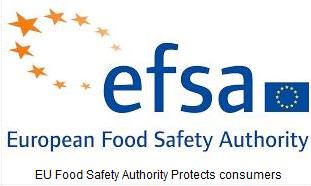 The proposed legislation would establish a single food agency separate from the current FDA with leadership appointments requiring Senate confirmation. The intent is to move the Center for Food Safety and Applied Nutrition, the Center for Veterinary Medicine and the Office of Regulatory Affairs to a separate entity apart from the FDA within the Department of Health and Human Services. This will be analogous to moving deck chairs from the port side of the Titanic to the starboard side. The deficiency in the proposed legislation is that it fails to recognize the dual jurisdictions of the current Food and Drug Administration and the USDA Food Safety and Inspection service, responsible for red meat and poultry. Foodborne episodes caused by either pathogens or contaminants should be prevented by a single entity. The proposed food safety agency should have complete jurisdiction as recommended by a panel of the National Academy of Sciences and by numerous commentators including EGG-NEWS and CHICK-NEWS that have advocated a single U.S. dedicated entity for over five years analagous to agencies in the E.U. and the U.K. The proposed legislation would establish a single food agency separate from the current FDA with leadership appointments requiring Senate confirmation. The intent is to move the Center for Food Safety and Applied Nutrition, the Center for Veterinary Medicine and the Office of Regulatory Affairs to a separate entity apart from the FDA within the Department of Health and Human Services. This will be analogous to moving deck chairs from the port side of the Titanic to the starboard side. The deficiency in the proposed legislation is that it fails to recognize the dual jurisdictions of the current Food and Drug Administration and the USDA Food Safety and Inspection service, responsible for red meat and poultry. Foodborne episodes caused by either pathogens or contaminants should be prevented by a single entity. The proposed food safety agency should have complete jurisdiction as recommended by a panel of the National Academy of Sciences and by numerous commentators including EGG-NEWS and CHICK-NEWS that have advocated a single U.S. dedicated entity for over five years analagous to agencies in the E.U. and the U.K.
Establishing a U.S. food safety agency would allow for an appropriate organizational structure with staffing by competent administrators and scientists free from the current restraints in FDA that emphasize pharmaceuticals and biologics over food. Rep. DeLauro commented, “Food safety is currently a second class citizen of the Food and Drug Administration.” Her additional statement that, “Right now there are no food policy experts in charge of food safety at the FDA” is only partly correct. The FDA appointed Frank Yiannas to the position of Deputy Commissioner for Food Policy and Responsibility. He is an acknowledged expert in the field and has considerable commercial experience. His is a staff position without defined authority and arcording to reports is sequestered by line administrators to the detriment of the Agency. Investigation of the Center for Food Safety and Applied Nutrition demonstrated profound deficiencies in leadership, organization and staffing, impacting effectiveness.
 Admittedly, separating food safety from the existing FDA would be a step forward, but the intended action will fall short of the ultimate objective of seamless oversight of food safety. Washington abhors major jurisdictional changes. Following the September 11th attack, the Department of Homeland Security came into existence, incorporating the functions of related agencies to the benefit of our national wellbeing. By the same token the U.S. is facing a slow motion disaster through deterioration in food safety that could be addressed by a radical reorganization. To be other than “more of the same” would require merger of the food safety responsibilities of the current FSIS and the FDA. Salmonella adulteration whether in ice cream, eggs or on broiler meat is still Salmonella. Although sources may be different, the implications for consumers are similar. The appropriate disciplines including epidemiology, food science, analytical chemistry and microbiology are common to developing meaningful rules and guidance documents, conducting field investigations and regulating manufacturing and distribution of food irrespective of vehicles of infection. If an administrative change is considered desirable, then a single and comprehensive restructuring of the FDA and FSIS and their merger to create an independent agency analagous to the EPA will be required to correct existing deficiencies and establish a more secure future. But Naah, we have lobbyists! Admittedly, separating food safety from the existing FDA would be a step forward, but the intended action will fall short of the ultimate objective of seamless oversight of food safety. Washington abhors major jurisdictional changes. Following the September 11th attack, the Department of Homeland Security came into existence, incorporating the functions of related agencies to the benefit of our national wellbeing. By the same token the U.S. is facing a slow motion disaster through deterioration in food safety that could be addressed by a radical reorganization. To be other than “more of the same” would require merger of the food safety responsibilities of the current FSIS and the FDA. Salmonella adulteration whether in ice cream, eggs or on broiler meat is still Salmonella. Although sources may be different, the implications for consumers are similar. The appropriate disciplines including epidemiology, food science, analytical chemistry and microbiology are common to developing meaningful rules and guidance documents, conducting field investigations and regulating manufacturing and distribution of food irrespective of vehicles of infection. If an administrative change is considered desirable, then a single and comprehensive restructuring of the FDA and FSIS and their merger to create an independent agency analagous to the EPA will be required to correct existing deficiencies and establish a more secure future. But Naah, we have lobbyists!

|
Pressure On USDA From The Left
|
07/14/2022 |
|
The Farm Action and Open Markets Institute, a think tank with a decidedly socialistic orietation, recently graded Federal Departments with respect to competition and antitrust activity. The Department of Justice and the Federal Trade Commission were assigned B- scores but USDA received a D+.
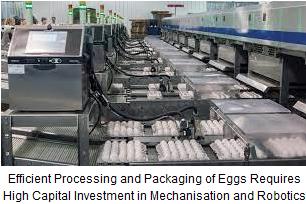
The Institute used the Administration Executive Order on competition as the criterion noting that both the DOJ and the FTC have been aggressive in questioning mergers and advancing farmer-friendly rules, including “The Right to Repair” and “Made in the USA Labeling” as examples of progressive action. The Department of Agriculture was criticized for inactivity in a number of what the Institute regards as critical areas for apparent lack of finality in issuing rules under the Packers and Stockyards Act to protect alleged exploitation and to oppose consolidation through mergers.
The USDA has indicated that it intends to eliminate the tournament system widely used in the broiler industry. Joe Maxwell, President of Farm Action, maintains that even if the contemplated rule is issued, it will be essentially cosmetic in that contractors will simply be provided with more information. The proposed rule will not impart any significant bargaining power to individual farmers. The USDA has yet to restore the organizational structure of the Department to the form that existed before and during the Obama Administration. Secretary of Agriculture, Dr. Sonny Perdue, effected a number of changes combining the Agricultural Marketing Service with the Grain Inspection, Packers and Stockyards Administration (GIPSA), diluting the effectiveness of the Agency.
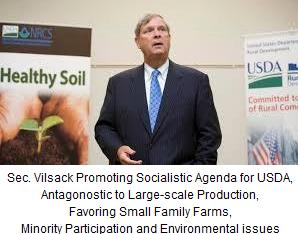 It is apparent that activists from the left are pressuring the USDA and specifically a compliant Secretary of Agriculture to make changes that would have profound and unintended consequences. A high level of efficiency in the U.S. livestock industry is exemplified by traditionally low prices to consumers. Economies of scale, application of the mechanization and logistics in live bird production and processing have allowed egg, broiler and turkey producers to minimize cost of production and to market products in a competitive environment. It is apparent that activists from the left are pressuring the USDA and specifically a compliant Secretary of Agriculture to make changes that would have profound and unintended consequences. A high level of efficiency in the U.S. livestock industry is exemplified by traditionally low prices to consumers. Economies of scale, application of the mechanization and logistics in live bird production and processing have allowed egg, broiler and turkey producers to minimize cost of production and to market products in a competitive environment.
Market forces have driven consolidation and integration to the ultimate benefit of consumers over the past five decades. Proponents of a socialistic system abhor intensification and large-scale enterprises. They hanker for a reversion to some form of 19th century multipurpose family-farm system selling products at farmers’ markets and grocery stores. This denies the reality of the population shift from rural areas that was evident from the First World War onwards. In 2021 less than two percent of the U.S. population were classified as ‘farmers’ by the Census Bureau. This complement together with paid farm and plant workers feeds the U.S. and makes possible an extensive export market. Intensification can only be achieved through capital investment in advanced technology and the planning and execution that achieves high levels of productivity.
The USDA is expending public funds to create alternatives to existing red meat and poultry production that has evolved through a logical expansion in scale. Dispersing grants and loans in small amounts will do little to increase production. There may be some local benefits in establishing small-scale, labor-intensive meat and poultry plants, but in reality, these enterprises would not come into existence without government support. It is questioned whether the USDA has either the responsibility or the justification to oppose economic realities and expend taxpayer funds to attempt to turn back the clock by a century.
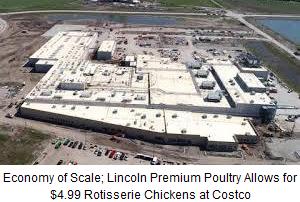 If there are inequities in egg, broiler or turkey production, then the individual circumstances should be examined, and appropriate remediation applied. At this time, the number of aspirant broiler contractors and applicants for expansion of their production facilities far exceeds those who are retiring or relinquishing contracts. If there are inequities in egg, broiler or turkey production, then the individual circumstances should be examined, and appropriate remediation applied. At this time, the number of aspirant broiler contractors and applicants for expansion of their production facilities far exceeds those who are retiring or relinquishing contracts.
In their period of tenure extending to January 2025, the Administrators of the USDA will not be able to accomplish any material changes in the structure of intensive livestock production, since they will be attempting to resist economic realities. The USDA and Comrade Vilsack would be well advised to find ways to support livestock agriculture instead of attempting to restructure production according to an outdated and un-American model. A review of E.U. agriculture illustrates the effect of hyper-regulation, government intervention and economic distortion.
It isn’t broken, so please don’t try and fix it to suit your political inclinations.

|
Greenwashing Lawsuits – Cause for Concern
|
07/13/2022 |
|
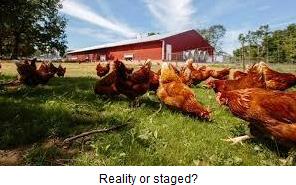 The PETA inspired lawsuit Usler v. Vital Farms Inc. represents a new challenge to egg producers promoting either welfare or environmental attributes on labels. Ever eager to misuse the legal system to advance a vegan agenda, PETA with its vast resources and funding contrived a class to sue Vital Farms, a certified B corporation trading as VITL. Vital Farms reported revenue of $77 million for the first quarter of fiscal 2022. The company receives eggs from as many as 250 contractors and distributes product nationally. The PETA inspired lawsuit Usler v. Vital Farms Inc. represents a new challenge to egg producers promoting either welfare or environmental attributes on labels. Ever eager to misuse the legal system to advance a vegan agenda, PETA with its vast resources and funding contrived a class to sue Vital Farms, a certified B corporation trading as VITL. Vital Farms reported revenue of $77 million for the first quarter of fiscal 2022. The company receives eggs from as many as 250 contractors and distributes product nationally.
According to carton labels and information posted on their website, Vital Farms claims “pasture-raised” management according to “ethical” principles. Production conforms to the standards established by Humane Farm Animal Care (HAFC) and farms are audited by Oregon Tilth.
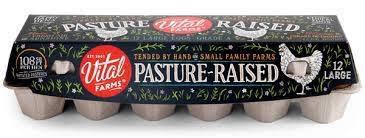 The class-action lawsuit against Vital Farms and three officers is based on label statements specifying “pasture-raised” and “humane treatment”. PETA disputes the claims that they consider to be misleading and representing deceptive advertising in contravention of Section 5 of the FTC Act. The class-action lawsuit against Vital Farms and three officers is based on label statements specifying “pasture-raised” and “humane treatment”. PETA disputes the claims that they consider to be misleading and representing deceptive advertising in contravention of Section 5 of the FTC Act.
Following pre-trial motions, the Court dismissed claims against officers based on the Plaintiff failing to demonstrate individual responsibility. This aspect will be revisited in subsequent filings. Vital Farms was however unsuccessful in attempting to have the case dismissed. The Court rejected the defense that the HFAC seal denoting welfare certification justified the commercial claims. Applying tortured logic PETA submitted that the HFAC standards as defined were not necessarily understood by consumers, notwithstanding a website reference documenting these standards. The Court also rejected the claims of “ethical production” since these were subjective and aspirational in concept and could be misinterpreted by consumers.
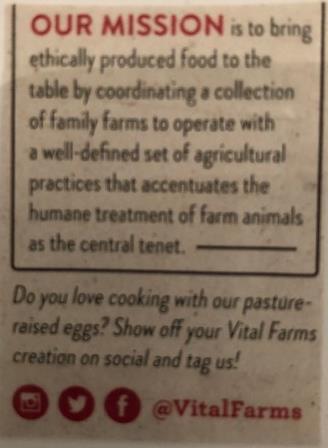 In a review of Greenwashing litigation Attorney Nathan Huff of law firm K&L Gates, LLP considered five areas of concern arising from the PETA attack on Vital Farms. These included: In a review of Greenwashing litigation Attorney Nathan Huff of law firm K&L Gates, LLP considered five areas of concern arising from the PETA attack on Vital Farms. These included:
- Label statements and claims may invite Greenwashing lawsuits
- Since it is difficult to substantiate label claims including “sustainable”, “all natural” and “humane” producers using undefined terms are vulnerable to litigation
- Reliance on an accepted welfare or environmental certification maybe inadequate to defend a label claim
- Individual officers are vulnerable to litigation and may become defendants in Greenwashing lawsuits.
It is anticipated that PETA and kindred organizations will be emboldened by either a settlement or an outright win and will then scrutinize label claims across a broad section of livestock production with respect to either welfare or sustainability.
 Attorney Huff recommends careful analysis of all label text and images on cartons with the need to substantiate statements with supporting evidence. Producers should adhere to the principles defined in the Federal Trade Commission Green Guides. The question of third-party certification for humane management or sustainability should be carefully scrutinized especially if there is any concern regarding the credentials of the certifying agency or the auditors. Attorney Huff recommends careful analysis of all label text and images on cartons with the need to substantiate statements with supporting evidence. Producers should adhere to the principles defined in the Federal Trade Commission Green Guides. The question of third-party certification for humane management or sustainability should be carefully scrutinized especially if there is any concern regarding the credentials of the certifying agency or the auditors.
It stands to reason that producers who make extreme claims for either sustainability or welfare will be most vulnerable to litigation. Attempting to “out-welfare” competitors in promotional campaigns, labels, text or images on cartons or on websites will be an invitation to animal welfare activists.

|
SCOTUS Limits EPA Authority To Regulate Power Plant Emissions
|
07/05/2022 |
|
 The Clean Power Plan, introduced during the Obama Administration, aimed at reducing carbon dioxide and other emissions from coal-fired power plants. The proposal was opposed by the coal-generation industry with SCOTUS setting aside implementation. In the event, economic forces limited the use of coal as a fuel in favor of natural gas, based on the lower cost to generate electrical power. The Clean Power Plan, introduced during the Obama Administration, aimed at reducing carbon dioxide and other emissions from coal-fired power plants. The proposal was opposed by the coal-generation industry with SCOTUS setting aside implementation. In the event, economic forces limited the use of coal as a fuel in favor of natural gas, based on the lower cost to generate electrical power.
During the past week SCOTUS ruled 6 to 3 along ideological lines in West Virginia v EPA, confirming that the EPA did not have authority under the Clean Air Act to limit greenhouse gas emissions. In writing for the majority, Chief Justice John Roberts noted, “Capping carbon dioxide emissions at a level that will force a nationwide transition away from the use of coal to generate electricity may be a sensible solution to the crisis of the day but it is not plausible that Congress gave EPA the authority to adopt, on its own, such a regulatory scheme.” In a concurring opinion, Justice Neil Gorsuch noted, “Under the doctrine’s terms administrative agencies must be able to point to clear Congressional authorization when they claim the power to make decisions of vast economic and political significance.”
Writing for the dissent, Justice Elena Kagan responded, “Today the court strips the EPA of the power Congress gave it to respond to the most pressing environmental challenge of our time.”
It is evident from the SCOTUS decision that EPA lacks Congressional authority for wide sweeping regulations. Applying the precedent established by West Virginia v EPA, regulations issued by any government agency may be questioned with regard to whether the intended rules conform to the intent of Congress and whether specific authorization has been provided in the form of legislation. The question devolves into whether agencies with a mix of political and professional management are in a better position to regulate within their jurisdictions or whether intervention (micromanagement?) by Congress should be the deciding factor in developing rules that govern agriculture, health, stock markets, transport and every aspect of the U.S. economy. The SCOTUS decision and its ramifications could be easier to accept if Congress was less deadlocked and able to function expeditiously in a non-partisan mode.
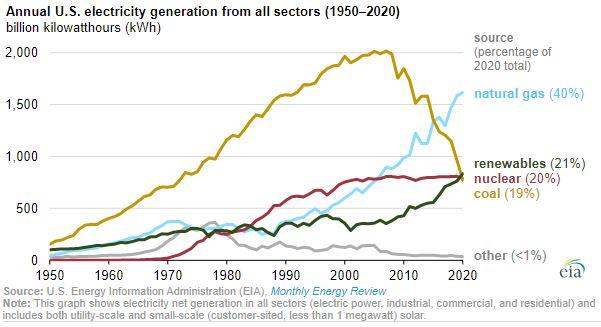 |
It is evident from the SCOTUS decision that the court recognized the “crisis of the day”. The majority decision however was based on whether agencies have Congressional approval to issue regulations. With respect to the environment, there is no question that man-made greenhouse gas emissions are changing the atmosphere and oceans. Climate change is not a hoax. It is a scientific reality:
- The carbon dioxide content of the atmosphere has increased from approximately 280 ppm at the beginning of the industrial age, rising to 370 ppm in 2000 and attaining 410 ppm in 2020.
- Concurrently, global temperatures have risen since the advent of the industrial era with coal as a major fuel by approximately 0.14 F per decade since 1880. The rate has increased sharply since 2018 to a level of 0.32 F per decade. Average temperatures during 2013 through 2021, included the hottest years on record
- The partial pressure of carbon dioxide in seawater, with oceans serving as both as a temperature and carbon dioxide sink, increased from 325 micro atmospheres in 1985 to 375 micro atmospheres in 2015.
- The pH level of oceans declined from 8.10 to 8.07 from 1985 to 2015. The combination of increased carbon dioxide and higher acidity has affected marine life, including bleaching of corals and has affected the migratory patterns and availability of fish and seafood.
- Sea surface temperature increased approximately 1.0F between 1980 and 2020. Heat stored in the oceans has increased by 18x1027 joules.
- Sea level increased by 10 inches between 1880 and 2020. This has resulted in increased flooding along the East Coast and Gulf with an increase in number of flood days ranging from 5 to 15 over the period 2011 to 2020.
Apart from the irrefutable quantitative measures relating to carbon dioxide and temperature, it is evident that climatic extremes, including hurricanes, floods and droughts have intensified since 2000. The frequency and severity of wildfires on all continents have increased.
 The June 25th edition of The Economist reviewed the necessary transition from reliance on carbon-based generation of power to alternatives. Renewables, including solar and wind, are replacing conventional fossil-fuel generation in many nations despite problems relating to the management of grids receiving power from both controllable generation and from renewables. During mid-afternoon on April 3rd, 97 percent of California’s power was derived from wind and solar. Computerized management of grids is allowing integration of renewable power into extensive systems. The Berlin-based utility, 50-Hertz, is supplying 18 million users in eastern and northern Germany, managing a transmission grid supplied 50 to 60 percent by wind and solar power. The situation in Western Europe is currently complicated by the geopolitical realities arising from the invasion of Ukraine and the need to reduce dependence on oil and gas from Russia. The June 25th edition of The Economist reviewed the necessary transition from reliance on carbon-based generation of power to alternatives. Renewables, including solar and wind, are replacing conventional fossil-fuel generation in many nations despite problems relating to the management of grids receiving power from both controllable generation and from renewables. During mid-afternoon on April 3rd, 97 percent of California’s power was derived from wind and solar. Computerized management of grids is allowing integration of renewable power into extensive systems. The Berlin-based utility, 50-Hertz, is supplying 18 million users in eastern and northern Germany, managing a transmission grid supplied 50 to 60 percent by wind and solar power. The situation in Western Europe is currently complicated by the geopolitical realities arising from the invasion of Ukraine and the need to reduce dependence on oil and gas from Russia.
Storage is a major restraint to using renewables. Alternative technologies, including advanced batteries, are now technically feasible and economically acceptable for homes and small businesses. More advanced forms of energy storage are under consideration including liquid carbon dioxide and latent heat systems.
 Nuclear generation can be environmentally neutral. It requires capital-intensive installations and long periods for construction and approval. Advances in developing smaller and more efficient plants offer the promise of future reliable power generation, provided the problem of disposal of nuclear waste can be resolved. Nuclear generation can be environmentally neutral. It requires capital-intensive installations and long periods for construction and approval. Advances in developing smaller and more efficient plants offer the promise of future reliable power generation, provided the problem of disposal of nuclear waste can be resolved.
The oil and gas industry must improve retention of methane, which is released from oil wells and pumping stations. The fact that methane is a highly destructive greenhouse gas should intensify efforts to reduce emissions. Practical solutions offer short-term payback in terms of savings in natural gas released into the atmosphere.
The efficiency of generation from natural gas can be improved by using Allam-cycle technology requiring installations combining a combustor, a turbine, a heat exchanger and compressor.
Hydrogen offers the potential to decarbonize power generation. It is expected that by 2030, hydrogen will be economically competitive with fossil fuels.
During the decade preceding 2020, wind generation capacity increased by four-fold and solar by eighteen-fold. There are currently more jobs in the solar (230,000) and wind (85,000) industries in the U.S than in coal mining (63,000). This reality should be taken into account by legislators representing Appalachia and Wyoming.
If we are to bequeath a livable planet to our grandchildren, we must be realistic with regard to the impact of industry and our lifestyle on the environment. Fortunately, alternative technologies are emerging to transition from traditional fossil fuels and to make abundant U.S. natural gas environmentally more acceptable.
The most recent SCOTUS decision relates to constitutional issues and the relative powers of the Legislative and Executive branches of government. The outcome of West Virginia v EPA is not necessarily a victory for either party, especially over the long term. Let us hope our political leaders, academia and industry will be able to work together to develop practical and economically acceptable alternatives to coal. We must develop solutions that maintain our standard of living without additional environmental degradation.

|
SCOTUS To Hear Proposition #12 Appeal; Implications for the Future
|
06/29/2022 |
|
 On March 28th, the Supreme Court of the United States (SCOTUS) granted a writ of certiorari and will accordingly review the decision of the U.S. Court of Appeals for the 9th Circuit in re National Pork Producers Council v. Karen Ross, the Secretary of the California Department of Food and Agriculture. At issue is the constitutionality of California Proposition #12. This ballot initiative passed with 63 percent of those voting in November 2018 and was upheld by the 9th Circuit. The Proposition strengthened and resolved vague wording in the 2008 California Proposition #2 by specifically mandating space requirements for livestock species, including 24 square foot per confined sow, effectively eliminating the use of gestation crates used by producers for 75 percent of pork production. On March 28th, the Supreme Court of the United States (SCOTUS) granted a writ of certiorari and will accordingly review the decision of the U.S. Court of Appeals for the 9th Circuit in re National Pork Producers Council v. Karen Ross, the Secretary of the California Department of Food and Agriculture. At issue is the constitutionality of California Proposition #12. This ballot initiative passed with 63 percent of those voting in November 2018 and was upheld by the 9th Circuit. The Proposition strengthened and resolved vague wording in the 2008 California Proposition #2 by specifically mandating space requirements for livestock species, including 24 square foot per confined sow, effectively eliminating the use of gestation crates used by producers for 75 percent of pork production.
SCOTUS will determine whether California has the right to mandate production practices and impose requirements on producers in other states for products intended for sale in the state. It is a matter of record that California consumes 13 percent of all pork produced in the U.S. but only produces 0.2 percent of the state requirement, effectively making consumers dependent on other states.
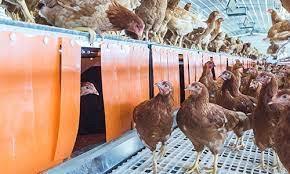 The case before SCOTUS will not consider the merits of stocking density and the Justices should ignore welfare aspects. The constitutional issue relates to freedom of interstate commerce that impacts the various levels of production including breeding, growing, packing, further processing, shipping and the distribution of pork. The case before SCOTUS will not consider the merits of stocking density and the Justices should ignore welfare aspects. The constitutional issue relates to freedom of interstate commerce that impacts the various levels of production including breeding, growing, packing, further processing, shipping and the distribution of pork.
Advocates for and against Proposition #12 have emerged submitting amicus briefs to the court. A number of welfare organizations, including the Humane Society of the United States, Animal Legal Defense Fund, Animal Equality, the Humane League, Compassion and World Farming USA and others have urged the court to uphold the decision of the 9th Circuit.
In 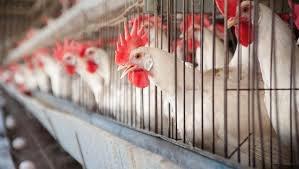 opposition, Attorneys General of 26 states have filed a joint brief claiming that California Proposition #12 is unconstitutional. The submission by Eric Schmitt, Attorney General of Missouri, includes the statement, “California Proposition #12 is a paradigm of unconstitutional extra-territorial regulation: It requires hog, chicken and veal-calf farmers in every state to follow California’s animal-confinement rules on pain of exclusion from the market in California.” opposition, Attorneys General of 26 states have filed a joint brief claiming that California Proposition #12 is unconstitutional. The submission by Eric Schmitt, Attorney General of Missouri, includes the statement, “California Proposition #12 is a paradigm of unconstitutional extra-territorial regulation: It requires hog, chicken and veal-calf farmers in every state to follow California’s animal-confinement rules on pain of exclusion from the market in California.”
California Proposition #2 and subsequent legislation to protect in-state producers and rules that initially impacted the egg industry were justified on the false premise that caged hens were more likely to be infected with Salmonella and that interstate restrictions were justified on the basis of food safety. States can impose quarantines with related rules prohibiting movement of animal and plant products across state borders, specifically to interdict transmission of a disease or pest. Embargos are usually lifted after resolution of the situation and activities are under the control of the USDA Animal and Plant Health Inspection Service in cooperation with state departments of agriculture. With respect to pork introduced into California from other states, there is no evident food safety issue, given that the confinement regulation applies to the parent generation of the hogs that are grown for slaughter.
Opposition to Proposition #12 was strengthened by a decision of the Solicitor General, Elizabeth Prelogar, to submit a brief on behalf of the Federal government and to present oral evidence before SCOTUS on Tuesday October 11th. This action was taken despite pressure to support Proposition #12 by 16 senators, including Dianne Feinstein (D-CA) and Cory Booker (D-NJ). In their letter to the Solicitor General urging support of Proposition #12, the senators incorrectly invoked “health and safety of California consumers, increasing the risk of foodborne illness” and the need to “phase out extreme methods of farm animal confinement”.
It is highly likely that SCOTUS will reverse the decision of the U.S. Court of Appeals for the 9th Circuit with implications for all livestock producers, including the egg production industry. It is evident that if the appeal is granted, California egg producers will be placed at a disadvantage, having invested in conversion to aviary and barn housing including erection of on-line complexes to supply the state market. highly likely that SCOTUS will reverse the decision of the U.S. Court of Appeals for the 9th Circuit with implications for all livestock producers, including the egg production industry. It is evident that if the appeal is granted, California egg producers will be placed at a disadvantage, having invested in conversion to aviary and barn housing including erection of on-line complexes to supply the state market.
In the event of California Proposition #12 being declared unconstitutional a number of outcomes are probable:-
- Further investment in cage-free housing, specifically to supply the California and New England markets, will cease. Consumers in California currently pay a premium for eggs as a result of Propositions #2 and #12, colloquially referred to as the “Pacelle Tax”. Consumers in the state will now have the option to purchase lower-priced cage-free eggs that will indirectly compete and thereby reduce the price of domestic and introduced cage-free product and severely reduce margins for California producers. With respect to conversion from cages to alternative systems, the nation’s largest egg producer that has expended in excess of $600 million on upgrades and conversions has indicated that further replacement of cages would depend on market demand.
- Retailers will reconsider commitments to convert to sourcing shell eggs and liquid by 2025 now 30 months away. Conversion from cages was in large measure the result of coercion of retailers, QSRs, the food service segment and manufacturers by welfare activist groups, including HSUS, in 2020. Some retailers, including Costco and restaurant chains, have complied but others are obviously evaluating commitments made in haste in 2020. It is evident that the restaurant industry including QSRs, have the potential to pass on the additional cost of eggs and liquid in their menu prices. The retail segment would benefit from having a range of eggs available, including low-priced caged product, especially for low-income consumers impacted by an inflationary environment. It is axiomatic that when surveyed, everyone is in favor of welfare but only a small proportion of consumers are willing to pay extra for the sentiment. Reversal of the 9th Circuit decision on Proposition #12 will provide cover for retailers and restaurants to modify their 2020 commitments and continue to stock eggs from caged flocks. It is anticipated that retailers will market a range of shell eggs priced according to housing system, nutrient enrichment and brand, whether national or chain-specific.
- Producers may reevaluate enriched colony modules. During the first decade of this century, UEP and HSUS jointly cooperated for passage of a so-called “Egg Bill” that would have imposed a national standard of 110 square inches per hen and allowed enriched colony modules as an alternative to conventional cages. In the event, the Egg Bill was not enacted attributed to opposition by pork producers who were intent on retaining gestation crates for sows. Rejection of Proposition #12 would provide an opportunity to revisit consumer and customer acceptability of enriched colony modules. This would be especially beneficial, given that in anticipation of the “Egg Bill” producers replaced obsolete cages with enrichable units that could now be converted to enriched modules.
- Animal welfare organizations will intensify their efforts to oppose cage housing and to demonize egg production. Efforts will be made to introduce ballot initiatives in eligible states. Lobbying will be implemented to introduce bans on cage housing through the legislative process although this has previously represented an unproductive route to eliminating cage housing. It is unlikely that states that have committed to phase out cages will rescind their decisions in the intermediate term. The U.S industry will become a patchwork of cage and cage-free states but without restrictions on interstate movement creating opportunities for expansion and relocation of production centers.
The decision of SCOTUS may be predicted from oral arguments but a final ruling on the constitutionality of Proposition #12 will be at the pleasure of the Court. Hopefully before the end of 2022, a decision one way or the other will provide certainty for the egg industry with regard to future planning and capital investment. Given prolonged low margins in years preceding the advent of Proposition #12, producers have little in the way of capital reserves to fund conversion. New facilities will require loan capital at increasing interest rates with supply chain restrictions and inflation in steel and other components escalating the cost to convert from conventional cages to alternative housing systems. A decision by SCOTUS that Proposition #12 is unconstitutional will absolve the industry of additional capital expenditure for conversion, given that close to 30 percent of the national flock are already housed in alternative systems. The supply of cage-free eggs appears to be balanced with demand at prevailing prices. Essentially the U.S. egg production industry will benefit from a reversal of the 9th Circuit decision on Proposition #12. We can only await the decision by SCOTUS and continue restocking after the HPAI epornitic.

|
APHIS Celebrates 50th Anniversary- Future Challenges
|
06/20/2022 |
|
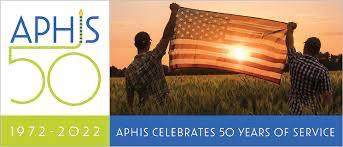 The USDA-Animal Plant and Health Inspection Service (APHIS) celebrates 50 years of service having been founded during April 1972. In a recent edition of the American Veterinarian Medical Association weekly newsletter, Kevin Shea, Director of APHIS, was interviewed regarding past achievements, the current status of the Agency and future prospects. The primary missions of APHIS are to interdict foreign animal diseases at our borders and to control and eliminate exotic infections as and where they occur. The USDA-Animal Plant and Health Inspection Service (APHIS) celebrates 50 years of service having been founded during April 1972. In a recent edition of the American Veterinarian Medical Association weekly newsletter, Kevin Shea, Director of APHIS, was interviewed regarding past achievements, the current status of the Agency and future prospects. The primary missions of APHIS are to interdict foreign animal diseases at our borders and to control and eliminate exotic infections as and where they occur.
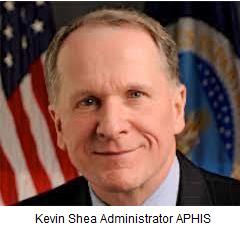 Shea noted the eradication of bovine brucellosis and Cochliomyia (screwworm) infestation in cattle as two major achievements of the Agency. Advances have been made in suppressing tuberculosis through cooperative federal and state programs. APHIS was instrumental in establishing a surveillance program for bovine spongiform encephalopathy that maitained the export volume of U.S. beef. Shea noted the eradication of bovine brucellosis and Cochliomyia (screwworm) infestation in cattle as two major achievements of the Agency. Advances have been made in suppressing tuberculosis through cooperative federal and state programs. APHIS was instrumental in establishing a surveillance program for bovine spongiform encephalopathy that maitained the export volume of U.S. beef.
It was ironic that that when APHIS was developed from the then USDA Bureau of Animal Management, it was involved in eradication of exotic Newcastle disease (END) then referred to as VVND. Fifty years later, APHIS is dealing with the tail of the third serious epornitic of Highly Pathogenic Avian Influenza (HPAI) since inception of the Agency. Effectively, control and eradication of catastrophic poultry diseases is unchanged over 50 for a half-century. The approach comprises rapid diagnosis, flock depletion and disposal, creating areas of zone surveillance with quarantine and restrictions of movement. Diagnostic technology has improved from the dependence on hemagglutination serology and viral isolation with identification in SPF embryos. The current approach applies immuno-based techniques including lateral flow immunodiffusion for rapid screening of suspect flocks, followed by PCR in regional laboratories to confirm a diagnosis, accelerating the process of flock depletion and concurrent control measures.
With each succeeding HPAI epornitic, APHIS has demonstrated a faster response due to preemptive contingency planning and organization. More resources in the form of qualified and trained personnel are available for field deployment. With respect to floor-housed flocks, mass euthanasia using carbon dioxide foam has expedited flock depletion. To date APHIS has not developed a simple, rapid method of depleting cage and aviary-housed flocks other than enhanced VSD. This deficiency represents the greatest challenge with respect to numbers of birds on affected large complexes with the potential to disseminate virus to adjacent complexes and farms.
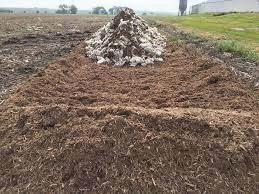 Administrator Shea pointed to the change in training of professional personnel over 50 years. He noted that the Agency has moved from recruiting veterinarians from private practice in mid-career to more recent graduates with training in infectious disease epidemiology. This is evident from webinars presented by APHIS, but it is questioned as to whether their role could become more proactive. The 2022 outbreak of HPAI is the issue in contention. Highly Pathogenic Avian Influenza in commercial flocks in the U.S. was preceded by isolation of the predominant H5N1 strain in free-living birds in the Maritime Provinces at the turn of the year and followed by an extension southward from Maine to Florida over succeeding weeks. Administrator Shea pointed to the change in training of professional personnel over 50 years. He noted that the Agency has moved from recruiting veterinarians from private practice in mid-career to more recent graduates with training in infectious disease epidemiology. This is evident from webinars presented by APHIS, but it is questioned as to whether their role could become more proactive. The 2022 outbreak of HPAI is the issue in contention. Highly Pathogenic Avian Influenza in commercial flocks in the U.S. was preceded by isolation of the predominant H5N1 strain in free-living birds in the Maritime Provinces at the turn of the year and followed by an extension southward from Maine to Florida over succeeding weeks.
The initial outbreaks in large-egg production complexes occurred at the end of February in Delaware along the Atlantic Flyway. In mid-March, outbreaks occurred in Iowa and Wisconsin presumably from migratory birds transitioning the Mississippi Flyway and prevailing through the beginning of April with a case requiring extensive depletion in Nebraska. A cluster of cases then occurred in mid-April in Lancaster County, Pennsylvania. The Central Flyway was involved in late April and again, in early June in Colorado. As of June 6th, 31.4 million laying hens have been depleted in 24 locations in nine states.
The fact that the 2022 strain of H5N1 carried Eurasian genes suggested transfer of the virus from Northern Europe through the island nations of the North Atlantic to the Canadian Province of Newfoundland and Labrador. Given that HPAI is transmitted by free-living birds, most of which are clinically unaffected, requires a radical change in APHIS strategy. It is now no longer possible to exclude this disease at our borders an approach that is appropriate for exotic diseases of hogs including ASF or foot and mouth infection in cattle.
It is a matter of record that as early as late March EGG-NEWS suggested that APHIS provide a preliminary review of epidemiologic factors relating to outbreaks among the initial cases in large-egg production complexes. As of mid-April, almost 20 million hens had been depleted in seven complexes. Surely, results of an initial evaluation, including whole genome sequencing of isolates and a preliminary case-controlled study could have been performed with interim results available to the industry. Any obvious findings could have been applied to possibly prevent subsequent outbreaks based on identified deficiencies in biosecurity. It was clearly stated at the time that an interim report would be of more value in mid-April 2022 than a comprehensive study in 2024. Even as the 2022 epornitic appears to be at an end corresponding to the same week of the year as the previous 2015 event, there is still reliance on the same basic biosecurity measures based on traditional and heuristic principles. Obvious questions relating to future control and prevention include:-
- Infectivity of the H5N1 strain of the virus for various commercial poultry species and molecular characteristics of the 2020 strain carrying Eurasian genes,
- Routes of introduction into a specific area,
- Methods of introduction onto complexes and farms for diverse poultry species,
- Why many at-risk complexes were unaffected despite high risk of exposure
- The range and role of airborne transmission,
- Persistence of virus in the environment,
- Possibility of endemic wild birds and mammals serving as future reservoir populations.
Guidance from the APHIS based on value judgment opinions derived from preliminary field and laboratory epidemiology, may have provided practical suggestions to prevent additional outbreaks during late April through early June. Although the poultry industry recognizes the achievements of APHIS over the past, it must be recognized that the approach of the Agency to any catastrophic disease of poultry including END and HPAI has not altered since 1972.
Given the development and application of DNA vaccines, currently being evaluated in France and vector vaccines deployed in Egypt and Mexico, APHIS, in collaboration with USDA-ARS, the biopharmaceutical industry, the World Organization for Animal Health (WOAH=OIE) and academia should prepare for the next HPAI epornitic involving the uapplication of immunization. The poultry industry and specifically the egg production segment, requires a rapid and comprehensive epidemiologic study in order to correct any defects in biosecurity or industry practices in advance of the next outbreak. Although we were relatively unaffected between 2015 and 2022, there is no assurance, given changes in the virus and the pattern of distribution by migratory waterfowl and seabirds, that we will not be facing additional epornitics in 2023 and succeeding years.
The sentiments expressed by Administrator Shea indicate a future for APHIS characterized by the introduction of a higher level of technology. This will be welcome to the poultry sector, given the immense cost of controlling and eradicating HPAI. The infection can no longer be regarded as exotic but is now seasonally endemic following introduction by migratory birds in the E.U and North America. Given the changed epidemiology of the disease, APHIS should adapt and make use of all available resources to respond to future challenges. The past 50-years is now history. We look to APHIS for innovation as the challenges of exotic diseases intensify and the financial and supply-chain consequences of infection become more apparent.

|
The World Faces Common Environmental Challenges
|
06/15/2022 |
|
 Gaining a world perspective is a direct consequence of foreign travel. Over the past week Barbara and I have moved around in Germany observing agriculture and interacting with their citizens both natural born and immigrant. An outstanding impression is that despite distance we all are faced with similar problems impacting the environment, the economy, availability of resources and concern over the future. There are differences among nations and our homeland as to the priorities, approaches to solutions and commitment but the basic challenges exist. We are all concerned over :- Gaining a world perspective is a direct consequence of foreign travel. Over the past week Barbara and I have moved around in Germany observing agriculture and interacting with their citizens both natural born and immigrant. An outstanding impression is that despite distance we all are faced with similar problems impacting the environment, the economy, availability of resources and concern over the future. There are differences among nations and our homeland as to the priorities, approaches to solutions and commitment but the basic challenges exist. We are all concerned over :-
- Climate change with the prospect of severe weather events
- Population growth exceeding food supply, accentuating the differences between industrialized and developing nations leading to disharmony and competition
- Reduced availability of resources including water, non-destructive energy and building materials
- Environmental degradation from industrial and domestic pollution with accumulation of toxins affecting the health of humans and the productivity of livestock
- Emergence of international aggression based on competition for resources or misplaced territorial ambitions resulting in disruption in food supplies, and commerce and intensifying human misery.
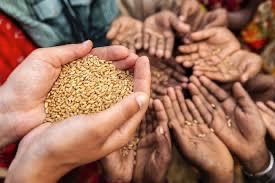 The relative importance of these factors depends on location, time and public perceptions and priorities. These may change depending on circumstances. Whilst U.S. citizens may be concerned over the environmental conditions for their grandchildren, war refugees and those displaced by drought are preoccupied with their next meal and shelter for the current night. The relative importance of these factors depends on location, time and public perceptions and priorities. These may change depending on circumstances. Whilst U.S. citizens may be concerned over the environmental conditions for their grandchildren, war refugees and those displaced by drought are preoccupied with their next meal and shelter for the current night.
The U.S. despite immense resources cannot assume sole responsibility for addressing insufficiencies and inequalities that exist within and beyond our borders. Cooperation with other nations to develop action plans and allocate aid and resources are essential to effect any measurable improvement. Perhaps the U.S could make the greatest contribution through developing and adapting technology.
Some of the areas that could be considered include:-
- Nuclear energy to displace fossil-fueled power generation and for desalination, supplementing sources of alternatives including wind and solar.
- Wider adoption of GM crops. The sustainability of “organic” production and small-scale agriculture is currently being questioned in the E.U. despite traditional support.
- Replacement of potentially toxic industrial and agricultural chemicals with more acceptable compounds. Demonizing beneficial and innocuous products as at present is counterproductive.
- More effective collection, recycling and disposal of industrial waste.
- Extending internet communications to disseminate productive information to assist developing nations.
- Developing water-conservation programs involving minimization of loss, effective irrigation and recycling.
Our own industry is a model of efficiency despite problems including periodic overproduction, disease and supply-chain disruptions. Eggs provide a balanced supply of amino acid with a highly efficient feed conversation. Relative to other intensive livestock species we produce more food per unit of power, feed ingredients and water consumed, produce less waste and with mechanization operate with high labor efficiency, but only with confined systems.
The problems facing the World will not be resolved quickly or without sacrificing current standards of living. We can but hope for a plateau in environmental degradation while longer-term solutions are devised and implemented. Denial of scientific reality is not a valid option. We have the power to reverse the situation that has been created but only with commitment, resolve and international cooperation.

|
USDA Intends “Transforming The Food System”
|
06/03/2022 |
|
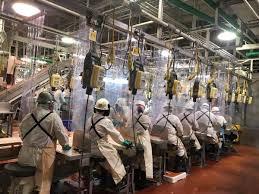 On June 1st, the USDA announced a program to “transform the food system”. The cost of the various initiatives will be $2,845 million. Although to the current Administration, that’s just one of a series of numbers in a universe of infinite spending of funds that has added to the national debt . On June 1st, the USDA announced a program to “transform the food system”. The cost of the various initiatives will be $2,845 million. Although to the current Administration, that’s just one of a series of numbers in a universe of infinite spending of funds that has added to the national debt .
The objectives of the intended transformation will include:
- Avoiding supply chain disruptions such as occurred during the COVID crisis in 2020. This would be achieved through increasing the capacity of small packing plants and cold storage installations
- A reduction in the regional concentration of facilities.
- Creating a ‘fairer’ food system that avoids oligopoly in meat and poultry processing.
- Providing nutritious food to all consumers with an implied emphasis on lower income and minority demographics.
- Introducing equity with special reference to underserved and rural communities experiencing poverty.
The intended expenditure of close to $3 billion would be justifiable if the objectives were to be achieved and within a relatively short period. Even superficial evaluation of the program suggests that much of the allocation would be devoted to the social, environmental and rights agenda of the Administration using the USDA as a vehicle.
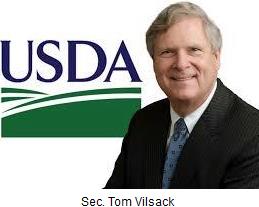 Among the food production initiatives, the USDA intends investing $300 million in a new “organic transition”. Agricultural economists and agronomists consistently criticize organic production as being non-sustainable and providing little in the way of improved nutrition but at a high cost. Stocking shelves of boutique food stores with expensive produce will not contribute to any of the transitional aspirations of the framework. Among the food production initiatives, the USDA intends investing $300 million in a new “organic transition”. Agricultural economists and agronomists consistently criticize organic production as being non-sustainable and providing little in the way of improved nutrition but at a high cost. Stocking shelves of boutique food stores with expensive produce will not contribute to any of the transitional aspirations of the framework.
USDA intends to spend $75 million to support ‘urban agriculture’. Studies have shown that turning vacant lots in inner cities into vegetable gardens does little to improve nutrition and the projects are financially non-viable. They do, however, make for good photo-ops for USDA administrators and politicians and certainly benefit local activists. If urban agriculture is an objective then high-tech capital intensive vertical farming should be considered. Anything less is moving bricks and scratching soil.
Independent meat and poultry processing plants will be collectively supported by grants totaling $375 million. Previously, CHICK-NEWS and EGG-NEWS have opined that sprinkling public money over many small projects does little to improve total meat supply. Free market forces drive the establishment of highly efficient and capital-intensive projects such as a proposed South Dakota plant, capable of processing 8,000 head per day. The capital investment of $1.1 billion will provide consumers with more meat at a cheaper price than 400 small plants processing 20 animals per day.
The USDA intends to provide $600 million in financial assistance to support the food chain infrastructure for other than meat and poultry. Investments will include cold storage, refrigerated vehicles and processing facilities. Why has the USDA elected to compete directly with companies that have already committed capital to facilities that presumably provide a return on investment? The fact that public-sector funding is required suggests financial non-viability.
A $400 million allocation will be used to create “regional food business centers”. The objective of this considerable sum is vague and conflicts with the activities of the Small Business Administration. Again, the USDA intends favoring “underserved communities” that will ultimately benefit local politicians without necessarily contributing to either more or cheaper food.
Some projects could alleviate existing problems providing they are designed, implemented and above all, monitored to ensure achievement of objectives. These include $60 million for the farm-to-school program, $90 million to prevent food loss and wastage, technical assistance and training and $100 million for the Healthy Food Incentive Fund, concentrating on school feeding.
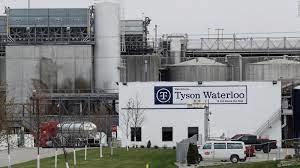 Despite questioning the motivation for the Administration intention to “transform the food system” and the mechanism selected, there is obvious concern over accountability. It will be necessary to monitor expenditure and above all, recognizing results through quantifying the return on investment attained by projects. Neither the previous nor the present Administrations can account for the vast sums expended to support the economy during the worst months of the COVID epidemic. Irrespective of which Administration occupies the White House, USDA has developed an advanced capacity to distribute money without necessarily being able to account for expenditures or to measure results. Despite questioning the motivation for the Administration intention to “transform the food system” and the mechanism selected, there is obvious concern over accountability. It will be necessary to monitor expenditure and above all, recognizing results through quantifying the return on investment attained by projects. Neither the previous nor the present Administrations can account for the vast sums expended to support the economy during the worst months of the COVID epidemic. Irrespective of which Administration occupies the White House, USDA has developed an advanced capacity to distribute money without necessarily being able to account for expenditures or to measure results.
It is conceded that problems occurred during the COVID crisis. Concentration of production capacity among a few companies and a limited number of highly efficient plants allows for large-scale production and distribution. This approach carries the attendant risks of disruption by a common factor. In 2020 COVID infection among line workers became a serious limiting factor to output in the U.S and the E.U. Despite a sharp but transitory decline in red meat output, in the event preventive measures restored production even before the advent of a vaccine. This was achieved through the initiatives introduced by the major red meat and chicken companies with minimal input from the CDC and OSHA.
We should learn from the problems that occurred in 2020 and make appropriate improvements and changes that have and will continue to require investment. The USDA has a role to play in providing technological input but should not take on the responsibility of restructuring the meat industry. Attempts to create an alternative production system or breaking up the “Big Four” will be disruptive and contrary to the principles of free-enterprise.
Secretary Vilsack and his senior administrators should examine the effects of extreme social engineering on agriculture, including starvation in the Soviet Union caused by inappropriate collectivization; mass famine in China; the East African Groundnut debacle conceived and implemented by the post-World War II Labor Government of the U.K.; pre-Borlaug grain production in socialist India and the destruction of the vibrant chicken industry in Venezuela by idealistic and corrupt socialism.
Admittedly, we have problems, but these can be resolved using available resources. These include agricultural economists and agronomists in the Land Grant universities and the USDA and above all, contributions from competent managers and technicians in industry. The USDA should be promoting dialog and cooperation among stakeholders not trying to establish a new paradigm. The expedient of throwing money at presumed deficiencies and attempting to resolve long-standing problems will be expensive and ultimately unsuccessful. Attempts to correct economic policies that impacted disadvantaged groups will not be achieved during the transitory tenure of this Administration and its Department of Agriculture. Preserve us from the zealots, do-gooders and social engineers among the political appointees at the USDA. Unrestrained by Congress they will throw out the baby with the bathwater!

|
The Abbott Infant Formula Debacle- Lessons To Be Learned
|
05/29/2022 |
|
It is an unfortunate reality that a major crisis including fires in petrochemical plants or an extensive foodborne disease outbreak such as the SE event of 2010 and the most recent disruption in the supply of infant formula serves to focus attention on a problem. Intervention by government agencies and Congress with accompanying revelations emerging from media scrutiny usually results in some form of preventive action to avert a recurrence.
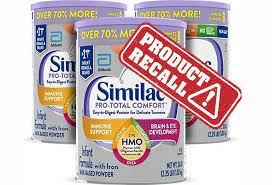
In the case of the ongoing shortage of infant formula, there is a lot of blame to go around. There is no centralized reporting system for outbreaks of Cronobacter sakazakii in infants other than in Minnesota. Accordingly, mild infections may not have been diagnosed and only severe cases presenting as encephalitis were documented. In the absence of mandatory reporting and a central registry, paralleling FoodNet, problems may persist without investigation as to causation. More aggressive involvement by the Centers for Disease Control and Prevention in an earlier stage in the outbreak might have quantified the extent of the problem.
The Food and Drug Administration bears a heavy responsibility for lack of oversight of the implicated Abbott Nutrition, Sturgis, MI. plant that clearly was deficient with respect to physical facilities, equipment and above all, the inherent culture of safety and quality in the manufacturing facility. As an aside, one might question the competence of the FDA to monitor any pharmaceutical plant either in the U.S. or Asia supplying ingredients and drugs consumed by our population. The FDA is also faulted for inaction, having failed to follow up on deficiencies noted on previous inspections of the Sturgis facility. A fully documented and credible whistleblower report sent directly in October 2021 to the Director of the FDA and senior administrators including Dr. Susan Mayne, Director of the Center for Food Safety and Applied Nutrition did not elicit a response for three months. An inspection of the plant then revealed deficiencies characterized by Rep. Janice Schakowski (D-IL) as “disgusting”. The magnitude of problems both physical and managemental were clearly described in the FDA Complaint served on Abbott Nutrition resulting in a Consent Agreement, effectively an admission of guilt.
The major blame for the undesirable situation can be laid at the door of Abbott Laboratories extending downward to their subsidiary, Abbott Nutrition. Regrettably the Sturgis plant was responsible for a high proportion of U.S. production. Effectively, Abbott Nutrition, Gerber and Reckitt collectively manufacture ninety percent of U.S. infant formula including special products for children with exceptional needs. The FDA Complaint, based on the allegations of the whistleblower and a series of inspections of the plant in January 2022, identified numerous problems resulting in an extensive recall of product and closure of the facility. In accordance with the Consent Agreement extensive changes in the plant must be completed before resuming operation scheduled for mid-June 2022. The question of retraining personnel, introduction of appropriate production and quality control procedures and amending the culture of management from “making numbers” to a preoccupation with safety will obviously require a longer period with close surveillance by qualified and disinterested third party auditors authorized by the FDA.
The problems facing the manufacturer are exemplified by the self-exculpatory opinion published in the Washington Post by Robert Ford, Chairman of Abbott Laboratories. The article ran counter to all accepted principles of crisis control. At the outset, Ford should be referred to the action taken by James Burke, Chairman of Johnson and Johnson, following the 1982 Tylenol tampering event. The immediate response of Burke to the Tylenol toxicity that was not due to any deficiency of Johnson and Johnson is regarded as a classic in crisis control. Despite the fact that the problem was caused by malicious tampering to cover a homicide, Burke took responsibility, immediately recalled all Tylenol products, made himself available to the media on a daily basis, expressed a clear plan to resolve the issue and provided consumers with assurances and a timeline for resolution.
 Ford, from his article, obviously parsed by corporate and outside counsel, has failed on all counts as measured against the Johnson and Johnson standard. His preamble dealt with the acceptance and function of diagnostic tests made by Abbott Laboratories, irrelevant to the problem of contaminated infant formula from a defective plant. He referred to the recall as a voluntary action in the interests of consumers of Similac™ formula. The recall would have been mandated so the action by Abbott was in no way virtuous. The Ford article noted, “We will not take risks when it comes to the health of children.” This is belied by the FDA Complaint detailing falsification of documents, actions to deceive FDA inspectors, tolerance with obvious deficiencies in equipment and operation and a culture in which achievement of budgeted volume and profit took precedence over the safety of product. Ford in no way communicated that, as a corporate entity, Abbott was responsible for the problem, or that long-standing deficiencies and contamination existed. Referring to the claimed safety of Abbott products on store shelves, Ford stated, “What is available has passed rigorous inspections.” This is incorrect since there is adequate evidence that microbiological testing of product was inadequate and, that in some cases, batches were consigned to retail without review of results and were even shipped with known contamination. Ford, from his article, obviously parsed by corporate and outside counsel, has failed on all counts as measured against the Johnson and Johnson standard. His preamble dealt with the acceptance and function of diagnostic tests made by Abbott Laboratories, irrelevant to the problem of contaminated infant formula from a defective plant. He referred to the recall as a voluntary action in the interests of consumers of Similac™ formula. The recall would have been mandated so the action by Abbott was in no way virtuous. The Ford article noted, “We will not take risks when it comes to the health of children.” This is belied by the FDA Complaint detailing falsification of documents, actions to deceive FDA inspectors, tolerance with obvious deficiencies in equipment and operation and a culture in which achievement of budgeted volume and profit took precedence over the safety of product. Ford in no way communicated that, as a corporate entity, Abbott was responsible for the problem, or that long-standing deficiencies and contamination existed. Referring to the claimed safety of Abbott products on store shelves, Ford stated, “What is available has passed rigorous inspections.” This is incorrect since there is adequate evidence that microbiological testing of product was inadequate and, that in some cases, batches were consigned to retail without review of results and were even shipped with known contamination.
 To complicate the issue, the culture of the Sturgis plant generated management and peer retaliation against any individual questioning inappropriate practices. The whistleblower was terminated after considerable internal pressure following expressions of concern over alleged procedures that may have contributed to contamination of product. Ford noted in his article that, “Data collected during the investigation, genetic sequencing, retained product samples and available product from the four complaints did not find any connection between our products and the four reported illnesses in children.” This is a direct denial of responsibility. The fact that Cronobacter sakazakii was present both in the plant and in samples of Abbott product constitutes res ipso loquitor. Under oath, newly appointed FDA Commissioner, Dr. Robert Califf, noted that whole genome sequencing (WSG) assays performed by FDA were in fact inconclusive. The contention that because a preliminary WSG procedure did not absolutely demonstrate a correlation is misleading and scientifically insupportable. The reliance on preliminary WSG data to create the impression that Abbott Nutrition is “off the hook” is eerily reminiscent of the denial of responsibility by the Managing Director of Enterprise Foods in the Republic of South Africa, responsible for the most extensive Listeria outbreak ever recorded. During the early stages of investigation preliminary WSG assays of plant and product isolates failed to correlate with the genetic sequence of numerous Listeria isolates from early patients. Subsequent epidemiological investigations and additional WSG assays confirmed the source of the plant and its salami product as the vehicle of widespread infection. To complicate the issue, the culture of the Sturgis plant generated management and peer retaliation against any individual questioning inappropriate practices. The whistleblower was terminated after considerable internal pressure following expressions of concern over alleged procedures that may have contributed to contamination of product. Ford noted in his article that, “Data collected during the investigation, genetic sequencing, retained product samples and available product from the four complaints did not find any connection between our products and the four reported illnesses in children.” This is a direct denial of responsibility. The fact that Cronobacter sakazakii was present both in the plant and in samples of Abbott product constitutes res ipso loquitor. Under oath, newly appointed FDA Commissioner, Dr. Robert Califf, noted that whole genome sequencing (WSG) assays performed by FDA were in fact inconclusive. The contention that because a preliminary WSG procedure did not absolutely demonstrate a correlation is misleading and scientifically insupportable. The reliance on preliminary WSG data to create the impression that Abbott Nutrition is “off the hook” is eerily reminiscent of the denial of responsibility by the Managing Director of Enterprise Foods in the Republic of South Africa, responsible for the most extensive Listeria outbreak ever recorded. During the early stages of investigation preliminary WSG assays of plant and product isolates failed to correlate with the genetic sequence of numerous Listeria isolates from early patients. Subsequent epidemiological investigations and additional WSG assays confirmed the source of the plant and its salami product as the vehicle of widespread infection.
The Sturgis plant of Abbott Nutrition has failed to support the integrity of the Similac™ brand and the Abbott corporate image as a major pharmaceutical company. Ford has tolerated and even engendered a management culture preoccupied with production and profit to the detriment of quality and safety. One might question whether this situation exists in other Abbott facilities or for that matter, in other production units operated by major pharmaceutical companies flying under the insensitive FDA radar.
 Ford did not have the courage to appear before the Subcommittee on Oversight and Investigation of the House Committee on Energy and Commerce. He dispatched a Vice-President, Christopher Calamari, to respond to questions. The grilling of this corporate officer elicited evasive, defensive and self-serving responses indicating a denial of corporate responsibility. Calamari claimed to be unaware of a problem of culture at the Sturgis plant and responded to the fact that Cronobacter was isolated within the plant as “It wasn’t in the production area” and that Cronobacter is a “naturally occurring” potential pathogen. The fact that under the Consent Decree, Abbott replaced roofs, floors and changed procedures confirms that deficiencies existed that should have been recognized and rectified as preventive measures. Ford did not have the courage to appear before the Subcommittee on Oversight and Investigation of the House Committee on Energy and Commerce. He dispatched a Vice-President, Christopher Calamari, to respond to questions. The grilling of this corporate officer elicited evasive, defensive and self-serving responses indicating a denial of corporate responsibility. Calamari claimed to be unaware of a problem of culture at the Sturgis plant and responded to the fact that Cronobacter was isolated within the plant as “It wasn’t in the production area” and that Cronobacter is a “naturally occurring” potential pathogen. The fact that under the Consent Decree, Abbott replaced roofs, floors and changed procedures confirms that deficiencies existed that should have been recognized and rectified as preventive measures.
Congress will have to deal with the obvious dereliction of responsibility by FDA. Clearly, deficiencies in both structure and personnel were highlighted in a recent investigative report. Abbott will now face punitive action by the FDA and also the Department of Labor for their apparently unjustified termination of the whistleblower. More importantly, the tort bar is firing up their word processors and the legal, financial and reputational consequences will be severe for corporate management, Abbott Laboratories and shareholders. The circumstances are similar to the events leading to an extensive outbreak of salmonellosis precipitated by the Peanut Corporation of America that resulted in extensive prison terms for the brothers Parnell and QC personnel.
The question remains as to how many more ticking time bombs there may be in the food and pharmaceutical industries that are currently obscured by manufacturers. The current infant formula debacle developed through the incompetence, lack of imagination and a pedestrian business-as-usual mode of operation of regulatory bodies including the FDA that is tasked and funded to maintain public health.

|
Ominous Words Expressed During Walmart Conference Call
|
05/24/2022 |
|
 Following the May 17th Walmart Q1 release, analysts questioned CEO, Doug McMillon, and John R. Furner, President and CEO of Walmart U.S., during the subsequent conference call. McMillon noted that, “We want customers to have lower prices on food and we will partner with suppliers on the food and consumable side to bring those costs down.” Following the May 17th Walmart Q1 release, analysts questioned CEO, Doug McMillon, and John R. Furner, President and CEO of Walmart U.S., during the subsequent conference call. McMillon noted that, “We want customers to have lower prices on food and we will partner with suppliers on the food and consumable side to bring those costs down.”
McMillon believes that customers will be under pressure as a result of inflation opining, “They need our help” adding, “We will stay focused on opening price-point food items to assist customers at the lower end of the income scale to be able to afford to feed their families.” Furner stated, “We’ve got to make sure we’re doing everything we can with our suppliers to manage our costs so that we can keep food pricing in a great spot for our customers.” Furner committed the company to, “work together with our supply base in proteins and dairy to keep costs low”.
As the largest food retailer, Walmart will set the standard for a retail environment in which higher costs for food items cannot be passed onto consumers. Analyst, Robert Moskow, of Credit Suisse, believes that Walmart will be less flexible with vendors on food pricing and that suppliers will be under considerable pressure to keep prices low so that Walmart can maintain revenue but at the same time, achieve acceptable gross margins. This presumably will be at the expense of suppliers. It is noted that for the first quarter of FY 2022, ending April 30th, Walmart gross margin fell by 3.2 percent to 24.5 percent and that operating margin was down by 24 percent to 3.8 percent compared to the corresponding quarter in FY 2021.
T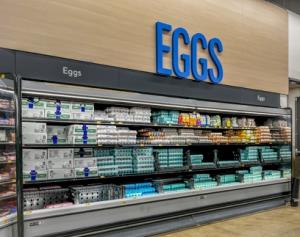 here was no mention in the conference call of the inflationary pressures experienced by suppliers. Feed costs have risen and there is every prospect of future increases as a result of geopolitical events, late planting of the corn crop and continued demand for soybeans by China. In addition, labor, power and fuel costs have increased. The USDA benchmark production cost of 84.5 cents per dozen for April understates fixed costs for new cage-free facilities, and does not include costs for processing, packaging and distribution. The current high wholesale prices resulting from the depletion of 30 million hens due to HPAI has obscured in large measure, inflation in production costs. Based on the events during the HPAI epornitic of 2015, supply of shell eggs will increase in relation to demand, reducing prices and hence, margins. here was no mention in the conference call of the inflationary pressures experienced by suppliers. Feed costs have risen and there is every prospect of future increases as a result of geopolitical events, late planting of the corn crop and continued demand for soybeans by China. In addition, labor, power and fuel costs have increased. The USDA benchmark production cost of 84.5 cents per dozen for April understates fixed costs for new cage-free facilities, and does not include costs for processing, packaging and distribution. The current high wholesale prices resulting from the depletion of 30 million hens due to HPAI has obscured in large measure, inflation in production costs. Based on the events during the HPAI epornitic of 2015, supply of shell eggs will increase in relation to demand, reducing prices and hence, margins.
It is evident that Walmart will lead other retailers in aggressive purchasing, placing margins in jeopardy. Shell egg producers will have little flexibility in negotiation under conditions of moderate over-production. The current relationship between producers and chain buyers is based on a single price discovery system representing an impediment to a free market. It is clear that the benchmark price amplifies both downward and upward swings as at present. Over the long-term the single benchmark price functions to the detriment of the industry. Grain-based pricing is not generally beneficial to all producers. EGG-NEWS has consistently advocated for a CME quotation on Midwest large as a more representative and equitable basis for pricing. Analysts expect that Walmart will use their volume to pressure suppliers and adopt what Robert Moskow characterizes as an “inflexible stance” on pricing.

|
Reevaluation of HPAI Control--An International Challenge
|
05/15/2022 |
|
The traditional approach to stamping-out Highly Pathogenic Avian Influenza that occurs as sporadic outbreaks is outmoded. This is evidenced by the current H5N1 panornitic involving North America, Europe, Eurasia and parts of Africa.
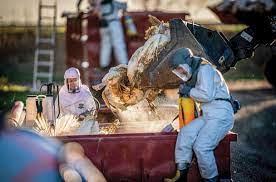
Vaccination is under evaluation as a component of integrated control programs including biosecurity and flock depletion. It is evident that once a flock is infected, removal and disposal is justified based on the need to prevent multiplication and dissemination of virus. If, however, populations and especially those in areas with a high concentration of poultry are immunized, the rate of spread may well be diminished, reducing the financial impact of infection.
Vaccines are used for many catastrophic diseases of livestock in combination with judicious depletion. Fear of losing potential exports as a result of application of vaccine that implies an endemic status has limited the use of vaccines. Oil emulsion products homologous with the hemagglutin of the infected virus have been moderately successful in suppressing strains of Avian Influenza in Mexico, China, Italy and other nations. China has achieved success with H7 Avian Influenza vaccine specifically to prevent H7N9 infection of consumers of chicken purchased at wet markets.
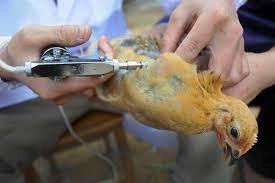 Advances in vaccine technology offer the prospect of more effective immunization. Boehringer Ingelheim has developed Volvac® B.E.S.T a bacculovirus vectored Newcastle disease and H5N1 avian influenza product now deployed in Mexico and Egypt against H5N1. Ceva has developed an RNA vaccine that is undergoing tests in domestic waterfowl in France under the control of the Agency for Food, Environmental and Occupational Health and Safety. Advances in vaccine technology offer the prospect of more effective immunization. Boehringer Ingelheim has developed Volvac® B.E.S.T a bacculovirus vectored Newcastle disease and H5N1 avian influenza product now deployed in Mexico and Egypt against H5N1. Ceva has developed an RNA vaccine that is undergoing tests in domestic waterfowl in France under the control of the Agency for Food, Environmental and Occupational Health and Safety.
If importing nations recognize the World Organization of Animal Health principle of regionalization, embargoes following outbreaks of Avian Influenza can be confined to specific regions. The fact that Avian Influenza is now a panornitic and is spread by migratory waterfowl implies seasonal endemnicity with recurring outbreaks over extensive areas. This situation now demands extremely expensive control campaigns with the inevitability of reintroduction on a seasonal basis.
|
With the evolution of HPAI as a panornitic new control modalities are required especially in areas with a high density of poultry. An effective vaccine should be regarded as a component of an integrated system to suppress outbreaks of HPAI. Eradication, even on a national basis, appears unlikely for extended periods. Epidemiologic resources including genome sequencing, development of a new range of vaccines with recognition that HPAI is an international problem, should lead to new approaches based on prevention. It is self-evident that programs should take into account that migratory waterfowl and other birds disseminate Avian Influenza viruses over extensive distances and shed virus over a relatively long duration. The need for multi-billion dollar eradication campaigns conducted at more frequent intervals will justify flexibility in approaching a disease that has both impact on livestock and zoonotic potential.
|
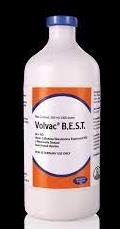
|

|

|
FDA Failure to Respond to Contamination of Infant Formula Raises Congressional Concerns
|
05/09/2022 |
|
 A Whistleblower employed at the Abbott Nutrition plant in Sturgis, MI., addressed a 34-page expose of inappropriate practices to the FDA on October 19th 2021. Copies of the statement were sent by FedEx to top officials in the agency including the Commissioner, Dr. Janet Wodcock, the Director of the Center for Food Safety and Applied Nutrition, Dr. Susan Mayne and to Katherine Hermsen, Assistant Commissioner of the Agency Office of Criminal Investigation. A Whistleblower employed at the Abbott Nutrition plant in Sturgis, MI., addressed a 34-page expose of inappropriate practices to the FDA on October 19th 2021. Copies of the statement were sent by FedEx to top officials in the agency including the Commissioner, Dr. Janet Wodcock, the Director of the Center for Food Safety and Applied Nutrition, Dr. Susan Mayne and to Katherine Hermsen, Assistant Commissioner of the Agency Office of Criminal Investigation.
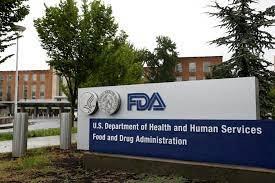 According to Politico, the Whistleblower was not interviewed by the FDA until late December 2021. The plant was subsequently inspected on January 31st 2022, disclosing deficiencies and confirming the substance of the allegations. These included improper cleaning practices, falsified records and deviations from standard operating procedures all of which may be regarded as contributing to potential contamination of infant formula with Cronobacter sakazakii and Salmonella Newport . This pathogen was responsible for illness, hospitalization and fatalities in infants consuming Similac™, Alimentum™ and EleCare™ products. Despite the findings on January 31st, batches of formula were only recalled more than two weeks later on February 17th. According to Politico, the Whistleblower was not interviewed by the FDA until late December 2021. The plant was subsequently inspected on January 31st 2022, disclosing deficiencies and confirming the substance of the allegations. These included improper cleaning practices, falsified records and deviations from standard operating procedures all of which may be regarded as contributing to potential contamination of infant formula with Cronobacter sakazakii and Salmonella Newport . This pathogen was responsible for illness, hospitalization and fatalities in infants consuming Similac™, Alimentum™ and EleCare™ products. Despite the findings on January 31st, batches of formula were only recalled more than two weeks later on February 17th.
The sequence of events and the obvious failure of FDA at a number of levels to respond was the subject of question in the House Appropriations Committee chaired by Rep. Rosa DeLauro who is concerned over food safety and related issues, based on her professional training. She stated, "I am deeply concerned about the practices at this Abbott facility and their apparent failure to implement and enforce internal controls". She added, "I am equally concerned that the FDA reacted far too slowly to the report". This is based on the four-month period between the receipt of the report and the recall, during which infants may have been exposed to infection.
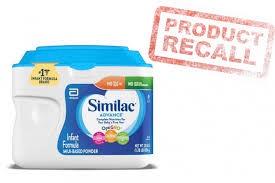 The structural and cultural problems at the FDA revealed in the Politico article reinforce the need for a dedicated Food Safety Agency that would incorporate the jurisdictions of both the Food Safety And Inspection Service of the USDA and the food-related remit of the FDA. Establishing a dedicated agency as in the E.U. would create a center for scientists, regulators and inspectors experienced in aspects of food safety including imported and domestically produced items. A new agency would be free of the restraints and culture of the FDA The structural and cultural problems at the FDA revealed in the Politico article reinforce the need for a dedicated Food Safety Agency that would incorporate the jurisdictions of both the Food Safety And Inspection Service of the USDA and the food-related remit of the FDA. Establishing a dedicated agency as in the E.U. would create a center for scientists, regulators and inspectors experienced in aspects of food safety including imported and domestically produced items. A new agency would be free of the restraints and culture of the FDA
The question remains whether a band-aid will be simply applied to the FDA in place of the required radical surgery involving transplantation.

|
Impact of 2021-2022 HPAI Panornitic- Implications for the Future.
|
05/04/2022 |
|
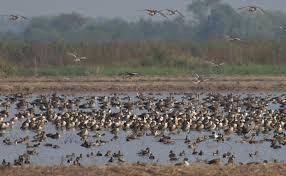 It is evident that the current H5N1 strain of avian influenza has resulted in more extensive outbreaks of highly pathogenic avian influenza (HPAI) and involved more nations over the past twenty months than at any time since the emergence of the Goose/Guangdong lineage during the late 1990s. Reports assembled by the World Organization for Animal Health (OIE) confirm 18,620 outbreaks of HPAI between 2005 and 2009 affecting 76 nations. During the current panornitic, 3,000 outbreaks have been reported, resulting in the loss of 15 million chickens, ducks and turkeys combined in Europe and approximately 35 million of all species in the U.S. and over one million in Canada year to date. It is evident that the current H5N1 strain of avian influenza has resulted in more extensive outbreaks of highly pathogenic avian influenza (HPAI) and involved more nations over the past twenty months than at any time since the emergence of the Goose/Guangdong lineage during the late 1990s. Reports assembled by the World Organization for Animal Health (OIE) confirm 18,620 outbreaks of HPAI between 2005 and 2009 affecting 76 nations. During the current panornitic, 3,000 outbreaks have been reported, resulting in the loss of 15 million chickens, ducks and turkeys combined in Europe and approximately 35 million of all species in the U.S. and over one million in Canada year to date.
Extensive mortality in both poultry and free-living birds, due to the currently circulating strain of H5N1 expressing Eurasian genes, has occurred in Europe, North America, the Mediterranean littoral and sub-Saharan Africa, in addition to nations in Asia where the virus is endemic. As reported in previous editions of EGG-NEWS, unlike previous panornitics the current strain has affected as many as 50 migratory or endemic species with extensive mortality in red knots (Calidris canutus) in the Netherlands, cranes (Grus grus) in Israel, barnacle geese (Branta leucopsis) in Scotland and Dalmatian pelicans (Pelecanus crispus) in Greece among other families.
|
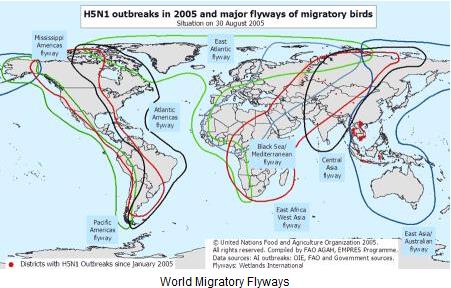 |
|
Subscribers are directed to an excellent opinion article* on resurgence of avian influenza virus authored by Drs. Michelle Wille and Ian Barr of the University of Sydney, Australia. Information on the evolution of the Goose/Guangdong lineage extending to the current 2.3.4.4 pathogen as discussed conforms to material presented in a recent webinar by Dr. David Swayne of the USDA-ARS National Poultry Disease Research Center.
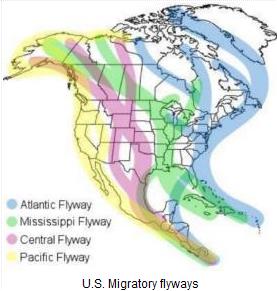 Epidemiological evaluation subsequent to the 2014-2015 epornitic demonstrated the role of migratory waterfowl in the introduction and dissemination of HPAI, emphasizing the need for preemptive surveillance. Following trans-Atlantic introduction of the Eurasian H5N1 strain into the Maritime Provinces of Canada in late 2021 USDA-APHIS activated a program of sampling hunter-killed ducks. This demonstrated the presence of H5N1 virus in the Atlantic, Mississippi, and Central Flyways during the first quarter of 2022, with indirect evidence of virus shedding in the northern segment of the Pacific Flyway. Lessons learned during the 2014-2015 epornitic, led to enhanced biosecurity precautions that may have lowered the risk of infection in many areas with a high density of commercial poultry. Epidemiological evaluation subsequent to the 2014-2015 epornitic demonstrated the role of migratory waterfowl in the introduction and dissemination of HPAI, emphasizing the need for preemptive surveillance. Following trans-Atlantic introduction of the Eurasian H5N1 strain into the Maritime Provinces of Canada in late 2021 USDA-APHIS activated a program of sampling hunter-killed ducks. This demonstrated the presence of H5N1 virus in the Atlantic, Mississippi, and Central Flyways during the first quarter of 2022, with indirect evidence of virus shedding in the northern segment of the Pacific Flyway. Lessons learned during the 2014-2015 epornitic, led to enhanced biosecurity precautions that may have lowered the risk of infection in many areas with a high density of commercial poultry.
The types of farms and species of poultry affected in 2022 show some differences from 2014-2015. Many more backyard flocks, frequently the index cases in affected counties, were infected suggesting the widespread dissemination of H5N1 virus. Although a few very large egg production complexes were affected in both epornitics, it is evident that a number of potentially at-risk farms have been spared, suggesting that protective biosecurity measures have been effective. An outstanding observation relating to the 2022 outbreaks is the predominance of commercial turkey flocks, far exceeding the number and their distribution in 2015. Large outbreaks in Iowa and Nebraska have occurred in the same counties or even the same complexes confirming risk factors such as proximity to wetlands and rivers and possibly correlated with possible predisposing deficiencies in biosecurity. The 2022 U.S. epornitic has also involved commercial ducks paralleling the situation in France.
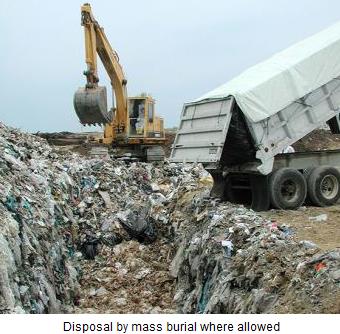
The poultry industries in North America require updates on risk factors relating to introduction of infection, including duration of shedding by migratory waterfowl and other species, persistence of the virus in the environment and specific routes of introduction into commercial turkey, egg and broiler farms with reference to possible deficiencies in either structural or operational biosecurity. Despite requests, USDA-APHIS has not provided any interim guidance based on available epidemiologic data collected following each outbreak. Both observational and molecular information is required together with a provisional but logical interpretation of data in order to provide practical suggestions to enhance prevention.
The Science article referenced considers the possibility of H5N1 clade 2.3.4.4 becoming zoonotic. Public health considerations relating to HPAI are obviously of extreme importance. The current risk is considered to be extremely low for the population of Europe as evaluated, even for those subject to occupational exposure. The World Health Organization and the OIE continue to monitor outbreaks of HPAI in poultry and wild birds and through member nations surveillance is extended to potentially exposed populations. The Science article specifically noted that deploying an inactivated H7N9 vaccine in poultry destined for wet markets in China reduced the incidence rate of human infection from 759 cases in 2017 to only two cases in 2018.
Currently, industrialized nations are following eradication policies, although inactivated vaccines have proven successful in suppressing mortality in outbreaks in Italy and Mexico. Consideration must obviously be extended to new-generation vaccines as it is apparent that poultry industries worldwide will be subjected to more frequent panornitics given the extensive distribution of evolving viruses that have become endemic among migratory birds.
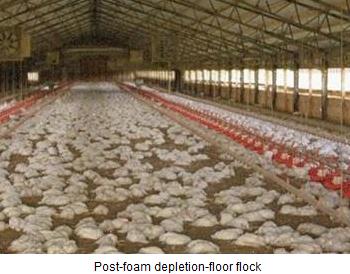 It is an unfortunate reality that HPAI is no longer a once-in-a decade event localized to specific areas. The approach to ‘eradication” of an exotic infection applying traditional measures will in the future be ineffective and expensive accepting the possibility of seasonal introduction. The approach to controlling the 2022 epornitic in the U.S. is no different to the more localized outbreak in 1984. The USDA-APHIS and their counterparts in Europe have upgraded procedures and logistics and expedited the control sequence comprising rapid diagnosis, flock depletion, disposal and decontamination, quarantine with zonal surveillance. A new approach is required since HPAI is no longer exotic but seasonally endemic. The poultry industry is now faced with mass shedding of virus over large areas with both H5 and H7 strains potentially undergoing genetic drift in concentrations of migratory birds and mutations in large localized populations of commercial poultry. HPAI is no longer a regional or national issue and the inevitability of recurrent panornitics will require a radical re-evaluation of control, prevention and trade policy at both national and international levels. Eradication is not a viable option so regulatory approaches should consider alternatives to the traditional approach to introduction of HPAI. It is an unfortunate reality that HPAI is no longer a once-in-a decade event localized to specific areas. The approach to ‘eradication” of an exotic infection applying traditional measures will in the future be ineffective and expensive accepting the possibility of seasonal introduction. The approach to controlling the 2022 epornitic in the U.S. is no different to the more localized outbreak in 1984. The USDA-APHIS and their counterparts in Europe have upgraded procedures and logistics and expedited the control sequence comprising rapid diagnosis, flock depletion, disposal and decontamination, quarantine with zonal surveillance. A new approach is required since HPAI is no longer exotic but seasonally endemic. The poultry industry is now faced with mass shedding of virus over large areas with both H5 and H7 strains potentially undergoing genetic drift in concentrations of migratory birds and mutations in large localized populations of commercial poultry. HPAI is no longer a regional or national issue and the inevitability of recurrent panornitics will require a radical re-evaluation of control, prevention and trade policy at both national and international levels. Eradication is not a viable option so regulatory approaches should consider alternatives to the traditional approach to introduction of HPAI.
*Wille, M. and Barr, I. Resurgence of Avian Influenza Virus. Science 376: 459-460. (2022).
|

|
GAO Findings on Relocation of ERS-NIFA from Washington, DC.
|
04/24/2022 |
|
 Following the decision by the previous Administration to relocate the USDA Economic Research Service (ERS) and the National Institute of Food and Agriculture (NIFA) from Washington, D.C. to Kansas City, MO. Democrats on the House Science Committee requested the Government Accounting Office (GAO) to analyze the claimed cost-benefit justification for the action. Following the decision by the previous Administration to relocate the USDA Economic Research Service (ERS) and the National Institute of Food and Agriculture (NIFA) from Washington, D.C. to Kansas City, MO. Democrats on the House Science Committee requested the Government Accounting Office (GAO) to analyze the claimed cost-benefit justification for the action.
At the time of the announcement by then Secretary of Agriculture’s Dr. Sonny Perdue, EGG-NEWS questioned the claimed financial benefit and suggested that the action was taken to “sanitize” both agencies that were generating data and reports that conflicted with Administration policy. One of the claimed benefits for the move was that economists and scientists at both agencies would be closer to their constituencies. This was refuted by the fact that in the age of E-mail and the internet, data was as readily available in Washington, D.C. as it was in Kansas City. Economists are not extension agents and do not have to walk through fields of corn and soybeans or meet with farmers on a day-to-day basis to perform their analyses. To the 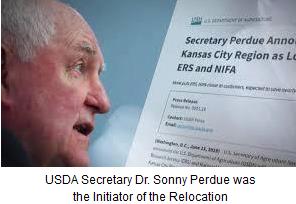 contrary, economists at ERS and the scientists at NIFA had close connections with the producer associations representing agricultural and commodity groups in D.C., were colaborating with academic institutions in a tri-state area and were interacting with think tanks and other government departments leading to synergy and creativity. contrary, economists at ERS and the scientists at NIFA had close connections with the producer associations representing agricultural and commodity groups in D.C., were colaborating with academic institutions in a tri-state area and were interacting with think tanks and other government departments leading to synergy and creativity.
The GAO report refuted the cost-savings claimed to be $300 million over a number of years. The GAO faulted the USDA for ignoring critical costs relating to the loss of highly-qualified staff. This may in fact have been the initial reason for the proposed relocation since senior personnel were studying and publishing on topics including the economic impact of climate change on agricultural productivity and food insecurity.
The GAO found that the selection process by which 139 expressions of interest to receive the two agencies were whittled down to the final four possible locations was flawed since elimination disregarded stakeholder proximity and the ability to recruit and retain qualified staff. Obviously, the proposal to relocate the agencies should have raised concern over disruption of ongoing projects and calculating the potential loss associated with the predictable consequences of the relocation. The GAO report found, “High-quality analysis was absent including transparency around key methodological decisions and sensitivity analysis to assess the reasonableness of critical assumptions.” Those responsible for developing the benefit-cost analysis deviated from guidance provided by the Office of Management and Budget based on the Foundation for Evidence-based Policy Making Act of 2018.
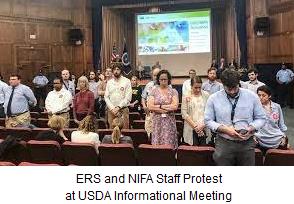 Despite objections and protests by staff of the two agencies, cooperating academics, past directors of NIFA and ERS, the relocation became a reality resulting in a high number of resignations, especially among senior scientists and economists who did not wish to move from the D.C. area. The predictable counterpart was a failure to recruit and appoint suitable replacements after the move to Kansas City, MO. Despite objections and protests by staff of the two agencies, cooperating academics, past directors of NIFA and ERS, the relocation became a reality resulting in a high number of resignations, especially among senior scientists and economists who did not wish to move from the D.C. area. The predictable counterpart was a failure to recruit and appoint suitable replacements after the move to Kansas City, MO.
The GAO did not make any recommendation relating to the relocation but pointed to the need to use facts and substantiated evidence in developing an analysis on which to base policy decisions.
The questions that remain concern whether either or both of the agencies was weakened in their potential to serve stakeholders and whether savings will in fact accrue to the USDA and ultimately to taxpayers. It is hoped that in future, irrespective of the party controlling the Executive and or Legislative branches of government, decision-making will be transparent, and methodical. An evidence-based approach should be applied to analyze policy decisions and actions that affect the lives of government workers and their ability to serve their constituencies.
At this time, the relocation is a fait accompli and probably will never be reversed. Let us hope that productivity at both Agencies has been restored and that there will not be a repetition of a destructive action to support a policy agenda.

|
APHIS Urged To Release Epidemiological Findings On HPAI Cases
|
04/19/2022 |
|
During the past eight weeks, nine noteworthy outbreaks of highly pathogenic Avian Influenza (HPAI) in egg-production complexes have been documented resulting in depletion of more than 21 million hens in addition to close to a million pullets. It is understood that, as with the 2015 epornitic, 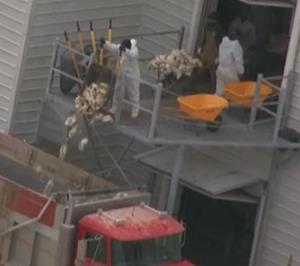 epidemiological questionnaires were completed after each outbreak. A review of these documents with or without case control studies could indicate deficiencies in biosecurity that contributed to the introduction of infection onto complexes requiring subsequent depletion. epidemiological questionnaires were completed after each outbreak. A review of these documents with or without case control studies could indicate deficiencies in biosecurity that contributed to the introduction of infection onto complexes requiring subsequent depletion.
Approximately twelve million hens ago, this commentator communicated with a senior APHIS Veterinarian responsible for aspects of control of HPAI. In the absence of a response, a second E-mail was addressed to the APHIS contact urging action with respect to providing guidance derived from a review of the questionnaires. Despite webinars and regular updates, APHIS has not provided any specifics as to the risk factors contributing to infection with the H5N1 strain expressing Eurasian genes that is prevalent in 2022.
It is accepted that the widespread distribution of the virus is due to dissemination by migratory waterfowl. This is confirmed by surveillance and the large number of turkey growing units and backyard flocks affected in the same states where outbreaks have occurred on egg production complexes. This presumes that most egg farms if present in affected states are at risk of exposure. At this time, it is critical to know what factors were associated with the relatively limited number of outbreaks that have occurred despite the probability of exposure. If a preliminary evaluation discloses a common factor or deviations from accepted standards of structural and operational biosecurity, this information would be valuable to producers that have not been affected.
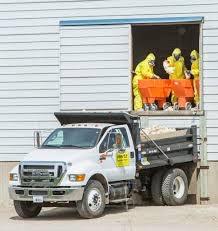 If some specific defect or combination of deficiencies in either structural or operational biosecurity could be identified and publicized, it would benefit all producers who face exposure to HPAI. Obtaining provisional information in real time may prevent additional outbreaks obviating costs to the public and private sectors. While it is recognized that from a scientific perspective a detailed case-controlled study would be ideal and will be conducted, a considered opinion now, based on experience and insight as to possible deficiencies in biosecurity or causal factors would be highly beneficial to prevention. Recommendations from a preliminary evaluation may motivate remedial action and would allay concerns relating to potential outbreaks. If some specific defect or combination of deficiencies in either structural or operational biosecurity could be identified and publicized, it would benefit all producers who face exposure to HPAI. Obtaining provisional information in real time may prevent additional outbreaks obviating costs to the public and private sectors. While it is recognized that from a scientific perspective a detailed case-controlled study would be ideal and will be conducted, a considered opinion now, based on experience and insight as to possible deficiencies in biosecurity or causal factors would be highly beneficial to prevention. Recommendations from a preliminary evaluation may motivate remedial action and would allay concerns relating to potential outbreaks.
A preliminary opinion based on the review of the questionnaires relating to nine major outbreaks could be provided by APHIS with the understanding that a detailed study will be conducted after resolution of the present epornitic. A preliminary report in late April would be far more beneficial than a comprehensive document in 2023 or later. Given previous requests to APHIS, a provisional report would have had more impact when requested in late March.
APHIS has access to the required data and their epidemiologists with field training could rapidly review the questionnaires for possible factors contributing to outbreaks. If APHIS is either disinclined to conduct an initial review or is overwhelmed, then it is respectfully suggested that coded questionnaires be provided to a competent team comprising poultry health professionals in academia and industry. Their review and comment could provide unaffected producers with observations and recommendations to reinforce biosecurity and to correct any obvious defects arising from the questionnaires and follow-up.
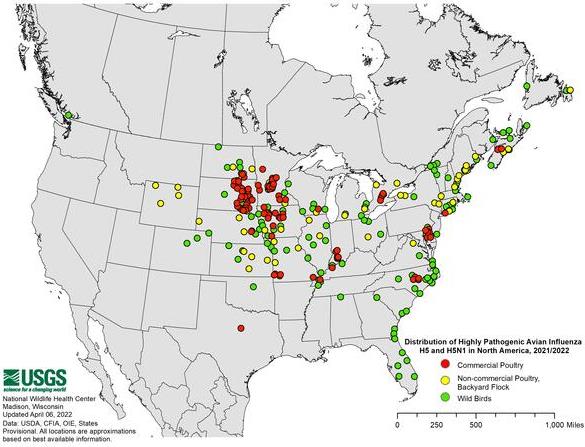
There are immense direct and indirect costs arising from an outbreak of HPAI on a large egg-production complex. Expenses accruing to the public and private sectors include flock depopulation, disposal and decontamination, surveillance, disruption of ongoing production, loss of revenue and goodwill and widespread impacts on individuals and communities. The inflexibility of APHIS with respect to conducting a much-needed evaluation of the epidemiological questionnaires is incomprehensible. Preventing even one outbreak on a one-million bird complex would provide an infinite return on the time devoted to a review as compared to the cost of depletion, disposal loss of revenue and ultimately added cost to consumers.

|
FDA Negligence On Food Safety-The Problem Needs a Radical Solution
|
04/13/2022 |
|
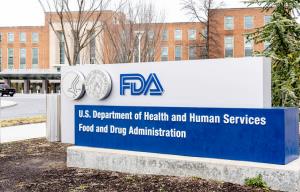 Politico published an expose on deficiencies at the U.S. Food and Drug Administration on April 9th relating to oversight of food safety. The Agency is responsible for all food products other than red meat and poultry that fall under the purview of the USDA Food Safety and Inspection Service (FSIS)-but that’s another story. The incisive article The FDA's Food Failure by veteran food jouurnalist Helena Bottmiller-Evich documents numerous structural and organizational factors responsible for inadequate protection of the U.S. population. Despite funding amounting to approximately $1 billion annually and an imperative from the Food Safety Modernization Act passed eleven years ago, U.S. consumers have probably less assurance of food safety than they did three administrations ago. Politico published an expose on deficiencies at the U.S. Food and Drug Administration on April 9th relating to oversight of food safety. The Agency is responsible for all food products other than red meat and poultry that fall under the purview of the USDA Food Safety and Inspection Service (FSIS)-but that’s another story. The incisive article The FDA's Food Failure by veteran food jouurnalist Helena Bottmiller-Evich documents numerous structural and organizational factors responsible for inadequate protection of the U.S. population. Despite funding amounting to approximately $1 billion annually and an imperative from the Food Safety Modernization Act passed eleven years ago, U.S. consumers have probably less assurance of food safety than they did three administrations ago.
The Politico article was based on interviews with as many as 50 credible commentators, many of whom were previously senior administrators in the FDA and specifically in the Center for Food Safety and Applied Nutrition (FSAN) responsible for overview of food safety, nutritional labels and aspects of dietary health promotion. Comments advanced by those interviewed characterized FDA actions and culture as “byzantine”, “a joke” and “ridiculous”, representing a profound indictment of FDA capabilities and response to challenges.
During the past three years, the FDA has clearly demonstrated incompetence or indifference with regard to heavy metal content of infant foods, failure to respond to evidence of contamination of infant formulas, inadequate inspection of imported foods including seafood, spices and specialty products. Despite annual outbreaks of foodborne infection attributed to leafy greens emanating from the Yuma Valley of Arizona and from the Imperial Valley of California, FDA has yet to devise a preventive program against contamination with STEC, Listeria, Salmonella and now Cyclospora. Investigations of foodborne outbreaks as detected by FoodNet do not receive the diligent attention. The development of the 2010 Final Rule on prevention of Salmonella and subsequent implementation demonstrated an inability or disinclination to consult with poultry health professionals in industry and academia. The Final Rule ignored ST and SE vaccination that was universally in use. The first year of inspections by untrained FDA personnel reflected adversely on the Agency and but for delegation to state departments of agriculture the program would have been a failure.
The Politico article identified structural issues contributing in part to the dysfunction demonstrated by the FDA with respect to food safety. Frank Yiannas, the Deputy Commissioner for Food Policy and Response, who reports to the Commissioner of the FDA has no line authority. The Center for Food Safety and Applied Nutrition is directed by Dr. Susan Mayne reporting directly to the Commissioner. By virtue of their respective training and management styles, there is apparentl y a large measure of organizational and interpersonal conflict that impedes the mission of the Agency. Frank Yiannas has a background in commercial food production and distribution and is experienced in risk evaluation and applied aspects of food safety. He has been trained to rapidly evaluate problems and develop solutions followed by active implementation. In contrast, Dr. Mayne, although with considerable training in epidemiology and microbiology, demonstrates an academic approach requiring consensus but deferring decisions and action. y a large measure of organizational and interpersonal conflict that impedes the mission of the Agency. Frank Yiannas has a background in commercial food production and distribution and is experienced in risk evaluation and applied aspects of food safety. He has been trained to rapidly evaluate problems and develop solutions followed by active implementation. In contrast, Dr. Mayne, although with considerable training in epidemiology and microbiology, demonstrates an academic approach requiring consensus but deferring decisions and action.
The situation as revealed in the Politico article has motivated Senator Patty Murray (D-WA), the Chairperson of the Senate Health, Education, Labor and Pensions Committee to initiate an enquiry. She has addressed a letter to Dr. Robert M. Califf, the newly appointed FDA Commissioner requesting answers to a series of pertinent questions requiring a response by April 25th. Senator Murray requested Dr. Califf to specify what organizational and structural changes he intends to make to improve performance and enforcement within CFSAN. Ongoing problems including contamination of baby formulas, lack of action on sodium levels in food and contamination of leafy greens have persisted for years and accordingly, the letter demanded an explanation for delays and the action that is planned to resolve problems implicit in delayed decision making. Senator Murray requested specific details on the number and frequency of food safety inspections conducted by the FDA according to food category and the intensity of analytical surveillance and results.
 Rearranging areas of responsibility within the FDA, especially if accountability and authority are not defined, will be analogous to rearranging deck chairs on the Titanic. The FDA has for many decades relegated food safety to the back burner, concentrating on drugs and medical devices. Even with this emphasis there are questions as to the frequency and rigor of inspections in pharmaceutical plants located in India and China that supply the bulk of generic drugs prescribed for our population. Rearranging areas of responsibility within the FDA, especially if accountability and authority are not defined, will be analogous to rearranging deck chairs on the Titanic. The FDA has for many decades relegated food safety to the back burner, concentrating on drugs and medical devices. Even with this emphasis there are questions as to the frequency and rigor of inspections in pharmaceutical plants located in India and China that supply the bulk of generic drugs prescribed for our population.
There is also the added problem of divided responsibility for food safety. Red meat and poultry fall under the Food Safety and Inspection Service of the USDA, creating inter-agency conflict to the detriment of consumers. Given the evident farmer and packer orientation of FSIS and the ineptitude of FDA, U.S. consumers would be best served by a consolidated food safety agency as in the U.K. and the E.U. For a number of years EGG-NEWS and sister newsletter, CHICK-NEWS, have proposed the establishment of a sub-cabinet agency dedicated to food safety that would function with a dedicated and qualified group of administrators, scientists and field personnel. Activities conducted by FSIS and the FDA with respect to food safety would be combined for the benefit of efficiency and accomplishment. Simply throwing more money at the FDA or restructuring reporting relationships will not solve the problem of an inappropriate culture and the perception of food safety within the FDA as a neglected step-child, irrespective of the best intentions or competence of the Commissioner. Establishing a Food Safety Agency would be a radical change within the federal system but is probably justified by the incidence of foodborne outbreaks and the neglect of applied nutrition as a measure to promote public health. The proposed Food Safety Agency would require appropriate enabling legislation but would imply greater Congressional oversight that is now lacking.
When circumstances denote deficiencies in organizations and a lack of interaction between federal agencies, a crisis creates impetus for change. Over decades, we have seen the establishment of a Department of Defense coordinating separate Army and Navy Departments, the creation of the Department of Energy and most recently following the 9/11 event, the Department of Homeland Security.
It would be possible to combine the best resources and personnel within the existing USDA-FSIS and the FDA-CFSAN. A dedicated agency would eliminate turf fights as evidenced by the delays over development of GM-derived foods or cell-cultured meat and would contribute to more effective and focused rules, oversight and a safer food system.
Whether or not a consolidated Food Safety Agency is created will depend on various pressures, both for and against. There is generally reluctance by Congress to make radical changes. Packers have developed a modus vivendi with FSIS and are disinclined to change given an understanding of systems and implementation of regulations. Lobbyists that infest downtown DC in profusion will protect the interests of their clients including food processors and manufacturers in addition to consumer advocacy organizations. There will be strong resistance from both the FDA and the USDA since a proposed food safety agency would result in a smaller area of turf. Budgetary allocations and numbers of employees are the basis on which departments and administrators measure their status in Washington. In the past when confronted with hints of consolidation the FDA the CDC and USDA sign memorandums of cooperation and then knowingly revert to the status quo, a real-life ongoing U.S. version of the BBC Yes Minister series.
The events of 9/11, similar to the launch of Sputnik were sudden in their event but resulted in rapid changes in administrative structures and resource allocation. The problems of food safety and public health are insidious but require no less of a response in the form of restructuring and implementation. The system is so broken that it cannot be repaired with either duct tape or red tape. A radical approach in the form of a consolidated Food Safety Agency is long overdue.

|
Globalization Is An Outdated Concept- U.S. Must Become More Self-Sufficient
|
04/03/2022 |
|
 On February 24th, the White House released a report on the disruption of supply chains resulting from the COVID pandemic. Concurrently, the U.S. Departments of Defense, Homeland Security, Transportation, Health and Human Services and Commerce released specific reports relating to their areas of remit. On February 24th, the White House released a report on the disruption of supply chains resulting from the COVID pandemic. Concurrently, the U.S. Departments of Defense, Homeland Security, Transportation, Health and Human Services and Commerce released specific reports relating to their areas of remit.
The reports were commissioned by Executive Order 14017 directing an in-depth review of critical supply chain deficiencies and identifying reliance on other nations for critical supplies.
It emerged that China represents the greatest risk to U.S. manufacturing and agriculture and hence, our economy. The White House report included the statement, “We must reduce our dependence on China and other geopolitical competitors with respect to key products.” In the short term, the U.S. will have to rely on China and other nations and accordingly, must continue diplomatic and trade relations referred colloquially as “friend-shoring”. Nations of the E.U., the U.K. and Japan are obvious partners given common concerns over the rise of China and its domination of critical areas.
- The Department of Energy identified the dominance of China in solar power generation and mining and refining of rare earth elements necessary for electronic components.
- The Department of Defense is concerned over sourcing of lithium batteries and microelectronics.
- The Department of Homeland Security notes Chinese advances in information and communication technology and their activities in cyber-espionage through government and state-controlled companies.
- The Department of Transportation noted that three State-affiliated companies in China are responsible for 95 percent of the manufacture of dry cargo containers.
Although the findings of the Department of Health and Human Services were not reviewed, it is evident that China and to a lesser extent India are responsible for synthesis of compounds that form the basis of the manufacture of pharmaceuticals.
China and also Russia are major producers of components required for fertilizers and with disruption of either production or world distribution of phosphates, the U.S. and E.U. agriculture may be impacted if not in yield, certainly as to cost.
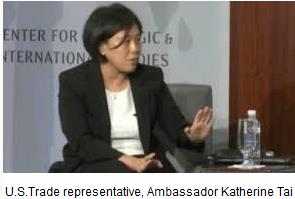 The findings of the various departments under the direction of the White House suggest development of self-sufficiency and where possible, cooperation with friendly nations in mutually beneficial relationships. The findings of the various departments under the direction of the White House suggest development of self-sufficiency and where possible, cooperation with friendly nations in mutually beneficial relationships.
This sentiment was expressed by Ambassador Katherine Tai, U.S. Trade Representative, in testimony before a House Committee last week. Ms. Tai pointed to the disruptions in ocean freight attributed to actions taken by China either deliberately or inadvertently during the COVID shutdowns that affected ports in China shipping to the U.S. and the E.U. It is possible that a further round of disruptions will occur as China persists with an unsuccessful zero tolerance for COVID. This has resulted in shutdown of metropolitan Shanghai. It is considered significant that our Trade Representative, responsible for establishing agreements to promote international trade is now advocating self-sufficiency. This is in recognition of the policies of China and other unfriendly nations on whom the U.S. has developed a reliance for critical supplies and commodities.
 As a citizen, investor and contributor to our economy and certainly not an isolationist, I look forward to the day when a hammer in my local hardware store is imprinted with the proud words, “Made in the USA”. I look forward to driving past small manufacturing plants in the Midwest that have full employee parking lots and displaying “Help Wanted” signs. I anticipate a resurgence in U.S. design and manufacturing and an industrial renaissance such as occurred following the Great Depression. For too long we have followed a policy of offshoring, taking advantage of low labor rates at the expense of our manufacturing infrastructure and committing to globalization. This must change for the benefit of industry, agriculture, our national security and eventually our way of life. As a citizen, investor and contributor to our economy and certainly not an isolationist, I look forward to the day when a hammer in my local hardware store is imprinted with the proud words, “Made in the USA”. I look forward to driving past small manufacturing plants in the Midwest that have full employee parking lots and displaying “Help Wanted” signs. I anticipate a resurgence in U.S. design and manufacturing and an industrial renaissance such as occurred following the Great Depression. For too long we have followed a policy of offshoring, taking advantage of low labor rates at the expense of our manufacturing infrastructure and committing to globalization. This must change for the benefit of industry, agriculture, our national security and eventually our way of life.

|
We Needed an In-person 2022 Midwest Poultry Federation Convention
|
03/27/2022 |
|
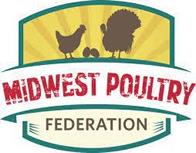 In-person conferences were cancelled in 2021 due to COVID with the industry reverting to on-line meetings and webinars. Although COVID concerns have abated, the series of highly pathogenic avian influenza outbreaks reduced attendance at the Midwest Poultry Federation (MPF) Convention. According to a March 27th post Convention release 2,300 registered and 280 companies exhibited in the Trade Show. Despite the lower than anticipated attendance those who came benefited from a wide range of activities, only possible with an in-person meeting. This sentiment was reinforced by a statement from Ross Thorensen, the incoming MFP chairperson, who stated “The Convention provided incredible value to both attendees and exhibitors and we look forward to channeling this momentum into 2023” In-person conferences were cancelled in 2021 due to COVID with the industry reverting to on-line meetings and webinars. Although COVID concerns have abated, the series of highly pathogenic avian influenza outbreaks reduced attendance at the Midwest Poultry Federation (MPF) Convention. According to a March 27th post Convention release 2,300 registered and 280 companies exhibited in the Trade Show. Despite the lower than anticipated attendance those who came benefited from a wide range of activities, only possible with an in-person meeting. This sentiment was reinforced by a statement from Ross Thorensen, the incoming MFP chairperson, who stated “The Convention provided incredible value to both attendees and exhibitors and we look forward to channeling this momentum into 2023”
The outstanding benefit was the emotional lift from renewal of friendships and establishing new acquaintances through direct participation in the educational and social events, the trade exhibition and concurrent programs. After two years of relative isolation and reliance on zoom meetings it was restorative to be able to shed masks and shake hands representing a welcome return to an approximation of normality.
As in previous years a full slate of activities was presented by the MPF including:
- Educational sessions with separate focus presentations for egg production, turkeys, broilers and processing. The MPF Congress provides an opportunity for academia to present the results of practical research to the industry.
- The event was an opportunity for associations to hold their annual meetings. Organic Egg Farmers of America and The North Central Avian Diseases Conference held meetings concurrently with the MPF Congress contributing to participation and attendance.
- The event provided a forum for university graduates to explore job opportunities and to match their skills with companies actively recruiting for technical and managerial staff.
- The trade exhibit, with approximately 280 companies participating, was a valuable opportunity to review innovations in management, housing, health, sustainability and efficiency. In contrast to the annual IPPE in Atlanta, the MFP Convention offers a more focused approach to the poultry industries in the Midwest with an emphasis on turkeys and egg production. Interaction between manufacturers and suppliers with prospective and existing customers facilitated exchange of knowledge and allowed direct comparisons between alternative products. Areas of concentration included aviary systems, ventilation installations, vaccines and nutritional additives.
 It is unfortunate that the ongoing outbreaks of Avian Influenza limited attendance. Participation in the meeting should not have represented any risk of introducing virus into the flocks of an attendee, providing common sense biosecurity procedures were followed. It is hoped that in future years, with the almost inevitable return of avian influenza disseminated in late winter and early spring by migratory waterfowl, that participants will not be dissuaded from attending the MFP Convention. Appropriate precautions include refraining from visiting flocks for 48 hours after return from Minneapolis and following personal biosecurity procedures including showering that have proven effective against transmission of AI virus. It is unfortunate that the ongoing outbreaks of Avian Influenza limited attendance. Participation in the meeting should not have represented any risk of introducing virus into the flocks of an attendee, providing common sense biosecurity procedures were followed. It is hoped that in future years, with the almost inevitable return of avian influenza disseminated in late winter and early spring by migratory waterfowl, that participants will not be dissuaded from attending the MFP Convention. Appropriate precautions include refraining from visiting flocks for 48 hours after return from Minneapolis and following personal biosecurity procedures including showering that have proven effective against transmission of AI virus.
The organizers of the convention are to be complimented on the comprehensive program supported by the arrangements of Lara Durben and her colleagues at Empowered Events. Moving the convention from the St. Paul venue to the larger Minneapolis Convention Center two year ago permitted expansion of exhibit space and consolidation under a single dome together with ample space for concurrent meetings.
The 2023 MPF Convention will be held from April 11th through April 13th.

|
The Wider Impact of the Russian Invasion of Ukraine
|
03/21/2022 |
|
 In the immediate aftermath of the brutal invasion of Ukraine by the Russian Federation, exports of poultry meat by MHP and competitors and eggs and egg products from Avangard and Ovostar have ceased. It is known that facilities operated by poultry producers have been extensively damaged, especially in the case of MHP, but the breakdown in logistics including power has also impacted production. Avangard indicated earlier last week that it was unable to supply feed to as many as three million hens in the Kherson region in southeast Ukraine near the Crimean Peninsula occupied by Russia since 2014. Avangard actually donated as many birds as they could dispose of to citizens and the military. In the immediate aftermath of the brutal invasion of Ukraine by the Russian Federation, exports of poultry meat by MHP and competitors and eggs and egg products from Avangard and Ovostar have ceased. It is known that facilities operated by poultry producers have been extensively damaged, especially in the case of MHP, but the breakdown in logistics including power has also impacted production. Avangard indicated earlier last week that it was unable to supply feed to as many as three million hens in the Kherson region in southeast Ukraine near the Crimean Peninsula occupied by Russia since 2014. Avangard actually donated as many birds as they could dispose of to citizens and the military.
Over the past decade both egg and broiler meat producers in Ukraine have supplied markets in western Europe and the Middle East. This has now created opportunities for exports from Turkey, Poland, Brazil and the U.S.
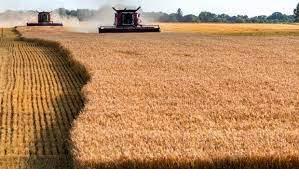 The broader issues resulting from the invasion and resulting war relate to the supply of grains. Ukraine is responsible for 13% of world trade in agricultural commodities most of which is loaded from Black Sea lowland ports. Extensive destruction has taken place in port cities including Odessa, Mykolaiv and now virtually destroyed Mariupol, all threatened by imminent encirclement. Recruitment of agricultural workers to resist the invasion and disruption of the transport infrastructure will affect the upcoming planting season for both sunflower and corn. Limited availability of fertilizer, pesticides and diesel fuel are major obstacles for farmers and even if obtainable are offered at exorbitant prices. The broader issues resulting from the invasion and resulting war relate to the supply of grains. Ukraine is responsible for 13% of world trade in agricultural commodities most of which is loaded from Black Sea lowland ports. Extensive destruction has taken place in port cities including Odessa, Mykolaiv and now virtually destroyed Mariupol, all threatened by imminent encirclement. Recruitment of agricultural workers to resist the invasion and disruption of the transport infrastructure will affect the upcoming planting season for both sunflower and corn. Limited availability of fertilizer, pesticides and diesel fuel are major obstacles for farmers and even if obtainable are offered at exorbitant prices.
Although not directly impacted by the war, production in Russia will be affected as banks will not extend loans and importers have ceased trading in Russian fertilizers and their ingredients including potash and natural gas. Financial sanctions against Russia have deprived that nation of export trade further creating artificial shortages in many nations reliant on both Russian and Ukranian commodities. Since 2021, sanctions have been imposed on Belarus, a major producer of potash, further restricting availability of fertilizer for world agriculture.
Interdiction of grain shipments from Black Sea ports will restrict the supply of wheat to major consumers, including Egypt, Saudi Arabia and Gulf states. This is reflected in the volatility in the price of this commodity now approximately 50% above the 4-year average. Since bread prepared from imported wheat is heavily subsidized in countries such as Egypt, escalation in price imposes financial challenges to autocratic governments that are also threatened with potential violent reactions by populations reliant on bread at low cost. The concept of available calories extends beyond the price of individual grains given the possibility of substitution under conditions of restricted supply. Rabobank pedicts that even with the unlikely rapid resolution of hostilities, effects of the war will persist over an extended period as global food supply is impacted.
The March 12th edition of The Economist notes the parallel between current restrictions on Black Sea shipping and the blockade of the Dardanelles Strait by the Ottoman Empire in the first months of World War I. This action deprived Britain and France of wheat and was a major factor in the decision to invade Gallipoli by Anzac forces in February 1915 in an attempt to eliminate Turkey as a belligerent.
Kyiv and Moscow are thousands of miles from Chicago, but events in Eastern Europe are evident in trading at the CME and will directly affect the cost of U.S. production of eggs, pork and chicken during the current year.

|
PIGS Act Proposed to Establish Federal Housing Standard for Sows—Implications for Egg Production
|
03/13/2022 |
|
 U.S. Representatives Veronica Escobar (D-TX) and Nancy Mace (R-SC) have introduced H.R. 7004, the Pigs in Gestation Stalls (PIGS) Act, that would establish a minimum-space requirement for all U.S. sows. It is estimated that there are five million sows held for breeding in the U.S., with perhaps a third of them already out of conventional gestation crates into group housing. U.S. Representatives Veronica Escobar (D-TX) and Nancy Mace (R-SC) have introduced H.R. 7004, the Pigs in Gestation Stalls (PIGS) Act, that would establish a minimum-space requirement for all U.S. sows. It is estimated that there are five million sows held for breeding in the U.S., with perhaps a third of them already out of conventional gestation crates into group housing.
Ten states have passed legislation banning gestation crates that confine sows to enclosures approximately 7 feet by 3 feet that effectively prevent these breeding animals from rotational movement. California led the way with Proposition #2 in 2008 subsequently clarified and reinforced by Proposition #12 in 2018. Similar legislation has been passed in Florida, Arizona and New-England states. Sales bans for pork from operations relying on gestation crates take effect in California following publication of standards and in Massachusetts, effective 2022.These states have nearly 50 million consumers. In addition, sixty major restaurant chains and retailers have committed to only sourcing pork from farms using group housing for sows.
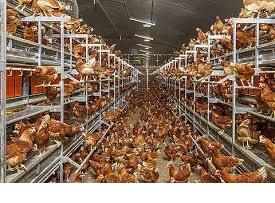 The concept of a federal standard for sows revisits the previously abandoned "Egg Bill". Prior to passage of Proposition #12, the UEP and HSUS agreed that enriched colony modules, floor systems or aviaries would be an acceptable alternative to conventional cages allowing hens 140 square inches in colonies and 1 square foot of useable floor space in alternative systems. The federal standard that would have been incorporated in the "Egg Bill" foundered for a number of reasons including vigorous opposition and lobbying from pork producers but it may be worthy of reconsideration. An interesting provision of the PIGS Act is that funds would be applied from the pork check-off to compensate farmers for expenditure involved in transition from gestation crates to group housing. This would be unfair to the producers that have already committed to conversion and have invested in a more humane and consumer-acceptable system. The concept of a federal standard for sows revisits the previously abandoned "Egg Bill". Prior to passage of Proposition #12, the UEP and HSUS agreed that enriched colony modules, floor systems or aviaries would be an acceptable alternative to conventional cages allowing hens 140 square inches in colonies and 1 square foot of useable floor space in alternative systems. The federal standard that would have been incorporated in the "Egg Bill" foundered for a number of reasons including vigorous opposition and lobbying from pork producers but it may be worthy of reconsideration. An interesting provision of the PIGS Act is that funds would be applied from the pork check-off to compensate farmers for expenditure involved in transition from gestation crates to group housing. This would be unfair to the producers that have already committed to conversion and have invested in a more humane and consumer-acceptable system.
The blizzard of litigation initiated by the National Pork Producers Council (NPPC) and supported by other some other agricultural organizations in an attempt to limit Proposition #12 to California represents a waste of both time and money. The numerous petitions that have been rejected at federal district level and subsequent appeals to higher courts represent a disservice to the hog industry and ultimately for the producers who are determined to retain an archaic and patently cruel system of confinement. Regrettably for the members of the NPPC the train has left the station. Producers using gestation crates will have progressively greater difficulty in marketing their products.
 The U.S. egg industry recognized the inevitability of replacing conventional cages a decade ago and invested in alternative housing with one third of the national flock transferred to aviaries and floor systems at this time. The total cost of conversion is estimated to be northward of $10 billion and rising, taking into account the necessary conversion of pullet housing and inevitable restructuring. Existing obsolete housing that is unsuitable for conversion or located on small farms requiring off-line processing will have to be replaced by new in-line aviary complexes requiring packing plants and feed mills. The U.S. egg industry recognized the inevitability of replacing conventional cages a decade ago and invested in alternative housing with one third of the national flock transferred to aviaries and floor systems at this time. The total cost of conversion is estimated to be northward of $10 billion and rising, taking into account the necessary conversion of pullet housing and inevitable restructuring. Existing obsolete housing that is unsuitable for conversion or located on small farms requiring off-line processing will have to be replaced by new in-line aviary complexes requiring packing plants and feed mills.
Revisiting the Egg Bill to allow enriched colony modules, aviaries, floor housing and suitable alternatives under a federal standard would provide a level playing field for the entire U.S. egg industry. Extending the period for full replacement of conventional cages to beyond 2025 would facilitate planning and the acquisition of capital expended on conversion at a predetermined rate in accordance with a national program.

|
Implications Arising from the Russian Invasion of the Ukraine
|
03/03/2022 |
|
 Current events in Ukraine, while still developing, suggest both direct and indirect effects on the U.S. and international commodities markets and hence cost of livestock production. Current events in Ukraine, while still developing, suggest both direct and indirect effects on the U.S. and international commodities markets and hence cost of livestock production.
Ukraine has a population of 44 million and is regarded as an emerging free-market economy. Since the dissolution of the USSR, Ukraine has steadilly moved to democracy and has attempted to disengage from neighboring Russia. The Nation aspires to be a member of the European Union and ultimately NATO. Currently agricultural products are the major exports following a decline in chemical and steel production caused by a series of recessions attributed to mismanagement by previous administrations. Ukraine has a land area of 233,000 square miles of which 130,000 comprise arable and highly fertile soil. Ukraine is the World’s largest producer of sunflower seed with an annual crop approaching 15 million tons. The Nation is the third largest producer of potatoes (23 million tons). Corn production ranks fifth at 36 million metric tons and Ukraine is seventh-ranked in sugar beets (14 million tons), barley (7.3 million tons), canola (2.7 million tons) rye (400 million tons).
If following the invasion, and presumably an occupation of the nation by Russia or installation of a puppet government, agricultural production will fall as infrastructure has been disrupted and a long-term intensive insurgency is anticipated.
 If the Russian Federation as in past decades follows the Soviet practice of exploiting the potential of the Nation, current trading partners will be deprived of products. This will have an inflationary effect on the cost of cereals and oilseeds throughout the world. We should not forget the Holodomor of 1931 through 1934 when 3.9 million Ukrainians starved to death as a result of bungled Soviet attempts to enforce collectivisation on a productive agricultural nation. If the Russian Federation as in past decades follows the Soviet practice of exploiting the potential of the Nation, current trading partners will be deprived of products. This will have an inflationary effect on the cost of cereals and oilseeds throughout the world. We should not forget the Holodomor of 1931 through 1934 when 3.9 million Ukrainians starved to death as a result of bungled Soviet attempts to enforce collectivisation on a productive agricultural nation.
Sanctions imposed on Russia as a result of the invasion of Ukraine will also have secondary effects on the U.S. and its economy. Since Russia is a major exporter of oil and gas, embargoing energy shipments even with continued supplies to sympathetic and autocratic nations such as China, will result in a rise in domestic prices. It is anticipated that a higher proportion of domestic fossil-derived fuels will be exported at ever increasing prices. Prior to the invasion, economists predicted a rise in crude oil from the mid $80s to $120 per barrel. On March 2nd WTI closed at $113 per barrel supporting forecasts of higher energy prices although encouraging greater production.
Should there be any inference in Black Sea shipping, prices of commodities could rise exponentially. Currently large multinational grain traders and processors, ADM and Bunge have suspended oilseed processing and shipping following an attack on a vessel under charter. Cargill and other multinationals operating grain terminals near the port of Odessa that is threatened by Russian forces have suspended operations and withdrawn expatriates. There is concern over access to the port of Poti in the nation of Georgia that serves as an entry point for U.S. chicken shipments to that country and neighbors in Eurasia. Shipping rates for container vessels westbound from the E.U. have spiked 16 percent in a week, again contributing to inflation on both sides of the Atlantic.
Depending on the nature of restrictions on emigration that may be imposed by a Russian occupier, there is a huge talent pool of trained technical workers with an emphasis on software with more than 200,000 programmers in the Ukraine. Westward migration of this potentially productive workforce could be beneficial to the E.U and North America. Canada will be the most likely nation to welcome qualified engineers and others with skills and training unless U.S. immigration laws are amended and updated.
At this time farmers, industrial workers and professionals in the U.S. are showing a high level of support for their counterparts in Ukraine who are the victims of unwarranted aggression. We earnestly hope that there will be a quick resolution to the crisis with minimal loss of life on both sides of the conflict although this currently appears unlikely. Restoration of peace and resumption of agricultural activities and exports will be necessary to maintain long-term stability in world markets.
The E.U. is a significant importer of egg liquid from Ukraine and it is possible that demand may increase with short to medium term opportunities for the U.S.
This is no time for schadenfreude and we can but hope that diplomatic efforts and pressure by the U.S. and its allies in the E.U. and even internal opposition in the Russian Federation will bring an end to the invasion and restore an acceptable way of life for the people of Ukraine.

|
U.S. Senate Reviews Renewable Fuels Standard
|
02/27/2022 |
|
The U.S. Senate Committee on the Environment and Public Works arranged a hearing on Wednesday February 16th to consider the Renewable Fuels Standard (RFS). Generally regarded as a ‘sacred cow’ of politics for over three decades it is considered unusual that any committee of Congress would even question any aspect of the RFS. The Chairman of the Committee Senator Tom Carper (D-DE) noted that the RFS had not been considered by the oversight Committee since 2016. He observed, “Since the implementation of the program we have come a long way towards achieving our goals. Economic growth in agricultural communities has expanded and our fuels have become significantly cleaner than they were two decades ago.” Sen. Carper noted the lack of progress in developing advanced biofuels. This is not for lack of effort and investment but any biofuel other than corn-based ethanol including cellulosic sources has proven to be a technical and financial disaster.
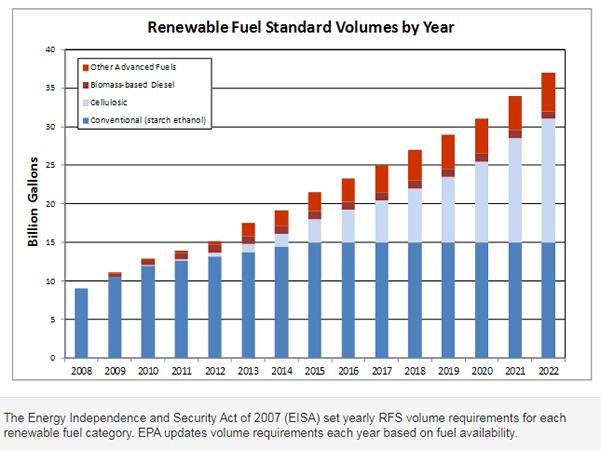 |
Senator Joni Ernst (R-IA) rejected most of the submissions to the hearing that were detrimental to ethanol, claiming that escalation in gas prices can be attributed to a rise in crude oil and is not due to the imposition of the system of Renewable Identification Numbers (RINs) that have imposed high costs on refiners of gasoline.
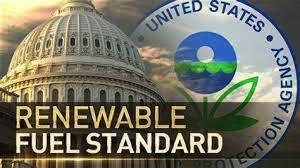 The hearing allowed Senator Ernst to place on record Renewable Fuel Association talking points lacking technical support including a reduction in greenhouse gases and reduced fuel prices. The RFS effectively supports an industry that would be incapable of survival without mandates and other governmental support. This effectively assures farmers of artificially high corn prices at the expense of livestock producers. Essentially the entire biofuels program in the U.S. is an indirect tax on all who eat and drive. The hearing allowed Senator Ernst to place on record Renewable Fuel Association talking points lacking technical support including a reduction in greenhouse gases and reduced fuel prices. The RFS effectively supports an industry that would be incapable of survival without mandates and other governmental support. This effectively assures farmers of artificially high corn prices at the expense of livestock producers. Essentially the entire biofuels program in the U.S. is an indirect tax on all who eat and drive.
Recent studies applying life-cycle assessment of corn-based ethanol have demonstrated negative effects on the environment. A significant question is how much of the carbon dioxide produced during fermentation of corn to produce ethanol is captured for commercial use or sequestered and how much is released into the atmosphere? The second concern is the deleterious effect of abstraction of copious quantities of water from aquifers in the production of ethanol.
The biofuels program was introduced at a time when the U.S. depended on imported energy from unfriendly nations. This energy security justification is now obsolete. Given that there are no obvious environmental benefits from corn-based ethanol and possibly deleterious economic effects, the U.S. Senate Committee on Environment and Public Works is justified in questioning what has become a self-perpetuating annual gift to farmers and the ethanol industry. Corn used to produce ethanol, estimated to be 5,325 million bushels will represent 32 percent of the projected 2022 corn harvest of 15,240 million bushels. Absent the production of corn-based ethanol, the price of corn would be significantly lower allowing for both increased exports at a more competitive price and a proportionately lower feed price to livestock producers. Given highly competitive poultry and red meat industries, savings would be passed onto benefit consumers.

|
Purdue Study Highlights Specific Consumer Motivations.
|
02/23/2022 |
|
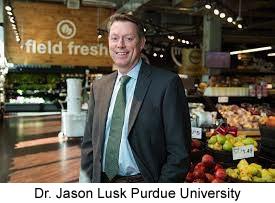 The Purdue University, Center for Food Demand Analysis and Sustainability recently published the first in a series of monthly Consumer Foods Insights. The Center, headed by Dr. Jason L. Lusk published the first issue co-authored by Sam Polzin. The series of reports will consider relevant aspects of consumer motivation to purchase food. The results from the first survey will be compared with subsequent data in order to evaluate changes in consumer behavior over time. The Purdue University, Center for Food Demand Analysis and Sustainability recently published the first in a series of monthly Consumer Foods Insights. The Center, headed by Dr. Jason L. Lusk published the first issue co-authored by Sam Polzin. The series of reports will consider relevant aspects of consumer motivation to purchase food. The results from the first survey will be compared with subsequent data in order to evaluate changes in consumer behavior over time.
The report incorporated the Sustainable Food Purchasing Index ranging from 0 to 100. The Index comprises six components relating to healthy diets derived from sustainable food systems. Respondents to the survey indicated ‘taste’ as the most important motivator with a score of 80, followed by cost at 74 and food security attaining a score of 73. It was noteworthy that social and environmental factors yielded a score of 55 each contributing to an overall Sustainable Food Purchase Index of 67.
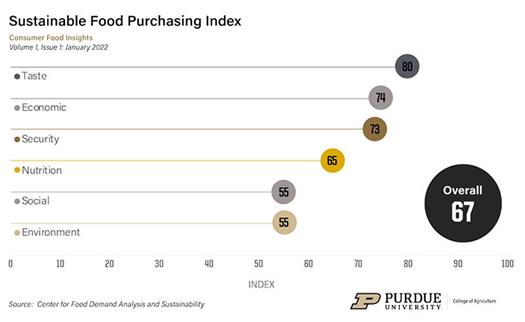 |
Respondents favored taste with 25 percent of the total score of 100 points followed closely by both affordability and nutrition at 22 each. It was noteworthy that attributes currently promoted in the social media including environmental impact and social responsibility scored at 9 percent each in the motivation to purchase food. The social responsibility category involved concerns over farms, processors, animals and workers. This finding is at variance with the three-decade initiative to convert conventional cages to alternative systems and the more recent motivation to consider sustainability and environmental degradation with respect to food products. The fact that price scored second in rank in all probability reflects current concern over inflation and the need for families to purchase their food requirements within challenged budgets. Again this finding coupled with the low score on the social responsibility category mitigates in favor of lower cost for all food items including eggs.
 In evaluating respondents’ selection of foods it was determined that 64 percent either “never really” or “sometimes” chose cage-free eggs over conventional eggs. A total of 72 percent of respondents did select organic foods over generic foods indicating anxiety over presumed antibiotic and pesticide contamination and perceived concerns over GM ingredients. In evaluating respondents’ selection of foods it was determined that 64 percent either “never really” or “sometimes” chose cage-free eggs over conventional eggs. A total of 72 percent of respondents did select organic foods over generic foods indicating anxiety over presumed antibiotic and pesticide contamination and perceived concerns over GM ingredients.
The findings of the survey suggest continuing demand for low-cost conventional eggs by a high proportion of the respondents. This reality may be driven by the proportion of expenditure on food in relation to total income. In the demographic earning less than $25,000 in annual household income 60 percent was devoted to food. This dropped sharply to 20 percent in the category with a household income of between $25,000 and $50,000. Evidently a proportion of consumers in the lower income categories were constrained in their purchases and would naturally buy the lowest priced eggs available. This is based on their acceptance of the inherent nutritional value of eggs. The low-income demographic recognize that conventional cage-derived eggs are indistinguishable from substantially higher-priced certified organic or cage-free products. It is only in the high-income categories that consumers can afford to spend more on intangible attributes satisfying their need to relate to concerns including welfare and environmental sustainability.
It is interesting that consumers are generally not addressing the issue of food waste. A quarter of respondents either “never” or “sometimes” actively reduced wastage in their homes and 54 percent always discarded food past the use-by date. This raises the question of realistic expiry dates for eggs that differ among states. Although the organoleptic quality of eggs may deteriorate over time, if stored under refrigeration, eggs are safe to eat beyond existing limits given the current standards of SE prevention, washing and integrity of shells in the U.S.
In determining the level of trust and the relevance of information available, consumers overwhelmingly accepted the USDA, the FDA, the AMA in addition to their primary care physicians as being reliable sources of information. The Centers for Science in the Public Interest, an activist group and the American Farm Bureau Federation representing the agricultural sector were regarded as less credible. Food manufacturers including Nestle and Tyson Foods that have a generally high image were regarded as even less trustworthy with regard to nutritional and production information. Of the two cable news channels, CNN was regarded as superior to Fox and talk-show hosts such as Joe Rogan were ranked as the least trustworthy. Enigmatically McDonald’s corporation scored the lowest on both the trustworthy and relevance indexes indicating that this QSR chain has a lot of image building to do to regain consumer confidence. With respect to overall trust in food information, there was little difference between female and male respondents or those either over or under 40 years of age. Responses yielded scores of around the 3.7 on a scale of 1 to 5 with the highest score representing complete trust.
The Purdue University Consumer Foods Insights will serve as an excellent barometer of consumer opinion and motivation to purchase specific foods and products. The survey clearly showed that a significant low-income demographic is motivated by price and that overall in the U.S. there is less concern over environmental and welfare issues than would be expected given publicity and agitation by activists groups and lobbyists using social media as their collective megaphone.
EGG-NEWS has longed maintained that it is unjust for an affluent minority to impose their mores and social conscience on those who are faced with food insecurity. Producers of food products of animal origin should contrive to maintain herds and flocks under conditions of acceptable welfare that invariably generates optimal productivity. Consumers should be allowed choice in their purchases to maintain acceptable nutritional standards at an affordable cost.

|
Winning Against COVID
|
02/15/2022 |
|
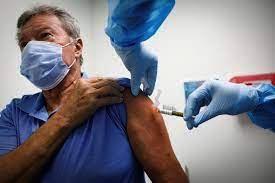 Over the past two years EGG-NEWS, and companion newsletter CHICK-NEWS, have devoted considerable coverage of the ongoing COVID pandemic. The overwhelming impact of the infection on the economy including patterns of food consumption and specifically affecting the egg industry were apparent from the onset of the infection and have persisted to the present time. The first impact was panic buying in March and April of 2020. This resulted in store shelves being stripped of dairy products and a consequential spike in retail prices contributing to high retail margins. As stock was replenished, prices fell with seasonal and then sub-normal values through the year. Closing of schools and universities and disinclination of customers to patronize restaurants impacted the liquid segment of the U.S. egg industry, resulting in diversion of eggs from flocks dedicated to breaking into the shell egg stream. Naturally this impacted the availability of cartons and packing material eventually resolved by increased production by the major manufacturers. Over the past two years EGG-NEWS, and companion newsletter CHICK-NEWS, have devoted considerable coverage of the ongoing COVID pandemic. The overwhelming impact of the infection on the economy including patterns of food consumption and specifically affecting the egg industry were apparent from the onset of the infection and have persisted to the present time. The first impact was panic buying in March and April of 2020. This resulted in store shelves being stripped of dairy products and a consequential spike in retail prices contributing to high retail margins. As stock was replenished, prices fell with seasonal and then sub-normal values through the year. Closing of schools and universities and disinclination of customers to patronize restaurants impacted the liquid segment of the U.S. egg industry, resulting in diversion of eggs from flocks dedicated to breaking into the shell egg stream. Naturally this impacted the availability of cartons and packing material eventually resolved by increased production by the major manufacturers.
COVID had less impact on egg packing compared to red meat production, basically due to the lower concentration of workers in plants. Despite this advantage difficulties were experienced with distribution mainly the availability of drivers in common with all agricultural and industrial activities. Disruption of supply chains contributed to inflation in the costs of all inputs shaving margins in the face of depressed unit revenue.
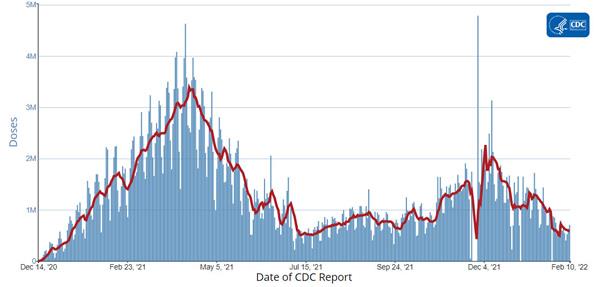 |
The introduction of COVID vaccine with general availability during the first quarter of 2021 reduced concern and offered a solution to COVID. Unfortunately, the emergence of new variants complicated control that depended on social distancing, masking, and attaining a level of population immunity that would have inhibited transmission of the virus. A further complication was the initial reluctance of a third of the U.S. population to be vaccinated with a residual 25 percent totally opposed to receive a dose based on religious, political or personal objections fueled by web-based and talk-radio misinformation.
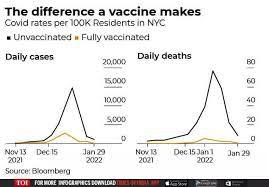 In reviewing statistics on COVID, there are clear indications of an improvement in weekly statistics. This however does not minimize the death of at least 920,000 of our fellow citizens each of whom was a person with a family and each a small but important tragedy. It is regrettable that since the advent of vaccination over 90 percent of fatalities could have been avoided even with exposure to the virulent Delta variant. As of Monday, January 14th there were 2,586 deaths in the U.S. with and from COVID down from 2,991 in mid-January and still representing 2,300 unnecessary fatalities given the preponderance of unvaccinated in body bags. There have been 78 million diagnosed cases of COVID since the onset of the pandemic with 206,317 cases recorded on February 14th down 78 percent in a month. On February 5th, the seven-day average of tests conducted approached 1.2 million but with a positive rate of 14.3 percent. That far exceeds the WHO target of five percent denoting control of an infection. We currently have 89,000 in hospital with 19,000 in ICU facilities creating a burden on our healthcare resources and personnel. This is an improvement on 152,000 hospitalizations from and with COVID in mid-January. In reviewing statistics on COVID, there are clear indications of an improvement in weekly statistics. This however does not minimize the death of at least 920,000 of our fellow citizens each of whom was a person with a family and each a small but important tragedy. It is regrettable that since the advent of vaccination over 90 percent of fatalities could have been avoided even with exposure to the virulent Delta variant. As of Monday, January 14th there were 2,586 deaths in the U.S. with and from COVID down from 2,991 in mid-January and still representing 2,300 unnecessary fatalities given the preponderance of unvaccinated in body bags. There have been 78 million diagnosed cases of COVID since the onset of the pandemic with 206,317 cases recorded on February 14th down 78 percent in a month. On February 5th, the seven-day average of tests conducted approached 1.2 million but with a positive rate of 14.3 percent. That far exceeds the WHO target of five percent denoting control of an infection. We currently have 89,000 in hospital with 19,000 in ICU facilities creating a burden on our healthcare resources and personnel. This is an improvement on 152,000 hospitalizations from and with COVID in mid-January.
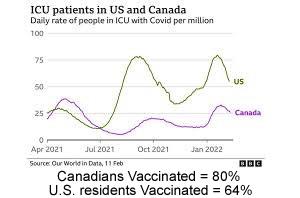 Since the introduction of COVID vaccines on an FDA emergency-use basis, 252 million have received at least one dose representing 76.5 percent of the population and 64.4 percent have received two doses of predominantly mRNA vaccines. Only 27.7 percent of those eligible have received a booster dose which stimulates solid immunity, hopefully for longer than six months. Unfortunately the uptake of vaccines varies among states, demographics and between urban and rural populations. There are still areas of rural America with vaccination rates between 25 and 30 percent, representing the potential for emergence of new variants and perpetuation of the disease. Hopefully the encouraging trends in reduced cases and consequentially lower levels of hospitalization will reflect in reduced fatality rates. Since the introduction of COVID vaccines on an FDA emergency-use basis, 252 million have received at least one dose representing 76.5 percent of the population and 64.4 percent have received two doses of predominantly mRNA vaccines. Only 27.7 percent of those eligible have received a booster dose which stimulates solid immunity, hopefully for longer than six months. Unfortunately the uptake of vaccines varies among states, demographics and between urban and rural populations. There are still areas of rural America with vaccination rates between 25 and 30 percent, representing the potential for emergence of new variants and perpetuation of the disease. Hopefully the encouraging trends in reduced cases and consequentially lower levels of hospitalization will reflect in reduced fatality rates.
It is reemphasized that resolving inflation, restoring our national productivity, educating our children, reducing our national debt, and improving our quality of life will be dependent on suppression of COVID. We can regard the current situation as Churchill’s “end of the beginning but not the beginning of the end”. COVID is now endemic worldwide and will never be eradicated and we will live with the prospect of emerging variants. The best we can hope for is to regard COVID as the ‘influenza of the 2020s’ and receive an annual booster vaccination. At least we have the opportunity to dispense with masks, attend in-person entertainment and industry meetings and revert to our pre-COVID lifestyle.

|
Consumer Willingness to Pay for Sustainability and Welfare
|
02/02/2022 |
|
 Market research company First Insight interviewed 1,000 consumers and determined that 68 percent of respondents indicated a willingness to pay more for sustainable products. In confirmation a survey of 51 retail business executives disclosed that 34 percent thought that consumers would pay more for sustainable products. Almost half of the business respondents considered that sustainability was an important determinant influencing consumers. These perceptions provide a justification to favor sustainability, with17 percent of consumers citing environmental considerations, 9 percent to reduce waste and only 8 percent concerned over welfare. Market research company First Insight interviewed 1,000 consumers and determined that 68 percent of respondents indicated a willingness to pay more for sustainable products. In confirmation a survey of 51 retail business executives disclosed that 34 percent thought that consumers would pay more for sustainable products. Almost half of the business respondents considered that sustainability was an important determinant influencing consumers. These perceptions provide a justification to favor sustainability, with17 percent of consumers citing environmental considerations, 9 percent to reduce waste and only 8 percent concerned over welfare.
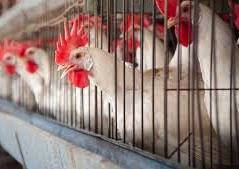 Simple questionnaires are inadequate to determine the real motivation to purchase. Conjoint analysis, a more sophisticated technique, actually provides an indication of trade-offs considered by a consumer in selecting a product. The important question is how much weight is assigned to any specific attribute. Voters in California passed Proposition #2 in 2008 and then Proposition #12 in 2018 by two to one majorities. Since the beginning of January 2022, the retail price of Large eggs has increased by 60 cents per dozen. The question arises as to whether the margin of passage for either proposition would have been as high, if all voters knew the financial implication of their decision to mandate cage-free housing with minimal space standards. Every consumer wants welfare, sustainability, food safety, availability, recycled or biodegradable packaging. But at what cost? Simple questionnaires are inadequate to determine the real motivation to purchase. Conjoint analysis, a more sophisticated technique, actually provides an indication of trade-offs considered by a consumer in selecting a product. The important question is how much weight is assigned to any specific attribute. Voters in California passed Proposition #2 in 2008 and then Proposition #12 in 2018 by two to one majorities. Since the beginning of January 2022, the retail price of Large eggs has increased by 60 cents per dozen. The question arises as to whether the margin of passage for either proposition would have been as high, if all voters knew the financial implication of their decision to mandate cage-free housing with minimal space standards. Every consumer wants welfare, sustainability, food safety, availability, recycled or biodegradable packaging. But at what cost?
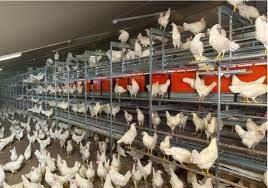 It is unfortunate that ballot initiatives have been proposed and passed and regulations issued without concern for unintended consequences. Prior to the Massachusetts Question #3 ballot on housing of hens, hogs and calves, the issues of the inevitable escalation in price and availability were raised but rejected since the ballot as presented to the electorate became an emotional and subjective issue. So now the consumers in California are paying the Pacelle tax imposed on them by a group of affluent activists and zealots without consideration that one in five children in California are in a state of food insecurity. The extra cost annually to consumers of eggs in the State is estimated to be $40 per family of four. Higher cost will be incurred through consumption of pork products. Perhaps the promoters of ballots to enhance the welfare of laying hens consider child malnutrition a collateral issue and of no concern to their purpose. It is unfortunate that ballot initiatives have been proposed and passed and regulations issued without concern for unintended consequences. Prior to the Massachusetts Question #3 ballot on housing of hens, hogs and calves, the issues of the inevitable escalation in price and availability were raised but rejected since the ballot as presented to the electorate became an emotional and subjective issue. So now the consumers in California are paying the Pacelle tax imposed on them by a group of affluent activists and zealots without consideration that one in five children in California are in a state of food insecurity. The extra cost annually to consumers of eggs in the State is estimated to be $40 per family of four. Higher cost will be incurred through consumption of pork products. Perhaps the promoters of ballots to enhance the welfare of laying hens consider child malnutrition a collateral issue and of no concern to their purpose.

|
Questions Arise Over Claims by Just Eat Over Cell-Cultured Meat
|
02/02/2022 |
|
 Advances in cell-cultured meat technology have been documented in both scientific papers and the financial press over the past two decades. Concurrently the food industry and venture capitalists have witnessed a sequence of self-promotions by Josh Tetrick, creating substitutes for eggs and more recently a claimed entry into cell-cultured meat. At the launch of egg-free mayonnaise, Tetrick claimed that his product, that was effectively off-the-shelf and recipe book- available would render the entire egg industry obsolete. His early business endeavors were marked by controversy, questionable business practices, frequent self-congratulatory press releases and interviews in vegan-oriented magazines and websites stressed the aspect of welfare. Since the early 2000's, Tetrick and his companies in various iterations have made little impact on the number of hens nor has he replaced either shell eggs or real egg liquid. His early endeavors did however reputedly raise over $100 million in venture capital with little to show for it. Advances in cell-cultured meat technology have been documented in both scientific papers and the financial press over the past two decades. Concurrently the food industry and venture capitalists have witnessed a sequence of self-promotions by Josh Tetrick, creating substitutes for eggs and more recently a claimed entry into cell-cultured meat. At the launch of egg-free mayonnaise, Tetrick claimed that his product, that was effectively off-the-shelf and recipe book- available would render the entire egg industry obsolete. His early business endeavors were marked by controversy, questionable business practices, frequent self-congratulatory press releases and interviews in vegan-oriented magazines and websites stressed the aspect of welfare. Since the early 2000's, Tetrick and his companies in various iterations have made little impact on the number of hens nor has he replaced either shell eggs or real egg liquid. His early endeavors did however reputedly raise over $100 million in venture capital with little to show for it.
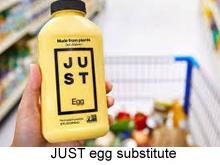 Moving on to new ventures, Tetrick established the Good Meat Division of his Eat Just enterprise and has raised a claimed $300 million to establish production units. Currently his business interests appear to be centered in Singapore that approved cell-cultured meat for sale. With this development, Tetrick has changed his emphasis from welfare to sustainability, but the grandiose sentiments to replace all red meat persist. His activities purport to parallel earlier and far more substantial and credible entrants into the field of laboratory-cultured meat. It is estimated that over $2 billion has been invested in cell-cultured enterprises with the leading companies Future Meat Technologies, Aleph Farms and Supermeats of Israel; Upside Foods (previously Memphis Meats), Matrix Meats and Blue Nala of the U.S. and Mosa Meats of the Netherlands. These enterprises have a number of characteristics in common:- Moving on to new ventures, Tetrick established the Good Meat Division of his Eat Just enterprise and has raised a claimed $300 million to establish production units. Currently his business interests appear to be centered in Singapore that approved cell-cultured meat for sale. With this development, Tetrick has changed his emphasis from welfare to sustainability, but the grandiose sentiments to replace all red meat persist. His activities purport to parallel earlier and far more substantial and credible entrants into the field of laboratory-cultured meat. It is estimated that over $2 billion has been invested in cell-cultured enterprises with the leading companies Future Meat Technologies, Aleph Farms and Supermeats of Israel; Upside Foods (previously Memphis Meats), Matrix Meats and Blue Nala of the U.S. and Mosa Meats of the Netherlands. These enterprises have a number of characteristics in common:-
- They were established by scientists with specific experience in cell-culture technology, generally with an affiliation to a university or technological institute.
- Companies that have initiated pilot production have frequently received public sector support regarded as an endorsement of proof of concept
- Established companies in the field have made steady progress moving from laboratory scale through to pilot plants with plans to expand into commercial production
- Only a few companies have successfully developed growth media required to sustain the proliferation of cells in biological reactors
- The leading contenders for future commercial production have affiliations with existing red-meat producers or have received funding from established food companies and reputable venture capital investors. This presumes evaluation of concepts and progress by experienced and competent food scientists, marketing specialists and financial analysts.
- Companies in the field are conservative in their projections and pronouncements consistent with acceptable practice in an emerging industry without established government standards and regulation.
- Established companies have provided tours of their facilities to experts in food technology and have provided images of laboratories, pilot plants and designs of projected commercial facilities, designating equipment and identifying teams of competent and qualified R&D, QA and production personnel
- The functional companies are withholding projections of sales based on the current wide disparity between projected production costs using existing technology and prevailing prices of red meat and chicken.
- All companies acknowledge that regulatory approval both in the E.U. and the U.S. will be necessary for wide-scale acceptance of cell-cultured meat.
- Observers monitoring progress in the field have yet to be convinced that even with comparative costs, that consumers will shift their preference from conventional meat based on intangibles such as welfare, sustainability and environmental considerations.
And now we come to the Eat Just Good Meat Division- - -
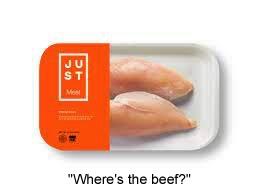 It is time for Josh Tetrick to conform to the conventions of the developing industry. He must disclose the names of his scientists and their affiliations who have and are contributing to his apparent come-from-nothing emergence into the field. Cell-culture on a pilot-scale volume is not achieved by cooks in a kitchen. He will have to provide broad details of his technology and equipment that he intends to apply to progress from pilot study to commercialization. He claims to be serving cell-cultured meat in Singapore. Where is it produced? In what quantities? Is the product a composite of real and cultured product and if so their relative proportions? To receive more than the alleged support of obscure venture capital investors and sovereign funds of Middle East nations, reputable food scientists must provide positive comments on his progress and achievements relative to competitors. Marketing and financial experts should be able to comment on his projected pricing and production capacity and his marketing strategy. It is time for Josh Tetrick to conform to the conventions of the developing industry. He must disclose the names of his scientists and their affiliations who have and are contributing to his apparent come-from-nothing emergence into the field. Cell-culture on a pilot-scale volume is not achieved by cooks in a kitchen. He will have to provide broad details of his technology and equipment that he intends to apply to progress from pilot study to commercialization. He claims to be serving cell-cultured meat in Singapore. Where is it produced? In what quantities? Is the product a composite of real and cultured product and if so their relative proportions? To receive more than the alleged support of obscure venture capital investors and sovereign funds of Middle East nations, reputable food scientists must provide positive comments on his progress and achievements relative to competitors. Marketing and financial experts should be able to comment on his projected pricing and production capacity and his marketing strategy.
The hallmarks of a fraud as we know from the finger-prick house of cards, and other less prominent cases include:-
- Excessive hype and grandiose claims
- Secrecy as to technology
- A shallow bench of reputable scientists and business professionals with high turnover
- Name dropping and appointment of figureheads to non-executive ‘Advisory Boards’
- An obvious lack of acceptance by the scientific community or endorsement by independent business journalists or by disinterested qualified observers.
After two decades of hyperbole and self-promotion, it is time for Josh Tetrick and specifically the Good Meat Division to demonstrate that it is a legitimate developer in the field of cell-cultured meat with capability, technology, installations and business plans equivalent to those of established competitors. Either his enterprise conforms to acceptable ethical business practice with tangible achievements that can be verified, or his enterprise is simply a vehicle to harvest venture capital from those who are motivated by equal parts of optimism, greed and cupidity.

|
SCOTUS Negates OSHA Vaccine Mandate
|
01/17/2022 |
|
 Last week the Supreme Court of the United States (SCOTUS) in a 6 to 3 decision set aside the November 4th 2021 OSHA mandate requiring companies with more than one hundred employees to enforce vaccination against COVID. As has been stated previously, EGG-NEWS is not in favor of mandates since they are basically ineffective and generate antagonism towards the most effective method of suppressing COVID. Last week the Supreme Court of the United States (SCOTUS) in a 6 to 3 decision set aside the November 4th 2021 OSHA mandate requiring companies with more than one hundred employees to enforce vaccination against COVID. As has been stated previously, EGG-NEWS is not in favor of mandates since they are basically ineffective and generate antagonism towards the most effective method of suppressing COVID.
The decision by SCOTUS was based on the legal reality that Congress did not extend authority to OSHA to issue a mandate to enforce vaccination for a disease that is not strictly acquired in the workplace. The decision in no way reflects adversely on the public health benefits of COVID vaccination. The mandate would have extended vaccination to 80 million workers, many of whom have in fact been vaccinated. Submissions by the Solicitor General to the Court projected that the mandate would have saved 6,500 lives and prevented 250,000 hospitalizations over six months. Whether these figures based on models are in fact valid is now moot.
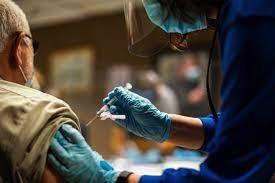 Again considering the strict legal aspects of mandates, SCOTUS ruled 5 to 4 to allow a vaccine mandate for 10.4 million healthcare workers in medical facilities receiving either Medicare or Medicaid funding. This decision would apply to 10.4 million workers in 76,000 facilities. It is a matter of record that large hospitals have attained 99 percent compliance among workers with minimal resistance to receiving a COVID vaccine. Again considering the strict legal aspects of mandates, SCOTUS ruled 5 to 4 to allow a vaccine mandate for 10.4 million healthcare workers in medical facilities receiving either Medicare or Medicaid funding. This decision would apply to 10.4 million workers in 76,000 facilities. It is a matter of record that large hospitals have attained 99 percent compliance among workers with minimal resistance to receiving a COVID vaccine.
The SCOTUS ruling does not bar individual companies from imposing mandates on their employees. Numerous private and public companies including Starbucks, GE, Google, Tyson Foods, Southwest and United Airlines, American Express and City Bank have required employees to be fully vaccinated or submit justification for an exemption based on medical or religious grounds or due to sincere beliefs.
Predictably, organizations including the FMI, National Grocers Association and the National Retail Federation lauded the SCOTUS decision. The concerns of these organizations focused on the prospect that their members would lose workers who resisting vaccination, further complicating a difficult labor situation. There is, however, little evidence that a vaccine mandate imposed by a company results in appreciable resignations as noted by the reports from companies previously requiring vaccination. Anecdotal evidence suggests that most workers in large companies especially in situations where work requires close contact, feel more confident knowing that fellow workers are immunized or alternatively tested and masked.
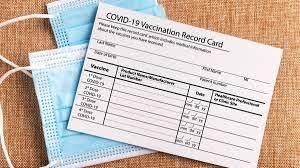 The Kaiser Family Foundation determined the average cost of a single hospitalization for an unvaccinated adult to attain $20,000 per case. Over the period June to November 2021 the total cost for 700,000 hospitalizations for the unvaccinated over the six-month period was $13.8 billion. In the report, the foundation noted, "the monetary cost of treating unvaccinated people for COVID is borne not only by patients but also by society more broadly including taxpayer-funded public programs and private insurance premiums paid by workers, businesses and individual purchasers". The Kaiser Family Foundation determined the average cost of a single hospitalization for an unvaccinated adult to attain $20,000 per case. Over the period June to November 2021 the total cost for 700,000 hospitalizations for the unvaccinated over the six-month period was $13.8 billion. In the report, the foundation noted, "the monetary cost of treating unvaccinated people for COVID is borne not only by patients but also by society more broadly including taxpayer-funded public programs and private insurance premiums paid by workers, businesses and individual purchasers".
The decision to defer or reject vaccination against COVID should not be considered only as a freedom and personal rights issue alone as rejecting vaccination has implications for the economy. In recognition of the financial burden associated with failure to be immunized, Delta Airlines imposes a fee on workers for regular testing. The Province of Quebec has imposed a tax on those who are not vaccinated.
We have been living with COVID caused by variants of SARS-CoV-2 for twenty-three months and face the future prospect of viruses emerging that may express altered infectivity and pathogenicity. The level of incidence rates, hospitalizations and deaths in counties and communities in the U.S. is indirectly correlated with the proportion of immunized individuals in the population. This should confirm the value of vaccination, irrespective of political persuasion or response to misleading internet posts or talk-radio rhetoric.
The decision by the Administration to mandate vaccination was a ham-handed but sincere attempt to reduce the burden of the disease on our Nation. The end-run by OSHA was ill-advised and now determined to be illegal by SCOTUS. Notwithstanding the decision, epidemiologic evidence confirms the value of vaccination that is overwhelmingly beneficial in terms of public health and the economy. By mid-January 2020, 527 million doses of COVID vaccine have been administered, and 207 million or 63 percent of the population have received two doses. About 34 percent have received a ‘booster’ dose now regarded as “fully vaccinated”. On a state basis U.S. COVID vaccination rates range from 48 percent in Wyoming to 78 percent in Vermont. Of concern is that the three major egg-producing states range from 52 percent in Indiana to 60 percent in Iowa. Proportions of those vaccinated in rural counties where egg complexes are located are even lower than state averages, a situation that should concern producers.
It is hoped that vaccination rates will increase, contributing to a reduction in hospitalization and mortality. The U.S. has demonstrated considerable restraint in imposing restrictions on the unvaccinated compared to the EU. Newly elected Chancellor of Germany, Olaf Scholz stated, "we will not allow a tiny minority of unhinged extremists to impose its will on our entire society”. Germany has banned unvaccinated people from most areas of public life but has stopped short of a mandate. President Emmanuel Macron of France stated, "we really want to piss off the unvaccinated, we are going to keep doing it until the end, this is our strategy". Proof of vaccination is obligatory for most public and social activities in France. Austria has imposed a lockdown for the unvaccinated and is scheduled to introduce a vaccine mandate from February 1st. The non-vaccinated, devoid of certificates are progressively excluded from participating in society with the general approval of the majority of citizens in E.U. nations.
In the U.S. our strategy should be to encourage vaccination by demonstrating the health benefits supported by reliable statistics and coupled with reasonable, rational, practical and enforceable incentives and disincentives. The encouragement of family physicians, ministers, employers, educators at the local and county levels and endorsement by entertainment and sports personalities will do more to encourage the vaccine hesitant to be protected than federal mandates.

|
Free-Living Birds Affected by Avian Influenza in 2021
|
01/17/2022 |
|
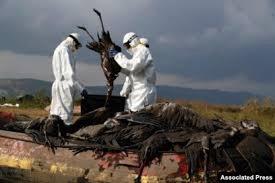 In past years migratory birds, and especially waterfowl, were involved in transmission of H5 and H7 strains of avian influenza without reports of death. In 2021, extensive mortality has occurred in diverse species suggesting changes in the dynamic between highly pathogenic strains of avian influenza and their hosts. During the winter of 2021, H5N1 was the predominant strain of avian influenza detected in 16 European nations in addition to West and Southern Africa and Asia. In past years migratory birds, and especially waterfowl, were involved in transmission of H5 and H7 strains of avian influenza without reports of death. In 2021, extensive mortality has occurred in diverse species suggesting changes in the dynamic between highly pathogenic strains of avian influenza and their hosts. During the winter of 2021, H5N1 was the predominant strain of avian influenza detected in 16 European nations in addition to West and Southern Africa and Asia.
Wild species that have been severely affected include:
- The barnacle goose (Branta leucopsis) along the Solway Firth of Scotland. Approximately 4,000 of this species have died representing 10 percent of the Svalbard population.
- Demoiselle cranes (Grus virgo) in a wildlife reserve in Rajasthan, India.
- Bank cormorants (Phalacrocorax neglectus) - approximately 18,000 of this species have died on the Dyer Island Reserve in the western cape of the Republic of South Africa.
- The common crane (Grus grus) with as many as 8,000 dead in the Hula Valley Wildlife Reserve in Northern Israel.
Other species affected with H5N1 include white pelicans (Pelcanus erythorhynchos), widgeons (Mareca spp), and teal (Anas crecca) in Scandinavian countries including the Waddensea Region in Southwest Denmark. Reports of widespread deaths in crows (Corvus splendens) in India. Mute swans (Cygnus olor) have died in E.U. nations yielding H5N8 avian influenza.
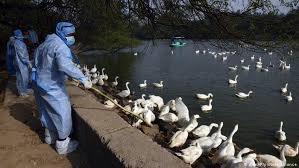 Extensive outbreaks of avian influenza occur among species resting in wetlands serving as intermediate resting areas along migration paths between Eurasia and Africa. In recent years, changes in agriculture and possibly global warming have influenced routes of migration. High concentration of birds in limited areas may have facilitated mutation of low-pathogenic strains of H5 and H7 avian influenza to increase in virulence, as is the case in commercial poultry. Extensive outbreaks of avian influenza occur among species resting in wetlands serving as intermediate resting areas along migration paths between Eurasia and Africa. In recent years, changes in agriculture and possibly global warming have influenced routes of migration. High concentration of birds in limited areas may have facilitated mutation of low-pathogenic strains of H5 and H7 avian influenza to increase in virulence, as is the case in commercial poultry.
Experience since 2014 has demonstrated the need to maintain surveillance over wild bird populations to determine the serotypes of avian influenza that are present and to quantify risks of extension to commercial poultry.
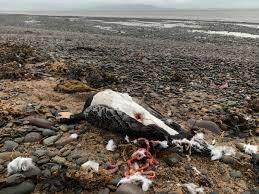 Clearly the cohabitation of migratory birds, and especially waterfowl, with non-confined ducks and chickens contributes to introduction of avian influenza into commercial poultry. This is evidenced by the December 2021 outbreak on the Avalon Peninsula of the Province of Newfoundland and Labrador where the same H5N1 virus was isolated from black-backed gulls (Larus spp) concurrently with an outbreak in an exhibition farm housing numerous species of indigenous and exotic waterfowl. Clearly the cohabitation of migratory birds, and especially waterfowl, with non-confined ducks and chickens contributes to introduction of avian influenza into commercial poultry. This is evidenced by the December 2021 outbreak on the Avalon Peninsula of the Province of Newfoundland and Labrador where the same H5N1 virus was isolated from black-backed gulls (Larus spp) concurrently with an outbreak in an exhibition farm housing numerous species of indigenous and exotic waterfowl.
Obviously continuous surveillance of migratory birds and an appreciation of their ever changing migratory pathways is of importance to the World’s poultry industries.

|
California Consumers to Pay the Price for Proposition #12
|
01/12/2022 |
|
According to the Orange County Register, California consumers are about to pay for implementation of Proposition #12 adopted in November 2018 that came into effect on January 1st, 2022.
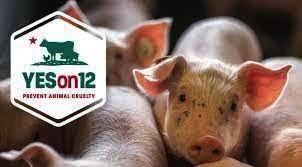 Proposition #12 entitled Establishing New Standards of Confinement of Certain Farm Animals: Banning Sale of Certain-Non Complying Products established minimum space requirements for veal calves, breeding sows, and egg producing hens. To prevent “unfair competition” the State of California issued regulations requiring out-of-state producers shipping products to California to comply withstandards imposed on in-State producers. Proposition #12 entitled Establishing New Standards of Confinement of Certain Farm Animals: Banning Sale of Certain-Non Complying Products established minimum space requirements for veal calves, breeding sows, and egg producing hens. To prevent “unfair competition” the State of California issued regulations requiring out-of-state producers shipping products to California to comply withstandards imposed on in-State producers.
It is now illegal to sell meat or eggs from animals that are not housed in compliance with the space requirements imposed in accordance with regulations based on Proposition #12. Contravention of the regulations is a misdemeanor with severe criminal and civil penalties.
The U.S. egg industry has transitioned from conventional cages to California-compliant systems initiated following the adoption of Proposition #2 in 2008. For many years, consumers in California have paid a premium on eggs purchased at supermarkets based on higher production costs and transport to the state. Producers in California with obsolete housing and facilities were either disinclined or unable to convert from cages to alternative housing. Larger producers were able to convert some houses and were able to raise capital to erect new housing. One large complex was erected in the Central Valley to supply the state market. In 1994, California held approximately 15 million hens. This number declined to a low of 10 million in 2015 with a slow increase to 13 million in 2021. It is estimated that the output of 25 million hens are required to compensate for the difference between demand and in-state production, assuming per capita egg consumption of the 40-million population in California is the same as the other states in the U.S. The difference between Midwest and California prices is referred to as the “Pacelle Tax” based on the fact that Wayne Pacelle, then President of the Humane Society of the United States, was instrumental in proposing and promoting Proposition #2.
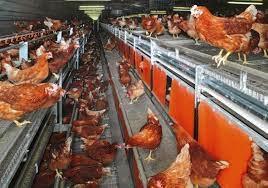 Availability of eggs in California will not be affected by Proposition #12 as the industry planned and invested in advance of the compliance date. The situation with regard to pork is however different. Proposition #12 was specifically aimed at sow gestation stalls that confined breeding animals over successive reproductive cycles from conception through transfer to farrowing crates. The major hog producers in the U.S. converted to group housing, following the lead of the egg industry. Many packers, insisted that hogs purchased for processing were derived from sows held in compliance with California requirements and the proposed regulations contemplated or introduced in other states. A number of companies, including Seabord Corporation, stonewalled and are now litigating to overturn regulations imposed in terms of Proposition #12. Federal circuit courts have successively rejected challenges to Proposition #12 and the regulations that prevent shipment of noncompliant product from a state of origin to California. Availability of eggs in California will not be affected by Proposition #12 as the industry planned and invested in advance of the compliance date. The situation with regard to pork is however different. Proposition #12 was specifically aimed at sow gestation stalls that confined breeding animals over successive reproductive cycles from conception through transfer to farrowing crates. The major hog producers in the U.S. converted to group housing, following the lead of the egg industry. Many packers, insisted that hogs purchased for processing were derived from sows held in compliance with California requirements and the proposed regulations contemplated or introduced in other states. A number of companies, including Seabord Corporation, stonewalled and are now litigating to overturn regulations imposed in terms of Proposition #12. Federal circuit courts have successively rejected challenges to Proposition #12 and the regulations that prevent shipment of noncompliant product from a state of origin to California.
It is indeed unfortunate that additional costs for pork and related products will be added to the inflation in meat estimated at between 10 and 13 percent, depending on category. The California Department of Food and Agriculture estimates that Proposition #12 alone will increase the cost of food for every state resident by $50 per year. Given the population of California at 40 million, Proposition #12 carried at $2.0 billion price tag. This reality was omitted in the discussion and hype characterising the rush to ensure higher standards of welfare. Legislation by ballot is usually based on emotion and is subject to misinformation. It is questioned whether a three to one majority for passage of Proposition #12 would have been achieved if voters in a family of four knew that by adopting the proposition, the family budget would be increased by $200 each year. Given that California has minimal hog production, pork products are overwhelmingly imported from states with high production that is now required to comply with Proposition #12.

|
Sixth Circuit Lifts Stay of OSHA COVID ETS
|
12/28/2021 |
|
The Sixth Circuit U.S. Court of Appeals has lifted the stay placed on the Emergency Temporary Standard (ETS) issued by the Occupational Safety and Health Administration mandating vaccination and testing.
 Predictably the National Retail Federation (NRF) criticized the action by the Court commenting “The Sixth Circuit has decided to lift the stay instituted by the Fifth Circuit. In our effort to consider additional legal options we will also continue to prepare our members to comply with this onerous mandate.” Predictably the National Retail Federation (NRF) criticized the action by the Court commenting “The Sixth Circuit has decided to lift the stay instituted by the Fifth Circuit. In our effort to consider additional legal options we will also continue to prepare our members to comply with this onerous mandate.”
In an additional comment, the NRF urged the Administration to delay implementation of the ETS in order to find “viable ways to increase vaccination rates and mitigate the spread of the virus in 2022.” Although this approach is supported in principle, litigation initiated by the National Retail Federation is purely self-serving and denies the magnitude of COVID with 50 million cases and over 800,000 fatalities. The organization believes that opposing the ETS, which is based on science, will lead to absenteeism and resignations, further complicating a difficult labor market.
The membership of NRF and their customers will be better served if the leadership of the organization promoted vaccination and other preventive measures that are widely accepted. They would provide a benefit to their members and society if they adopted a broader view of the public health crisis and realized the implications of statistics relating to an increased incidence of COVID cases, hospitalizations and fatalities. While they waste money and time in legal posturing to oppose a vaccination mandate as the principal measure to prevent COVID, the Federation could be more meaningfully contributing to positive and productive activities in cooperation with public health authorities.
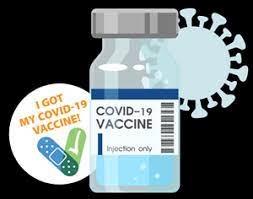 The success of companies such as Tyson Foods that has immunized in excess of 97 percent of its workers and the equivalent vaccination rates among employees of the federal government and the military should serve as a guide to the NRF. If the Omicron Variant that is more infectious than the prevailing Delta virus impacts urban areas, authorities will impose lockdowns that will be even more restrictive and damaging to retailers and their customers. The success of companies such as Tyson Foods that has immunized in excess of 97 percent of its workers and the equivalent vaccination rates among employees of the federal government and the military should serve as a guide to the NRF. If the Omicron Variant that is more infectious than the prevailing Delta virus impacts urban areas, authorities will impose lockdowns that will be even more restrictive and damaging to retailers and their customers.
This said, EGG-NEWS is not in favor of broad government mandates. This not based on considerations of freedom but on practicality. Those who are sufficiently concerned over their health and that of their families and communities have been vaccinated. This proportion of our population will willingly receive any number of FDA-approved vaccines including the inevitability of annual boosters tailored to specific variants in circulation. Those who are implacably opposed to vaccination based on political sentiments and gross misinformation will not be induced to receive a vaccine by a mandate. Positive messages from local health-care providers should form the basis of persuading the vaccine-hesitant as is apparently occurring following the emergence of Omicron. For those who are absolutely opposed to COVID vaccination other inducements can be considered. These might include denial of entry to public places, imposition of fees for regular testing and charges for hospitalization and treatment for non-vaccinated patients.
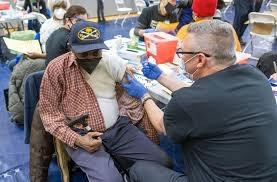 At the end of the day there is no constitutional right to infect ones fellow citizens. The Supreme Court ruled that obligatory vaccination against smallpox was legal 116 years ago in Jacobson v Massachusetts. The majority opinion written by Justice Harlan will probably be revisited by SCOTUS in 2022. At the end of the day there is no constitutional right to infect ones fellow citizens. The Supreme Court ruled that obligatory vaccination against smallpox was legal 116 years ago in Jacobson v Massachusetts. The majority opinion written by Justice Harlan will probably be revisited by SCOTUS in 2022.
The quicker we can achieve a high level of population immunity through vaccination the faster we can return to a semblance of pre-COVID normality in our economy and in society. More extensive vaccination on a worldwide basis will be necessary to prevent the emergence of new variants and to allow international travel. That is an altogether bigger challenge than implementing a regional or national U.S. program. Let us therefore be collectively guided by our leading scientists and epidemiologists and roll up our sleeves. The stakes are too high to do otherwise.

|
The Egg Industry in the New Year
|
12/23/2021 |
|
 As we near the end of 2021 it is appropriate to consider what the new year has in store for us. The egg industry is part of agribusiness which in turn is a large component of our economy. We are obviously influenced by both national events and interaction with trading nations that directly or indirectly affect margins. Factors that will be relevant to profit in 2022 include:- As we near the end of 2021 it is appropriate to consider what the new year has in store for us. The egg industry is part of agribusiness which in turn is a large component of our economy. We are obviously influenced by both national events and interaction with trading nations that directly or indirectly affect margins. Factors that will be relevant to profit in 2022 include:-
The World Economy
- Economists project a growth rate of four percent with 90 percent of those surveyed falling within a range of three to six percent. A growing economy will be beneficial for our industry both with respect to domestic consumption and exports.
International Relations
- Our relationship with China will determine in large measure the volume of corn and soybeans that will be exported to that Nation, directly influencing production cost.
COVID
- The U.S. has been burdened with COVID since February 2020. The infection is now endemic in the U.S. and given the situation in developing nations the emergency of new variants following Omicron should be expected. The U.S. will only be able to resume a pre-COVID way of life if new and more specific mRNA vaccines are developed and more importantly that they are administered to a wider proportion of our population. Other preventive measures, including masking, social distancing, and avoiding large gatherings, will probably be necessary through the summer of 2022. Annual boosters against both COVID and influenza will become routine.
Congressional Gridlock
- The unfortunate polarization of our electorate will ensure that any far-reaching legislation is unlikely to be enacted. Bills that receive bipartisan support, such as the Ocean Shipping Reform Act of 2021, will be passed but we will have to rely on the professional managers within federal departments for continuity of services, stability and progress
Environmental Issues
- Sustainability will become more important with both consumers and customers demanding renewable energy and biodegradable packaging. Customers and especially the major chains and also financial institutions will require metrics to confirm progress in reducing greenhouse gas emissions and conservation of water and other resources.
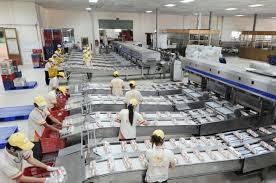 Labor Labor
- Absent meaningful immigration reform wage rates will rise in an inflationary economy with some strong regional impacts. In addition to salaries and wages, employees will demand benefits relating to health insurance, childcare and leisure time. The increasing cost of manual labor will result in adoption of mechanization. Specific reference is made to robotic case packers with the potential to displace the highest concentration of labor in a packing plant.
Disease Control
- Avian influenza represents a clear and present risk to the industry. Although progress has been made in improving both structural and operational biosecurity, sporadic outbreaks are inevitable. With current contingency planning, introduction of avian influenza into commercial units by migratory waterfowl should be contained as with the 2016 and 2020 isolated cases in turkeys in Indiana and the Carolinas respectively.
- The past decade has seen the adoption of Marek’s-virus vector vaccines for IBD and ILT. We can anticipate new products based on mRNA technology that may provide higher levels of protection against viral diseases. Egg production presents more disease challenges than the broiler industry due to housing large numbers of hens on multi-age complexes with long-lived flocks requiring durable protection.
Regulation
- In 2022 the industry can expect greater scrutiny by EPA and OSHA. There will be more oversight over disposal of waste predicating installation of systems to convert manure to a saleable product establishing additional cash streams for producers.
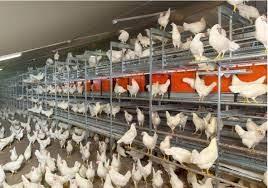 Cage Conversion Cage Conversion
- Transition from conventional cages to alternative systems, including in-line complexes with aviaries, will continue but possibly at a slower pace consistent with demand. Cage-free eggs are now a commodity subject to the same pressures as generics. Although 30 percent of hens producing shell eggs are housed in alternatives to cages, the industry will still have to fund replacements estimated to cost $6 to $7 billion. This will include housing for rearing pullets and establishing some new complexes with modern packing plants and feed mills.
Barbara and I and the team at EGG-NEWS, including contributors, our transcribers, and web management, extend to our sponsors, subscribers and the entire industry our best wishes for 2022. Our hope is for a disease-free, profitable and above all productive and enjoyable year.

|
COVID Vaccination, to Mandate or Not?
|
12/12/2021 |
|
On November 5th the Occupational 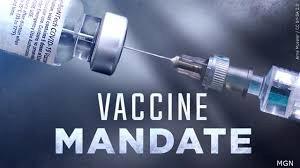 Safety and Health Administration issued an Emergency Temporary Standard requiring employers with more than a hundred workers to vaccinate against COVID. The OSHA regulation allowed for exemptions on the basis of sincere religious belief or medical exceptions. The day following, the U.S. Court of Appeals for the Fifth Circuit stayed the ETS. The Fifth Circuit then denied a Department of Labor motion to lift the stay and the issue was referred to the Sixth Circuit that undertook to review a consolidated of numerous motions opposing the ETS. At the present time the ETS is suspended until final legal resolution that in all probability will require a ruling from the Supreme Court. Safety and Health Administration issued an Emergency Temporary Standard requiring employers with more than a hundred workers to vaccinate against COVID. The OSHA regulation allowed for exemptions on the basis of sincere religious belief or medical exceptions. The day following, the U.S. Court of Appeals for the Fifth Circuit stayed the ETS. The Fifth Circuit then denied a Department of Labor motion to lift the stay and the issue was referred to the Sixth Circuit that undertook to review a consolidated of numerous motions opposing the ETS. At the present time the ETS is suspended until final legal resolution that in all probability will require a ruling from the Supreme Court.
EGG-NEWS is not in favor of mandates despite the fact that this newsletter has consistently and will continue to promote vaccination as the most important component of an integrated program of preventing COVID. The value of vaccination is recognized by the intensive livestock industry with most red-meat packers and broiler integrators implementing immunization as soon as vaccine was available. It is a matter of record that leading protein companies including Tyson Foods have achieved higher than 95 percent vaccine compliance applying stick-and-carrot policies ultimately mandating vaccination but with education and financial incentives making vaccination convenient through on-site clinics.
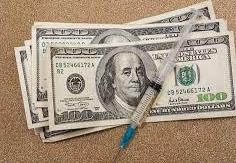
The reason why mandates are considered inappropriate is that they are by intent heavy-handed and regarded as an intrusion into personal liberty representing Government interference in what might be justifiably regarded as an issue between patient and physician. Unfortunately, at an early stage in the emergence of COVID, prevention including masking, social distancing and then vaccination became a political issue whereas the pandemic is in reality a public health situation.
Concern over absenteeism and protest resignations in a tight labor market is accepted as the principal justification for agricultural associations opposing mandates. Recent studies have shown that less than three percent of employers have experienced resignations following mandates including major food producers, medical-care providers and transport companies. The decision by the Administration to introduce a mandate, although based on the need to reduce the incidence rate of the Delta variant was ill advised. In the same way the previous Administration in the early stages of COVID followed a policy of denial to the point of suppressing statistics and placing pressure on the Centers for Disease Control. Both approaches are ethically and practically wrong and ultimately ineffective. It would have been more beneficial for both  Administrations to have adopted realistic, middle-of-the road promotion of vaccination. Simply publicizing scientific data supporting protection against hospitalization and fatalities and offering the prospect of ending the pandemic should have sufficed before the well was poisoned. Positive inducements while recognizing legitimate disinclination to be vaccinated in some areas and among some demographics would have increased the proportion of fully vaccinated U.S. residents above the present 60 percent that is inadequate to achieve herd immunity. Administrations to have adopted realistic, middle-of-the road promotion of vaccination. Simply publicizing scientific data supporting protection against hospitalization and fatalities and offering the prospect of ending the pandemic should have sufficed before the well was poisoned. Positive inducements while recognizing legitimate disinclination to be vaccinated in some areas and among some demographics would have increased the proportion of fully vaccinated U.S. residents above the present 60 percent that is inadequate to achieve herd immunity.
While awaiting the decision of the Sixth Circuit, there are a number of actions that can be taken by employers in anticipation of either mandated vaccination or an in-company program. These include:-
- Ascertaining the proportion of workers who are vaccinated but maintaining compliance with state and federal regulation concerning confidentiality
- Establish a clearly articulated policy on vaccination that can be issued to all workers in both English and the preferred language of a diverse work force
- Maintain a record of vaccination status of those volunteering information
- Make provision for a suitable level of rapid testing using immuno-based antigen detection kits
- Require any employee who is concerned over possible infection to self-quarantine with pay
- Require employees who are not vaccinated to wear face covering while at an internal workplace or in a company vehicle
- Establish a system to report COVID diagnoses to health authorities and OSHA
- Develop a policy for dealing with employees who are disinclined to be vaccinated
The rate of spread and extent of the Omicron variant has yet to be determined. If the numerous mutations on the spike protein make this strain more infectious than the predominant Delta strain or leads to diminished protection, our Nation will have a problem. Initial evidence suggests that two priming doses of mRNA vaccine followed by a booster will provide protection against the Omicron variant that is more infectious but may be less pathogenic than the Delta strain.
Notwithstanding the proportion of variants of COVID in circulation worldwide, the Delta variant is responsible for the recent increase in cases, hospitalizations and fatalities especially in individuals with predisposing co-morbidities. Setting aside considerations of mandates, litigation, political views and religious sentiment, vaccination as a scientifically valid method of prevention must be encouraged to enable our Nation to return to a pre-COVID economy and way of life.

|
Concern but not Despair over Omicron COVID Emergence
|
12/09/2021 |
|
 In late November, the Republic of South Africa recorded a noteworthy increase in the number of incident cases of COVID. Sequencing confirmed the emergence of a new variant, B.1.1.529 now designated the Omicron variant. Subsequently this variant was introduced to the E.U. and also the U.S. and is now undergoing community transmission in at least 20 states. In late November, the Republic of South Africa recorded a noteworthy increase in the number of incident cases of COVID. Sequencing confirmed the emergence of a new variant, B.1.1.529 now designated the Omicron variant. Subsequently this variant was introduced to the E.U. and also the U.S. and is now undergoing community transmission in at least 20 states.
The Omicron strain has been the subject of detailed molecular evaluation, revealing over 30 mutations on the spike protein that theoretically would favor infectivity and the possibility of the virus being able to evade neutralizing antibodies. In addition to gene assay of the Omicron variant, data is emerging from South Africa that may indicate what the U.S. can expect in terms of infectivity and pathogenicity.
|

GAWCC home of the IPPE |
Although the WHO and epidemiologists in developed nations are carefully monitoring the situation in South Africa, it is clear that differences exist among nations. The progress of the infection in South Africa may not reflect the future situation in the E.U. or the U.S. It is noted that in late 2020 the Beta variant was the predominant strain in South Africa but did not spread to other nations. The Alpha strain was responsible for most infections in the E.U. in mid-2020, but did not occur in South Africa. In contrast, the Delta variant that emerged in India is now the predominant strain in the E.U. and the U.S. It remains to be seen whether the Omicron variant can outcompete the predominant Delta strain in the U.S. and other nations.
|
|
It is emerging that the Omicron variant has a rate of infection approximately three times higher than the Delta variant. South African epidemiologists have recorded a relatively high rate of reinfection among individuals who were previously diagnosed with either the Beta or Delta variants. Emerging evidence suggests that the Omicron variant is less pathogenic than the Delta variant based on subjective clinical evaluation and the number of hospital admissions. It is noted that the proportion of the population protected by vaccination in the U.S. exceeds that in the Republic of South Africa. There are also obvious differences between South Africa and the U.S. with regard to the standard of healthcare, prevalence of immunosuppression due to HIV and the realities of suboptimal nutrition and housing.
The emergence of the Omicron variant is a cause for concern among those responsible for public health in industrialized nations, especially since there are many unknowns concerning infectivity and pathogenicity. This said, the Delta variant is the significant current challenge facing the U.S. The Delta variant is responsible for a three percent increase in infections to 660,000 over the seven-day period ending December 3rd. To date the U.S. has experienced 49 million diagnosed cases with 806,000 fatalities corresponding to a two percent death rate among those infected. On December 3rd there were 57,000 patients hospitalized with COVID, an increase of 15 percent from the previous two-week period. Concurrently fatalities attained 6,500 representing an eight percent decrease over the previous week. Hospital admissions are overwhelmingly in non-vaccinated patients confirming the protective value of the three vaccines approved by the FDA and deployed since early 2021. The U.S. has administered vaccines to 234 million U.S. residents. To date 71 percent have received at least one dose and 198 million have received two doses of an mRNA vaccine or a combination of a single-dose vaccine and an mRNA product. As at the beginning of December, 43 million had received a booster dose, but 120 million have yet to receive a third vaccination.
With regard to the Omicron and future emerging variants, international air-travel bans and other restrictions are ineffective as has been demonstrated with each sequential emerging variant. It is anticipated that bans on air-travel to and from nations in Africa will be relaxed in coming weeks. Health authorities will however require rapid tests to confirm freedom from infection among incoming travellers.
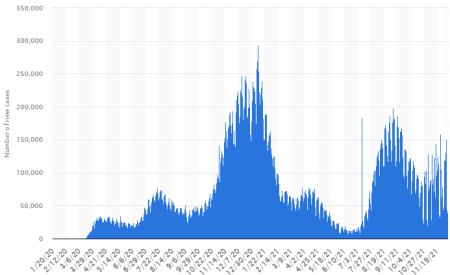 Based on current knowledge of the molecular biology of the Omicron variant and limited epidemiologic studies, it is clear that the U.S. should increase the proportion of vaccinated individuals in our population. Currently the CDC regard “fully vaccinated” as receiving two doses of an mRNA vaccine. This should be extended to two doses plus a booster to enhance immune response. Commonsense precautions including masking and avoiding large gatherings have proven protective benefit irrespective of strain. Vaccination of eligible children and teenagers should now be intensified since it is necessary to keep schools open and to allow families to resume work to contribute to the economy. Based on current knowledge of the molecular biology of the Omicron variant and limited epidemiologic studies, it is clear that the U.S. should increase the proportion of vaccinated individuals in our population. Currently the CDC regard “fully vaccinated” as receiving two doses of an mRNA vaccine. This should be extended to two doses plus a booster to enhance immune response. Commonsense precautions including masking and avoiding large gatherings have proven protective benefit irrespective of strain. Vaccination of eligible children and teenagers should now be intensified since it is necessary to keep schools open and to allow families to resume work to contribute to the economy.
Although vaccine mandates are in limbo, many U.S. companies and specifically those involved in poultry and meat processing have encouraged vaccination by offering incentives and facilitating administration. Tyson Foods has achieved a 96 percent vaccination rate attesting to the efficiency of their “stick-and-carrot” policy.
Emergence of the Omicron strain is a concern but not necessarily a cause for despondancy, panic or consideration of lockdowns. COVID resulted in cancellation of the 2021 IPPE. It is hoped that by late January 2022 travel restrictions will have been eased and the epidemiology of the Omicron variant will be understood allowing appropriate preventive measures to be implemented for the IPPE. Given the likelyhood of Omicron becoming more prevalent and accepting that the Delta variant is still responsible for an increasing incidence rate, complete vaccination is however recommended before attending and enjoing the event and associated meetings and fellowship.
|

|
A Wish List for 2022
|
12/04/2021 |
|
 As we turn our calendars to the first month of 2022, we can look back on the events of the previous year and express our hope for changes that will improve productivity and profitability in the coming year. Our hopes are:- As we turn our calendars to the first month of 2022, we can look back on the events of the previous year and express our hope for changes that will improve productivity and profitability in the coming year. Our hopes are:-
- Freedom from avian influenza: The December report of a case of H5N1 avian influenza (AI) near St. John’s in the Province of Newfoundland and Labrador, confirms the presence of the virus among free-living birds in the Atlantic Flyway. This revives concern over AI and remembrance of the events of 2015. Standards of structural and operational biosecurity have improved since the epornitic but a number of factors persist that could result in a widespread infection especially with large complexes in close proximity. There is a risk that after introduction of AI to an area with a high density of chickens, direct and indirect transmission of virus would occur. Unlike other catastrophic exotic diseases such as foot and mouth disease of ungulates or African swine fever, AI is carried by migratory birds and is therefore impossible to interdict at our borders. Early detection and prompt intervention by state and federal authorities in cooperation with the industry will be necessary to confine any outbreaks and allow both domestic production and exports to continue. Given increasing risks and awareness of the deteriorating situation in the E.U. it is evident that we must reinforce biosecurity and close any loopholes that represent a risk of introducing infection into egg-production complexes or centers of turkey and broiler production.
-
Suppressing COVID: We have endured COVID since March 2020 and have adapted to numerous restraints in our daily lives, disruptions in supply chains and deferred opportunities in recreation, education, travel and industry meetings. As we move into 2022, we have the benefit of effective vaccines, a new range of antiviral therapeutics and hopefully greater availability of test kits. Without suppressing COVID we will not be able to restore the economy or enjoy our lives as they were at this time in 2020. Large areas of our Nation are populated by unvaccinated and partly-vaccinated residents. Protection against the severe clinical effects of COVID are provided by a full dose of three mRNA approved vaccines or their equivalent. Unfortunately only 70 percent of our population have received two doses and 30 percent have received a booster dose, now regarded as essential to develop durable immunity. As of the end of November in Washington State, unvaccinated individuals aged 35 to 64 had a probability eighteen-fold higher for hospitalization following COVID infection compared to fully vaccinated individuals. As of the beginning of December according to CIDRAP of the University of Minnesota 85 percent of all those hospitalized both with and from COVID were unvaccinated. Let us hope that the proportion of our population that is protected increases sharply consistent with the ongoing pandemic and the recent emergence of the Omicron variant.
- The U.S. egg industry requires a fair benchmark price-discovery system: The commercial index on which both the industry but more especially, chain buyers use appears to provide an advantage for customers. The current benchmark price is a self-fulfilling prophecy allowing buyers to negotiate lower prices and is a de facto mechanism for potential indirect but not necessarily intentional collusion among buyers. The current relationship between producers and chain buyers based on a single price discovery system is an impediment to a free market. The benchmark price amplifies both downward and upward swings as was demonstrated during the 2015 HPAI epornitic and through seasonal Easter and Christmas surges in demand and through summer slumps. A CME quotation based on Midwest Large size responding to demand in relation to supply would be a more equitable method of establishing price.

- The Industry needs stable ingredient prices. The cost of ingredients is the major determinant of profitability for both segments of the U.S. egg production industry. The recent Q2 FY 2022 report released by Cal-Maine foods noted an increase in feed cost of 11.9 cents per dozen from 41.0 cents per dozen in Q2 of FY 2021. EGG-NEWS calculated that escalation in the cost of corn and soybean meal alone collectively added 10.7 cents per dozen to the average algebraic cost of egg production across the five USDA regions in 2021. This value did not take into account corresponding increases in the price of other ingredients including minerals, vitamin additives, fats and animal by-products. A one million hen complex producing in conformity with national standards would sell 23 million dozen marketable eggs in a year. Each one cent change per dozen in feed cost would represent $230,000 on the bottom line. The price of ingredients is determined by availability as influenced by yield and acreage harvested. Demand represents the combination of domestic use and exports. Unknowns in 2022 will include shipments of corn and soybeans to China and other nations. Diversion of corn to ethanol is a major demand factor but appears that it will be constant through the present year given the renewable fuel standard. Fortunately the 2021 harvests of soybeans and corn were bountiful suggesting adequacy in the current production year. A persistent mild La Nina suggests acceptable yields again in 2022.
- Injudicious regulatory action. Given the socialist tilt of the current Administration that has adopted a policy that disfavors large-scale (read, efficient) production, scrutiny of intensive livestock and poultry production is inevitable. The USDA is promoting an unrealistic 19th Century idyllic model based on small family-farms selling directly to consumers. Any move towards consolidation among major producers in the U.S. egg-production industry will certainly raise antitrust questions at the DOJ. Going forward, Federal concern will be focused on red meat with alleged problems arising from oligopoly. The USDA and the DOJ will be preoccupied with red meat and poultry segments of agribusiness so eggs should not attract Federal intervention. In other areas including labor, the environment and infrastructure, the Government will have the potential to influence the siting of new operations and expansion and operation of existing complexes. The industry may be required to invest in manure processing installations, water treatment and other installations to mitigate environmental contamination. Our hope is that the egg-production industry will be left to operate and expand responsibly without any Washington agency or bureaucrat trying to fix something that is not broken.

- Biodegradable and alternative packaging: Both inner and outer packaging represents the interface between producers and consumers who are demanding sustainability (unless they have to pay for this virtue). Polystyrene is now subject to some state and local restrictions and there is a dearth of effective PET recycling. This suggests that new biodegradable and more easily recycled plastics will be required during 2022.
- Industry Statistics: The U.S. egg industry requires accurate marketing and production information. Currently the USDA-AMS and ERS provide data that is heavily focused on cage production. With the ongoing transition to alternative housing systems, more accurate and timely information and data will be required. Last year the EIC published on a survey of packing and packaging that was poorly supported by the industry. If we are to have reliable data on which to base investment and operational decisions, more precise and representative figures will be required in response to surveys relating to volumes and costs.
- Positive publicity: The U.S. egg industry has been free of adverse publicity relating to welfare, price-fixing, food safety or labor-related scandals that have impacted the red meat and poultry meat industries in past years. It will be critical to continue to maintain the goodwill of customers and consumers. The industry must follow high standards of business ethics and respond rapidly and effectively to unjust criticism raised by the opponents of all forms of livestock production. EGG-NEWS applauds the activities of the Egg Industry Center, United Egg Producers and the American Egg Board in their efforts to promote a positive image of the U.S. egg industry.
The Team at EGG-NEWS wishes our subscribers and sponsors and all involved in the industry a safe and prosperous 2022.

|
Simplistic Claims by the National Farmers Union Refuted
|
11/29/2021 |
|
 The National Farmers Union (NFU) issues an annual release purporting to estimate the theoretical value that farmers receive for a traditional Thanksgiving meal in 2021. The NFU estimated that ranchers and farmers would receive approximately 14.3 cents for every dollar spent at retail in 2021. The National Farmers Union (NFU) issues an annual release purporting to estimate the theoretical value that farmers receive for a traditional Thanksgiving meal in 2021. The NFU estimated that ranchers and farmers would receive approximately 14.3 cents for every dollar spent at retail in 2021.
In their somewhat misleading and simplistic statement, the NFU noted, "even though consumers are paying more for food this year almost none of that is being passed on to America's family farmers and ranchers. Multiple mergers and acquisitions during the last several decades have resulted in agriculture and food supply chains that are noncompetitive, fragile and underpay farmers".
The NFU fails to recognize that farmers in large measure produce ingredients that require processing, packaging and transport before purchase. The NFU consistently fails to recognize or acknowledge the contributions along the food chain extending from an ingredient whether it be a bushel of cranberries, a yam or a live turkey.
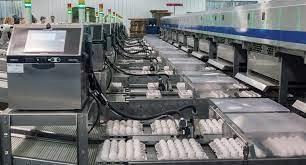 To illustrate the impact of the chain of processing and distribution the situation with regard to eggs should be considered. According to the USDA producers of generic shell eggs, during 2021 through October received a national average blended price of 80 cents per dozen for Large nest run eggs with a range of 58 to104 cents per dozen. The average cost of production over the first ten months of 2021 was estimated by the USDA at 71 cents per dozen including feed, pullet depreciation labor, housing and overhead. This implies a margin of 9 cents per dozen or 12.6 percent on a nest run basis. The cost of eggs delivered to a DC would include packing (13 cents), packaging (13 cents), transport (5 cents) and grading loss (5 cents) for a total of 107 cents per dozen. This corresponds to the 107 cents per dozen documented by the USDA as the simple average delivered to a distribution center. The average retail price for generic white eggs was calculated by the USDA to be 164 cents per dozen as a simple average for the four regions over the first nine months of 2021. This would provide retailers with a gross margin of 57 cents per dozen or 35 percent to cover transport, merchandizing, overhead, store losses and operational expenses. Effectively egg producers received on average 65 percent of the retail price or 39 cents on the retail dollar. The complexities of the supply chain with respect to shell eggs clearly denotes the simplistic assumptions by the NFU in their calculation that evidently fails to consider processing and added value to farm-produced ingredients through the supply chain to retail. To illustrate the impact of the chain of processing and distribution the situation with regard to eggs should be considered. According to the USDA producers of generic shell eggs, during 2021 through October received a national average blended price of 80 cents per dozen for Large nest run eggs with a range of 58 to104 cents per dozen. The average cost of production over the first ten months of 2021 was estimated by the USDA at 71 cents per dozen including feed, pullet depreciation labor, housing and overhead. This implies a margin of 9 cents per dozen or 12.6 percent on a nest run basis. The cost of eggs delivered to a DC would include packing (13 cents), packaging (13 cents), transport (5 cents) and grading loss (5 cents) for a total of 107 cents per dozen. This corresponds to the 107 cents per dozen documented by the USDA as the simple average delivered to a distribution center. The average retail price for generic white eggs was calculated by the USDA to be 164 cents per dozen as a simple average for the four regions over the first nine months of 2021. This would provide retailers with a gross margin of 57 cents per dozen or 35 percent to cover transport, merchandizing, overhead, store losses and operational expenses. Effectively egg producers received on average 65 percent of the retail price or 39 cents on the retail dollar. The complexities of the supply chain with respect to shell eggs clearly denotes the simplistic assumptions by the NFU in their calculation that evidently fails to consider processing and added value to farm-produced ingredients through the supply chain to retail.
The NFU points to integration and consolidation as being responsible for a lower proportion of retail unit price received by individual farmers. Without economy of scale and processing at high levels of throughput using capital intensive facilities and equipment, prices for food products including eggs, broilers and turkeys would be even higher given the efficiencies in producing feed, operating herds and flocks and processing animals with attention to welfare, food safety and sustainability.
The NFU fail to define the term "farmer". With two exceptions, U.S. egg producers are family-owned and operated despite large volumes of production. In the case of broilers and turkeys, integrators provide chicks or poults, feed and technical service and harvest flocks at the end of the production cycle. Farmers receive a fair income for providing labor and housing but do not bear the risk of inflation and feed cost or fluctuations in market price and do not make any investment in processing, marketing, overhead or distribution of product.
The National Farmers Union figure of 14.3 cents on the retail dollar, however it may be calculated, fails to recognize the multiple investments through the entire chain of processing, distribution and the markups imposed by retailers. Consumers in the U.S. have the widest variety of food products available with the highest standards of food safety and spend less on food as a proportion of total income than any other industrialized nation.

|
The ‘New’ SARS-CoV-2 Variant
|
11/26/2021 |
|
We awoke this morning to the news that a new variant of SARS-CoV-2, the virus responsible for COVID has been characterized in South Africa. This variant designated Strain B.1.1.529 with at least 30 mutations of the spike protein may or may not be more pathogenic but is obviously as infectious or even more so than the predominant Delta strain. The most important question is whether protection stimulated by two doses of mRNA vaccine (Pfizer or Moderna) will provide protection against infection with or without  clinical signs. Based on international experience, the Delta strain is capable of infecting those vaccinated, albeit at a lower level and with quantitatively less production and dissemination of virus. This effectively reduces workplace and community spread of COVID. Data shows that non-vaccinated individuals have a ten to twentyfold probability of being hospitalized or dying especially with co-morbidities, as compared to those who are fully vaccinated clinical signs. Based on international experience, the Delta strain is capable of infecting those vaccinated, albeit at a lower level and with quantitatively less production and dissemination of virus. This effectively reduces workplace and community spread of COVID. Data shows that non-vaccinated individuals have a ten to twentyfold probability of being hospitalized or dying especially with co-morbidities, as compared to those who are fully vaccinated
The emergence of a new strain of SARS-CoV-2, irrespective of characteristics was inevitable and was widely predicted. The probability of a variant emerging and spreading is a function of the proportion of susceptible individuals in a population. The vaccination rates for the continent of Africa suggest that COVID is not controlled and serves as an incubator for variants. Only one percent of the population in sub-Saharan Africa is immunized. Only one percent of the 2.7 billion doses of all COVID vaccines of all types have been administered to Africans. South Africa, the most advanced nation on the Continent has achieved a 35 percent administration rate among the 55 million population but with vaccines of inferior antigenicity to the two approved mRNA vaccines deployed in the U.S. The restraint to control in South Africa is independent of cost and availability of vaccines. Due to poor planning, ineffective logistics, and downright governmental incompetence, South Africa is currently administering vaccine to only 100,000 residents per day with an aging stock of 17 million doses that should be deployed to avert a catastrophe.
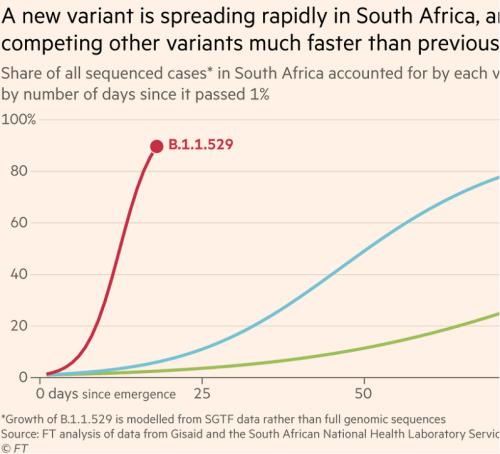 The immediate response to the news from South Africa was a 900-point plunge on the Dow index with travel, entertainment, financial and oil-related stocks disproportionally affected. This reflects the specter of shutdowns and deterioration in the economy after signs of restoration to pre-COVID normality. The situation in South Africa should reinforce the sound advice from the NIH, the CDC and prominent epidemiologists in academia concerning control measures. The U.S. should immediately intensify efforts in the following areas:- The immediate response to the news from South Africa was a 900-point plunge on the Dow index with travel, entertainment, financial and oil-related stocks disproportionally affected. This reflects the specter of shutdowns and deterioration in the economy after signs of restoration to pre-COVID normality. The situation in South Africa should reinforce the sound advice from the NIH, the CDC and prominent epidemiologists in academia concerning control measures. The U.S. should immediately intensify efforts in the following areas:-
- Raise vaccination rates. Some counties in the U.S. have populations that are as susceptible as those in South Africa. This is due to misinformation, politicization and the misplaced concept of ‘freedom’. A reading of the Constitution does not indicate any right to infect one’s fellow citizens.
- Increase the rate of vaccine administration to residents of third-World nations. Unless COVID can be suppressed on an international basis industrialized nations will remain vulnerable.
- Health authorities in the U.S. must intensify sequencing of SARS-CoV-2 isolates to identify emerging mutations that can represent enhanced infectivity and pathogenicity.
- Commonsense protective measures to prevent transmission include masking, avoiding concentration in confined spaces and maintaining social distancing.
- Home testing kits applying lateral immuno-flow technology should be widely available and subsidized to allow infected but asymptomatic or mildly affected individuals to self-quarantine.
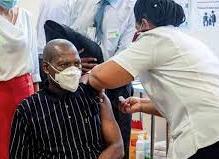
- The anti-vax lies and misinformation spread by COVID-deniers and pseudo-experts and those profiting from anxiety should be vigorously opposed. A coordinated publicity campaign involving sports and entertainment personalities, civic and religious and industry leaders, scientists, public health authorities and responsible media is required.
Those opposing scientific measures to control COVID including politicians on both sides of the aisle, operators of social media platforms, anti-vax pundits and charlatans have blood on their hands. The new variant is a wake-up call for the U.S. and other industrialized nations. If we wish to restore our pre-COVID way of life and economy now is the time for resolute action.
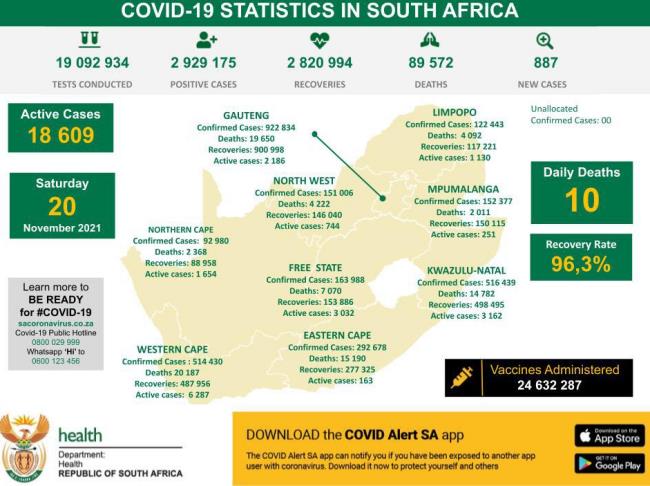

|
NRS Gender Selection Technology and Prospects
|
11/18/2021 |
|
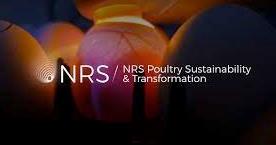 NRS Poultry Sustainability and Transformation Inc.(NRS) has developed a genetic approach to the challenge of eliminating unwanted male chicks by applying a genetic approach coupled with the application of an optogenic system. The Company was founded by Dr. Uval Cinnamon of the Volcani Institute, the leading agricultural research organization in Israel and recognized as an innovator in agriculture. The company includes specialists such as Dr. Yaarit Wainberg a molecular biologist and executives with experience in finance, technology transfer, regulatory affairs and quality assurance. The company is assisted by Dr. Neil O’Sullivan appointed as the Senior Scientific Advisor previously a senior geneticist with one of the two major primary breeders of egg-laying strains Dr. O’Sullivan is well-known to the U.S and the World’s egg industries and bridges the academic avian genetics with practical production issues. Dr. Cinnamon recently delivered a presentation in a webinar series dealing with the technology of his company and the potential to resolve a growing problem of negative public perception. He described the mechanism by which it is possible to hatch only pullet chicks at the commercial level with male embryos failing to develop at an early stage of incubation. NRS Poultry Sustainability and Transformation Inc.(NRS) has developed a genetic approach to the challenge of eliminating unwanted male chicks by applying a genetic approach coupled with the application of an optogenic system. The Company was founded by Dr. Uval Cinnamon of the Volcani Institute, the leading agricultural research organization in Israel and recognized as an innovator in agriculture. The company includes specialists such as Dr. Yaarit Wainberg a molecular biologist and executives with experience in finance, technology transfer, regulatory affairs and quality assurance. The company is assisted by Dr. Neil O’Sullivan appointed as the Senior Scientific Advisor previously a senior geneticist with one of the two major primary breeders of egg-laying strains Dr. O’Sullivan is well-known to the U.S and the World’s egg industries and bridges the academic avian genetics with practical production issues. Dr. Cinnamon recently delivered a presentation in a webinar series dealing with the technology of his company and the potential to resolve a growing problem of negative public perception. He described the mechanism by which it is possible to hatch only pullet chicks at the commercial level with male embryos failing to develop at an early stage of incubation.
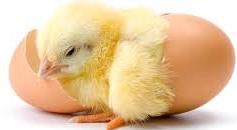 The egg industry is responding to criticism that male chicks at the commercial level are euthanized amounting to an annual disposal of five billion. For the past decade, research institutes have attempted to differentiate between fertile eggs with either male or female embryos. A variety of techniques have been applied including various forms of spectrometry most of which require the installation of sophisticated equipment and training of personnel. Alternatives such as analysis of embryonic fluids for the presence of testosterone or estrogen as developed during the late 1980’s for gender separation of broiler chicks for separate-sex rearing have been updated and applied to fertile eggs at the commercial level. As yet there has not been any suitable technical solution that is compatible with the operation of a hatchery producing in excess of 25,000 pullet chicks per hour. Technical development funded by various agencies and governments with Germany an active promoter has yet to produce a practical system. Unfortunately various startups have raised venture capital funding claiming applicable technology without achieving commercial acceptance. Some of the claimants have raised funds without any proof of concept and are regarded as outright scams. The egg industry is responding to criticism that male chicks at the commercial level are euthanized amounting to an annual disposal of five billion. For the past decade, research institutes have attempted to differentiate between fertile eggs with either male or female embryos. A variety of techniques have been applied including various forms of spectrometry most of which require the installation of sophisticated equipment and training of personnel. Alternatives such as analysis of embryonic fluids for the presence of testosterone or estrogen as developed during the late 1980’s for gender separation of broiler chicks for separate-sex rearing have been updated and applied to fertile eggs at the commercial level. As yet there has not been any suitable technical solution that is compatible with the operation of a hatchery producing in excess of 25,000 pullet chicks per hour. Technical development funded by various agencies and governments with Germany an active promoter has yet to produce a practical system. Unfortunately various startups have raised venture capital funding claiming applicable technology without achieving commercial acceptance. Some of the claimants have raised funds without any proof of concept and are regarded as outright scams.
NRS has applied CRISPR-Cas9 to a sequence of the z chromosome, a co-determinant of gender in chickens. Males carry the zz chromosome and females are zw. The construct developed by NRS comprises promoters adjacent to the 5’HA end of the sequence, and a lethal gene adjacent to the 3’HA end. Lethality is activated by exposure to light of a highly specific wavelength. The construct must be inserted into the pure line C strain to be passed to the grandparent C-line hen. The female of the parent level (CD) will carry the modified z chromosome. The male line AB parents are normal in all respects. At the parent level, CD females carrying the modified z chromosome mated to AB males produce pullet chicks with a normal z chromosome and a w chromosome. Eggs from the mating are subjected to blue light that is optogenic in its action on the z chromosome carrying the lethal gene. This results in inhibition of development of male (zz) embryos since they carry the lethal trait on the z chromosome acquired from the CD parent female (zw). Female embryos carry an unaltered z chromosome and therefore hatch normally.
The NRS genetic approach to elimination of male chicks is elegant, based on established scientific principles and offer advantages with respect to cost, practicality and rate of implementation. As yet there has been no inclination for primary breeders to adopt the system and the technology has not been patented. Informal discussion with representatives of the two major breeding companies responsible for over ninety percent of the egg laying strains used in the U.S. have indicated a disinclination to embrace the NRS approach. Despite the justifiable claim that pullet chicks are not genetically modified, the system relies on insertion of a construct into the pure C line. Opponents of intensive livestock production will obviously use the application of GM to oppose not only the specific products that may be modified but to deprecate all commercial egg production. It is obvious that neither of the two major primary breeders wishes to be the first to adopt the technology.
The second problem relates to the point at which the optogenic light is applied. Too save incubator space, eggs would have to be subjected to the activating light prior to setting. It is understood that in experimental scale application the light is applied after placement of eggs resulting in death of embryos in the early stage of incubation. This would require removal of all eggs carrying undeveloped male embryos within a few days of incubation. Eggs with viable female embryos would be affected by non-uniform temperature as activation of the lethal gene by lighting is currently effected in the setter. Removal of eggs containing dead male embryos would have to be carried out by manual or mechanized candling or temperature measurement at approximately five days of incubation. This would impose an additional process in incubation requiring development of automated equipment and requiring capital expenditure, modification of hatcheries and additional time and labor.
Despite claims to be a practical solution to the challenge of culling cockerel chicks, the NRS approach, although scientifically elegant will not achieve any commercial acceptance in the short term given the restraint of the “GMO association”. It is possible that a nation such as China may adopt the technology given their volume justifying application. China as yet does not have pure lines although it has aspirations to be independent of the major primary breeders and eventually become an international supplier of breeding stock.
NRS Poultry Sustainability and Transformation represents a company with excellent potential but with a major restraint to commercialization given the need for primary breeders to insert the construct into the z chromosome of the C-line. The future of the system would be assured if consumers would be willing to accept the genetic modification of the pure line as a compromise for eliminating the euthanasia of commercial cockerels. Similar ethical challenges are presented by accepting vaccines that were developed using human fetal tissue or willingness to consume irradiated foods that are free of pathogens.
For NRS technology to become a practical reality the first hurdle will be for one or more primary breeders to enter into a strategic alliance with NRS and incorporate the NRS construct into the C pure line. The second will be to convince consumers and regulators that the pullet chicks are effectively non-GMO. Since the issues are entwined the commercialization of NRS technology is truly a manifestation of the “chicken-or-the-egg” paradox.

|
Major Takeaways from COP 26 Conference in Scotland
|
11/11/2021 |
|
 The 26th Conference of the Parties (COP) representing signatories to the United Nations Framework Convention on Climate Change is winding down in Scotland. The event was attended by 20,000 participants, including politicians, scientists, environmental activists, media representatives and business executives. Major world leaders attended promoting their national commitments to reducing the effects of global warming. COP 26 required signatories to the 2015 Paris Agreement to report on progress. It is significant that neither Jair Bolsanaro, President of Brazil nor Vladimir Putin President of Russia attended in person or remotely although their lower-ranked diplomats and negotiators participated in meetings. The U.S. was in a difficult position since the previous Administration withdrew from the Paris Agreement and the President has yet to have his far-reaching climate agenda enacted. The 26th Conference of the Parties (COP) representing signatories to the United Nations Framework Convention on Climate Change is winding down in Scotland. The event was attended by 20,000 participants, including politicians, scientists, environmental activists, media representatives and business executives. Major world leaders attended promoting their national commitments to reducing the effects of global warming. COP 26 required signatories to the 2015 Paris Agreement to report on progress. It is significant that neither Jair Bolsanaro, President of Brazil nor Vladimir Putin President of Russia attended in person or remotely although their lower-ranked diplomats and negotiators participated in meetings. The U.S. was in a difficult position since the previous Administration withdrew from the Paris Agreement and the President has yet to have his far-reaching climate agenda enacted.
The major topics that met with universal acceptance included:-

- Recognition that it is necessary to restrict an increase in average global temperature to not more than 1.5 C (2.7 F) above pre-industrial levels. Many climate models suggest that without drastic action, this goal will not be met by 2050 and that present manifestations of global warming including floods and hurricanes that have increased in intensity will become more frequent and more devastating.
- Methane, a relatively short-lived but powerful greenhouse gas was a focus of concern with nations committing to reduce the presence of the compound. The oil industry is a major contributor to methane release. Corrective measures will include capping disused wells and methane capture in operating facilities. Nations are also committed to addressing agricultural release from ruminants and from landfills. It is estimated that reducing methane emission by half could represent a reduction of between 0.2 to 0.3 C from the predicted global rise in temperature.
- Coal-fired power generation is recognized as a major contributor to carbon dioxide release. India and China are heavily committed to burning coal with Asia producing 16.5 gigatons, or half the world’s total. Despite pledges by China and more specific action taken by Japan and South Korea, the prospects of achieving a meaningful reduction in greenhouse gas emissions in China are remote. China currently is responsible for close to 13 gigatons annually, India 3 gigatons tons, Russia 2 gigatons tons and Indonesia 1 gigaton. India has no specific goals for reduction compared to China that intends reducing greenhouse gas emissions to zero by 2060.
- The forests of the world are effectively the World’s lungs, absorbing carbon dioxide and releasing oxygen. Brazil is replacing swaths of the Amazon rainforest with soybeans and cattle and Malaysia is replacing hardwood forests to produce palm oil. Deforestation is rampant in west and central equatorial Africa to permit subsistence farming and logging.
- It is considered essential that governments become involved in reducing carbon emissions through tax incentives and effective programs of environmental remediation. Investors are currently scrutinizing projects that involve burning coal and it is anticipated that vast sums of investment capital will be used to leverage industries that will become beneficial to preservation of the environment.
- COP 26 reviewed progresses in replacing fossil fuels using solar and wind as sources of power. Success stories include Hawaii that previously was dependent on oil for 90 percent of power generation now derives a high proportion from these sources. China is the World leader in wind generation at 220 Gigawatts followed by the U.S. with 97 Gigawatts. It is estimated that a 40-acre solar array can generate 5 Megawatts; this implies that over 10 million acres in the U.S. would be required by 2050 to replace existing coal-fired generation.
- Dedicating extensive acreage to solar generation can be achieved in deserts where land is plentiful and otherwise unproductive. This will require extending grids to distribute energy. In other areas, it will be necessary to cultivate crops and to use small ruminant livestock to optimize the use of land displaced from conventional farming. Agrivoltaics is emerging as a farming practice using sheep to graze among solar arrays and cultivating suitable crops that are compatible with operation of solar ‘farms’.
- Sequestering carbon in soil will be achieved through more extensive use of cover crops and applying no-till cultivation. The proposed climate provisions in the Build Back Better initiative proposed by the Administration, currently languishing in Congress, includes financial incentives for farmers to contribute to environmental remediation.
- It is clear from deliberations at COP 26 that industrialized nations are now serious about climate change but are recognizing the costs of adopting climate-friendly initiatives in addition to supporting less-developed nations to abandon coal.
- ‘Buck Rogers’ programs including solar geo-engineering are way in the future. The possibility of removing carbon dioxide from the atmosphere is technically feasible with pilot plants currently in operation. Direct air capture would be required concurrently with programs to reduce anthropogenic carbon dioxide emission even if the world achieves a reduction of 2.9 trillion tons, considered necessary to maintain global warming at or below 1.5 C compared to the pre-industrial age.
For those that deny global warming, scientific data punctures the bubbles of self-delusion and overt denial. The carbon dioxide content of the atmosphere remained between 275 ppm and 285 ppm for millennia before the industrial age. During the 1910’s the level reached 300 ppm and by 2020 the concentration had increased to 412 ppm. From the mid 19th century onwards, average world surface temperature has increased by between 1.1 C and 1.2 C. The area of multiyear ice on the Arctic Ocean is 90 percent lower and sea level is rising worldwide by 0.4 inches every three years. Since the mid-20th Century we have been running a climatic amber light, just getting through and ignoring the consequences. Now the light is red and we have to face the consequences of global warming and climatic disruption. Effectively COP 26 renewed the commitments of the 2015 Paris Agreement and has signaled the end of our dependency on fossil-fuels to maintain our accustomed way of life. We owe succeeding generations clean air, available water and a livable planet, since it is the only one we can bequeath.
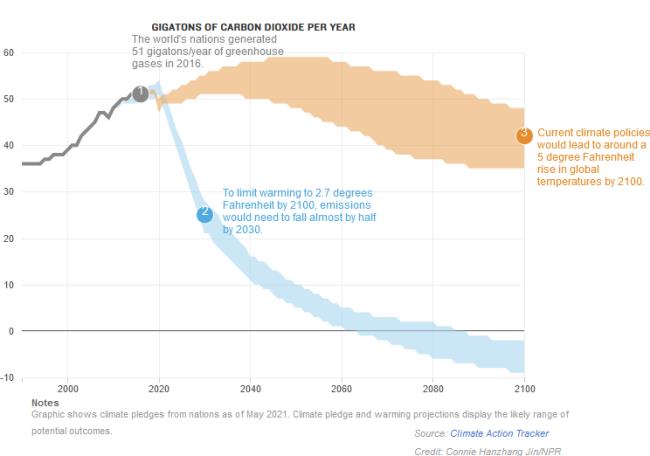

|
Cost-Effective Recycling of Plastic Waste
|
11/02/2021 |
|
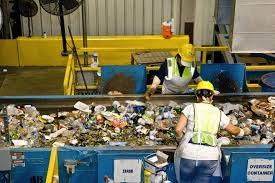 Recycling of plastic especially from egg cartons is appropriately a chicken and egg situation. It is necessary to have an efficient and comprehensive collection system that is required to supply the plants equipped for either physical or chemical processing. In establishing a technically and financially viable program the question is posed as to which component comes first? Companies must invest heavily in reprocessing facilities often for a specific class of plastic. This requires high and consistent throughput to attain a satisfactory financial return, presuming efficient collection, accumulation, sorting and transport of waste. Recycling of plastic especially from egg cartons is appropriately a chicken and egg situation. It is necessary to have an efficient and comprehensive collection system that is required to supply the plants equipped for either physical or chemical processing. In establishing a technically and financially viable program the question is posed as to which component comes first? Companies must invest heavily in reprocessing facilities often for a specific class of plastic. This requires high and consistent throughput to attain a satisfactory financial return, presuming efficient collection, accumulation, sorting and transport of waste.
Effective collection presumes that there is a destination for the material that is collected from consumers and then accumulated and conveyed to a plant. The situation in Japan was clearly described by Katsumori Matsuoka in the October 18th edition of Chemical and Engineering News. Japan prides itself on “recycling” 85 percent of plastic containers. This does not mean that material is effectively processed after collection. It is a matter of record that Japan shipped up to 800,000 tons of waste plastic to China annually before 2017. In this year China imposed a ban on importation of waste plastic based on environmental degradation. Plants in China were burning plastic to generate power or to dispose of the material resulting in atmospheric pollution. A high proportion of the plastic shipped from developed nations was consigned to landfills creating a problem of persistence.
 The shock of banning imports by China forced Japan and other industrialized nations to reassess both the technical and financial feasibility of recycling. The Government of Japan passed the Act on Promotion of Resource Circulation for Plastics in June 2021. The law contains mostly stick and little carrot. Major retailers and users of plastic products are obliged to incorporate increasing proportions of recycled plastic to a level of 60 percent by 2030. In addition charges are imposed for plastic items to cover the costs of collection, transport and recycling. Public opinion is also forcing food manufacturers and major companies to incorporate recycling in their ESG programs, a trend that is evident in most industrialized nations. The shock of banning imports by China forced Japan and other industrialized nations to reassess both the technical and financial feasibility of recycling. The Government of Japan passed the Act on Promotion of Resource Circulation for Plastics in June 2021. The law contains mostly stick and little carrot. Major retailers and users of plastic products are obliged to incorporate increasing proportions of recycled plastic to a level of 60 percent by 2030. In addition charges are imposed for plastic items to cover the costs of collection, transport and recycling. Public opinion is also forcing food manufacturers and major companies to incorporate recycling in their ESG programs, a trend that is evident in most industrialized nations.
Supermarkets in Japan are obliged to receive and store washed plastic trays and containers returned by consumers. Citizens of the Nation are recognized for their sense of conformity and willingness to participate in regional and national initiatives that are viewed as beneficial to society. There is a high level of planning and organization in collection of waste plastic. In Metropolitan Tokyo, waste that can be safely burned is collected each Monday. Paper, glass containers and aluminum cans are collected every other Tuesday and designated days are assigned for polyethylene terephthalate (PET) bottles.
Given the highly efficient system of collection, and the need to develop alternatives to shipping waste to China, large chemical companies applied existing technology to recycling. Re-processing plants already in operation in the E.U. served as a model. Teijin a manufacturer of plastics will apply depolymerization technology to process PET. The company is building on their experience gained in China where it operated a joint-venture processing plant in cooperation with local partners before the import ban was imposed.
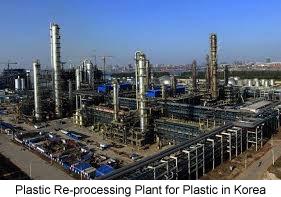 Polystyrene is widely used for packaging of food and is suitable to be degraded to extremely pure styrene that can be incorporated into new packaging in combination with virgin plastic. PS Japan is erecting plant with an initial capacity of 1,000 tons per year in cooperation with Toshiba Plant Systems and Services. The plant under construction will be commissioned in December. If successful as anticipated, PS Japan will erect a larger plant to process polystyrene for parent company Asahi Kasei a major producer of packaging. Polystyrene is widely used for packaging of food and is suitable to be degraded to extremely pure styrene that can be incorporated into new packaging in combination with virgin plastic. PS Japan is erecting plant with an initial capacity of 1,000 tons per year in cooperation with Toshiba Plant Systems and Services. The plant under construction will be commissioned in December. If successful as anticipated, PS Japan will erect a larger plant to process polystyrene for parent company Asahi Kasei a major producer of packaging.
Toshiba Plant Systems and Services established a polystyrene recycling plant in 2001 but was obliged to close the facility in 2005 because it was more profitable to ship waste plastic to China. Now with the need to process polystyrene within Japan, financial viability is assured, encouraging the company to invest in a large plant that will be operational in 2024. Industry observers anticipate processing 2.5 to 3 million tons annually replacing virgin plastic and obviating the need for either burning or especially in the case of Japan, establishing landfills. Space is at a premium in a nation of 126 million where less than 25 percent of the land area can be used for farming, industry, habitation and recreation.
Pressures in a nation such as Japan are paralleled in most industrialized nations. Currently in the U.S. ExxonMobil is planning to process up to 30,000 metric tons of waste per year into a number of feed stock products. Dow and Chevron-Phillips Chemical have established consortia to apply pyrolysis to degrade mixed plastic waste into olefins and polyolefin plastics. Eventually, Exxon will establish a plant applying chemical processes to convert 500,000 tons of plastic waste by 2026. Similar installations are planned for Canada, the Netherlands and Singapore.
Unlike Japan, it appears that U.S. processors are taking the initiative to plan and erect re-processing plants but will rely on strategic alliances with companies that are capable of collecting, accumulating and transporting plastic waste. The concept of recycling in a nation where consumers are content to dump containers and to object to restrictions will require a high level of both inducement and training. As a nation we behave as solitary wasps compared to Japan where the public function like bees working for the communal good.
Recycling of plastics and specifically polystyrene packaging will require simultaneous development of collection and processing. In the short term there will be no positive financial return from a chain extending from consumer to supplier of recycled feedstock unless there are pricing incentives to use re-processed plastic. Recycling will have to be supported by consumer deposits or by federal grants or their combination. The obvious concern is that petrochemical companies will establish plants that cease production after a few years due to inadequate raw material as occurred in Japan prior to losing China as a receiving nation. We may have to be guided by experience in the E.U. which appears to be more advanced than the U.S., again based on consumer concerns over environmental issues and a collective desire for sustainability supported by government initiatives and empowering legislation.

|
Cost of Employee Turnover
|
10/22/2021 |
|
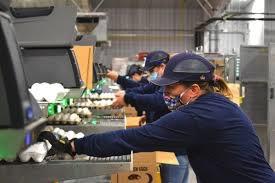 According to the 2021 NSI National Healthcare Retention and RN Staffing Report based on a survey of 226 facilities in 37 states, the 2020 turnover rate for staff nurses attained 18.7 percent. What is significant is that the average cost of turnover for a bedside RN is $40,038 with a range of $28,400 to $51,700, resulting in a loss of $3.6 million to $6.5 million for each participating hospital. According to the 2021 NSI National Healthcare Retention and RN Staffing Report based on a survey of 226 facilities in 37 states, the 2020 turnover rate for staff nurses attained 18.7 percent. What is significant is that the average cost of turnover for a bedside RN is $40,038 with a range of $28,400 to $51,700, resulting in a loss of $3.6 million to $6.5 million for each participating hospital.
The survey pointed to the high cost of recruiting, appointing and orienting RNs as a result of resignation or attrition. By the same token are there hidden cost in replacing employees at a more menial level in live-bird and egg-packing operations? Not only are there direct costs involved but hidden losses occur through unfamiliarity with work responsibilities by new hires, their accidents and an additional burden on HR personnel.
Financial media report the availability of 10 million positions in the U.S. with 8 million unemployed. Filling positions is more than simple arithmetic. The reasons why jobs remain unfilled and the reality that potential workers are not applying for positions is the subject of intensive investigation.
With respect to female workers, child-care is an important consideration and must be addressed. A second factor contributing to inability to fill positions relates to pay and benefits. While some companies have adopted policies that reflect prevailing rates in their areas and have implemented benefit packages to attract and retain workers others are adopting unrealistic approaches to the current labor market. An example is a North Carolina QSR franchised to a national chain that has placed a banner offering positions at $10 per hour. Within 500 yards a second QSR is offering $12 per hour with a sign-up bonus. It is evident that without matching the higher rate, the first QSR will be at a disadvantage with respect to hiring and retention of reliable and industrious workers. At the other end of the scale, companies that pay higher salaries can demand more in education, communication skills, initiative and commitment among managers.
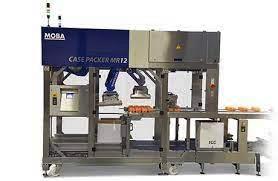 COVID and its impact on staffing have changed traditional approaches to remuneration and employee relations. Increased wage rates and obligations to provide benefits have raised the costs of workers justifying automation and robotics. The highest concentration of workers in an egg packaging plant involves transfer of packs to outer containers. Given 600 case per hour graders and 14 packer lanes, robotic transfer is considerably more attractive at a base rate of $15 per hour plus benefits and indirect costs. Replacement of repetitive labor with appropriate mechanical equipment is a necessary approach to resolving problems of recruitment and retention. Over the long run automation will contribute to consistency of operation and enhanced margins in a competitive industry. Investment in robotic equipment should be evaluated on the duration to payback or the net present value of the investment. Realistic costs of labor should be assumed with inclusion of both direct and indirect costs including the frequently overlooked expenditure on recruitment and training attributed to turnover. COVID and its impact on staffing have changed traditional approaches to remuneration and employee relations. Increased wage rates and obligations to provide benefits have raised the costs of workers justifying automation and robotics. The highest concentration of workers in an egg packaging plant involves transfer of packs to outer containers. Given 600 case per hour graders and 14 packer lanes, robotic transfer is considerably more attractive at a base rate of $15 per hour plus benefits and indirect costs. Replacement of repetitive labor with appropriate mechanical equipment is a necessary approach to resolving problems of recruitment and retention. Over the long run automation will contribute to consistency of operation and enhanced margins in a competitive industry. Investment in robotic equipment should be evaluated on the duration to payback or the net present value of the investment. Realistic costs of labor should be assumed with inclusion of both direct and indirect costs including the frequently overlooked expenditure on recruitment and training attributed to turnover.
The major manufacturers of grading equipment now provide robotic case packers that are as flexible as human workers and offer a payback of less than two years at current rates with less shell damage and a favorable return on investment from retrofitting.

|
Food Industry to Face Mandatory Plastic Recycling
|
10/21/2021 |
|
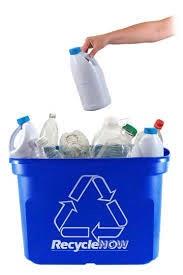 Multinational consumer brands are setting deadlines to recycle plastic packaging in response to consumer and regulatory demands. Coca Cola has established a target of fifty percent recycled content on all packaging by 2030. Nestle will recycle PET (polyethylene terephthalate) in all brands by the end of 2025. Proctor and Gamble will substantially reduce the use of virgin plastic by 2025 and Unilever has a goal to recycle 25 percent of plastic by 2025 and reduce virgin plastic by half. Unfortunately the current reality is far from the intent with most companies using up to ten percent recycled plastic with an emphasis on PET. On average ten percent of plastic is recycled in the U.S. compared to 33 percent in the E.U The two leading restraints to recycling comprise collection and processing. Multinational consumer brands are setting deadlines to recycle plastic packaging in response to consumer and regulatory demands. Coca Cola has established a target of fifty percent recycled content on all packaging by 2030. Nestle will recycle PET (polyethylene terephthalate) in all brands by the end of 2025. Proctor and Gamble will substantially reduce the use of virgin plastic by 2025 and Unilever has a goal to recycle 25 percent of plastic by 2025 and reduce virgin plastic by half. Unfortunately the current reality is far from the intent with most companies using up to ten percent recycled plastic with an emphasis on PET. On average ten percent of plastic is recycled in the U.S. compared to 33 percent in the E.U The two leading restraints to recycling comprise collection and processing.
The PET segment of the recycling industry emphasizes collection as the major obstacle. It is estimated that only 52 percent of U.S. household have access to a curbside recycling program with less than one-third of potentially recyclable plastics entering a reprocessing stream. Collection intensity is highly variable according to location. In states or municipalities that mandate monetary deposits, collection can attain a level of seventy percent, as in California. At this time only ten states require deposits to encourage recycling.
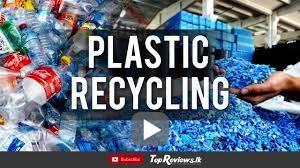 Even with a high level of collection, segregation of potentially recyclable materials requires innovation since most municipalities and commercial companies use manual labor to reclaim specific products. Advances in robotics coupled with application of machine vision and complemented by AI, allows installations to visually distinguish among diverse types of containers. AMP Robotics has over 150 recycling installation in operation that can distinguish between polypropylene and polystyrene containers based on visual evaluation. Even with a high level of collection, segregation of potentially recyclable materials requires innovation since most municipalities and commercial companies use manual labor to reclaim specific products. Advances in robotics coupled with application of machine vision and complemented by AI, allows installations to visually distinguish among diverse types of containers. AMP Robotics has over 150 recycling installation in operation that can distinguish between polypropylene and polystyrene containers based on visual evaluation.
Advances in reprocessing technology resulted in the emergence of industries concentrating on specific plastic materials. DAK Americas is the leading U.S. PET recycler. Their process involves chopping containers in to flakes that are washed. Flakes are then melted under a vacuum to remove volatile compounds from the molten resin. Clarified resin is filtered before conversion to a solid state. Although the process is expensive, potential purchasers of recycled PET are willing to pay a premium to claim recycled content that has marketing appeal. Profitability among early recyclers was limited by narrow margins and low demand. This situation resulted in restructuring of the industry with only two remaining major competitors. DAK has an annual current capacity of 400,000 metric tons with approximately one-quarter diverted into food and beverage containers and the remainder as carpet fibers and for other non-food applications. Following considerable investment, Indorama will have the potential to process 150,000 tons of PET by 2025.
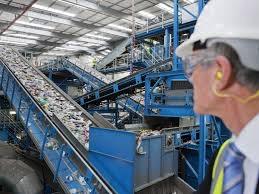 Recycling of polystyrene has undergone advances through applying solvent extraction. PureCycle Technologies is attempting to increase the rate of polypropylene and polystyrene recycling but the loop is limited by the apparent disinclination of municipalities to collect and separate these plastics that are widely used as packaging in the egg industry. The PureCycle process was developed by Proctor and Gamble and uses super-critical butane for polypropylene. Polystyvert of Canada uses p-cymene as a solvent for polystyrene. Once in solution, the polymer undergoes filtration to remove contaminants. The clarified product is then precipitated by adding heptane. A small commercial-scale plant is now in operation in Montreal to demonstrate technical feasibility. The company is attracting funding to expand capacity since there is an increasing demand for recycled polystyrene. Recycling of polystyrene has undergone advances through applying solvent extraction. PureCycle Technologies is attempting to increase the rate of polypropylene and polystyrene recycling but the loop is limited by the apparent disinclination of municipalities to collect and separate these plastics that are widely used as packaging in the egg industry. The PureCycle process was developed by Proctor and Gamble and uses super-critical butane for polypropylene. Polystyvert of Canada uses p-cymene as a solvent for polystyrene. Once in solution, the polymer undergoes filtration to remove contaminants. The clarified product is then precipitated by adding heptane. A small commercial-scale plant is now in operation in Montreal to demonstrate technical feasibility. The company is attracting funding to expand capacity since there is an increasing demand for recycled polystyrene.
It is evident that if the egg industry continues to use PET and polystyrene, both of which have obvious benefits as packaging material for eggs, recycling will be necessary. This will be required to satisfy the demands made by consumers and to avert restrictions that are currently in effect or are contemplated, as in Florida. In the interim manufacturers of polystyrene and PET packaging should develop collection programs based on in-store recycling bins to facilitate collection. Publix operates a convenient system that provides consumer satisfaction but more extensive collection programs are necessary to encourage processors to expand capacity and to erect new plants to balance availability of waste with demand for recycled plastic.

|
Trade with China Will Depend on Mutual Understanding through Firm Diplomacy
|
10/11/2021 |
|
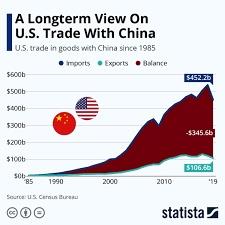 China is an essential contributor to volume and hence profitability of segments of the U.S. poultry industry. During the first eight months of 2021, China received 290,753 metric tons of chicken products including feet valued at $535.5 million with a unit price of $1,852 per metric ton. China increased volume by 4.7 percent compared to 2020 but value rose a disproportionate 30.8 percent from the previous year. As the second-ranked importer of chicken products, China is therefore important to both volume and value. China does not import either eggs or egg products since as the world’s largest producer of chicken and duck eggs the nation is more than self-sufficient. Over the first eight months of 2021, Hong Kong designated an “Autonomous Region” of China was the second largest importer of shell eggs from the U.S. receiving 36.3 million dozen representing 26.6 percent of exports valued at $31.4 million with a unit value of 87 cents per dozen Imports of shell eggs by Hong Kong increased by 13 percent in volume and 29 percent in value compared to the corresponding eight months of 2020. China is an essential contributor to volume and hence profitability of segments of the U.S. poultry industry. During the first eight months of 2021, China received 290,753 metric tons of chicken products including feet valued at $535.5 million with a unit price of $1,852 per metric ton. China increased volume by 4.7 percent compared to 2020 but value rose a disproportionate 30.8 percent from the previous year. As the second-ranked importer of chicken products, China is therefore important to both volume and value. China does not import either eggs or egg products since as the world’s largest producer of chicken and duck eggs the nation is more than self-sufficient. Over the first eight months of 2021, Hong Kong designated an “Autonomous Region” of China was the second largest importer of shell eggs from the U.S. receiving 36.3 million dozen representing 26.6 percent of exports valued at $31.4 million with a unit value of 87 cents per dozen Imports of shell eggs by Hong Kong increased by 13 percent in volume and 29 percent in value compared to the corresponding eight months of 2020.
There has been a sharp deterioration in relations between China and the U.S. extending through the past Administration and continuing into the first eight months of the current Administration. The issues of Taiwan, lack of action on the Phase-1 Trade agreement and aggression in the South China Sea are obviously areas of contention. In March, Secretary of State Anthony Blinken met with State Counselor Wang Yi in Anchorage Alaska. Both sides aired their differences and traded less than diplomatic restatements of their respective positions. China characterized the U.S. approach to the meeting as ‘condescending’ and ‘grandstanding’.
Some restoration of mutual understanding was established on Wednesday October 6th in an extended discussion between National Security Advisor Jake Sullivan and Senior Diplomat Yang Jiechi in Switzerland. Topics reviewed at this meeting included trade, territorial expansion in the South China Sea, intimidation of Taiwan and human rights in Xinjiang Province. Apparently the discussion was productive in that China was apparently willing to consider items of mutual concern including climate change and the discussions deviated from traditional talking points.
One outcome of the meeting was an agreement for President Biden to meet with President Xi Jinping in a virtual format this quarter. The spokesperson for the Department of State stated, “We have an agreement in principle to hold a meeting and we think it’s important for the leaders to take more of a role in managing this relationship through ongoing discussions directly between the two of them.” During September, the President spoke with Xi mainly to establish lines of communication and to facilitate the subsequent discussions in Switzerland.
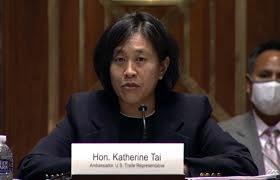 Perhaps the Administration’s position on interaction with China is best exemplified by recent comments made by Trade Representative Ambassador Katherine Tai. Addressing a meeting organized by The Center for Strategic International Studies, Ms. Tai stressed the need for the U.S. to become more competitive through R&D, advances in energy technology and promoting U.S. production capability. Ms. Tai was determined that China should comply with commitments made in the Phase-1 Trade Agreement of February 15th 2020. Her address provided an opportunity for the Administration to confirm that tariffs placed on goods imported from China by the previous Administration would remain at least for the short-term to serve as leverage in negotiations. Ambassador Tai is promoting what she refers to as “smarter and more resilient trade”. China is less a trading partner than an adversary, given imposition of restraints on commerce and recalcitrance to modify coercive tactics and their indifference to U.S. and international concerns. Perhaps the Administration’s position on interaction with China is best exemplified by recent comments made by Trade Representative Ambassador Katherine Tai. Addressing a meeting organized by The Center for Strategic International Studies, Ms. Tai stressed the need for the U.S. to become more competitive through R&D, advances in energy technology and promoting U.S. production capability. Ms. Tai was determined that China should comply with commitments made in the Phase-1 Trade Agreement of February 15th 2020. Her address provided an opportunity for the Administration to confirm that tariffs placed on goods imported from China by the previous Administration would remain at least for the short-term to serve as leverage in negotiations. Ambassador Tai is promoting what she refers to as “smarter and more resilient trade”. China is less a trading partner than an adversary, given imposition of restraints on commerce and recalcitrance to modify coercive tactics and their indifference to U.S. and international concerns.
The meeting in Switzerland confirmed that the Phase-1 Trade Agreement benefited the U.S. agricultural sector. The Administration is determined that China should fulfill promises and prevent China imposing any barriers to agricultural exports that would be contrary to the rules of the World Trade Organization. It is evident that China must comply with conditions agreed to in the Phase-1 Agreement before proceeding with any extension to the existing pact.
The fact that U.S. and China are once again engaging in diplomacy is a welcome sign and should defuse tensions. It is questionable whether the two nations can ever participate in harmonious trade. Currently China needs to import soybeans, corn, sorghum, and energy. We in turn are dependent on a supply of manufactured goods and some critical raw materials. China has as far as possible sourced commodities from competitors in Latin America on the basis of more favorable currency and cheaper FOB prices from suppliers operating with freedom from environmental, labor, safety and related restraints. This now a time for reevaluation of the bilateral relationship with pressure to reverse injustices imposed by China. Good places to start will be rebuilding our infrastructure and improving our domestic manufacturing capacity.

|
It’s Flu-Shot Time Again
|
10/06/2021 |
|
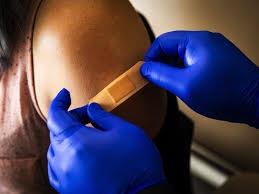 Each February the World Health Organization (WHO) convenes a panel of epidemiologists and virologist to review influenza serotypes isolated and characterized by the Global Influenza Surveillance and Response System from patients in the Southern hemisphere. Based on the results from as many as 120 collaborating influenza reference centers, the panel selects from among influenza A and influenza B strains to be included in the annual influenza vaccine. For the 2021 -2022 season the strains in the U.S. vaccine are:- Each February the World Health Organization (WHO) convenes a panel of epidemiologists and virologist to review influenza serotypes isolated and characterized by the Global Influenza Surveillance and Response System from patients in the Southern hemisphere. Based on the results from as many as 120 collaborating influenza reference centers, the panel selects from among influenza A and influenza B strains to be included in the annual influenza vaccine. For the 2021 -2022 season the strains in the U.S. vaccine are:-
- A/Victoria H1N1
- A/Cambodia H3N2
- B Washington 2019-like Victoria lineage virus
- B Phuket 2013-like virus
The selection of strains to be included in the annual vaccination is based on value judgment and risk assessment but the decision of the panel is not infallible. The emergence and spread of influenza viruses during the upcoming 2021-2022 influenza season in the northern hemisphere may diverge from the pattern of previous years. The incorporation of influenza A and B strains may not be appropriate to the challenges that emerge. The precautions adopted in 2020 to prevent dissemination of SARS-CoV-2 responsible for COVID including masking, social distancing and home confinement limited the spread of influenza during the 2020-2021 season. Accordingly the WHO panel was limited in their decision on selection of strains. A second problem relates to the fact that in the absence of influenza challenge, a high proportion of the population in the Northern hemisphere nations will have greater susceptibility to strains of the virus that may emerge.
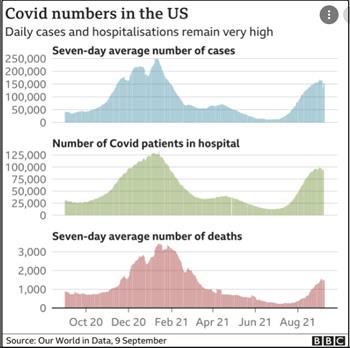 Using egg-propagation with appropriate quality control and the restraints relating to distribution, the vaccine combination as selected by the panel is released each year in October and is now available for administration in the U.S. Using egg-propagation with appropriate quality control and the restraints relating to distribution, the vaccine combination as selected by the panel is released each year in October and is now available for administration in the U.S.
Epidemiologic research has demonstrated that the severity of influenza as measured by incidence rate and mortality is greater in years following a mild influenza season. Every effort must therefore be made to immunize our population especially those working in confined spaces including egg packing plants, and facilities processing red meat and poultry. Unfortunately COVID is still a problem despite a slight decrease in incidence rate attributed to vaccination and public health measures. Notwithstanding progress in vaccine acceptance, 40 percent of our population is vulnerable to COVID many of whom are clustered in rural areas of southeastern and northwest states. Co-infection with both influenza and SARS-CoV-2 does occur and would be expected to result in more severe clinical effects than either disease alone. A winter surge in influenza complicated by COVID will create problems for diagnosticians especially if respiratory syncytial virus complicates an ongoing “twinfection” of COVID and influenza. This will especially be the case for children since availability of an mRNA vaccine at an approved dose will probably not be available before late November.
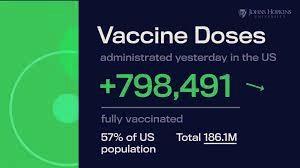 In anticipation of a season characterized by severe respiratory complication from viral infections, a higher proportion of our population must be vaccinated against both COVID and influenza. In anticipation of a season characterized by severe respiratory complication from viral infections, a higher proportion of our population must be vaccinated against both COVID and influenza.
More antigen testing kits with high specificity will be required to enable physicians to rapidly distinguish among the three important respiratory viral infections in order that appropriate medication can be initiated. Antiviral therapy is now available for both influenza and COVID, albeit at high cost for the latter disease. Experience has shown that prevention through vaccination is far more effective and less expensive than treatment. This justifies campaigns to increase immunity among plant and farm workers and their families and the communities in which they live.
In years to come, we may have available mRNA vaccines against multiple strains of influenza and even against combinations of influenza and COVID. In the interim we will have to rely on the traditional approach involving selection of most probable strains of influenza and the time restraints associated with either egg or tissue-culture propagation.
The bottom-line message is for public health authorities and employers to encourage vaccination against both COVID and influenza in advance of what may be a season characterized by severe respiratory disease with the potential for hospitalization and mortality.

|
The Value of “Organic” Certification Questioned
|
09/28/2021 |
|
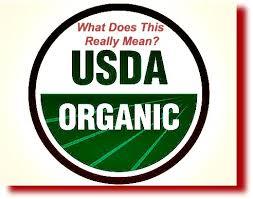 A recent survey of 300 consumers confirmed their purchase of USDA certified organic foods as part of regular shopping. The survey disclosed that only 20 percent of those responding could actually define ‘organic’. With sales of organic products in the region of $60 billion annually, the survey results suggest that the USDA and the Organic Trade Association should reconsider their respective roles in advancing consumption of organic foods. A recent survey of 300 consumers confirmed their purchase of USDA certified organic foods as part of regular shopping. The survey disclosed that only 20 percent of those responding could actually define ‘organic’. With sales of organic products in the region of $60 billion annually, the survey results suggest that the USDA and the Organic Trade Association should reconsider their respective roles in advancing consumption of organic foods.
The USDA defines “organic” as indicating that food has been produced applying approved methods. The term organic does not necessarily represent freedom from infection and only implies that products are free of genetically modified components and were produced without specified fertilizers, additives and pesticides.
Pew Research has determined that three-quarters of adults purchased organic foods on the basis of health concerns. The third motivation was concern over the environment and sustainability with the remainder claiming the inexplicable attribute of “convenience”.
As presently structured USDA organic certification relies entirely on a paper trail audited by designated third party agencies. Consistently, analytical studies show the presence of pesticide residues in produce certified as organic. There is no structured program of selecting and assaying products. A high proportion of organic certified foods and vegetables and all spices and many fruits and vegetables emanate from nations where USDA is reliant on local auditors. The difference in price between conventional and organic products is an incentive for fraud that is impossible to control even with an effective blockchain system. Periodically the USDA-AMS publishes reports on actions taken against fraudulent certification. As with drug trafficking and tax evasion, only small proportion of falsely labeled products are identified and apprehended.
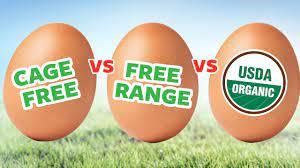 If the USDA seal is to be regarded as a reliable gold standard, the USDA-AMS must establish a capability for laboratory testing for the presence of GM ingredients, pathogens, pesticides, and disqualified additives. The core of the organic certification program comprises the exclusion of GM products. This has resulted in the emergence of the competing Non-GMO Verified seal that operates in parallel with the USDA but effectively imposes an additional cost on producers that is passed onto consumers. If the USDA seal is to be regarded as a reliable gold standard, the USDA-AMS must establish a capability for laboratory testing for the presence of GM ingredients, pathogens, pesticides, and disqualified additives. The core of the organic certification program comprises the exclusion of GM products. This has resulted in the emergence of the competing Non-GMO Verified seal that operates in parallel with the USDA but effectively imposes an additional cost on producers that is passed onto consumers.
Organic food products are undergoing scrutiny based on the fact that organic agriculture is clearly less sustainable than conventional cultivation and livestock production. FAO studies have shown that it will be impossible to feed a burgeoning population without the use of GM cultivars and the precision application of fertilizers and pesticides coupled with regenerative cultivation practices. Notwithstanding this reality, the EU common agriculture policy is advocating organic production that will ultimately require importation of food from nations where control over production will be questionable.
Reevaluation of the objectives of the USDA Certified Organic program should be undertaken. How products are certified and the procedures used to ensure conformity with reasonable and justifiable regulations should the subject of evaluation for relevance and practicality.
Effectively the USDA has done very little to promote organic certification. The Board that administers the program comprises individuals with vested interest in maintaining a high price differential and low volume essentially to the detriment of the ultimate expansion of food production applying justifiable principles of organic production. This is exemplified in the demand for outside access of hens producing under the organic program. The measure is less directed towards “organic purity” than it is to disqualify complexes using aviary housing that represent the bulk of organic eggs produced.
By maintaining exclusivity, prices for organic products are maintained at an artificially high level depriving some consumers of their capacity to include organic items in their baskets.
Organic means different things to regulators, producers and consumers. The fact that twenty percent of those purchasing organic products cannot define the concept and a far higher percentage do not understand the deficiencies is serious defect. The USDA-AMS is providing an anticipation that products conform to non-GM, and freedom from pesticides but do nothing to inspect and regulate at an appropriate level. The USDA measures and establishes the quality of many products including milk, the weight of eggs and their grade and the FSIS monitors pathogen content of red meat and poultry and the FDA is concerned with drug residues in animal products. The USDA-AMS should recognize its obligation to consumers and to honest conforming producers and develop a capability to ensure that products are compliant beyond a simple paper trail.

|
Sustainability as a Marketing Imperative
|
09/23/2021 |
|
The report on sustainability in food retailing produced by the Coca-Cola Retailing Research Council of North America was reviewed at the Executive Conference of the National Grocers Association on September 18th. This report stressed the extent of consumer concern over aspects of sustainability in relation to product packaging, processing and the role of participants in the food chain from production through to retail.
Sustainability means different things to diverse demographics. In essence sustainability as a concept represents the satisfaction of needs without damage to the environment and with special concern for future generations.
 Sustainability incorporates social, human, economic and environmental components representing ‘Four Pillars’ that are in effectively interrelated in production. Sustainability incorporates social, human, economic and environmental components representing ‘Four Pillars’ that are in effectively interrelated in production.
- Human sustainability concerns health, education, providing services and the development of skills for the wellbeing of communities.
- Social sustainability relates to maintaining services and balance within communities including the rule of law and dissemination of accurate information.
- Economic sustainability is necessary to preserve capital and contribute to an acceptable standard of living. Businesses must apply assets to generate profit over the long-term.
- Environmental sustainability protects land, air, water and other resources. Both enterprises and individuals can either contribute to environmental degradation or through specific actions they can reduce wastage, conserve water, lower greenhouse gas emissions and prevent pollution through appropriate disposal of packaging and unwanted items.
In the context of a business concern, it is necessary to integrate the four pillars of sustainability with appropriate compromises and trade-offs to achieve an optimal outcome.
 The sustainability and food retailing study demonstrated that sixty percent of consumers believe supermarkets and retailers should cooperate with their local communities to advance sustainability. The study indicated that most consumers would be willing to pay marginally more for food items and would preferentially patronize stores that demonstrate positive polices contributing to sustainability. The sustainability and food retailing study demonstrated that sixty percent of consumers believe supermarkets and retailers should cooperate with their local communities to advance sustainability. The study indicated that most consumers would be willing to pay marginally more for food items and would preferentially patronize stores that demonstrate positive polices contributing to sustainability.
Examples of sustainability in the egg industry that exemplify the four pillars include:
- Evidence that workers are well remunerated and are protected against of COVID.
- Consumers need to be assured that eggs are produced in a sustainable manner. This will be the responsibility of the Roundtable on Sustainable Poultry and Egg Production to develop quantitative levels of greenhouse gas emission, land and water use per unit of production as incorporated in a comprehensive life cycle assessment. The broiler industry has already completed their evaluation and a corresponding egg study will be forthcoming.
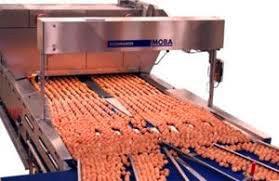 In the context of egg production, packaging constitutes the most important aspect of concern for environmentally conscious consumers. It is apparent that fiber is regarded as biodegradable as opposed to polystyrene foam and PET. If polystyrene is used, in-store collection of empty containers is considered essential to obviate the negative impression that packaging remains on waste dumps in perpetuity or is destined for an ocean gyre. In the context of egg production, packaging constitutes the most important aspect of concern for environmentally conscious consumers. It is apparent that fiber is regarded as biodegradable as opposed to polystyrene foam and PET. If polystyrene is used, in-store collection of empty containers is considered essential to obviate the negative impression that packaging remains on waste dumps in perpetuity or is destined for an ocean gyre.
Consumers indicate that they favor biodegradable bags for produce and are requesting a range of product sizes to prevent waste.
The concept of ‘local’ production is favored by consumers. From the standpoint of sustainability remote but concentrated central cultivation of produce or production of protein, including eggs may require fewer resources than inefficient small-scale production and packaging. In terms of USDA labeling, ‘local’ can extend over 400 miles.
With a greater emphasis on climate change policy and attendant publicity following a change in Administration, consumers, especially those under thirty years of age are concerned over environmental issues. Recent climatic events including hurricanes, wild fires, flooding and polar vortices have increased awareness of the impact of energy generation from fossil fuels on the environment.
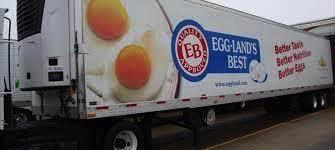 The egg industry is fortunate in that feed conversion is favorable and that conservation of water, power and energy contribute to a small environmental footprint for the product, compared to other animal protein sources. The challenge for the egg industry will be to develop and confirm quantitative data relating to sustainability and then to spread the message to consumers. If opponents of intensive livestock production can use social media to deprecate intensive production then with commensurate effort it will be possible for the industry to present a more positive picture. The activities at the American Egg Board with respect to social media are commendable and obviously will have to be expanded. The egg industry is fortunate in that feed conversion is favorable and that conservation of water, power and energy contribute to a small environmental footprint for the product, compared to other animal protein sources. The challenge for the egg industry will be to develop and confirm quantitative data relating to sustainability and then to spread the message to consumers. If opponents of intensive livestock production can use social media to deprecate intensive production then with commensurate effort it will be possible for the industry to present a more positive picture. The activities at the American Egg Board with respect to social media are commendable and obviously will have to be expanded.
Those who oppose our industry are losing welfare as an issue with progression in the transition to cage-free housing. Salmonella as a secondary talking point is now of minimal importance since there has not been a SE outbreak attributed to eggs from a commercial complex since 2010.
The creation of the Roundtable, changes in packaging and inherent efficiency in conversion of resources to food place egg production in a favorable position with regard to sustainability. We can be justifiably proud of our achievements but must build on this foundation with both innovation and enhanced messaging.

|
Understanding Supply and Demand Factors to Enhance Profitability in the Egg Industry
|
09/16/2021 |
|
The U.S. Egg Industry requires professional evaluation of available data to base decisions on flock size and placement, capital expenditure, mechanization and marketing programs. We are navigating with the aid of a rear-view mirror in a situation that demands forward-looking radar and computerized interpretation of models to correlate consumer, cost and operational inputs.
 The weekly Egg Price And Inventory Report in each edition of EGG-NEWS documents the weekly USDA-AMS combined regional large egg price. This is compared to the previous year and the three-year average. From June through early August 2021 prices conformed closely to 2020 and the three-year average. Starting in mid-August there was a clear upward trend deviating from the corresponding weekly values for 2020 and the three-year average. The increase is attributed to reopening of the economy following COVID restrictions. During the most recent week the combined regional price was about 25 cents per dozen above the three-year average but regrettably showing a downward trend. Current prices can be compared to the year-to-date peak recorded in April of this year. The weekly Egg Price And Inventory Report in each edition of EGG-NEWS documents the weekly USDA-AMS combined regional large egg price. This is compared to the previous year and the three-year average. From June through early August 2021 prices conformed closely to 2020 and the three-year average. Starting in mid-August there was a clear upward trend deviating from the corresponding weekly values for 2020 and the three-year average. The increase is attributed to reopening of the economy following COVID restrictions. During the most recent week the combined regional price was about 25 cents per dozen above the three-year average but regrettably showing a downward trend. Current prices can be compared to the year-to-date peak recorded in April of this year.
As with all commodities, eggs respond to the basic laws of supply and demand. In 2021, the industry has demonstrated restraint with regard to flock size as evidenced by production data. For the first seven months of 2019, 8.21 billion table eggs were packed. In 2020 consumption declined by 2.5 percent to 8.00 billion with a fractional decrease for the first seven months of 2021 to 7.98 billion. Given a 1.4 percent increase in average rate of lay to 81.6 percent in 2021, it is evident that flock size has been limited. The USDA-NASS estimates that the seven-month average table egg layer flock has declined from 380 million in 2019 to 327 million in 2020 and averaged 323 million for the first seven months of the current year.
The supply side in the egg industry has undergone a profound change since the advent of COVID. Traditionally the egg industry comprises two segments, respectively marketing shell eggs and egg liquid to separate defined markets. Under unusual and extreme conditions, overlap or competition occurs between the shell egg and egg liquid segments of the egg industry. In 2015 during the epornitic of highly pathogenic avian influenza, losses attaining approximately 40 million hens disproportionately impacted the egg liquid segment. Until supplies of egg liquid could be imported and flocks replaced, eggs were diverted from retail shell egg sales to breaking. Overall supply was reduced and both shell eggs and egg liquid soared in price.
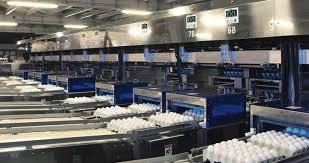 With the advent of COVID in 2020 the reverse situation occurred. Demand for egg liquids plummeted as QSRs and restaurants closed in response to COVID control measures and unwillingness of consumers to patronize in-place dining. Eggs that would have been destined for breaking were diverted to the shell channel despite the restraint represented by the availability of egg-packing material. Prices underwent a sharp increase due to consumer fears of shortages resulting in a transitory spike to as high as $3 per dozen during April 2020. Since the apparent shortage was only a logistic restraint, market stability and hence prices were restored within weeks. With the advent of COVID in 2020 the reverse situation occurred. Demand for egg liquids plummeted as QSRs and restaurants closed in response to COVID control measures and unwillingness of consumers to patronize in-place dining. Eggs that would have been destined for breaking were diverted to the shell channel despite the restraint represented by the availability of egg-packing material. Prices underwent a sharp increase due to consumer fears of shortages resulting in a transitory spike to as high as $3 per dozen during April 2020. Since the apparent shortage was only a logistic restraint, market stability and hence prices were restored within weeks.
Despite their hard shell, eggs demonstrate price elasticity with extreme and rapid changes in wholesale price with relatively small changes in availability. The widely used price discovery system is clearly amplifying both increases and decreases in unit revenue. The daily quotations are now used by chain buyers to effectively suppress revenue by spreading their purchases over extended periods and preempting anticipated price rises before holiday weekends and the two major annual demand surges.
Demand for shell eggs is a function of family and individual dietary habits hopefully stimulated by the activities of the American Egg Board. Essentially consumers buy eggs when they run short in their refrigerators. Reduction in price may stimulate limited incremental purchases, especially among the lower income demographic. Regrettably stores are not featuring eggs to the extent that was evident in past years. This is a direct effect of extreme competition among chains that post operating margins in the low single digits and with proportionately smaller profit margins. The Kroger Company that can be regarded as a pure-play grocer posted a twelve-month trailing operating margin of 2.0 percent and a profit margin of 1.1 percent through the end of the second quarter of the current fiscal year ending August 14th. The traditional chains have maintained high margins on eggs despite competition from the deep discounters. This has been to the disadvantage of the shell-egg segment.
The disturbances in the dynamics and interaction of the two major segments of the egg industry in 2015 due to HPAI and in 2020 following COVID represented extremes in pricing and supply. The events have generated data that could be analyzed to determine the effects of extreme pressure on availability and demand of eggs in both shell and liquid form compared to the relatively cyclic seasonal fluctuations. Despite recommendations to initiate a comprehensive economic study on supply and demand considerations, funding has not been made available to the departments of agricultural economics at major Land Grant universities. We must understand how volume of production and fluctuation in demand, albeit over a limited range, affect the production margins of the two major sectors. Clearly we need the knowledge that could be acquired from both the extreme events and regular consumption patterns to understand the relationship of volume of supply level of demand and pricing.
Traditionally the industry has operated at maximum housing capacity, manipulating flocks to anticipate periods when prices are presumed to rise and then to endure periods of negative margins. The shell industry has developed an acceptance that Easter and Christmas demand will compensate for losses during the remainder of the year. Given that the industry is transitioning from conventional cages to alternative systems, requiring a realistic total of between $10 billion to $15 billion in new capital investment, producers and their lenders will require more information on the factors that determine price and hence profitability. The decisions relating to investment in production, processing and distribution should be based on a clearer understanding of the effects of supply in relation to demand. Appropriate decisions relating to capital expenditure and flock placement will be necessary in a future operating environment presenting challenges of inflation in feed, packaging, labor, transport and other costs, demands for sustainability, disease, increased regulation and industry consolidation.

|
Waukesha School Board Reverses Decision to Deprive Children of School Nutrition.
|
09/03/2021 |
|
 The U.S. Department of Agriculture has extended the Seamless Summer option during the current COVID pandemic eliminating payments and allowing meals to be served in classrooms or outside to avoid congregating in lunchrooms. Alone among 408 Wisconsin public school districts, the Waukesha Board voted to canceled the free program in June. Joseph Como, President of the Board, stated “I would say this is part of normalization.” Board member Karen Rhanicek said the free program “made it easy for families to become spoiled”. The U.S. Department of Agriculture has extended the Seamless Summer option during the current COVID pandemic eliminating payments and allowing meals to be served in classrooms or outside to avoid congregating in lunchrooms. Alone among 408 Wisconsin public school districts, the Waukesha Board voted to canceled the free program in June. Joseph Como, President of the Board, stated “I would say this is part of normalization.” Board member Karen Rhanicek said the free program “made it easy for families to become spoiled”.
For the edification of Como, Waukesha and for that matter Wisconsin is not going back to “normal”. Waukesha County has recorded a COVID rate of 13,718 cases per 100,000 with 169 fatalities per 100,000 of the county population. This compares with 12,352 cases per 100,000 and 143 fatalities per 100,000 for the entire state of Wisconsin. In comparing the figures it must be remembered that Milwaukee County, the densest populated in the state, has an extremely high level of COVID cases and fatalities. Stating that Waukesha, or Wisconsin, or for that matter the U.S. is back to normal is an eggregious denial of reality. To state that a free program providing nutrition for children encourages dependence on government largesse is cynical and depraved.
An administrator with the State Department of Public Instruction School Nutrition Team has advised the district to reconsider noting that the hunger rate in Waukesha County increased from nine percent in 2019 to 13 percent in 2020 during COVID.
 The Board apparently was concerned over discrimination against low income families that would be required to complete forms for their children to participate in the program. Surely this should be up to the parents to decide whether to take advantage of a USDA feeding program for their children. The Board should not be presuming the desires of families since it is generally considered among conservatives that parental choice takes precedence over issues such as health, and education. The Board apparently was concerned over discrimination against low income families that would be required to complete forms for their children to participate in the program. Surely this should be up to the parents to decide whether to take advantage of a USDA feeding program for their children. The Board should not be presuming the desires of families since it is generally considered among conservatives that parental choice takes precedence over issues such as health, and education.
At the August Board meeting the decision was reservsed by a 5 to 4 vote, with the District continuing to participate in the Federal program. This was based on public opposition to the June decision. Board member Greg Deets quoted in the Waukesha Daily Freeman stated “The truth is that many of our students are hungry through the school day and we have the ability to do something about that” He added “These are stressful times and it is well known that hunger directly impacts our students’ behavior and their ability to learn”
It is indeed unfortunate that four elected officials of a school board saw fit to deprive students for whom they are responsible, of adequate available nutrition funded by the Federal government. If he were alive, Charles Dickens would have been inspired by the callous indifference and twisted logic expressed by these members of the Board.

|
EIC 2020 Survey of Processing, Packaging and Transport
|
08/30/2021 |
|
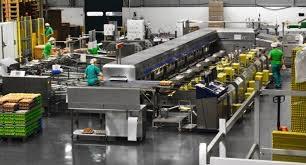 On August 25th the Egg Industry Center released the 2020 version of the National Egg Processing, Cartoning and Transportation Cost Survey. Compiled by Maro Ibarburu and Lesa Vold of the Egg Industry Center and Alejandro Plastina and Richard Gates of the Department of Economics, Iowa State University, the data as presented, updated the previous report reflecting 2018. On August 25th the Egg Industry Center released the 2020 version of the National Egg Processing, Cartoning and Transportation Cost Survey. Compiled by Maro Ibarburu and Lesa Vold of the Egg Industry Center and Alejandro Plastina and Richard Gates of the Department of Economics, Iowa State University, the data as presented, updated the previous report reflecting 2018.
The response to the industry questionnaire was disappointing. Only 16 out of 100 surveys were returned. Notwithstanding the low compliance, the data reflected 80 million laying hens corresponding to approximately 35 percent of the presumed 224 million hens producing shell eggs. The data suggested that 74 percent of eggs processed by those responding to the survey were packed in line, 24 percent were acquired as nest-run and consequently were graded off-line and two percent were graded loose.
In comparing costs between the 2018 and 2020 surveys, median values expressed in cents per dozen were: -
|
COST INPUT
|
2020 |
2018 |
| ___________________________________________________________________ |
| The 12-pack carton cost |
9.95 |
9.80 |
| Case cost (30 dozen) |
3.60 |
4.00 |
| Transportation cost to warehouse |
5.56 |
5.50 |
| Processing, in-line 1 |
2.90 |
13.27 |
| Processing, off-line |
5.47 |
16.47 |
| Grade yield loss in-line* |
5.52 |
7.04 |
| Grade yield loss off-line* |
6.97 |
10.00 |
*The report noted that the differences in grade yield loss were attributed to an alternative method of calculating data for 2020.
The estimated median cost of packaging, processing and transport for in-line eggs was 38.66 cents per dozen and for off-line eggs, 42.67 cents per dozen.
It is hoped that if the EIC conducts a 2022 survey the following aspects will be considered:-
- Differences between alternative cartons including fiber, PET, 30-egg-tray and sleeve and other types in popular use.
- Regional differences in cost with reference to labor rates
- Packaging of cage-free product compared to eggs from caged flocks with specific reference to downgrades classified according to surface deposits and cracks
- Comparison of labor complements and costs in plants using robotic packers
- Comparison of packing generic compared to specialty eggs
- Differences attributed to operational rate of packers, single shift, extended shift or double shift plant operation.
- Differences attributed to plant throughput
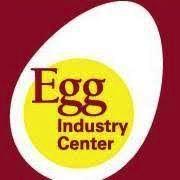 The Egg Industry Center and their collaborators in the Department of Economics at Iowa State University are commended on their analysis given the restraint of the limited response. The relevance of the data is obviously subject to selection bias given the number of surveys returned by producers. The compliance rate for the survey in 2020 was 30 percent lower than in 2018. The more data that the EIC receives the greater will be the relevance and applicability of information derived from the analysis of data. The Egg Industry Center and their collaborators in the Department of Economics at Iowa State University are commended on their analysis given the restraint of the limited response. The relevance of the data is obviously subject to selection bias given the number of surveys returned by producers. The compliance rate for the survey in 2020 was 30 percent lower than in 2018. The more data that the EIC receives the greater will be the relevance and applicability of information derived from the analysis of data.
The EIC might be advised to consider specific aspects of packaging, processing and transport as an ongoing exercise rather than attempting to conduct a comprehensive survey of globular costs at two year intervals. Frankly an integrated egg producer would not be able to derive any direct operational or financial benefit from the 2020 survey unless they diverged significantly from any of the median cost categories, representing an unlikely situation.
The EIC should by now recognize the reluctance of producers to provide information to universities, government agencies and non-corporate entities. This is a function of the perception of minimal benefit from compliance compared to the obvious risks and consequences associated with disclosure of data. The Industry is all too aware that animal rights groups or customer associations may invoke the Freedom of Information Act to acquire data. The challenge for the EIC is to incentivize producers to comply by providing useful data. This would be analogous to the approach used by a commercial benchmarking enterprise that has actually failed to gain traction in the egg industry for reasons that are self-evident. Specific studies could be conducted personally on an in-plant basis subject to permission and cooperation to acquire and evaluate data. This would require more than a mailed out survey form with an office-centric approach and presumes familiarity with packing plants and their operation.

|
No More Excuses for Vaccine Hesitancy
|
08/24/2021 |
|
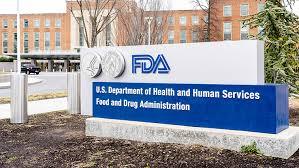 The announcement on Monday, August 23rd by the US Food and Drug Administration that the Pfizer-BioNTech mRNA vaccine has received full approval should reduce concern and reluctance to receive this COVID vaccine. The FDA decision was based on extensive review of both safety and efficacy over nine months and was subject to the same rigorous standards as applied to all other vaccines. Previously EGG-NEWS countered concerns that the mRNA vaccines were developed too rapidly. EGG-NEWS posted an editorial last week explaining that mRNA vaccines have been the subject of extensive research and development extending over two decades. Recent breakthroughs in molecular biology and bioengineering led to the simultaneous development of spike protein antigens and also nanolipid technology to introduce the antigen into receptor cells. The development and testing of mRNA vaccines was stimulated by government funding that expedited availability within nine months from the onset of the pandemic. Emergency use authorization of vaccines in December 2020 by the FDA was possible only by close cooperation among scientists at the National Institutes for Health-National Institute for Allergy and Infectious Diseases, Pfizer and BioNTech, the Department of Health and Human Services supported by its affiliate agencies and the military, providing logistics. The announcement on Monday, August 23rd by the US Food and Drug Administration that the Pfizer-BioNTech mRNA vaccine has received full approval should reduce concern and reluctance to receive this COVID vaccine. The FDA decision was based on extensive review of both safety and efficacy over nine months and was subject to the same rigorous standards as applied to all other vaccines. Previously EGG-NEWS countered concerns that the mRNA vaccines were developed too rapidly. EGG-NEWS posted an editorial last week explaining that mRNA vaccines have been the subject of extensive research and development extending over two decades. Recent breakthroughs in molecular biology and bioengineering led to the simultaneous development of spike protein antigens and also nanolipid technology to introduce the antigen into receptor cells. The development and testing of mRNA vaccines was stimulated by government funding that expedited availability within nine months from the onset of the pandemic. Emergency use authorization of vaccines in December 2020 by the FDA was possible only by close cooperation among scientists at the National Institutes for Health-National Institute for Allergy and Infectious Diseases, Pfizer and BioNTech, the Department of Health and Human Services supported by its affiliate agencies and the military, providing logistics.
Awarding permanent approval to the Pfizer vaccine and hopefully the Moderna mRNA equivalent, will allow government agencies, educational and health organizations and commercial companies to mandate vaccination for employees. This is especially necessary in work situations requiring close contact that facilitates infection with SARS-CoV-2 virus by the aerogenous route. A number of unions have indicated that they would recommend vaccination to their membership and also agree to mandates under collective bargaining agreements once any COVID vaccine received full FDA approval.
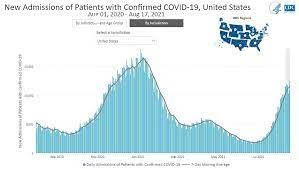 It is encouraging that President Trump encouraged attendees at an Alabama rally on Saturday, August 21st to be vaccinated, confirming his own immunized status. Regrettably there were some boos from the audience suggesting that anti-vaccination propaganda has deeply poisoned the well. It is encouraging that President Trump encouraged attendees at an Alabama rally on Saturday, August 21st to be vaccinated, confirming his own immunized status. Regrettably there were some boos from the audience suggesting that anti-vaccination propaganda has deeply poisoned the well.
In recent weeks, opponents of COVID vaccine have erroneously misquoted data from Israel concerning breakthrough infection. A frequently cited figure that 60 percent of all patients currently hospitalized for COVID were previously vaccinated is subject to interpretation. Out of 515 hospitalized patients in Israel, 301 had received two doses of the Pfizer vaccine. This figure is used to disparage the vaccine and to provide support for the notion that the vaccine is ineffective. This is simply not supported by the facts.
In a recent ProMED posting, Dr. Mary J. Marshall interpreted data and provided an explanation for the apparent anomaly. Her article noted that nearly 80 percent of all residents of Israel over the age of 12 years have been vaccinated. There is at present a disparity in age among vaccine recipients with 90 percent of residents over 50 years old having been immunized. In contrast the majority of those unvaccinated are under 30 years of age. Dr. Marshall correctly noted that older people are more likely to suffer respiratory infections whether from COVID or other respiratory and systemic pathogens, proportional to age. It is accepted that respiratory viruses are twenty times more likely to result in hospitalization in people over 50 years of age and 1,600 times more likely over the age of 90.
Dr. Marshall adjusted data by stratifying for age demonstrating that vaccines have retained efficacy in the range of 85 percent to 95 percent against severe disease, even with exposure to the Delta variant. Data showed that even one dose of the Pfizer vaccine reduced hospitalization resulting from severe disease over a range of 75 to 85 percent. It is emphasized that in evaluating data, crude counts are misleading. In the specific situation in Israel where the majority of hospitalized patients are advanced in years and many with comorbidities, the apparent high rate of hospitalizations following breakthrough infections is far lower than crude figures would suggest. When the data from Israel was expressed per 100,000 people the rate for severe cases was 16.4 per 100,000 in unvaccinated individuals compared to 5.3 per 100,000 in fully vaccinated patients. The threefold higher prevalence confirms that vaccination suppresses severe disease. The efficacy data relating to vaccination may be interpreted as accepting that two thirds of serious infections leading to hospitalization would be among unvaccinated individuals. A full analysis of Israeli data confirms that vaccine efficiency against severe disease for younger individuals is 91.8 percent and for those over 50 years of age, 85 percent.
Data from Israel corresponds closely to current trends in southern states with low levels of vaccination. It is calculated that over 95 percent of those occupying ICU beds were not vaccinated and the demand for hospital care is increasing sharply in the states with low rates of vaccination and concurrent policies mitigating against masking and social distancing.
It is encouraging that for the three last working days of the previous week, U.S. vaccination rates increased to one million per day suggesting that concern over the delta variant and its clinical consequences have swayed the inhibitions of vaccine hesitant people. Unfortunately, our health facilities and resources will be stressed by those who are completely opposed to vaccination. These individuals are prolonging the epidemic and at the same time delaying restoration of our economy. The Kaiser Family Foundation determined that health care for non-vaccinated people cost the U.S $2.3 billion in June and July and the cost is expected to rise further in August.
Let us hope that the timely action by the FDA will encourage more extensive adoption of the Pfizer vaccine in states and communities with low rates of protection. EGG-NEWS has always maintained that COVID is a public health issue and regrets the political overtones applied to the infection. Appropriate preventive measures including vaccination that most certainly keep people out of hospital will in the short term reduce institutional care and fatalities, now running at over 1,000 per day, and will avert the persistent clinical problems attributed to "long COVID".

|
Urgent Need to Mitigate Climate Change
|
08/17/2021 |
|
 August has been a wake-up month for those who deny the reality of climate change. We have witnessed unprecedented once-in-a-thousand year floods in central Europe and China. Vast areas of the planet are in flames including forests in our Western states and in Greece and Turkey. Australia has experienced severe and extensive bush fires in recent years. The National Oceanic and Atmospheric Administration (NOAA) has forecast more and stronger hurricanes that will impact the Eastern seaboard and Gulf coast through November. There is evidence that the Gulf Stream is weakening in intensity. Droughts especially in the West are severe and are lasting for multiple years. Water supply is diminishing as evidenced by the fact that the largest lakes in California are at less than one third of capacity and restrictions have been placed on consumption from the Colorado River system. Coral reefs are disappearing as both water temperature and carbon dioxide content of oceans rise. The Amazon Forest, regarded as the "world's lung" is now a net generator of carbon dioxide in the eastern quadrant due to deforestation by logging and burning with vast areas converted to livestock and crop agriculture. August has been a wake-up month for those who deny the reality of climate change. We have witnessed unprecedented once-in-a-thousand year floods in central Europe and China. Vast areas of the planet are in flames including forests in our Western states and in Greece and Turkey. Australia has experienced severe and extensive bush fires in recent years. The National Oceanic and Atmospheric Administration (NOAA) has forecast more and stronger hurricanes that will impact the Eastern seaboard and Gulf coast through November. There is evidence that the Gulf Stream is weakening in intensity. Droughts especially in the West are severe and are lasting for multiple years. Water supply is diminishing as evidenced by the fact that the largest lakes in California are at less than one third of capacity and restrictions have been placed on consumption from the Colorado River system. Coral reefs are disappearing as both water temperature and carbon dioxide content of oceans rise. The Amazon Forest, regarded as the "world's lung" is now a net generator of carbon dioxide in the eastern quadrant due to deforestation by logging and burning with vast areas converted to livestock and crop agriculture.
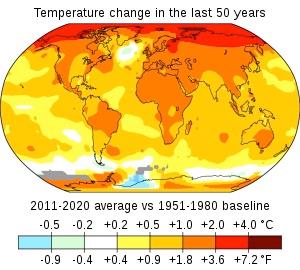 Recognizing that average annual world temperature had risen 2.5F above the pre-industrial age, the Intergovernmental Panel on Climate Change convened a 2015 meeting in Paris. Participants agreed to limit global warming to below 3.4F by 2050 with a recommendation that, if possible, the rise in global temperature should be held to 2.7F. The Climate Action Tracker established following the Paris meeting has monitored global temperature and other environmental effects and has determined that global temperature might rise by 6.7F above pre-industrial levels by 2100 without remedial action. Recognizing that average annual world temperature had risen 2.5F above the pre-industrial age, the Intergovernmental Panel on Climate Change convened a 2015 meeting in Paris. Participants agreed to limit global warming to below 3.4F by 2050 with a recommendation that, if possible, the rise in global temperature should be held to 2.7F. The Climate Action Tracker established following the Paris meeting has monitored global temperature and other environmental effects and has determined that global temperature might rise by 6.7F above pre-industrial levels by 2100 without remedial action.
Environmental scientists have attempted to predict the possible effects of a 5F rise in temperature over the coming two decades. Models show that two thirds of the world's population will experience drier conditions with one-in-100-year events such as severe droughts occurring at two to five year intervals in Africa, Australia, Southern Europe and the central United States. With a 5.4F increase in average world global temperature, a quarter of the world's population would be subjected to starvation. A heat-related collapse of the rice crop in China has a probability of one over one hundred years with a 2F increase in seasonal temperature. The probability increases to one in ten years with a global rise of 5.4F.
Increasing world temperature is responsible for the melting of ice caps. An increase of 3.6F will melt the West Arctic ice sheet within a decade and collectively the release of water will result in a rise of as much as five feet in sea level before the turn of this century. In late July, more than forty percent of the Greenland ice cap was covered with melt-water with a sharp reduction in summer sea ice in the Arctic. With a 5F increase in global temperature, coastal cities will be uninhabitable by 2070.
World temperature increase will be unevenly distributed with regional values for North America and Europe increasing disproportionately to Africa and Asia, severely impacting crop production. It is possible that nations with high humidity due to their proximity to oceans will experience wet bulb temperatures in excess of 63F producing heat index values in excess of 120F. This is inconsistent with long-term survival and health. The Intergovernmental Panel has concluded that each 0.9F increase in global temperature will result in "clearly discernable increases and intensity of heat and heavy precipitation as well as droughts in numerous regions.
Mitigation is obviously required to avert a global catastrophe. Recently the U.S. in recognition of the consequences of malignant inactivity has rejoined the world community to address the overt problem of climate change. Since the dawn of the industrial age, increased standards of living for those with resources were derived from burning coal. As we have become more dependent on electrical power the source of the energy we now take for granted should be the subject of profound change. Technology to reduce carbon dioxide emission from coal-fired power generation is prohibitively expensive. Alternatives such as natural gas, available in profusion in the U.S. and at a reasonable price is preferable to coal as evidenced by the trend in converting power generation to more environmentally friendly natural gas. To meet standards of emission for greenhouse gases, methane release must be limited since this gas is more persistent and damaging to the environment then an equivalent quantity of carbon dioxide.
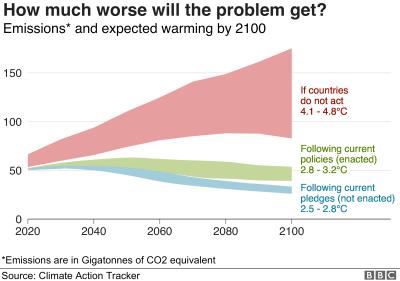 The growing use of solar and wind generation, although currently expensive must be supported by public funding. It is also time to reevaluate nuclear generation of power that is innocuous to the environment. Impediments to greater use of this technology relate to disposal or reprocessing of spent nuclear fuel and also to rigorous and sometimes unnecessary regulatory oversight that requires a more rational and commonsense approach. There have been no new nuclear plants proposed or erected in the U.S. in decades, and many facilies are facing decommissioning. Japan and France that rely on nuclear power are reevaluating earlier decisions to transition from nuclear generation following the Fukushima Dai-ichi disaster in 2011. The growing use of solar and wind generation, although currently expensive must be supported by public funding. It is also time to reevaluate nuclear generation of power that is innocuous to the environment. Impediments to greater use of this technology relate to disposal or reprocessing of spent nuclear fuel and also to rigorous and sometimes unnecessary regulatory oversight that requires a more rational and commonsense approach. There have been no new nuclear plants proposed or erected in the U.S. in decades, and many facilies are facing decommissioning. Japan and France that rely on nuclear power are reevaluating earlier decisions to transition from nuclear generation following the Fukushima Dai-ichi disaster in 2011.
Agriculture is responsible for ten percent of greenhouse gas emissions. The egg and broiler industries have accepted that they are jointly, along with all agricultural enterprises, responsible for greenhouse gas emissions and adverse environmental effects. Most poultry companies are now publishing sustainability reports with clearly defined goals to enhance conservation of water and energy and to reducing pollution and waste. The industry-wide collaboration in the form of the U.S. Roundtable on Sustainable Poultry and Eggs will incorporate a current life-cycle analysis for egg production. This will identify achievements and form the basis for future action.
Areas in which sustainability of egg production can be improved include greater use of solar power as in the E.U. The Continent leads the U.S. in environmental concern and remediation. Water use must be reduced through recycling and more efficient design of equipment and changes in production procedures. The desirability of establishing multi-million bird units in desert areas that require vast quantities of water for evaporative cooling is questioned. These complexes will ultimately deplete aquifers and lower the regional water table unless replenished by rainfall. It is obviously preferable from an environmental perspective to produce eggs in more temperate regions and transport product to areas of market demand, despite the energy used to move eggs westward on interstate highways. It is also noted that the energy required to transport ingredients is threefold more than the mass of shell eggs produced, so it is always environmentally and financially beneficial to produce eggs where corn, soybean meal and other ingredients are locally available.
Advances in genetics with complementary advances in disease control, nutrition and housing have made possible the production of eggs with reduced input of feed, energy and labor over the past fifty years. Deviations from progress in sustainability are exemplified by organic production and free-range and non-confined housing systems that run counter to optimal use of resources to produce a food with high nutrient density. The affluent few who are environmentally conscious should recognize that their misplaced anthropomorphism conflicts with optimal sustainability. A moral compromise is therefore required to establish a balance between environmental sustainability and rational welfare in order to optimize production of eggs and derived products.
We are in a situation analogous to a frog in a pot of water at 35F. Heating the water by 3F will not cause any physical concern for the unfortunate amphibian in the short term. The predictions of environmental scientists of the longer-term consequences of 3F to 5F increases in global temperature should be heeded. We owe succeeding generations the benefits of our stewardship of the environment and should not bequeath them a planet with mass starvation, flooding, hurricanes, droughts and warfare over resources leading to an ever-decreasing quality of life.

|
Hendrix-Genetics Executive Comments on Economic Sustainability
|
08/06/2021 |
|
 In a July 30th article, Marcel Huijsmans, Director of Communications for Hendrix-Genetics identified three areas to achieve economic sustainability in poultry production. He considers that placing parent and commercial and generation flocks with genetic characteristics appropriate to market needs as being critical to achieving financial return and optimizing use of resources. He emphasizes that selection of strains should be based on climatic challenges citing the ongoing Sustainable Access to Poultry Parent Stock for Africa as an example. In a July 30th article, Marcel Huijsmans, Director of Communications for Hendrix-Genetics identified three areas to achieve economic sustainability in poultry production. He considers that placing parent and commercial and generation flocks with genetic characteristics appropriate to market needs as being critical to achieving financial return and optimizing use of resources. He emphasizes that selection of strains should be based on climatic challenges citing the ongoing Sustainable Access to Poultry Parent Stock for Africa as an example.
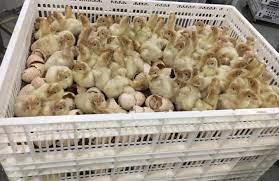
Biosecurity is considered to be the second factor to deliver optimal results. Primary breeders have eliminated vertically transmitted disease and commercial operators should implement appropriate structural and operational biosecurity to maintain the health of flocks. Hendrix-Genetics has achieved World Organization for Animal Health Compartment Status for grandparent farms and hatcheries both in their home base in the Netherlands and in their breeding operation in Brazil.
Huijsmans notes that innovations should improve both efficiency and sustainability. Gene deletion may be applied in the future but it is evident that public and government concern over GMO technology will limit commercial adoption. It is emphasized that no primary breeder including Hendrix-Genetics has ever applied any form of genetic modification in breeding programs. Improvements in genotype are based on programs applying index selection although molecular assays are universally applied to identify families with superior characteristics.
|
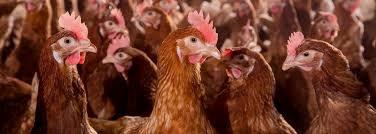 |
Enhanced efficiency through a combination of improved genetics, superior management, prevention of disease and optimal nutrition will contribute to sustainability. Phenotypic expression of superior production of egg and poultry meat relative to inputs, including ingredients, utilities and labor benefits both farmers and consumers. Optimizing genetic potential with other inputs makes available food at a competitive price that provides consumers with a nutritious product while allowing producers a return on investment in facilities and resources.
|

|
Creativity and Flexibility Required to Recruit Workers and Supervisors
|
08/05/2021 |
|
Despite the relatively wide range of unemployment figures in U.S. states ranging from 2.7 in Utah to 7.9 percent in new Mexico with an average of 5.9 percent for the Nation, there are millions of job opportunities available, especially in positions requiring little or no training. Irrespective of the reason for the discrepancy between job opportunities and applicants, the food production, distribution and service sectors are short of workers. Solutions require creativity coupled with realism to recruit and retain workers. Essentially the apparent problem requires application of the principles of marketing. Employers have to define the needs of workers and develop remuneration and benefit packages that are both appealing and competitive to generate satisfaction and loyalty.
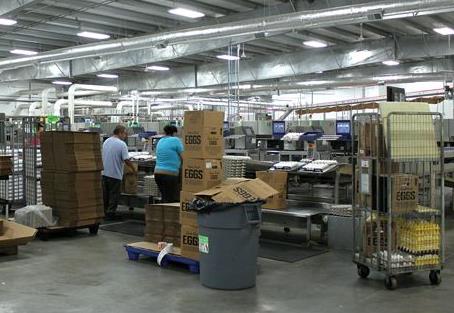 Supplementary payments by the Federal Government and specific states will end in September, but structured research has shown that this largesse has not materially served as a deterrent to seeking employment. Small-scale employers with less than fifty workers may be at a competitive disadvantage if they are in an area where a large employer, such as Amazon or an auto plant is hiring. This will especially be the case if a large company offers a high starting wage, superior benefits, union representation and a congenial workplace compared to an agricultural enterprise. Supplementary payments by the Federal Government and specific states will end in September, but structured research has shown that this largesse has not materially served as a deterrent to seeking employment. Small-scale employers with less than fifty workers may be at a competitive disadvantage if they are in an area where a large employer, such as Amazon or an auto plant is hiring. This will especially be the case if a large company offers a high starting wage, superior benefits, union representation and a congenial workplace compared to an agricultural enterprise.
Recently EGG-NEWS posted a report on McDonald’s Corporation assisting franchisees with supplements to be passed on to workers. In contrast, a private company such as Chick-Fil-A® has not reported any problem with either recruitment or retention. This is based on a long history of paying above standard wage in an area. The Company has provided health and educational benefits together with training, Sunday closing and permitting flexibility in work hours to accommodate family and scholastic commitments.
With regard to workers in laying houses and packing plants, producers are obliged to recruit from the area where they operate. With increasing scrutiny of eligibility for non-nationals, HR departments should evaluate the feasability of H-2A visas. Congress is currently responding to pressure from the agricultural sector to increase the number visas offered in this category allowing 12-month employment consistent with the needs of egg production and packing where training is required.
There are limits to flexibility that may be offered by QSRs, since egg production and packing require fairly rigid daily hours of operation. Start and finish times could however be adapted to the needs of workers, especially with regard to weekends given that our industry operates on a 24-7 basis.
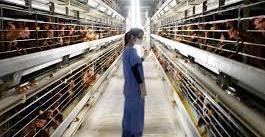 Wage rates in the case of workers and salaries for supervisors are the principal determinant of whether prospective employees will consider a position. Obviously starting rates are important. Recently a QSR in Durham, NC, posted a ‘workers wanted’ banner offering $10 per hour. Given that the going rate in the area for similar positions exceeds $12 per hour, the store concerned would be scraping the bottom of the barrel even if potential employees considered the lower rate. COVID has disrupted employer-employee relations and it is doubtful whether wage rates will ever return to 2020 levels. Many companies are offering sign-up bonuses payable one to three months after commencing work. These may serve as inducements especially for skilled employees, including maintenance personnel and those with skills who have a wide range of industry options. Wage rates in the case of workers and salaries for supervisors are the principal determinant of whether prospective employees will consider a position. Obviously starting rates are important. Recently a QSR in Durham, NC, posted a ‘workers wanted’ banner offering $10 per hour. Given that the going rate in the area for similar positions exceeds $12 per hour, the store concerned would be scraping the bottom of the barrel even if potential employees considered the lower rate. COVID has disrupted employer-employee relations and it is doubtful whether wage rates will ever return to 2020 levels. Many companies are offering sign-up bonuses payable one to three months after commencing work. These may serve as inducements especially for skilled employees, including maintenance personnel and those with skills who have a wide range of industry options.
Health benefits are an important incentive as noted in union-employer negotiations that frequently place this benefit higher than base wage. Educational benefits are significant as denoted by the response to the Pilgrims Pride/JBS USA program which attracted more employees than their dependent children. Working conditions are important in the context of egg production, this might include provision of PPE, that in any event is necessary in the context of biosecurity, congenial rest areas and break rooms and installations and equipment that limit fatigue and physical stress.
Childcare is an important consideration in segments of the egg-production industry that employ women. Supplements to compensate for the high cost of childcare or participation in communal facilities may contribute to a satisfied and stable workforce. On-site accommodation could be provided for critical employees required to perform night checks or maintenance on farms. Although a significant investment, appropriate low-cost but comfortable accommodation for families either on-site or in the vicinity of farms or packing units may ultimately be required, especially for foreign workers holding H-2A visas. Many potential workers lack transport to plants and farms. Van pooling or transport supplements may facilitate recruitment if this problem is identified as a restraint to employee enrolment or attendance.
Employers should be aware of the restrictions relating to collusion in establishing wage rates and “no poach” agreements. The Administration has indicated that any activities that could be construed as restricting employment options or setting wages in an area are illegal and will be subject to investigation and penalties will be imposed if non-competitive practices are confirmed.
Given the profound change in the worker-employer equation, innovation and flexibility will be required, balancing wage rates, benefits, bonuses and work conditions going forward. Evaluating the specific needs of workers and developing remuneration packages are required now and in the post-COVID environment.

|
Global Warming Requires Urgent and Concerted Action
|
07/19/2021 |
|
On July 16th, the U.S. Roundtable for Sustainable Poultry and Eggs issued a draft sustainability framework for chicken, turkey and egg production. Following public comment, the sustainability framework will be revised to form the basis of concerted action by the poultry industry to avert waste and conserve resources through the entire cycle of production, processing, packaging and distribution. Conservation of resources is only part of the comprehensive approach to restoring the environment that has been sadly abused by industry, governments and consumers, all bearing responsibility for degradation.

Scientists have warned of the effects of industrialization with consequential emission of greenhouse gases. The level of atmospheric carbon dioxide has steadily increased since the beginning of the industrial revolution in the mid-1880's mainly due to the use of fossil fuels including coal and petroleum products. Admittedly intensification of farming and worldwide deforestation have added to environmental degradation. Industrial-scale production has provided adequate and relatively inexpensive food for industrialized nations with only a small proportion of their populations involved in agriculture and livestock production and processing.
Industrial chemicals including refrigerants have damaged the ozone protective layer and plastics have accumulated in our oceans and on land adding to a variety of secondary impacts. The damage caused by global warming has been disproportionately borne by underdeveloped nations. Their populations have experienced desertification in Africa and the Pacific littoral, irregularity of monsoons in Southeast Asia and periodic famine and climate-related diseases Africa and Asia.
During the past year, the entire world has witnessed climatic and environmental events that have affected nations in temperate climates and have created problems for industrialized nations. In mid-July severe flooding regarded as the worst in a thousand years occurred in Western Europe. Concurrently extreme drought in the Pacific states of the U.S. has intensified. There are currently 78 active fires in Western states that have burned two million acres. Deforestation in the Southeastern Amazon has resulted in the region becoming a net generator of carbon dioxide instead of serving as a sink for this greenhouse gas. Export of grains from Argentina has been impeded by low water level on the Parana River, a direct consequence of drought in Brazil. The National Oceanic and Atmospheric Administration and the National Weather Service forecast more extreme hurricanes in the 2021 season with powerful storms fueled by higher water surface temperature. It is obvious to any reasonably informed and thinking person that climate change is a reality and will inevitably degrade our standard of living and change our way of life in less than pleasant ways.
|
 |
An international agreement on mitigating climate change named the Kyoto Protocol was signed in 1997 by eighty-four nations, extending the 1992 United Nations Framework Convention on climate change. Subsequently in 2015 a group of 196 nations agreed in Paris on goals to reduce greenhouse gas emissions and to conserve resources. The intent was to constrain the increase in global temperature to not more than 2.7F above pre-industrial levels. This would be achieved through application of financial resources and technology to reduce greenhouse gas emissions and to encourage transparency in action. The Paris Agreement required parties to strengthen national efforts on emissions controls and mitigation procedures.
|
|
In 2017 the U.S. withdrew from the Paris Agreement based on prevailing political sentiment. The U.S. rejoined the Paris Agreement in February 2021 following release of a Presidential Executive Order. The U.S. is on track to reduce greenhouse gas emissions by 17 percent by 2025 compared to a base level 2005 levels. Scientific data on oceanic and atmospheric temperature and levels of greenhouse gas emission are irrefutable. Atmospheric and climatic changes are quantifiable and recent weather events worldwide conform to the predictions of scientists made before the turn of the century.
Reversing the effects of climate change will require decades of investment and action. Acknowledging the extent and severity of the problem on both a national and world basis is the first step towards resolution. It is essential that our Nation should achieve unanimity on the need to change how we produce food, manufacture goods and consume and dispose of products essential to our way of life. The Roundtable for Sustainability should provide practical measures that can be adopted by the poultry industry. Recent sustainability reports from Tyson Foods, JBS USA, Sanderson Farms and other broiler integrators and by Cal-Maine Foods and Herbruck’s Poultry Ranch and others in the egg industry confirm positive action to conserve water and energy and increase efficiency in production. These efforts are supported by genetic progress in broiler, turkey and egg production strains that show improved growth rate and feed conversion through scientific selection.
If our planet is to be hospitable to our grandchildren, sacrifices will have to be made by the present generation. Denial of climate change is not an appropriate strategy, the phenomenon is not a hoax nor will it simply go away. By the same token precipitous action through placing curbs on sourcing of carbon energy will be destructive in the short term. We need politicians with wisdom, acting on responsible scientific advice to establish and implement policy that will have long-range prospects to mitigate global warming This will constrain the rise in global atmospheric and oceanic temperature with its attendant problems of severe weather, drought, destruction of our coastal regions, famine and emerging diseases of humans, animals and plants.
|

|
Southeast Amazon Rainforest Net Generator of Carbon Dioxide
|
07/19/2021 |
|
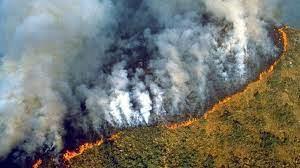 A nine-year study conducted by the National Institute for Space Research in Brazil (equivalent to U.S. NOAA) reported that carbon dioxide concentrations in columns of air above the southeast quadrant of the Amazon rainforest is releasing more carbon dioxide then it accumulates. Previously models have not detected the reversal from absorption and storage of carbon dioxide to release. More precise measurements using specially designed sampling vessels deployed in aircraft detected the change that is attributed to both burning and deforestation especially during the August to October quarter. A nine-year study conducted by the National Institute for Space Research in Brazil (equivalent to U.S. NOAA) reported that carbon dioxide concentrations in columns of air above the southeast quadrant of the Amazon rainforest is releasing more carbon dioxide then it accumulates. Previously models have not detected the reversal from absorption and storage of carbon dioxide to release. More precise measurements using specially designed sampling vessels deployed in aircraft detected the change that is attributed to both burning and deforestation especially during the August to October quarter.
The southeastern Amazon rainforest is vulnerable to elevated ambient temperature and drought and is therefore more sensitive to burning. The southeastern rainforest is approximately 28 percent deforested. During the months of August through September 2020 the region had 24 percent less precipitation and ambient temperatures increased on by 5F compared to historical records.

These alarming results have implications extending beyond Brazil. The integrity of the Amazon rainforest is an important to countering the release of carbon dioxide worldwide by absorbing this greenhouse gas. If burning and deforestation continue the Amazon will pass a tipping point and will no longer generate the microclimate that maintains precipitation required to support the number and diversity of trees that serve as the “World’s lung.” EGG-NEWS has previously commented on the need for international action to slow the degradation of the Amazon rainforest. Deforestation by both legal and clandestine logging and burning is carried out to clear areas for cattle grazing and then subsequently for soybean production. Multinational grain buyers and meat packers are initiating programs to discriminate against illegal production but it remains to be seen if there is a decline in the rate of depredation of this valuable resource for short-term financial and political gain.
Gatti, L.V.et al Amazonia as a carbon source linked to deforestation and climate change Nature. 595;388-393 (2021)

|
Reestablishing Profitability in the U.S. Egg Industry. Can Shell learn from Shale?
|
07/13/2021 |
|
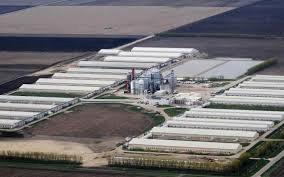 After successive years of compiling articles on weekly and monthly production data and reviewing quarterly financial performance of U.S. and international egg production enterprises it is evident that profitability across the industry is limited by overproduction of shell eggs and liquids relative to demand. There are limitations on marketing with price unfortunately serving as the major determinant of the volume of sales in the shell egg segment. After successive years of compiling articles on weekly and monthly production data and reviewing quarterly financial performance of U.S. and international egg production enterprises it is evident that profitability across the industry is limited by overproduction of shell eggs and liquids relative to demand. There are limitations on marketing with price unfortunately serving as the major determinant of the volume of sales in the shell egg segment.
It is frequently beneficial to review the challenges faced by other industries and to analyze their solutions to low pricing power in relating to volume of production. The Schumpeter commentary in the July 10th edition of The Economist describes the response of the Permian Basin shale industry to overproduction, fluctuating and low prices and limitations on cash flow. The article highlighted the contribution of Scott Sheffield, Founder and CEO of Pioneer Natural Resources, the leading company operating in the Permian Basin. Maintaining high levels of production through the past decade contributed to U.S. energy independence. Predictably the concurrent extensive production by OPEC and the Russian Federation resulted in progressive erosion in market price consistent with the laws of supply and demand. In 2019, Sheffield returned from a short retirement to re-take the helm of Pioneer and restore profitability for his company and indirectly, his competitors.
 Recognizing reality and without evident collusion, the major producers of shale gas and oil reduced levels of output. The previous model in the Permian Basin was to reinvest revenue into further exploration and production. This required ongoing acquisition of working capital to drill and to maintain rigs at high levels of output. With a downturn in the price of crude due to world oversupply, profits plummeted and many shale operators were forced to cap wells. The major producers recognized the need for restraint both in current production and future expansion. The leaders including Pioneer and ConocoPhillips pledged to constrain expansion to a range of three to five percent annually. This approach allowed the price of both crude and gas to rise, generating $350 billion in free cash flow for the U.S. shale industry this year. Both ConocoPhillips and Pioneer posted 40 percent increases in their respective share prices in 2021. Recognizing reality and without evident collusion, the major producers of shale gas and oil reduced levels of output. The previous model in the Permian Basin was to reinvest revenue into further exploration and production. This required ongoing acquisition of working capital to drill and to maintain rigs at high levels of output. With a downturn in the price of crude due to world oversupply, profits plummeted and many shale operators were forced to cap wells. The major producers recognized the need for restraint both in current production and future expansion. The leaders including Pioneer and ConocoPhillips pledged to constrain expansion to a range of three to five percent annually. This approach allowed the price of both crude and gas to rise, generating $350 billion in free cash flow for the U.S. shale industry this year. Both ConocoPhillips and Pioneer posted 40 percent increases in their respective share prices in 2021.
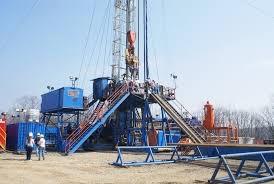 Consolidation is the second strategy implemented by shale-oil producers. Efficiencies of scale and marketing strength have accrued from acquisitions and mergers. It is estimated that in the U.S. the top-five egg producers represent 38 percent and collectively the top-ten contribute to 55 percent of production. In contrast the top-5 broiler producers represent 78 percent of production. There is clearly potential for a more profitable egg industry characterized by fewer and more efficient producers. Consolidation especially when coupled with reduced production would serve as an efficient counter to the pressures imposed by chain store buyers using the benchmark price discovery system and major processors to hold down unit price. Consolidation is the second strategy implemented by shale-oil producers. Efficiencies of scale and marketing strength have accrued from acquisitions and mergers. It is estimated that in the U.S. the top-five egg producers represent 38 percent and collectively the top-ten contribute to 55 percent of production. In contrast the top-5 broiler producers represent 78 percent of production. There is clearly potential for a more profitable egg industry characterized by fewer and more efficient producers. Consolidation especially when coupled with reduced production would serve as an efficient counter to the pressures imposed by chain store buyers using the benchmark price discovery system and major processors to hold down unit price.
An important lesson from the petroleum industry is that within limits, higher prices do not materially reduce demand. Admittedly petroleum fuels are not readily replaceable by available alternative sources including renewables, coal and nuclear power. To a considerable extent eggs are in a similar position. This was evidenced in in 1984 during the HPAI outbreak in Pennsylvania affecting the Northeast markets, again in 1995 during the Midwest epornitic and the episode of panic buying in March and April of 2020 following the emergence of COVID. Experience showed that consumers were willing to pay higher prices for shell eggs and egg products as do all consumers in Europe and the U.K.
Conversion from battery cages to alternative housing of hens provides an opportunity to reduce national flock size and achieve consolidation and greater efficiency. Small operations with 50,000 to 250,000 hens currently use battery cages to supply packers. A high proportion of these farms producing generic eggs will cease production as they will be unable to raise capital to install aviaries or floor-housing. Some large producers will continue to close obsolete operations, a trend which became evident this year. From the perspective of banks and other financial institutions, the situation of many small-scale producers of generic eggs reflects the experience of a hypothetical producer who won a state lottery. When asked what he would do with the money he indicated that he would just go on producing eggs until it was all spent! Many operations will be forced to sell their facilities if buyers are available or close as they exhaust working capital.
Producers, many of whom are third-generation egg farmers, live in eternal confidence that "the market will pick up before before Christmas". While this is historically true, the amplitude of the rise is progressively less pronounced each year and higher feed, labor, fuel and packaging cost are eroding profits.
The industry cannot look to some phase-shifting event or trend to radically increase demand. The American Egg Board mounts campaigns to promote consumption by both the consumer and institutional segments, but this is reflected in only incremental increases. Demand has increased annually by 2.4 eggs per capita on average since 2017. The valuable efforts and programs implemented by the AEB cost $25 million each year representing 0.3 cents per dozen as a check-off fee. It may well be that without promotion by the AEB sales would have declined over the past ten years. Certainly the AEB managed to dispel the cholesterol myth and arrest the decline in consumption during the 1980's.
The U.S. egg industry must come to terms with reality. There are too many hens and too many producers allowing chain buyers to manipulate the benchmark wholesale price to depress unit revenue. Those who lead the industry should independently be considering strategies that involve flock reduction, industry consolidation and greater pricing power.

|
Ransomware Attacks Must be Suppressed
|
07/08/2021 |
|
It is apparent that hundreds of companies and institutions in the U.S. have paid ransom to cyber criminals to restore IT operation and to avoid disclosure of sensitive documents. The latest incidents affecting Colonial Pipeline, JBS USA and the recent revelations concerning the clients of IT-service provider Kaseya confirm the need for immediate and concerted action.

The question arises as to whether governments should ban the payment of ransom as it is felt this encourages and emboldens criminals. The fact that in recent weeks, JBS USA paid $11 million in ransom following Colonial Pipeline paying $4.4 million with accompanying disruption in services has renewed debate over appropriate responses to cybercrime. When faced with a demand, most companies perform a benefit-to-cost analysis to determine whether the ransom is less than the cost of disruption of ongoing activities and restoring function with backups and intensive IT efforts.
From recent history it appears that businesses and institutions cannot expect much technical help from the U.S. Government. Following disclosure of the Solar Winds breach, it became apparent that multiple government agencies were penetrated by agencies of the Russian Federation. The topic of institutionalized cyberespionage was the subject of discussion at the recent summit between the Presidents of the U.S. and Russian Federation. Cybercriminals cannot operate in the Russian Federation without the tacit approval by their government. Accordingly many of the gangs have moved to former Soviet Republics from where they  function with impunity. function with impunity.
Appropriate responses to recent attacks should be considered, including:-
- Strengthening defense against cyberattack- This topic was the subject of a presidential Executive Order requiring upgrading of cybersecurity.
- Making it illegal for insurance companies to reimburse clients for payment of ransom, as in the U.K.
- Disqualifying ransom payments as a permitted tax deduction
- International action and agreement on stricter regulation of cybercurrency
- Obligatory reporting of cyberattacks whether or not ransom is paid. This will enable government agencies to analyze attacks and develop appropriate countermeasures. In the case of the Colonial Pipeline event the FBI recovered the Bitcoin tendered, suggesting that this capability serves as a deterrent to cyber criminals. This however requires the complete cooperation of victim companies.
- Companies should upgrade IT resources and make use of specialist consultants and service providers capable of strengthening defenses and developing backup systems.
Using available data it is evident that there are fewer but more sophisticated gangs such as REvil operating as cybercriminals. Their focus has shifted from numerous small concerns and institutions with relatively low payment to large companies with multi-million dollar demands. As large companies have strengthened their defenses, it is evident that the emphasis will revert to smaller entities and institutions with lower levels of protection as evidenced from the Kaseya breaches.
Consumers and also cybersecurity professionals consider that restrictions on payment of ransom should be enforced. This approach is totally justified until an event occurs that demands an immediate response. Although cyber criminals appear to be “honest” in their follow-up on release of documentation following payment of ransom, a recent survey noted that 80 percent of businesses that paid a ransom suffered a subsequent attack.
The U.S. agricultural industry along with energy, pharmaceuticals, travel, banking and finance are now looking to the Federal government for assistance both in the form of technical support, policy and legislation in addition to aggressive diplomacy to resolve the issue of ransomware attacks. Perhaps it is time to exercise some of the presumed cyberoffensive capability of the U.S. to back up statements issued by the Administration. Shutting down the oil industry of the Russian Federation for a few days will certainly encourage cooperation in eliminating the endemic criminal element in Russia and neighboring kleptocracies.

|
E.U. to Introduce Environmental Impact Labeling- Implications for the U.S.?
|
06/30/2021 |
|
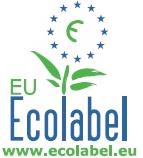 The European Commission Food Innovation Initiative, EIT Food, has developed a Foundation Earth labeling scheme for foods and beverages. The E.U. funded a consortium comprising the Leuven University of Belgium and the AZTI Research Agency, an entity of the Government of Spain to develop the system. This will be evaluated with funding from Nestle, a multinational food manufacturer, in parallel with a labeling scheme devised by Mondra, a consulting group. A number of E.U. and U.K. food manufacturers have agreed to test the Foundation Earth program with front-of-pack labels. The European Commission Food Innovation Initiative, EIT Food, has developed a Foundation Earth labeling scheme for foods and beverages. The E.U. funded a consortium comprising the Leuven University of Belgium and the AZTI Research Agency, an entity of the Government of Spain to develop the system. This will be evaluated with funding from Nestle, a multinational food manufacturer, in parallel with a labeling scheme devised by Mondra, a consulting group. A number of E.U. and U.K. food manufacturers have agreed to test the Foundation Earth program with front-of-pack labels.
The system of labeling will assess the environmental impact of products based on greenhouse gas emission with an emphasis on carbon dioxide weighted at 49 percent; water usage, 17 percent; water pollution 17 percent and loss in biodiversity, 17 percent.
It is evident that considerable consumer education will be required before general adoption of the system. It will be important to establish consistency in both the standards applied and the label presentation. It is possible that consumers in the E.U. and U.K. will respond appropriately to the labels with a proviso that there is an understanding of how the imprinted grades and colors are assigned.
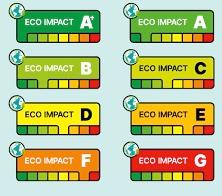 It is inevitable that environmental labeling will be applied to food products in the U.S. It is hoped that an industry association such as FMI or a consortium of trade groups will take the initiative so that a single standard and uniform labeling will be developed. If the program is based on scientific principles and managed fairly the approach to environmental labeling may be valid and useful. Endorsement by USDA or EPA would be an added advantage. It is inevitable that environmental labeling will be applied to food products in the U.S. It is hoped that an industry association such as FMI or a consortium of trade groups will take the initiative so that a single standard and uniform labeling will be developed. If the program is based on scientific principles and managed fairly the approach to environmental labeling may be valid and useful. Endorsement by USDA or EPA would be an added advantage.
There is concern that multiple labeling options may emerge in the U.S., as with welfare, creating confusion among consumers as to the value of the label. Determining the environmental impact of a product can depend on the level of production. Comparing a comprehensive evaluation of all the ingredients incorporated in a food product compared to final manufacturing including packaging may create widely different results and scores assigned.
Environmental labeling to achieve the objective of providing consumers with information on which to base purchase decisions must be fair and reflect the impact of the food product on the environment. Based on the past practice, even if a standard system is developed, there will always be a company or group with questionable ethics trying to game the system, hence the need for some form of USDA oversight or regulation by a frequently advocated new comprehensive food agency.

|
Outside Access for Hens Resurfaces as a Requirement for Organic Certification
|
06/23/2021 |
|
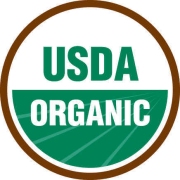 To quote Yogi Berra the situation regarding housing of hens producing under the USDA Certified Organic seal is "deja vu all over again". In the declining hours of the Obama Administration, Secretary of Agriculture, Tom Vilsack issued regulations requiring hens to have minimal outside access to comply with USDA organic status for their eggs. At issue was the use of sun porches by producers who erected in-line multi-house aviary units with between 0.5 and 1.5 million hens. The 2017 regulation would have disqualified these operations to produce Certified Organic eggs. Incoming Secretary of Agriculture, Dr. Sonny Perdue rescinded the Rule and allowed the status quo for organic housing. To quote Yogi Berra the situation regarding housing of hens producing under the USDA Certified Organic seal is "deja vu all over again". In the declining hours of the Obama Administration, Secretary of Agriculture, Tom Vilsack issued regulations requiring hens to have minimal outside access to comply with USDA organic status for their eggs. At issue was the use of sun porches by producers who erected in-line multi-house aviary units with between 0.5 and 1.5 million hens. The 2017 regulation would have disqualified these operations to produce Certified Organic eggs. Incoming Secretary of Agriculture, Dr. Sonny Perdue rescinded the Rule and allowed the status quo for organic housing.
Secretary Tom Vilsack now in his second term has announced that the 2017 Organic Livestock and Poultry Practices Final Rule would be revoked as it was not authorized under the Organic Foods Production Act. Speaking to a partisan audience at the Organic Trade Association on June 16th, Vilsack confirmed that he has instructed the National Organic Program to begin a rule-making process to address the standards for housing and to disallow the use of porches as outdoor space for organic production.
 Vilsack also committed to reestablish the position of a USDA Organic Policy Advisor in the USDA-AMS and would increase compliance enforcement and expand the "number and diversity of those who will be involved in inspections and certifications". Vilsack considers that the issue of outside access for hens is critical to the public perception of the integrity of the Certified Organic Program stating, "we recognize the importance of it, we recognize the value-added opportunities that it presents, and we think it is an important part of the industry that will help us to a much better, climate-friendly agriculture". Vilsack also committed to reestablish the position of a USDA Organic Policy Advisor in the USDA-AMS and would increase compliance enforcement and expand the "number and diversity of those who will be involved in inspections and certifications". Vilsack considers that the issue of outside access for hens is critical to the public perception of the integrity of the Certified Organic Program stating, "we recognize the importance of it, we recognize the value-added opportunities that it presents, and we think it is an important part of the industry that will help us to a much better, climate-friendly agriculture".
For the record, the number of hens in the USDA Certified Organic Program during the first quarter of 2020 averaged 15.7 million. A year later, this number had increased by 10.8 percent but in recent months has demonstrated only minimal growth. Comparing Nielsen sales statistics with the population of certified organic hens it is apparent that with 7.8 percent of the 225 million hens producing shell eggs, sales of Certified Organic eggs represented only 3.4 percent of the potential production through the first quarter of 2021. It is evident that approximately half of the certified organic eggs produced at a substantial incremental cost over generic eggs are in fact downgraded to the cage-free category. This may be attributed to shelf price since for the week ending June 24th, USDA certified organic brown large was advertised at $3.99 per dozen compared to cage-free brown at $2.55 per dozen and generic white from cages at $1.17 per dozen.
It is estimated that more than half of the organic eggs currently sold are produced from in-line aviary operations. Disqualifying these facilities would immediately create a shortage of certified organic eggs raising prices to over $6 per dozen for eggs from operations with outside access further depressing demand. Family-owned and corporate operations using aviaries with sun porches would market their eggs in a new category yet to be named, emphasizing "GMO and antibiotic free" These attributes have been shown to be more important than the USDA Organic seal with respect to consumer awareness and demand. This new category would be supported by the major retail chains that would make shelf space available for a rapid-moving $4 per dozen product. The new category backed by promotion, an industry certification and third-party audit program would compete with and dominate the cage-free market to the detriment of traditional compliant USDA Certified Organic eggs.
 Organic eggs will still be produced by contractors using floor housing with outside access. These eggs will be less sustainable than eggs from aviaries with sun porches, requiring more labor input and feed. The possibility of egg-transmitted bacterial diseases and the presence of helminth parasites in eggs will increase as a consequence of outside access and will be reflected in questionable food safety, inconsistent quality, higher price and enigmatically inferior flock welfare. Organic eggs will still be produced by contractors using floor housing with outside access. These eggs will be less sustainable than eggs from aviaries with sun porches, requiring more labor input and feed. The possibility of egg-transmitted bacterial diseases and the presence of helminth parasites in eggs will increase as a consequence of outside access and will be reflected in questionable food safety, inconsistent quality, higher price and enigmatically inferior flock welfare.
The move to disqualify in-line aviary housing using sun porches appears inevitable. The Organic Trade Association has already filed a motion before U.S. District Judge Paul Friedman to revoke the 2017 USDA regulations. If Judge Friedman grants the petition, the USDA will be able to redraft regulation mandating outside access that was proposed prior to 2017 and presented for public comment and subsequent implementation.
The Organic Trade Association has the support of the Cornucopia Institute that is on record as stating "the vast majority of organic chicken and eggs for sale in the United States come from industrial-scale producers. In contrast ethical producers focus on legitimate outdoor access and high welfare for their birds". There is nothing “unethical” about aviary production using sun porches nor is there any nutritional or welfare benefit from outside access. Both systems have advantages and drawbacks but both can be offered with their respective shelf prices to allow choice by informed consumers.

|
Independent Public Health Agency Proposed
|
06/10/2021 |
|
In an incisive article in the New England Journal of Medicine, (NEJM)* legal scholars affiliated with the Harvard Law School and the Boston University School of Law proposed the establishment of an independent agency to coordinate all aspects of public health including planning responses to disease outbreaks, acquisition and management of resources and communication.
|
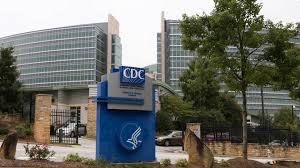
CDC Campus |
The article cites what in retrospect, appear to be politically inspired decisions that may have exacerbated the impact of COVID during 2020. The authors maintain that interference in the tenure of senior officials in agencies including the Biomedical Advanced Research and Development Authority, the Food and Drug Administration and the Centers for Disease Control and Prevention. Disruption could have been prevented had there been a strong independent agency operating with a charter similar to the Federal Reserve, independent of political pressure. The authors maintain that the Federal Reserve was able to resist political pressure during the past four years since it was structured and chartered as an independent agency.
|
|
In the article the authors attribute the high incidence rate and fatalities associated with COVID to defects in the structure of core public health institutions that were subject to political interference and lack of coordination. Despite the accusatorial tone of the NEJM article, it must be recognized that the previous Administration embarked on Operation Warp Speed that resulted in three vaccines that received emergency use authorization at the end of 2010. This made possible mass vaccination during the first four months of 2021 under the present Administration. The successful immunization of approximately 150 million U.S. residents by June 2021 was only possible due to the foresight, Federal investment and activities of scientists in existing government agencies including the NIH, cooperating with their counterparts in industry.
|
|
The authors emphasized that leaders of independent agencies including the proposed public health entity should be immune from removal on political grounds. Generally independent agencies have five commissioners but in the case of the Public Health Agency nominees should possess appropriate qualifications and experience and be subject to Senate confirmation. It is however recognized that agencies can be hamstrung by deliberate failure by an administration to appoint commissioners thereby depriving the entity of a quorum or alternatively the agency can be “eviscerated” by eliminating or severely restricting the budget.
The authors of the article cite legal experts who maintain that the Constitution foresaw the creation of long-standing stable institutions serving public interest beyond politics. Although a legal case can be made to establish an independent public health agency, is believed that this would be exceptionally counterproductive. Currently the principal entities involved in public health include the Department of Health and Human Resources and their subsidiary agencies the NIH and CDC, the Department of Defense and the Department of Homeland Security. The article did not take into account the resources of states that operate in conjunction with federal agencies or academia and industry that have established relationships that would be seriously impacted if not destroyed by creating a new unified and independent health agency.
|
|
Our best action going forward is to encourage collaboration among existing agencies, develop a greater degree of bipartisan cooperation in Congress, especially with respect to public health. We should rely on the electoral process to ensure a rational Administration working for the benefit of its citizens as a co-equal branch with the Judiciary and Legislature.
*Salwa,T. and Robertson, C. (2021) Designing an Independent Public Health Agency. NEJM 384:1684-1687
|

NIH Campus |

|
Job Creation and Employment as the U.S. Recovers From COVID Restrictions
|
06/08/2021 |
|
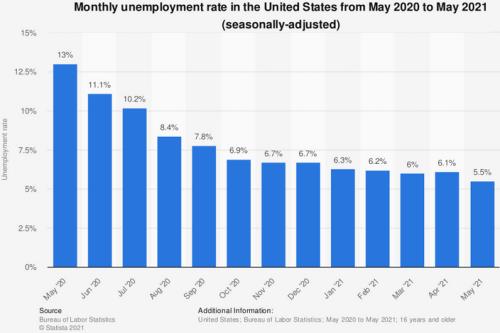 On Thursday June 3rd the Department of Labor reported initial jobless claims amounting to 385,000 for the week ending May 29th, lower than the previous week but below the consensus estimate of 400,000. This contrasts to the week of March 14th 2020 when 256,000 initial jobless claims were filed. With the advent of COVID the number spiked to three million during the following week and claims peaked at 6.1 million in early April 2020. Job creation during April 2021 was disappointing with only 266,000 new positions reported. Effective June 1st 2021, 15.4 million U.S. workers were receiving benefits, approximately half of the number recorded during mid-March 2020. On Thursday June 3rd the Department of Labor reported initial jobless claims amounting to 385,000 for the week ending May 29th, lower than the previous week but below the consensus estimate of 400,000. This contrasts to the week of March 14th 2020 when 256,000 initial jobless claims were filed. With the advent of COVID the number spiked to three million during the following week and claims peaked at 6.1 million in early April 2020. Job creation during April 2021 was disappointing with only 266,000 new positions reported. Effective June 1st 2021, 15.4 million U.S. workers were receiving benefits, approximately half of the number recorded during mid-March 2020.
The Friday, June 4th data on job creation indicated that 559,000 new positions were created in May 2021 and that the unemployment rate fell to 5.8 percent. Although the U.S. economy has come a long way from the corresponding period in 2020, new job creation in May was lower than an expected value of 671,000. The current enigma is that employers in service industries including recreation, restaurants and health care are currently paying premiums and bonuses to recruit workers while unemployment remains at a disproportionately high level.
 Commentator Michael Smerconish in his Saturday, June 4th CNN program questioned whether the American work ethic is dying. Currently unemployment benefits with added Federal assistance of $300 amount to $618 per week. this represents slightly more than $15 per hour for a 40-hour work week. Accordingly, it is claimed that many workers have no incentive to return to their previous employment even if it exists. Acting on this presumption, sixteen states have decided to cut the $300 weekly benefit at the end of June in an attempt to restore the workforce. This change will impact close to 600,000 who are currently unemployed and drawing benefits. To date thirty-five states have imposed a requirement to actively seek work to receive unemployment benefits. Commentator Michael Smerconish in his Saturday, June 4th CNN program questioned whether the American work ethic is dying. Currently unemployment benefits with added Federal assistance of $300 amount to $618 per week. this represents slightly more than $15 per hour for a 40-hour work week. Accordingly, it is claimed that many workers have no incentive to return to their previous employment even if it exists. Acting on this presumption, sixteen states have decided to cut the $300 weekly benefit at the end of June in an attempt to restore the workforce. This change will impact close to 600,000 who are currently unemployed and drawing benefits. To date thirty-five states have imposed a requirement to actively seek work to receive unemployment benefits.
There are in fact factors other than unemployment insurance payments that are contributing to the disinclination of workers to return to their previous or alternative positions. In many cases, closed schools present a problem of childcare with the burden falling heavily on women. There is still a fear of COVID especially in minority groups that have found difficulty in receiving a vaccine. In the absence of summer school programs and required remedial education that should be scheduled this summer, many workers will be unable to return to the workforce as a result of family obligations. Employers may well consider providing supplementary pay to compensate for childcare as an alternative to increasing wage rates. In the case of large plants and factories, on-site childcare may well be a future trend representing a tangible benefit for employees and engendering company loyalty. There may be many other benefits and in-kind inducements for workers including commuting allowances, providing van transport and predictable work schedules. Employers previously operating with a plentiful availability of workers have been reluctant to provide adequate sick, vacation and parental leave.
Prior to the advent of COVID there was considerable national debate over a $15 per hour minimum wage rate. The advent of COVID essentially rendered the question of raising the federal minimum wage moot given that the laws of supply and demand established realistic wage rates in diverse areas of the nation.
COVID clearly demonstrated an inequality among our workforce. College-educated white-collar workers were able in large measure to work from home and to keep their jobs. The trend towards work-from-home will probably intensify after relaxation of COVID restrictions.
Working from home allows for inexpensive childcare and home schooling to be integrated with job requirements. Studies have shown that employers actually benefit in terms of hours devoted to work through remote employment in addition to saving on office space and overhead. In contrast, after the advent of COVID, hourly-paid workers were either required to report to their place of employment or lose their jobs. Generally hourly-paid workers were concentrated in healthcare and other essential services including agriculture, hospitality, restaurants and the processing, distribution and sales of food.
In coming months, as our economy returns to pre-COVID levels, we will be faced with retraining redundant workers, providing new wage and benefit packages and modifying employment policies that encourage loyalty and commitment.

|
Plastics Manufacturers Establish Fund to Promote Recycling
|
05/29/2021 |
|
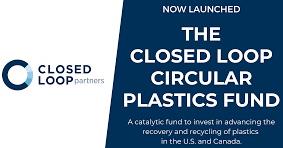 Major plastics manufacturers and materials science companies have jointly established the Closed Loop Circular Plastics Fund to promote recovery and recycling of plastics in the U.S. and Canada. Initial participants include Dow, LyondellBasell and Nova Chemicals. Major plastics manufacturers and materials science companies have jointly established the Closed Loop Circular Plastics Fund to promote recovery and recycling of plastics in the U.S. and Canada. Initial participants include Dow, LyondellBasell and Nova Chemicals.
The Closed Loop Circular Plastics Fund, initially receiving $25 million, will address three areas to promote practical recycling:-
- Intensified collection of polyethylene and polypropylene requiring advanced collection systems, transportation and logistics
- Upgrading recycling systems to aggregate, classify and sort waste plastics for remanufacturing food and medical packaging
- Investing in plants and equipment to manufacture finished products using recycled content
This initiative is regarded as a sincere attempt to address the problem of accumulated plastic waste. It is estimated that less than ten percent of all plastic ever produced has been recycled. The remainder lies in our oceans and in dumps and landfills especially in under-developed nations.
 Previous programs to ‘recycle’ plastics were essentially an exercise in public relations. The classification of plastics by class was created to assuage the concerns of consumers through the illusion that plastic items embossed with the three-arrow triangle and placed in recycling bins would be processed into new containers and packaging. The reality is that current ‘recycling” is only a collection activity and that municipalities have a limited and shrinking market for a few types of plastic waste. This is due to the failure of manufacturers of plastics to develop recycling technology and to invest in plants capable of processing waste into reusable material. Previous programs to ‘recycle’ plastics were essentially an exercise in public relations. The classification of plastics by class was created to assuage the concerns of consumers through the illusion that plastic items embossed with the three-arrow triangle and placed in recycling bins would be processed into new containers and packaging. The reality is that current ‘recycling” is only a collection activity and that municipalities have a limited and shrinking market for a few types of plastic waste. This is due to the failure of manufacturers of plastics to develop recycling technology and to invest in plants capable of processing waste into reusable material.
In recent years concern over the detrimental effects of plastic waste on terrestrial and marine environments has resulted in a backlash against plastics. This is evidenced by legislation restricting the distribution of single-use plastics, commitments by food manufacturers to phase out non-biodegradable packaging and negative publicity on social media. Concern expressed by governments, enterprises and consumers has stimulated belated action by the manufacturers of plastics to develop meaningful programs of recycling. It is to the credit of these major petrochemical companies that they recognize that they cannot continue to erect manufacturing plants for plastics without the need for recycling of their products. To date there has been every incentive to continue to manufacture virgin plastics and no financial benefit from recycling. With appropriate demand for a closed loop system from governments, customers and consumers we can expect progress in meaningful recycling. Not only must we collect and process what we use but we must address the disposal of accumulated plastic worldwide.

|
Rabobank Executive Comments on Future Trends in Agriculture
|
05/24/2021 |
|
In a recent interview with Jim Sutter of the U.S. Soybean Export Council, Berry Marttin, a member of the Rabobank, Executive Board since 2009, shared his views on current and future trends in agriculture. Marttin was born in Brazil of Dutch immigrant parents and has worked for Rabobank in many locations in Asia, the 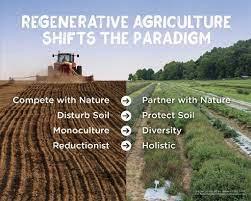 Americas and the E.U. rising to his current position. He has earned degrees in Brazil and Canada and has extensive experience on four continents. He is multilingual and to quote The Economist speaks ‘Davos’ as a complement to his native Portuguese and Dutch in addition to English and other languages. Americas and the E.U. rising to his current position. He has earned degrees in Brazil and Canada and has extensive experience on four continents. He is multilingual and to quote The Economist speaks ‘Davos’ as a complement to his native Portuguese and Dutch in addition to English and other languages.
|

Berry Marttin |
|
One of the important take-home messages from the discussion with Jim Sutter is that consumers are becoming more concerned as to how their food is produced. Sustainability is an attribute of growing importance that encompasses activities to maintain productivity and concurrently reverse environmental degradation. Marttin observes that intensive agriculture has successfully applied technology to enhance productivity over past decades. In the future, independent farmers and agribusiness companies will have to balance output with sustainability. As a farmer and businessman, Marttin appreciates shifts in consumer motivation that are influenced by social media and the involvement of both the public sector and private investors.
 Agriculture can make a major impact on sustainability by sequestering carbon dioxide. Currently with depleted soils, farmers rely on fertilizers derived from fossil sources to obtain acceptable yields requiring application of herbicides and pesticides. Achieving the genetic potential of GM seeds adds to the cost of production and creates a cycle of chemical dependence and net release of carbon dioxide. Agriculture can make a major impact on sustainability by sequestering carbon dioxide. Currently with depleted soils, farmers rely on fertilizers derived from fossil sources to obtain acceptable yields requiring application of herbicides and pesticides. Achieving the genetic potential of GM seeds adds to the cost of production and creates a cycle of chemical dependence and net release of carbon dioxide.
Progressive farmers are now recognizing the need to employ regenerative agricultural practices to enrich soil, enhance yields over the long term and reduce carbon dioxide release. It is estimated that ten percent of greenhouse gas emissions in 2020 were derived from agriculture. It is possible to sequester from 0.2 to 3 metric tons of carbon dioxide per acre using a combination of no-till cultivation and planting a cover crop following harvest, a practice termed ‘regenerative agriculture’. Since 2017, five percent of farmers have adopted cover crops that may include triticale, wheat, cereal rye, white clover, annual rye grass, buckwheat, millet or sorghum. Selection of a cover crop depends on season, climatic conditions, soil type and the potential for grazing or cropping. Some operations in the U.S. have used regenerative systems since 2017. It has been shown that almost all farmers applying soil-health management practices, achieve higher net income than their peers using conventional cultivation.
Francis Childs a proponent of regenerative agriculture in Western Iowa harvested a record 440 bushels of corn per acre in 2020. Other farmers are following his lead and will profit from increased yield, lower application levels of fertilizer and the possibility of selling carbon credits. A progressive farmer n Iowa estimates an annual potential income of $150,000 from participation in a program managed by Locus Agricultural Solutions. This company undertakes the certification of carbon sequestration and markets credits to carbon emitters including IBM, Marathon Oil, Microsoft, JP Morgan Chase and others. A commercial rate for soil sequestration is now in the region of $20 per metric ton of carbon dioxide equivalent.
The Administration has incorporated carbon dioxide sequestration in soil as a part of the U.S. contribution to reducing global warming. Senator Debbie Stabenow (D-MI) Chair of the Senate Committee on Agriculture, Nutrition and Forestry and Senator Mike Brown (R-IN) have introduced the Growing Climates Solutions Act, designated S.1251, to establish a standardized private carbon credit market. Concurrently USDA will use the Conservation Reserve Program to reduce carbon dioxide emission. It is estimated that this program offsets the release of the equivalent of 12 million metric tons of carbon dioxide each year. By expanding the program an additional three million metric tons could be retained in soil. The USDA is also creating a carbon bank by drawing on the $30 billion administered by the Commodity Credit Corporation.
It is essential that standards should be developed to ensure that regenerative farming practices are beneficial and to quantify the amount of carbon dioxide sequestered. A carbon credit program organized by the Chicago Climate Exchange that operated for seven years in the 2000s foundered due to a lack of credible standards. Rabobank has established a carbon bank as a pilot scheme that clearly defines procedures and measurement to be applied to sequestration. With the prestige of Rabobank, investors and contributors will be assured of value from their contributions that will be carried over to their products and company image.
Recognizing a market opportunity, Pete and Gerry's Organics LLC introduced the Consider Pastures™ brand as a specialty egg. Contract suppliers will be required to follow regenerative practices as advocated by the Savory Institute under their Land-to-Market program. Consider Pastures™ eggs are derived from free-range flocks and the combination of USDA certified organic status, access to pasture and regenerative certification. Initially Consider Pastures™ are marketed to a demanding but limited demographic at a shelf price of $6.50 in New England states.
Marttin considers that multinational retailers and food manufacturers will progressively require higher levels of sustainability in their supply chains. As corn and soybeans are derived from certified programs incorporating cover crops and no-till cultivation, egg producers may well derive a valuable premium from sourcing feed ingredients conforming to accepted standards of regenerative cultivation. This approach if it receives consumer acceptance may result in horizontal integration between agricultural enterprises and existing specialty egg producers.
|

|
Consumer Preferences in a Post-COVID Environment
|
05/17/2021 |
|
During the year of COVID restrictions, consumers developed new patterns of eating. Dining out was sacrificed in favor of home-cooked meals. Casual-dining restaurants and QSRs were able to function only with drive-through, pickup and delivery. According to the National Restaurant Association 110,000 locations closed during the pandemic resulting in a loss of revenue of $240 billion. In contrast, supermarkets and meal-kit suppliers benefited from home consumption with significant improvements in both top and bottom-line results in 2020 and Q1 of 2021.
 The question now facing the food and restaurant sectors is how consumers will respond to the lifting of restrictions. Acosta, a market research company studied consumer intentions in March with the findings published in COVID Dining Journey: Eating at Home and Away from Home. During the pandemic, 65 percent of shoppers cooked at home with family meals including breakfast, lunch and dinner. Pre-COVID, 26 percent of adults consumed lunch at home but during 2020 this increased to 40 percent. The differential was even greater for children who were not at school during the COVID shutdown with more than half consuming lunch at home. Pre-COVID, 18 percent of families reported eating dinner together compared to 31 percent since the outbreak of COVID. Before the pandemic, 18 percent of families surveyed consumed dinner at home every day compared to 31 percent of families during the outbreak. The question now facing the food and restaurant sectors is how consumers will respond to the lifting of restrictions. Acosta, a market research company studied consumer intentions in March with the findings published in COVID Dining Journey: Eating at Home and Away from Home. During the pandemic, 65 percent of shoppers cooked at home with family meals including breakfast, lunch and dinner. Pre-COVID, 26 percent of adults consumed lunch at home but during 2020 this increased to 40 percent. The differential was even greater for children who were not at school during the COVID shutdown with more than half consuming lunch at home. Pre-COVID, 18 percent of families reported eating dinner together compared to 31 percent since the outbreak of COVID. Before the pandemic, 18 percent of families surveyed consumed dinner at home every day compared to 31 percent of families during the outbreak.
It is apparent that habits developed during the COVID period will persist at least through 2021. Seventy-two percent of responding families will continue to eat together and 68 percent will cook meals at home. More than three quarters will continue purchasing food at the same rate as during COVID restrictions. The proportion of respondents intending to decrease or cease eating together as a family or cooking meals at home is in the high single digits. In contrast approximately 20 percent intend increasing the frequency of family meals and continuing home cooking with the remainder continuing at the COVID rate.
 Despite the increasing proportion of vaccinated individuals in our community, there is a reluctance to dine inside at a restaurant. Only a quarter of respondents plan to eat at a restaurant within a week and 14 percent within a month. The same proportion will probably wait six months with 16 percent uncertain as to their future patronage of restaurants. Respondents expressed the view that preparing meals and eating at home represented a challenge based on variety and planning of meals. Time spent in preparation and cleaning was acceptable during COVID shutdown, but as people return to work, school and university, time will become a limiting factor in the tradeoff among home cooking, eating out and purchasing pre-prepared food. Despite the increasing proportion of vaccinated individuals in our community, there is a reluctance to dine inside at a restaurant. Only a quarter of respondents plan to eat at a restaurant within a week and 14 percent within a month. The same proportion will probably wait six months with 16 percent uncertain as to their future patronage of restaurants. Respondents expressed the view that preparing meals and eating at home represented a challenge based on variety and planning of meals. Time spent in preparation and cleaning was acceptable during COVID shutdown, but as people return to work, school and university, time will become a limiting factor in the tradeoff among home cooking, eating out and purchasing pre-prepared food.
It is evident that the factors that maintained the balance between home cooking and dining will probably be restored to post-COVID levels with clear distinctions among age demographics.
The takeaways from the Acosta survey suggests:-
- Supermarket sales will be maintained at a high level
- The range of prepared foods at supermarkets including roasted chicken, salads, and pizzas will be in demand
- Restoration of restaurant patronage will probably be slow, with lower-cost informal dining and high-end formal dining showing the highest rates of recovery
- Providers of meal kits will maintain the higher levels of demand experienced during the COVID shutdown, but will be reliant on relatively low cost, variety and innovation
- Drive-through lanes at QSRs will supplant in-store eating
- Home meals may include a combination of store or QSR-purchased center-of-plate items with home cooked sides
It is obvious that restaurants, supermarkets and QSRs will vie for consumers as the Nation transitions from COVID. Sectors that can identify, interpret and respond to trends in their areas of operation will acquire competitive advantages to be reflected in increased sales and hence profit.

|
Overcoming COVID Vaccine Hesitancy
|
05/10/2021 |
|
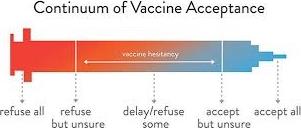 During the first week in May, it was estimated that 34 percent of the U.S. population have been fully vaccinated against COVID. Approximately 150 million have received their first dose and 70 percent over the age of 70 are fully vaccinated. The Administration has set a goal of vaccinating 70 percent of the U.S. population by July 4th since in the region of 75-80 percent of our population should be immune to the predominant strain and variants of SARS-CoV-2 virus. Experience in South Africa, India and the E.U. has demonstrated that a population with a high level of susceptibility and with an increasing incidence rate will result in the evolution of mutants. These may be more infectious and have greater pathogenicity than the original January 2020 strain thereby delaying effective control of the pandemic. During the first week in May, it was estimated that 34 percent of the U.S. population have been fully vaccinated against COVID. Approximately 150 million have received their first dose and 70 percent over the age of 70 are fully vaccinated. The Administration has set a goal of vaccinating 70 percent of the U.S. population by July 4th since in the region of 75-80 percent of our population should be immune to the predominant strain and variants of SARS-CoV-2 virus. Experience in South Africa, India and the E.U. has demonstrated that a population with a high level of susceptibility and with an increasing incidence rate will result in the evolution of mutants. These may be more infectious and have greater pathogenicity than the original January 2020 strain thereby delaying effective control of the pandemic.
A number of surveys have been conducted to determine the acceptability of the two mRNA vaccines (Pfizer and Moderna) and the adenovirus-vectored single-dose J&J product. Among all three major ethnic groups, 13 to16 percent have stated that they absolutely are unwilling to receive the vaccine. Approximately 25 percent of our population is following a wait-and-see approach and about 15 percent, especially those under 30 years of age will receive a vaccine ‘when convenient’. It is apparent that a relatively high proportion the black population is hesitant to receive any of the vaccines. Rural residents are more likely to be opposed to vaccination, as are male members of the Republican Party. The FDA has approved vaccination of children 12 years of age and up, but it is evident that approximately a third of parents are reluctant to have their children vaccinated over the short term.
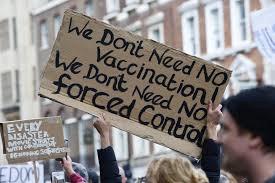 Vaccine reluctance is evident in the declining number of vaccinations on a daily basis. At the peak, three million doses were administered in a single day, mainly through mass vaccination sites. The Administration is now relying on approximately 40,000 pharmacies and primary care facilities including rural clinics and mobile vaccine units. Given the number of those categorically opposed to receiving vaccine, children under the age of 12 and individuals who are ineligible for vaccination based on health considerations, it appears doubtful that herd immunity will be achieved by the end of summer unless those not wishing to be vaccinated can be convinced to transition to the recipient column. Vaccine reluctance is evident in the declining number of vaccinations on a daily basis. At the peak, three million doses were administered in a single day, mainly through mass vaccination sites. The Administration is now relying on approximately 40,000 pharmacies and primary care facilities including rural clinics and mobile vaccine units. Given the number of those categorically opposed to receiving vaccine, children under the age of 12 and individuals who are ineligible for vaccination based on health considerations, it appears doubtful that herd immunity will be achieved by the end of summer unless those not wishing to be vaccinated can be convinced to transition to the recipient column.
In a recent interview, the Surgeon General, Dr. Vivek Murthy provided a perspective on how the Administration will convince the hesitant to receive a vaccine. He believes that it is important to de-politicize vaccination. To this end, it would be extremely beneficial for President Biden to credit former President Trump and his Administration with the foresight to establish Operation Warp Speed. This made vaccine available at the end of December 2020 and contributed to an adequate supply by the second quarter of 2021. Concurrently it would be helpful for former President Trump to encourage the hesitant, especially among his supporters to receive a vaccine as a patriotic and public-spirited gesture to expedite control of infection. A joint statement appears unlikely, but separate messages of encouragement in the form of alternating sequential public service announcements on mainstream and social media would be extremely helpful in defusing opposition to vaccination.
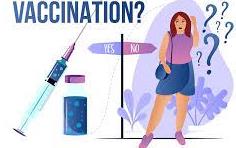 It is pointed out that 90 percent of the Congressional Physicians’ Caucus has been vaccinated along with the former President and First Lady and members of both Administrations. All living former Presidents received their vaccines in public and have consistently promoted acceptance. It is pointed out that 90 percent of the Congressional Physicians’ Caucus has been vaccinated along with the former President and First Lady and members of both Administrations. All living former Presidents received their vaccines in public and have consistently promoted acceptance.
It is generally considered that establishing trust in the three vaccines that have received emergency use authorization are all safe and effective. Previously EGG-NEWS listed reasons advanced for COVID vaccine hesitancy with appropriate counter arguments based on established and incontrovertible scientific knowledge
It is important to recognize that although we have made progress in reducing the impact of COVID over thirteen months, on May 9th there were 41,000 new cases diagnosed although this figure was a 30 percent reduction over April 25th, two weeks previously. On May 9th one million COVID tests were administered with the national positive rate below five percent although regional ‘hot-spots’ persist. Notwithstanding progress in control there are still 39,000 in hospital being treated for acute COVID and 667 people died on May 9th adding to the total of 581,000 confirmed deaths from COVID, although it is recognized that this figure is an underestimate.
It is to the credit of poultry processors and red meat packers that vaccination campaigns have been completed in plants resulting in high levels of acceptance.
Despite relaxation of masking and other social modalities, COVID must be regarded as a serious disease given the number of cases and fatalities and long-term effects. The disease will not simply disappear and with the emergence of variants COVID will persist with continuing impacts on our way of life and economy.
Vaccination not only effectively protects the recipient, it reduces the possibility of spreading infection to family members and the community. The virus does not respect location, political or religious persuasion or ethnicity. We have a collective responsibility to be vaccinated and in the intermediate term to practice common sense measures to prevent dissemination of virus. Adherence to the recommendations of the Centers for Disease Control and Prevention and following the advice of responsible physicians will hasten the end of this disease that represents the worst public health crisis in 100 years.

|
European Commission Reviewing Policies on GM Crops and the Precautionary Principle
|
05/06/2021 |
|
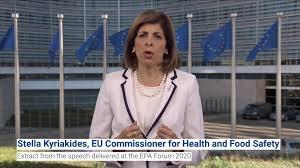 Faced with increasing costs of ingredients and food, the European Commission is reassessing a long-standing approach disfavoring biotechnology and genetically modified (GM) crops. A recent study conducted by the European Union disclosed that restrictive legislation effectively preventing the use of GM crops should be reevaluated. In a radical departure from two-decade opposition, the Commission has concluded that anti-GM legislation passed in 2001 has been without benefit. Faced with increasing costs of ingredients and food, the European Commission is reassessing a long-standing approach disfavoring biotechnology and genetically modified (GM) crops. A recent study conducted by the European Union disclosed that restrictive legislation effectively preventing the use of GM crops should be reevaluated. In a radical departure from two-decade opposition, the Commission has concluded that anti-GM legislation passed in 2001 has been without benefit.
Sustainability is now the catch word among strategists and decision makers and has taken precedence over unsubstantiated philosophical opposition to GM. The EU Commissioner for Health, Stella Kyriakides, recently promoted GM as a means to achieve greater sustainability in agriculture. The Commissioner did however note that consumer safety and the environment are important considerations in amending existing l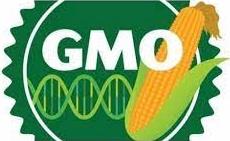 egislation. Supporters of GM technology can point to over two decades of improved crop yields, reduced water use, beneficial traits, insect and pest resistance all achieved without any compromise in food safety. egislation. Supporters of GM technology can point to over two decades of improved crop yields, reduced water use, beneficial traits, insect and pest resistance all achieved without any compromise in food safety.
The volte face by the European Commission has initiated an outpouring of condemnation by organizations such as Friends of the Earth and kindred organizations that have opposed GM by publicizing false claims and coercing legislators. A spokesperson for the organization noted that permitting GM crops in Europe would contravene the “precautionary principle”. This ill defined concept has been used to block adoption of GM technology despite successful adoption in the U.S. for corn, soybeans and also for cotton. Numerous other GM crops have been developed such as rice and bananas with high levels of Vitamin A that would benefit consumers in developing nations. The precautionary principle has provided administrators with cover to justify inaction over the safety of GM crops.
 We cannot expect that the EU will adopt GM technology over the short term. The acknowledgement that GM contributes to sustainability and will be instrumental in feeding burgeoning populations is a first step in a process of reversing decades of misinformation, suspicion and unjustified concern. The immediate challenge will be how to assure consumers that GM products are safe and that advantages accrue to society from planting GM crops. We must progress from the stage of major biotech companies telling consumers “our products are safe, so no objections, just eat up” to demonstrating benefits to all stakeholders. Regrettably opponents of GM have had two decades to poison the well. It may emerge that the convergence of a new respect for scientists and their credibility over control of COVID and the realization that global warming is accelerating will allow for a reevaluation of GM technology at both consumer and political levels. We cannot expect that the EU will adopt GM technology over the short term. The acknowledgement that GM contributes to sustainability and will be instrumental in feeding burgeoning populations is a first step in a process of reversing decades of misinformation, suspicion and unjustified concern. The immediate challenge will be how to assure consumers that GM products are safe and that advantages accrue to society from planting GM crops. We must progress from the stage of major biotech companies telling consumers “our products are safe, so no objections, just eat up” to demonstrating benefits to all stakeholders. Regrettably opponents of GM have had two decades to poison the well. It may emerge that the convergence of a new respect for scientists and their credibility over control of COVID and the realization that global warming is accelerating will allow for a reevaluation of GM technology at both consumer and political levels.

|
Walmart Introduces Pollinator Requirement
|
04/17/2021 |
|
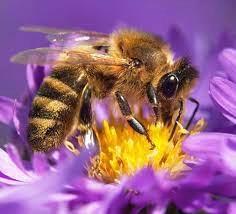 As part of the increasingly evident environmental and social activism demonstrated by Walmart, the Company will be introducing a requirement that suppliers support honeybee and other insect populations responsible for pollination. As part of the increasingly evident environmental and social activism demonstrated by Walmart, the Company will be introducing a requirement that suppliers support honeybee and other insect populations responsible for pollination.
The intent is laudable and Walmart as a major customer of agricultural producers has an obligation to encourage suppliers to make changes that benefit the environment and ultimately humanity. Walmart is asking suppliers of fresh produce and floral items to apply integrated pest management programs by 2025. Changes will include elimination of chlorpyrifos, (that in any event will be justifiably be banned in the near future in the U.S.) and to cease using specific neonicotinoid pesticides. Compliance will be subject to audit and annual progress reports. To increase the population of pollinators, Walmart is urging suppliers to restore or establish pollinator habitats by 2025, extending over at least three percent of their owned or operated land area.
 Walmart has undertaken to avoid selling invasive plant species and to cooperate with local organizations to establish pollinator habitats. The future Walmart headquarters will incorporate plant-pollinator areas including meadows planted near lakes to provide an environment suitable for insects and birds. Walmart intends to combine sustainability and environmental advocacy by recommending that pollinator habitats be established around arrays of solar panels, installations representing yet another step towards sustainability. Walmart recently provided funding to the Cornell University Laboratory of Ornithology and the Cornell Atkinson’s Center for Sustainability to encourage training of citizen scientists to monitor the population of pollinators and to provide assistance in planning farms and future landscape practitioners. Walmart has undertaken to avoid selling invasive plant species and to cooperate with local organizations to establish pollinator habitats. The future Walmart headquarters will incorporate plant-pollinator areas including meadows planted near lakes to provide an environment suitable for insects and birds. Walmart intends to combine sustainability and environmental advocacy by recommending that pollinator habitats be established around arrays of solar panels, installations representing yet another step towards sustainability. Walmart recently provided funding to the Cornell University Laboratory of Ornithology and the Cornell Atkinson’s Center for Sustainability to encourage training of citizen scientists to monitor the population of pollinators and to provide assistance in planning farms and future landscape practitioners.
Once upon a time the industry simply sold eggs to supermarket chains at the best price that could be negotiated with concern only for quality, safety and adherence to federal, state and local regulations. Now capital investment, time and resources are progressively required to comply with welfare, environmental and sustainability requirements. These enhancements ultimately burnish the reputation and image of the chain. Accordingly producers should be fairly compensated in price for their additional costs. If Walmart wishes to adopt the policies of an up-market chain in the E.U. then they deserve the support of their suppliers but at a price commensurate with the incremental expenditure involved. Walmart cannot build a reputation as a progressive, environmentally and socially conscious company, satisfying the altruistic inclinations of the Family-controlled Board while implementing a “how-low-can-you-go below the price discovery quotation’ approach to pricing. Chains such as Marks and Spencers in the U.K. and Albert Hein in the Netherlands impose high standards on their suppliers but pay reasonable compensation for compliance. The emerging problem with Walmart is that they aspire to a Whole Foods image but are principally selling at low prices to a demographic that is more concered with their budgets than concepts such as welfare, sustainability and the environment. Walmart cannot realistically expect to enhance their image and increase EPS on margins supported by the efforts and expenditure of their suppliers.

|
HSUS Reviving Coercion Tactics
|
04/17/2021 |
|
According to recent press reports and a media release by the Humane Society of the United States (HSUS), the organization is attempting to coerce QSRs and casual dining restaurants into renewing welfare commitments made two years ago. It is possible that the HSUS and other activist organizations are now realizing that there is considerable demand for reasonably-priced eggs from caged flocks and that the goal of completely eliminating cages by 2025 is unrealistic. Industry observers estimate that 30 to 40 percent of all U.S. hens will still be in cages in 2026. Complete conversion and supply from cage free systemswill only occur in states that have mandated cage-free production and sale of eggs derived from production systems corresponding to state standards as mandated by their legislatures or by ballot.
|

Consumers deserve choice |
|
Following the cascade of commitments from food manufacturers, restaurants, and institutions in 2019 and 2020, cage-free sourcing was anticipated by 2025 but with the proviso that individual egg suppliers would make progress in implementing the transition to cage-free housing. The response by producers has been to satisfy demand but to adopt a wait-and-see response before committing capital to conversion.
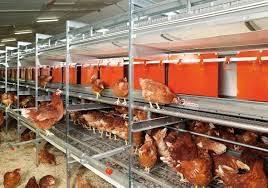 The HSUS is now monitoring the sourcing of major QSRs and restaurant chains. As with their 2020 playbook they will be attempting to shame companies that they consider to have reneged on their commitments. It appears that IHOP, a chain under the Dine Brands ownership, regarded as a soft target, is in the crosshairs. HSUS is now attempting to force the chain to comply with both cage-free requirements and also to exclude suppliers of pork that house sows in gestation crates. The HSUS is now monitoring the sourcing of major QSRs and restaurant chains. As with their 2020 playbook they will be attempting to shame companies that they consider to have reneged on their commitments. It appears that IHOP, a chain under the Dine Brands ownership, regarded as a soft target, is in the crosshairs. HSUS is now attempting to force the chain to comply with both cage-free requirements and also to exclude suppliers of pork that house sows in gestation crates.
We have seen this movie before. HSUS will pick the most vulnerable companies and will apply intense pressure through social media to elicit a re-commitment. This will then be used to pressure the next in line until all companies re-confirm their promises to source only cage free eggs or pork from sows held in group housing.
It is evident that there will be a clear difference in the response between the retail food segment and the food service and restaurant sectors. Members of the FMI are intensely sensitive to margins and obviously need to stock a range of eggs reflecting prices that correspond to production systems. Customers are offered choice in accordance to their willingnes to pay for intangible attributes such as welfare and sustainability. In contrast, restaurants can afford to pay more for cage-free eggs since it is relatively easier to add the incremental cost to the price of a menu item. Also in the food service sector, the difference in price between cage-free and conventional eggs is less significant than it is to supermarkets. The administrator of a dining facility at Harvard University would be more concerned over student acceptance and avoiding protests than the owner of a tienda or grocery in a low-income area.
Consumers in California pay what EGG-NEWS refers to as a “Pacelle Tax” that was added to food budgets following the implementation of Proposition #2 that was enacted in 2008. The “Pacelle Tax” represents the differential in price between cage-free eggs as mandated in California and the price paid for conventional eggs in states without mandates.
EGG-NEWS has consistently advocated for consumer choice. It is iniquitous for any group or organization to promote regulations or laws based on sentiment that detract from the availability or add to the cost of food without an understanding of the issues and consequences of ballot initiatives. We do not need HSUS and their ilk deciding how we spend our food budgets.
|

|
Oregon Legislature to Review Ban on Mink Farming
|
04/11/2021 |
|
 State Senate bill 832, introduced by Senator Floyd Prozanski (D-Eugene), would phase out mink farming in Oregon within a year of enactment with compensation to the five remaining mink pelt producers. State Senate bill 832, introduced by Senator Floyd Prozanski (D-Eugene), would phase out mink farming in Oregon within a year of enactment with compensation to the five remaining mink pelt producers.
This is the first bill aimed directly at mink production in the U.S. and follows action taken by Denmark and the Netherlands. Following the emergence of SARS-CoV-2 in mink in Denmark, intensive surveillance was initiated revealing the presence of a variant subsequently isolated from human contacts on farms and in distant communities.
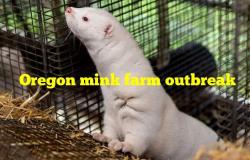 The Netherlands, previously the World’s fourth largest mink producer, has banned all fur farming bringing forward the date to cease production. This action was taken on the basis of a high infection rate among mink farmers and their families in the nation. The Netherlands, previously the World’s fourth largest mink producer, has banned all fur farming bringing forward the date to cease production. This action was taken on the basis of a high infection rate among mink farmers and their families in the nation.
Although extensive outbreaks have occurred among mink farms in Utah, Wisconsin, Oregon, and possibly other states, there has been no federal intervention and state departments of agriculture have tended to protect their mink producers minimizing risks of COVID to the human population and concealing epidemiologic data. EGG-NEWS has previously documented the spurious and misleading statements by spokespersons representing the Oregon Department of Agriculture with regard to incidence, location and significance of COVID in mink.
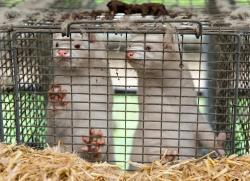 The hearing on Oregon Senate SB832 involved testimony by Dr. James Keen. He was previously a USDA veterinary epidemiologist with extensive experience dealing with epidemics of animal disease including foot-and-mouth outbreaks in the UK in 2001 and African swine fever in Asia. Since his retirement from the USDA Dr. Keen has been an outspoken opponent of intensive livestock production and is allied with activist organizations including serving as a whistle blower exposing irregularities at the USDA U.S. Meat Animal Research Center (MARC) in Nebraska in 2015. The hearing on Oregon Senate SB832 involved testimony by Dr. James Keen. He was previously a USDA veterinary epidemiologist with extensive experience dealing with epidemics of animal disease including foot-and-mouth outbreaks in the UK in 2001 and African swine fever in Asia. Since his retirement from the USDA Dr. Keen has been an outspoken opponent of intensive livestock production and is allied with activist organizations including serving as a whistle blower exposing irregularities at the USDA U.S. Meat Animal Research Center (MARC) in Nebraska in 2015.
Some of the testimony Dr. Keen presented is valid in that mink are the only farmed animals that are extremely susceptible to COVID and are capable of infecting humans. In addition there is evidence that escape of mink from farms could result in exposure of wildlife to COVID with the potential of creating a reservoir of infection. That mink are susceptible to COVID is understandable in that a closely related species, the ferret, is used as a research model for a range of human infections including coronaviruses and orthomyxoviruses.
Dr. Keen is however stretching scientific reality by implicating mink farming as a possible link between bat coronaviruses in China and the emergence of COVID.
This commentator does however agree with Dr. Keen that a vaccine against COVID-19 for mink, even if approved by USDA on the basis of efficacy and safety, will not ameliorate risk. Widespread application of a specific vaccine in a highly susceptible species and may complicate the issue of mink-related COVID by exerting evolutionary pressure on the virus resulting in the possible emergence of variants.
If mink were a critical food producing animal or had some purpose other than contributing to an outmoded and now discredited fashion, there may be some justification for perpetuating production. The risk of COVID and the obvious opposition to confinement of a sentient mammal suggests that mink farming in industrialized nations such as the U.S and in the E.U. is an anachronism. It is time that legislators recognize that the interests of the population at large far exceeds the personal benefits enjoyed by the few remaining mink farmers in a limited number of states. The U.S. should follow the example of European nations and eliminate this unnecessary agricultural activity. Unique among farmed animals mink are involved in a disease that has plunged the U.S. into the worst public health crisis of the past century and has directly and indirectly cost trillions of dollars. Mink production is not even a rounding factor in U.S. agriculture and probably contributes less to the economy than puppy mills.

|
Federal Government Must Accelerate Hiring of Scientists
|
04/03/2021 |
|
 At a March 17th hearing before a subcommittee of the House Committee on Science, Space, and Technology, Dr. Candice Wright, Acting Director for Science Technology Assessment with the U.S. Government Accountability Office, reviewed the need to accelerate hiring of scientists and technical specialists in their respective fields. Loss of critical personnel was evident in many government departments including the Environmental Protection Agency and the Department of Energy during the previous Administration. The situation with regard to the USDA Economic Research Service and the National Institute of Food and Agriculture has been extensively reviewed since these vital agencies were subjected to forced attrition. In addition, many scientists in governmnt service are approaching retirement age. At a March 17th hearing before a subcommittee of the House Committee on Science, Space, and Technology, Dr. Candice Wright, Acting Director for Science Technology Assessment with the U.S. Government Accountability Office, reviewed the need to accelerate hiring of scientists and technical specialists in their respective fields. Loss of critical personnel was evident in many government departments including the Environmental Protection Agency and the Department of Energy during the previous Administration. The situation with regard to the USDA Economic Research Service and the National Institute of Food and Agriculture has been extensively reviewed since these vital agencies were subjected to forced attrition. In addition, many scientists in governmnt service are approaching retirement age.
|

ERS Staff Protest relocation from DC to Missouri |
|
Dr. Wright emphasized the need to recruit from a wider base of universities, including minority-serving institutions and to deemphasize contract positions.
Dr. Andrew Rosenberg of the Union of Concerned Scientists informed the House Committee that agencies place bureaucratic obstacles in the path of prospective employees with delays of up to three months before making formal job offers during which time the best prospective candidates find alternative employment in industry and academia.
If the U.S. is to maintain a position of dominance in agricultural technology science must drive policy. Administrators of agencies should be willing to empower ther research teams and encourasge achievement free of political restraints. Human capital is difficult to quantify but must be nutured in an environment that stimulates creativity
|

|
Activists Pressuring for Cockerel-Embryo Sexing Technology
|
03/23/2021 |
|
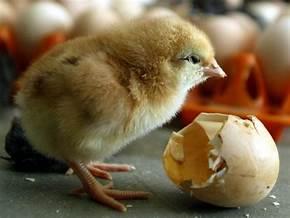 Jonathan Moens writing in Undark criticizes the industry for tolerating the practice of euthanizing cockerels. He implies that there is a lack of concern over the issue. He falsely maintains that there are available procedures to remove eggs incubating male embryos from setters within a week of initiating incubation. Jonathan Moens writing in Undark criticizes the industry for tolerating the practice of euthanizing cockerels. He implies that there is a lack of concern over the issue. He falsely maintains that there are available procedures to remove eggs incubating male embryos from setters within a week of initiating incubation.
Despite funding, there does not appear to be a suitable technology in the near future. There are many contenders for grants and prizes, applying a variety of procedures but as yet there is no practical, cost-effective method to differentiate between male and female embryos suitable for commercial application.
Moens is incorrect in his implication that all hatcheries marketing pullet chicks are using maceration to dispose of conscious cockerels. It is understood that many facilities are now using carbon dioxide to painlessly kill cockerel chicks. If there are hatcheries still macerating conscious cockerels then they need to be aware of the damage that they are causing to the egg industry, based on negative consumer perceptions.
The U.S. industry has not been helped by the less than constructive comments attributed to Michael Sencer of Hidden Valley Ranch. Sencer is quoted in the Undark article that the industry could “save billions of dollars with the right technology, its mind boggling” The “billions saved” has no substantiation. Simply criticizing the UEP for supporting a number of groups that claimed they could develop technology “and that nothing has happened” is counterproductive. In point of fact the UEP has attempted to advance embryo-sexing technology. When the UEP raised the issue within the industry over a decade ago it was presumed that with initial progress embryo-sexing would be a commercial reality by 2020. It is not to the discredit of UEP that this outcome has yet to occur.
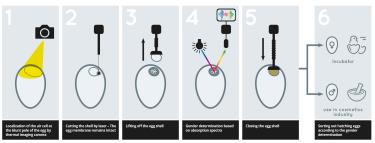 It would appear that COVID has been advanced as an excuse for lack of progress, a contention which is soundly rejected. If there has been any error it has been in advancing funds to too many university research groups and commercial entities without adequate proof of concept. As with many endeavors offering a potentially high return, embryo-sexing attracts both sincere scientists with acceptable concepts, those motivated by self- delusion and inevitably outright charlatans. It would appear that COVID has been advanced as an excuse for lack of progress, a contention which is soundly rejected. If there has been any error it has been in advancing funds to too many university research groups and commercial entities without adequate proof of concept. As with many endeavors offering a potentially high return, embryo-sexing attracts both sincere scientists with acceptable concepts, those motivated by self- delusion and inevitably outright charlatans.
Moens is incorrect in his assertion that technology exists that would allow the industry to adopt embryo-sexing at this time. Effectively there is very little use of hormone assay of allantoic fluid that was in fact developed in the U.S. in the 1990’s. Intended for gender separation of broilers the automated prototype system was abandoned as being impractical and expensive. Criticism of the UEP is unfounded since the hormone assay approach is inconsistent with the basic statement that the U.S. egg production industry is prepared to adopt any technology that is both “commercially available” and “economically feasible”.
Research on embryo-sexing will continue for many years before a practical solution is developed, if at all. In the interim, the most distasteful aspect of disposing of cockerels could be dispelled by universal application of modified atmosphere killing before maceration.

|
What COVID-19 Has Taught Us about the Next Pandemic?
|
03/21/2021 |
|
Dr. Francis S. Collins, Director of the National Institutes of Health published an editorial in the March 12th edition of Science. In his article, Dr. Collins commented on the lessons learned from COVID-19 during the past year. His Institute was instrumental in the development of vaccines through applied research into basic and applied molecular biology and also establishing protocols and supervising field trials of vaccines and therapeutics.
|
|
Progress in research dealing with the pathogenesis of viruses, diagnostic procedures, therapy and vaccine development have all contributed to progress in suppressing COVID-19, regarded as the most serious public health emergency in a century and responsible for disruption of our economy. Dr. Collins correctly emphasized that the development of mRna vaccines of which the Pfizer and Moderna are examples, was based on research on basic molecular biology conducted over the past 25 years. He stressed the importance of cooperation among scientists, Federal agencies and private enterprise. The collective and synergistic efforts among scientists and bioengineers compressed five years of effort into less than six months to develop vaccines that were tested against natural exposure. Dr. Collins notes that the U.S. gained valuable experience in recruiting subjects for trials through the Community Engagement Alliance (CEAL). Scientists at NIH consider that inclusion of diverse ethnic groups in trials is critical both for evaluation and subsequent acceptance of vaccines.
|

Dr Anthony Fauci Director NIH-NIAID |

NIH Bethesda Campus |
The NIH has been instrumental in developing and evaluating antiviral drugs such as remdesivir, various immunosuppressive drugs including dexamethasone, monoclonal antibodies and anticoagulants. In the U.S. the Therapeutic Interventions and Vaccines (ACTIV) initiative coordinated the activities of Federal agencies, academia and at least twenty pharmaceutical companies under the leadership of the Foundation for the NIH. Protocols to evaluate therapeutics were developed by ACTIV and have resulted in commercialization of a number of products that are now in use to treat patients following FDA Emergency Use Authorization. Dr. Collins deprecated the inadequately designed trials many of which were intended to justify the use of quick-fix solutions for COVID-19 including hydroxychloroquine, that became a political issue both in the U.S. and Brazil for evident reasons.
|
|
As an alternative to attempting to repurpose existing drugs, Dr. Collins suggested the need to develop antiviral drugs against a wide range of potential pathogens so that Phase 2/3 trials can be initiated quickly following the emergence of a novel infection.
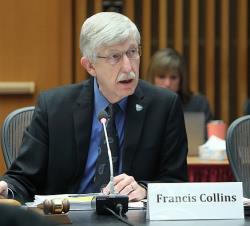 NIH was at the forefront of developing COVID test systems. Although PCR assay is highly sensitive and specific, delays between collecting a specimen and receiving results invalidate the test and quarantine approach to containing an infection, especially during an early stage of any outbreak. Recognizing the need for rapid testing, the NIH Rapid Acceleration of Diagnostics (RADx) program was developed to encourage commercial companies to present proposals. From 700 applications, 137 were evaluated and received funding. To date there are 28 diagnostic tests that are collectively used on 2.5 million patients daily. Dr. Collins effectively channeled the resources of the NIH to become an effective scientific venture capital endeavor. NIH was at the forefront of developing COVID test systems. Although PCR assay is highly sensitive and specific, delays between collecting a specimen and receiving results invalidate the test and quarantine approach to containing an infection, especially during an early stage of any outbreak. Recognizing the need for rapid testing, the NIH Rapid Acceleration of Diagnostics (RADx) program was developed to encourage commercial companies to present proposals. From 700 applications, 137 were evaluated and received funding. To date there are 28 diagnostic tests that are collectively used on 2.5 million patients daily. Dr. Collins effectively channeled the resources of the NIH to become an effective scientific venture capital endeavor.
Implicit in the Collins editorial is the need for international cooperation to acquire and share knowledge and experience from scientific groups in other nations faced with similar or slightly different circumstances. In this respect the World Health Organization that was defunded by the previous Administration played an important role in addressing an understanding of COVID through the Solidarity Trial. Considerable practical knowledge was learned from the U.K. Randomized Evaluation of COVID trial conducted in the U.K.
We are indeed fortunate that we have an organization such as the National Institution of Health funded with world-class scientists and led by administrators with vision, courage and perception who are capable of marshalling resources to resolve both emerging public health emergencies and ongoing erosive conditions.
|

|
COVID Stimulus Act Now a Reality
|
03/17/2021 |
|
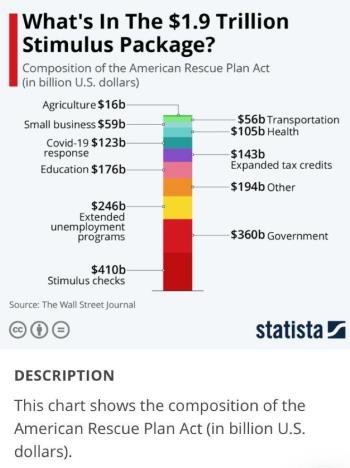 Following the March 11th signing of the COVID-19 Stimulus Act, the Administration will embark on an ambitious program to restore the economy. The legislation is apparently supported by 70 percent of citizens surveyed although the vote in both the House and Senate was based on party affiliation. Passage was facilitated by deletion of a provision mandating an increase in the Federal minimum wage to $15 per hour. The principal thrust of the Act is to expedite recovery from COVID, regarded as the major obstacle to economic recovery. Following the March 11th signing of the COVID-19 Stimulus Act, the Administration will embark on an ambitious program to restore the economy. The legislation is apparently supported by 70 percent of citizens surveyed although the vote in both the House and Senate was based on party affiliation. Passage was facilitated by deletion of a provision mandating an increase in the Federal minimum wage to $15 per hour. The principal thrust of the Act is to expedite recovery from COVID, regarded as the major obstacle to economic recovery.
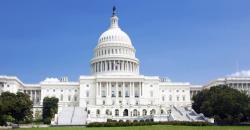 The direct COVID-related provisions include $160 billion for vaccination and testing programs; $10 billion for purchases under the Defense Production Act for PPE, vaccines, and tests for COVID; $200 million for the Department of Labor to carry out worker protection activities; $170 billion for schools to reopen and additional health coverage and leave benefits for people affected by COVID. The direct COVID-related provisions include $160 billion for vaccination and testing programs; $10 billion for purchases under the Defense Production Act for PPE, vaccines, and tests for COVID; $200 million for the Department of Labor to carry out worker protection activities; $170 billion for schools to reopen and additional health coverage and leave benefits for people affected by COVID.
The Act directs payments of $1,400 per eligible person to compensate for losses sustained as a result of COVID and to stimulate the economy. For those who are unemployed, mainly as a result of COVID, unemployment insurance including a $300 per week supplement would be paid through September 6th extending the House version that expired on March 14th. Concurrently, tax credits would be extended to low and middle-income families and child tax credits would be expanded for 2020. The USDA will receive $4 billion for commodity purchases and distribution of food. The USDA has unveiled a series of measures to enhance SNAP and EBT benefits.
State and local governments have suffered as a result of lower tax revenue and accordingly the Stimulus Act assigns $360 billion to allow continuation of services critical to maintaining an orderly society. Homelessness has increased twofold during the COVID pandemic and a moratorium on evictions has prevented additional suffering, but the stimulus bill includes $45 billion for rental assistance. To assist in an economic recovery, $25 billion will be set aside for small restaurants, $23 billion for airlines and airports, and $23 billion for small businesses under the Economic Injury Disaster Loans and Paycheck Protection program.
The measures contained in the Stimulus Act will only have a beneficial effect if funds are distributed equitably with appropriate control to minimize inevitable fraud and wastage.
 Some economists, in their inimitable way, have taken opposing views on the value of the stimulus plan. Cautious commentators including Dr. Larry Summers maintain that injecting $1.9 trillion into the economy will result in inflation. Others consider that without adequate support, recovery will be delayed, reminiscent of the Great Depression of the 1930s. The intent of the federal government is to apply all possible measures to reduce the impact of COVID on the population and hence the economy. The stimulus package can be regarded either as a giant giveaway that will burden succeeding generations with debt or represents a bold initiative to reestablish the U.S. economy. Some economists, in their inimitable way, have taken opposing views on the value of the stimulus plan. Cautious commentators including Dr. Larry Summers maintain that injecting $1.9 trillion into the economy will result in inflation. Others consider that without adequate support, recovery will be delayed, reminiscent of the Great Depression of the 1930s. The intent of the federal government is to apply all possible measures to reduce the impact of COVID on the population and hence the economy. The stimulus package can be regarded either as a giant giveaway that will burden succeeding generations with debt or represents a bold initiative to reestablish the U.S. economy.
Expenditure under the Act will however be useless without effectively suppressing COVID through vaccination and commonsense precautions. Accepting the safety and effectiveness of the three approved COVID vaccines and complementary measures to prevent infection, including masking and social distancing should be regarded as patriotic endeavors directed to recovery. Ending COVID is essential to achieving a low single-digit growth in GDP in 2021. Without appropriate public support, the $1.9 trillion will simply be a stopgap measure and will not have the intended restorative effect on our economy.

|
ESG is in Our Future
|
02/22/2021 |
|
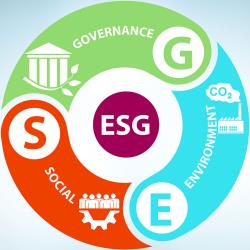 The concept of applying Environmental, Social and Governance (ESG) in corporate culture and execution will progressively drive the relationship between producers and customers over the next ten years. An interview with Kathleen McLaughlin, Executive Vice President and Chief Sustainability Officer for Walmart provides a road map of what lies ahead. The concept of applying Environmental, Social and Governance (ESG) in corporate culture and execution will progressively drive the relationship between producers and customers over the next ten years. An interview with Kathleen McLaughlin, Executive Vice President and Chief Sustainability Officer for Walmart provides a road map of what lies ahead.
|
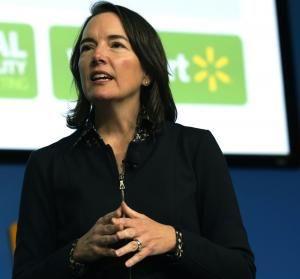
Kathleen McLaughlin. EVP Walmart |
|
Walmart as with many multinationals and U.S.-focused companies has developed their "ESG investment theses". It is now held that not only does a company have to provide a satisfactory return on investment but it should do so sustainably with concern for social issues and demonstrate strong ethical values. Based on trends in the E.U., investors recognize that the long-term growth and continuity of dividends will be dependent on adherence to the principles of ESG especially as governments are demanding compliance in environmental and worker issues. McLaughlin notes that "customers, investors, employees, community leaders all expect businesses to be part of the solution - to bring their particular capabilities to bear on the social and environmental issues most relevant to them and their stakeholders".
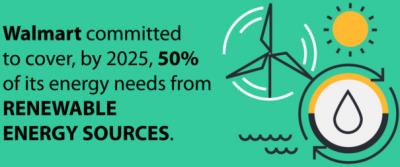 Walmart is committed to reduce emissions through a program of investment, supplier engagement and innovation in product supply chains. This approach implies that success achieved by Walmart will be linked to the achievements of suppliers. Accordingly, greater pressure will be placed on broiler and turkey producers to conform to the principles of ESG. Walmart is committed to reduce emissions through a program of investment, supplier engagement and innovation in product supply chains. This approach implies that success achieved by Walmart will be linked to the achievements of suppliers. Accordingly, greater pressure will be placed on broiler and turkey producers to conform to the principles of ESG.
Walmart intends to apply a science-based approach to environmental stewardship and will set an example that will of necessity be followed by suppliers. Conservation of energy, improved efficiency throughout the chain of production from brooding, grow-out, processing and delivery will all be scrutinized. The use of renewable power will be first encouraged and then mandated requiring the use of wind generators and solar panels. There will be significant changes in packaging, emphasizing conservation and recycling capability. Greater cooperation between supplier and customer will be evident with increasing consultation and participation in joint projects to conserve resources. Companies applying ESG will have to develop quantitative goals and measure progress. A review of corporate reports issued by EU-based companies demonstrates the extent to which ESG data is presented along with traditional financial performance.
The social component of ESG presumes development of human capital. Producers will have to demonstrate equity in recruitment, employment, promotion, education and health services. Walmart has established programs to create opportunities for employees and will expect similar initiatives from their suppliers. Philanthropy will also be regarded as a positive expression of social responsibility and will become more structured, assuming a greater role in interaction with communities where companies operate.
Walmart established the Center for Racial Equity in 2020 with a commitment of $100 million through 2025. Large customers practicing ESG will expect comparable efforts by their suppliers and will provide guidance on relevant activities contributing to social equity.
Based on the inevitability of compliance with customer ESG requirements, the following areas should be considered by suppliers who will compete over the next decade:-
- Improved management of land holdings to promote sustainability
- Reduction in energy demands and converting from power generated by fossil fuels
- Enhanced feed efficiency through precision nutrition, more advanced equipment and management
- Conservation of water and greater attention to processing and recycling of animal waste and plant effluent
- Programs to advance the knowledge and capabilities of employees
- Evaluation of wage rates, fringe benefits, health, worker accommodation and social support systems
- Rationalization of product delivery to reduce energy consumption
- Concentration on recycling of water, packaging and other resources
ESG is not a fad or a concept that can be faked. ESG will determine the relationship between suppliers and customers and will represent a new competitive component in the chain extending from producer to consumer. Companies that fail to recognize the importance of ESG will be at a disadvantage with respect to their more progressive peers. Producers are advised to become acquainted with the Sustainability Accounting Standards Board, the Task Force on Climate-Related Financial Disclosures and the intended requirements of their major customers in order to plan compliance. Failure to recognize the importance of ESG and to implement programs will represent a major strategic deficiency, threatening the growth of an enterprise, brand image and long-term survival.
|

|
The Future of Trade Shows
|
02/21/2021 |
|
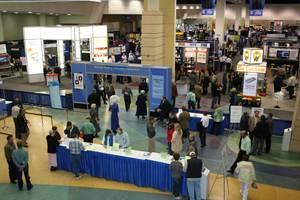 The 2021 IPPE was cancelled during the third quarter of 2020 and most recently the Midwest Poultry Federation Expo, to have been held in May 2021 was changed to a virtual format. The prestigious Alltech ONE Ideas Conference scheduled for late May is planned to take place in virtual format. On March 1st the National Restaurant Association cancelled the May trade show that attracts as many as 50,000 industry professionals to the McCormick Place Convention Center in Chicago. The World Pork Expo cancelled in 2020 is however scheduled for June 2021 and attendance figures should indicate how willing this segment of the livestock industry is to attend a large event. The 2021 IPPE was cancelled during the third quarter of 2020 and most recently the Midwest Poultry Federation Expo, to have been held in May 2021 was changed to a virtual format. The prestigious Alltech ONE Ideas Conference scheduled for late May is planned to take place in virtual format. On March 1st the National Restaurant Association cancelled the May trade show that attracts as many as 50,000 industry professionals to the McCormick Place Convention Center in Chicago. The World Pork Expo cancelled in 2020 is however scheduled for June 2021 and attendance figures should indicate how willing this segment of the livestock industry is to attend a large event.
While some international poultry events organized by VIV will take place in 2021, there is considerable question as to when COVID restrictions will be lifted in the U.S. to allow in-person attendance at future scientific and trade meetings. The roll-out of COVID vaccination has been relatively slow and prospective attendees at trade shows do not currently fall into designated priority categories and will probably only be immunized by early summer.
Organizers of national and regional meetings have substituted virtual platforms to enable registrants to participate in industry and committee meetings, attend scientific sessions and to review products with suppliers. It is questioned whether these expedients are as effective as face-to-face contact and whether the exchange of knowledge and information is in reality limited by lack of personal interaction.
Undoubtedly, the cost of virtual attendance is far lower than would be incurred by travel, hotel accommodation and subsistence. The cost to exhibitors is proportionally far higher than for poultry producers as companies generally bring most of their sales and technical representatives including international personnel to major trade exhibitions. In the case of equipment manufacturers, it is necessary to transport installations to show venues frequently at a cost far exceeding booth rental and furnishings.
 While it is evident that trade shows provide an excellent opportunity to promote new technology and introduce innovative products, decisions regarding large capital purchases such as processing equipment, egg graders, incubators and feed milling installations are no longer made during trade shows. Combining poultry, feed and meat production into an expanded IPPE represented a step towards rationalization of exhibitions reducing the cost of organizing three separate events, generally attracting common exhibitors and attendees. Although the progenitor of the IPPE was organized as a poultry trade show, restructuring the event facilitated technical and educational presentations and meetings of industry associations and specialty groups. Many exhibitors have commented that concurrent association meetings and educational programs draw prospective customers from the show floor that has expanded during the past five years creating difficulties in traversing the Georgia World Congress Center. As a benefit the Atlanta location for the IPPE is supported by ample but progressively more expensive hotel accommodation, restaurants and an efficient and convenient transport infrastructure. While it is evident that trade shows provide an excellent opportunity to promote new technology and introduce innovative products, decisions regarding large capital purchases such as processing equipment, egg graders, incubators and feed milling installations are no longer made during trade shows. Combining poultry, feed and meat production into an expanded IPPE represented a step towards rationalization of exhibitions reducing the cost of organizing three separate events, generally attracting common exhibitors and attendees. Although the progenitor of the IPPE was organized as a poultry trade show, restructuring the event facilitated technical and educational presentations and meetings of industry associations and specialty groups. Many exhibitors have commented that concurrent association meetings and educational programs draw prospective customers from the show floor that has expanded during the past five years creating difficulties in traversing the Georgia World Congress Center. As a benefit the Atlanta location for the IPPE is supported by ample but progressively more expensive hotel accommodation, restaurants and an efficient and convenient transport infrastructure.
It is hoped that the incidence rate of COVID will be sharply reduced by mid-year through a combination of vaccination and enhanced personal preventive measures. Unfortunately, vaccine hesitancy and the emergence of variants will prolong the pandemic and lead to a disinclination to attend a large gathering that may be viewed as a potential super-spreader event. Until we return to a semblance of normality, virtual programs organized by poultry associations will have to serve as a substitute for in-person meetings.
The absence of large national and regional annual meetings extending over 18 months or more will habituate regular attendees to the convenience of virtual events. Even if meetings are scheduled for late 2021 or early 2022, there will be a reluctance to attend given the risk of possible infection and the reality that internet postings and webinars have in large measure replaced in-person events.
Re-establishing conventions and meetings will require a new approach to exhibitions, education programs and meetings. With respect to the IPPE, evaluation of benefits derived by both attendees and exhibitors should be evaluated. Benefits relative to cost will be an important determinant of participation by attendees and exhibitors. The negative effect of concentration of events at the IPPE is questioned along with the late January time period that imposes the possibility of disruption and discomfort in the event of inclement weather. Regional meetings will in all probability continue to be supported given the lower cost of attendance and their narrower focus of presentations, the associations represented and more specific exhibitor participation.
It is obvious that post-COVID, exhibitions whether in the U.S. or elsewhere will not be the same as they were prior to 2020. Now is the time to reevaluate and assess what needs to be presented or exhibited at a meeting and to establish the most convenient and cost-effective format. This will require close cooperation among stakeholders and leadership by organizers to ensure commonality between the needs of participants and exhibitors and what can be achieved within a three-day period.

|
COVID Vaccination - A Multinational Imperative
|
02/19/2021 |
|
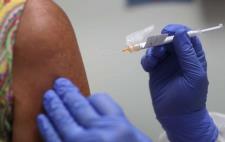 The editorial last week dealt with the need to immunize as high a proportion of the U.S. adult population as possible. Current projections, given availability of vaccines and logistic restraints to administration suggest that all who are willing to receive a vaccine will be immunized by June. The rate of administration of the two mRNA vaccines now available is increasing and despite the temporary problems caused by inclement weather, as many as two million doses can be administered per day. The editorial last week dealt with the need to immunize as high a proportion of the U.S. adult population as possible. Current projections, given availability of vaccines and logistic restraints to administration suggest that all who are willing to receive a vaccine will be immunized by June. The rate of administration of the two mRNA vaccines now available is increasing and despite the temporary problems caused by inclement weather, as many as two million doses can be administered per day.
The broader issue in relation to suppressing COVID is the need to vaccinate as many of the World’s population as can be accomplished. The longer that populations are susceptible, the faster the spread of COVID-19 and the greater is the probability that variants will emerge. Dense populations in urban areas in India, China, Brazil, South Africa, and Nigeria represent an extreme risk of encountering variants, some of which may be refractory to immunity stimulated by existing vaccines.
COVID-19 has clearly demonstrated the differences between industrialized and developing nations. Countries in the E.U. and the U.S. have implemented various levels of lockdown to reduce transmission. China imposed draconian restrictions on regions where COVID-19 emerged during the first quarter of 2020, successfully reducing spread and suppressing infection. This action, only possible in a non-democratic society, contrasted with the rapid dissemination of virus, soaring incidence rates and high mortality in many E.U. nations including in the U.S. Developing nations cannot afford to impose lockdowns, practice social distancing and implement expensive measures possible in industrialized nations. Accordingly, universal vaccination will be critical to reducing the worldwide incidence of COVID-19, the emergence of variants, and reintroduction of the infection into nations where infection will be reduced to low levels.
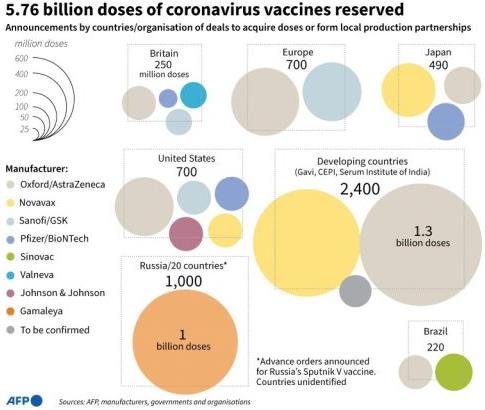 Accordingly, vaccines must be manufactured and administered at rates consistent with control. It is estimated that more than 300 COVID-19 vaccines are in various stages of development and evaluation. Eight products have received regulatory approval by the U.S., the U.K., the E.U., and by the WHO. These include the Pfizer and Moderna mRNA vaccines, the AstraZeneca adenovirus-vectored product two vector vaccines from China, the Sputnik V adenovirus-vectored vaccine from Russia, and soon to be approved Novavax, and Johnson & Johnson products in the U.S. and elsewhere. Accordingly, vaccines must be manufactured and administered at rates consistent with control. It is estimated that more than 300 COVID-19 vaccines are in various stages of development and evaluation. Eight products have received regulatory approval by the U.S., the U.K., the E.U., and by the WHO. These include the Pfizer and Moderna mRNA vaccines, the AstraZeneca adenovirus-vectored product two vector vaccines from China, the Sputnik V adenovirus-vectored vaccine from Russia, and soon to be approved Novavax, and Johnson & Johnson products in the U.S. and elsewhere.
The February 13th edition of The Economist documented the quantum of doses ordered by major nations and regions classified as to manufacturer. The analysis also calculated the number of ordered vaccines in relation to adult population. It is clear that the U.S., the E.U., U.K., Japan, Australia, and Canada have committed to purchase more vaccines than will be required by their respective populations, even assuming universal uptake and eventual administration to children. In contrast, many nations have yet to select or order vaccines and may well fail to accomplish acceptable levels of protection imposing a risk for the entire world. Nations in deficit include Iran, Iraq, Pakistan, Cambodia, Myanmar, Paraguay, Belarus, and Kazakhstan.
Covax, an international consortium working in cooperation with the WHO, intends to source and distribute vaccines. It is expected that close to two billion doses will be allocated to 90-low income nations during 2021 based on population. Covax will rely heavily on AstraZeneca, Novavax, and Johnson & Johnson vaccines that do not require a low temperature for storage and distribution.
In evaluating current orders for vaccines, the 54 richest nations with 18 percent of World adult population have ordered 40 percent of available vaccine representing 2.5 two-dose regimens per individual. Russia and China are considered to be in balance with their domestic production but many nations will be in deficit with has few as 0.2 doses per person ordered. It is apparent that China and Russia are applying ‘vaccine diplomacy’ to gain favor in nations devoid of vaccine.
Organizations such as the International Chamber of Commerce have pointed to the need to expedite worldwide vaccination. The interconnectivity of trade presumes that factories, many of which are located in high-risk nations with susceptible populations, must continue to export. The recent need to suspend automobile assembly in the U.S. as a result of a shortage of microchips illustrates the interdependence of industrialized and developing nations. International trade and shipment of manufactured goods presumes movement of commodities, products and people, adding to the risk of transmission. The fact that a U.K. variant appeared and was widely disseminated in the U.S. within a short time of being identified illustrates the futility of imposing rigid travel restrictions. Although some nations such as New Zealand have achieved success in closing borders, introduction of variant strains of SARS-Cov-2 will be inevitable in the nations of the E.U. and in the U.S., given the extent of international travel.
Vaccination is ultimately the only practical method of suppressing COVID-19 on a worldwide basis. Policies previously implemented by many nations involving travel bans from specific countries are an exercise in futility. Attempting to restrict vaccines to a specific nation is regarded as both morally indefensible and ultimately self-destructive. Residents of Kalamazoo are biologically more connected to citizens in Kabul than they would like to think. Until the world achieves acceptable herd immunity through vaccination, no nation is safe.

|
The Need to Achieve Herd Immunity
|
02/15/2021 |
|
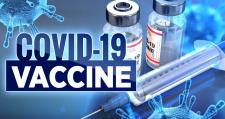 In order to resurrect our economy, it will be necessary to reduce the impact of COVID-19. To effectively suppress the infection, including emerging variants it will be critical to achieve a level of immunity approaching 75 percent of our entire adult population. Phase-3 trials in the U.S. and in other nations have demonstrated that the two mRNA vaccines n In order to resurrect our economy, it will be necessary to reduce the impact of COVID-19. To effectively suppress the infection, including emerging variants it will be critical to achieve a level of immunity approaching 75 percent of our entire adult population. Phase-3 trials in the U.S. and in other nations have demonstrated that the two mRNA vaccines n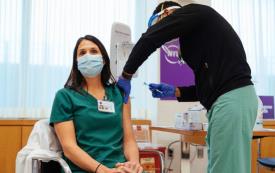 ow deployed in the U.S. suppress clinical signs and almost eliminate hospitalizations. It is less clear whether immunized individuals are capable of transmitting the virus. Preliminary data from Israel where 80 percent of those over the age of 65 have been vaccinated and 40 percent of the entire population received at least one dose of vaccine, indicate a lower incidence rate in the non-vaccinated cohort. This suggests that increasing the proportion of immune individuals in the population through vaccination is actually reducing transmission rates as predicted by established epidemiologic theory. ow deployed in the U.S. suppress clinical signs and almost eliminate hospitalizations. It is less clear whether immunized individuals are capable of transmitting the virus. Preliminary data from Israel where 80 percent of those over the age of 65 have been vaccinated and 40 percent of the entire population received at least one dose of vaccine, indicate a lower incidence rate in the non-vaccinated cohort. This suggests that increasing the proportion of immune individuals in the population through vaccination is actually reducing transmission rates as predicted by established epidemiologic theory.
Despite approval of both the Pfizer and Moderna vaccines during November and December 2020 respectively, both supply of the products and more important their administration, even to priority groups was initially beset with logistic restraints due to an obvious lack of planning and direction by federal authorities. As of February 12th, 3.6 percent of the U.S. population has received two doses of either of the vaccines and 11 percent have received the first dose. Effective February 15th, 70 million doses have been delivered and 52 million administered. It is evident that many of the logistic restraints to administration of vaccines are being resolved and the rate of vaccination attained 2.2 million on each of February 13th and 14th.
Dr. Scott Gottlieb, previously Commissioner of the Food and Drug Administration noted that the availability of vaccines will soon exceed the potential rate of administration even without the introduction of a third or fourth vaccine which in all probability will occur in March. Dr. Gottlieb correctly points out that "vaccine hesitantly" will soon be a restraint to attaining a level of immunity that is necessary to suppress the incidence rate in the U.S. The February 13th edition of The Economist considers the origin of vaccine hesitancy with specific reference to both industrialized and developing nations. Reluctance to receive a vaccine is based on a number of fears. These include concern over safety, evident from the Phase-3 trials; denial concerning the pathogenicity of COVID-19, with close to 500,000 fatalities denoting the severity of the infection; and group-sentiment fostered by mischievous, misleading and mendacious postings on social media.
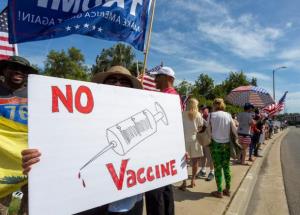 Some of the nonsense currently circulating include claims that the vaccine will allow mind control by sinister forces, that the vaccine will affect fertility, that vaccines are derived using fetal material or potentially rejecting the halal status of vaccines. There has also been a concerted attempt to devalue the advice of public health officials, hinting at untrustworthiness and ulterior motives. According to The Economist, The Center for Countering Digital Hate has tracked 425 anti-vaccine accounts on four major social medial platforms with close to 60 million followers. It emerged that 80 percent of the organizations that promote an anti-vax message have a financial justification for their opposition, since they promote and sell nostrums and remedies with unfounded claims for efficacy. A published research study has documented 1,300 Facebook pages opposing vaccination intertwining pseudo-scientific messages with conspiracy theories. Facebook has indicated that it will henceforth remove posts opposing vaccination. In a recent move, Instagram banned Joseph F. Kennedy Jr., a notorious opponent of all vaccinations from the platform, although his Facebook account remains active. Some of the nonsense currently circulating include claims that the vaccine will allow mind control by sinister forces, that the vaccine will affect fertility, that vaccines are derived using fetal material or potentially rejecting the halal status of vaccines. There has also been a concerted attempt to devalue the advice of public health officials, hinting at untrustworthiness and ulterior motives. According to The Economist, The Center for Countering Digital Hate has tracked 425 anti-vaccine accounts on four major social medial platforms with close to 60 million followers. It emerged that 80 percent of the organizations that promote an anti-vax message have a financial justification for their opposition, since they promote and sell nostrums and remedies with unfounded claims for efficacy. A published research study has documented 1,300 Facebook pages opposing vaccination intertwining pseudo-scientific messages with conspiracy theories. Facebook has indicated that it will henceforth remove posts opposing vaccination. In a recent move, Instagram banned Joseph F. Kennedy Jr., a notorious opponent of all vaccinations from the platform, although his Facebook account remains active.
Public health authorities are currently analyzing and characterizing demographic groups opposed to vaccination and are attempting to develop countermeasures by specifically addressing their concerns. A history of exploitation characterized by the infamous Tuskegee Experiment and chronically inferior medical services has created hesitation in the black community that has suffered disproportionately from COVID-19. It is hoped that reluctance to be vaccinated will be remedied by responsible civic associations and greater accessibility to health services. Vaccination is receiving the endorsement of major black political, entertainment, academic and sports figures who serve as positive role models.
Some resistance to vaccination is inexplicable. A December 2020 survey among healthcare providers in Pennsylvania demonstrated a 45 percent reluctance to be vaccinated. These individuals including RNs do not lack education relating to how the virus is spread and how protection can be effected. In early December their concerns were based on the rate at which the vaccine was developed and the perception that approval by the FDA was rushed for political purposes in late October. Progressively, the sample of 16,000 healthcare workers has moved from a 45 percent level who were either disinclined to be vaccinated or elected to wait, to more than 75 percent agreeing to be vaccinated. By early February only five percent were implacably opposed to vaccination. The undecided group of healthcare workers is clearly diminishing as more of our population is vaccinated without adverse effects. In contrast workers in red-meat packing plants where vaccine has been made available have enthusiastically accepted immunization with or without financial inducements.
Recognition of the extent of vaccine hesitancy should now guide public health officials in developing promotional campaigns to encourage acceptance. With the greater availability of vaccines and improved logistics, over 200 million eligible members of the U.S. population could be vaccinated by late spring. The hard task will be to reach and vaccinate those over 16 who are either outright vaccine deniers, comprise the wait-and-see members of our population or for various reasons are inaccessible to health services. It will require a concerted program of public service campaigns to encourage acceptance of COVID vaccination to protect both individuals and the community. Some large companies are providing financial and other incentives to workers to be vaccinated. Other concerns and industries are actively pressing for their workers to be protected with the cooperation of state governors and health departments. It will be necessary to make vaccination successively more convenient and accessible following immunization of the first 200 million.
It is possible that resuming activities such as travel, attendance at crowded events and even community gatherings that we took for granted in 2019, will in future be contingent on proof of vaccination. As we roll out vaccines and effectively immunize an increasing proportion of our population, we hope that those who hesitated will join the mass and receive protection. If we end up with a 10 to 12 percent hard-core cohort of vaccine deniers, they will benefit from herd immunity.
With the emergence of variants and waning of immunity, it is inevitable that COVID will persist in our society requiring annual or biannual booster vaccination, much as we have accepted annual influenza “shots”. This will be a small price to pay for restoring our way of life and protecting the most vulnerable in our society.

|
Congressional Investigation Reveals Heavy Metal Contamination in Baby Foods
|
02/08/2021 |
|
 According to a February 4th Congressional Report from the Sub-Committee on Economic and Consumer Policy of the House Committee on Oversight and Reform, baby foods marketed in the U.S. contain unacceptable levels of arsenic and in some cases contamination with lead, mercury and cadmium. The report was requested in November 2019 and followed a review of data obtained by the Food and Drug Administration relating to heavy metal contamination of baby foods. According to a February 4th Congressional Report from the Sub-Committee on Economic and Consumer Policy of the House Committee on Oversight and Reform, baby foods marketed in the U.S. contain unacceptable levels of arsenic and in some cases contamination with lead, mercury and cadmium. The report was requested in November 2019 and followed a review of data obtained by the Food and Drug Administration relating to heavy metal contamination of baby foods.
During November 2019, the Sub-committee on Economic and Consumer Policy requested documentation and assay data from seven manufacturers. The companies included Beech-Nut Nutrition Company, Hain Celestial Group, Gerber, Walmart Inc, Sprout Foods Inc, Campbell Soup Company and Nurture Inc. Only Nurture, Beech-Nut, Hain and Gerber cooperated with the Sub-committee with the remainder refusing to comply with the investigation. The report documented high levels of arsenic in company-assayed samples, ranging from 60 ppb to 200 ppb. Lead was present at levels over 10 ppb in 20 percent of baby food samples tested with one as high as 641 ppb. A specific company detected 5 ppb cadmium in 65 percent of samples assayed and the same company marketed baby foods containing up to 10 ppb mercury.

It was evident that from the data reviewed, that manufacturers ignored high levels of heavy metals in raw materials used to prepare baby food. Arsenic contamination of rice and cadmium contamination of carrots were obvious contributors to heavy metal contamination of the final products.
The recommendations in the Report included:-
- FDA should develop standards specifying maximum levels of organic arsenic, lead, cadmium and mercury in baby foods
- Mandatory testing of both ingredients and finished products
- Compulsory reporting of levels of heavy metals to FDA
Encouraging parental vigilance regarding heavy metal contamination of baby foods based on mandatory testing and labeling.
The presence of heavy metal contamination of food is unacceptable. That arsenic, cadmium and mercury are knowingly present in baby food is criminal and the fact that household brands are involved speaks volumes for the mendacity and wanton disregard for the health of our Nation. We can and must do better.

|
Mission Metamorphosis the Reinvention of the American Humane Association
|
01/27/2021 |
|
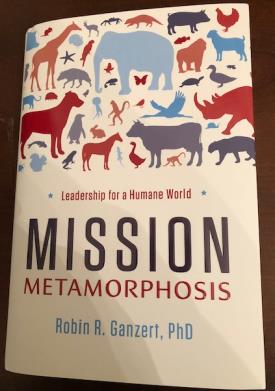
Dr. Robin R. Ganzert president and CEO of the American Humane Association (AHA) recently released Mission Metamorphosis detailing the restructuring and redirection of the organization.
Our industry recognizes the AHA as a responsible voice in livestock welfare with a multifold mission serving as an admired and prominent charity with high ethical standards. Egg producers interact with the AHA through the American Humane Certified Program that provides an assurance that eggs are raised humanely and in accordance with standards based on science and quantitative evaluation.
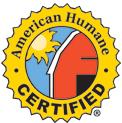 When Dr. Ganzert was appointed to her leadership role in October 2010, she was unaware of the rapidly deteriorating financial reserves, lack of leadership and diffusion of purpose threatening the very existence of an organization that had provided service to the community and to animals for close to 150 years. When Dr. Ganzert was appointed to her leadership role in October 2010, she was unaware of the rapidly deteriorating financial reserves, lack of leadership and diffusion of purpose threatening the very existence of an organization that had provided service to the community and to animals for close to 150 years.
Mission Metamorphosis describes a stepwise reevaluation of the AHA conducted in less than 60- days. The review identified primary and consequential problems and deficiencies that were prioritized for resolution. Responses to the situation facing management required cancellation of many non-productive programs, downsizing staff and a decision to sell the relatively lavish Colorado headquarters and move to Washington DC. These actions placed the AHA on a path to solvency.
|
|

Dr. Robin Ganzert
|
The book clearly illustrates the need for nonprofits to define their mission, develop a suitable structure, appoint competent leaders and to maintain a program of ethical fundraising. In her initial approach and then subsequently Dr. Ganzert applied sound business principles to establish financial stability, without which AHA would not have been able to expand programs that have relevance to contemporary society.
During fiscal year 2010 preceding her tenure the AHA ran a deficit of close to $6 million. By trimming programs and redirecting efforts, the AHA established a small surplus in 2012. Through her efforts Dr. Ganzert increased revenue from $15.7 million in fiscal 2010 to $44.7 million in 2019 allowing the AHA to attain a $1.4 million surplus. The initial year of her direction involved a $16 million reduction in budgeted expenses, downsizing 60 percent of staff positions and revamping programs for relevance and efficiency. In 2010, Dr. Ganzert determined that fundraising and general administration respectively absorbed 14.4 percent and 6.6 percent of revenue, leaving 79 percent for programs. Ten years later under her guidance, fundraising and general administration were reduced to 6.0 percent and 2.6 percent of revenue allowing 91.3 percent of income to be directed to programs. In practical terms, program funding increased over threefold from $12.4 million in 2010 to $40.7 million in 2019.
|
|
Apart from the American Humane Certified Program activities that have generated public support include emergency response to disasters including floods and hurricanes, world wide species preservation and conservation, pet facilitated therapy, military dog retirement, the Humane Hollywood program, support for animal rescue shelters, recognition of service animals and Pups-4 Patriots support for veterans.
Bringing back AHA from the brink of bankruptcy, Dr. Ganzert reestablished the creditability and function of the Association. Consumer Reports regards American Humane as the best U.S. charity deserving of support; AHA has earned anr‘A’ rating from Charity Watch and Gold-level status from Guidestar USA. Charity Navigator awarded American Humane 4-stars, the highest for any humane group. The AHA ranks in the top one percent on the Better Business Bureau Wise Giving Alliance list.
Mission Metamorphosis serves as a text on how to rejuvenate a non-profit functioning with good intensions but subject to incompetent management. Our industry that preferentially supports AHA through the Humane Certified program should be assured of the contribution that the Association makes to society.
The only prospective negative from Mission Metamorphosis is that a Board of another non-profit may recognize the skill, creativity and communicating ability of Dr. Ganzert and induce her to accept a new and larger challenge.
|

|
Restoration of Extensive Outside Access for Organic Certification Likely
|
01/23/2021 |
|
With the restoration of Tom Vilsak to the position of Secretary of the USDA, there will be a reevaluation of outside access requirements for egg production under the USDA Certified Organic program. It will be remembered that in 2017 on the last day of the Obama Administration, Secretary Vilsak approved the rule mandating minimum outside access. This would have effectively disqualified in-line barn and multi-level aviary units. Then Secretary Dr. Sonny Perdue rescinded the rules allowing sun porches to substitute for outside access.
|
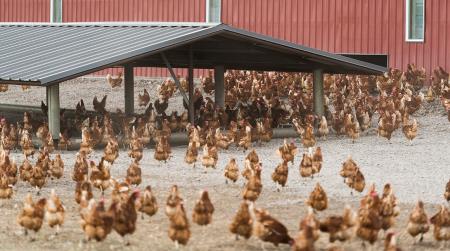
Hens with outside access to soil |
|
With the inception of a new Administration it is obvious that animal rights groups including HSUS and representatives of organizations representing small-scale organic egg producers will agitate for restoration of the previous housing requirements.
It is therefore expected that if the outside access requirement is mandated, that a new category of eggs distinct from but parallel to organic regulations will emerge. Eggs will be derived from flocks housed in barns or in building fitted with aviaries, fed GMO feed and complying with most organic requirements with the exception of outside access. It is anticipated that under the rules as proposed in 2016, certified organic eggs derived from hens allowed outside access and the new category of GMO-free/humane-housed hens would be positioned below current organic prices.
|
|
Growth in organic egg production has stalled over many months based on price relative to alternatives including cage-free and even generic product. Imposing an excessive outside access requirement would disqualify a high proportion of current organic egg supply to the benefit of smaller-scale producers. This would satisfy the original intent of the extended outside access requirement. Producers advocating outside access may be disappointed if their wish is granted as they will be supplying a smaller market with more intense competition, albeit at a higher price.
|
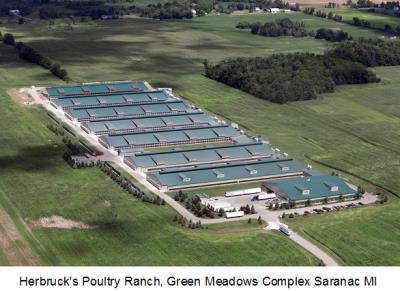
Organic egg complex with sun porches |

|
E.U. Trends Likely to Influence U.S. Agriculture.
|
01/16/2021 |
|
According to USDA-FAS GAIN report E42021-0007 released on January 12th 2021, a number of trends affecting E.U. agricultural policy emerged from the Farm to Fork Conference held in mid-October 2020. The objective of the meeting was to create an international alliance and to develop global standards on sustainability and welfare. The Conference was strongly supported by Ursula von der Leyen, President of the European Commission and by the Agricultural and Health Commissioners of Germany and other prominent EU states. Items considered by the Farm to Fork conference that have relevance to the U.S. include:-
|
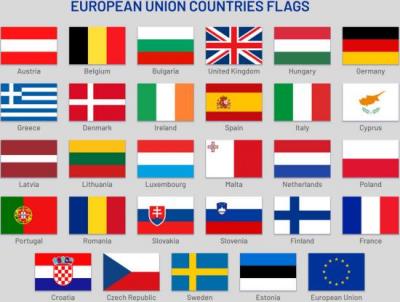
E.U. nations before BREXIT
|

E.U. Commissioner Ursala von der Leyden |
This initiative to be enacted in the proposed Climate Law will be legally binding for all 27 European Union member states. The proposal will establish carbon neutrality by 2050 and progress in reducing greenhouse gas emissions. The outgoing U.S. Administration has consistently denied the reality of climate change and has relaxed environmental regulations contrary to movements in the Europe and Asia. This was exemplified by withdrawal from the Paris Accords and characterizing coal as “beautiful and clean”. It is anticipated that the incoming Administration will reverse many of the policy decisions of the past four years and move towards commonality with the E.U. as a condition for trade. On December 17th, all 27 E.U. Ministers of the Environment adopted the European Council position on the Climate Law incorporating a target of 55 percent reduction in greenhouse gas emissions by 2030, compared to the 1990 base.
- Mandatory Nutrition Labeling
The E.U. will harmonize front-of-pack nutrition labeling by the end of 2022. The intent is to provide consumers with information enabling health-conscious choices with adoption of the Nutri-Score labeling as introduced in France and since adopted by Belgium, Spain, the Netherlands and Germany. Given that many U.S. producers of food products are subsidiaries of multinational corporations such as Nestle and Danone, it is anticipated that the front-of-pack nutrition labeling will eventually be adopted in the U.S.
|
- Establishing Nutrient Profiles
The restrictions on salt, sugars and fat established by Regulation #1924 in 2006 will be fully implemented before the end of 2022. It is anticipated that there will be harmonization of nutritional specifications among industrialized nations of the northern hemisphere motivated by trade and health considerations.
A November 3rd 2020 meeting of the E.U. Platform on Animal Welfare announced a committee to produce a report by mid 2021 to evaluate consumer awareness and the economic impact of mandatory welfare standards. Julia Kloeckner, the German Federal Minister of Food and Agriculture stated, "a common E.U. label for animal welfare would increase credibility and transparency in our markets and would enable consumers to make more informed choices and would help reward producers who comply with standards”.
- Country of Origin Labeling
The European ministers of agriculture considered Country of Origin Labeling (COOL) in mid-December 2020. Given a number of foodborne health incidents associated with certain E.U. producer nations, this provision that could be regarded as discriminatory and possibly in contravention of WTO Regulations indicates concern among member nations.
The EU will propose revisions to existing rules relating to use by and best before dates. An improvement of presentation format or wording will be developed possibly abandoning the best before descriptor.
- Chemical-based Pesticides
The European Commission will take action to reduce the application and by extension, exposure of consumers to chemical pesticides. A target of 50 percent reduction by 2030 is envisaged.
The Commission will consider the adoption of sustainable and innovative feed additives by revising current legislation. Additives will be promoted on the basis of reducing greenhouse gas emissions and contributing to sustainable farming.
- Promoting Organic Farming
As part of the Biodiversity Strategy, the European commission set a goal of 25 percent of agricultural land for organic farming by 2030, up from the current eight percent. Well-meaning legislatures will have to reconcile the need for food with the inherent inefficiency of organic farming as we know it. A legislative proposal relating to the EU Green Deal and Farm to Fork strategy is expected by the end of the current year.
The EU has a long history of advancing welfare, sustainability and reducing the impact of agriculture and industry on climate change. The E.U. comprises close to 500 million in population (including the UK) and is the world's largest trading group with defined rules and procedures. Accordingly the U.S. cannot ignore trends in agriculture if we are to trade freely and enjoy political and cultural relations to our mutual benefit.
|

|
Highly pathogenic avian influenza in the E.U. During 2020
|
01/10/2021 |
|
 A moderator for ProMed Mail described the sequence of HPAI outbreaks attributed to H5N8 during 2020. Clearly the infection was introduced and disseminated by migratory waterfowl. The implications for the U.S. are self-evident despite the fading recollections of 2015. The description of the sequence of two distinct outbreaks is reproduced below for the benefit of subscribers:- A moderator for ProMed Mail described the sequence of HPAI outbreaks attributed to H5N8 during 2020. Clearly the infection was introduced and disseminated by migratory waterfowl. The implications for the U.S. are self-evident despite the fading recollections of 2015. The description of the sequence of two distinct outbreaks is reproduced below for the benefit of subscribers:-
"During 2020, 2 distinct epidemic seasons of highly pathogenic avian influenza (HPAI) were observed in the European Union. The 1st HPAI epidemic season started on 31 Dec 2019, with the 1st outbreak in poultry confirmed in Poland. A new HPAI virus of subtype H5N8 (2020) was involved in the outbreak. By March [2020], the disease was confirmed in Poland, Czechia, Germany, Hungary, Slovakia, and Romania.
The H5N8 (2020) subtype of the HPAI virus was responsible for all of these outbreaks. The most affected Member State was Hungary, after the virus entered in the area with a high density of duck and geese holdings. Outbreaks of HPAI were also detected in Bulgaria between March and June 2020, but the virus involved was of subtype H5N8, which also circulated in Bulgaria in 2018-2019. The last outbreak in poultry related to the 1st epidemic season of HPAI was confirmed on 5 Jun 2020”.
"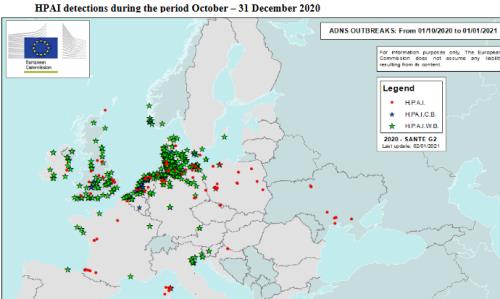 Only 3 wild birds were found infected with HPAI during the 1st half of 2020 (in Germany and Poland). The virus involved was the same as the one detected in the poultry farms”. Only 3 wild birds were found infected with HPAI during the 1st half of 2020 (in Germany and Poland). The virus involved was the same as the one detected in the poultry farms”.
"The 2nd HPAI epidemic season started at the end of October 2020 when the 1st cases were reported in wild birds in the Netherlands. Again, the 1st HPAI virus detected was of H5N8 subtype, different from the one that circulated in the 1st half of the year [2020]. Since then and until the end of 2020, a high number of dead and sick wild birds, mostly of migratory species, were found to be infected with HPAI viruses of subtypes H5N8, H5N5, H5N1, and H5N3 being detected by several EU countries and the United Kingdom. The largest number of cases in wild birds were reported in the northern part of Germany, in Denmark, and in the Netherlands. Between October and end of December 2020, the disease was also confirmed in poultry in Croatia, Denmark, France, Ireland, Germany, the Netherlands, Poland, Sweden, and the United Kingdom”
Lessons can be derived from the unfortunate experiences with HPAI in the E.U.
- Since wild birds are carriers waterfowl hunting by personnel in the poultry industry should be prevented
- Free-range and backyard flocks are the link between migratory birds and large commercial farms and complexes
- Commercial waterfowl and turkeys appear to become infected in affected regions before chickens
- Solid biosecurity is an effective preventive measure.
- Constant surveillance of wild birds is necessary with appropriate molecular characterization.
- Most governments impose “stamping out” programs to control outbreaks of HPAI. Most Governments in the E.U. effectively eradicate HPAI every year!
- We need effective broad spectrum H5 and H7 vaccines to create immune commercial poultry populations so as to limit mass dissemination as was observed in the 2015 U.S. epornitic and the biphasic E.U. ongoing event.
- Recognition of the OIE principle of regionalization is a tacit recognition of the extent, distribution and periodicity of HPAI.
Comments and contributions are solicited to establish an industry dialog.

|
Concern over SARS-COV-2 Variants
|
12/29/2020 |
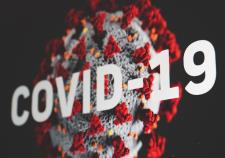 |
With the increased frequency of sequencing isolates of SARS-CoV-2, the virus responsible for COVID-19 in many nations, it is apparent that mutations are occurring that enhance infectivity. Mutations may affect response to antibody therapy and effectiveness of a range of vaccines based on mRNA, adenovirus-vectors and nanoparticle subunit technology.
The variant VOC (variant of concern) 202012/01 also termed variant B.1.1.7, and a similar variant in South African both carry mutation N501 that enhances infectivity. The UK variant has acquired 17 mutations affecting both the spike protein and nucleoprotein. The concurrent N501mutation increases the ability of the virus to bind to human ACE receptors. The mutation in this variant was recognized in early September in the U.K. but since November has become the predominant virus in Southeast England accounting for 60 percent of infections.
|
|
A variant with the 69-70 del mutation involves deletion of two amino acids allowing the virus to be refractory to an immune response. This change is also observed in the variant mink virus first identified in Denmark. Mutation P681H occurs at the cleavage site of the spike protein and may be associated with increased pathogenicity. Insertion of basic amino acids at the cleavage site of the hemagglutinating surface protein of avian influenza viruses is associated with increased pathogenicity relating to the ability of the virus to enter host cells. It has yet to be shown that the variants carrying P681H are in fact more pathogenic in humans.
|

Dr. Anthony S Fauci |
|

Dr. William Haseltine
|
An observation of concern is that where sequencing studies are carried out on a routine basis, variants are documented with increasing frequency. The U.K. variant is now present in France and Belgium despite border and travel restrictions imposed in late December that basically represented closing the stable door after the horse had bolted. Simultaneous emergence of variants in the Republic of South Africa and Nigeria, apparently showing greater infectivity reflect the innate ability of single-stranded RNA viruses to undergo mutations many of which are beneficial to the pathogen through infecting a greater number of hosts. |
|
Dr. William Haseltine, president of Access Health International, a think tank, formerly a Professor at Harvard Medical School and a renowned educator, author and philanthropist, correctly notes that COVID-19 in various forms may be with us for many years to come. This will be despite the adoption of vaccines directed against the spike protein of the virus. He notes that the mRNA vaccines including the Pfizer and Moderna products that received emergency use authorization in December in addition to the adenovirus vector vaccines including the AstraZeneca-Oxford and the Sputnik-5 product from Russia are all directed against spike protein. In contrast, China has developed vaccines based on inactivated whole virus that may in the long term be more effective in suppressing SARS-COV-2 by stimulating a broader antibody response.
In past weeks, studies of the sequences of SARS-COV-2 have disclosed a lack of information regarding the molecular composition of current viruses in circulation. The number of sequence assays of isolates in the U.K. is infinitely higher than in the U.S. Accordingly we have yet to detect the altered viruses that in all probability are undergoing community spread. The proportion of 0.5 percent of isolates sequenced the U.S. compares unfavorably with the U.K. with a rate of five percent. Of isolates from patients Information on the virus strains present in sub-populations allows health authorities and epidemiologists to identify the emergence of variants and their mode of transmission. The need for greater surveillance of isolates from patients using a structured program is advocated by Dr. Anthony S. Fauci, Director of the NIAID -NIH. His promotion of sequencing isolates is justified by the December 29th recognition of the U.K. variant in a patient in Colorado with no history of travel, suggesting community transmission.
The expedient of requiring a negative PCR or antigen assay for intended visitors to the U.S. is at best a “feel-good” measure since an air traveler with a negative test conducted three days before entry to the U.S. may still permit introduction of a variant of SARS-COV-2.as has occurred in Canada. Without detailed and structured sequencing, we do not know whether variants carrying the N501 and P681H mutations are in fact present in the U.S. and are undergoing community spread. We do not have adequate information on how U.S. variants are emerging nor have we monitored possible changes in infectivity and pathogenicity. Hopefully additional funding will be available through the Covid relief package to be assigned by the incoming Administration.
With recognition of a similar variant in the U.S. this past week we can expect that community transmission during Christmas travel will have disseminated this strain widely. It is only the dearth of sequencing assays that has failed to reveal the problem of emerging variants. "Seek and ye shall find" is the applicable catchphrase.
|

|
A New Year’s Wish List
|
12/27/2020 |
|
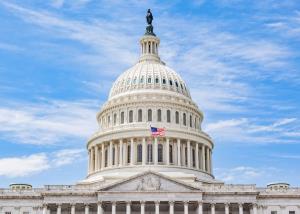 By any standards 2020 was an annus horribilis. Without recounting the tribulations of the past twelve months, we could rather turn to an anticipation of 2021. Our wish list includes the most desired changes from 2020: By any standards 2020 was an annus horribilis. Without recounting the tribulations of the past twelve months, we could rather turn to an anticipation of 2021. Our wish list includes the most desired changes from 2020:
- Uppermost will be control of COVID-19. We now have two mRNA vaccines available and we trust that the acceptance of these vaccines and their deployment will be rapid, free of complications and above all effective. Concurrently we anticipate compliance by our population in public health measures extending through summer that will be necessary until an acceptable level of immunity is attained in our population.
- A restoration of the economy is anticipated. We have incurred a high level of public sector and private debt as a result of COVID. Our economy has, with the rest of the World, been seriously impacted. We earnestly hope that sound fiscal management will prevail to restore the previous way of life we enjoyed before the advent of COVID-19. Restoration of the economy accompanied by relaxation of COVID restrictions should alleviate hunger and misfortune among so many of our fellow citizens. Teaching through K-12 and university instruction will resume, although it is recognized that disruption in 2020 will have placed many of our students behind their anticipated development levels, requiring remediation.
- We look forward to a smooth transition between the outgoing and the incoming Administrations with continuation of programs that were beneficial and support for American traditions. Extremism from both the right and left must be discouraged and complete acceptance of the integrity of our Constitution must be maintained.
- We hope that extremes of weather, related to climate change will be less evident in 2021. With the anticipation of the decline in La Nina that has apparently peaked, we hope to have fewer hurricanes and more even distribution of rainfall, preventing both flooding and drought. The epidemic of fires west of the Rockies should hopefully abate, allowing restoration of the ecology of seven states.
- We look forward to better relations with our allies and respect from our adversaries. Restoration of our participation in international bodies, such as the WHO and improved interaction in the WTO and multinational trade agreements will benefit both our industrial and agricultural sectors.
- It is hoped that catastrophic livestock diseases, including avian influenza, African swine fever, and foot and mouth disease, will spare our herds and flocks despite their prevalence in other nations.
- We wish our row-crop farmers bountiful harvests. This should restore income, since farmers were dependent on government programs for 40 percent of revenue in 2020. Higher yields will lead to lower ingredient prices that spiked during the last quarter of 2020 and are still rising.
- We wish our elected representatives and senators at the national level, and our state and local legislators, wisdom, objectivity, and freedom from the strictures of parochialism in their deliberations and decisions. We hope for a new spirit of bipartisanship and cooperation rejecting the coercion and divisiveness that were apparent in 2020.
 With restoration of our economy following control of COVID, we can look forward to improved purchasing power of our consumers and more favorable production margins. We hope to release the inherent creativity and productivity of the U.S. poultry industry for the mutual benefit of our companies, their workers, and our consumers. With restoration of our economy following control of COVID, we can look forward to improved purchasing power of our consumers and more favorable production margins. We hope to release the inherent creativity and productivity of the U.S. poultry industry for the mutual benefit of our companies, their workers, and our consumers.
As I dictate an editorial on Christmas Day in 2021, I look forward to reflecting with you on an annus mirabilis, encompassing our current hopes and aspirations.
Barbara and I extend to you, your families, and colleagues
our warmest wishes for health and prosperity in the coming year.

|
Moderna COVID Vaccine Deployed-Vaccination Encouraged
|
12/23/2020 |
|
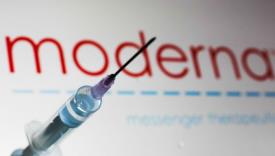 According to General Gustave Perna, Chief Operating Officer of Operation Warp Speed, more than six million doses of the Moderna mRNA vaccine were shipped to 3,200 sites during the week beginning Monday, December 21st. During the previous week, 272,000 doses of the Pfizer vaccine were administered according to the Centers for Disease Control. It is noted that the Moderna vaccine that does not require the rigorous -90 F storage and transport temperature for the Pfizer product can transported at regular refrigeration temperature will be more acceptable for rural areas and small vaccination centers. According to General Gustave Perna, Chief Operating Officer of Operation Warp Speed, more than six million doses of the Moderna mRNA vaccine were shipped to 3,200 sites during the week beginning Monday, December 21st. During the previous week, 272,000 doses of the Pfizer vaccine were administered according to the Centers for Disease Control. It is noted that the Moderna vaccine that does not require the rigorous -90 F storage and transport temperature for the Pfizer product can transported at regular refrigeration temperature will be more acceptable for rural areas and small vaccination centers.
The initial vaccinations were administered to frontline healthcare workers. On Sunday, December 20th the CDC AdvisoryCommittee prioritized adults 75 and older and frontline service workers to receive vaccines. In the subsequent phase, adults between 65 and 75 and those between 16 and 64 with high-risk predisposing conditions and other essential workers will be vaccinated.
It is anticipated that 20 million doses of vaccine will be distributed by the end of 2020, although it is recognized that an equivalent volume has been held in reserve for the essential second dose of both the Pfizer and Moderna vaccines. The rollout of vaccine has demonstrated a slower rate of administration compared to availability even though the first recipients have been in hospitals with optimal resources. Logistical problems will obviously be resolved with resourcefullness and experience during the early weeks of 2021.
Health authorities, including Dr. Carlos del Río, Associate Dean of the Emory University School of Medicine, have warned that precautions to prevent transmission must be maintained as it will be a number of months before adequate numbers of the U.S. population achieve immunity. The U.S. has recorded almost 18 million confirmed cases with 320,000 fatalities since COVID-19 emerged. On Friday, December 18th almost 250,000 new infections were recorded with an average of 2,500 deaths per day during the preceding week.
There is guarded optimism over acceptance of COVID vaccines. Despite mischievous and misleading negative comments, the approval of the vaccine and initiation of administration have resulted in an increase in the number of citizens indicating their intent to be vaccinated. A concerning proportion of the population of western European nations and the U.S. still have reservations as to safety. This is in part due to the speed at which the vaccines were developed, distrust of governments and the pharmaceutical industry in general and a concerted campaign by anti vaxxers using the internet.
Commentators have suggested that opposition to vaccination, extending back to the 18th century was essentially based on religious views that vaccination was contrary to “God’s will”. As noted in the Charlemagne column in the December 12th edition of The Economist, Laurent-Henri Vignaud, a historian at the University of Bourgogne, observed that opposition to vaccination is now based on political considerations with a “strong correlation between doubting vaccines and voting for populist parties”. This sentiment is supported by Dr. Jonathan Kennedy of the Queen Mary University of London. News reports suggested that a high proportion of workers at homes for the elderly are disinclined to be vaccinated, this is unfortunate since this cohort is dealing directly with the most vulnerable members of our population and could serve as asymptomatic spreaders. Surveys show that 40 percent of those interviewed in Poland and Hungary and 46 percent in France stated they would reject a COVID-19 vaccine if offered. Health authorities expect that the increasing incidence rate of COVID accompanied by restrictions on normal social and economic activity will encourage acceptance of vaccination. It is hoped that with appropriate leadership and example, vaccination will be adopted by a high proportion of eligible recipients.
The Charlemagne column concludes that “the most effective vaccine against anti-vax nonsense would be for governments to roll out their COVID-19 vaccination programs as quickly and smoothly as possible with a minimum of disruption. When elites do their jobs well populists and cranks have less to froth about”.
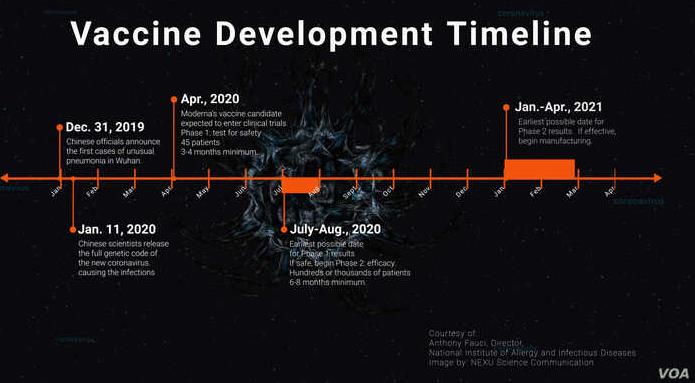

|
Tom Vilsack to be Nominated as USDA Secretary
|
12/09/2020 |
|
According to news reports President-elect Biden intends to nominate Tom Vilsack as Secretary of the USDA based on his experience, prospects for easy conformation as a non-controversial nominee. Vilsack is a known quantity having served previously as Secretary of the USDA for eight years. He is expected to bring stability to the Department and reduce uncertainty experienced by a stressed agricultural community facing the challenges of COVID-19, a depressed economy and trade disputes.
Based on previous actions and decisions the following can be expected of a Vilsack tenure at the helm of the USDA:
|
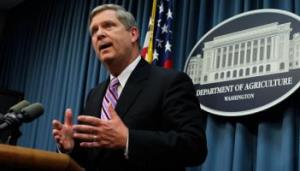
Secretary-Designate Tom Vilsack |
- Continued support for ethanol production
- Revival of regulations framed in 2017 under GIPSA, favoring contractors and family farms.
- Implementing the recently enacted Farm Bill and to initiate consultations with Congress to frame legislation leading to the next farm Bill
- Maintain crop insurance programs
- Adopting a more active role in advancing sustainability and averting climate change through application of proven science
- Restoring Obama-era nutritional standards for school feeding
- Engendering bipartisanship in Congress to the benefit of his farmer constituency
- Continuing a Departmental focus on farmers in comparison to a consumer-oriented approach as promoted by the left-wing of the Democratic Party
- Moderation in trade disputes and restoration of levels of commodity exports that pertained prior to the advent of the 2017 trade war with China
- Appointment of competent and experienced subordinate undersecretaries and deputy secretaries, coupled with a higher degree of professionalism in decision-making. The programs and policies of the USDA will be more influenced by science than by political considerations as compared to the previous Administration.
- Promote a rational immigration policy providing security for both farmers and workers
Secretary Vilsack will approach the position  with considerable experience as a previous two-term cabinet member and will have the support of the President, having campaigned for Candidate Biden. Secretary-Designate Vilsack has the expressed support of Senator Chuck Grassley, a past-Chairman of the Senate Agriculture Committee and a force in U.S. agriculture. He has already received indications of support from the American Farm Bureau and the National Farmers Union. with considerable experience as a previous two-term cabinet member and will have the support of the President, having campaigned for Candidate Biden. Secretary-Designate Vilsack has the expressed support of Senator Chuck Grassley, a past-Chairman of the Senate Agriculture Committee and a force in U.S. agriculture. He has already received indications of support from the American Farm Bureau and the National Farmers Union.
Immediate challenges will be to fill vacant positions with suitable nominees who can be confirmed, address the issue of food insecurity exacerbated by COVID-19 and to wean producers from Government support that represented 40 percent of agricultural income in 2020.
|

|
Evaluation of Masking to Prevent COVID-19
|
12/02/2020 |
|
It is generally accepted by public health authorities that until an effective vaccine is deployed and achieves immunity in 60 to 70 percent of the U.S. population, prevention will have to depend on more elementary protective measures. These include masking, avoiding large gatherings, and maintaining social distancing in addition to increasing air exchange rates in confined areas such as packing plants.
The wearing of masks to prevent what is predominantly an aerosol transmitted infection is generally accepted. Regrettably in months leading up to the November general election masks were politicized, deterring adoption of this elementary and inexpensive preventive measure, especially in rural communities.
 Models evaluated by the University of Washington Institute for Health Metrics and Evaluation predict that if 95 percent of state residents wore masks regularly in public, more than 1,400 COVID-19 deaths would be averted through March 1st. The rapidly ascending incidence of COVID-19 in all states, and especially those in the Pacific Northwest, has led to greater mask compliance. The University of Washington Institute determined that the use of masks, when outside homes, increased from 50 percent in July to 70 percent in mid-November. Dr. Judith Wasserheit, Chair of the University of Washington Department of Global Health, stated “I think we all recognize that COVID-19 infections are exploding and the data are clear that masks are one of the best prevention tools we have.” Models evaluated by the University of Washington Institute for Health Metrics and Evaluation predict that if 95 percent of state residents wore masks regularly in public, more than 1,400 COVID-19 deaths would be averted through March 1st. The rapidly ascending incidence of COVID-19 in all states, and especially those in the Pacific Northwest, has led to greater mask compliance. The University of Washington Institute determined that the use of masks, when outside homes, increased from 50 percent in July to 70 percent in mid-November. Dr. Judith Wasserheit, Chair of the University of Washington Department of Global Health, stated “I think we all recognize that COVID-19 infections are exploding and the data are clear that masks are one of the best prevention tools we have.”
Accordingly, the University of Washington will undertake a study of the motivation to wear masks and to determine how health departments and other state and local agencies should focus messaging to increase compliance. The University of Washington study will be sponsored by the Washington Department of Health. Data will be collected among communities across King County, including the metropolitan area of Seattle. Emphasis will be placed on retail outlets including supermarkets and big-box stores, neighborhood markets and parks to determine the proportion of individuals wearing masks with respect to gender and age. The intent of the study is to determine locations where mask usage is lowest and to establish the demographics of non-compliers. It is anticipated that other counties may follow with their own investigations using the King County template.
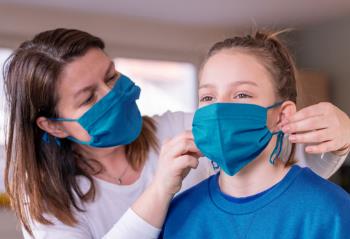 Opponents to wearing masks are frequently deniers of COVID-19 as a significant infection. Apparently those who reject the reality of the pandemic fail to recognise 13 million diagnosed cases and 265,000 fatalities since January 2020. Those opposed to mask-wearing invoke discomfort and peer pressure. They are frequently also anti-vaxxers and regard recommendations by health authorities as an intrusion on personal freedom. Opponents to wearing masks are frequently deniers of COVID-19 as a significant infection. Apparently those who reject the reality of the pandemic fail to recognise 13 million diagnosed cases and 265,000 fatalities since January 2020. Those opposed to mask-wearing invoke discomfort and peer pressure. They are frequently also anti-vaxxers and regard recommendations by health authorities as an intrusion on personal freedom.
To justify noncompliance, pseudoscientific justifications gleaned from the internet are invoked. A frequently quoted study that did not demonstrate any significant advantage from masking was conducted in Denmark. The trial compared the incidence rate of COVID-19 among volunteers either wearing or not wearing masks in public. A total of 3,030 participants were assigned to the mask group and 2,994 to the controls. Of the 4,862 who completed the study, 1.8 percent of the masked group contracted COVID-19 compared to 2.1 percent of the non-masked controls representing a non-statistically significant difference. The trial was flawed by a low incidence rate over the duration of the comparison and the fact that the masked group effectively only complied with the mask requirement in public for half of the time. It is regretted that this publication has been misquoted and used by opponents of masking, despite the obvious deficiencies in experimental design and execution.
It is reiterated that until immunization is achieved through extensive vaccination, masking and other common sense precautions as recommended by public health authorities and reputable scientists will be essential to suppress the escalating incidence of COVID-19. Without suppressing the incidence rate of COVID-19 we will not be able to restore our economy and return to a “new-normal” way of life.
*Bundgaard, H. et al Effectiveness of Adding a Mask Recommendation to Other Public Health Measures to Prevent SARS-CoV-2 Infection in Danish Mask Wearers. Annals of Internal Medicine. doi.org/10.7326/M20-6817

|
Review and Authorization of COVID Vaccines
|
11/25/2020 |
|
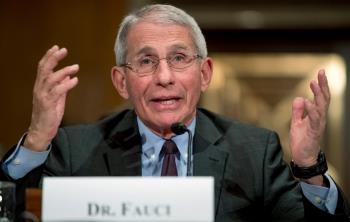 It is axiomatic that restoration of our economy will be dependent on an effective vaccine accepted by at least 60 percent of our population. During the past two weeks, Pfizer and Moderna have publicized preliminary data in press releases indicating over 90 percent effectiveness of their respective mRNA vaccines. Both Pfizer and Moderna conducted their trials in the U.S. in addition to other nations and have submitted data to the FDA to be considered for emergency use authorization. (EUA). It is axiomatic that restoration of our economy will be dependent on an effective vaccine accepted by at least 60 percent of our population. During the past two weeks, Pfizer and Moderna have publicized preliminary data in press releases indicating over 90 percent effectiveness of their respective mRNA vaccines. Both Pfizer and Moderna conducted their trials in the U.S. in addition to other nations and have submitted data to the FDA to be considered for emergency use authorization. (EUA).
It is noted that the Pfizer-BioNTech vaccine requires a critical cold chain that will represent logistic problems in distribution. The Moderna vaccine has a less rigorous temperature requirement that will facilitate widespread administration especially in rural areas.
On Monday, November 23rd, AstraZeneca noted that their adenovirus-vectored COVID vaccine was up to 90 percent effective when administered to recipients according to a specific dose sequence, as part of their Phase-3 trial. Using two similar full doses they achieved 60 percent protection. 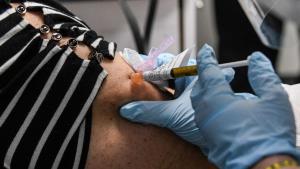 The AstraZeneca vaccine developed in collaboration with Oxford University is a more conventional vaccine than the Moderna and Pfizer mRNA products and is based on a simian (Ad5) adenovirus vector with inserted genes coding for SARS-CoV-2 spike protein. Two doses of this vaccine are required but the product can be stored under conventional refrigeration. AstraZeneca will complete their dossier before the end of the year. The Russian ‘Sputnik-5’ vaccine is similar in principle to the AstraZenica vaccine but uses two different adenovirus vectors for the first (Ad26) and second (Ad5) doses. The Novovax subunit vaccine has yet to be tested. The AstraZeneca vaccine developed in collaboration with Oxford University is a more conventional vaccine than the Moderna and Pfizer mRNA products and is based on a simian (Ad5) adenovirus vector with inserted genes coding for SARS-CoV-2 spike protein. Two doses of this vaccine are required but the product can be stored under conventional refrigeration. AstraZeneca will complete their dossier before the end of the year. The Russian ‘Sputnik-5’ vaccine is similar in principle to the AstraZenica vaccine but uses two different adenovirus vectors for the first (Ad26) and second (Ad5) doses. The Novovax subunit vaccine has yet to be tested.
On Sunday November 22nd Dr. Anthony Fauci, Director of the National Institute of Allergy and Infectious Diseases (NIAID) explained the review sequence to approve a COVID vaccine.
- The company manufacturing the vaccine must compile data, subjected to rigorous statistical analysis in a dossier including details of the development and manufacture of the vaccine, the protocol for trials and the results with an interpretation
- The portfolio is reviewed by NIAID
- The company submits the application to the U.S. Food and Drug Administration to be critically and comprehensively reviewed by career scientists with specific expertise in the fields of virology, statistics, pathology and infectious diseases.
- The Vaccines and Related Biological Products Advisory Committee external to the FDA also reviews the data and makes a recommendation. This body is scheduled to convene on December 10th having previously studied the submission by each applicant for approval.
- The Commissioner of the FDA reviews the recommendations of the internal career scientists and the Advisory Committee before granting emergency use authorization
- Permanent approval is subject to a formal and more rigorous review including safety data and duration of immune response based on longer-term application over a larger number of recipients
The application by AstraZeneca may be delayed in the U.S. given questions over efficacy in relation to dose and review of their Phase-3 trial that was conducted simultaneously in the U.S., South Africa, Brazil, the UK and other EU nations. It is anticipated that emergency use authorization will be granted by regulators in the UK and EU based on an evaluation of results and that this vaccine will be distributed in both industrialized and developing nations.
In commenting on the reported 95 percent efficacy of the Pfizer and Moderna vaccines, Dr. Anthony Fauci stated, "it can't get much better than that. I think what people need to appreciate - and that’s what I have said like maybe a hundred times in the last week or two - is the process by which a decision is made". Facui noted that Dr. Stephen Hahn, the Commissioner of the FDA has publicly vowed that he will accede to the opinions of the career scientist and the Advisory Board and his decision will be independent of any political pressure. The companies producing vaccines under the DHHS ‘Warp Speed’ program issued a statement in October amid pre-election rhetoric and implied pressure that they would only submit data to FDA when they were convinced that their respective vaccines were both safe and effective as demonstrated in approved Phase-3 trials.
The question of acceptability is now the major challenge facing immunization of the U.S. population. Our citizens must be confident that vaccines have been thoroughly tested in order to achieve a compliance rate in excess of 60 percent of those eligible using a two-dose program. Currently there is considerable concern over efficacy and safety as evidenced by surveys that show a low intent to receive the vaccine when it becomes available. Administering the small quantity of available vaccine in late December to medical care-givers, first responders and those at high risk of complications will improve confidence. The fact that there is now interaction and cooperation between the current and the incoming administration will ensure a smooth transition with seamless execution. Hopefully initial experience denoting acceptable immunity and freedom from adverse reactions will lead to high rates of uptake when vaccines become available to the general public in adequate quantities during the second quarter of 2021 onwards.

|
Smithfield Foods Settles with Plaintiffs over North Carolina Hog Nuisance Cases
|
11/23/2020 |
|
In 2014, five hundred residents of homes in close proximity to farms either owned by or contracted to Smithfield Foods filed nuisance lawsuits. Five cases went to trial resulting in jury verdicts in favor of plaintiffs who were awarded substantial direct and punitive damages. In accordance with a hastily enacted state law, punitive damage awards were reduced to approximately $100 million. Smithfield Foods appealed to the U.S. Circuit Court of Appeals in Richmond, VA claiming irregularities in the trials heard by the U.S. District Court in Raleigh, NC. Two of the judges on the panel of three denied the appeal for a new trial with one dissenter, Judge G. Steven Agee.
Subsequent to the denial of appeal Smithfield decided to settle with the plaintiffs. Keira Lombardo, Chief Administrative Officer spun the legal outcome stating, “In the midst of a global pandemic, where food shortages are commonplace it is now time to keep our full attention on the important work of producing good food in a responsible and sustainable way rather than returning to the court for what would be an ongoing and distracting litigation.”
|
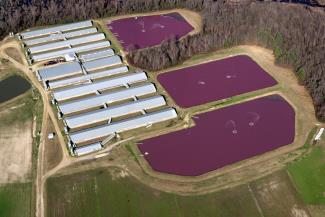
NC Hog farm with lagoons |
|
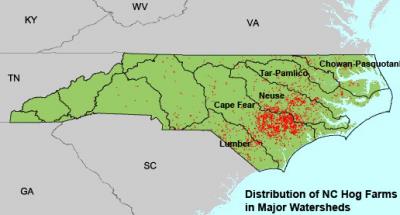 Evidence in the five trials showed that there were alternatives to the traditional system of storing hog waste in lagoons followed by spraying on pasture resulting in odor complaints. Plaintiffs’ attorneys claimed that the company was aware of the problems caused by their contractors’ manure disposal and were cognizant of technical solutions, but “willfully chose not to do anything about it.” According to plaintiffs’ attorneys, Wallace and Graham, the law firm opted to sue Smithfield Foods rather than the contractors based on the depth of the pockets of the integrator Smithfield a subsidiary of the WH Group of China. Evidence in the five trials showed that there were alternatives to the traditional system of storing hog waste in lagoons followed by spraying on pasture resulting in odor complaints. Plaintiffs’ attorneys claimed that the company was aware of the problems caused by their contractors’ manure disposal and were cognizant of technical solutions, but “willfully chose not to do anything about it.” According to plaintiffs’ attorneys, Wallace and Graham, the law firm opted to sue Smithfield Foods rather than the contractors based on the depth of the pockets of the integrator Smithfield a subsidiary of the WH Group of China.
In his opinion, Judge J. Harvie Wilkinson III referred to “outrageous conditions at Kenlaw Farms.” citing neglect of both animal and human welfare. The opinion which has now entered case law supports the contentions of Senator Cory Booker [D-NJ] and Senator Elizabeth Warren [D-MA] who are promoting legislation to ban all CAFOs. Judge Wilkinson referred to the “decades-long transition to concentrated animal feeding operations that lays bare the connection between animal welfare and human welfare and the consequences of its breach.”
In reality the problem is not attributable to either the large numbers of hogs held on a single farm or their stocking density. Generation of odor and contamination of groundwater is due to the primitive waste disposal system inconsistent with the volume of fecal material produced. As with egg-production farms that previously used flush removal of manure with lagoons systems, the the installations on hog-CAFOs in North Carolina provided inadequate storage and relied on frequent spray application on limited areas of pasture for disposal. If Smithfield Foods and other hog producers wish to remain in North Carolina and possibly other states, given the precedent created by these five cases, alternate technology including anaerobic digestors will be required at considerable capital costs.
Given the prospect of more stringent environmental regulations to be imposed by the incoming Administration and the reaities of tort law, all operators of CAFOs including egg-production complexes should consider the potential for nuisance and environmental degradation from their operations.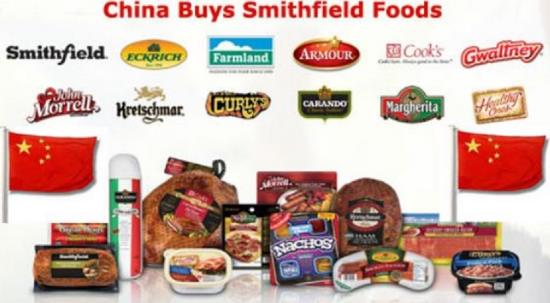 Many existing and new complexes have invested in manure drying and composting installations to turn the liability of manure into a positive income stream. Many existing and new complexes have invested in manure drying and composting installations to turn the liability of manure into a positive income stream.
The Smithfield Foods cases will have profound implications for all intensive livestock production. The technology to be a good neighbor and steward of the environment is available and the clock is ticking.
|

|
Immunization of the American Population Against COVID-19
|
11/16/2020 |
|
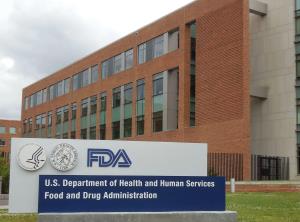 It is thankfully apparent that at least the U.S. now has two COVID-19 candidate vaccines represented by the Pfizer-BioNTech and Moderna Therapeutics mRNA-based products. Both vaccines have proven effective and safe as demonstrated by extensive field trials reported in press releases by the two companies. Emergency Use Approval by the Food and Drug Administration is expected in late December following expedited but thorough scientific review. It is thankfully apparent that at least the U.S. now has two COVID-19 candidate vaccines represented by the Pfizer-BioNTech and Moderna Therapeutics mRNA-based products. Both vaccines have proven effective and safe as demonstrated by extensive field trials reported in press releases by the two companies. Emergency Use Approval by the Food and Drug Administration is expected in late December following expedited but thorough scientific review.
Both vaccines are based on mRNA coding for spike proteins of the virus that stimulate production of antibodies. Developed under the inappropriately named “Warp Speed” program and funded to a level of $10 billion both vaccines require and initial dose followed by a second ‘booster’ at intervals of 3 to 4 weeks depending on type and future field experience.
The Federal government funded the developers of vaccines to concurrently refine development of the antigenic mRNA and to establish a production capability so that vaccines would be available shortly after FDA approval. Approximately 50 million doses of the two vaccines will be ready for distribution during the first two months of 2021 with larger quantities thereafter.
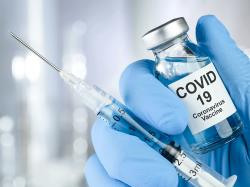 The Pfizer vaccine must be stored at -100F but remains potent for 10 days at -78F corresponding to the temperature of dry ice. The Moderna vaccine can be stored at -4F for extended periods but requires a temperature of 35 to 45F corresponding to a conventional refrigerator, for no longer than 30 days. The Pfizer vaccine must be stored at -100F but remains potent for 10 days at -78F corresponding to the temperature of dry ice. The Moderna vaccine can be stored at -4F for extended periods but requires a temperature of 35 to 45F corresponding to a conventional refrigerator, for no longer than 30 days.
The Federal government has arranged for the military to coordinate the acquisition and distribution of vaccine and has stockpiled adequate quantities of vials, needles and other consumables to support a nationwide vaccination program. It is however evident that the commercial sector with experience in cold-chain logistics will have to be involved. Fedex and UPS will be the most likely carriers, medical supply companies such as McKesson will provide local storage and distribution. Pfizer has planned a $2 billion program to install low-temperature freezers in warehouses and has developed transport modules containing dry ice to support their product.
Pharmacies eligible under the Federal Pharmacy Partnerships Strategy for COVID-19 Vaccination will participate in administration to recipients. This may be impractical since the proposed COVID vaccines are more difficult to store and inject than an annual flu-shot. Even if half our population agree to receive the vaccine, with a two-dose program it will be necessary to administer 310 million doses in eight to ten months subject to the availability of vaccine. Given the stringent requirements for storage and handling of the Pfizer vaccine, it isdoubtful whether conventional pharmacies, whether as stores or located in supermarkets will be able to achieve the required rate of administration or to maintain viability of the product. (Given paperwork, an available pharmacist and no line of people waiting, my annual influenza vaccination in September took 30 minutes in a CVS pharmacy). Given the logistic complications involved and the need for rapid administration and to establish a reliable database, it will probably be necessary for recipients to attend vaccination clinics at hospitals, national guard armories or convention centers equipped to store and handle vaccine that must be administered at a high rate.
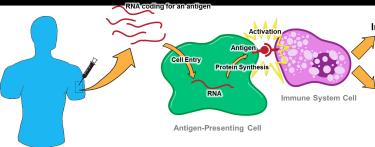 The most pressing problem relates to whether citizens are willing to take the vaccine. Various surveys have shown a projected compliance rate of 20 to 50 percent. Unfortunately, the question of vaccination was politicized along with many aspects of the prevention and control of COVID including the collection, reporting and analysis of data. The selection of the term "Warp-Speed" for the development of the program was extremely inappropriate since it created an image of speed at the expense of science. Many prospective recipients are concerned over safety and to a lesser extent efficacy given the statements from Administration spokespersons and contradictory information from established public health specialists. Prospective recipients of vaccine have been confused by deliberate underplaying of the gravity of the Covid-19 epidemic in the U.S. We have been subject to official denial regarding the severity of the infection and the need for testing in the face of ascending incidence and fatality rates. The control of COVID-19 by non-medical modalities has not been supported by the Federal government and has been delegated (or abrogated) to states. Confidence in vaccines among our polarized citizenry has been adversely affected by denigrating and criticizing established and recognized professionals in the areas of epidemiology and those with experience in developing and administrating vaccines and the control of infectious diseases. Suspicion that agencies including the FDA, NIH and the CDC were subject to political pressure to approve ineffective therapeutics as a “quick-fix” expedient and downplaying the significance of COVID-19 have all generated a disinclination to be at the head of the line to receive a vaccination. The most pressing problem relates to whether citizens are willing to take the vaccine. Various surveys have shown a projected compliance rate of 20 to 50 percent. Unfortunately, the question of vaccination was politicized along with many aspects of the prevention and control of COVID including the collection, reporting and analysis of data. The selection of the term "Warp-Speed" for the development of the program was extremely inappropriate since it created an image of speed at the expense of science. Many prospective recipients are concerned over safety and to a lesser extent efficacy given the statements from Administration spokespersons and contradictory information from established public health specialists. Prospective recipients of vaccine have been confused by deliberate underplaying of the gravity of the Covid-19 epidemic in the U.S. We have been subject to official denial regarding the severity of the infection and the need for testing in the face of ascending incidence and fatality rates. The control of COVID-19 by non-medical modalities has not been supported by the Federal government and has been delegated (or abrogated) to states. Confidence in vaccines among our polarized citizenry has been adversely affected by denigrating and criticizing established and recognized professionals in the areas of epidemiology and those with experience in developing and administrating vaccines and the control of infectious diseases. Suspicion that agencies including the FDA, NIH and the CDC were subject to political pressure to approve ineffective therapeutics as a “quick-fix” expedient and downplaying the significance of COVID-19 have all generated a disinclination to be at the head of the line to receive a vaccination.
Fortunately, the pharmaceutical industry and specifically the manufacturers of vaccines issued a joint statement in October confirming that they would only submit data and request FDA approval when they were confident that the vaccine was both safe and effective based on field trials. To this point there was concern that November 3rd was a critical date for approval based on political considerations. It will be the responsibility of the incoming Administration to restore confidence and to convince the public that the FDA will base approval on evaluation only of scientific data.
It is considered significant that the first action taken by president-elect Biden was to establish a COVID taskforce of twelve leading academics all with practical experience in areas of epidemiology and public health. Cooperation in the form of a joint transitional task force on planning and execution of a difficult vaccination program will be essential to successful protection against COVID-19 and saving lives.
It is an established fact that until COVID-19 is controlled, there cannot be a restoration of either a normal life or our economy. The alternative approach of ignoring COVID and making belief that it did not exist has resulted in over 10 million cases, 250,000 fatalities and billions of dollars in cost and hardship. We cannot look back but must make the best use of available vaccines, prioritized to our first line responders and those with predisposing conditions. Hopefully the initial vaccination program will be successful and that progressively more citizens will be immunized. The theory of herd immunity from natural exposure has been disproved and is now the preoccupation of political hacks, science deniers, charlatans and mountebanks. Ultimately, to control COVID-19 we will have to rely on a combination of common-sense precautions combined with effective vaccines. Until a high proportion of our population is immunized, we will be dependent on masking, social distancing and avoiding crowds. These precautions will be required as we attempt to "flatten the curve" for the third time.
We owe our scientists both in basic molecular biology and applied vaccinology our gratitude. We are indebted to first responders for the care of those who have contracted COVID and we extend our condolences to the bereaved among us as every one of the quarter million fatalities was once a living functioning person with a family, aspirations and future opportunities.

|
Questions over China’s Commitment to Phase-One Trade Agreement
|
11/03/2020 |
|
 Agricultural commodities represent 22 percent of the products covered in the January 2020 Phase-One trade agreement with China. Despite optimistic projections by the office of the U.S. Trade Representative, actual deliveries of commodities have fallen short of the commitment entered into by China. Orders lagged through the 2019-2020 marketing year although there has been an increase through September and into the subsequent market year. It is calculated that China will need to import 62 percent of their commitment during the fourth quarter of the current year to comply with the 2020 target. Agricultural commodities represent 22 percent of the products covered in the January 2020 Phase-One trade agreement with China. Despite optimistic projections by the office of the U.S. Trade Representative, actual deliveries of commodities have fallen short of the commitment entered into by China. Orders lagged through the 2019-2020 marketing year although there has been an increase through September and into the subsequent market year. It is calculated that China will need to import 62 percent of their commitment during the fourth quarter of the current year to comply with the 2020 target.
 Soybeans comprised 60 percent of U.S. agricultural exports to China in 2017. Following the initiation of the trade conflict, China turned to other suppliers of soybeans resulting in U.S. exports through September 2020 attaining half of pre-2018 levels. An added complication was the reduced demand by China following the loss of up to 30 percent of their hog herd as a result of African swine fever. Although China requires corn and is now importing this commodity the impetus is partly a result of a 2019 World Trade Organization ruling concerning unfilled tariff rate quotas. Despite the requirement for imported corn China turned to other suppliers than the U.S. Soybeans comprised 60 percent of U.S. agricultural exports to China in 2017. Following the initiation of the trade conflict, China turned to other suppliers of soybeans resulting in U.S. exports through September 2020 attaining half of pre-2018 levels. An added complication was the reduced demand by China following the loss of up to 30 percent of their hog herd as a result of African swine fever. Although China requires corn and is now importing this commodity the impetus is partly a result of a 2019 World Trade Organization ruling concerning unfilled tariff rate quotas. Despite the requirement for imported corn China turned to other suppliers than the U.S.
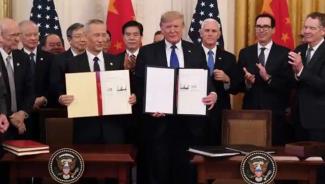 The trend in exports of both industrial goods and agricultural commodities from 2018 onwards suggests that trade wars are not “short and easily won”. Tariffs on imported goods are borne by consumers not the exporting nation. Federal subsidies to the agricultural sector in 2019 and 2020 to compensate for losses in exports were effectively at the expense of taxpayers, adding to the national debt. The trend in exports of both industrial goods and agricultural commodities from 2018 onwards suggests that trade wars are not “short and easily won”. Tariffs on imported goods are borne by consumers not the exporting nation. Federal subsidies to the agricultural sector in 2019 and 2020 to compensate for losses in exports were effectively at the expense of taxpayers, adding to the national debt.
Trade disputes with nations such as China should be resolved by negotiation and the use of international agencies such as the WTO rather than embarking on self-destructive tariff wars that invite retaliation. Confronting the World’s second largest economy should not have involved a precipitous head-on confrontation in 2017. Resolution of real grievances could be achieved more easily through cooperation and collaborative action with our erstwhile allies who are faced with similar problems of China extending subsidies to state-owned enterprises, coercive trade practices and theft of intellectual property.

|
The Need to Control COVID-19
|
10/31/2020 |
|
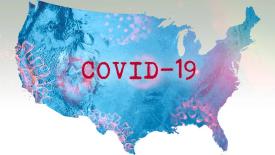 The statement by White House Chief of Staff, Mark Meadows, in a CNN interview on Sunday, October 25th is cause for concern. He averred, “we are not going to control the pandemic, instead we will focus on vaccines, therapeutics and other mitigation areas.” In the week running up to the November 2020 election, the U.S. has recorded 9.0 million diagnosed cases and 230,000 fatalities. Incident cases rose to 80,000 per day with more than 1,000 fatalities. Both the incidence and mortality rates are understatements given deficiencies in testing and assigning the cause of death. Worldwide there have been 44 million diagnosed cases with over 1.4 million deaths. It is evident that the U.S. is experiencing an upsurge in cases with daily reports of new cases approaching 80,000 with close to 50,000 currently hospitalized. The COVID pandemic has profoundly impacted the economy of our nation as evidenced by high unemployment, low and fluctuating earnings reported by public companies and a stock market that shed close to six percent of shareholder value over four consecutive trading days. The statement by White House Chief of Staff, Mark Meadows, in a CNN interview on Sunday, October 25th is cause for concern. He averred, “we are not going to control the pandemic, instead we will focus on vaccines, therapeutics and other mitigation areas.” In the week running up to the November 2020 election, the U.S. has recorded 9.0 million diagnosed cases and 230,000 fatalities. Incident cases rose to 80,000 per day with more than 1,000 fatalities. Both the incidence and mortality rates are understatements given deficiencies in testing and assigning the cause of death. Worldwide there have been 44 million diagnosed cases with over 1.4 million deaths. It is evident that the U.S. is experiencing an upsurge in cases with daily reports of new cases approaching 80,000 with close to 50,000 currently hospitalized. The COVID pandemic has profoundly impacted the economy of our nation as evidenced by high unemployment, low and fluctuating earnings reported by public companies and a stock market that shed close to six percent of shareholder value over four consecutive trading days.
The actions of the Administration have been widely criticized, both by public health specialists within the U.S. and by the World Health Organization. Effectively, the Administration has adopted the Swedish model and has embraced the Great Barrington Declaration. Simply put, this approach involves relaxation of most restrictions but with attempts to protect the elderly and those with predisposing conditions, including diabetes, obesity, and immunosuppression. These demographics unfortunately represent close to a third of our population.
Although politically comforting and expedient, science does not support the principle of “herd immunity” with respect to COVID. Herd immunity has never been achieved with any disease absent an effective vaccine stimulating durable immunity. Evidence from Stockholm suggests that the level of antibodies in the population is far lower than the threshold of at least 50 percent of the population required to meaningfully control the infection. There is insufficient knowledge concerning the antibody status of those recovering from COVID-19 irrespective of whether they were asymptomatic or required supportive treatment. The proponents of herd-immunity appear to ignore the long-term consequences of infection. The virus is pantropic in its effect with both cardiac and neural changes in addition to fatigue in the so-called “long haulers”.
Prominent epidemiologists have calculated that without currently-known measures including masking, maintaining social distance, and avoiding large gatherings, cases from COVID-19 will be measured in the millions over the coming year with a proportional rise in fatalities. It is a disquieting thought that correcting for the relative sizes of the U.S. population, the 1918 outbreak of H1N1 influenza resulted in as many fatalities expressed as a rate by October 1918 as the U.S. has experienced with COVID.
Epidemiologists and public health specialists have issued the John Snow Memorandum to counter the fallacies and illogic of the Great Barrington Declaration. They characterize the approach to ignoring known preventive measures to create herd immunity as a gigantic gamble, hoping for a rapid return to pre-COVID social and economic activities.
It may be inferred from the statement by Chief of Staff Mark Meadows that the Administration will depend on protection from an as yet unavailable and unapproved vaccine. Despite the efforts of the major pharmaceutical manufacturers, a vaccine will not be generally available until the beginning of 2021. Pfizer, the apparent leader in the race, has yet to conclude the evaluation of their Phase-3 trial involving 40,000 participants conducted in the U.S., Brazil, Argentina, South Africa, Germany, and Turkey. Results of the trial should be available by the end of November, after which statistical analysis and peer review will be required before approval by the FDA. Pfizer anticipates 164 cases of COVID in their trial but an interim evaluation will consider efficacy after 35 cases have been diagnosed in the trial population. If 26 are in the placebo group, the vaccine could be approved by the FDA on the basis of 50 percent efficacy. Moderna will evaluate their vaccine after 53 cases and AstraZeneca after 75 COVID diagnoses in their respective trial groups.
Even if a vaccine is approved at the beginning of January 2021 only sufficient quantities will be available to commence distribution to priority groups including first responders, the elderly, and those with predisposing conditions. Two doses with a month interval will be required to stimulate durable immunity. Appropriate monitoring will be required for at least three months after initiating mass vaccination to distinguish between any possible adverse vaccine reactions and the large number of spontaneous but unrelated clinical conditions and mortalities that are sure to occur among recipients of the vaccine.
Mass vaccination will impose logistic challenges in distributing and administering a biological product that requires a critical cold chain. Simply stating that “the Army will do it” is more an aspiration than a specific plan. The reluctance of a high proportion of the U.S. population to receive a vaccine will obviously reduce the proportion of those that become immune within the population. It is yet unknown whether development of antibodies will actually provide protection from clinical effects or reduce the extent of virus shedding. An additional unknown is the durability of antibody levels in the face of ongoing challenge and the possible mutation of SARS-CoV-2 over time. It is possible that as with other coronavirus infections, annual re-vaccination may be required, but this challenge is in the future.
It is accepted that there will be a delay in obtaining sufficient quantities of presumably effective vaccines, logistic complications associated with distribution and administration and reluctance to be immunized. This suggests that we must continue to adopt measures that have been shown to be effective in nations such as South Korea, Taiwan, and even China. These nations adopted rapid testing for antigen with strict quarantine of those shown to be exposed, contact tracing, masking, and social distancing. The countries that have achieved the greater success in controlling COVID have followed the advice of scientists and have a culture that accepts masks and are willing to conform to health directives.
From the perspective of our industry, we must apply scientific principles, eschewing quick fixes and false prophets. With the onset of winter we must ensure a high level of immunity against seasonal influenza, that will be a complicating factor both with respect to the diagnosis and clinical response to COVID infection. We must increase the efficiency of testing with quarantine and contract tracing and apply common sense in our business and social activities.
Experience over the past nine months has shown that COVID cannot be ignored. There is no evidence that the infection will spontaneously disappear and without appropriate control measures, we could experience a replay of the 1918-1920 influenza pandemic. We have yet to receive an effective vaccine, there is no consistently effective or specific therapeutic agent (the Administration ‘cure’). We are relying on the stretched resources of our medical community who are reducing mortality by administering supportive therapy and a high level of care.
COVID-19 dominates all aspects of our life at present and we will not return to normality until it is controlled. We have a collective responsibility to respond to sound scientific advice and over the intermediate term, suppress the incidence rate especially in rural areas where our farms and packing plants are located.

|
Conflict Between Ethanol Industry and Oil Refiners
|
10/26/2020 |
|
COVID has markedly reduced gasoline consumption, affecting both oil refiners and ethanol producers resulting in mutual conflicts. Following the court decision that forced the EPA to reject requests for waivers from refiners, the oil refining lobby induced a number of U.S. Republican Senators to request the EPA to consider a general waiver to reduce biofuel blending obligations in 2021.
|
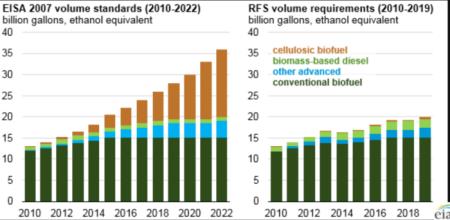
RFS with Cellulosic Ethanol as an Aspirational Unreality |
|
The granting of waivers to oil refiners is to the detriment of the hard-pressed ethanol industry that is in turn an important market for corn growers. Oil refiners have obviously suffered from decreased demand despite the lower cost of crude contributing to a relatively constrained "crack spread". In a letter to the EPA, Senators including Shelley Moore Capito (R-WV) and Ted Cruz (R-TX) stated, "ethanol producers and refiners should proportionally share the economic hardships associated with a current decline in fuel demands rather than having government mandates shift the burden of the former onto the latter".
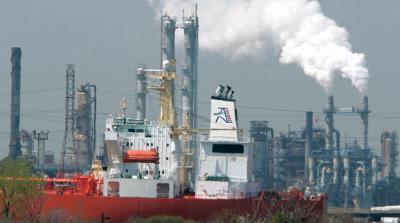 The American Petroleum Institute commented "EPA should move immediately to employ a general waiver to limit the 2021 obligation". The American Petroleum Institute commented "EPA should move immediately to employ a general waiver to limit the 2021 obligation".
Farmers should be placated by recent rises in the price of corn that closed at 420 per bushel on Friday October 23rd. Ethanol was priced at $1.42 per gallon up 29 cents compared to a five-year low of $0.92 per gallon on March 26th. Ethanol is 36 cents per gallon higher than gasoline quoted at $1.16 per gallon on Friday, October 23rd.
The ying-yang between the American Petroleum Institute and the Renewable Fuels Association illustrates the dependence of the ethanol industry on government mandates to survive. The justification for the renewable fuels program has long since passed with the U.S. having gained energy independence.
|

|
Profound Effects of COVID-19 on Current and Future Shopping Trends
|
10/15/2020 |
|
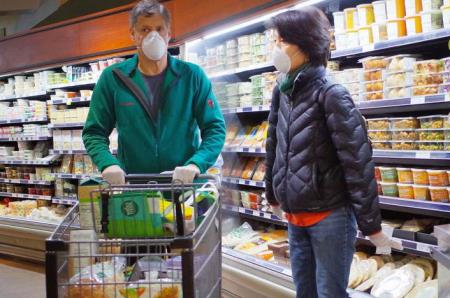 Market research group, C+R recently conducted a survey among 2,000 consumers concerning purchasing habits and cost of food. Approximately 85 percent of those surveyed considered that they are paying more for groceries with an escalation in the price of protein as the major contributor to food inflation. The respondents claim to have paid 68 percent more for meat compared to February, 48 percent more for milk and eggs, 45% for fish and 28% for poultry. Market research group, C+R recently conducted a survey among 2,000 consumers concerning purchasing habits and cost of food. Approximately 85 percent of those surveyed considered that they are paying more for groceries with an escalation in the price of protein as the major contributor to food inflation. The respondents claim to have paid 68 percent more for meat compared to February, 48 percent more for milk and eggs, 45% for fish and 28% for poultry.
The figure for eggs may be misleading since prices were relatively low in February, but for the past month retail prices have demonstrated successive weekly rises as a result of seasonal demand. Escalation in the price of meat is understandable given that supply chains were seriously disrupted by COVID-19 plant shutdowns. In contrast, poultry processing plants were relatively unaffected, and supplies were only constrained by the surge in panic buying during March. At the present time, supply of most chicken and derived products is in balance with the demand with stable prices. The survey did not consider turkey meat that has risen in price attributed to a judicious reduction in supply after a long period of negative margins resulting from over-production. Consumption through the traditional Thanksgiving and Christmas periods will be depressed in 2020 impacting this segment of the industry.
The survey also showed that 75% of respondents were paying more for household goods including 59% for cleaning supplies, 39% for paper products and 33% for personal care and cosmetics.
 A surprising 83% of respondents reported difficulty in finding specific grocery items, again reflecting disruption in supply chains. An additional factor is that food producers have narrowed their ranges of products in an attempt to rationalize the logistics and cost of manufacturing and packaging. Approximately 90% of consumers were concerned that groceries will continue to increase in price and almost the same proportion consider that current shortages will continue. A surprising 83% of respondents reported difficulty in finding specific grocery items, again reflecting disruption in supply chains. An additional factor is that food producers have narrowed their ranges of products in an attempt to rationalize the logistics and cost of manufacturing and packaging. Approximately 90% of consumers were concerned that groceries will continue to increase in price and almost the same proportion consider that current shortages will continue.
The effect of increased job losses and the delay in introducing a second stimulus package has resulted in 65 percent of consumers reducing their expenditure on food compared to the onset of the pandemic. To economize, 43% of families are eating less meat, 33% less poultry, 31% were avoiding higher-priced organic items, and 30% are buying in bulk. This is reflected in the quarterly sales data posted by club stores including Costco and Sam's.
Casting forward, shoppers do not share the Administration view that the end of COVID is "around the corner" or that the disease "will just go away soon". Twenty-three percent consider that they will return to shopping at pre-pandemic levels only in the spring of 2021, 20 percent estimate during summer of 2021 with five percent each for the fall or winter of 2021.
Disquietingly there is little confidence in a vaccine as only ten percent of those surveyed consider that the availability of an effective and safe product will encourage a return to pre-pandemic purchasing patterns. Consistent with Maslow's Hierarchy of needs, 68 percent of consumers indicated that they would devote the majority of any second stimulus check to groceries and food.
Consumers are concerned that a second wave of COVID-19 will result in additional shortages of grocery products and most shoppers have accepted the inevitability of higher food prices. Contrary to the "pantry stuffing" displayed in March and early April, fully a third of respondents have stored only enough food for two weeks or less. This is possibly a reflection of growing financial restraints.
A further take-away from the C+R survey is that 70 percent of respondents believe that grocery shopping will change permanently. A similar proportion still express "discomfort" when shopping and 70 percent have used grocery delivery or pick up for the first time since the emergence of COVID-19. Contrary to prevailing political rhetoric, almost half of consumers are disinclined to patronize a store that does not have a mask policy.
The food industry and retail grocers should accept the results of the C+R Survey and plan for a continuation in current COVID trends over the intermediate term. The willingness to return to previous patterns of selection and purchase will depend on restoration of the economy. This goal will be totally driven by realistic control of COVID through a combination of protective measures and immunity stimulated by vaccines. Societal disruptions caused by COVID will persist through 2024 including divergence in income among ethnic and cultural demographics, altered spending patterns, more stringent entertainment priorities, remote education, lower population growth and changes in location of residences. The food industry will have to be sensitive to these changes and respond accordingly.

|
Intended Strategy of Opponents to Intensive Livestock Production
|
10/04/2020 |
|
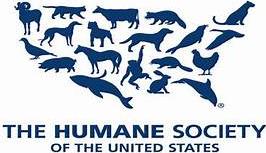 The recent Taking Action For Animals Conference (TAFA) held virtually on September 19th and 20th provided an insight into the strategy to be employed by the Humane Society of the United States (HSUS) and kindred organizations in future opposition to intensive livestock production. In an October 2020 report circulated by the Animal Agriculture Alliance, it is clear that activists will capitalize on current public concern over COVID-19. HSUS and other organizations that oppose animal agriculture and promote a vegan agenda are adept at manipulating outbreaks of human disease and current public concerns to promote their cause. The recent Taking Action For Animals Conference (TAFA) held virtually on September 19th and 20th provided an insight into the strategy to be employed by the Humane Society of the United States (HSUS) and kindred organizations in future opposition to intensive livestock production. In an October 2020 report circulated by the Animal Agriculture Alliance, it is clear that activists will capitalize on current public concern over COVID-19. HSUS and other organizations that oppose animal agriculture and promote a vegan agenda are adept at manipulating outbreaks of human disease and current public concerns to promote their cause.
In past years, HSUS has unjustifiably criticized commercial livestock agriculture for propagating animal diseases and increasing the risk of foodborne infections. In a departure from past claims Adam Zipkin, Counsel to U.S. senator Cory Booker (D-NJ.) stated, “Factory farms poison our environment. Factory farms create serious risks to public health.” He added without substantiation that “scientists are telling us in no uncertain terms that the next pandemic is at least as likely to start on a factory farm here in the U.S. as it is at a wildlife market in some other country”. This is factually incorrect and unlikely since it is an epidemiologic reality that emerging viral infections including Ebola, Nipah disease, SARS, MERS and COVID had their origin in wildlife populations. The HSUS is providing a new twist to their ongoing opposition to meat consumption by suggesting that concentrated animal feeding operations serve as a potential source of new human diseases.
Zipkin also categorically implicated “rampant use of antibiotics in factory farms” as a factor responsible for the emergence of novel infections. Antibiotics do not act against viruses and as a counsel to a Senator, Zipkin should be aware of the statutory restrictions placed on the use of antibiotics by the Food and Drug Administration, effective January 1st 2017.
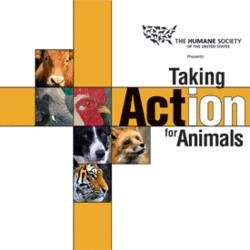 Without specifying diseases, Zipkin asserted that intensive agricultural operations are “breeding grounds for viruses, such as influenza, that can easily jump from farm animals to people.” Although there is some justification for this statement, there is no specific example of an influenza pandemic originating directly from livestock. Even the 1997 avian influenza H5N1 panornitic in China and Southeast Asia was responsible for only a limited number of cases relative to the extent of the infection in poultry and the exposure of individuals on farms and through the wet market distribution system in 50 nations. Without specifying diseases, Zipkin asserted that intensive agricultural operations are “breeding grounds for viruses, such as influenza, that can easily jump from farm animals to people.” Although there is some justification for this statement, there is no specific example of an influenza pandemic originating directly from livestock. Even the 1997 avian influenza H5N1 panornitic in China and Southeast Asia was responsible for only a limited number of cases relative to the extent of the infection in poultry and the exposure of individuals on farms and through the wet market distribution system in 50 nations.
Speakers at the virtual TAFA conference pointed to the prevalence of COVID-19 among workers in meat plants. There was no evidence that workers acquired infection from the product handled. The high incidense rates from late February through April can be attributed to the proximity of workers, defective ventilation systems in plants, absence of personal protective equipment and failure to introduce test and isolation programs. Predictably, speakers at the TAFA conference were eager to draw leap-of-faith correlations between confinement of livestock and emergence of disease.
In the commentary on the TAFA conference, HSUS urged pressure on legislators to promote plant-based protein in the place of animal agriculture and to reduce the concentration of livestock. The HSUS also calls for policies to protect natural ecosystems from agricultural expansion as exemplified in burning the fringes of the Amazon Rainforest for both cattle production and soybean cultivation in Brazil. Although this is a laudable goal supported by this commentator, it has nothing to do with the emergence of human disease. There is only an indirect correlation between intensive agriculture and emergence of disease. Destruction of rainforests displaces native species resulting in endemic viruses of free-living animals more accessible to humans. The same could be said for destruction of rainforests in Pacific nations to develop palm oil plantations having nothing to do with animal agriculture.
The HSUS also calls for a ban on the sale of poultry at live bird markets, a sentiment which is supported as this system of distribution promotes the persistence of avian influenza and other infections. There is the possibility of emergence of new strains of avian influenza including H7N3 a pathogen of domestic birds infecting humans coming into contact with aerosols and viscera at wet markets.
The direction of the TAFA Conference demonstrates the cynical willingness of activist organizations to distort science and manipulate public concern to promote a vegan agenda. Their assertions have minimal scientific support. Epidemiologists recognize that emergence of human infections from wildlife, including SARS and Nipah virus and the most recent COVID-19, were bat-origin infections possibly with an intermediate reservoir host and were not in any way associated with livestock.

|
EPA Statements on Chlorpyrifos Cynically Ingenuous
|
09/29/2020 |
|
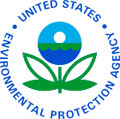 Environmental scientists and neurobiologists generally regarded the pesticide chlorpyrifos as being detrimental to development of the brain and nervous system of fetuses and young children. In 2015, the previous Administration initiated a ban on the pesticide after many studies were published confirming interference in neural development. EPA scientists at the time accepted both U.S. and international published studies that in fact led to banning the chemical in the EU. Environmental scientists and neurobiologists generally regarded the pesticide chlorpyrifos as being detrimental to development of the brain and nervous system of fetuses and young children. In 2015, the previous Administration initiated a ban on the pesticide after many studies were published confirming interference in neural development. EPA scientists at the time accepted both U.S. and international published studies that in fact led to banning the chemical in the EU.
 In 2017, the then EPA Administrator, Scott Pruitt reversed the 2015 decision stimulating legal opposition to his decision. The EPA was under court order to decide whether to ban chlorpyrifos no later than July 2019. The current EPA Administrator Andrew Wheeler has rejected petitions by organizations representing public health and the environment. In 2017, the then EPA Administrator, Scott Pruitt reversed the 2015 decision stimulating legal opposition to his decision. The EPA was under court order to decide whether to ban chlorpyrifos no later than July 2019. The current EPA Administrator Andrew Wheeler has rejected petitions by organizations representing public health and the environment.
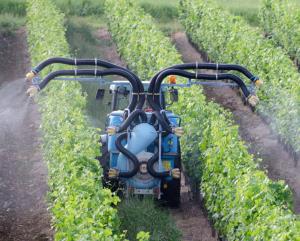 At issue is the requirement imposed by the EPA that they will not consider published studies in peer-reviewed journals in their deliberations and decisions unless they have access to raw data. The peer-review process evaluates experimental design, procedures, statistical analysis conclusions and the integrity of authors and their institutions. Examination of raw data is not a normal practice and is resorted to only in the event of allegations of academic dishonesty. The issue of the so-called "secret science" barrier has enabled the EPA to selectively exclude important published research studies thereby providing cover for both delays in rule-making and adverse decisions. At issue is the requirement imposed by the EPA that they will not consider published studies in peer-reviewed journals in their deliberations and decisions unless they have access to raw data. The peer-review process evaluates experimental design, procedures, statistical analysis conclusions and the integrity of authors and their institutions. Examination of raw data is not a normal practice and is resorted to only in the event of allegations of academic dishonesty. The issue of the so-called "secret science" barrier has enabled the EPA to selectively exclude important published research studies thereby providing cover for both delays in rule-making and adverse decisions.
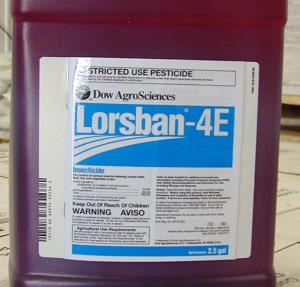 Recently the EPA issued a statement to the effect that "despite several years of study the science addressing neurodevelopmental effects of chlorpyrifos remains unresolved". This is a cynical and deliberate neglect of established science, placing political and economic considerations above public health and wellbeing. The EPA acknowledged to a three-judge panel of the U.S. Court of Appeals for the Ninth Circuit that the Agency accepts that chlorpyrifos can cause neurodevelopmental effects. The Agency claims that there are disputes over the relationship between the level of exposure and harm. Chlorpyrifos is certainly a case for application of the precautionary principle even if scientific evidence did not support an outright ban. Recently the EPA issued a statement to the effect that "despite several years of study the science addressing neurodevelopmental effects of chlorpyrifos remains unresolved". This is a cynical and deliberate neglect of established science, placing political and economic considerations above public health and wellbeing. The EPA acknowledged to a three-judge panel of the U.S. Court of Appeals for the Ninth Circuit that the Agency accepts that chlorpyrifos can cause neurodevelopmental effects. The Agency claims that there are disputes over the relationship between the level of exposure and harm. Chlorpyrifos is certainly a case for application of the precautionary principle even if scientific evidence did not support an outright ban.
The well being of the next generation is far more important than the narrow political agendas of decision makers who have the obligation to protect health and well being.

|
Responding to a Crisis
|
09/22/2020 |
|
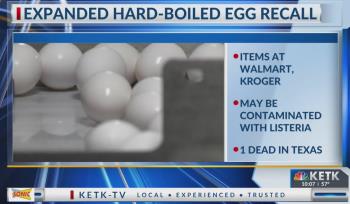 Inevitably problems occur in shell-egg and liquid production complexes that may have consumer and customer-related implications. Where a brand is involved, degradation of image must be avoided to minimize loss of goodwill and future sales. In the age of social media and viral videos, an appropriate response to a crisis situation is critical to recovery and stabilization of an enterprise. Inevitably problems occur in shell-egg and liquid production complexes that may have consumer and customer-related implications. Where a brand is involved, degradation of image must be avoided to minimize loss of goodwill and future sales. In the age of social media and viral videos, an appropriate response to a crisis situation is critical to recovery and stabilization of an enterprise.
Within the context of egg production, the most probable crisis situations include:-
- An egg-borne infection including but not limited to salmonellosis or listeriosis.
- A welfare-related issue usually involving a clandestine video.
- Allegations of worker exploitation, harassment, or unhealthful or potentially injurious working conditions or an outbreak of a disease such as COVID-19 among workers.
- Contamination with a pesticide or chemical toxin.
- Allegations of illegal action relating to employment of non-documented aliens, collusion over prices, fraud and deceptive labeling, contravention of the Food Safety Modernization Act or any intervention by a Federal agency.
- Precipitation of an environmental incident including discharge of pollutants or improper use of pesticides.
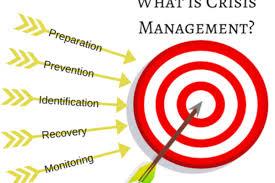 Given that the range of possible situations is fairly predictable, appropriate planning, installation of equipment, maintenance of facilities and conformity to standard operating procedures are required to prevent situations, thereby avoiding the need to respond to a crisis. Given that the range of possible situations is fairly predictable, appropriate planning, installation of equipment, maintenance of facilities and conformity to standard operating procedures are required to prevent situations, thereby avoiding the need to respond to a crisis.
Management should encourage communication among responsible levels within the enterprise so that minor issues can be identified and resolved before the emergence of a larger and publicized crisis. It is always advisable to rectify a small problem then to either ignore or countenance a situation that can ultimately bring down an enterprise. This was the case with the Blue Bell Creamery that detected Listeria in their ice-cream plants but elected not to take appropriate action other than ignoring and even falsifying laboratory records until a trace-back from cases of listeriosis resulted in complete closure of all facilities for an extended period. Fines totaling $17 million were imposed in this case.
Predicting possible adverse advents allows management to not only implement preventive measures, but the exercise of planning for a crisis also stimulates the development of appropriate response strategies. This involves teamwork among management and may include contributions from public relations specialists who in addition to providing advice have valuable contacts in the mainstream media. It should be possible to develop a series of appropriate brief statements and pre-prepared videos in response to predictable events. Attempting to draft responses under pressure and deadlines will inevitably lead to subsequent corrections, retractions and confusion that will elicit further questions and will detract from the core message projected by the company.
The following general principles should guide a crisis response:-
- A single spokesperson should be designated, preferably at executive officer-level who can speak with authority and favorably represent the image of the company in audio and visual media interviews.
- If any subordinates to the spokesperson within the company comment on the crisis, information should not conflict with the message of the principal representative.
- The initial message should clearly indicate the nature of the problem, causation and above all, what action has been or will be implemented to resolve the issue
- Bold and immediate action is necessary to avoid placing the company on the defensive. This may involve a voluntary recall of product before mandated by a Federal agency. Frequently legal advisors suggest a "no-comment" response. Although justified by legal prudence, a no-comment invites suspicion and in many cases, may be viewed as an admission of responsibility from the perspective of public relations.
- All possible media channels should be used to project the required message. This presumes that the designated spokesperson is sufficiently trained and comfortable with media interviews and questioning. Appropriate messages can be posted on a company website, but direct interaction with individuals using social media should be avoided. Statements should be as brief as possible but adequate to convey facts as they are known at the time. Messages should display empathy and concern for those affected.
- It is generally inadvisable to hide behind producer associations and allow bland statements to speak for an individual company
Generally a major crisis, even if resolved in the short term, will require remediation of image. In addition, costs to resolve a crisis include recalls, lost production, defending lawsuits, settlements, operational disruption and fines imposed by Federal or state agencies. From a review of recent crisis situations affecting U.S. and E.U. companies, it is apparent that prevention and preemptive planning is far less expensive then a belated and uncoordinated response.

|
U.S. and The World Health Organization
|
09/16/2020 |
|
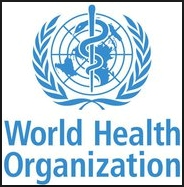 It may be questioned why a newsletter dealing with egg production and aspects of food safety and the economics of the industry comments regularly on aspects of human health and related socio-political concerns. Accepting the concept of One-Health, human and livestock infections and the success of the poultry industry are inseparable. Over the past nine months, commentaries and editorials in both EGG-NEWS and sister website CHICK-NEWS have dealt with aspects of COVID-19, considered the most important issue of our generation that has had an unprecedented impact on the profitability of our industry in many ways. It may be questioned why a newsletter dealing with egg production and aspects of food safety and the economics of the industry comments regularly on aspects of human health and related socio-political concerns. Accepting the concept of One-Health, human and livestock infections and the success of the poultry industry are inseparable. Over the past nine months, commentaries and editorials in both EGG-NEWS and sister website CHICK-NEWS have dealt with aspects of COVID-19, considered the most important issue of our generation that has had an unprecedented impact on the profitability of our industry in many ways.
The poultry industry is influenced by the World Organization of Animal Health (OIE) a multinational body functioning under the United Nations, Food And Agricultural Organization (FAO) that establishes standards for the control of animal diseases and maintains a database of outbreaks of both catastrophic and erosive infections of livestock. Export of poultry and international trade in products is strongly dependent on the impartiality, management and operation of the OIE that develops recommended procedures to contain and prevent disease and establishes principles including regionalization and compartmentalization.
By the same token, the detection, control and prevention of diseases in our human population is the province of the United Nations, World Health Organization (WHO), representing 194 member states. In common with many multinational agencies, decisions and actions are frequently impeded by political influence that seemingly runs counter to the dictates of science. Since its inception, the WHO was the international coordinator responsible for eradication of smallpox, almost complete eradication of polio and effective responses to emerging diseases. If the WHO did not exist it would have to be invented.
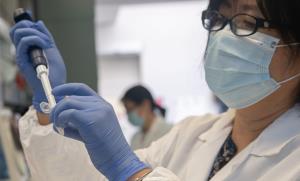 The World Health Assembly is the body responsible for establishing policy for the WHO, determining structure and priorities and appointing the Director and immediate subordinates. Effectively the U.S. is the major supporter of the WHO according to an article in the September 12th edition of The Economist. We provide one third of the $1.3 billion annual budget and U.S. epidemiologists and scientist represent ten percent of the staff of the Agency. The World Health Assembly is the body responsible for establishing policy for the WHO, determining structure and priorities and appointing the Director and immediate subordinates. Effectively the U.S. is the major supporter of the WHO according to an article in the September 12th edition of The Economist. We provide one third of the $1.3 billion annual budget and U.S. epidemiologists and scientist represent ten percent of the staff of the Agency.
It is incongruous that the U.S., currently the World's leading nation in science and medicine, has elected to withdraw from the Agency while a pandemic is in progress. There are obviously issues concerning the performance of the WHO with respect to their response to the emergence of COVID-19. Agency inaction and alleged favoritism of China form the basis of criticism by the U.S. Administration and a justification for the impending withdrawal. Admittedly, the Agency appeared slow to publicize the extent of the infection and to issue appropriate recommendations in January and February. The WHO was tardy in publicizing the need for general use of masking and other protective measures and recommendations on therapy including the use of steroids to suppress the uncontrolled immune response responsible for mortality. In their defense WHO officials claim that they were misled by China regarding the ability of the infection to be airborne and the index nation concealed the extent of COVID-19 in Wuhan the epicenter of the disease. The WHO is dependent on cooperation by member states and the Agency maintains that it requires scientific corroboration and upper-level consensus before issuing recommendation concerning control of an infection. It is understood that the Charter restricts direct involvement in individual member nations without invitation. This inhibits providing specific directions to member nations.
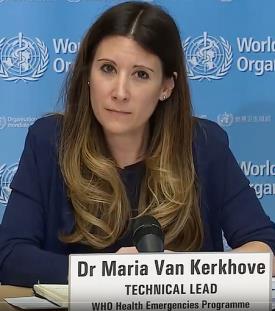 Recognizing deficiencies in addressing the challenges of Ebola and COVID-19, The World Health Assembly initiated a study on the response of the WHO. The objectives include levels of responsibility, possible changes in structure and resources that will be required to contain both the current outbreak and the emergence of future pandemics. Recognizing deficiencies in addressing the challenges of Ebola and COVID-19, The World Health Assembly initiated a study on the response of the WHO. The objectives include levels of responsibility, possible changes in structure and resources that will be required to contain both the current outbreak and the emergence of future pandemics.
The Economist pointed to the disparities in financial support from member nations. The U.S. is responsible for 32 percent of the budget with the UK as the second major donor at approximately 20 percent. This figure is in fact matched by the Bill and Melinda Gates Foundation and far exceeds the contributions of Germany, Japan, the European Commission and even China each supporting approximately five percent of expenditure.
Instead of withdrawing from the WHO in a politically-motivated pique, the U.S. should encourage reform with decisions based on scientific merit and weighted by financial contribution. In the face of pandemics, all nations must rely on concerted, science-based decisions to limit diseases that have both health and financial implications. It is hoped that the decision to withdraw from the WHO is not irrevocable and that a more constructive approach can be developed. This will benefit world health and directly the wellbeing of our citizens, our agriculture, our industry and our economy.

|
Climate Change is the Subject of CFTC Evaluation
|
09/14/2020 |
|
 The Commodity Futures Trading Commission (CFTC) recently completed a comprehensive review of the effect of climate change on our economy. The report entitled “Managing Climate Risk in the Financial System” was commissioned by the Board of the Commission comprising three Republican and two Democratic members who voted unanimously 12 months ago to create an advisory panel to report on the effects of global warming. The document includes contributions by analysts affiliated to large investment firms including Morgan Stanley, S&P, and Vanguard, the oil-giants BP and Conoco Phillips and commodity trader Cargill with assistance from environmental and agricultural specialists in academia. The Commodity Futures Trading Commission (CFTC) recently completed a comprehensive review of the effect of climate change on our economy. The report entitled “Managing Climate Risk in the Financial System” was commissioned by the Board of the Commission comprising three Republican and two Democratic members who voted unanimously 12 months ago to create an advisory panel to report on the effects of global warming. The document includes contributions by analysts affiliated to large investment firms including Morgan Stanley, S&P, and Vanguard, the oil-giants BP and Conoco Phillips and commodity trader Cargill with assistance from environmental and agricultural specialists in academia.
It has been the consistent policy of the Administration to downplay global warming despite credible scientific evidence from atmospheric, oceanic and terrestrial studies. The report apparently notes the devastation associated with climate change including wildfires, storms, droughts, floods and hurricanes all of which affect insurance and mortgage markets, pension funds and other financial institutions. The report incorporates recommendations for some reversal of current Administration policy regarding environmental deregulation.
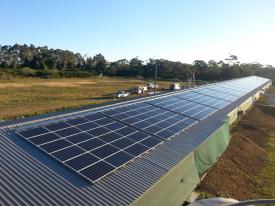 The question is whether the report will precipitate rethinking among the Administration, many of whom are climate change deniers despite the scientific evidence and facts. The second consideration is whether corporate or Congressional action will be taken as a result of the findings of the report. The CFTC Commission has not yet voted to accept the report. A White House spokesperson commented that the report does not necessarily represent the opinions of the Federal government. The question is whether the report will precipitate rethinking among the Administration, many of whom are climate change deniers despite the scientific evidence and facts. The second consideration is whether corporate or Congressional action will be taken as a result of the findings of the report. The CFTC Commission has not yet voted to accept the report. A White House spokesperson commented that the report does not necessarily represent the opinions of the Federal government.
Irrespective of political inclination, those of us who have children and grandchildren must recognize that the World’s use of fossil energy over the past 150 years has degraded the environment. The reliance on coal, oil and to a lesser extent gas has resulted in quantifiable atmospheric and terrestrial  changes that are influencing climate, health and availability of resources. The challenge will be to convert to more environmentally friendly sources of energy including nuclear power and renewables at a cost and within a time-line that does not disrupt our economy or degrade our standard of living. The first imperative is to recognize the problem and then to develop appropriate corrective measures. Since climate change is a global phenomenon it will be necessary for the U.S. to assume a leadership role in cooperating with other nations to resolve problems that are becoming readily more apparent. changes that are influencing climate, health and availability of resources. The challenge will be to convert to more environmentally friendly sources of energy including nuclear power and renewables at a cost and within a time-line that does not disrupt our economy or degrade our standard of living. The first imperative is to recognize the problem and then to develop appropriate corrective measures. Since climate change is a global phenomenon it will be necessary for the U.S. to assume a leadership role in cooperating with other nations to resolve problems that are becoming readily more apparent.

|
UK Egg Production Divided Among Free Range, Barn, and Organic Eggs
|
09/08/2020 |
|
 John Kirkpatrick, a senior manager responsible for sourcing agricultural products for Tesco, a major U.K. grocery chain, speaking at an industry meeting confirmed that his company will market three tiers of eggs. Organic will represent the highest level, free-range the core, and barn eggs will represent the entry level. John Kirkpatrick, a senior manager responsible for sourcing agricultural products for Tesco, a major U.K. grocery chain, speaking at an industry meeting confirmed that his company will market three tiers of eggs. Organic will represent the highest level, free-range the core, and barn eggs will represent the entry level.
When the EU implemented the ban on conventional cage housing commencing in 2012, many producers converted to colony modules. Since the substantial investment was made by egg producers, the market was moved to non-confinement systems making eggs from colony cages apparently undesirable. Barn eggs, including floor systems and aviaries, represent the most economic approach to satisfying the restrictions imposed by the major chains that appear to be “out-welfaring” themselves in a competitive market. Consumers however appear to have been excluded from the exercise and have been deprived of the opportunity to purchase eggs of their choice at a price they can afford.
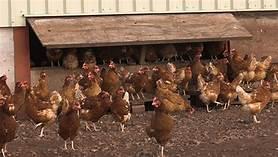 It is evident that in the U.S. a high proportion of consumers still favor low-priced eggs and in a recessionary environment, it is more than probable that by the 2025 deadline at least 30 percent, and perhaps more, of our 220 million hens producing shell eggs will remain in either enrichable cages or enriched modules. The pace of conversion to aviary and floor systems has slowed considerably, especially with the collapse of the food service sector. COVID restrictions resulted in closure of restaurants and diversion of shell eggs from the food service sector to the retail shell market. Due to the slow recovery of the food service sector as many universities and schools remain closed, availability of cash to invest in conversions has dried up and banks are understandably reluctant to extend loan capital to egg producers. It is evident that in the U.S. a high proportion of consumers still favor low-priced eggs and in a recessionary environment, it is more than probable that by the 2025 deadline at least 30 percent, and perhaps more, of our 220 million hens producing shell eggs will remain in either enrichable cages or enriched modules. The pace of conversion to aviary and floor systems has slowed considerably, especially with the collapse of the food service sector. COVID restrictions resulted in closure of restaurants and diversion of shell eggs from the food service sector to the retail shell market. Due to the slow recovery of the food service sector as many universities and schools remain closed, availability of cash to invest in conversions has dried up and banks are understandably reluctant to extend loan capital to egg producers.
Consumers must be allowed a choice in their purchases of eggs. Currently it is estimated that one in six children is hungry and could benefit from thee nutritional value of eggs. Neither legislators, activists or grocery chains have the right to impose a ‘welfare tax’ on those who are least capable of feeding their families.

|
Preventing COVID-19. Now is the Time for Seasonal Influenza Vaccination
|
08/25/2020 |
|
It is all too evident that COVID-19 is still circulating in our population. To date, the U.S. has recorded 5,799,046 confirmed cases with 178,998 fatalities. This disease will not simply "go away" spontaneously. From data collected in Europe, Asia and in areas of our nation the infection reappears after a lockdown and surges after a “super-spreader event”. It is axiomatic that our economy will not recover unless COVID-19 is suppressed.
An effective vaccine will be the most practical method of increasing population immunity thereby reducing the incidence rate of the infection. Despite advances in developing alternative vaccines many of which are based on novel technology, it is evident that administration at levels that will protect the entire population will only be achieved by the spring of 2021 at the earliest. Accordingly, we must be realistic and plan accordingly.
The first imperative is to wear a mask in public and in the workplace. The University of Washington has calculated that if all susceptible U.S. citizens wear masks in public, 60,000 lives could be saved through the remainder of this year. Unfortunately, wearing of masks has become a political issue and "anti-maskers" who are in denial do not realize their own vulnerability and their potential to infect fellow citizens.
The second issue of immediate concern relates to vaccination against seasonal influenza. There is every possibility that the 2020-2021 season may be severe given the forecast of a colder winter attributed to the La Nina event now developing in the Pacific Ocean. Even with improved diagnostic procedures for COVID, physicians will be hard pressed to differentiate at an early stage between influenza and COVID-19. Concurrent infections could elevate the fatality rate and everyone is urged to receive the seasonal influenza vaccine. Supplies of the 2020/2021 vaccine are now available including the high-titer version for the elderly and those with predisposing health conditions. Operators of processing plants and egg packing operations in addition to farms should arrange for group-vaccinations for their employees and if possible, their immediate families. Investment of time and money in influenza vaccination will benefit health and productivity of workers during the fall and winter.
We have few direct modalities to prevent COVID-19. Masking, avoiding crowds, frequent hand washing, and common sense will have to be deployed until an effective vaccine is available. Administration of seasonal influenza vaccine is an added measure to reduce the impact of COVID-19.

|
The Right to Farm
|
08/18/2020 |
|
According to Attorney Tiffany Dowell of the Texas A&M University AgriLife Extension Service, all fifty U.S. states have some form of right-to-farm legislation. Addressing the issue in her weekly posting on June 10th, Dowell considered right-to-farm in relation to a case in Indiana involving a farmer who erected two hog-finishing houses each with a capacity of 4,000 animals. Subsequent to initiating operation neighbors sued claiming nuisance, diminution of property value and related undesirable outcomes.
Despite the protection extended by right-to-farm laws, intensive livestock or poultry operations designated as Concentrated Animal Feeding Operations (CAFOs) may require rezoning of land for intensive farming use in addition to permits from a state environmental management authority. Invariably the permitting process is subject to public comment that must be considered in the granting of permits.
|
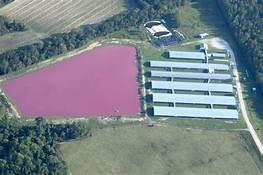
NC Hog Complex |
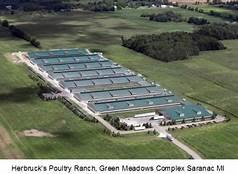
Modern Egg-production Complex |
A number of cases in which public input has influenced outcomes include the proposed Hi-Q breaking unit in central Ohio that was rejected in 2011 following concerted opposition. More recently, the Lincoln Premium Poultry operation was forced to change location for the proposed processing plant and industrial installations. Opposition to establishing breeder and broiler growing contract farms was also encountered in various counties although the company was able to recruit sufficient growers in Nebraska to reach predetermined production levels. Sanderson Farms was forced to abandon a proposed processing location in an industrial park in Nash County, North Carolina in 2012 following public opposition requiring relocation to Robeson County.
|
|
What emerges from these cases is that broiler or turkey processing plants may be opposed based on the potential for contamination of ground water and streams from effluent, odor, traffic congestion, costs of services to local municipalities and opposition to tax concessions. With respect to large processing facilities, public concern may be based on a perceived change in the ethnic composition of an area due to a projected influx of low-paid workers and their families representing a different heritage to existing residents. Opposition to a production complex is frequently based on the potential depreciation in the value of existing or intended residential property.
In reviewing the case involving the hog units in Indiana, the CAFO permit was issued by the Indiana Department of Environmental Management following two public hearings. Rezoning of the land from agriculture-residential to agriculture-intensive was successfully negotiated and approved Subsequent to establishing and operating the two hog houses, residents in the area filed suit claiming nuisance, negligence and trespass. The plaintiffs also challenged the Indiana Right-to-Farm Act claiming a violation of the Takings Clause and the Privileges and Immunities Clause of the Federal and Indiana Constitutions. The Defendants invoked the Indiana Right-to-Farm Act and obtained summary judgment dismissing the case. The decision of this court was upheld on appeal to the Indiana Supreme Court. The Court confirmed the right of the Defendant to establish two hog houses in accordance with the Indiana Right-to-Farm legislation that was enacted to “conserve, protect and encourage the development and improvement of agriculture and for the production of food and other agricultural products.
Most Right-to-Farm Acts absolve a farm of being classified as a nuisance following continuous operation for more than a year without a significant change in operation and if the operation was not a nuisance at the time the operation commenced in the locality. It is important to determine whether conversion from one type of agriculture to another has occurred or whether a change in ownership or technology has taken place. Naturally farm operators cannot function legally applying obvious negligence specifically with respect to disposal of waste.
In considering whether a nuisance is a factor in denying a permit, courts must consider whether the operation would have represented a nuisance when the farm was established. Residents who move into an area with an existing CAFO in operation cannot claim nuisance. In addition public hearings allow residents and other landowners to object to any material change in operation of a farm such as erection of hog or poultry houses on land previously used to grow crops.
To claim negligence, the opponents of a CAFO would have to demonstrate inappropriate operation or violation of the permit terms. Simply establishing a CAFO on a farm does not represent negligent operation under the Right-to-Farm Act.
The claim of trespass would require opponents to demonstrate that odor, pollutants or dust enters their homes. In the Indiana case, the Appeals Court considered this approach “artful pleading” and was inconsistent with the Right-to-Farm Act.
In reviewing the appeal, the court clearly established that the Indiana Right-to-Farm Act was in accordance with the State Constitution and affirmed that the Right-to-Farm Act does not violate common laws of nuisance. The question of the Takings Clause in the Indiana and U.S. Constitutions were reviewed and it was established that although there was diminution of property values among neighboring homes, the Plaintiffs failed to show a deprivation of economic or productive use of their properties. The Privileges and Immunities Clause of the Indiana Constitution was also considered and it was ruled that the Right-to-Farm Act protected agriculture and that there was no preferential benefit to any specific group.
The issue of Right-to-Farm in relation to nuisance will be considered in greater detail in the appeals filed by Smithfield Foods following a series of adverse jury verdicts in a Federal District court. Residents and landowners in North Carolina adjacent to hog farms contracted to Smithfield Foods, claimed nuisance and diminution of property values as a result of odor from lagoons holding hog waste. The issue of Right-to-Farm and nuisance arising from CAFOs as previously litigated will now be considered by a Federal Appeals court. Since Right-to-Farm Acts have different provisions depending on state, specific defenses will differ.
In reviewing recent approvals for egg production complexes, the examples set by Herbruck’s Poultry Ranch, a third generation egg-production enterprise in western Michigan can be used as an example of how a project can be presented for approval. When the company decided to establish a complex in Mercersburg, Pennsylvania, the family initiated a preemptive program involving complete transparency regarding the plan for the organic egg production enterprise including the number of houses, hen population and traffic patterns. Representatives of the County and media were provided an opportunity to review the ambiance of the prototype farm in Saranac, MI demonstrating an appearance in harmony with the area and an absence of odor or any other nuisance factor.
Public acceptance of proposed CAFOs is critical to obtaining environmental permits and rezoning where required. This can only be achieved with transparency, openness and goodwill. It is necessary to effectively promote a proposed poultry enterprise with honesty and not simply rely on litigation based on Right-to-Farm laws.
|

|
Raising the Federal Minimum Wage - Impact on the Egg Industry
|
08/18/2020 |
|
 Wage rates are an important determinant of packing costs. In many areas the federal rate serves as a benchmark although local conditions including employment rate and industries competing for workers determine the scale of wages. The federal minimum wage was established in 1938 as a component of the Fair Labor Standards Act. Since this time the wage rate has been raised but infrequently and now stands at $7.25 per hour. In most areas of the U.S. the actual amount of the federal minimum wage is essentially irrelevant since wage rates are determined by the availability of workers and the willingness of employers to pay "the going rate". Wage rates are an important determinant of packing costs. In many areas the federal rate serves as a benchmark although local conditions including employment rate and industries competing for workers determine the scale of wages. The federal minimum wage was established in 1938 as a component of the Fair Labor Standards Act. Since this time the wage rate has been raised but infrequently and now stands at $7.25 per hour. In most areas of the U.S. the actual amount of the federal minimum wage is essentially irrelevant since wage rates are determined by the availability of workers and the willingness of employers to pay "the going rate".
Economics texts suggest that workers are paid in relation to the marginal product of their labor. This means that employers are willing to pay a given wage to a worker who produces more than the expenditure on both wages and fringe benefits and related direct costs of employment. The fact that there is an approximately $15 gap between the federal minimum wage and the median wage of hourly-paid U.S. workers suggests that the federal rate is no longer a benchmark. States have imposed their own minimum rates that range from the federal $7.25 to Massachusetts at $12.75 per hour. Individual municipalities have imposed higher minimum wage rates reflecting the cost of living or altruistic intentions.
On July 18th the House passed legislation that would raise the federal minimum rate to $15 per hour by 2025. Thereafter the minimum wage would be indexed to median wages and would be adjusted annually. It is calculated that raising the minimum wage to $15 by 2024 would benefit approximately 40 million workers mostly over 18 years of age. Those receiving the proposed minimum would include 24 million full-time workers and the parents of 15 million children.

Despite the fact that most employers are unable to determine the contribution of individual workers or job positions to operating profit, wage rates are set by local competition. In a market with union dominance, wages are established by negotiation. In recent years, workers and their representatives have regarded fringe benefits including healthcare, education assistance and work flexibility as more important than negotiating over a basic wage.
The labor market is influenced by offshoring and outsourcing and also by automation and robotics. Local factors are also important in establishing wage rates. The presence of a large plant, especially if unionized in a rural county can increase wage rates paid to workers in an egg packing facility given competition for available labor and the wage rates and benefits determined by the major regional employer. It is self-evident that workers in many southern states paid the federal minimum wage fear a twofold escalation in rate albeit over a four-year period. In contrast, in industrialized states where there are both fewer agricultural operations and egg producers, such as in New England and in industrialized counties in Wisconsin, Ohio, Indiana and Illinois, higher wage rates are accepted as a norm.
Convention accepts that if minimum wages are increased, the result will be unemployment among low-skilled and especially young workers. This argument has been used by politicians to restrain increases in the federal minimum wage. This presumed effect of increasing wage rates is now being questioned. Differences in minimum rates between adjoining states and the introduction of a mandatory $15 per hour in Seattle have provided opportunities for structured economic studies as noted in The August 15th edition of The Economist. In 1992 New Jersey increased the state hourly wage from $4.25 to $5.05. Neighboring Pennsylvania retained the Federal $4.25 rate. Economists at Princeton University followed the QSRs with regard to employment. The study did not disclose any loss of jobs in New Jersey as a result of the increase in basic wage nor did it influence the number of restaurants that were opened. Although studies have shown that there is no difference in the rate of QSRs openings as influenced by wage rates, when Seattle mandated a $15 minimum, a major chicken chain noted that it would not establish stores in the metropolitan area.
The University of Washington evaluated the effect of the $15 per hour minimum on worker income in Seattle. Comparing 2015 to 2016, individual worker hours were reduced and effectively monthly earnings dropped by $1.74. A subsequent study in 2018 used individual worker salaries rather than average data to confirm that weekly earnings actually increased by approximately $10 per week. The results of this study were confounded by the fact that some workers took second or third jobs to compensate for their loss in hours. If a QSR can reduce hours as a result of increased wage rate and maintain both volume of sales and level of service, it implies inherent inefficiencies in use of labor. Alternatively the introduction of mechanization or reorganization of workflow to improve marginal productivity should reduce the number of workers required on each shift.
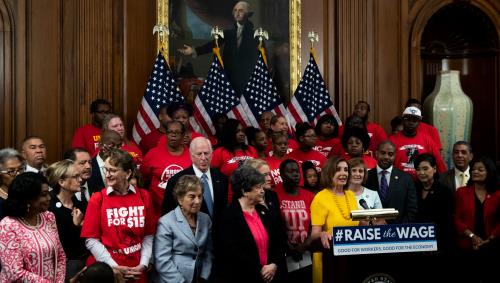 The inflationary effect of increasing wage rates has also been considered in relation to the selling price of products. Again based on the $15 per hour minimum wage in Seattle, the University of Washington determined that a 10 percent increase in base wage increased the price of products by 0.9 percent. Concurrently, a 2019 study of supermarkets found no increase in grocery prices at the retail level attributed to increases in workers’ wage rates. This implies either improved efficiency given reduced hours or that supermarkets absorb wage increases. The inflationary effect of increasing wage rates has also been considered in relation to the selling price of products. Again based on the $15 per hour minimum wage in Seattle, the University of Washington determined that a 10 percent increase in base wage increased the price of products by 0.9 percent. Concurrently, a 2019 study of supermarkets found no increase in grocery prices at the retail level attributed to increases in workers’ wage rates. This implies either improved efficiency given reduced hours or that supermarkets absorb wage increases.
It is self-evident that there is a point at which capital investment in mechanization and robotics is justified since there is a limit to which labor efficiency can be increased by paying a higher rate. In the context of an egg packing plant, the outstanding area for saving in labor involves the manual transfer of packs to outer packaging. Numerous studies have shown relatively short payback periods or alternatively high internal rates of return on investment in robotic packers and in addition, robotic pallet stackers.
An increase in minimum wage rates is inevitable irrespective of the Administration in office in 2021. Accordingly egg producers should carefully evaluate the benefits of robotic packing in anticipation of mandatory federal or state increases in rates. For those producers already competing with large industrial plants in close proximity, mechanization is probably overdue and worthy of evaluation.

|
COVID-19 Realities, Challenges and Vaccination
|
08/10/2020 |
|
A number of realities are now apparent as we move into the eighth month of the COVID-19 epidemic in the U.S.:
- The virus responsible for COVID-19 is now endemic and widespread through our population with extensive community spread.
- Control measures intended to “flatten the curve” were temporarily successful but have plunged the economy into recession with every prospect of a depression.
- The economy will not improve until COVID-19 is effectively controlled.
|

Chaotic Status of Testing |

Drs. Anthony Fauci and Deborah Birx |
- In comparison with other industrialized nations the response by the U.S. has been dysfunctional, fragmented on a state-by-state basis and variable in its effectiveness.
- Scientific data cannot be denied or facts “spun” to deny the reality of five million confirmed infections with 160,000 fatalities and the prospect of an increase to 200,000 by the end of 2020.
- Scientifically-proven prevention measures including masking, avoiding gatherings and common-sense hygiene are ignored by a large proportion of our population. In some cases preventive measures have been actively opposed to the detriment of the regions concerned.
|
- In the U.S. COVID has been politicized with intensifying rhetoric, misinformation, and distrust of science contributing to rising public anxiety as we approach the 2020 election.
- A safe and effective vaccine would contribute to alleviation of the burden imposed by COVID-19 but there are biological and logistic limitations on establishing immunity in our population.
After delays in initially recognizing the severity of COVID-19 and the potential for disruption of the economy, the Administration initiated a crash program of vaccine development termed “operation warp-speed.” While laudable in intent, rapid development of one or more vaccines applying as yet untested technology with accelerated field evaluation detracts from confidence that a vaccine will be both safe and effective. In the event that a vaccine, even if satisfying the two principal criteria is available by the end of 2010 cannot be regarded as panacea or an ultimate and immediate solution to the problem of COVID-19.
Faced with the intensity of the outbreak and the need for speed, pharmaceutical companies have been awarded immense sums of money to apply as yet untested technology and to commence clinical trials. What characterizes the current approach to vaccine development is that capital is being invested in manufacturing facilities in the anticipation (or hope) that one or more candidates will prove effective. Fortunately initial trials demonstration stimulation of antibodies and T-cell activity but it is yet to be shown that the immune response will actually provide protection against challenge. This will be evaluated in Phase 3 clinical trials involving natural exposure or even controlled infection of volunteers.
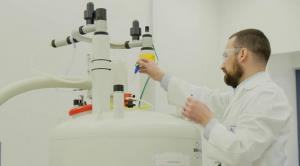 Based on other than scientific considerations, some in the political spectrum are projecting an unrealistic assumption on when an effective and safe vaccine will be available. Dr. Vijay Samant, a vaccine specialist affiliated to Merck, a company with considerable experience in vaccine production stated, “Spreading false hope and failing to come through is just one of the things that could further damage public trust. Ken Frazier, CEO of Merck commented, “We don’t have a great history of introducing vaccines quickly in the middle of a pandemic.” Based on other than scientific considerations, some in the political spectrum are projecting an unrealistic assumption on when an effective and safe vaccine will be available. Dr. Vijay Samant, a vaccine specialist affiliated to Merck, a company with considerable experience in vaccine production stated, “Spreading false hope and failing to come through is just one of the things that could further damage public trust. Ken Frazier, CEO of Merck commented, “We don’t have a great history of introducing vaccines quickly in the middle of a pandemic.”
Some of the questions relating to introduction and administration of a safe and effective vaccine to 320 million citizens of the U.S. have yet to be addressed. Even if a comprehensive national plan has been developed, which is doubtful given the track record of the Administration, the details have yet to be released. Considerations include how will limited vaccine initially available be allocated? Dr. Francis Collins, director of the National Institutes of Health has requested the National Academy of Medicine to develop guidelines and Dr.Victor Dzau, president of the Academy has accepted the challenge. Ethical considerations will dictate the priorities but practical and emotional factors will confound predetermined plans. It is evident that citizens with predisposing conditions such as diabetes, obesity, pulmonary and renal disease and the elderly will represent one priority category. Frontline workers in public health will be an equally important population although this group should be willing to receive a vaccine. There are questions regarding those who will be most affected by exposure to COVID-19. Potential early recipients will question whether they are in effect guinea pigs and many well adopt a wait-and-see approach despite their vulnerability due to their potentially precarious state of health.
Even if the government launches a campaign to encourage vaccination there will be considerable distrust based on their track record over the past eight months. Confusion over optimistic and unfounded and frequently repeated statements such as “the disease will just go away”, the debacle over promotion of hydroxychloroquine despite scientific evidence that it is ineffective and potentially harmful, denigration and criticism of acknowledged specialists in infectious diseases and public health, lack of transparency over the warp-speed vaccine initiative, concern over side effects of vaccination will all deter enthusiastic uptake of one or more approved vaccines. The overriding fear lies in the speed at which vaccines have been developed and tested. Surveys of U.S. citizens suggest that if an FDA-approved vaccine were to be available at the end of the year and requiring two successive doses, 30 percent of those interviewed would not be willing to be vaccinated, 20 percent are unsure or will wait and only 50 percent will be willing to receive the vaccine. Antivaxxers will intensify their unfounded, unscientific objections to vaccination and will confound the adoption of an approved product with pseudo-ethical, religious and anecdotal negative publicity.
Without knowing the duration of immunity simulated by even two doses of vaccine it is impossible to predict when the level of herd immunity will rise to a threshold that will inhibit transmission of virus, necessary to reduce incident rates.
To the credit of the Administration, progress has been made in ordering the necessary equipment to support a mass vaccination program. This includes 800 million syringes, needles and glass vials. The resources of the military will be used to distribute vaccine. Mass administration, if it is to become reality will itself impose dangers of infection in a susceptible population unless appropriate masking and social distancing are followed.
It is evident that widespread immunization even if a safe and effective vaccine is available will only be accomplished by the late summer of 2021. In the interim, protection against COVID-19 rests in masking, social distancing and common-sense precautions. A vaccine when available, will not necessarily allow the U.S. to resume a pre-2020 lifestyle and activities until a satisfactory level of herd immunity is attained. Until then we are individually and collectively obliged to follow the advice of public health specialists and to conform to practices and habits that suppress transmission.
Until we control COVID-19 we cannot hope to restore our economy and benefit from increased demand for eggs and other food products. There are obvious limits and restraints to government support and stimulus programs.
|

|
The Need for Rapid COVID Tests
|
08/04/2020 |
|
With the ongoing surge in incidence of COVID cases affecting both rural and urban areas, it is considered essential that the U.S. should have available a rapid home-deployable, inexpensive test kit to provide results within minutes, without requiring any form of reader or equipment other than perhaps a cell phone.
 In recognition of the imperative to have rapid tests available, the National Institutes of Health is investing $250 million in technology to detect SARS-CoV-19 the virus responsible for COVID-19. This is in recognition of the futility of having potentially exposed individuals in a community having to wait for up to to three days for a test and then enduring a turnaround time of 3 to 12 days. The purpose of testing is to identify potentially infective individuals, irrespective of systems so that they can be quarantined and their contacts can be traced. This is especially relevant given the imminent reopening of schools, businesses and entertainment. In recognition of the imperative to have rapid tests available, the National Institutes of Health is investing $250 million in technology to detect SARS-CoV-19 the virus responsible for COVID-19. This is in recognition of the futility of having potentially exposed individuals in a community having to wait for up to to three days for a test and then enduring a turnaround time of 3 to 12 days. The purpose of testing is to identify potentially infective individuals, irrespective of systems so that they can be quarantined and their contacts can be traced. This is especially relevant given the imminent reopening of schools, businesses and entertainment.
The National Institute of Biomedical Imaging and Bioengineering (NIBIB), within the National Institutes of Health, is tasked with developing and accelerating the application of biomedical technology. The NIBIB will undertake implementation of the RADx Advanced Technology Program coordinating federal agencies and industry.
Recently Alex Azar, Secretary of the Department of Health and Human Services, stated, “RADx has moved quickly to select promising technologies through its ‘Shark Tank’ approach investing in technologies that could boost America’s COVID-19 testing capacity.” He added, “These  technologies will help deliver faster results from labs and more and more test results within minutes at the point of care, which is especially important for settings like schools and nursing homes.” technologies will help deliver faster results from labs and more and more test results within minutes at the point of care, which is especially important for settings like schools and nursing homes.”
Dr. Francis S. Collins, Director of the NIH, commented, “The RADx initiative has enabled some of the nation’s most creative biomedical device inventors to ramp up development of their testing technologies at unprecedented speed.”
Current tests under development are classified according to point-of-care or laboratory-based systems.
 The point-of-care devices comprise: The point-of-care devices comprise:
- Mesa Biotech has developed the Accula SARS-COV-2 test using RT-PCR that can detect viral RNA using a removable cartridge with a 30 minute response time.
- Quidel will market the Sofia SARS antigen lateral flow immunoassay kit requiring an analyzer, but providing results within 15 minutes. Sofia analyzers are currently in use.
- Talis Biomedical point-of-care kit uses a multiplex cartridge detecting viral antigen applying isothermal amplification of viral RNA through an optical detection system, yielding a result in 30 minutes.
The laboratory-based tests include:
- Ginkgo Bioworks applying next-generation sequencing technology. The company intends providing seamless sample collection and reporting of results within 48 hours with a projected throughput of 100,000 tests per day by December.
- Helix OpCo will apply next-generation sequencing to process up to 100,000 samples per day by December with a 48 hour turnaround.
- Fluidigm, their BioMark HD microfluidics employs an integrated fluidic chip. Existing fluidigm instruments are installed in research laboratories and it is anticipated that the company will be able to process 100,000 tests per day by the fourth quarter of 2020.
- Mammoth Biosciences Inc applies CRISPR technology to provide faster assays compared to PCR.
Point-of-care tests are acceptable for hospitals, physicians’ offices, and senior homes. Laboratory assays require collection and submission of specimens and a system to inform patients of their results. Both approaches presume either  presentation at a medical facility, or a delay following submission of a specimen. The obvious advantages of a low cost test are self -evident even if it lacks sensitivity,. It is indeed disappointing that NIH, through the NIBIB, has not seen fit to allocate part of the $1.5 billion received to develop a lateral flow immunoassay kit, similar to a pregnancy or influenza test. It is hoped that this deficiency will be overcome either by government support or entrepreneurial initiative. presentation at a medical facility, or a delay following submission of a specimen. The obvious advantages of a low cost test are self -evident even if it lacks sensitivity,. It is indeed disappointing that NIH, through the NIBIB, has not seen fit to allocate part of the $1.5 billion received to develop a lateral flow immunoassay kit, similar to a pregnancy or influenza test. It is hoped that this deficiency will be overcome either by government support or entrepreneurial initiative.

|
House Approves Package of Four Appropriation Bills
|
07/25/2020 |
|
 According to The Hill, the House passed a $260 Billion package comprising four spending bills on Friday, July 24th. The package was approved on a 224 to 189 vote with seven Democrat representatives and all Republicans voting against adoption. Spending bills would fund the Department of State, the USDA, the EPA, the Department of the Interior, Veteran's Affairs and Military Construction during the 2021 fiscal year. According to The Hill, the House passed a $260 Billion package comprising four spending bills on Friday, July 24th. The package was approved on a 224 to 189 vote with seven Democrat representatives and all Republicans voting against adoption. Spending bills would fund the Department of State, the USDA, the EPA, the Department of the Interior, Veteran's Affairs and Military Construction during the 2021 fiscal year.
Contentious items that will be contested by the Administration will include:-
- Allocations to the Environmental Protection Agency restoring the cuts proposed by the Administration
- Inclusion of foreign aid to Israel, Egypt and the Ukraine in the Foreign Operations Bill
- Expansion of nutritional assistance programs managed by the USDA
- Providing the FDA with mandatory recall authority for both prescription and OTC drugs
- Funding arts and humanities programs including the National Endowment for the Humanities and the National Endowment for the Arts in the Interior Bill. The Administration proposed restricting funding for these and similar agencies and museums.
- The House package allows funding for the World Health Organization and blocks restrictions on U.S. funds for foreign health organizations that support abortion rights
- The Bill places restrictions on the EPA to reject specific science-based approaches in rule-making
- Military construction funds would not be provided to construct a Southern border wall
Of specific importance to the poultry industry is a block on Presidential emergency authority to mandate that meat plants should remain functional as an essential service.
 The House will consider seven additional spending bills including the Homeland Security bill dealing with immigration, domestic deployment of personnel and border security during the coming week. The House will consider seven additional spending bills including the Homeland Security bill dealing with immigration, domestic deployment of personnel and border security during the coming week.
In commenting on the package, House Appropriations Committee Chair Nita Lowey (D-NY) stated, "this appropriations packages addresses urging national priorities". She added "I am proud that the package also includes strong emergency appropriations to confront coronavirus and support economic recovery with investments in critical infrastructure and coronavirus preparedness response and relief domestically and globally".
Rep. Kay Granger (R-TX), the ranking member of the House Appropriations Committee objected to previsions relating to immigration and abortion, but was in favor of support for veterans, diplomats and farmers.
Conservatives will balk at the $140 billion off-book spending and the addition of $250 billion in emergency spending. The package of four bills will have a difficult passage given the highly politicized environment in Washington and inclusion of obvious hot-button issues that have divided the nation.
The Senate Appropriations Committee has yet to introduce any spending bills for the coming fiscal year. It is anticipated that even if modified versions of the House appropriations bills are passed by the Senate, which appears unlikely, they will most certainly be subjected to Presidential veto.
Failure to pass eleven of the twelve appropriations bills will require continuing resolutions to ensure that the government functions beyond the October 1st deadline. In all probability, the question of spending and policy will not be resolved before the November election, creating uncertainty at a time when the nation requires harmony and non-partisan agreement on many issues to respond effectively to the challenge of COVID-19 and its effect on the economy.

|
The Effect of COVID-19 on the Egg Industry - What Can We Expect
|
07/20/2020 |
|
 Recent mildly optimistic projections by economists regarding the future are based on the improvement in late May and June characterized by job gains. Dan Kowalski of CoBank has warned that the recovery will be fragile. The July upsurge in COVID-19 incidence following the relaxation of control measures including home confinement and closing of restaurants and retail stores unfortunately confirms that the virus is still with us and will persist. Until the U.S. uniformly adopts realistic and proven methods of suppression of the infection, we will continue to record both rising morbidity and regrettably concurrent mortality. Recent daily totals of 70,000 confirmed incident cases and a cumulative mortality approaching 150,000 confirm the severity of COVID-19. Recent mildly optimistic projections by economists regarding the future are based on the improvement in late May and June characterized by job gains. Dan Kowalski of CoBank has warned that the recovery will be fragile. The July upsurge in COVID-19 incidence following the relaxation of control measures including home confinement and closing of restaurants and retail stores unfortunately confirms that the virus is still with us and will persist. Until the U.S. uniformly adopts realistic and proven methods of suppression of the infection, we will continue to record both rising morbidity and regrettably concurrent mortality. Recent daily totals of 70,000 confirmed incident cases and a cumulative mortality approaching 150,000 confirm the severity of COVID-19.
The Administration and acknowledged specialist in epidemiology are at odds over the severity and course of the infection resulting in a lack of coordination and effective application of control measures. For the immediate future we could drive down the incidence rate if we wore masks in public, avoided large gatherings, practiced social distancing and donned PPE in factories and plants. We would also have to be supported with an effective testing program yielding results within 24 hours to 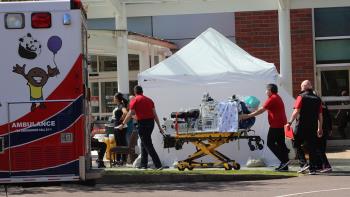 allow for quarantine and tracing, allow for quarantine and tracing,
The expedient of an effective vaccine is not going to be a solution before the summer of 2021. Despite promising Phase-1 trials, producing and administering an effective and safe vaccine that will be adopted by the majority of our population is an elusive goal. Even if effective and assuming no adverse side effects and requiring at least two doses, we probably cannot expect more than a 60 percent compliance rate through 2022. This will leave a significant proportion of our population to be susceptible contributing to persistence of the virus.
Given that COVID-19 is here for the intermediate term, we should review impacts on the egg industry:-
- The food service sector that depends on universities, schools, institutions and corporate dining will only return if COVID-19 is effectively controlled. Restaurant dining will be restricted both from fear of contracting infection and the severe recession (if not a depression) that will persist for years. Although losses in food service will be partly compensated by increased home consumption of eggs, total demand will decline. In 2019 per capita U.S. consumption was 293 eggs. In the current year this will fall to 282 eggs although USDA ERS forecast a slight rise to 285 eggs in 2021. This figure may well be optimistic given the persistence of COVID-19.
- Economists are projecting an unemployment rate ranging from 11 to 22 percent by the end of the year. The wide range indicates uncertainty relating to control and how the disease will affect our economy. Despite the $2.2 trillion distributed under the CARES Act, of which $670 billion was in the form of the Paycheck Protection Program, vast sums denominated in the trillions will still be required to maintain a semblance of normality although creating a burden for future generations.
- An inevitable increases in taxes irrespective of which administration is in office in 2021.
- A marked deterioration in municipal services and an increase in cost as local authorities lose tax revenue through default.
- An erosion of infrastructure including road maintenance, the waterway system and the power grid all of which have direct and indirect implications for egg production
- The disparity between current egg production capacity and predicted demand will reduce prices to a point at which the least efficient in terms of production and marketing will be forced to either consolidate or fail.
- Trained and reliable labor will become progressively more expensive even with high unemployment. Higher levels of mechanization and automation applying robotics will be required to achieve cost efficiency.
- Loan capital for either expansion or conversion from conventional cages to alternative systems will be unavailable despite low interest rates based on concerns over capacity to service debt.
- Given high unemployment and correspondingly low spending even on necessities, concepts such as sustainability and welfare will be superseded by consumers opting for low-cost foods. An inevitable down-cycle in protein consumption will occur from beef to pork to chicken and will ultimately favor eggs based on nutritional value relative to cost and availability.
- Kowalski warns that "economic scars from COVID-19 will be with us until 2030". Accordingly, we will have an industry with fewer hens and producers will have to consolidate to achieve pricing power relative to the supermarket chains that in turn will downsize.
Some of these trends are emerging but have been temporarily obscured by infusion of aid through the federal CARE Act aid. We can neither deny COVID-19 nor expect a miraculous resolution. We have it within our capability to suppress and contain the infection. This will require a concerted national effort with leadership at the highest level coordinating the resources and activities of states, counties and local authorities. Unless we collectively appreciate the severity of the infection and its economic consequences in order to apply science-based solutions, industry and agriculture will suffer with the egg industry severely challenged. Let us face the most likely outcomes and plan accordingly.

|
Questions on the Origin of COVID-19 Must Be Resolved
|
07/14/2020 |
|
It is clear that unless both industrialized and developing nations can effectively control COVID-19, economic recovery will be prolonged. Progressive nations that have "flattened their curves" have employed a combination of home confinement, restrictions on large gatherings, extensive testing with quarantines and tracing, increased social distancing, mandating face masks and promoting personal hygiene and handwashing. It is evident that the most effective programs have owed success to strong central leadership and coordination and also a receptive and compliant population. In contrast, nations without clear directives from the central government, failure to impose national standards for compliance including rigorous testing and quarantine of the infected and tracing of contacts have seen escalating incidence rates and elevated mortality. Premature relaxation of effective control measures if applied, results in resurgence in the incidence rate.
It is axiomatic that learning how COVID-19 emerged and the events and circumstances promoting dissemination of the virus early in the outbreak in Hubei Province in January and February 2019 will be critical to establishing policy and action to prevent the next pandemic. Unfortunately, the current world situation has obscured an understanding of the origin of the infection. Investigating the emergence of COVID-19, that should essentially comprise a disinterested academic endeavor, has been ‘weaponized’ for political purposes. Relevant information has been obscured by injudicious, inflammatory and unscientific political pronouncements and accusations.
 In an attempt to determine facts, the World Health Organization (WHO) from which the U.S. has unilaterally withdrawn, is establishing a program to determine how SARS-CoV-2, the virus responsible for COVID-19, emerged and how it was disseminated. The virus apparently emerged as a clinical entity in Wuhan a metropolis of 11 million in Hubei Province in China during late January and early February 2020. In an attempt to determine facts, the World Health Organization (WHO) from which the U.S. has unilaterally withdrawn, is establishing a program to determine how SARS-CoV-2, the virus responsible for COVID-19, emerged and how it was disseminated. The virus apparently emerged as a clinical entity in Wuhan a metropolis of 11 million in Hubei Province in China during late January and early February 2020.
John Cohen writing in Science on July 10th established the questions that must be addressed in understanding the origins of the infection.
- Were the U.S. 2018 warnings concerning defects in the maximum-security Wuhan Institute of Virology laboratory valid and was coronavirus research conducted in the laboratory?
- Did the Wuhan Institute of Virology conduct "gain-of-function" experiments to develop a strain of coronavirus transmissible among humans?
- What experiments conducted at the Wuhan Institute of Virology may have contributed to an accidental release of SARS-CoV-2 virus as has occurred with diverse human and animal pathogens from many prestigious facilities.
- Is there any Provincial or Central epidemiologic information or clinical or other diagnostic evidence that COVID-19 was present in Hubei prior to December 2019?
- What was the role of Wuhan Seafood Market in the emergence and dissemination of COVID-19?
- Could examination of any stored sewage samples from centers in Hubei Province from late 2019 (if available) indicate the presence of SARS-CoV-2 virus?
- Could evaluation of data relating to serum surveys be correlated with the presence of bat-related coronaviruses in humans, livestock and wildlife? A comprehensive and ongoing study on bats conducted by Eco-Health Alliance and funded by NIH was cancelled by the White House in April
- Have phylogenetic analyses been conducted on stored sera of humans, their pets and on wildlife been conducted to establish how the virus evolved and the temporal relationship with the emergence of COVID-19 including the early cases diagnosed in Wuhan and other hospitals in Hubei and adjoining provinces? There is considerable evidence that SARS-CoV-1 responsible for SARS in 2004 was present in humans and animals before the emergence of the infection. Antibody surveys implicated civets as an intermediate host between bats and humans with SARS and dromedary camels with MERS.
- What evidence supports the contention that authorities in China or in Wuhan were reluctant to report the existence of an emerging infection to the WHO and as a corollary was there an inappropriate response by the WHO on the basis of the information received?
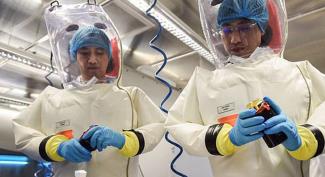 Answers to the series of questions will obviously not be resolved in a single interaction between international epidemiologist and their counterparts in China. Establishing an impartial investigation and determining the scientific facts involved in the emergence of COVID-19 may not be helpful in controlling the present outbreak, but it will most certainly help in identifying and controlling the next pandemic. We have endured SARS, MERS, Nipah and Hendra viruses, Ebola, H5N1 avian influenza, H1N1 human influenza and now COVID-19 over the past two decades. The next pandemic is probably developing in some species somewhere in the world as this editorial is posted. Let us hope with the knowledge gained from an impartial scientific review we will be better prepared to respond and that we will be able to detect and confine a regional outbreak before it becomes a pandemic. Answers to the series of questions will obviously not be resolved in a single interaction between international epidemiologist and their counterparts in China. Establishing an impartial investigation and determining the scientific facts involved in the emergence of COVID-19 may not be helpful in controlling the present outbreak, but it will most certainly help in identifying and controlling the next pandemic. We have endured SARS, MERS, Nipah and Hendra viruses, Ebola, H5N1 avian influenza, H1N1 human influenza and now COVID-19 over the past two decades. The next pandemic is probably developing in some species somewhere in the world as this editorial is posted. Let us hope with the knowledge gained from an impartial scientific review we will be better prepared to respond and that we will be able to detect and confine a regional outbreak before it becomes a pandemic.

|
Transparency and Honesty in Product Designation
|
07/06/2020 |
|
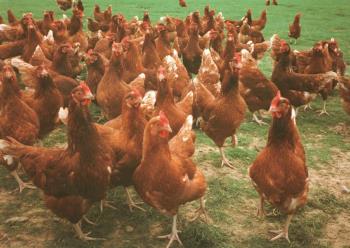 There is no Federal standard to distinguish among cage-free, aviary, barn, free-range and pastured housing of flocks. Welfare certification based on EU or U.K. standards can be assigned to specific categories and is presumably monitored by audit. The difference in unit revenue between either brown or white eggs derived from cages or alternatives to cages may exceed $1.50 per dozen at retail. The difference between eggs obtained from flocks held in barns or allowed access to pasture is even greater. The same is true for conventional and organic eggs. Large differences in value create an incentive to cheat by upgrading the designation of an egg. Product from alternatives to cages appeal to affluent and more selective consumers although sentiment is the only attribute distinguishing a cage-free egg from a pasture-derived product. There is no Federal standard to distinguish among cage-free, aviary, barn, free-range and pastured housing of flocks. Welfare certification based on EU or U.K. standards can be assigned to specific categories and is presumably monitored by audit. The difference in unit revenue between either brown or white eggs derived from cages or alternatives to cages may exceed $1.50 per dozen at retail. The difference between eggs obtained from flocks held in barns or allowed access to pasture is even greater. The same is true for conventional and organic eggs. Large differences in value create an incentive to cheat by upgrading the designation of an egg. Product from alternatives to cages appeal to affluent and more selective consumers although sentiment is the only attribute distinguishing a cage-free egg from a pasture-derived product.
There is no practical analytical procedure to differentiate between eggs derived from cages as compared to alternative systems. After the 2013 EU cage ban came into effect, a scandal occurred in the U.K. when a major supermarket chain marketed eggs from Spain as cage-free despite the fact that they were derived from caged hens. Since eggs in the EU are not generally washed, it was possible by microscopic examination of shell surfaces to distinguish between eggs derived from cages and those on litter. Following washing as in the U.S. this distinction is not possible.
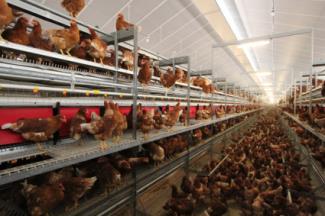 The incentive to cheat is intensified under conditions of high demand. In reviewing IRI data, a specific U.S. producer of free-range and pastured eggs was able to increase sales within a week from approximately 400,000 dozen to close to 600,000 dozen and to maintain this level through the period of high demand from mid-March through April. It is possible to achieve an increase in sales within a week providing the producer concerned drew on a substantial inventory. To sustain output over a number of weeks presumes that flocks in production were placed at least 30-weeks previously. No one could have predicted the COVID-19 surge in demand back in August 2019. Producers can increase sales of a specific brand by purchasing eggs from other producers at relatively short notice, providing supplies are available. This would not have been the situation in mid-March given demand for eggs of all categories from generic through pasture- reared. The incentive to cheat is intensified under conditions of high demand. In reviewing IRI data, a specific U.S. producer of free-range and pastured eggs was able to increase sales within a week from approximately 400,000 dozen to close to 600,000 dozen and to maintain this level through the period of high demand from mid-March through April. It is possible to achieve an increase in sales within a week providing the producer concerned drew on a substantial inventory. To sustain output over a number of weeks presumes that flocks in production were placed at least 30-weeks previously. No one could have predicted the COVID-19 surge in demand back in August 2019. Producers can increase sales of a specific brand by purchasing eggs from other producers at relatively short notice, providing supplies are available. This would not have been the situation in mid-March given demand for eggs of all categories from generic through pasture- reared.
Based on experience in the industry it is accepted that producers conform to an acceptable level of ethics. Unfortunately, some unscrupulous individuals have indulged in deceptive marketing practices. In the early 2000's, eggs from barn-housed flocks were marketed by one producer as "free roaming", an acceptable if non-defined descriptor. The deception however related to the label that depicted hens on pasture. The combination of the “free roaming” descriptor and the visual image on the carton created the impression that hens were actually allowed extensive outside access that was not the case.
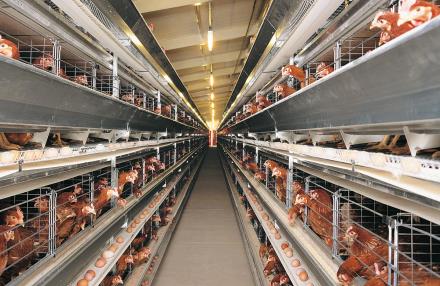
Recognized and enforced standards are required to maintain the confidence of consumers paying a premium for eggs obtained from specific types of housing. This is only fair to the producers who invest capital in facilities, labor and incur other costs to produce cage free, free range and pastured eggs priced according to housing system.
The certifying agencies providing logos based on standards with audits could form the basis of national standard. Unless the industry conforms to uniform standards, a patchwork of alternatives will be a disservice to consumers and allow unscrupulous producers and packers to perpetuate scams based on misrepresentation. Given clearly defined statutory standards with auditing and confirmation, the Federal Trade Commission should have the authority to sanction and fine producers deviating from ethical principles.

|
Protectionism to Impede Progress on UK Trade Agreement
|
06/30/2020 |
|
 In January, negotiations were initiated between Ambassador Robert Lighthizer and his U.K. counterpart, Minister Elizabeth Truss. Intensive discussions to develop a bilateral trade agreement are in progress with dedicated task groups considering aspects of a comprehensive pact. In January, negotiations were initiated between Ambassador Robert Lighthizer and his U.K. counterpart, Minister Elizabeth Truss. Intensive discussions to develop a bilateral trade agreement are in progress with dedicated task groups considering aspects of a comprehensive pact.
It is evident that protection of U.K. farmers will be an important obstacle to achieving an agreement. Feeding beta-agonists and related compounds to cattle and hogs will obviously be a barrier as well the U.S. practice of immesing broilers using chlorine or other compounds, long restricted in the U.K. Eggs have emerged as a factor with a specific emphasis on housing system.
The U.K. has a commercial egg population of approximately 38 million hens. Currently 42 percent are housed in enriched colony modules installed in anticipation of the January 1, 2013 deadline for elimination of conventional cages. Collectively the U.K. industry invested $400 million in conversion to a system which now  appears obsolete from the standpoint of presumed market demand. The U.K. leads Europe in free-range production with 54 percent of table eggs derived using this system. Barn housing is currently only approximately one percent of egg production but as enriched colony systems are replaced with aviaries and technical problems and the profitability of free-range declines, more eggs will be derived from barns by 2025, the projected conversion deadline. Organic production, which requires free-range management in addition to feeding organic feeds, represents three percent of production. appears obsolete from the standpoint of presumed market demand. The U.K. leads Europe in free-range production with 54 percent of table eggs derived using this system. Barn housing is currently only approximately one percent of egg production but as enriched colony systems are replaced with aviaries and technical problems and the profitability of free-range declines, more eggs will be derived from barns by 2025, the projected conversion deadline. Organic production, which requires free-range management in addition to feeding organic feeds, represents three percent of production.
The U.K. is 85 percent self-sufficient in eggs and egg products. The majority of imports are in the form of liquid egg from Poland and the Ukraine. For the first quarter of 2020, the U.K. industry produced 7.8 million cases of shell eggs, one percent down from the corresponding quarter of 2019. The May U.S. 91cent per dozen nest-run price paid to contract farmers and independent suppliers in the U.K. was up nine percent from the first quarter of 2020. Egg products attaining 22,000 tons, were approximately six percent lower than the corresponding quarter of 2019.
EGG-NEWS is indebted to Dean Hughson for a June 27th article in the U.K. Daily Mail expressing concern over the vulnerability of the domestic egg industry valued at $1.2 billion annually. The article is replete with errors aimed at influencing consumer opinion against U.S. eggs. The article maintains that “95 percent of America’s 280 million chickens live in battery cages.” The May 2020 USDA report on cage-free production recorded a population of 76.8 million hens housed in other than cages, representing 23.6 percent of a nominal 325 million total hens, but 34.9 percent of an estimated flock of 220 million producing for the shell-egg market.
Mark Williams, a spokesperson for the British Egg Industry Council, cites the investment by U.K. producers to satisfy welfare, food safety, and environmental considerations. Williams can be assured that U.S. farmers endure similar cost burdens and effectively there is very little commercial advantage enjoyed by U.S. producers over their U.K. counterparts.
Aimee Mahony, an advisor to the National Farmers Union, expressed concern that a trade deal that allowed the importation of eggs produced according to standards below those prevailing at the U.K. would adversely impact domestic farmers. She stated that “It is crucial that the Government does not agree to any trade deal that could see imports of food that will be illegal for our farmers to produce here.”
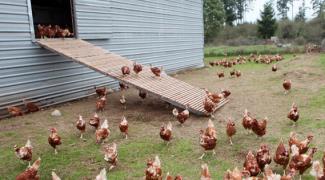 The problem faced by U.K. egg producers is that at the farmer-to-supplier level, margins vary from a negative return to moderately positive, mainly influenced by feed cost and supply-demand considerations. Introduction of U.S. shell eggs into the U.K. market would seriously disrupt the tenuous equilibrium experienced by their industry. The problem faced by U.K. egg producers is that at the farmer-to-supplier level, margins vary from a negative return to moderately positive, mainly influenced by feed cost and supply-demand considerations. Introduction of U.S. shell eggs into the U.K. market would seriously disrupt the tenuous equilibrium experienced by their industry.
Ambassador Lighthizer recognizes the political power of the U.S. agricultural industry and has clearly stated that unacceptable restrictions on U.S. commodities would be a major obstacle to a free-trade agreement. It is evident that there will have to be compromises on both sides. Larger issues including the purchase of technology and equipment from Huawei, feed additives for beef and hogs and chlorine immersion for broilers, appear to be significant items to be negotiated.
For the first four months of 2020 U.S. shell egg exports attained 38.7 million dozen, approximately 1.5 percent of production. The two current importers, Hong Kong and Mexico combined, represented 70 percent of volume and 57 percent of the total value of $43.2 million. Prospects for export of shell eggs to the U.K. are minimal at best. In all probability there will be negligible trade based on the relative pricing in the U.S. and the U.K., coupled with the cost of freight. If comparable housing standards are imposed, export of cage-free eggs from the U.S. would be a nonstarter. In the event of some catastrophe, such as extensive HPAI or a recurrence of the fipronil episode in the U.K. or the E.U., the U.S. would be able to ship egg liquid to supplement domestic production. Again, it is recognized that E.U. nations and the Ukraine would have a cost advantage over the U.S. with regard to ocean freight.
Following the decline in transitory COVID-19 demand in the U.K., paralleling the U.S. situation, producers have now reverted to a state of mild oversupply, depressing nest-run and farm-gate prices. In the scheme of things, eggs will probably not be a major consideration in the bilateral trade negotiations in progress as there are more important issues. The Save Our Family Farms Association has little to fear from U.S. egg producers despite the dire predictions expressed in the Daily Mail article.

|
A Rediscovery of Eggs
|
06/15/2020 |
|
 A rediscovery of eggs has emerged from our collective two month home confinement. According to Bee Wilson in her Table Talk column in The Wall Street Journal on June 13th she cites Google Trends as recorded a substantial number of requests for egg recipes. An interesting observation is the popularity of egg salad as an easy to prepare, nutritious, and enjoyable dish suitable for lunches and snacks. Wilson recounts the observations of a restaurant operator observing the satisfaction displayed by diners at a New York City restaurant conuming his egg dishes. She relates this to a reminiscence of a sense of contentment and security when consuming eggs in childhood. A rediscovery of eggs has emerged from our collective two month home confinement. According to Bee Wilson in her Table Talk column in The Wall Street Journal on June 13th she cites Google Trends as recorded a substantial number of requests for egg recipes. An interesting observation is the popularity of egg salad as an easy to prepare, nutritious, and enjoyable dish suitable for lunches and snacks. Wilson recounts the observations of a restaurant operator observing the satisfaction displayed by diners at a New York City restaurant conuming his egg dishes. She relates this to a reminiscence of a sense of contentment and security when consuming eggs in childhood.
 Eggs are exceptionally versatile and can cater to the most exotic of tastes, featuring in the cuisines of most nations including Oriental and Latino dishes. Eggs are associated with a sense of satisfaction, both from a recollection of less stressful times and from pleasant associations and family interactions. Eggs are exceptionally versatile and can cater to the most exotic of tastes, featuring in the cuisines of most nations including Oriental and Latino dishes. Eggs are associated with a sense of satisfaction, both from a recollection of less stressful times and from pleasant associations and family interactions.
Given the demise of the “cholesterol myth” not only are eggs now regarded for their nutritional content, but also for their intrinsic value. New attitudes towards eggs among consumers is generated by the activities of the American Egg Board through promotions and adept use of social media. Concurrently, consumption is advanced by the introduction of eggs by the food service industry. All-day breakfasts owe in part their acceptance by customers savoring egg dishes beyond the conventional breakfast meal time.
 When COVID-19 restrictions are lifted, and hopefully as our society returns to a new normal, eggs will remain a staple in our diets. When COVID-19 restrictions are lifted, and hopefully as our society returns to a new normal, eggs will remain a staple in our diets.
Over the past five years since the precipitous 2015 fall in per capita consumption due to avian influenza, consumption has risen on an annual basis. Data for the remainder of 2020 will denote the extent to which eggs will be adopted by families and single-person households. Casting forward to 2021 we will determine whether the trend towards increased consumption during the March surge in demand will persist.

|
CDC Response to COVID Criticized
|
06/08/2020 |
|
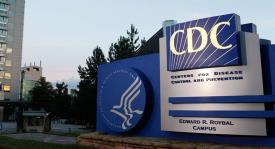 Fatalities numbering 110,000 to date and unprecedented damage to all sectors of the U.S. economy including the poultry industry by COVID-19 demand an understanding of the cause, response and reaction to the pandemic. We have relied on the Centers for Disease Control and Prevention (CDC) to protect public health over the past 74 years. The Agency is the model for all modern national public health agencies and has trained three generations of epidemiologists working in the U.S. and the World. The CDC functions as a research institute, an organization to investigate disease outbreaks in the U.S. and internationally and is a resource to help formulate national policy on health. Notwithstanding innumerable significant achievements, the CDC is now receiving criticism for its performance during the COVID-19 crisis. Fatalities numbering 110,000 to date and unprecedented damage to all sectors of the U.S. economy including the poultry industry by COVID-19 demand an understanding of the cause, response and reaction to the pandemic. We have relied on the Centers for Disease Control and Prevention (CDC) to protect public health over the past 74 years. The Agency is the model for all modern national public health agencies and has trained three generations of epidemiologists working in the U.S. and the World. The CDC functions as a research institute, an organization to investigate disease outbreaks in the U.S. and internationally and is a resource to help formulate national policy on health. Notwithstanding innumerable significant achievements, the CDC is now receiving criticism for its performance during the COVID-19 crisis.
|
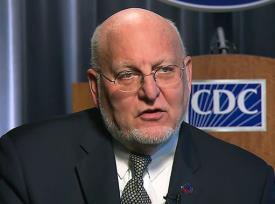
Dr. Robert Redfield |
The New York Times recently completed an extensive investigation on the response of the CDC to COVID-19, preempting a formal Congressional investigation expected in early 2021. According to the New York Times the problems at CDC that affected the National response to COVID-19 included:-
- An outdated and inappropriate system to capture data from diverse sources including state and regional public health departments, received by the Agency as E-mails, faxes and telephone reports. In turn there were lacunae in communication between hospitals receiving patients and state health departments. Essentially CDC lacked the ability to appreciate the magnitude of the outbreak during the critical early weeks when community transmission occurred but was not recognized.
- There was a failure in both communication and mutual understanding between the White House and the CDC. It is evident that ideology and political considerations gained precedence over scientific fact at an early stage in the outbreak. By late March, probably three months into the event it was questionable as to who was in control of the public health emergency that should have been addressed aggressively by the CDC.
- The New York Times suggests and possibly with good reason, that the culture within the CDC favored inaction without absolute knowledge. It is possible that the Administration appointee to the Head of CDC, Dr. Robert Redfield lacked the support of his immediate subordinates. This may have arisen from the perception that Dr. Redfield was “an administration man” unsympathetic to the mores and traditions of the Agency. It is also possible that despite his technical and administrative qualifications and experience gained in the military, Dr. Redfield lacked the ability to lead a team of experienced and dedicated scientists, field investigators and public health specialists to develop a coherent and appropriate strategy. The vacuum created by inaction by the CDC allowed conflicting opinions to be expressed regarding the epidemiology of COVID-19 from both academia and government. Ultimately pronouncements at variance with scientific fact and based on political expediency created confusion and distracted from required declaratory messages from the CDC. Eventually amid the negative publicity and inappropriate statements hyped by talk-show hosts and the web, more authoritative voices achieved prominence including Dr. Anthony Fauci of the NIAID and Dr. Deborah Birx of the Presidential Coronavirus Task Force. During March Dr. Redfield provided scientific input to decisions but his television presence lacked conviction to the detriment of the image of the CDC.
- The CDC failed in the initial attempts to develop and deploy a suitable laboratory procedure to identify COVID-19 antigen. Restrictions placed on independent university and state laboratories and poorly defined and constantly evolving criteria to clinicians to test patients minimized the true incidence rate and delayed implementation of preventive measures during the early critical weeks.
- Recommendations based on science and emerging information on the infectivity of SARS-CoV-2, the virus responsible for COVID-19, that eventually were issued by CDC with respect to reopening the economy were modified and diluted by the White House based on political and economic consideration. Again this caused confusion among state and regional health authorities and the general public, adding to general concern and reducing confidence in the CDC.
We apparently learned a considerable amount from the SARS and Ebola outbreaks in 2003 and 2014 respectively. Due to reorganization in the White House in 2018, personnel in the Directorate for Global Health, Security and Biodefense within the National Security Council, effectively the Nation’s pandemic planning and response group, were reassigned. Absent critical personnel and an appropriate structure, the Government apparently failed to recognize or accept the severity of the COVID-19 pandemic in late January extending into February 2020. Accordingly, recommendations and preparations arising from previous disease outbreaks were not implemented.
It is hoped that a detailed investigation will be forthcoming when we have eventually controlled COVID-19 through applying public health measures and deploying an effective vaccine. A body of scientists and public policy specialists must evaluate what was effective and what went wrong within the CDC, the response to the outbreak, interaction with the White House, the NIH, the FDA and state agencies. Unless a comprehensive review is undertaken our Nation will not be able to correct deficiencies before being confronted with a subsequent emerging pandemic.

|
An Obvious Contrast in Tone of Publicity for Just
|
06/07/2020 |
|
It is noteworthy that vegan-oriented web publications have recently posted laudatory comments on Just and its founder Josh Tetrick. Articles appear in waves and show close similarity in content and syntax as though they were reproduced from a company release. In contrast Bloomberg published a June 4th article in their Business Week platform. Apparently Tetrick is pitching his egg substitute to companies in China with the intention of distributing through online companies.
While China represents an attractive market with a current shortage of protein and a vast population it is evident that Just lacks penetration in his home base of the U.S. Despite an apparent distribution agreement with Michael Foods, he claims to have sold egg-substitute liquid and derived products representing the equivalent of 40 million eggs. This may sound impressive to the uninitiated, but over a year, this represents the production of a flock of 140,000 or less than 0.1 percent of the U.S. population of laying hens. This claimed volume of sales is the record of an entrepreneur who boasted over a decade ago that his products would displace conventional egg production.
|
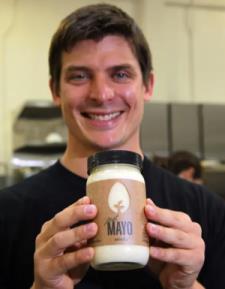
Josh Tetrick in his Mayo Phase |
The Bloomberg article recounted the history of Hampton Creek, the predecessor to Just, documenting the lapse in ethics related to deceptive repurchase of fake mayonnaise and the subsequent investigations in 2016 by the Securities and Exchange Commission and the  Department of Justice. Neither Agency issued sanctions or initiated criminal action, but in mid- 2017 his entire Board resigned. Department of Justice. Neither Agency issued sanctions or initiated criminal action, but in mid- 2017 his entire Board resigned.
There is little substantiation that Just Egg is “sold in 10,000 U.S. supermarkets and is served in a thousand restaurants”. Tetrick commented in the article that the product is available as a $5 to $8 liquid that can make about eight eggs worth of scramble. This corresponds to $9 per dozen for real eggs and obviously is uncompetitive. Recently Jacob Robbins formerly with the Coca Cola Company has joined Just and is advising Tetrick on sourcing ingredients and distribution of product.
If Tetrick wishes to sell Just egg liquid through Alibaba in China, he will have to compete with conventional eggs that sell for approximately $1.20 per dozen. Given the markups by Alibaba and JD.com, a single container of the product supplying the same volume (but not nutrient content) as eight eggs will cost the equivalent of $14 or $21 per dozen or between 15-17 times the price of conventional eggs in China. The product may register initial purchases based on curiosity but given the price differential there does not seem to be any prospect for long-term market penetration.
The biggest problem that Tetrick will face in China is the low barrier of entry for ersatz egg products given that his technology is not especially unique and that his brand would soon be copied and undercut. If Just cannot establish a market niche in the U.S. or in the EU based on taste, quality, sentiment and a competitive price Tetrick will have to continue generating cash infusions from cupid Venture capital investors to survive. He would naturally have to provide a business plan to justify additional infusions of capital. As he burns through investment financing his claimed company valuation of $1.2 billion is fading.
Obviously Tetrick is entranced by the initial success of the Beyond Meat IPO. Emerging post-COVID competition will ensure that profitability of plant-based meat substitutes will be less than stellar. It is an observation that a flurry of adulatory articles appears prior to Tetrick passing the hat. He has probably exhausted his credibility on websites disseminating pro-vegan material. He and his Company were certainly not accorded any favors in the Bloomberg article that should be read with careful attention to what is inferred between the lines.
As with previous commentaries and editorials on Josh Tetrick and his constantly changing corporate iterations, he is welcome to respond with facts and figures to support his claims and aspirations. His rebuttal will be posted if considered realistic and substantial. Any aspirant investor is also welcome to revert for a short primer on the realities of opportunities in the food business, ethics and related considerations.

|
Concern Over Untested COVID Therapies
|
05/31/2020 |
|
 The World Health Organization has clearly stated that there are at present no therapeutic agents shown to prevent or cure COVID-19. Officials in Madagascar, including the President, claim that an extract from Artemisia annua (sweet wormwood) an anti-malarial, is both a preventive and therapeutic for COVID-19. Publicity generated by the government elicited considerable interest especially in African nations, prompting the WHO to issue a statement on May 4th stating caution must be taken against misinformation, especially on social media, about the effectiveness of certain remedies. Many plants and substances are being proposed without the minimal requirements and evidence of quality, safety and efficacy. The use of untested products can put people in danger, given a full sense of security and distracting them from handwashing and physical distancing that are cardinal in COVID-19 prevention. The World Health Organization has clearly stated that there are at present no therapeutic agents shown to prevent or cure COVID-19. Officials in Madagascar, including the President, claim that an extract from Artemisia annua (sweet wormwood) an anti-malarial, is both a preventive and therapeutic for COVID-19. Publicity generated by the government elicited considerable interest especially in African nations, prompting the WHO to issue a statement on May 4th stating caution must be taken against misinformation, especially on social media, about the effectiveness of certain remedies. Many plants and substances are being proposed without the minimal requirements and evidence of quality, safety and efficacy. The use of untested products can put people in danger, given a full sense of security and distracting them from handwashing and physical distancing that are cardinal in COVID-19 prevention.
It appears that Andry Rajoelina the President of Madagascar is promoting the domestic product termed COVID-Organics as a therapy despite having no scientific evidence to substantiate the claim. There are obvious questions as to who might be profiting from what appears to be a scam promotion of a quack “cure”.
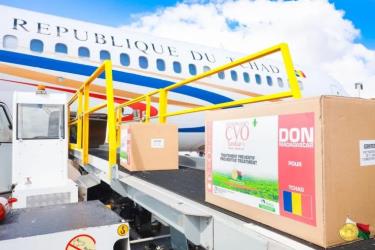 Dr. Shabir Madhi. Professor of Vaccinology at the University of the Witwatersrand in Johannesburg, South Africa noted "there is no evidence that COVID-Organics has cured anything, noting that noting that Madagascar has only confirmed 405 cases and it is impossible to assess efficacy on twenty patients". Madhi added "the majority of people who have this virus show no symptoms; of those who develop symptoms 85 percent of them have mild illness. You can treat them with water, and it would have the same effect". Dr. Shabir Madhi. Professor of Vaccinology at the University of the Witwatersrand in Johannesburg, South Africa noted "there is no evidence that COVID-Organics has cured anything, noting that noting that Madagascar has only confirmed 405 cases and it is impossible to assess efficacy on twenty patients". Madhi added "the majority of people who have this virus show no symptoms; of those who develop symptoms 85 percent of them have mild illness. You can treat them with water, and it would have the same effect".
There are obviously many entrepreneurs in companies, some of them good people and evidentially well intentioned, who are promoting cures for COVID. Many claims are based on anecdotal reports or preliminary studies with defective designs and lacking statistical evaluation. Despite early claims for the benefits of hydroxychloroquine, when subjected to double-blind evaluation, the potentially toxic effects of the drug became evident without demonstrating any therapeutic advantage.
Until an effective and safe vaccine and proven therapeutic compounds become available, the world will have to endure basic preventive measures including social distancing, wearing face masks in public and avoiding crowds.
COVID-19 will not miraculously disappear, neither will an effective therapeutic compound be developed in the immediate future. Even if a limited number of the 100 vaccines under development are proven to be effective by the end of this year, deployment to achieve immunity in at least 60 percent of our population will extend into mid -2021.
The reality of COVID-19 is that the food industry must accept a realistic timeline and plan accordingly with regard to production capacity, inventories, personnel and distribution.

|
Determining Actual COVID-19 Incidence Rates Requires a Sensitive Screening Procedure
|
05/26/2020 |
|
It is axiomatic that decisions relating to operation of plants in the current COVID-19 era and assessing the effectiveness of preventive measures should be based on real-time evaluation of the incidence rate of the infection. By definition incidence is the number of new cases in a population identified within a specific time period.
Questions have arisen as to the sensitivity and specificity of the Abbott ID NOW® system approved by the FDA under an emergency use authorization. The kit relies on immuno-based technology to detect nucleic acids from SARS-CoV-2 virus responsible for COVID-19. The intended use of the Abbott ID Now® assay is to rapidly screen large numbers of individuals either in the community or working in plants for the presence of virus in their upper respiratory tract. Effective suppression of COVID-19 requires that infected individuals should be quarantined, and contacts should be traced.
|

ABBOTT ID-NOW |
During the first few months of the COVID-19 outbreak, antigen tests were in short supply. Healthcare providers restricted their use to those presenting with symptoms consistent with the infection especially in patients not demonstrating positive influenza assays. With the realization that 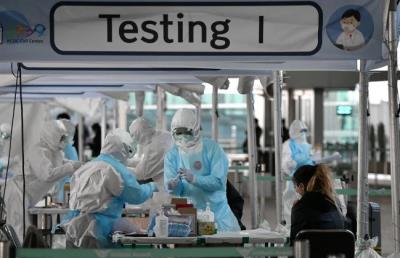 asymptomatic carriers are responsible for dissemination of virus, possibly with an R0 of 2 or more, infections can spread quickly when susceptible individuals are in close proximity to either symptomatic or asymptomatic carriers. The “super spreader” situation is evidenced by cruise ships, mass gathering, nursing homes, prisons and more recently in packing plants where infection rates of 25 to 50 percent have been recorded. asymptomatic carriers are responsible for dissemination of virus, possibly with an R0 of 2 or more, infections can spread quickly when susceptible individuals are in close proximity to either symptomatic or asymptomatic carriers. The “super spreader” situation is evidenced by cruise ships, mass gathering, nursing homes, prisons and more recently in packing plants where infection rates of 25 to 50 percent have been recorded.
Any diagnostic test has two major characteristics that define whether it is suitable for a given application:-
- Sensitivity is the ability to detect the pathogen of interest
Test with low sensitivity provide false negative results. Test with high sensitivity should detect most if not all infected individuals.
- Specificity is the ability of a test to distinguish between related pathogens.
A test with low specificity may not be able to distinguish between the SARS-CoV-2 virus and an unrelated coronavirus such as that causing the common cold. Assays procedures with low specificity will yield a high number of false positives. In contrast high specificity presumes that the test can successfully identify the pathogen of interest to the exclusion of related or even unrelated disease-causing organisms.
Abbott has indicated that under controlled testing conditions the ID Now® test kit correctly identified 30 out of 30 viral samples indicating 100 percent sensitivity. The test identified as negative, 30 out of 30 known negative samples confirming 100 percent specificity. Generally, a test is inclined either to sensitivity or specificity and only very rarely is it both highly sensitive and specific.
In contrast to the data generated by Abbott, a study on one hundred patients at New York University, Langone-Trisch Hospital determined that in practice the tests demonstrated low sensitivity generating an unacceptable level of false negative results. Similar lack of sensitivity was recorded in other centers using the Abbott procedure, which has the decided advantage of providing a diagnosis within five to twenty-minutes.
The Abbott assay is used extensively in screening programs despite numerous respected health care organizations abandoning deployment. Both CVS and Walgreens are however using the test for mass screening and in some cases, hospitals are verifying negative results in patients with clinical symptoms using more specific secondary assays including the Abbott RealTIME® rt-PCR assay that detects RdRp and N-genes.
Patient literature provided with the Abbott tests note "that in the event of a positive test result it is very likely that you have COVID-19. The literature also states that a negative test means that the virus that causes COVID-19 was not found in the sample". Abbot acknowledges the possibility of false negatives in the statement "this means that you could possibly still have COVID-19 even though the test is negative".
Extensive deployment of the Abbott test may be underestimating the true prevalence of COVID-19 in specific populations. This is important when making decisions as to whether plants should be closed and whether preventive procedures should be intensified. Perhaps the highest-visibility application of the test is in the White House. Although two Administration officials have been diagnosed with COVID-19, there have been questions as to why positive and negative results were obtained on consecutive days. Evidently even with the most meticulous and professional sampling of individuals, the test will generate inconsistent results. The Abbott test has the advantages of speed, compactness with respect to equipment and is deployable at any site obviating the need to submit specimens to a remote diagnostic laboratory.
Accepting the low sensitivity of the test, it has an important role to play in screening among confined populations such as in prisons, nursing homes and packing plants. Obviously, clinicians in hospitals must be guided by clinical presentation in patients and submit questionable results to their diagnostic laboratories for validation using more sensitive and specific PCR assays to accurately determine a diagnosis to guide in the selection of treatment options.

|
We Take Issue with Fareed Over Reference to “Factory Farming” and his Implications
|
05/12/2020 |
|
Generally, I look forward to the Sunday edition of GPS hosted by commentator Fareed Zakaria. His incisive comments and world perspective are reinforced by the quality and prestige of his guests. On Sunday, May 10th these included ex-Prime Minister of the UK, Tony Blair and ex-Secretary of the Treasury and Harvard University, President Emeritus, Larry Summers, among others discussing the world and the U.S. in a post-COVID-19 era.
The jarring portion came at the end of the program with his individual perspective on emerging potential pandemics and their causation. He is right in implicating global warming in the extension of vector-borne diseases including Zika, Malaria, Dengue and Chikungunya. Warmer weather in northern latitudes has facilitated propagation of mosquitos and other insects that transmit viral and protozoal diseases. As a veterinary student in the Republic of South Africa in 1963, Bluetongue was the most common seasonal infection among sheep, although suppressed by vaccination. Today a variant of this disease occurs in Scandinavia and Northern Germany as warmer weather has allowed breeding and dissemination of viruses by Culicoides midges that now range from the Mediterranian region northwards to previously colder climes.
|

Fareed Zakaria |
Where Zakaria and most observers differ is his implication based on biased and distorted information regarding domestic livestock as a factor in the emergence of new zoonotic infections. SARS, MERS, and COVID-19 are caused by coronaviruses derived from bats as reservoirs of diverse species. Trade and consumption of exotic animals held, slaughtered and sold in wet markets in Asia, is believed to be the source of emerging infections. There is no evidence that domestic livestock in China or any other nation was responsible for COVID-19. Quoting authors with an obvious bias against intensive livestock production, Zakaria maintained that “crowding” of animals contributes to human disease. This is totally wrong. Mortality rates due to diseases in poultry, hogs, and cattle are effectively controlled using vaccination and biosecurity under intensive management. It is noted that the current Eastern European and Asian panzootic of African swine fever mostly involves small family-operated units. Large integrated hog operations mount effective prevention programs applying biosecurity, even in the absence of a vaccine. The 1918 H1N1 influenza pandemic was caused by a virus which incorporated genetic contributions from birds, hogs, and humans. The disease affected 500 million, approximately a third of the world’s population at the time, and was responsible for as many as 50 million fatalities. This infection emerged and spread half a century before the development of an intensive livestock industry.
The second canard in the May 10th GPS program involved the role of intensive livestock production in the emergence of antibiotic resistance. It is a matter of record that the EU and the U.S have effectively banned antibiotics for routine administration to stimulate growth or improve feed conversion efficiency. In most industrialized countries, antibiotics are restricted to prescription by Veterinarians using Prudent Use Principles. Even China will ban the routine use of antibiotics in livestock production in 2021, although given the history of this nation, enforcement will be questionable. The problem of emerging antibiotic resistance is a complex issue involving misuse of compounds by the medical profession and indiscriminate availability in both industrialized and almost all developing nations, over and above the possible origin in livestock. An exception may well be the emergence in Asia, possibly from numerous small hog farms of the mcr-1 gene. This imparts resistance to antibiotics and is disseminated on plasmids among a number of bacterial pathogens. The major conditions associated with drug-resistant infections in human populations include tuberculosis, gonorrhea, and nosocomial (hospital related), Staphylococcus, and Klebsiella infections. None of these infections have any relation to livestock.
It is indeed unfortunate that credible and informed commentators, such as Fareed Zakaria, continue to reinforce negative perceptions of intensive livestock production with misstatements accompanied by inappropriate visual images without recognizing that zoonoses and antibiotic resistance are multifactorial in origin. While condemning intensive livestock production detractors fail to consider the contribution to protein requirements for a burgeoning world population.

|
How Much Testing is Enough?
|
05/03/2020 |
|
Governments around the world are criticized for their apparent slow introduction of testing and achieving inadequate volume to control the COVID-19 outbreak. The World Health Organization maintains that if less than ten percent of those randomly tested yield SARS-CoV-2 the virus responsible for COVID-19 on sampling, then a country is adequately served. In contrast, epidemiologists experienced in influenza outbreaks maintain that a three percent positive level indicates adequacy of testing. Currently assays to demonstrate the presence of SARS-CoV-2 in the U.S., yield positives in the region of 20 percent for selected individuals, either in contact with patients or demonstrating clinical signs. These results are therefore from a biased symptomatic sample and do not reflect the prevalence of the infection in the population.
|

Testing for antibody |
According to a column authored by Teresa Hanafin in The Boston Globe on Thursday, April 30th, Dr. Antony Fauci considers that three million tests are required each week for the U.S., approximately twice the 1.6 million conducted at present. Researchers at Harvard University recommend five million tests per week distributed at random among various states, depending on the prevalence rate. The Harvard Global Health estimate was based on the WHO 10 percent level and indicated that many states are deficient with respect to numbers of tests performed.
The Boston Globe, Fast Forward column pointed to the fact that some states, including Florida and Georgia, are relaxing social distancing and home confinement restrictions with a totally inadequate capacity to conduct tests. It is estimated that Georgia, home state of the CDC requires 10,000 tests daily but has been averaging only 4,000.
The CVS Health Corporation announced on April 27th that it would commence a comprehensive testing program at approximately 1,000 sites to conduct 1.5 million tests each month depending on availability of supplies. Between CVS, Rite Aid, Walgreens, and Walmart, seventy testing sites have been established in parking lots for drive-through sampling. This initiative is supported by the CDC that will soon release new guidelines to identify asymptomatic individuals in high-risk occupations. It is now recognized that infection with COVID-19 virus can occur with people transmitting the pathogen without necessarily being aware of their condition.
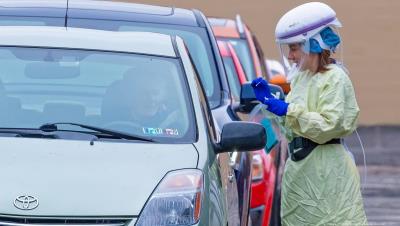 As we ease social restrictions adequate testing is required to identify those infected in order to quarantine them and to investigate and evaluate their contacts. This approach applied in South Korea was effective in “flattening the curve” and reducing the incidence rate compared to other nations in Asia and the EU. Fortunately the Roche rapid test has now received provisional FDA approval and will add to testing capacity. As we ease social restrictions adequate testing is required to identify those infected in order to quarantine them and to investigate and evaluate their contacts. This approach applied in South Korea was effective in “flattening the curve” and reducing the incidence rate compared to other nations in Asia and the EU. Fortunately the Roche rapid test has now received provisional FDA approval and will add to testing capacity.
The quicker that COVID-19 can be suppressed the safer will be policies designed to restore the economy. Resumption of activities in the food service sector is of specific and immediate concern for the egg-production industry. As restaurants re-open, shell eggs will move back from the retail to the food service sector reversing the trend of the past six weeks. It will only be with re-opening of schools and universities and with more travel that the food service sector will be resuccitated removing the output of 10 to 20 million shell eggs from the retail market with obvious implications for price.
Establishing the prevalence of antibody in the populations of specific areas and the incidence rate through antigen detection will be critical to guiding policy until an effective vaccine becomes available. Relaxing COVID-19 restrictions without adequate epidemiologic data will result in resurgence in infection and more misery for our industry. The basic question of “how much testing do we need” is not an absolute number but is determined by incidence rates and will change over time and circumstances. Our epidemiologists can prepare recommendations based on science to guide politicians to devise and implement policies that will be effecively a compromise between public health and our economy. Intrusion of armed protesters into legislative buildings to intimidate lawmakers and governors are not a realistic counterpoint to science and established facts relating to the progress of the pandemic.

|
The State of our Industry, influenced by COVID-19
|
04/30/2020 |
|
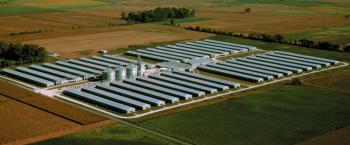 Three items in this edition of EGG-NEWS when taken together depict the state of the U.S. egg industry as affected by COVID-19. There are obvious indicators predicting the future when consolidating the data and reports relevant to the present situation. Three items in this edition of EGG-NEWS when taken together depict the state of the U.S. egg industry as affected by COVID-19. There are obvious indicators predicting the future when consolidating the data and reports relevant to the present situation.
The first item concerns weekly report on egg prices and inventory. The USDA data confirms that wholesale prices have fallen back to their February levels. The unprecedented spike in price was due to panic COVID buying, but the transitory nature of the event did not compensate for the many months of losses in 2019 extending into the beginning of this year. The weekly egg report in this edition confirms a 1.7 million increase in the number of hens in production. True to form the industry is not demonstrating the requisite restraint that should dictate depletion of older flocks until market stability returns. A ray of hope is that the level of stock declined 1.8 percent over the past week. This suggests that demand for home cooking persists but obviously not reflected in the panic levels displayed from late March through early April. Before the price spike, a number of producers had exhausted their working capital. With institutions disinclined to extend financial support, based on doubtful capacity to service and repay the principal, the future for some producers appears bleak. This is especially the case with small to medium sized family-owned farms selling generic eggs and operating with obsolete cage housing.
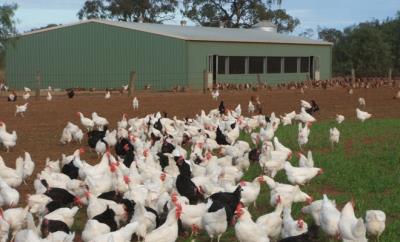 The second posting relates to the action initiated by the Attorney General of the state of Texas against Cal-Maine Foods, the nation's largest producer with a dominant position in that state. The justification for the rise in price both at the wholesale and retail levels was eloquently stated by Cal-Maine. Their response raises the question of the undue influence on pricing by Urner Barry and whether their price discovery system is distorting market prices to the disadvantage of the industry. Some new impartial system of establishing an equitable relationship between producers and chains is required such as a CBT future quotation for eggs. The second posting relates to the action initiated by the Attorney General of the state of Texas against Cal-Maine Foods, the nation's largest producer with a dominant position in that state. The justification for the rise in price both at the wholesale and retail levels was eloquently stated by Cal-Maine. Their response raises the question of the undue influence on pricing by Urner Barry and whether their price discovery system is distorting market prices to the disadvantage of the industry. Some new impartial system of establishing an equitable relationship between producers and chains is required such as a CBT future quotation for eggs.
The third concern is raised by the posting on the Zimmerman family farm in Pennsylvania that illustrates the plight of small contractors. The margins generated by independent family-owned farms producing specialty cage-free and organic eggs are subject to the vagaries of the market and packers. The black-swan emergence of COVID-19 has effectively suspended the food service component of the shell-egg market. The effect of COVID-19 on the chain extending from small contract producer through to patrons of restaurants, school and university dining facilities was evident within days of the adoption of home confinement. As with musical chairs, all players enjoy the game until the music stops. Our hope is that restaurants will re-open and will be patronized, creating demand for shell eggs and egg liquid. This will reestablish the pipeline from small-scale producers and contractors and in-line breakers through processors to the food service market.
The advent of COVID-19 has clearly indicated the interdependence of segments of our industry and demonstrates the inability to respond to sharp changes in the operating environment. Overproduction creates an added level of vulnerability that is amplified with changes in supply or demand and is reflected in pricing.
Hopefully the U.S. egg industry will emerge from our current travails stronger but possibly with fewer independents and more consolidation to face future challenges. These include conversion to cage-free housing, possible emergence of disease, both in flocks and now in workers and our Nation’s recovery from a severe recession.

|
Hope for the Oxford University Vaccine
|
04/30/2020 |
|
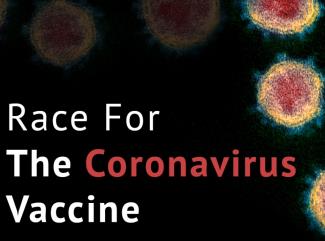 The COVID-19 vaccine under development by the Edward Jenner Institute for Vaccine Research at Oxford University has been tested by the U.S. National Institute of Health in rhesus monkeys. Six vaccinated animals were unaffected after SARS-CoV-2 challenge over a twenty-eight day period compared to obvious clinical infection in non-vaccinated controls. The Oxford University vaccine is based on an adenovirus isolated from chimpanzees as the vector, modified to express SARS-CoV-2 antigen. The next stage is to progress to evaluation in humans, first for safety and then efficacy. The COVID-19 vaccine under development by the Edward Jenner Institute for Vaccine Research at Oxford University has been tested by the U.S. National Institute of Health in rhesus monkeys. Six vaccinated animals were unaffected after SARS-CoV-2 challenge over a twenty-eight day period compared to obvious clinical infection in non-vaccinated controls. The Oxford University vaccine is based on an adenovirus isolated from chimpanzees as the vector, modified to express SARS-CoV-2 antigen. The next stage is to progress to evaluation in humans, first for safety and then efficacy.
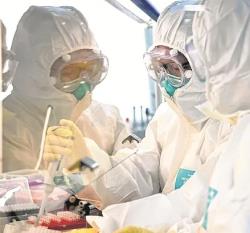 Based on the need for an effective vaccine, manufacturing facilities for the product have been identified and are being equipped to produce the vaccine in large quantities following regulatory approval. Given the world distribution of a vaccine, it is evident that the U.S. will have to have independent in production capacity to be able to vaccinate the entire population at least twice while making available vaccine for nations including Mexico that do not have production capability. Based on the need for an effective vaccine, manufacturing facilities for the product have been identified and are being equipped to produce the vaccine in large quantities following regulatory approval. Given the world distribution of a vaccine, it is evident that the U.S. will have to have independent in production capacity to be able to vaccinate the entire population at least twice while making available vaccine for nations including Mexico that do not have production capability.
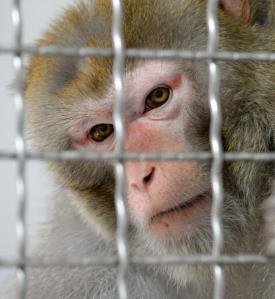 It is axiomatic that restoring the lifestyle and the economy as we knew it will be dependent on durable immunity from a vaccine. As the approved product or analogues will be in short supply during the initial months of production there will be profound ethical considerations in relation to selection of early recipients. It will be critical to ascertain whether an adequate proportion of the population will actually be immunized by the vaccine the duration of protection and to determine the dose of antigen and frequency of administration. A second complication is whether adequate numbers of people will be willing to submit to vaccination given concerns and the influence of “anti-vaxers”. Annual influenza vaccinations have a low compliance rate although the fear of a new disease may encourage vaccination against both influenza and COVID-19. Herd immunity stimulated by either natural exposure or vaccination will be critical to maintaining a viable economy and our supply of food. It is axiomatic that restoring the lifestyle and the economy as we knew it will be dependent on durable immunity from a vaccine. As the approved product or analogues will be in short supply during the initial months of production there will be profound ethical considerations in relation to selection of early recipients. It will be critical to ascertain whether an adequate proportion of the population will actually be immunized by the vaccine the duration of protection and to determine the dose of antigen and frequency of administration. A second complication is whether adequate numbers of people will be willing to submit to vaccination given concerns and the influence of “anti-vaxers”. Annual influenza vaccinations have a low compliance rate although the fear of a new disease may encourage vaccination against both influenza and COVID-19. Herd immunity stimulated by either natural exposure or vaccination will be critical to maintaining a viable economy and our supply of food.

|
Facing the Inevitability of COVID-19 impacts on Egg Production
|
04/22/2020 |
|
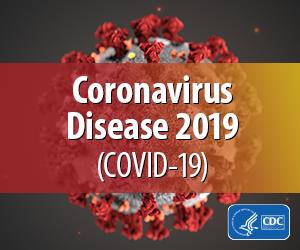 COVID-19 is now extending from urban areas to rural counties where intensive livestock operations including egg-production complexes are located. One large enterprise in Michigan has reported a diagnosis in a member of a work crew and it is inevitable that infection will impact egg producers. It is hoped that the incidence rate in egg packing and breaking facilities will be less than in red meat and chicken plants, some of which have been closed temporarily due to severe absenteeism and to carry out reconfiguration and decontamination. COVID-19 is now extending from urban areas to rural counties where intensive livestock operations including egg-production complexes are located. One large enterprise in Michigan has reported a diagnosis in a member of a work crew and it is inevitable that infection will impact egg producers. It is hoped that the incidence rate in egg packing and breaking facilities will be less than in red meat and chicken plants, some of which have been closed temporarily due to severe absenteeism and to carry out reconfiguration and decontamination.
Based on experience to date, it would appear that personnel in egg packing plants would be at greater risk than then their colleagues in barns where there is greater opportunity for social distancing.
Protection of the workforce on a complex can be accomplished with the following measures:-
- Workers should be screened each day and questioned as to their health and body temperature should be measured.
- Effective masks must be made available and their use enforced
- Frequent hand-washing with soap should be encouraged. In many plants, hand-washing facilities are limited to an area near the entrance in accordance with AMS requirements so additional stations are required.
- A program of daily decontamination of both work areas and break rooms should be introduced concurrent with the third-shift cleaning.
- To reduce the number of employees in break-rooms, during breakfast and lunch, schedules should be staggered as far as possible with workers encouraged to maintain social distancing
- It is considered essential to maintain straightforward and honest communication with workers regarding the health status of the community and personnel in the company
- Special attention should be directed to drivers of feed trucks and personnel involved in delivery of product to DCs and stores. Close contact with receiving workers at these destinations should be avoided. Drivers should not have direct contact with production and packing personnel.
- Workers should be encouraged to maintain social distancing and to avoid gatherings outside of their work even if lockdown is not implemented in the county or state of operation.
- All employees should be encouraged to seek medical treatment early if any symptoms of COVID-19 are experienced. Companies should provide sick benefits to discourage reporting to work while affected.
- Experience in Quebec demonstrated that workers at a hog plant were actually infected with COVID-19 virus during commuting. Employees should be cautioned to as far as possible maintain social distancing if sharing vehicles and wear masks and gloves. Company shuttle buses should not be used to transport employees.
- Producers should encourage workers to adopt healthy lifestyles including cessation of smoking, moderation in alcohol intake and to initiate weight reduction and exercise programs.
- Installation of UV modules to generate and dispese vaporised hydrogen peroxide serving to destroy viruses and bacteria suspended in the air of offices, changing-areas and break rooms.
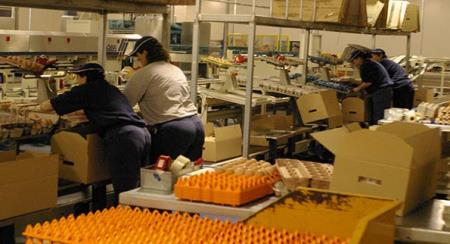 It is obvious that effective control of COVID-19 will only be achieved with wide application of a safe and effective vaccine that may only be available in early 2021. It is obvious that effective control of COVID-19 will only be achieved with wide application of a safe and effective vaccine that may only be available in early 2021.
Measures enforced through March and April of 2020 have only "flattened the curve" to avoid overwhelming medical resources in the short term. Since a significant proportion of the rural population is completely susceptible to SARS-CoV-2 the virus responsible for COVID-19 as of April, an increase in the incidence rate should be expected following relaxation of current methods to suppress infection. Most epidemiologists and public health scientists predict the high possibility of an upsurge in cases during the fall and winter months. Accordingly, all employees should receive an influenza vaccine in September since co-infection will create additional complications for those exposed to the coronavirus.
Hopefully antigen and antibody testing will become more readily available to identify both asymptomatic and affected individuals and those with immunity in the workforce and the community. Identifying contacts of COVID-19 patients will be necessary resulting in quarantine and testing.
It is now evident that the world will have to live with COVID-19 or subsequent variations of SARS-COV-2 virus for the foreseeable future. Accordingly, mechanization should be considered to reduce dependency on manual labor. Robotic de-stackers for off-line plants, case packers and pallet stackers operate at the turn of a switch. With increasing labor rates and uncertainty as to availability of workers in some areas, the capital investment in robotics and mechanization will provide a higher return on investment then during pre-COVID operation
The indirect effect of COVID-19 on the market for shell eggs has impacted the industry with a disproportionate effect on the liquid and food service segments, creating financial pressure on both breakers and shell egg producers. The initial response and adaptation in the market will soon be followed by the reality that the disease will affect workers and reduce production rates in plants. Accordingly, managers should develop contingency plans and apply appropriate preventive measures.

|
Now is The Summer of Our Discontent
|
04/09/2020 |
|
 The title paraphrase from Richard III encapsulates the concern and anxiety we all share regarding the immediate future of the shell-egg segment of our industry. Clearly, we are on the downside of the wholesale-price roller coaster due to the effects of COVID-19. In March, panic buying cleared supermarket shelves of eggs and other perishables, driving up price to levels not seen since the 2015 HPAI epornitic. As noted in commentaries and weekly reports in EGG-NEWS documenting sharp declines in national stock level over three consecutive weeks, the surge in demand was transitory. Now we are facing the realization that the supply pipeline is completely filled and retail demand has returned to a normal level resulting in an equally sharp decline in price, dropping this week at a daily rate of almost twenty cents per dozen. The title paraphrase from Richard III encapsulates the concern and anxiety we all share regarding the immediate future of the shell-egg segment of our industry. Clearly, we are on the downside of the wholesale-price roller coaster due to the effects of COVID-19. In March, panic buying cleared supermarket shelves of eggs and other perishables, driving up price to levels not seen since the 2015 HPAI epornitic. As noted in commentaries and weekly reports in EGG-NEWS documenting sharp declines in national stock level over three consecutive weeks, the surge in demand was transitory. Now we are facing the realization that the supply pipeline is completely filled and retail demand has returned to a normal level resulting in an equally sharp decline in price, dropping this week at a daily rate of almost twenty cents per dozen.
The supply situation is complicated by diversion of shell eggs to retail from for the food service sector following a waiver regarding labeling by FDA* This action apparently resulting from a petition forwarded by the UEP effectively adding approximately 20 million hens to the retail shell market. This has resulted in a profound depression of current and short-term prices even if there is a carryover in the demand surge from eating at home. The justification of the FDA action is questionable given that any reasonable person could have predicted that the surge would be of short duration. Now the established shell industry will endure artificially depressed prices until COVID-19 restrictions are lifted and the equilibrium between the supply of shell eggs is correlated with the combined demand from retail and food service sectors.
In retrospect April 2020 is the reverse of April 2015 when the majority of HPAI losses were among a few large in-line breakers resulting in migration of eggs from the retail market to breaking to supply manufacturers and food service.
The impact of COVID-19 is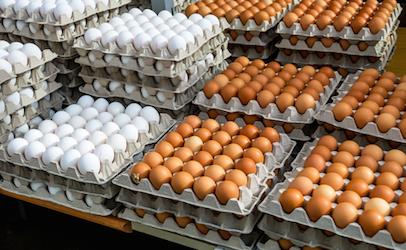 evidenced by the warnings issued by major dining and QSR chains all of whom have withdrawn guidance. Market research company NPD CREST recorded a drop of 42 percent in transactions for the last week of March with sector reports of a 79 percent decline for traditional and casual dining restaurants and 40 percent for QSRs. McDonald's announced on April 9th that U.S. same-store sales fell by 13 percent compared to March 2019. Most McDonald’s stores are open and 90 percent have drive-through installations with many locations offering home delivery. Closing universities, corporate dining and schools has further reduced egg sales through the food service pipeline to a trickle. evidenced by the warnings issued by major dining and QSR chains all of whom have withdrawn guidance. Market research company NPD CREST recorded a drop of 42 percent in transactions for the last week of March with sector reports of a 79 percent decline for traditional and casual dining restaurants and 40 percent for QSRs. McDonald's announced on April 9th that U.S. same-store sales fell by 13 percent compared to March 2019. Most McDonald’s stores are open and 90 percent have drive-through installations with many locations offering home delivery. Closing universities, corporate dining and schools has further reduced egg sales through the food service pipeline to a trickle.
The egg industry moved into 2020 with little in the way of working capital reserves, having endured eight continuous months of prices below cost of production. Financial institutions are now disinclined to extend facilities to the egg industry and support including the USDA Market Facilitation Program, benefiting other sectors of agriculture, is unavailable to egg producers.
There is no immediate prospect for restoration of what we regarded as "normality". Unless COVID-19 can be controlled, the economy cannot be opened up without sacrificing hundreds of thousands of lives. There is hope that the sacrifices to date in the form of social distancing and home confinement are “flattening the curve” Not even the most eminent of public health authorities or epidemiologists can provide a clear timeline for resolution. Even when restrictions are lifted we will still be faced with a susceptible population vulnerable to a re-emergence of infection possibly in the fall.
The impact of COVID-19 on the shell egg industry will be expressed in a number of ways:-
- Independent small-scale producers reliant on the sale of eggs to either breakers or packers will be deprived of their markets and will either be acquired by packers, which is unlikely, or will cease production as they exhaust their working capital. Contracts will be cancelled as flocks are depleted.
- Large producers may acquire smaller but efficient competitors but only if synergy can be achieved
- Rationalization will clearly result in a reassessment of the size of the national flock which may shrink by as many as 30 million hens across the breaking and shell segments of the industry
- Expenditure on capital development of new cage-free complexes and conversion of existing units will be deferred. Financial institutions will not be receptive to applications for funding complexes holding two million hens costing upwards of $100 million. The collateral value of egg production facilities is now heavily discounted and the capacity to service loans is highly questionable unless prices advance to a level consistent with an acceptable return on investment.
- In the immediate term, producers will deplete older flocks and consider molting mid- cycle flocks to conserve finances and have flocks commencing production when market demand returns.
- Chick producers will probably reduce their parent multiplier flocks as anticipated pullet orders are deferred.
- Reduction in production volume and the need to conserve resources will have an effect on the allied industry with equipment manufacturers impacted followed by suppliers of packaging material and even biologics
- Producers will attempt to restrict costs. Curtailing biosecurity or reducing the intensity of flock vaccination and monitoring would be counterproductive
Supermarket chains may realize their myopia in nickeling and diming egg producers. For decades the egg industry has been forced to lose money for many months each year, making it up at Christmas and Easter. This cycle must be replaced by independent and rational decisions on supply. There is little to be done on the demand side of the profit equation. It is clear that the activities of The American Egg Board cannot motivate significant increases in consumption although their endeavors have produced incremental annual improvements. Without the efforts of the AEB and the ENC erosion in both the shell and liquid sectors would have occurred. We cannot look to the export market for salvation. The volume represented by Hong Kong and our USMCA partners along with minor importers represents at best 10 million hens in production.
COVID-19 will not simply miraculously disappear in May. The direct and indirect effects will persist through 2020 and will change our industry in many ways. Hopefully new attitudes towards restraint in production will emerge. We can no longer function on the basis of “Don’t cut him and don’t cut me---cut the guy behind the tree” The Industry is obviously legally restricted from colluding on hen numbers but independent interpretation of volume and price data published by the USDA is possible. Decision makers in the industry would have benefitted from the results of a comprehensive economic analysis of the 2015 HPAI outbreak quantifying the interaction among the breaking and shell-egg sectors and determining the price elasticity of eggs.
It is hard to be optimistic as of mid-April, but the U.S. egg industry has endured many challenges and there is hope that the health of our nation and its economy will soon be restored. We must above all not make a mistake of previous years by injudicious expansion after recovery.
*FDA Guidance Document, Temporary Policy Regarding Packaging and Labeling of Shell Eggs Sold by Retail Food Establishments During the COVID-19 Public Health Emergency.

|
The Department of Justice Defers on Appeal over Refinery Waivers- An economic case for Abandoning the RFS
|
03/30/2020 |
|
 EGG-NEWS previously reported on the ruling by the U.S. Court of Appeals for the 10th circuit in Denver setting aside EPA waivers that were awarded contrary to established policy. Since the DOJ did not appeal, the January 24th decision of the Court will be implemented restricting the ability of the EPA to continue to grant the number of exemptions as in recent years. Since 2016 twenty-eight exemptions have been granted with twenty-five pending requests for 2019. In practice the EPA has deferred on rescinding waivers pending the outcome of an appeal by affected fuel refiners. EGG-NEWS previously reported on the ruling by the U.S. Court of Appeals for the 10th circuit in Denver setting aside EPA waivers that were awarded contrary to established policy. Since the DOJ did not appeal, the January 24th decision of the Court will be implemented restricting the ability of the EPA to continue to grant the number of exemptions as in recent years. Since 2016 twenty-eight exemptions have been granted with twenty-five pending requests for 2019. In practice the EPA has deferred on rescinding waivers pending the outcome of an appeal by affected fuel refiners.
The original lawsuit opposing waivers by the EPA was filed in May 2018 by the Renewable Fuels Association, the National Corn Growers Association, the American Coalition for Ethanol and the National Farmers Union. In a joint statement the groups noted, “Abiding by the court’s ruling is the right thing to do at a time when our industries and rural America are already suffering from the effects of COVID-19, the Saudi-Russia oil price war and ongoing trade disputes, actually a self-inflicted wound. The groups also called on the EPA to restore 500 million gallons of ethanol waived in 2016 as ordered by the U.S. Court of Appeals for the District of Columbia in 2017.
In the January 24th ruling the court ruled that EPA had “abused its discretion” by not explaining its conclusions as to how a small refinery with a waiver could suffer disproportionate economic hardship while also passing on RFS compliance costs onto consumers at the pump. At issue was the legal requirement that RFS waivers, in most cases, should represent an extension of a previous waiver. In three case reviewed, all waivers were original and therefore not in compliance with established regulations.
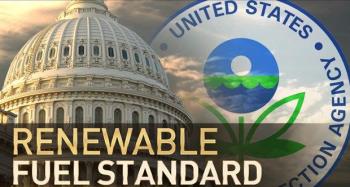 The entire ethanol industry exists by virtue of government mandates established before the U.S. was a major oil producer. The program was intended to reduce dependence on imports from foreign and frequently unfriendly suppliers, including Venezuela, Russia and even Middle Eastern States. Since this time shale oil and abundant gas has rendered corn-based ethanol superfluous. Notwithstanding reality the program has become a government supported “right” by farmers, ethanol refiners and corn-state legislators on both sides of the aisles of Congress. The entire ethanol industry exists by virtue of government mandates established before the U.S. was a major oil producer. The program was intended to reduce dependence on imports from foreign and frequently unfriendly suppliers, including Venezuela, Russia and even Middle Eastern States. Since this time shale oil and abundant gas has rendered corn-based ethanol superfluous. Notwithstanding reality the program has become a government supported “right” by farmers, ethanol refiners and corn-state legislators on both sides of the aisles of Congress.
Forcing ethanol into gasoline at a nominal level of 10 percent artificially supports the price of corn by up to a $1 per bushel, reduces fuel mileage by 3 percent using E-10 and has a negative effect on the environment. The true value of ethanol is denoted by both the prevailing U.S. price and failure of the ethanol industry to export surplus production. Restrictions imposed to control COVID-19 have further reduced gasoline consumption by the nation and ethanol has been degraded in value by the precipitous fall in the price of crude.
Ethanol has declined 30 percent in value to $0.94 year to date, compared to WTI crude that has fallen 68 percent to $19.48 per barrel. Each barrel of crude yields 19 gallons of gasoline and 11 gallons of diesel fuel. Crude represents 54 percent of retail price that has declined year to date by 17 percent from $2.65 to $2.21 per gallon, including 54 cents of tax. At a current estimated wholesale price of 90 cents per gallon, gasoline is four cents below spot price even with support by the RFS mandate. The cost differential is even greater when the relative BTU content of gasoline is compared to ethanol. Since there is a 29 percent inferiority for ethanol against gasoline, corn-based ethanol is only worth 67 cents per gallon into the tank of an automobile.
The recent highly publicized directive by the Secretary of Agriculture to use the highest inclusion rate of ethanol in official USDA vehicles is political in motivation, contrary to science and economics and ultimately passes the cost to U.S. taxpayers.

|
COVID-19 Now and After
|
03/30/2020 |
|
 As of April 2nd the U.S. had exceeded 225,000 confirmed diagnoses of COVID-19 and 5,300 fatalities with as many as 20,000 incident cases reported the previous day. The number of cases is effectively a function of the availability of test kits with rationing to those with clinical symptoms. Effectively we have no idea of the prevalence of the infection in either urban or rural communities without structured sampling for virus and serologic surveys for antibody status. The duration of the epidemic will depend on the success of preventive measures to "flatten the curve" mainly by limiting social contact. This is necessary to prevent swamping of medical facilities with the anticipated surge in incident cases. Epidemiologists’ models predict that the incidence rate will peak in mid- to late April based on realistic assumptions and experience gained from Asia and Europe. As of April 2nd the U.S. had exceeded 225,000 confirmed diagnoses of COVID-19 and 5,300 fatalities with as many as 20,000 incident cases reported the previous day. The number of cases is effectively a function of the availability of test kits with rationing to those with clinical symptoms. Effectively we have no idea of the prevalence of the infection in either urban or rural communities without structured sampling for virus and serologic surveys for antibody status. The duration of the epidemic will depend on the success of preventive measures to "flatten the curve" mainly by limiting social contact. This is necessary to prevent swamping of medical facilities with the anticipated surge in incident cases. Epidemiologists’ models predict that the incidence rate will peak in mid- to late April based on realistic assumptions and experience gained from Asia and Europe.
 Currently social distancing, quarantine for known infected individuals and contacts, avoiding travel and personal hygiene are the only applicable preventive measures. Scientist are working on therapeutic agents and evaluating existing drugs while developing new candidates. Scientific evaluation of the efficacy of antiviral compounds in addition to hyperimmune serum will require at least three months. Candidate vaccines have been developed, but again proving safety and efficiency against SARS-CoV-2 and then producing vaccines in adequate quantities will require at least a year. Currently social distancing, quarantine for known infected individuals and contacts, avoiding travel and personal hygiene are the only applicable preventive measures. Scientist are working on therapeutic agents and evaluating existing drugs while developing new candidates. Scientific evaluation of the efficacy of antiviral compounds in addition to hyperimmune serum will require at least three months. Candidate vaccines have been developed, but again proving safety and efficiency against SARS-CoV-2 and then producing vaccines in adequate quantities will require at least a year.
Since there is only recent experience with the SARS-CoV-2 virus responsible for COVID-19 infection and given that the World's population is completely susceptible, it is possible that even if the infection is controlled by mid-summer, resurgence may occur in the fall as with seasonal influenza. On the other hand, both SARS and MERS, both caused by related coronaviruses apparently disappeared within months of emergence as clinical entities.
The current measures to lower infection rate will have profound changes in society irrespective of the availability of therapy and vaccines. Some of the effects of COVID-19 will include:
- Greater emphasis on planning at the federal, state and local levels to detect and control future epidemics
- Increased expenditure on medical disciplines including virology, immunology, epidemiology and emergency response
- A long-term initiative to reduce the impact of predisposing factors such as obesity, diabetes and other lifestyle factors that exacerbate exposure to respiratory and systemic viruses
- A shift in consumption of meals at home at the expense of family-casual and fine-dining restaurants. QSRs will survive providing they offer drive-through service
- Home delivery of meals will increase in popularity. This in turn will change menu offerings since not all foods travel well, even other short distances
- Eggs were shown to be absolute necessities as evidenced by a surge in demand from early March onwards. Hopefully this trend will continue as consumers recognize the nutritional value and competitive cost and versatility of eggs compared to other proteins.
- With restoration of the supply-to-demand equilibrium, prices will fall sharply after the current transitory windfall
- Enforced stay-at-home has placed greater dependence on electronic communication, for education, meetings, entertainment and completion of administrative work. This trend will continue changing the nature of the workforce.
- Consumers will place greater reliance on E-commerce at the expense of malls and stores.
The prolonged period of suboptimal margins experienced by the egg-production industry in 2019 has generated reluctance on the part of financial institutions to continue to extend working capital to inefficient producers. Banks have been hard pressed by COVID-19 as the economy has virtually shut down. Despite the transitory surge in demand for shell eggs, the business plans of applicants for loans will be carefully scrutinized before extending long-term capital for expansion and conversion to aviary systems.
The sharp transition from restaurant dining to consuming meals at home will alter the relative volumes of shell eggs and liquid marketed. To compensate for loss in food service, egg liquid processors will have to devise new presentations and menu items for home-meal preparation. This has implications through the entire chain of food production and distribution
Given cooperation, the application of medical science and rational decisions at the federal, state and municipal level we will prevail over COVID-19. The current year marks a transition in our society to a post epidemic era. Nothing will ever be the same again.

|
Impact of Covid-19 - Now and in the Future
|
03/25/2020 |
|
Momentous events have a way of changing perceptions and altering personal and business routines and activities. The unprecedented demand for eggs is a case in point. Over the past three weeks, national egg inventory has declined successively over a range of 9.7 to 12.6 percent, reducing stock in some cases to the bare floors of coolers. Demand has risen by 40 percent and Midwest wholesale prices have vaulted by over 150 percent.
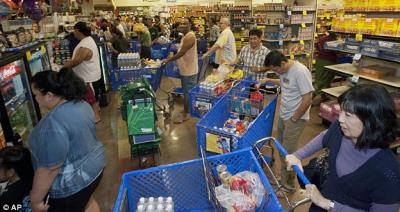 Consumers are depleting supermarkets shelves with their transition to an “eat-at-home” lifestyle. Supermarkets are pressured to replenish tray-pack chicken, eggs, shelf-stable milk substitutes, paper goods, and toiletries. Demand for eggs has transcended all categories, although some price sensitivity is evidenced by the fact that “pasture reared” and similar products, priced upwards of $6 per dozen remain unsold. Nationally-branded specialty eggs, house brands and generics are whisked off shelves to consumers’ refrigerators throughout the nation. In accordance with the laws of supply and demand, price has risen in response to availability with an average national price now exceeding the three year average, following a very depressed 2019. Consumers are depleting supermarkets shelves with their transition to an “eat-at-home” lifestyle. Supermarkets are pressured to replenish tray-pack chicken, eggs, shelf-stable milk substitutes, paper goods, and toiletries. Demand for eggs has transcended all categories, although some price sensitivity is evidenced by the fact that “pasture reared” and similar products, priced upwards of $6 per dozen remain unsold. Nationally-branded specialty eggs, house brands and generics are whisked off shelves to consumers’ refrigerators throughout the nation. In accordance with the laws of supply and demand, price has risen in response to availability with an average national price now exceeding the three year average, following a very depressed 2019.
There are a number of observations and lessons from the increased demand for eggs since the advent of COVID-19:
- The distribution system from packing plants through to supermarket shelves cannot respond adequately to surges in demand. Out-of-stock represents a lost sale and in turn revenue to a retailer and ultimately a reduction in the potential increase in per capita consumption.
- In visiting supermarkets over the past few weeks, it is evident that stores receiving direct delivery are more able to keep shelves stocked. In contrast, there appears to be a delay interposed by distribution centers that have not reacted to the surge.
- As with manufacturing industries, the obvious risks and costs associated with “just-in-time” management are becoming apparent. What works under an optimal situation has proven to be inefficient when challenged by increased demand.
- Retailers will have to maintain more stock and motivate their deli personnel to transfer eggs from coolers to shelves as necessitated by volume of sales.
- More frequent deliveries from DCs to stores are obviously necessary with an emphasis on critical items. This may result in a deterioration in cost per ton-mile, but may well be justified in terms of enhanced store revenue and consumer satisfaction. Evidently, chains must become more flexible with regard to sourcing supplementary deliveries direct from packers, especially if they are unable to receive deliveries through company DCs.
A situation such as Covid-19, which has resulted in a profound shift in dining from QSRs and restaurants to the home, has highlighted the versatility of eggs. Not only due to the reality that most consumers can cook an egg, be it boiled, fried, or scrambled, consumers have now extended from breakfast to lunches and even dinners. A stay-at-home lifestyle mandated by COVID-19 restrictions is probably bringing more families together to eat and the industry should experience an increase in demand after the present crisis is resolved. Publicity generated by the American Egg Board emphasizing eggs as a source of protein and other nutrients and their excellent use of social media to promote diversity of meals that can be prepared with eggs should reinforce an obvious consumer trend.
Since shopping at large supermarkets may be regarded as a risk of acquiring COVID-19, smaller stores including Dollar and convenience units are now regarded as locations to buy eggs, milk, bread, and other necessities. This trend may persist when normal conditions return. Accordingly, distributors involved in restocking these stores may play an important role in maintaining an anticipated increase in egg consumption.
Pack size may well be influenced by demand, favoring 18 and 24-egg presentations. Fewer visits to supermarkets require larger packs to maintain volume of sales. More eggs in the refrigerator will probably translate to greater consumption.
The final lesson relates to willingness to pay. It is possible that this episode of high demand and concurrent escalation in price will create a greater appreciation of the value of eggs and an inclination to pay for their inherent nutrients. Not only are we retraining a cohort of consumers, but we may in fact be recalibrating chain buyers who are essentially the arbiters of price.
There are probably many lessons to be learned from the current situation, as stressful and unfortunate as it may be. Again, EGG-NEWS stresses the need for a professional study on egg pricing under unusual marketing conditions. Previously, it was suggested that the AEB fund studies by agricultural economists to examine price and supply relationships in the shell egg and liquid masrkets and their interaction during and following the 2015 avian influenza epornitic. The COVID-19 demand is yet another opportunity for the industry to take advantage of market perturbation to learn more about how demand and supply influence price in the short and intermediate term. This will allow more rational decisions on allocation of capital for expansion and cage-free transition, flock placement and marketing programs to capitalize from both normal and abnormal situations.

|
Court Orders USDA to Establish a Justification for Withdrawing the 2017 Organic Livestock and Poultry Practices Rule
|
03/18/2020 |
|
The Organic Livestock and Poultry Practices Rule (OLPP), that was intended to establish standards for organic production, was signed into effect during the last hours of the Obama Administration in January 2017 by then Secretary of Agriculture Tom Vilsack. The incoming Secretary of Agriculture, Dr. Sonny Perdue, successively delayed implementation of the Rule and on March 13th 2018 issued a final withdrawal notice which terminated the initiative.
The Organic Trade Association initiated litigation to reverse the USDA decision. After considerable delays requested by USDA, the U.S. District Court for the District of Columbia has ruled that the USDA now has 180 days to rectify errors in economic models and to return to the Court with a defense.
|
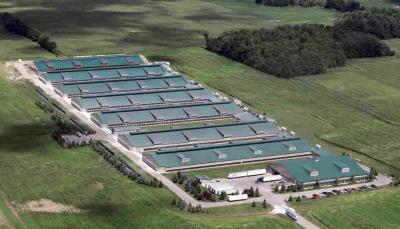
Organic Farm with aviaries and sun porches |
The Organic Trade Association stated “At the end of the day, and despite this delay, we are more confident than ever that our lawsuit will prevail and that the will of the industry will be served. We are confident that the Organic Livestock and Poultry Practices Rule will be reinstated.”
The OLPP mandated extensive outside access for egg-production flocks. This requirement would have disqualified most in-line egg production units that use sun porches as a substitute for outside access.
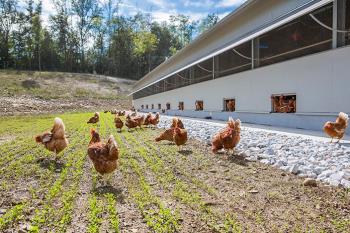 From the perspective of biosecurity, hens should not have outside access to pasture as they are vulnerable to infections including avian influenza carried by migratory waterfowl and are susceptible to infection with Salmonella and parasites. From the perspective of biosecurity, hens should not have outside access to pasture as they are vulnerable to infections including avian influenza carried by migratory waterfowl and are susceptible to infection with Salmonella and parasites.
If the OLPP rule is reinstated, the contribution of organic eggs from large in-line aviary units without outside access will cease, resulting in escalation in the price of organic eggs. The industry will predictably respond by developing a new category of ‘GMO-free’ eggs that will effectively satisfy the majority of current organic customers, but at a far lower price.
The OLPP rule may reemerge irrespective of lawsuits and court decisions in 2020, if there is a change in Administration, since the industry can expect a reversion to the previous policy favoring “family farms”. This would be unfortunate for both producers and consumers as eggs produced under the proposed OLPP Rule would retail for over $6.00 per dozen compared to certified organic eggs fron in-line units currently retailing for approximately $3.75 per dozen in club stores. Organic eggs under the strengthened OLPP Rule would have no quantifiable quality or nutritional benefit over eggs from hens held in aviaries and allowed access to protected sun porches.

|
Investment for In-line Complexes Dictates Professional Planning and Execution
|
03/12/2020 |
|
The initial phase of conversion from conventional cages to aviary units in the 2010s involved reconstruction and modification of existing high-rise houses to accommodate aviaries or in some cases floor systems. Building restrictions, farm layout, house dimensions and design dictated decisions on equipment, ventilation and services.
|
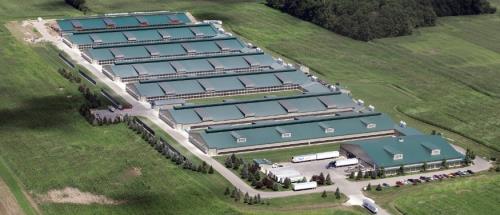 Midwest Complex Representing the ultimate in professional planning and execution Midwest Complex Representing the ultimate in professional planning and execution |
Establishing a green-field complex to accommodate two million hens is a far more complex endeavor requiring not only technical input from qualified engineers and production specialists but coordination of the various disciplines to achieve an optimal outcome. Where owners of laying operations could serve as their own general contractors in the 1990s the complexity of a project comprising nine or more multi-level aviary houses each holding more than 300,000 hens requires a competent general contractor with deep resources and experience.
The initial and critical step in a project is to prepare a comprehensive feasibility study, required in any event by financial institutions. This key planning document takes into account a realistic market forecast that should determine the size of the intended complex, production and packing parameters, capital and operating cost and a projection of return on investment.
Lenders are now disinclined to advance funds for projects in excess of $100 million without assurances that recipients have the capacity to service loans. Collateral represented by a completed in-line project can only be used for egg production. In a market depressed by prolonged overproduction, the value of capital assets to produce eggs would be heavily discounted in the event of a default.
It is a valid observation that some projects are conceived in isolation without reference to the activities of competitors. This is partly the reason why our industry has traditionally undergone wide swings in profitability, attributed to cycles of overproduction relative to demand. To paraphrase the late Vice President Hubert Humphrey, a few million additional hens here and there soon adds up to real volume.
Conceptual planning must take into account the ultimate size of a complex including feed production, packing and further processing in addition to the facilities for pullet rearing, laying hens, biosecurity and services. In recent years, complexes have been erected without adequate biosecurity or with unbalanced capacities for rearing and laying that detract from optimal utilization of capital intensive facilities. Neglecting biosecurity can result in complete depopulation in the event of exposure to a catastrophic disease or at best a severe impact on production and profit following introduction of an erosive infection such as coryza. Inadequate capacity to rear pullets may require purchase of pullets or alternatively houses may stand idle while they incur fixed costs including interest and depreciation.
Professional input is required to design multi-level structures to ensure they are able to withstand floor loading, wind forces, extreme heat or snow accumulation depending on location. Over-design is expensive but under-design can be catastrophic. Structures and equipment are becoming more complex requiring the input of electrical engineers and suppliers experienced in installing computerized sensor and control equipment to monitor and manage flocks. Although there are many efficient component systems available to control ventilation, to ensure regular egg flow to the packing plant and to monitor flock performance it is necessary that systems be compatible and coordinated with respect to their function. This requires consultation among management, equipment suppliers and professional consultants.
Compliance with environmental restraints, welfare mandates, state and local regulations including building and fire codes must be incorporated into planning and permitting. Erection of a complex representing a continuum from breaking ground to completion requires coordination, applying modern project-management technology. Delays in delivery of imported or critical components can impact progress and distort completion schedules, requiring appropriate modification. Compromises involving the inherent biological cycle of rearing and egg production can have profound financial impacts if flocks are transferred prematurely or if older flocks are retained beyond their productive and economic life.
Committing upwards of $100 million to a complex requires a level of professionalism commensurate with the magnitude of the investment. Traditional approaches to building single-level, high-rise complexes of the 1990's are no longer valid. Capital cost and complexity have increased at a rate requiring a high degree of professional involvement. We have seen too many new buildings engulfed in flames due to substandard electrical installations. Disease outbreaks that have occurred in recent years can be contributed to defects in both structural and operational biosecurity. The return on investment in many operations is less than optimal due to deficiencies in planning and execution.
It is always more expensive to modify and redesign after completion of a project compared to the return from professional planning and execution - just ask Boeing.

|
COVID-19 Infection and Potential Impacts on the Egg Industry
|
03/04/2020 |
|
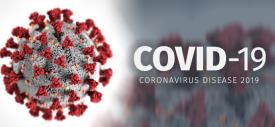 The present situation The present situation
Approximately ten weeks after the first recognition of COVID-19 infection in China, the disease has been reported in sixty-one nations. At the present time, the highest number of cases have occurred in China with approximately 80,000 infected and 3,000 fatalities. Second is Italy with 2,500 cases and 79 fatalities and Iran with 2,300 cases and 77 fatalities. Korea has had 5,700 cases with 35 fatalities and Japan has diagnosed 1,000 cases. At the present time the U.S. has positively diagnosed 118 cases with nine fatalities
It is noted that the incidence rate (new cases within a specific time) in China is declining, attributed in large measure to the draconian measures enforced by the central government on affected provinces. Approximately 50 million people were under lockdown for at least three weeks although 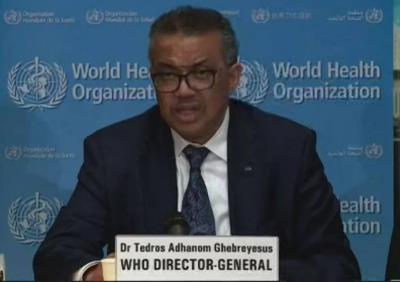 workers are returning to factories and offices but under strict surveillance. It remains to be seen whether an upsurge in new cases will occur following relaxation of quarantines. It is generally acknowledged that Western nations could not impose the same restrictions that appeared effective in China. workers are returning to factories and offices but under strict surveillance. It remains to be seen whether an upsurge in new cases will occur following relaxation of quarantines. It is generally acknowledged that Western nations could not impose the same restrictions that appeared effective in China.
With respect to the U.S., initial cases were acquired overseas but during the past two weeks it is apparent that community spread of the SARS-CoV-2 virus (as designated by the WHO) is clearly transmissible among people in close contact. Preliminary information from China suggest that 80 percent of cases are extremely mild to moderate, 14 percent result in severe complications and 6% of patients with predisposing conditions experience life-threatening pneumonia. Fatality rates in China vary from 0.7% to 5% depending on province. It is clear that without knowing the actual number of individuals infected by applying retrospective serologic surveys, it is impossible to determine the denominator to be used to establish rates of infection and fatality. A preliminary study conducted in Guangzhou Province indicated that the infection rate was in fact low, but the situation may be different in Hebei Province. Realistically, authorities in the U.S. do not know the extent of infection given the slow start to antigen (virus) assay. A more precise knowledge of the extent of infection over the past two weeks will evolve and will be necessary to guide preventive measures and policies.
Despite the predictions of pundits, economists, politicians and other amateur epidemiologists, the nation should rely on authoritative statements based on past experience with SARS and influenza outbreaks and science. Key personnel include Dr. Anthony Fauci, Dr. Nancy Messonnier and Dr. Clifford Lane of the NIH, Dr. Scott Gottlieb, previously Commissioner of the FDA, Dr. Jerome Adams, Surgeon General and Dr. Robert Redfield of the CDC. Statements by White House personnel, at variance with established scientific fact, aimed at downplaying the severity of the situation for political purposes represent a disservice to our nation.
Effects on the Poultry Industry and Society
The possible impacts on the egg industry will relate to the extent of quarantines and possible restrictions on interstate transport. Although there is no indication of U.S. policy on quarantines it is accepted that we will not follow the lead of China. Despite some inconveniences farms will receive ingredient and eggs will be delivered to retail and egg liquid to manufacturing plants. If however, the infection assumes epidemic proportions, obvious impacts on logistics and ongoing operations including the availability of workers will emerge as restraints.
Of immediate concern is a disruption in the supply chain for critical components. The U.S. poultry industry is relatively secure with respect to vaccines for poultry diseases. Since a high proportion of vitamins and other compounds emanate from China, delays in manufacture and supply of nutrients may cause problems. Port delays in China during mid-January extending through February have reduced the volume of broiler feet and parts shipped although the congestion at points of entry appears to be easing. Hong Kong is the largest importer of U.S. shell eggs but at this stage there does not appear to be any disruption in the chain of delivery. Exports to our USMCA neighbors, Canada and Mexico should not be affected unless one of the three nations imposes border restrictions that would be deleterious to all commerce and agriculture.
The most immediate risk facing the egg industry appears to be maintaining a productive work force at both the farm and plant levels. Hopefully the suggestions provided by CDC and reiterated in EGG-NEWS that all personnel should have received the 2019 influenza vaccine have been followed. This is relevant since a late winter or early spring upsurge of influenza will complicate recognition and diagnosis of COVID-19.
An effective and proven safe vaccine may only be available for field deployment during the late summer of 2021, given time required for development and testing. Egg producers should advise workers to follow common sense precautions including frequent hand washing, avoiding close contact with co-workers and abstaining from attending events involving a high concentration of participants including concerts, sports and political rallies.
It is evident that if COVID-19 becomes epidemic in the U.S. consumers will shun large supermarkets and malls shifting purchases of eggs to smaller stores. This will require more flexible delivery programs. Sales of eggs and products in restaurants will probably fall, compensated by greater consumption of home-prepared meals or the use of drive-through lanes at QSRs.
It is still too early to predict social, political and economic effects of COVID-19. What we will need is clear and concise direction based on sound scientific and epidemiologic principles. This is certainly no time for the blame game or advocacy of quick-fixes and nostrums manifested by misinformation on social media.
Hopefully the U.S. will be spared an extensive outbreak and that our medical resources will be able to treat the elderly, the immunosuppressed and those predisposed to respiratory infection.

|
Converting to Cage-Free—A Financial and Timing Dilemma
|
02/26/2020 |
|
As we transition through 2020 we should remember that we are now at the mid-point of the ten-year grace period to achieve conversion from cage-free housing of hens to alternative systems, intended to be complete in 2025. As of January this year the USDA reported 70 million hens out of a nominal 330 million were housed in other than conventional cages representing 21 percent of the national flock in production on commercial farms. This means that in the next five years an additional 260 hen-places will be required for the shell egg and products segments. At a conservative cost of $40 per hen, representing an average between conversion of existing houses and erection of new complexes, the capital required to achieve re-housing will amount to $10.5 billion for hens plus a provision of about $2.5 billion for rearing pullets assuming no further expansion through 2025.
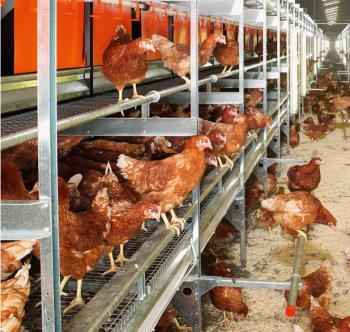 How did we get to the present situation? The Humane Society of the United States (HSUS) under the direction of then president Wayne Pacelle adopted alternative housing for hens as a primary objective. Not because his organization cared for hens (or for that matter any animal), but the issue served as a rallying cry to attract funding for the HSUS. Income that was to be used for lobbying, advancing a vegan agenda and supporting a cadre of administrators feathering their collective nest. Animal shelters received less than one percent of revenue over successive years in the 2000s and since despite heartbreaking TV spots featuring neglected dogs and cats. How did we get to the present situation? The Humane Society of the United States (HSUS) under the direction of then president Wayne Pacelle adopted alternative housing for hens as a primary objective. Not because his organization cared for hens (or for that matter any animal), but the issue served as a rallying cry to attract funding for the HSUS. Income that was to be used for lobbying, advancing a vegan agenda and supporting a cadre of administrators feathering their collective nest. Animal shelters received less than one percent of revenue over successive years in the 2000s and since despite heartbreaking TV spots featuring neglected dogs and cats.
Pacelle advanced a two-pronged approach to pressuring producers to convert from cage housing. The first involved ballot initiatives in states that functioned with constitutions allowing legislation by citizen vote. Mounting a successful campaign in California, Proposition #2 passed with two thirds of ballots cast in 2008 paving the way for Oregon, Washington, Rhode Island and Michigan. More recent initiatives or legislation is under consideration for Arizona, Colorado and Hawaii. States with constitutions placing the legislative process in the hands of elected representatives and senators were refractory to HSUS tactics of voter manipulation using ballot initiatives.
Then came the second prong. The HSUS coerced a range of egg purchasers to commit to announcements of a ten-year period of transition to achieve complete conversion. Failure to make a declaration in 2015 through 2016 would have been to invite adverse publicity, condemnation on social media, store demonstrations and brand degradation. For an executive a commitment to convert was essentially a no-brainer given that most of the decision makers would have moved on or retired by 2025. The HSUS was initially helped with their campaign by a number of companies mostly with E.U. roots involved in food service, manufacturing and retail. Most of the members of the Food Marketing Institute, National Restaurant Association, National Council of Chain Restaurants and others were blindsided by the speed at which commitments were extracted and publicized.
The justifications regarding consumer demand for enhanced welfare in the form of cage-free housing was thin to non-existent. Superficial and unscientific surveys with biased questions and doubtful validity were commissioned by the HSUS and also by kindred animal rights and pro-vegan organizations. Sure the studies showed that affluent shoppers would prefer to have hens scratching in pasture or roaming in barns than confined to cages. The surveys were constructed to deliver a pre-determined result, rather like asking a six-year old if they are in favor of ice cream. A scientific study has yet to be published using conjoint analysis to determine willingness to buy eggs from hens housed under different systems but with unique and relevant prices. Everyone wants welfare but not everyone is willing or able to pay for it. Effectively we are witnessing an after-the-effect manifestation of consumer choice with multi-tier attributes and pricing. Generic eggs from hens in cages are marked at about $1 per dozen on the shelf compared to cage-free aviary and barn eggs at $2.50 per dozen. They have the same nutritional value, similar packaging but bear a price differential reflecting the additional cost of production and retail markup arising from the cage-free attribute.
Given the effective saturation of the shell-egg market characterized by small annual incremental increases in demand, despite promotion by the AEB, consumers have effectively defined the volume of cage-free product they will buy and at what price. To continue with conversion by committing loan capital in a market offering negative returns is fallacious. Dolph Baker Chairman and CEO of Cal Maine Foods has indicated that conversions by his Company going forward from 2020 would be “market driven”. Mainstream supermarkets now regret their haste in conceding to the HSUS and desperately want to retain the option to sell a range of eggs to consumers with the existing range under stable conditions of $1 per dozen for caged product up to $3.00 for eggs derived from hens under alternative systems.
Now is the time for members of the FMI, NCCR, NRA and others ensnared by the HSUS to collectively absolve themselves from commitments made in haste in 2015 and 2016. Decisions made under duress and without appropriate market research. Customers are now voting with their purses and wallets. The industry has reached a plateau in conversion and to continue to completion by 2025 would be detrimental to financial institutions, producers, retailers and consumers. Conversion can and should continue but at a pace consistent with replacement of obsolete high-rise houses fitted with cages and with an expectation of a reasonable rate of return on capital invested.

|
Opportunities for Fairness in Farming Act of 2020 Introduced into the House
|
02/10/2020 |
|
 Representative Dina Titus (D-NV) has introduced the Opportunities for Fairness in Farming Act of 2020 designated H.R. 5563. This intended legislation parallels a similar Bill introduced into the Senate sponsored by Senators Mike Lee (R-UT), Cory Booker (D-NJ), Rand Paul (R-KY) and Elizabeth Warren (D-MA). The proposed legislation would create additional audits and reporting for commodity boards financed by check-offs. An important provision of the Bill would prevent Boards from cooperating with or funding organizations that engage in any form of lobbying. According to the UEP, justifiably opposing bills constraining check-off programs, the American Egg Board would be denied the opportunity to work with numerous organizations including the School Nutrition Association. Representative Dina Titus (D-NV) has introduced the Opportunities for Fairness in Farming Act of 2020 designated H.R. 5563. This intended legislation parallels a similar Bill introduced into the Senate sponsored by Senators Mike Lee (R-UT), Cory Booker (D-NJ), Rand Paul (R-KY) and Elizabeth Warren (D-MA). The proposed legislation would create additional audits and reporting for commodity boards financed by check-offs. An important provision of the Bill would prevent Boards from cooperating with or funding organizations that engage in any form of lobbying. According to the UEP, justifiably opposing bills constraining check-off programs, the American Egg Board would be denied the opportunity to work with numerous organizations including the School Nutrition Association.
 There is considerable opposition to state and national check-off programs in the beef industry by independent producers’ organizations. The representative group, R-CALF USA has alleged irregularities in the use of check-off funds and is currently involved in a number of legal actions at state level. There is considerable opposition to state and national check-off programs in the beef industry by independent producers’ organizations. The representative group, R-CALF USA has alleged irregularities in the use of check-off funds and is currently involved in a number of legal actions at state level.
The American Egg Board came under criticism in 2015 when it was disclosed that check-off funds and personnel were used to oppose a company introducing a vegetable-based egg substitute. In 2007, the American Egg Board supported opponents of California Proposition #2 in contravention of legislation governing political action. In 2015 the American Egg Board underwent changes in management and has functioned since this time under the leadership of Anne L. Alonzo with strict conformity to USDA-AMS regulations.
Given prevailing policy in the USDA, and in recognition of the value of commodity boards among members of Congress and their constituents, it is unlikely that H.R. 5563 will receive meaningful support in the Senate. The Speaker of the House has expressed muted acceptance for changes in the control of commodity boards. A disquieting aspect is the obvious pressure exerted by welfare organizations lobbying for restrictive legislation based presumably on their avowed opposition to intensive livestock production.

|
Wisconsin Recognizes Crisis in Dairy Farms. A Message for Egg Producers?
|
02/09/2020 |
|
In his State of the State Speech, the Governor of Wisconsin Tony Evers stated that he would call a special session of the Legislature to develop programs to prevent bankruptcies and suicides among farmers in the state. The session is intended to consider bills that would assist farmers and promote agricultural industries. Evers faces opposition from a Republican-controlled Legislature although Senate Majority Leader Scott Fitzgerald commented “we are all looking for ways to do better when it comes to ag.” He added “there have been a number of proposals by the Legislature, but I’m all ears on what the government has to offer.” Governor Evers noted that a proposed bill would create a Wisconsin initiative for dairy exports to increase volume to 20 percent of the Nation’s milk supply by 2024. The second bill would improve the University of Wisconsin extension services to farmers. The Governor has proposed a new office of Rural Prosperity to promote agriculture income.
With respect to intended actions by the Wisconsin Legislature the future and prosperity of the state dairy industry is governed by simple economics. The market for raw milk in the U.S. has declined by twenty percent over two decades. Consolidation and economies of scale have benefitted larger farms and dairies allowing them to capture more of the current declining market placing smaller and hence less efficient family farms at a competitive disadvantage.
We have seen similar trends in the egg industry. Prolonged periods of low prices and negative margins in 2019 suggest that family farms not affiliated to integrators by supplying off-line packing may not survive without solid local and niche markets. Subsidies and programs that fly in the face of economics provide only temporary relief. In contrast to the milk industry, egg consumption is increasing although at a glacial rate, despite the strenuous activities of the American Egg Board. It is more than apparent that there will be a reduction in the number of producers in 2020 and profitability will only be restored with a substantial reduction in the numbers of producing hens.
The activities of the American Egg Board and the USA Poultry and Egg Export Council are maintaining export markets for shell eggs and products, principally to our USMCA neighbors. In the case of shell eggs to Hong Kong there are obvious limits given international competition and freight rates. Notwithstanding the relatively small volume of exports relative to production, this segment of our industry represents 8 to 11 million hens out of a flock of 325-330 birds in production. Prospects of increasing exports are limited. Accordingly retention of existing markets and export volume are critical to achieving a break-even or profit situation.
Unlike the milk industry, egg producers are facing the prospect of considerable capital investment in converting from conventional cages to alternative systems to comply with the demands for enhanced welfare. Commitments to convert to cage-free sourcing by 2025 imposed by members of the Food Marketing Institute , National Restaurant Association, the Food Marketing Institute and the National Council of Chain Restaurants will not be fulfilled.
Progress in transition from cage facilities, at a cost of $30 to $40 per hen, depending on housing and equipment, has attained a proportion of 32 percent of the population of hens producing eggs for the shell market. The rate of conversion and erection of new facilities has probably reached a plateau consistent with market demand, ultimately influencing price and margin. Taking a lesson from the dairy industry and also our history it would be imprudent to replace cages with aviaries or floor systems without reducing or stabilizing the population of hens on new or existing complexes.

|
Coryza Focus of Attention at 2020 IPPE Meeting of Egg Production Veterinarians
|
02/06/2020 |
|
 Understandably, the impact of coryza was a major concern at the Winter meeting of American Veterinarians in Egg Production. This ever-expanding group of Veterinarians in North America involved in egg production and breeding convened concurrently with the 2020 IPPE. Understandably, the impact of coryza was a major concern at the Winter meeting of American Veterinarians in Egg Production. This ever-expanding group of Veterinarians in North America involved in egg production and breeding convened concurrently with the 2020 IPPE.
A case report on coryza in a Midwest complex holding two million hens was presented by the company veterinarian. The condition appeared in two of nine houses on a complex, presenting as mild facial swelling and ascending mortality rising to approximately 0.5 percent per day. A review of house records showed that water consumption fell precipitously three days before onset of clinical signs followed by a drop in feed intake and production and then the appearance of clinical signs and an increase in mortality. The entire flock was treated with CTC at a level of 400 grams per ton.
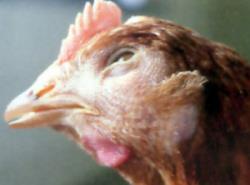 Initially there was difficulty in identifying the causal organism Avibacterium paragallinarum. Culture of the organism is difficult using conventional microbiologic culture, but the presence of antigen can be detected using a polymerase chain reaction assay. Initially there was difficulty in identifying the causal organism Avibacterium paragallinarum. Culture of the organism is difficult using conventional microbiologic culture, but the presence of antigen can be detected using a polymerase chain reaction assay.
The value of the discussion lay in the contribution and collegial interaction among the attendees. A number of older members of the group who have had extensive experience with the control of coryza and specifically Modesto strain C-2 in Californiaand Mexico and various serotypes in South Africa and Asia provided comments.
A participant noted that if tetracycline is administered to flocks the condition can be resolved within three weeks. In the absence of antibiotic therapy, the duration of clinical signs is approximately 21 days. The actual absorption of tetracycline incorporated in a layer diet containing 3.5 to 4.5 percent calcium is questionable. Since there were no untreated controls in the Midwest Complex, it is not possible to comment on the efficacy of medication.
Since Avibacterium is a fragile organism, it does not persist for long in the environment compared with other bacterial pathogens such as Salmonella and Pasteurella. Introduction of an infection onto any farm denotes a deficiency in biosecurity. Failure to subject workers, supervisors and visitors to appropriate de-robing, showering and donning of farm-supplied protective clothing is an obvious risk factor for introduction of coryza. In the context of large complexes, nest-run eggs from contractors introduced into in-line packing plants, contract service crews and modules used for flock depopulation could all be regarded as potential vehicles of infection.
The consensus was that once a complex is infected, the permanent carrier state will require vaccination of replacement pullets either using a commercial multivalent vaccine or if inadequate protection is achieved, an autogenous product is required. Upgrading of biosecurity is critical to preventing exposure.
During the mid-1960’s and 1970’s in some nations where vaccines were unavailable, producers resorted to contrived infection administering Avibacterium (Haemophilus as it was then classified) to six-week old pullets that were then treated with tetracycline. Pullets remained permanent carriers but did not demonstrate clinical signs and their production was unaffected when transferred to a multi-age complex.
Given the recent history of coryza as it emerged in Pennsylvania and extended to Ohio, coupled with the presence of infection in California suggest that the disease will be disseminated to additional regions. More effective vaccines will have to be incorporated into pullet immunization programs once the disease is introduced into a flock.

|
Green Party Matures in Germany. Harbringer of an EU Trend
|
01/20/2020 |
|
 Mid-January marked the 40th year since the foundation of the Green Party in Germany. Originally an “eccentric band of environmentalists, peaceniks, and anti-nuclear activists” according to The Economist, the Greens have matured and now support policies combining ethics with realism and a commitment to the EU. From minitority outsiders, the Greens have emerged as the second largest party in Germany and may govern the nation following the Fall 2021 election, given the decline of the grand coalition between the CDU and the SPD. The Greens serve in coalitions in 11 of the 16 German states, forming bonds with diverse political groups including both conservatives and ex-communists as expedient. Mid-January marked the 40th year since the foundation of the Green Party in Germany. Originally an “eccentric band of environmentalists, peaceniks, and anti-nuclear activists” according to The Economist, the Greens have matured and now support policies combining ethics with realism and a commitment to the EU. From minitority outsiders, the Greens have emerged as the second largest party in Germany and may govern the nation following the Fall 2021 election, given the decline of the grand coalition between the CDU and the SPD. The Greens serve in coalitions in 11 of the 16 German states, forming bonds with diverse political groups including both conservatives and ex-communists as expedient.
The Green Party intends to phase out coal power and internal combustion engines in automobiles by 2030. They intend imposing duties on carbon emissions but will pursue climate-friendly growth that supports industry and employment.
 Implicit in the eco-friendly approach to government is an avowed opposition to intensive livestock production. The Greens have been instrumental in banning conventional cages, beak trimming, and destruction of egg-strain cockerels. Like-minded politicians in other EU nations are clearly following the lead of the Greens in Germany. A 40-year record of slow, but significant, acceptance suggests that Green populism moderated by practicality will be the dominant feature of EU politics through the present decade. Many of the principles advocated by the Greens resonate in the U.S. This has implications for the egg-production industry both with respect to policies and standards required by multi-national customers and the design of equipment. Implicit in the eco-friendly approach to government is an avowed opposition to intensive livestock production. The Greens have been instrumental in banning conventional cages, beak trimming, and destruction of egg-strain cockerels. Like-minded politicians in other EU nations are clearly following the lead of the Greens in Germany. A 40-year record of slow, but significant, acceptance suggests that Green populism moderated by practicality will be the dominant feature of EU politics through the present decade. Many of the principles advocated by the Greens resonate in the U.S. This has implications for the egg-production industry both with respect to policies and standards required by multi-national customers and the design of equipment.

|
Effect of New SNAP Rules
|
01/16/2020 |
|
 In December 2019, Secretary of Agriculture Dr. Sonny Perdue announced that the Department would cease allowing waivers extended by states to unemployed able-bodied recipients between the ages of 18 and 49. It is estimated that approximately 700,000 citizens will become ineligible for SNAP benefits. These include 400,000 in California; 100,000 in Pennsylvania, and the remainder spread among states with depressed economies including Louisiana, Illinois, Michigan, and Nevada. In December 2019, Secretary of Agriculture Dr. Sonny Perdue announced that the Department would cease allowing waivers extended by states to unemployed able-bodied recipients between the ages of 18 and 49. It is estimated that approximately 700,000 citizens will become ineligible for SNAP benefits. These include 400,000 in California; 100,000 in Pennsylvania, and the remainder spread among states with depressed economies including Louisiana, Illinois, Michigan, and Nevada.
Campbell Robertson, writing in The New York Times on January 13th, cited a study in Cabell County in West Virginia where there is extreme poverty are there are few jobs to maintain eligibility.
Restrictions imposed during the recent past have resulted in greater demands on homeless missions and food pantries. The need for assistance will only increase despite limited resources and donations. In 1996 Federal law placed a limit on SNAP support for able-bodied adults who were restricted to benefits for three months in a three-year period if not working or in training for 20 hours per week. Many states, including California and Pennsylvania, have operated under a USDA waiver allowing relaxation of requirements in case of need. This concession will be now be withdrawn.
In announcing the USDA p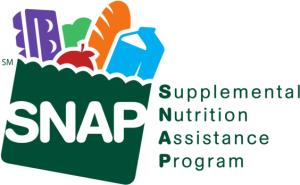 olicy on SNAP, Secretary Perdue justified the decision as an effort “to restore the dignity of work”. Given the non-availability of jobs and training programs in depressed areas of the nation including Eastern Ohio, West Virginia, Nevada, New Mexico, and Colorado among others, the social experiment to be enacted by USDA will have no direct benefit on dignity, but will impose suffering on the poor and especially children. Regrettably, what may be considered beneficial within the confines of the DC Beltway, may not be practical in the mountains of Appalachia and the deserts of the far west where vulnerable populations face challenges to survival. olicy on SNAP, Secretary Perdue justified the decision as an effort “to restore the dignity of work”. Given the non-availability of jobs and training programs in depressed areas of the nation including Eastern Ohio, West Virginia, Nevada, New Mexico, and Colorado among others, the social experiment to be enacted by USDA will have no direct benefit on dignity, but will impose suffering on the poor and especially children. Regrettably, what may be considered beneficial within the confines of the DC Beltway, may not be practical in the mountains of Appalachia and the deserts of the far west where vulnerable populations face challenges to survival.
Structured studies have shown that reducing SNAP benefits has no effect on employment rates in many areas where there are no job opportunities available.
Removing 700,000 recipients of SNAP benefits from the USDA roll will also have an indirect impact on demand for agricultural products. This indirect consequence has been highlighted by the American Farm Bureau Federation and other commodity associations.

|
The Need to Prevent Barn Fires
|
01/07/2020 |
|
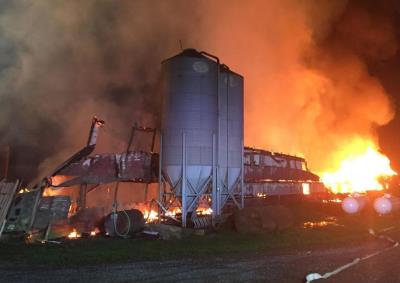 The recent unfortunate conflagration on a farm in Western Michigan resulting in the loss of a cage-free unit with 300,000 hens stimulated a review of fires on egg-production units both in the U.S. and the EU. During 2017 about 1.4 million hens were lost to fire in three incidents in Pennsylvania, Utah and Indiana. In addition to fires involving older high-rise houses there have been a number of incidents involving destruction of newly completed barns and units under construction. The recent unfortunate conflagration on a farm in Western Michigan resulting in the loss of a cage-free unit with 300,000 hens stimulated a review of fires on egg-production units both in the U.S. and the EU. During 2017 about 1.4 million hens were lost to fire in three incidents in Pennsylvania, Utah and Indiana. In addition to fires involving older high-rise houses there have been a number of incidents involving destruction of newly completed barns and units under construction.
Canada documented the loss of half a million hens in a series of barn fires from 2015 through 2018. It must be remembered that the Canadian controlled marketing system restricts the number of hens on a farm and barns seldom house more than 20,000 birds, suggesting a relatively large number of fires. Between 2017 through late 2019 the Netherlands recorded fires resulting in the loss of 500,000 hens. Again, farms have relatively small barns as producers belong to horizontally integrated cooperatives. In contrast, Germany did not record any losses of hens due to fire. This may be attributed to the fact that fire alarms and sprinklers are mandatory in livestock buildings in this nation.
In reviewing specific cases, malfunction of electrical equipment including overheating motors and substandard wiring are responsible for fires in older high-rise houses. A few cases of losses in newly constructed buildings are attributed to deviations from acceptable structural and electrical codes and defective circuit breakers. It is considered significant that most fires occur at night resulting in total loss of at least the house involved in addition to death and depressed egg production due to smoke inhalation in adjacent houses located on in-line complexes. This obviously points to defective or 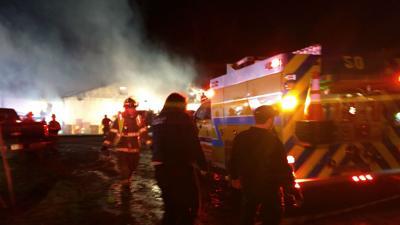 absent alarm systems or a delay in the response of managers. absent alarm systems or a delay in the response of managers.
The large capacity and hence cost of multi-level cage-free aviary housing elevates the financial consequences of a fire. At a nominal $30 per hen housed, a structure and equipment involves an investment approaching $10 million if only one barn is impacted. The value of the flock, depending on age and hence amortization, may range downwards from $1.2 million. To this must be added the loss of income and the costs of disruption and temporary repairs to continue operation.
With increasing capital cost and consequential losses associated with a single incident, insurance companies are reassessing risk. As with floods and hurricanes, any upsurge in claims will result in a reevaluation of premiums and deductibles, placing a greater burden on the insured.
The welfare and public relations aspects of fires which may result in the loss of 300,000 hens in a single barn have yet to be evaluated. In the past, extensive mortality from heat prostration associated with climatic extremes generates considerable criticism of “factory farming”, detracting from the image of the egg industry.
It is axiomatic that the time taken to respond to a fire especially at night in a rural area results in the loss of at least the affected barn. All that first responders can do is to contain a fire and prevent spread to adjacent buildings frequently located too close to prevent secondary loss.
Prevention of fires requires a coordinated approach to the design of buildings and selection of fire-proof construction materials. Wood and pressboard are inexpensive but are inflammable and as a complementary issue are impossible to decontaminate. Given that electrical wiring and installations are the major cause of fires, all new buildings should confirm to the National Fire Protection Association, Fire And Life Safety Animal Housing Facilities Code. This Manual is available from the NFPA at a cost $52 by accessing <www.nfpa.org>.

|
“We the People are Pissed” – END in Southern California
|
01/06/2020 |
|
 A mid-2019 article in the LA Times by staff writer Jaclyn Cosgrove, confirmed antagonism towards the California Department of Food and Agriculture in response to the ongoing control measures to eradicate exotic Newcastle disease (END). The appellation "exotic" is a misnomer with regard to the outbreak in the three contiguous counties of San Bernardino, Riverside and Los Angeles in Southern California. Any outbreak that resists control and eradication for twenty months cannot in fairness be regarded as exotic. To accept reality, the outbreak may be considered contiguous with the endemic status of poultry in northern Mexico. A mid-2019 article in the LA Times by staff writer Jaclyn Cosgrove, confirmed antagonism towards the California Department of Food and Agriculture in response to the ongoing control measures to eradicate exotic Newcastle disease (END). The appellation "exotic" is a misnomer with regard to the outbreak in the three contiguous counties of San Bernardino, Riverside and Los Angeles in Southern California. Any outbreak that resists control and eradication for twenty months cannot in fairness be regarded as exotic. To accept reality, the outbreak may be considered contiguous with the endemic status of poultry in northern Mexico.
The classic approach to eradication of END in commercial farms involves rapid identification of infected flocks, euthanasia and disposal followed by thorough decontamination of premises. This approach is obviously coupled with quarantine and surveillance within a two-mile zone around the index farm and monitoring flocks within a wider zone. Following an outbreak, all commercial farms should apply enhanced biosecurity involving personnel, feed delivery vehicles and intra-company bird transfer.
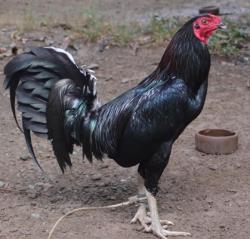 The approach to backyard flocks is entirely different. The whack-a-mole approach to eradication involving euthanasia of infected small flocks and preemptive depletion in areas with a high incidence of infection has not worked since May 2018. Forced depletion of small flocks of unaffected domestic chickens and other galliformes that are confined to their premises creates antagonism among owners. In the case of Southern California the approach of depletion of infected flocks is justified. Preemptive euthanasia of small and uninfected flocks is clearly ineffective. The approach to backyard flocks is entirely different. The whack-a-mole approach to eradication involving euthanasia of infected small flocks and preemptive depletion in areas with a high incidence of infection has not worked since May 2018. Forced depletion of small flocks of unaffected domestic chickens and other galliformes that are confined to their premises creates antagonism among owners. In the case of Southern California the approach of depletion of infected flocks is justified. Preemptive euthanasia of small and uninfected flocks is clearly ineffective.
The California Department of Food and Agriculture must recognize that there are differences among so-called "backyard and exhibition flocks" so dutifully recorded each week. This designation represents at least two distinct sub-populations. Backyard chickens kept for egg production or as pets or hobby birds are far less important in the epidemiology of END than fighting cocks. This category is subject to frequent movement in accordance with their function, and owners will not respect quarantines. Since it is now illegal to engage in cock fighting, participants will clearly not comply with restrictions on movement as the activity is now 'underground. The threat of preemptive slaughter will simply encourage dispersal of birds. This factor was probably responsible for extension of END from Southern California to isolated outbreaks in Alameda County and to Utah and Arizona during 2019. The fact that a marked increase in incident cases was recorded in December 2018 and in all probability has repeated in December 2019 extending through January and possibly February 2020 should direct the attention of the CDFA towards fighting cocks in dissemination of infection. Backyard hens maintained as pets or for table eggs do not move from their premises although they are held under conditions of low biosecurity. Exotic show birds will be confined by their owners if shows are cancelled as a component of a regional quarantine.
Based on experience in the control of Newcastle disease in tropical countries, the following suggestions are provided for consideration by CFDA:
· Hyperimmunize at least 95 percent of backyard chickens using available live and inactivated vaccines.
· Encourage or otherwise oblige owners of backyard hens and other galliformes to confine their flocks under cover to avoid contact with free-living birds. In this respect is the State or regional authority not following the same conditions that are required for dogs and cats mandating licensing, vaccination and confinement
· Apply what little credibility and cooperation that remains between the Department and the owners of backyard hens to enhance biosecurity including restrictions on inter-property movement.
· Suspend all bird shows in the State until the outbreak is officially declared at an end. This will require 13 week from depletion of the last diagnosed case.
· Direct resources and control activities to the high-risk sub-population of fighting cocks. In the 2003 outbreak, the Department together with USDA-APHIS established rapport with the communities owning fighting cocks. It is not clear whether there is any goodwill remaining or whether current policies have alienated owners of game fowl who are not reporting illness in their birds. Again hyperimmunization of this sub-population should be encouraged.
The contention that it is necessary to euthanize asymptomatic and non- infected hens in order to end the END outbreak is fallacious. Twenty months of effort confirm the futility of the current program of attempted eradiation. There is concern that eradication efforts are directed towards a "soft-constituency" comprising homeowners. It may be that for various reasons the CDFA is avoiding the epidemiologically significant fighting cocks and the demographic owning them.
Coexistence of flocks of susceptible backyard hens and fighting cocks in close proximity to commercial farms inevitably results in emergence of END in large units. This was the case in the 2003 outbreak and with the Riverside County cases in mid-December 2018 affecting approximately 350,000 chickens on three farms. The CDFA must recognize that they are now operating in the era of social media that has considerable influence over politicians at the state and national levels. Antagonizing owners of backyard hens through a program of preemptive depopulation will effectively extend the duration of the outbreak and encourage movement of fighting cocks out of quarantined areas to the detriment of the commercial industry.
The advent of the New Year would be an opportunity to pause and reflect on what has been accomplished and how a program could be modified or improved to achieve the objective of eradication. It is possible that the endemic status of END in the three contiguous Southern California counties will persist given movement of live birds, contaminated vehicles and personnel northwards from Mexico. It is indeed fortunate with respect to exports that our southern neighbor has accepted the OIE principle of regionalization and has not imposed blanket bans on individual states. To paraphrase Einstein, continuing to pursue an ineffective program and expect a positive outcome is illogical. To put it another way if you are in a deep hole, stop digging.

|
Demographic Reality – Is the U.S. Following Japan?
|
01/02/2020 |
|
Growth of 0.5 percent in the U.S. population from 2018 to 2019 representing 1.5 million people was the slowest annual rate since 1917 according to the Brookings Institution. This belies the claim that “we are full”. For the first time in decades the number of births minus the number of  deaths did not exceed one million according to Fortune. The Boomer generation is aging and their mortality rate will surely increase despite advances in medical care. In the case of West Virginia, Maine, New Hampshire and Vermont, deaths outnumbered births. There is a clear trend of migration to southern states with population losses in New York, Illinois, West Virginia and Connecticut. Overall, the northeast states lost 0.1 percent of their population from migration with southern states gaining 0.8 percent. deaths did not exceed one million according to Fortune. The Boomer generation is aging and their mortality rate will surely increase despite advances in medical care. In the case of West Virginia, Maine, New Hampshire and Vermont, deaths outnumbered births. There is a clear trend of migration to southern states with population losses in New York, Illinois, West Virginia and Connecticut. Overall, the northeast states lost 0.1 percent of their population from migration with southern states gaining 0.8 percent.
Demographic changes have implications for food consumption, industrial productivity and above all maintaining the integrity of the Social Security system. Fewer contributors supporting an ever-increasing number of dependents will ultimately require a substantial infusion of public funds to maintain solvency. The system was established during the FDR Administration when life expectancy was considerably shorter, the average age of the population was lower and the ratio of contributors to dependents was higher than during in the third decade of the current century.
 It is evident that the deficit in U.S. births can be compensated by immigration. Unfortunately the last decade saw a decrease in migrants due to the great recession through the mid-2010s and more recently the consequence of restrictive immigration policies. Migration dropped from approximately one million in 2016 to 600,000 in 2018. Dr. William Frey of the Brookings Institution correctly observes that “immigrants tend to be younger and have children and they can make a population younger.” It is evident that the deficit in U.S. births can be compensated by immigration. Unfortunately the last decade saw a decrease in migrants due to the great recession through the mid-2010s and more recently the consequence of restrictive immigration policies. Migration dropped from approximately one million in 2016 to 600,000 in 2018. Dr. William Frey of the Brookings Institution correctly observes that “immigrants tend to be younger and have children and they can make a population younger.”
It is evident that if the U.S. continues to have an aging population, apart from the issue of social security, we will have insufficient children to fill our schools and then universities and there will be a disinclination for our younger citizens to engage in manual labor, trades and the multitude of jobs required to maintain our society. Japan serves as a clear example of the result of a declining birth rate complicated by xenophobia and ethnic discrimination. The nation is forced to now take in temporary workers from Indonesia, Korea and the Philippines to perform manual work in industry and agriculture.
In a recent visit to egg-packing plants in Japan, I was intrigued by notices in Portuguese affixed to doors and walls. It was only after an hour spent in the first plant that it was recognized that many of the ethnic Japanese were in fact the third-generation of immigrants from Japan to Brazil. They had returned as guest workers and hopefully immigrants. These workers are apparently acceptable since they are regarded by the domestic population as being Japanese whereas society would reject Brazilians without this ethnicity.
It is evident that to maintain population growth the U.S. cannot rely only on the birth rate. We require a regular and steady infusion of immigrants preferably with skills and the ability to assimilate into our population. Even if the first generation reflects a different culture and lacks other than manual skills succeeding generations will take advantage of our free-enterprise and democratic system and demonstrate upward mobility. We obviously must do more to integrate immigrant minorities into the mainstream of U.S. agriculture and industry through incentives and training programs.
Japan and the Federation of Russia have declining and aging populations with attendant undesirable outcomes extending over the intermediate and long term. We should look to the nation of Israel that has welcomed migrants and refugees from their unfriendly and discriminatory home nations to be melded into a nation that stands out as a progressive and homogenous democracy unique on the subcontinent.
If we look back on our own history during the late 19th and early 20th centuries, the U.S. received the poor and oppressed of Europe. The second generation became Americans in every sense and so it must be going forward to the middle of the current century. Unfortunately there are no longer available Norwegians displaced from the rural areas of their native country willing to settle on the plains. There are no immigrants from Ireland forced to leave by famine and poverty to dig our canals and build our bridges as they did in the mid-19th century. To maintain population growth and an acceptable distribution of ages in our population we will have to be more accepting of qualified immigrants from Latin America and Asia to balance the disparity between births and deaths.

|
|
|
|
View Current
|
Top
|
|